
- About
- Library
-
Essays
Eric Dinerstein William C. Young
- Plants
- Birds
FIELD NOTES FOR UGANDA
December 26, 2016-January 17, 2017
William Young
INTRODUCTION
BIRDS
MAMMALS
OTHER WILDLIFE
GENERAL IMPRESSIONS OF UGANDAINTRODUCTION
On Christmas Day, 2016, I left my home in Arlington, Virginia, to fly to Uganda for a three-week birding trip. My friend Lori Price, who does a lot of elephant conservation work in Africa, made all of the arrangements. Most people planning birding and nature trips to East Africa focus on Kenya and Tanzania, which have many more large mammals. Uganda is a better destination to search for birds. Lori had previously travelled to Uganda and had hired Crammy Wanyama as a guide. She said he was excellent, and I subsequently heard similar positive reports from other people who had gone to Uganda and used his services. All of these people were correct, because he is an outstanding guide.
We flew to Addis Ababa, Ethiopia, and caught a connecting flight to Entebbe on December 26. Crammy and his sister Vero were waiting for us at the airport. We went to the Victoria View Guest House, which has lovely gardens and a view of Lake Victoria in the distance. Each of the rooms is named after a bird. I was in the Starling room. Lori had the Fiscal room next door. A lot of African shrikes are called fiscals. Shrikes sometimes impale prey, and a fiscal is a word for a public official, often a hangman. We birded around the gardens for awhile before heading to the Entebbe Botanical Gardens in the late afternoon. The botanical gardens are located on Lake Victoria, and they have a good variety of habitats.
The next morning, we began our drive north. We drove through Kampala, Uganda's capital. Kampala did not seem quite as poor and messy as Dar es Salaam, Tanzania. It has a population of 1.8 million residents and 4 million during each workday. Uganda's population is about 36 million. After leaving Kampala, we drove to the Ziwa Rhino Sanctuary, which is the only location in Uganda where wild rhinos can be observed in a natural habitat. We continued to the Budongo Eco Lodge, which is located in the Kanio Pabidi Forest. We birded in the forest the next morning. Some bird species have a limited range which includes this section of Africa. The birding was difficult, and most of the birds we found were new to me.
In the afternoon, we drove north to Murchison Falls. We descended into the East African Rift Valley where some of the earliest humanoids were discovered. We had to be careful about tsetse flies, which followed our vehicle hoping to get in. We stopped to look at the falls, which are very impressive. They are on the Nile River, which begins in Uganda and takes 90 days to flow to the Mediterranean. At Murchison Falls, the river narrows to about 25 feet, which causes a huge cascade of water to go through the small opening. At one of the lookouts, a rainbow and sometimes a double rainbow was over the falls. We then headed to Murchison Falls National Park, which is the largest park in Uganda. It is located close to the Nile.
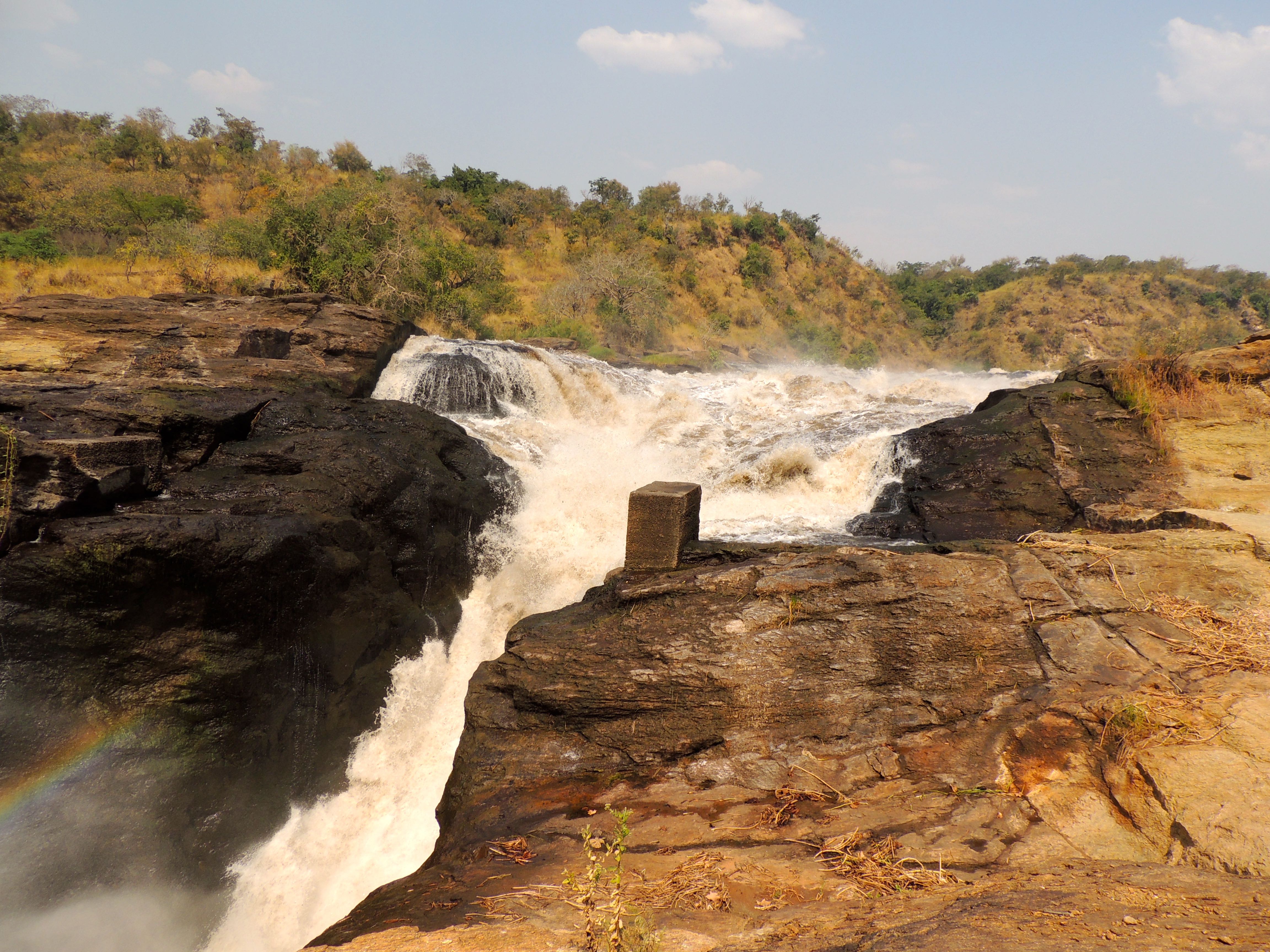 Murchison Falls - Photo by William Young
Murchison Falls - Photo by William Young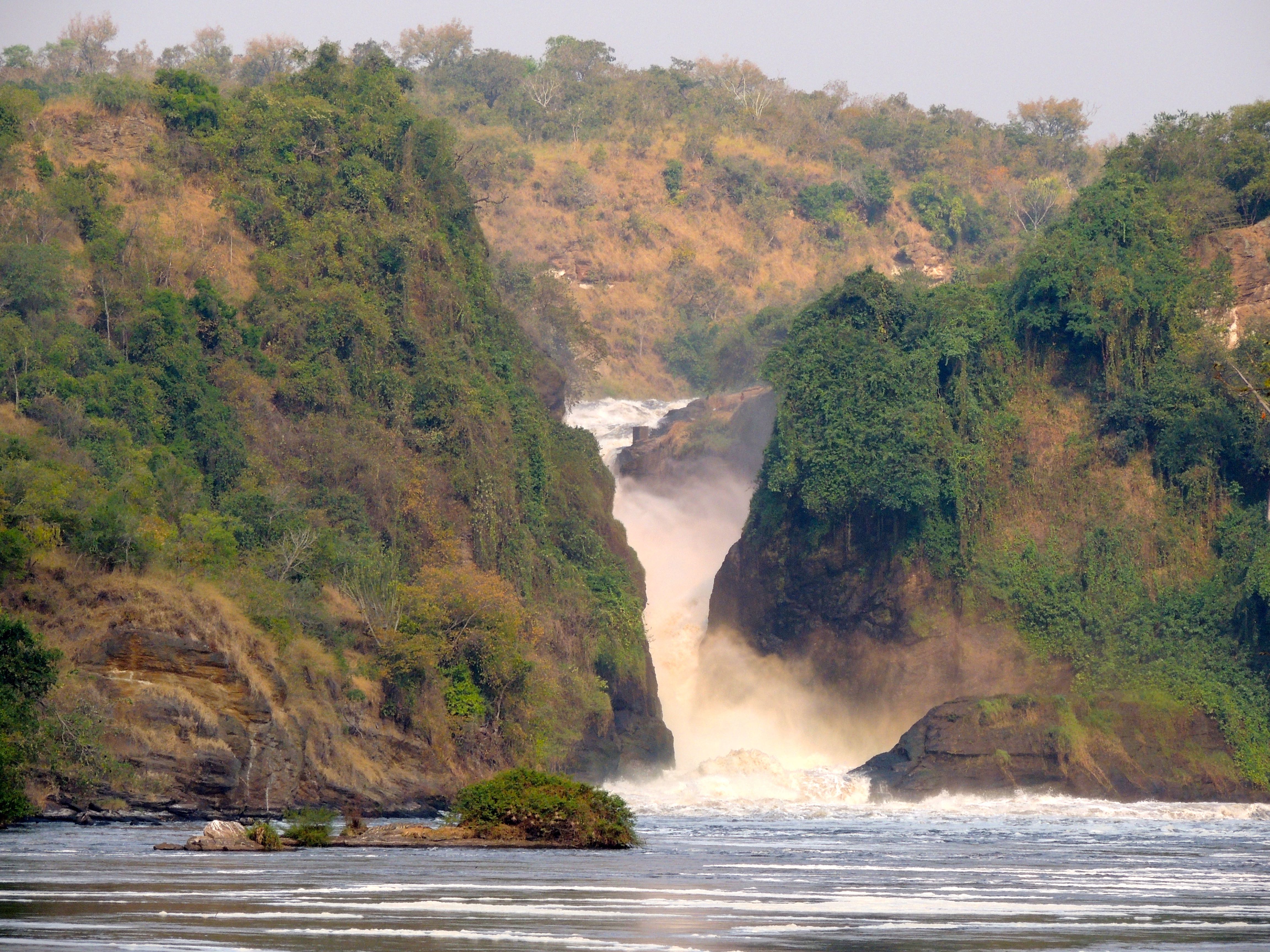 Murchison Falls - Photo by William Young
Murchison Falls - Photo by William YoungWe eventually arrived at an area of the Nile where we took a short ferry ride across to our lodge. The ferry could accommodate only eight vehicles, so we birded on the shore while we waited for the first one to return. After we crossed, we drove the short distance to the Paraa Lodge, where we would stay for the next three evenings. The lodge was very comfortable, and there were Sausage Trees on the property. The fruits of these trees hang from the branches like very large sausages.
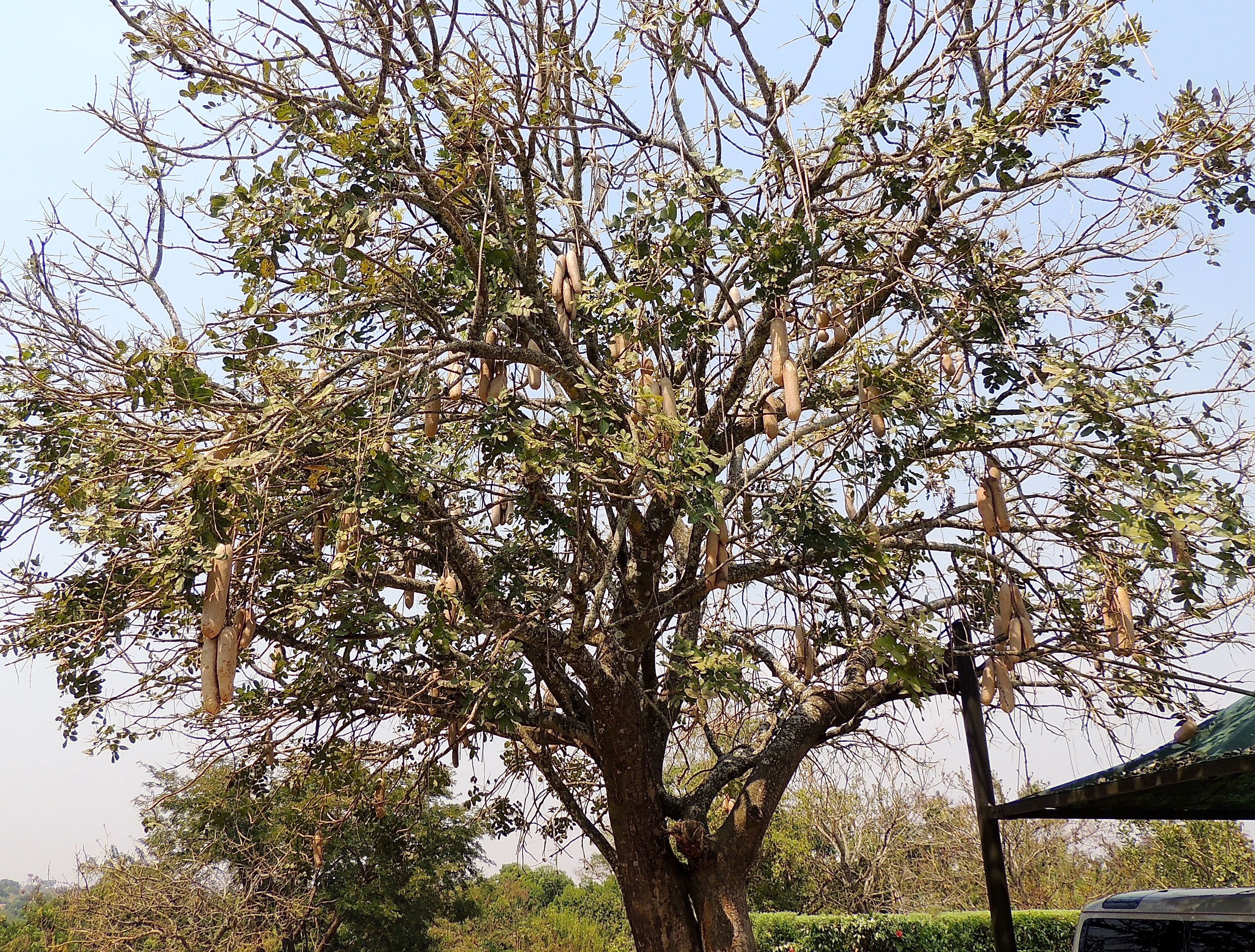 Sausage Tree - Photo by William Young
Sausage Tree - Photo by William YoungOn the first day, we took a boat ride on the Nile in the morning. It was one of my favorite parts of the trip. Our driver was named H, and he was very knowledgeable about birds and where to find them on this stretch of the river. While we were looking at some papyrus for the Papyrus Gonolek, H cut off one of the stems to show me the part of the plant the Egyptians used to make the papyrus on which they wrote. That is where our word "paper" comes from. I ate lunch and had a massage before going on a game drive through the park in the afternoon. After dinner, we went spotlighting in the park. The second day was almost a reverse of the first. We started by doing a game drive in the morning to some of the same areas we had been the previous afternoon. Because of the difference in the time of day, the wildlife we saw was different. In the afternoon, Lori and I took a boat ride on the Nile in the opposite direction from where we had gone the previous day, heading toward Murchison Falls.
We caught the 7 a.m. ferry across the Nile the next morning and headed toward Masindi. The birding was somewhat difficult. We could not open the windows of our vehicle for the first hour, because large numbers of tsetse flies were following us. Also, the roads were not paved, which created a lot of dust. We stopped in Bulisa along the way. We arrived at the Masindi Hotel on New Year's Eve and stayed for two nights. The Masindi Hotel is the oldest hotel in Uganda, opening in 1923. On New Year's Day, we birded on the Royal Mile in the Budongo Forest with our local guide Raymond. The Royal Mile was part of the Bunyoro Kingdom of Western Uganda. The people who lived there were called Nyoro. It was ruled by the Omukama, which is a word meaning "king". In 1890, a document was signed through which the entire region north of Lake Victoria was given to (stolen by) Great Britain. In 1894, Great Britain declared the region its protectorate. In alliance with Buganda, King Omukama Kabalega of Bunyoro resisted the efforts of Great Britain, aiming to take control of the kingdom. However, in 1899, he was captured and exiled to the Seychelles, and Bunyoro was subsequently annexed by the British Empire. In the early 20th century, the area became popular for leisure activities, and subsequently for bird watching. When we arrived back at the hotel after birding, some of the people from the town were holding a New Year's parade, which involved marching and music.
We left Masindi the next morning and started an eight-hour drive south to the Mountains of the Moon Hotel in Fort Portal, where we stayed for three nights. The drive is about 200 kilometers, but the first 150 are over dusty washboard roads. When I went to Tanzania with my friend Martin in 2015, he thoughtfully brought an extra memory foam cushion for me to sit on in our vehicle. I brought it along on this trip, and today it was very useful for cushioning the shocks. Because of the motion of the vehicle and my lack of sleep over the past week, I dozed off a couple of times on the way. We brought a pack lunch for our long ride. It contained more food than we could eat. We parked in the shade, and two women with heavy loads were in a shady spot about 100 meters away. We collected all of the leftover sandwiches, fruit, and juice, and I brought everything to them. After I handed them the food, one of the women knelt before me and quietly said, "Thank you". She did it in a way that showed how sincerely grateful she was. I find that most of the Africans I have met have been extremely gentle and courteous. After lunch, Lori went for a run along the dirt road in the midday heat. She ran past some construction workers who apparently were not sure what to make of a woman running in the road. They offered to help her, but she said she did not need any help.
The Mountains of the Moon Hotel is about 90 minutes from the Semliki Forest, which is known for attracting many rare birds. We birded there over the next two days. On the first day, Lori and I walked between 4 and 5 miles with Crammy and Vero. Even though the forest paths are in the shade, the weather was hot. Birding in the forest is extremely challenging. Many species flit through the vegetation, and often, one gets at best a quick glance at a bird in the leaves. At the end of the hike, we visited the Sempaya Hot Springs, which are in the forest parkland. They were the third hot springs I saw in seven months. I had visited some in Yellowstone National Park in June and in Iceland in August. On the next day, Lori and I were joined by George Powell from the World Wildlife Fund, and he was with us for the remainder of the trip. We hiked more than 6 miles. Some of the trails were near water and were more open than on the previous day. This allowed us to get better looks at some of the birds we saw.
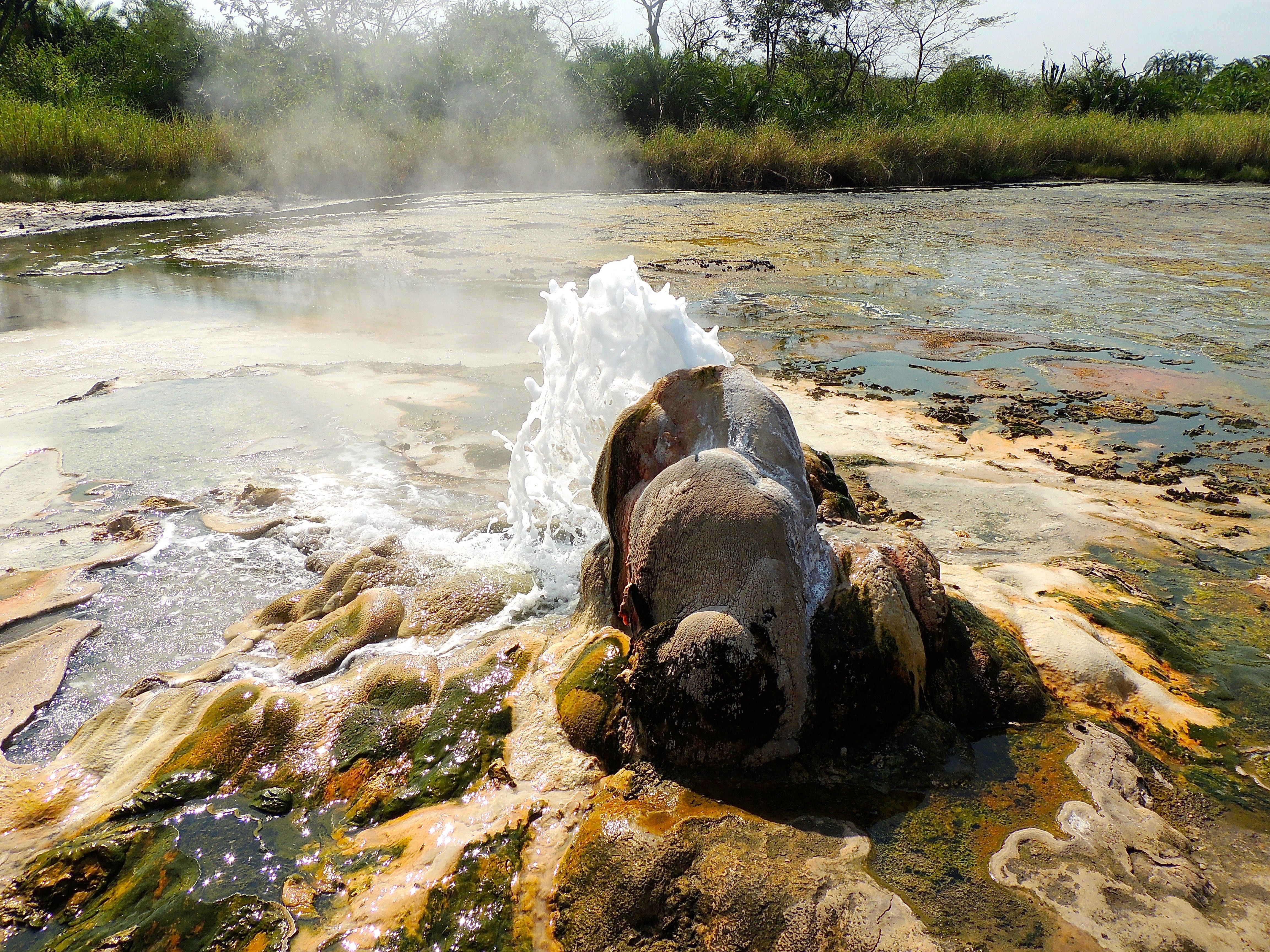 Sempaya Hot Springs - Photo by William Young
Sempaya Hot Springs - Photo by William YoungThe following day after leaving the Mountains of the Moon Hotel, we drove back through Fort Portal. We stopped there, and I bought some stamps for my bird stamp collection — a block with four canary species and a single with a kingfisher. We also stopped at a bank where I got some Uganda coins. We then headed toward the Kibale Guest Cottages, which are in the Kibale Forest National Park. The cottages are pleasant, with a lot of birds around them. The Kibale Area calls itself the Primate Capital of the World, and it certainly has a lot of primates. After lunch, we went to the Bigodi Wetlands, which bills itself as the Home of Turacos. Once again, this is not false marketing, because we saw a lot of turacos while we were there. Many people live in the area containing the wetlands, and at numerous places, we encountered children standing near small tables trying to sell little plastic statues of turacos, gorillas, etc.
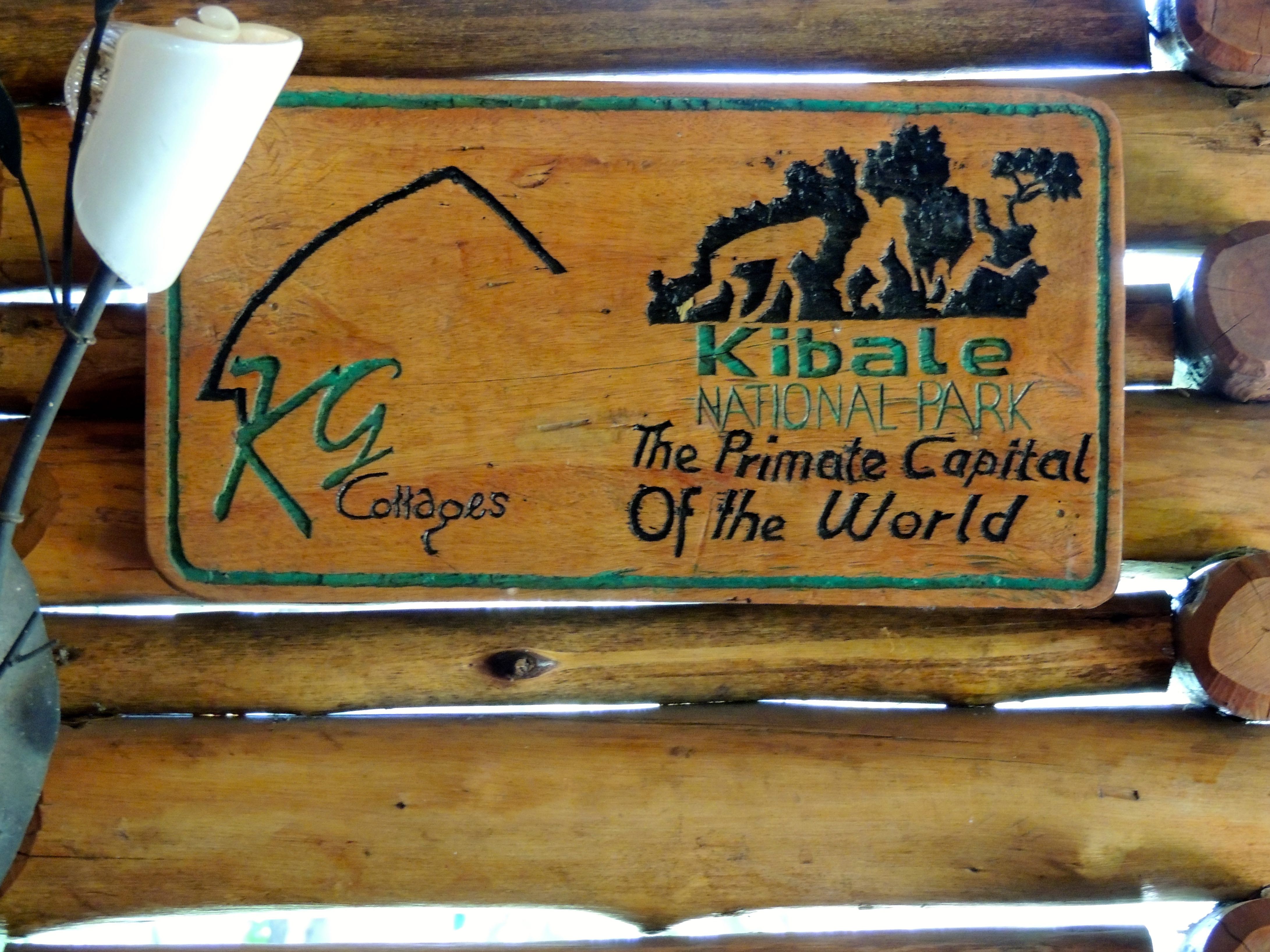 Kibale - Photo by William Young
Kibale - Photo by William Young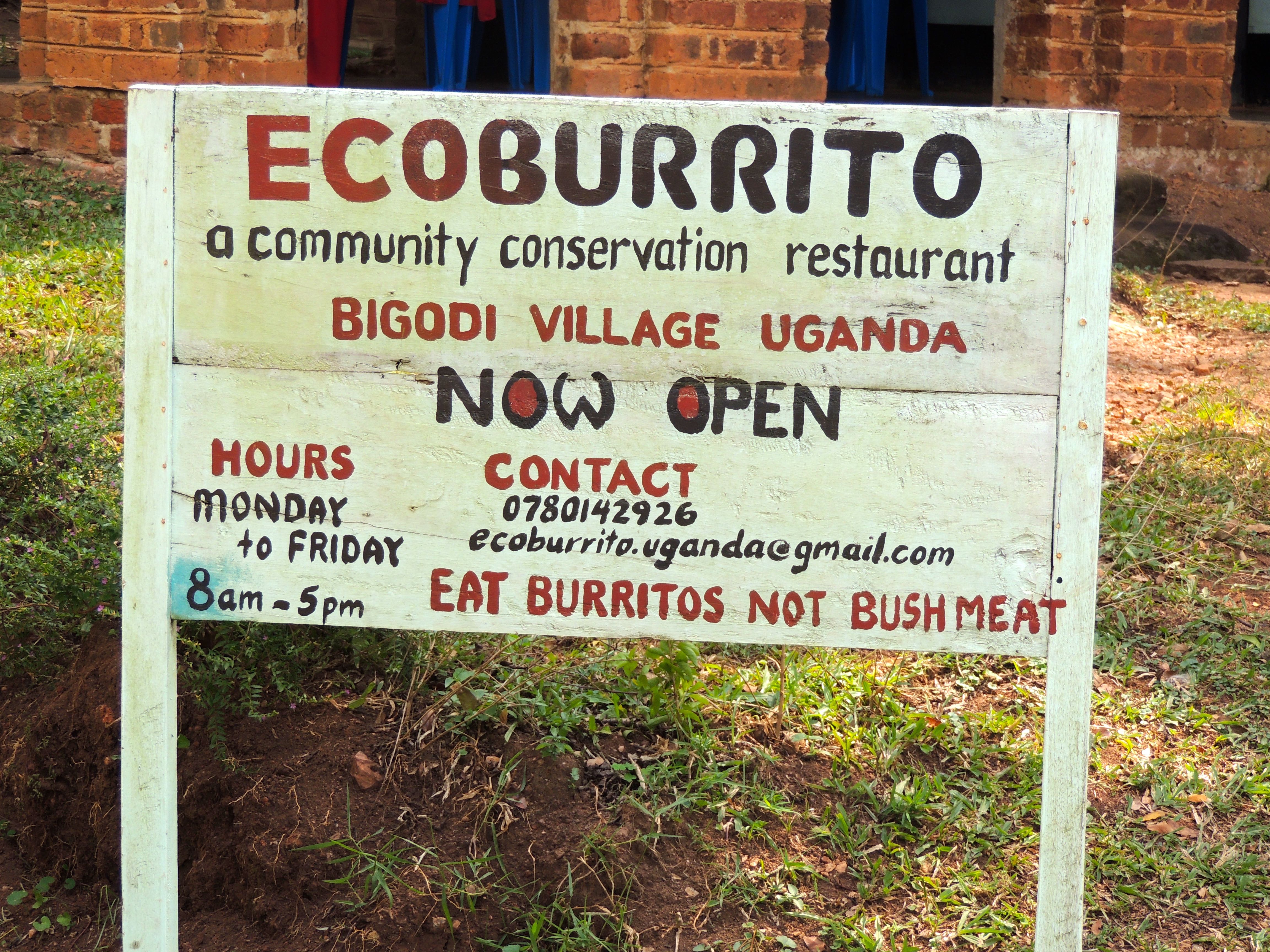 Bigodi Village - Photo by William Young
Bigodi Village - Photo by William YoungThe next day, we had a choice between looking for chimps or looking for a Green-breasted Pitta. I went chimp tracking, while Lori and George looked for a pitta. They had already seen chimps on previous trips. Unfortunately, Lori and George did not see a pitta. They left at 5:50. I got to sleep in, and Crammy and I left at 7:30. Kibale is home to up to 1,450 chimpanzees. I went in a group with four very nice women — three from Germany (in the same family) and one from England — and an excellent guide named Bosco. He told us that we had a 90 percent chance of seeing chimps. We hiked for about 6 kilometers, and we ended up seeing 25 to 30 chimps. When we were done, we went back to the headquarters and had lunch before beginning the drive to Queen Elizabeth National Park, which is Uganda's second largest park. We crossed the Equator and ended up at the Mweya Safari Lodge on the Kazinga Channel. This natural channel links Lake Edward and Lake George. The lodge is somewhat upscale but has some natural touches. House Bats fly around the lobby and roost in the rafters, and Swamp Flycatchers come into the lobby and perch on the sofas.
The next morning, we went on a game drive in Queen Elizabeth National Park. We returned to the Mweya Lodge at midday, and I had lunch with Lori and George on a veranda overlooking the channel. We could see elephants in the distance who came to the water to drink. Bird feeders were not far from our table, and some birds hung around the dining area waiting to grab a morsel from an unguarded plate. I held out my palm with some bread in it, and a few birds were bold enough to perch on my hand and grab a morsel before darting away. After lunch, Lori and George stayed at the lodge, while I went with Crammy and Vero for a cruise in the channel. This boat ride was one of my favorite experiences of the trip because of the profusion of wildlife in such a concentrated area. We were able to see almost everything very well, and the driver of the boat understood the needs of both birders and photographers. We went back to the lodge, rested a bit, and then went spotlighting with Lori and George before returning for dinner.
We checked out of the Mweya Lodge early in the morning to head further south toward Buhoma at the north end of the Bwindi Impenetrable Forest National Park, which is near the border with the Democratic Republic of Congo. We drove by way of Queen Elizabeth National Park, which gave us a chance to observe more wildlife on the way. After we stopped along the road for lunch, we drove past a lot of hillsides where tea was growing. Crammy stopped at a roadside stand so that we could buy Uganda tea. I paid about $1.60 for a pound of their best quality tea. We drove a bit farther and stopped at a place that has two roosting African Wood Owls. As we approached our destination, we could see mountains that were in the Democratic Republic of Congo. We arrived at the New Havens Lodge, which has spacious rooms. The generator ran only from about 5 a.m. to 10 p.m. We were told to keep our doors locked, because there were monkeys in the area who sometimes tried to come into the rooms.
The next day, we spent more than 10 hours hiking in the Bwindi Impenetrable Forest. It was not all that impenetrable, because there is a wide path on which to walk. The path gradually rises about 700 feet from where we started, which made the first half of the walk mostly uphill and the second half mostly downhill. We walked a short distance through secondary highland rain forest and got into the primary highland rain forest. We had an armed guard with us in case we ran into any unhabituated gorillas.
We left Buhoma the next morning and travelled to a higher elevation, ending at more than 2,200 meters. We drove toward Ruhija through an area called "the Neck" to look for Albertine Rift endemic birds. When we got to Ruhija, we took a walk along the Community Trail. It is a busy pedestrian and animal thoroughfare for residents of the community, but it also has a lot of good birds. We stayed at the Gorilla Mist Camp for the next two nights. Each of the cabins has a name, and I was in the Baboon cabin. The next day, we hiked from high on a hill down to Mubwindi Swamp. The hike was strenuous, with steep hills going down and really steep hills going up. I hired a porter to carry my backpack and to help me with some of the hills. The birding was difficult. We saw gorilla and elephant poo on the trails, but no gorillas or elephants.
The following day, Lori and I went gorilla tracking, while George stayed back and birded along the roads. We were in a group with four people from Germany, and our guide was named Benson. Getting to the gorillas was extremely arduous. We had to walk on narrow paths with rises and drops of about 70 degrees. In some places, there were no paths, so the guides had to cut one with pongos. The soil was loose and in many cases covered with vines. You could not try to keep your balance by grabbing a tree, because a lot of them were covered with thorns. We hiked through these areas for more than two hours, because the gorillas moved from where they had been earlier in the morning. Near the end of the trip, we stopped to rest in an area that was a kilometer away from the main road. Unfortunately, the path rose at a 45 degree angle almost the entire rest of the way. I never could have done this trip without the help of January, my porter. We finished after 3 and were back on the road to head south after four. We stopped in a couple of places to bird, but we needed to get to our next destination fairly quickly. On one stop, I saw some goats, one of whom appeared to sport a white Mohawk hairdo. We drove to the Travellers Inn in the town of Kisoro, where we stayed for the next two nights. It is nestled in the southwest corner of Uganda less than 10 miles from the borders of Rwanda and the Democratic Republic of Congo.
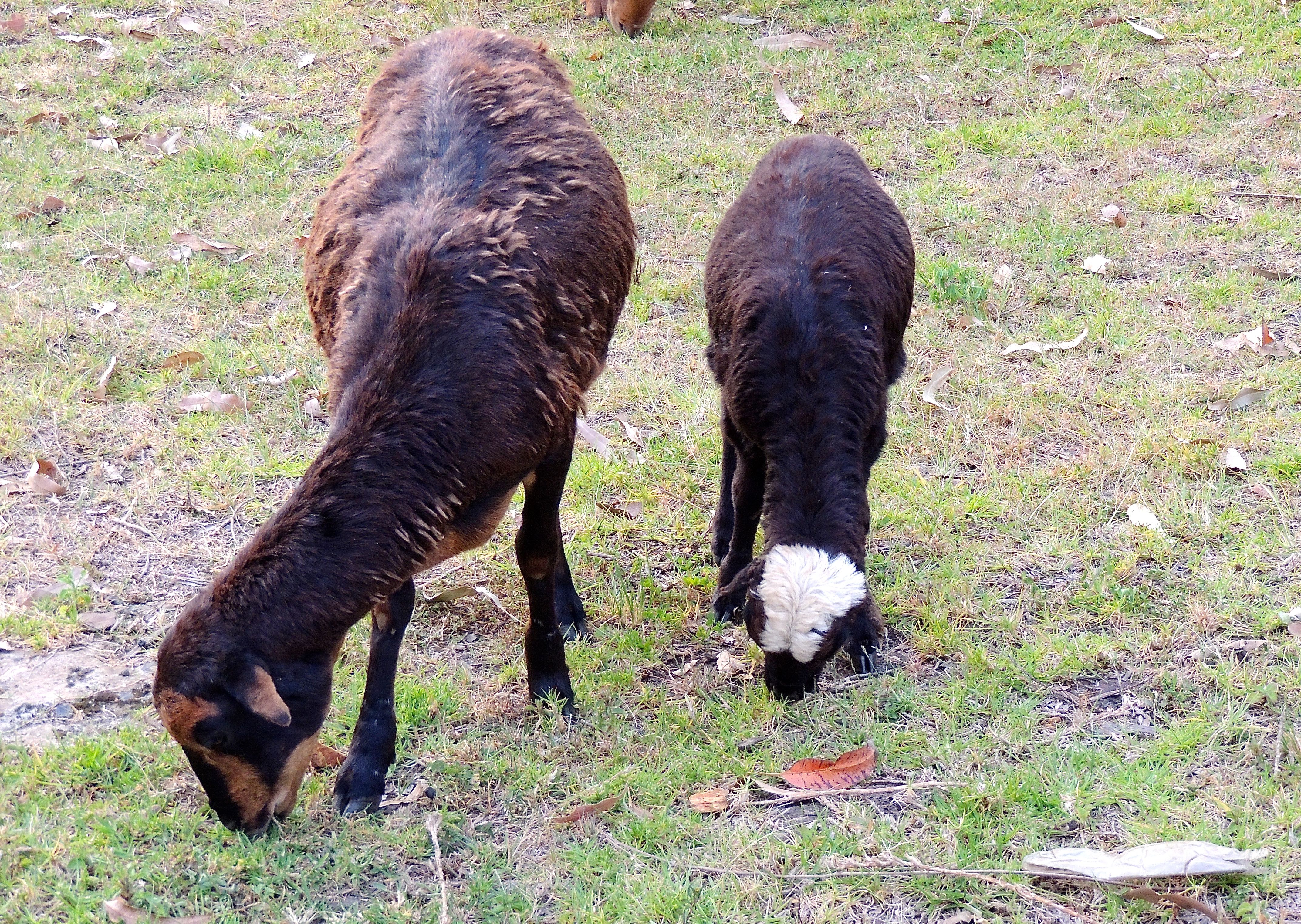 Goats - Photo by William Young
Goats - Photo by William YoungAfter two long days of mountain hiking, I decided not to do a third, so I stayed at the hotel while Crammy and Vero took George and Lori on another hike. I had a massage and explored the town of Kisoro, which allowed me to recharge my batteries for the final days of the trip. I also spent time birding in the gardens. We left early the next morning for a long drive from Kisoro to Lake Mburo National Park, stopping a number of times along the way. Our first stop was at a high altitude where the temperature felt as if it were below 50 degrees F. By lunchtime, we had descended to a lower altitude, and the weather felt muggy. We had lunch at the Great Lakes Museum before driving east to Lake Mburo. We arrived at the Rwakobo Rock cottages later than we had planned. I was in the Python cabin, and when I arrived, the cushions from the sofa on my front porch were strewn all over the place. The porter told me I should keep my door locked because of baboons. George had the screen to one of his windows ripped off, but because there was a double screen, the baboons could not get into his cabin. After a quick dinner, we went spotlighting to look for nocturnal birds and mammals. There are few lights in this area, so the night sky looked like a planetarium. The nearly full moon looked red when it rose.
The next morning, we went for a boat ride in Lake Mburo. When we were fairly far away from where we started, our boat driver tried to restart the outboard motor, and the rope came off in his hand. We floated around for awhile until another boat came to get us. In the afternoon, we took a brief game drive through the park before beginning the long drive back to Entebbe. We went through Mbarara, which is the fifth largest city in Uganda. After we got settled at the Victoria View Guest House (I was once again in the Starling room), I had my last meal with George and Lori, both of whom were leaving early the following morning. I stayed for an extra day, and Crammy and Vero took me to Mabamba Swamp, which is really a marsh. It is the most reliable place near Entebbe to see Shoebills. When we finished the boat ride, Crammy and Vero dropped me off at the Victoria View Guest House and I thanked them for everything they did during our wonderful trip. I birded in the gardens and took photographs for the rest of the afternoon. The following morning, I spent my final hours at the Guest House taking photos and observing and shooting video footage of plantain-eaters flitting in the trees.
My ride to the airport left at 10:45 a.m. The trip home took about 35 hours door-to door. I flew from Entebbe to Addis Ababa, where I had a 7.5 hour layover. My flight from Addis Ababa was supposed to stop for refueling in Dublin and then continue to Washington, DC. However, someone on the plane became ill and had to get off in Dublin. There is a rule that if a passenger gets off of a plane, the passenger's luggage must be removed also. We arrived in Dublin at about 4 in the morning and were not scheduled to have baggage removed, and there were no baggage handlers at the airport at that hour. Ethiopian Air had to find a crew of baggage handlers to locate the sick passenger's luggage among the luggage of the 300+ people on the plane. A one-hour refueling stop thus turned into a 3.5 hour delay on the tarmac. The rest of the flight was uneventful, but it took a long time for my luggage to be unloaded in Washington; it was probably among the first suitcases loaded and thus the last unloaded. I finally got home at about 1:45 p.m., which was about 9:45 p.m. Uganda time.
Below is a summary of the wildlife I saw in Uganda, along with a section with general observations about the country. The bird observations are reported by family. The abbreviation "NP" stands for "National Park".
BIRDS
Waterfowl
We did not have much opportunity to observe waterfowl. Along the Nile in Murchison Falls NP, we saw some Egyptian Geese, and again in Queen Elizabeth NP. At the Entebbe Botanical Gardens, we saw one in a tree. We also saw some Spur-winged Geese at Murchison Falls NP, including some who were close to displaying Grey Crowned Cranes. We saw some groups of White-faced Whistling Ducks at Murchison Falls NP. We saw Yellow-billed Ducks in a few places, and I had my best looks at them in Mabamba Swamp. They look like American Black Ducks with bright yellow bills. Also in Mabamba, I had close looks at a group of White-backed Ducks. They hold their neck erect like a grebe and have mottling on their back. We stopped in a wetland area on our drive from Lake Mburo to Entebbe and saw a lot of duck species, albeit from a long distance. A Comb (Knob-billed) Duck looked large and light gray. I had a distant look at a pair of African Pygmy Geese, but I could not see much detail on them. There were 20 Hotentot Teal, who are small. Crammy saw a Fulvous Whistling-Duck whom I did not see. In Semliki, we looked for Hartlaub's Ducks, but I never saw any. They are shy forest ducks, and they flew before I could see them.
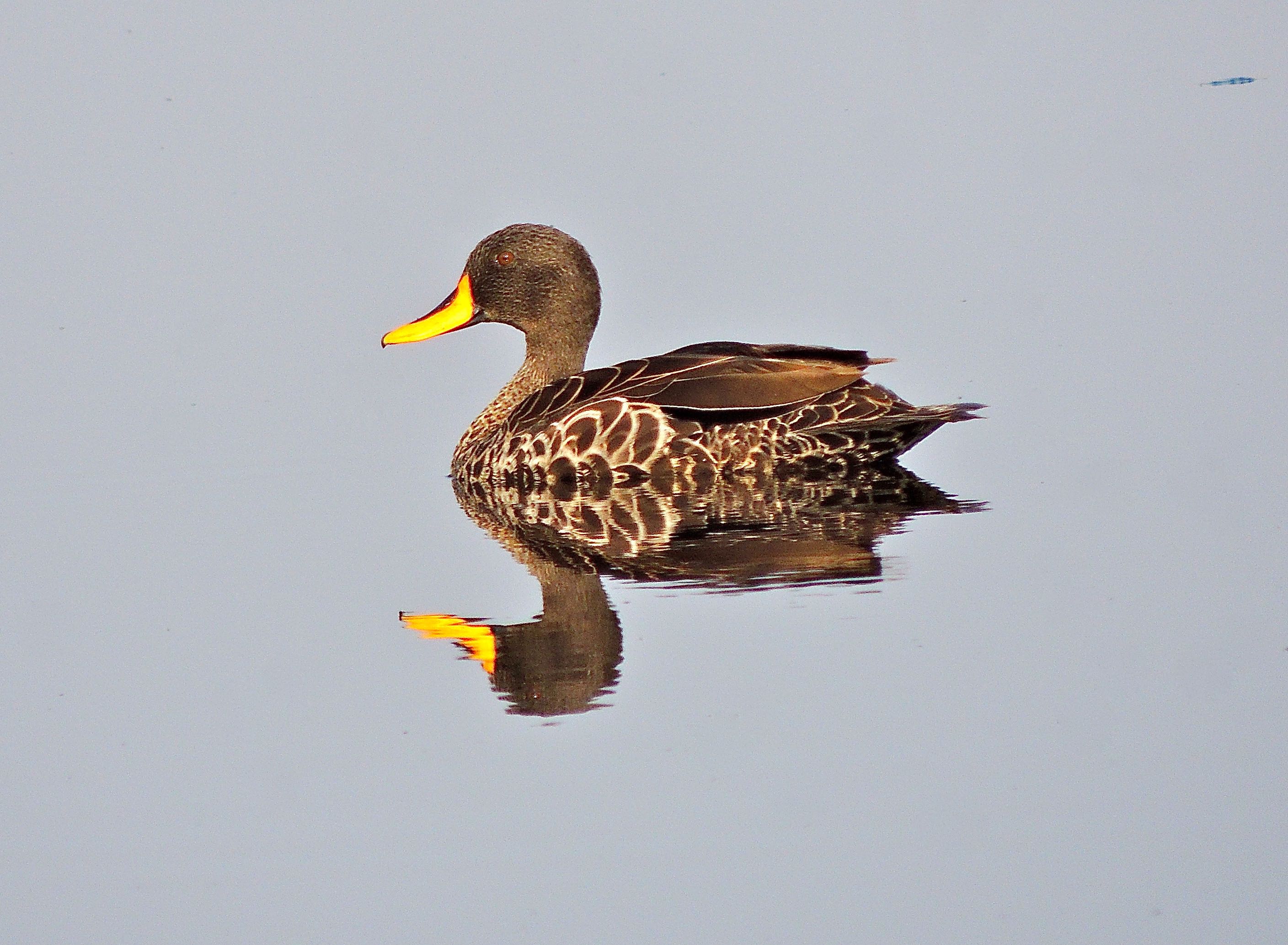 Yellow-billed Duck - Photo by William Young
Yellow-billed Duck - Photo by William Young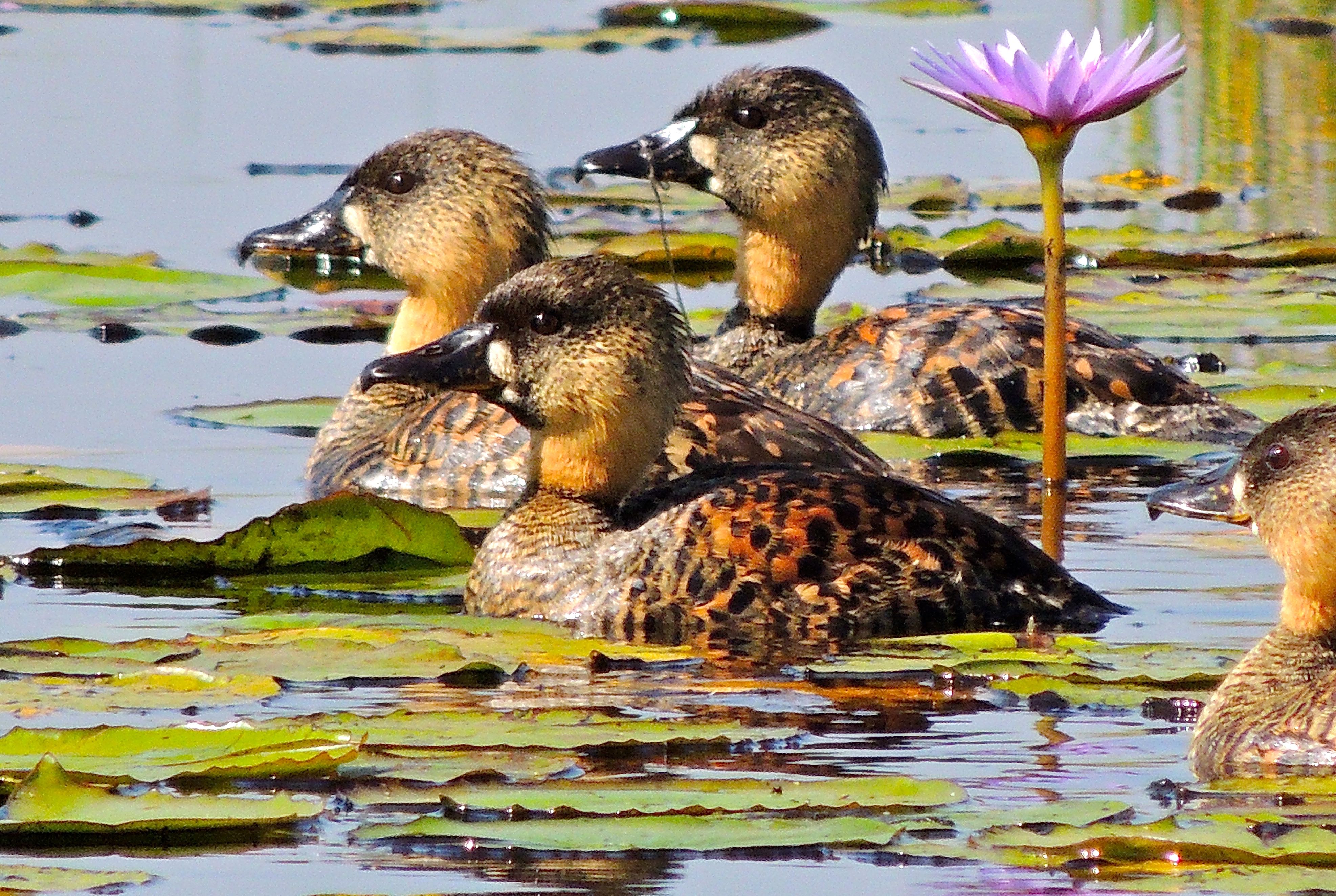 White-backed Duck - Photo by William Young
White-backed Duck - Photo by William YoungGuineafowl and Francolins
The Helmeted Guineafowl in Uganda have a smaller helmet than the ones in Tanzania. Sometimes, the helmet is difficult to see. We saw the greatest number around Queen Elizabeth NP. I saw my first Crested Guineafowl. They are shy forest birds. We saw some in Semliki perched in a tree and more in Queen Elizabeth NP. I saw more when I went chimp tracking and on the hike in Bwindi. I found quite a few guineafowl feathers, which have light blue spots. The Crested Guineafowl at Bwindi made a lot of noise when they left the main path.
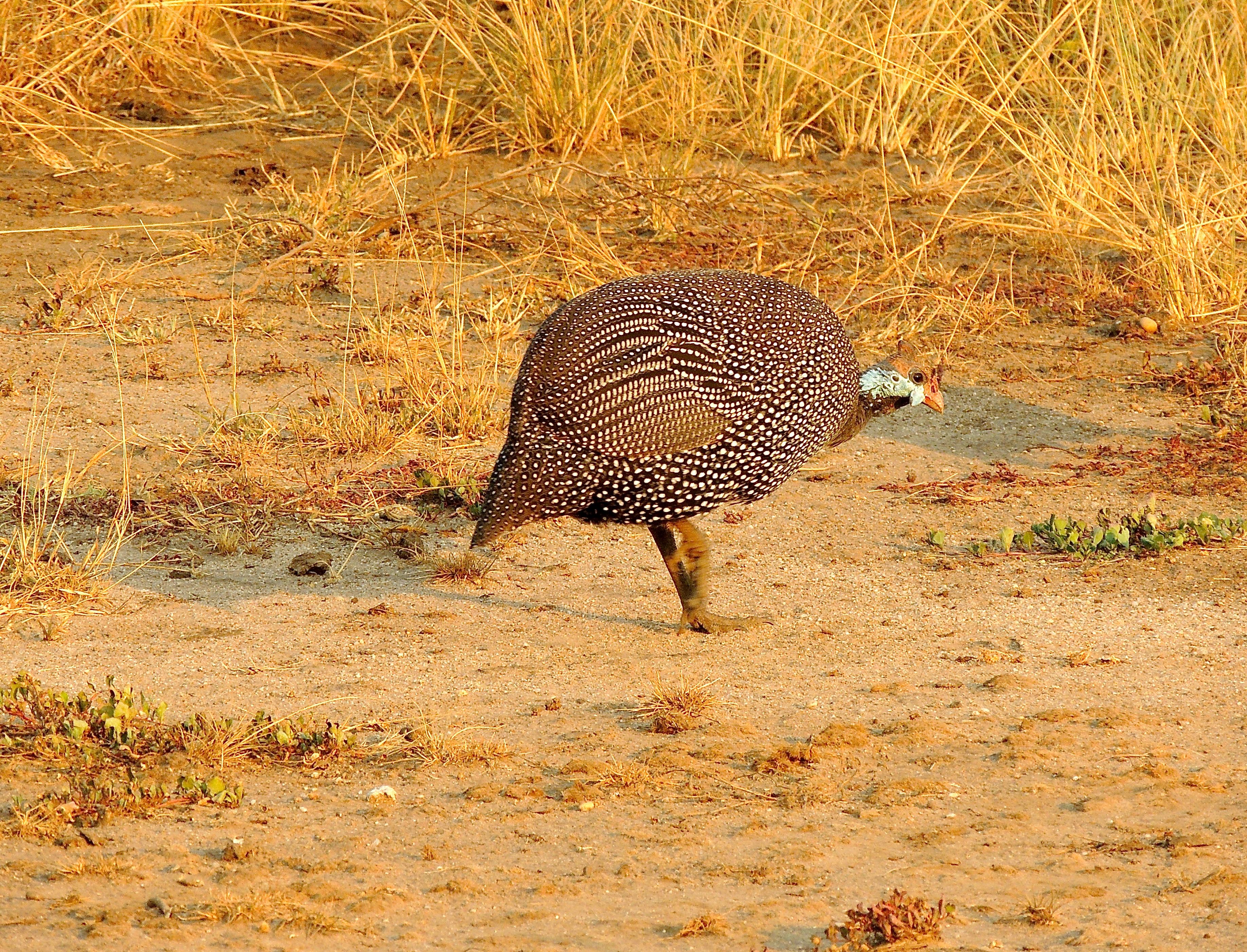 Helmeted Guineafowl - Photo by William Young
Helmeted Guineafowl - Photo by William YoungOn our walk to Mubwindi Swamp, we saw a couple of Handsome Francolins. They are large and have red on the face. On our second day at Murchison Falls NP, we saw 7 Heuglin's Francolins, who are smaller and look lighter brown. One pair was near a gully with a bunch of Piapiacs. Another five were near some Oribis. They have a yellow-orange bill and a patterned brown back. We saw an adult Crested Francolin in Queen Elizabeth NP with four chicks. We saw a lot of Red-necked Francolins, who are also called Red-necked Spurfowl. I saw some in the road at Lake Mburo NP. Crammy pointed out a flying Scaly Francolin at Murchison Falls NP, but I did not see any fieldmarks. One tends not to get long looks at francolins.
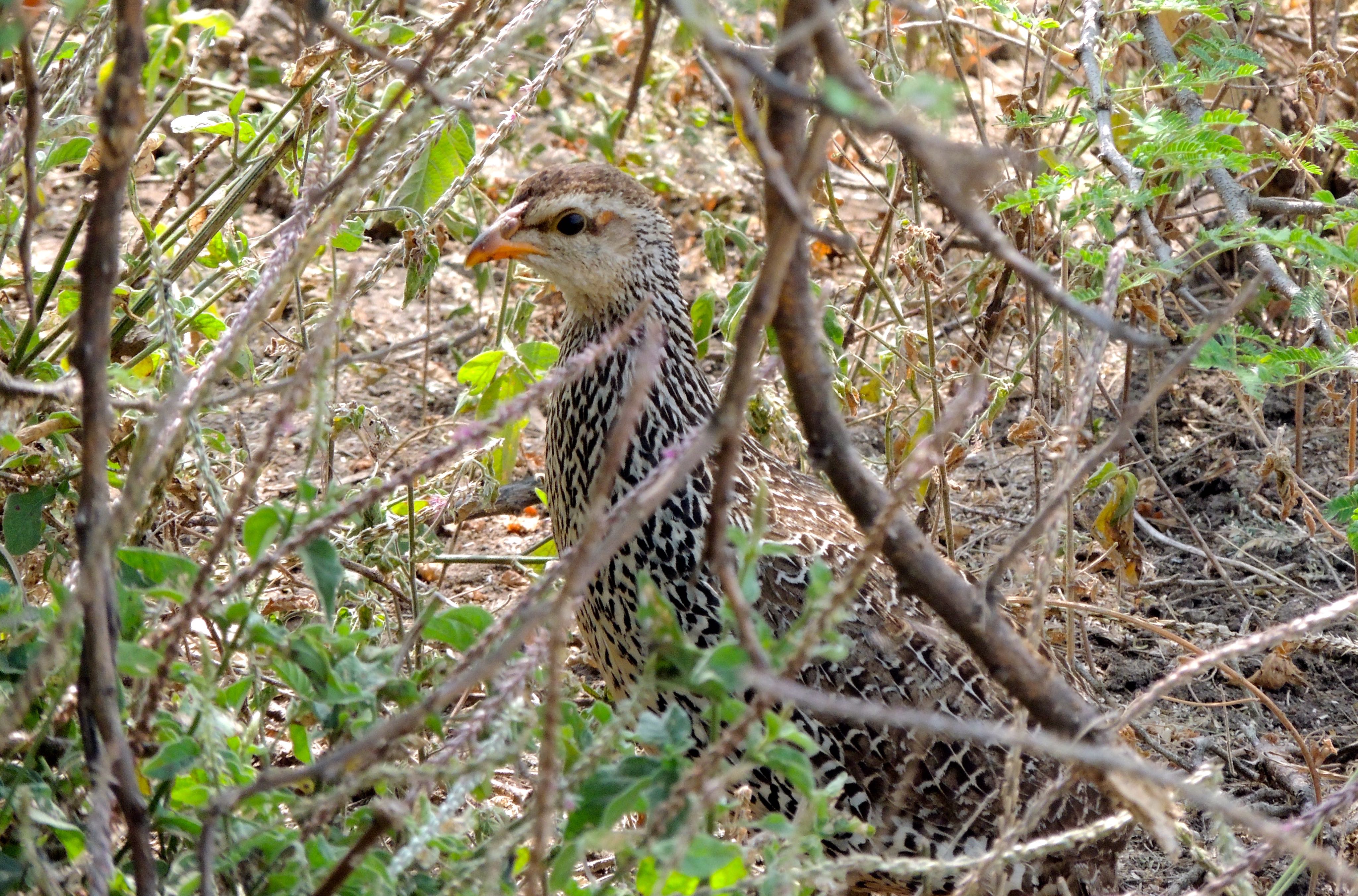 Heuglin's Francolin - Photo by William Young
Heuglin's Francolin - Photo by William Young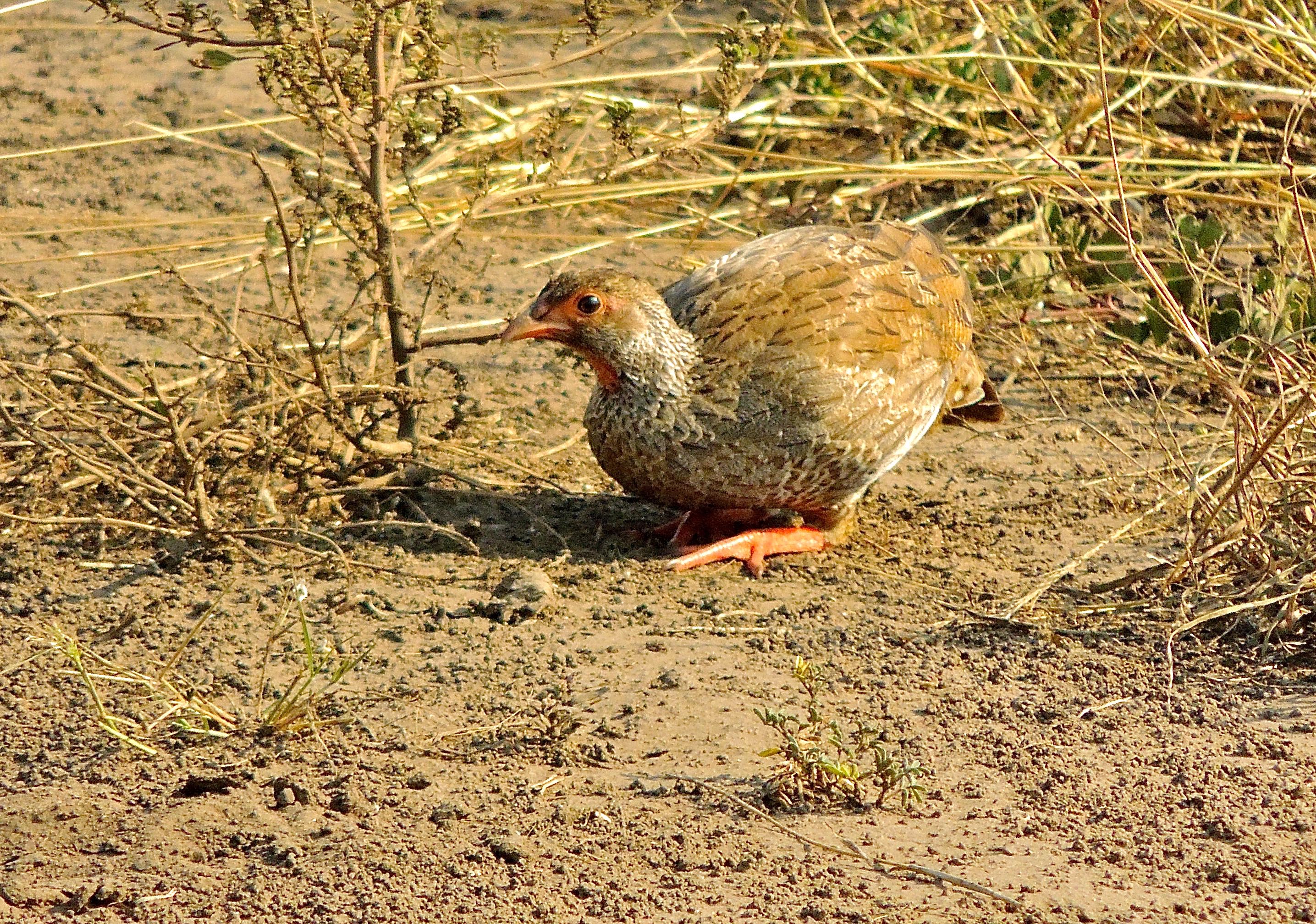 Red-necked Francolin - Photo by William Young
Red-necked Francolin - Photo by William YoungGrebes
George saw one Little Grebe pretty far back in the reeds at one a wetland areas at Bwindi, but I was too busy watching Black Bee-eaters to look for it.
Storks
We saw five species of storks. Marabous were an almost constant presence, and we saw them everywhere except in the mountains. Many days, we saw more than a hundred. They soar like vultures, except their legs stick out behind. In the Kazinga Channel, I saw some with their throat pouch inflated. The pouch hung down, adding another curious feature to their body. In a few places, we saw nesting colonies of them, with their white chicks who had not yet attained their full adult ugliness. We saw quite a few Marabous at the scenes of controlled burns. Some of them flew down the road just ahead of us, and their wingspan was wider than our vehicle. At the Mountains of the Moon Hotel, one was walking on the roof above some of the rooms, and I could hear each footstep as it walked across the slates. They are huge birds who usually tower over other birds who are near to them. African Openbills were fairly common. Except for one day when we saw 30 at Murchison Falls NP, we tended to see small numbers of them — often individuals. On our walk through the Bigodi Wetlands, one flew up from a close distance and startled Vero. They look all dark. We saw Woolly-necked Storks on five days, either singles or pairs. They are dark with a light neck. We sometimes saw them in trees. We saw Saddle-billed Storks on three days. Crammy said this species was in the running to be the national bird of Uganda, because its bill has the colors of the Ugandan Flag — yellow, red, and black. They can be sexed by eye color — the females have yellow eyes. We saw Yellow-billed Storks on a few days, with a lot of them in an area where we stopped on our drive back to Entebbe. Some grayish young ones were mixed in.
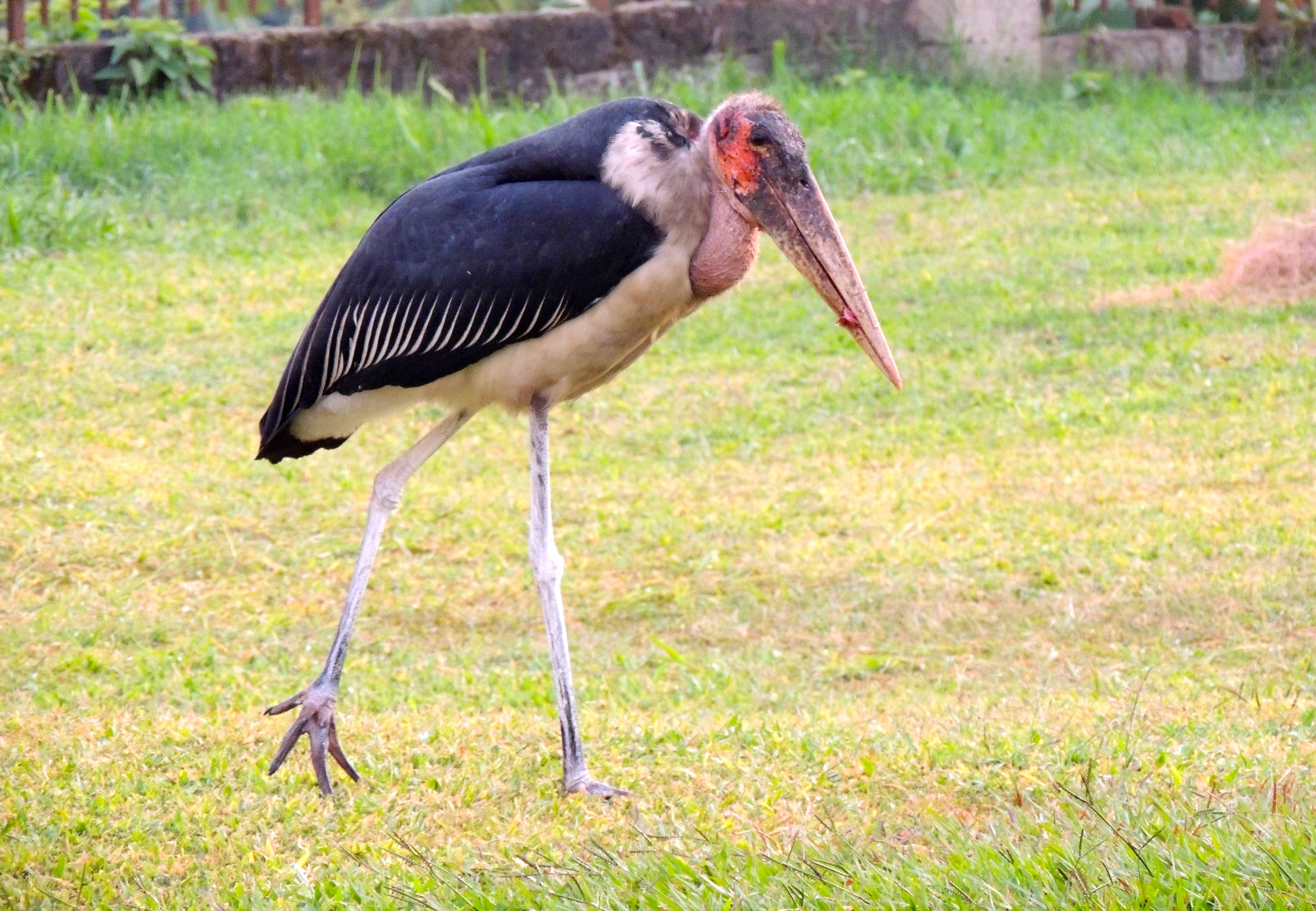 Marabou Stork - Photo by William Young
Marabou Stork - Photo by William Young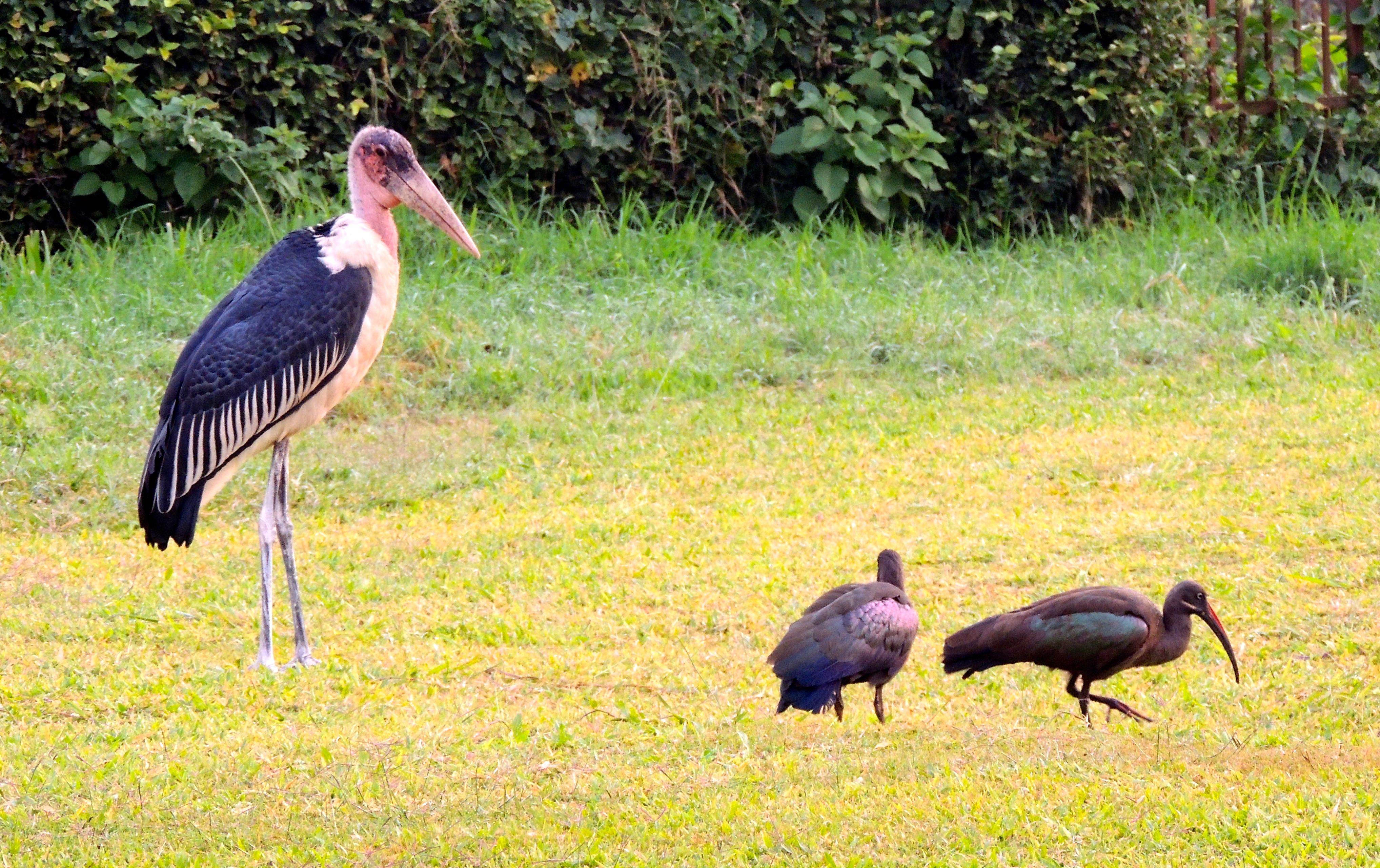 Marabou Stork and Hadada Ibises - Photo by William Young
Marabou Stork and Hadada Ibises - Photo by William Young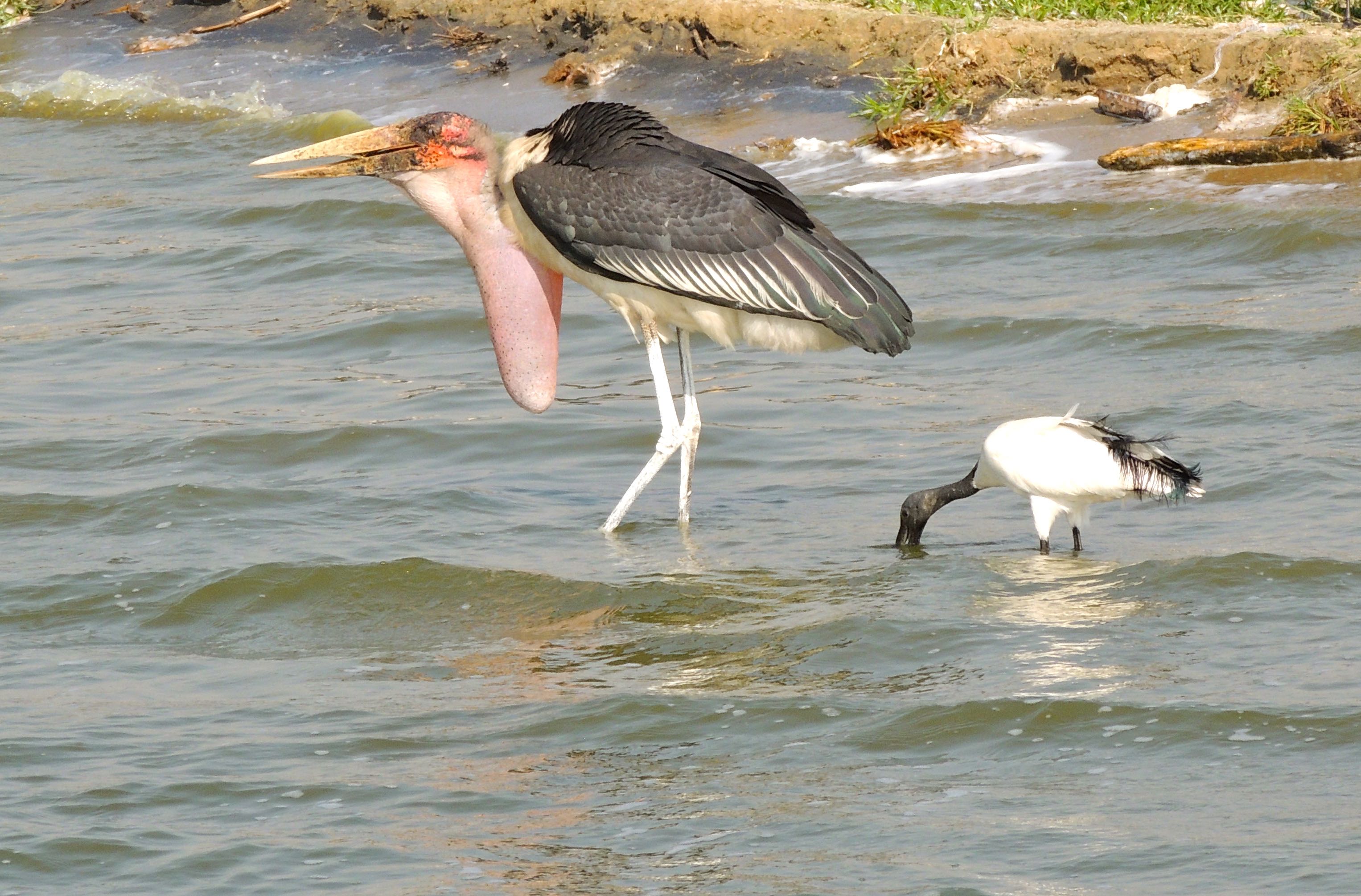 Marabou Stork and Sacred Ibis - Photo by William Young
Marabou Stork and Sacred Ibis - Photo by William Young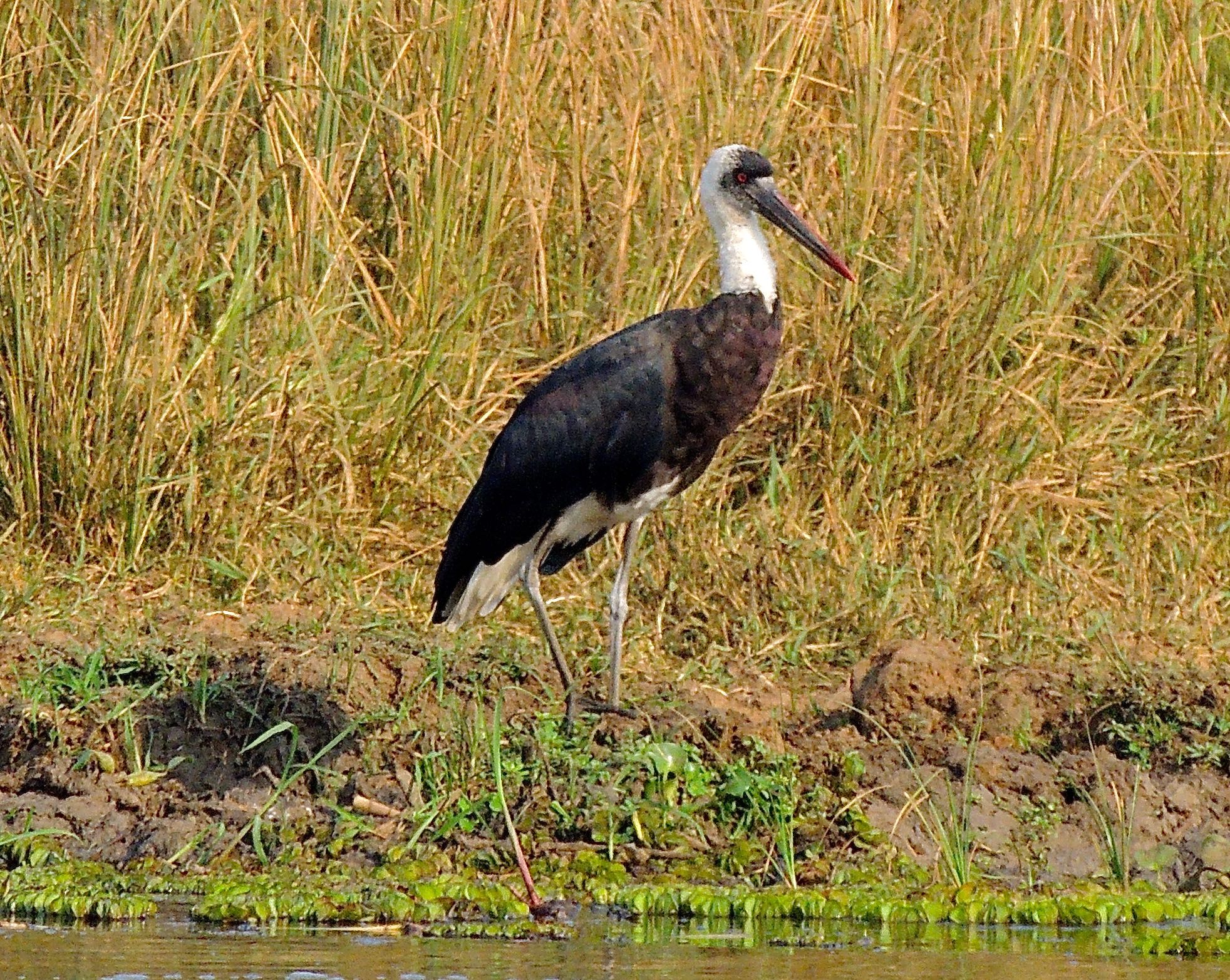 Woolly-necked Stork - Photo by William Young
Woolly-necked Stork - Photo by William Young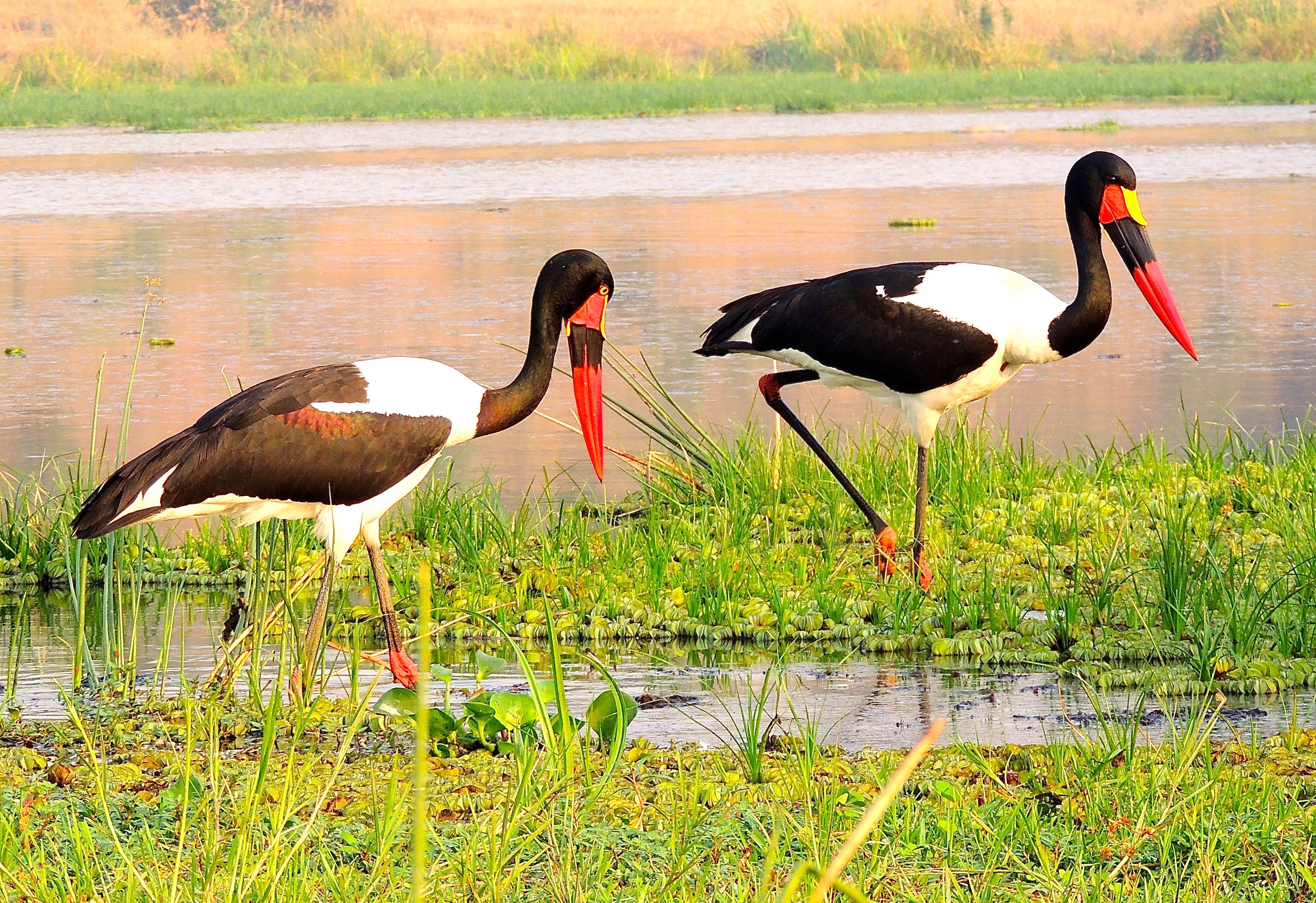 Saddle-billed Storks - Photo by William Young
Saddle-billed Storks - Photo by William Young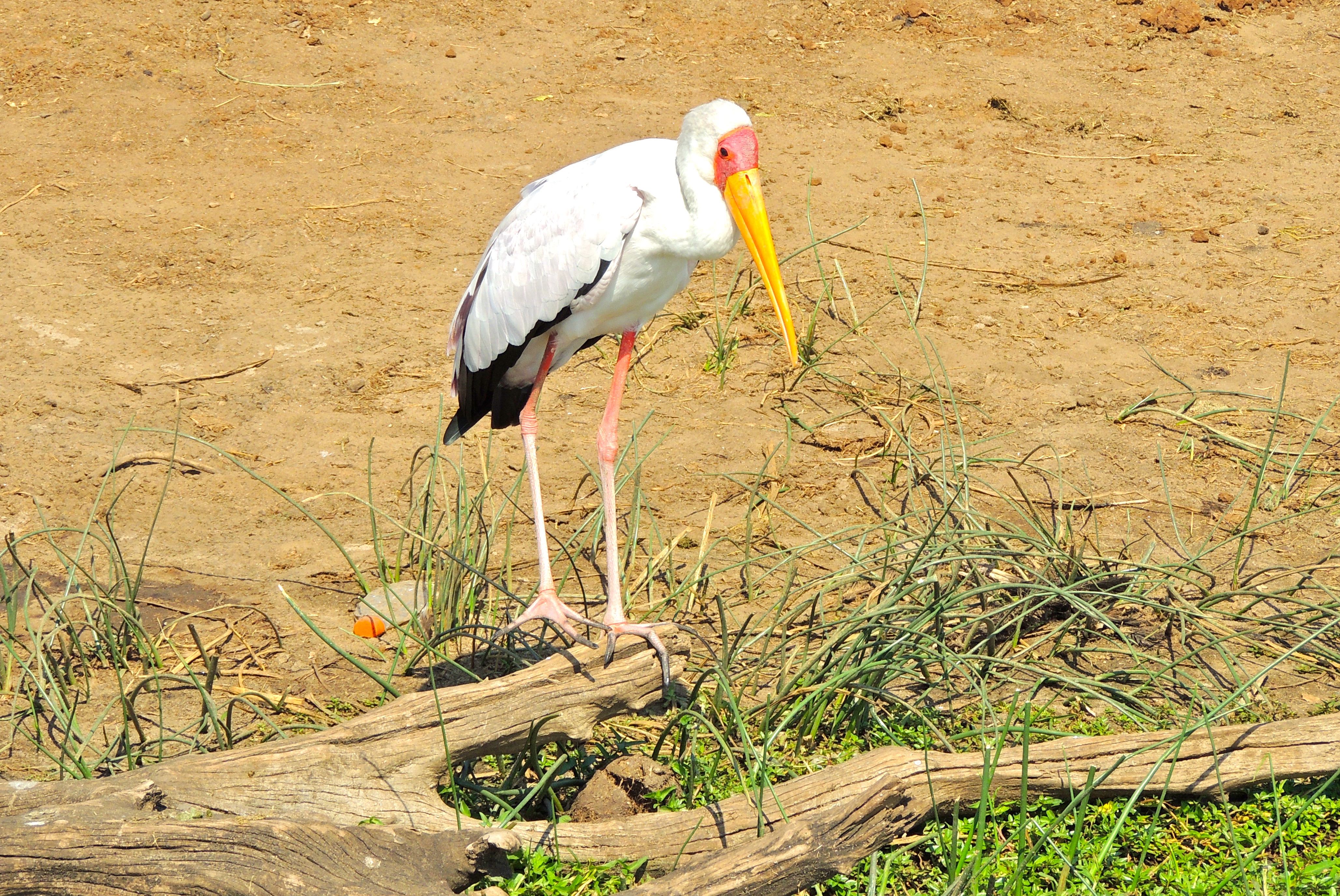 Yellow-billed Stork - Photo by William Young
Yellow-billed Stork - Photo by William YoungCormorants, Darters, and Pelicans
We saw two species of cormorants. The Great Cormorant was the more common of the two in the Kazinga Channel. We also saw some on our Nile cruises. The Long-tailed Cormorant is smaller and has a longer tail. We saw African Darters on the Nile, including one unfortunate one who was hanging by the neck from the branch of a tree, possibly because of a fish hook. These darters are like Anhingas in appearance and behavior. They sometimes swim with their body partially submerged. We saw two species of pelicans. The Pink-backed is smaller and grayer, with a pink throat pouch. It does not have as much black in its primaries. We saw a lot of them flying around Lake Victoria at the Entebbe Botanical Gardens. The Great White Pelican is larger and has a yellow throat pouch. We saw both species on the cruise in the Kazinga Channel, and there was a mixed colony in the trees while we were driving through Mbarara. Also in the Mbarara colony were Marabous.
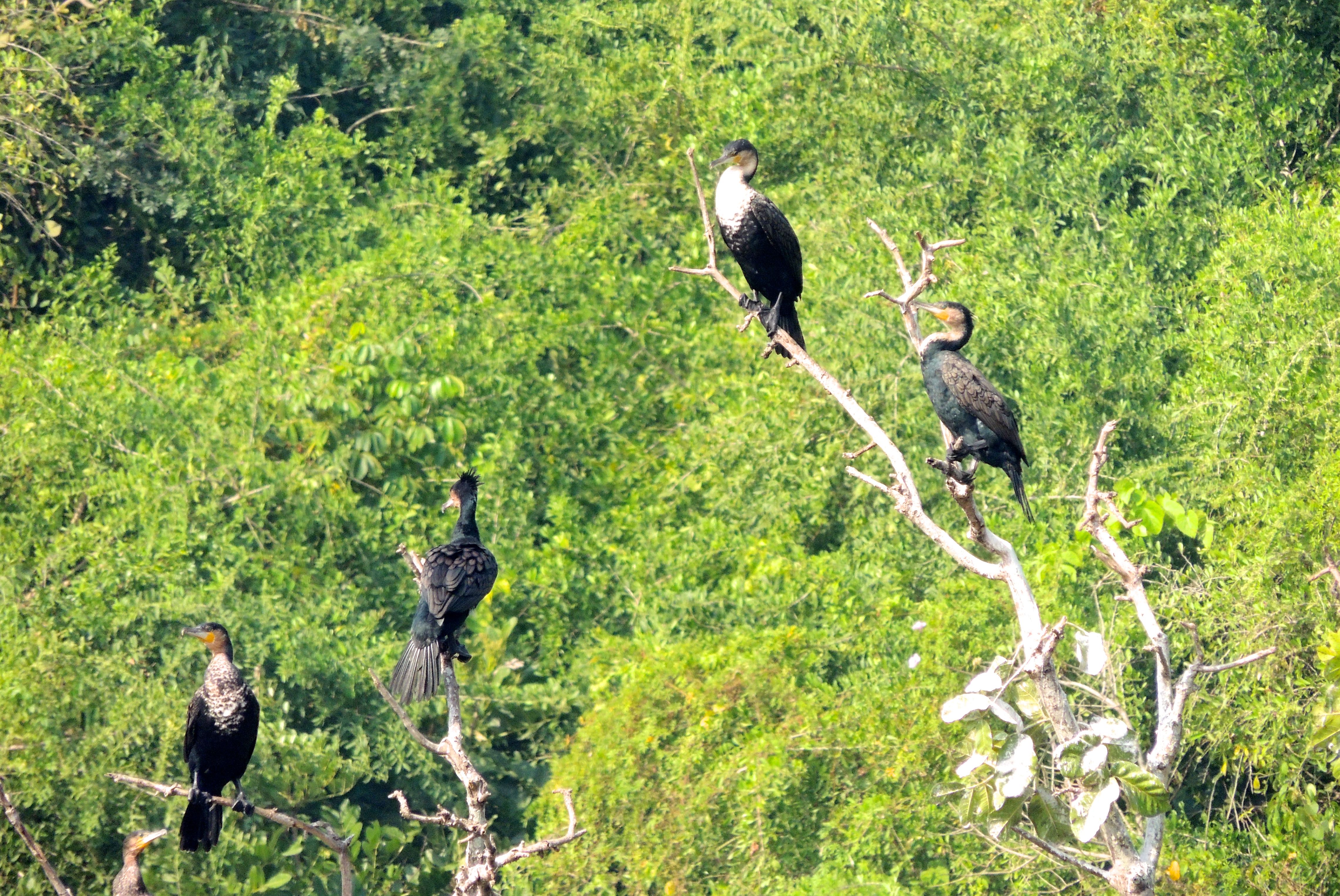 Great Cormorants - Photo by William Young
Great Cormorants - Photo by William Young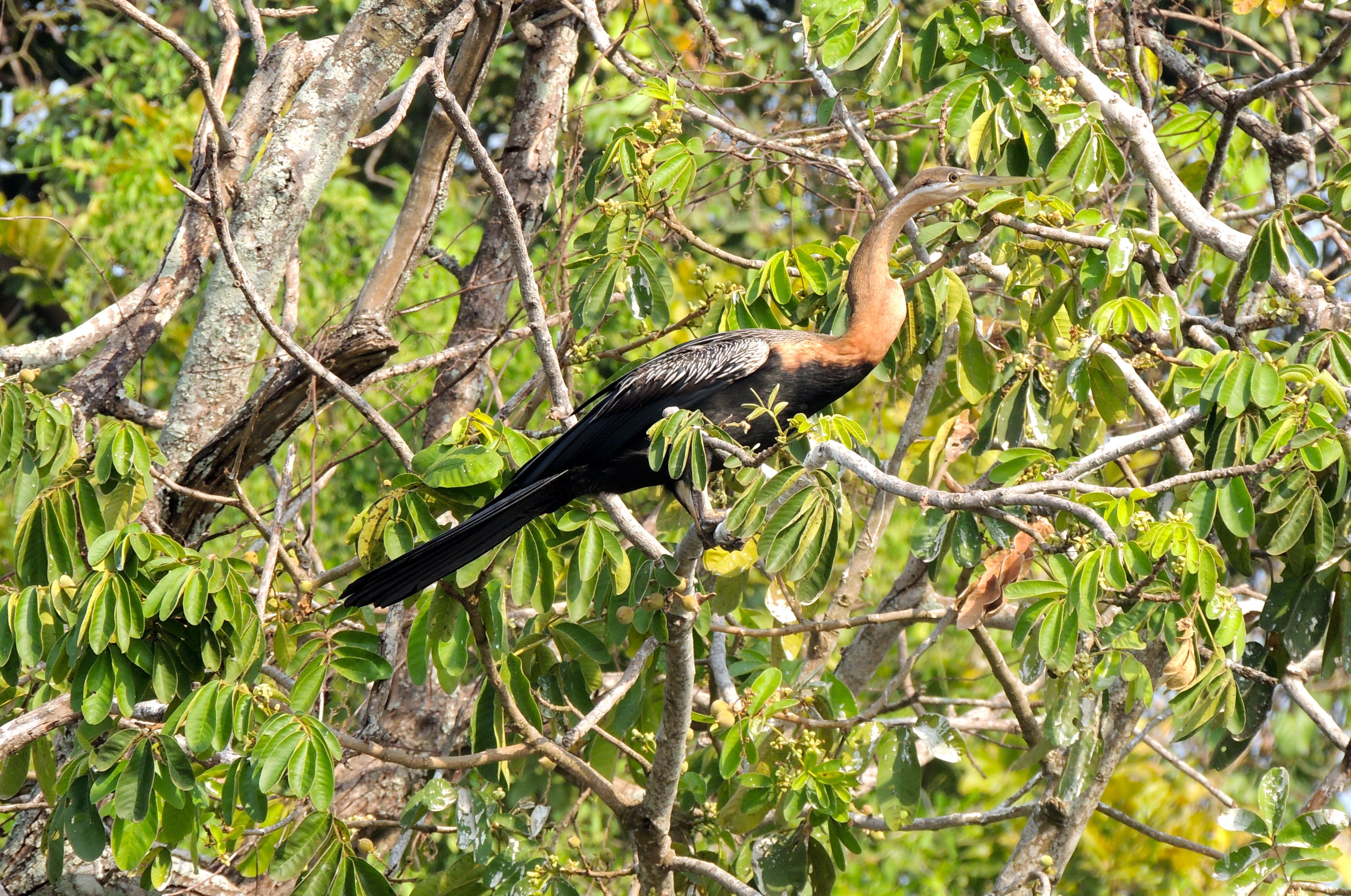 African Darter - Photo by William Young
African Darter - Photo by William Young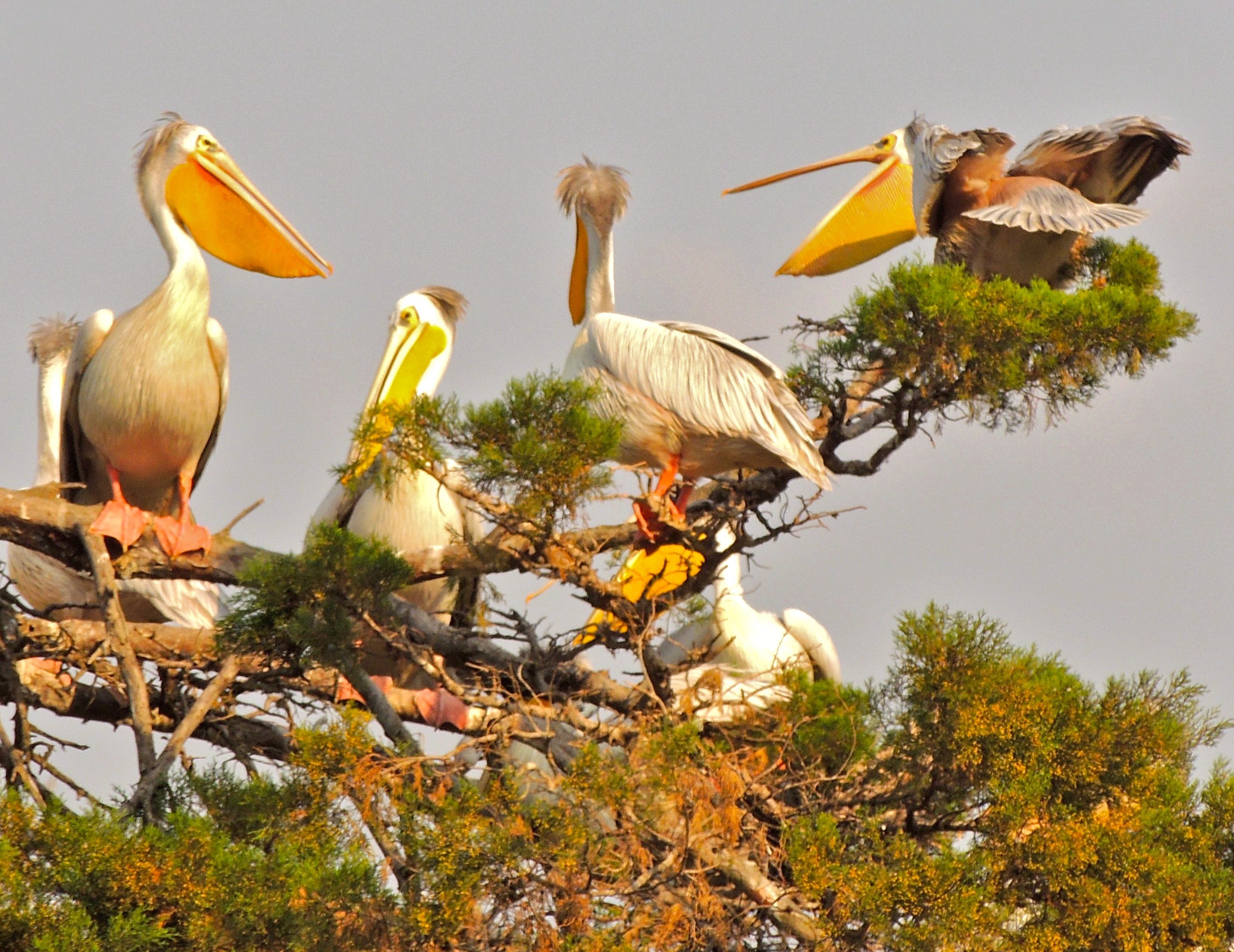 Great White Pelicans - Photo by William Young
Great White Pelicans - Photo by William Young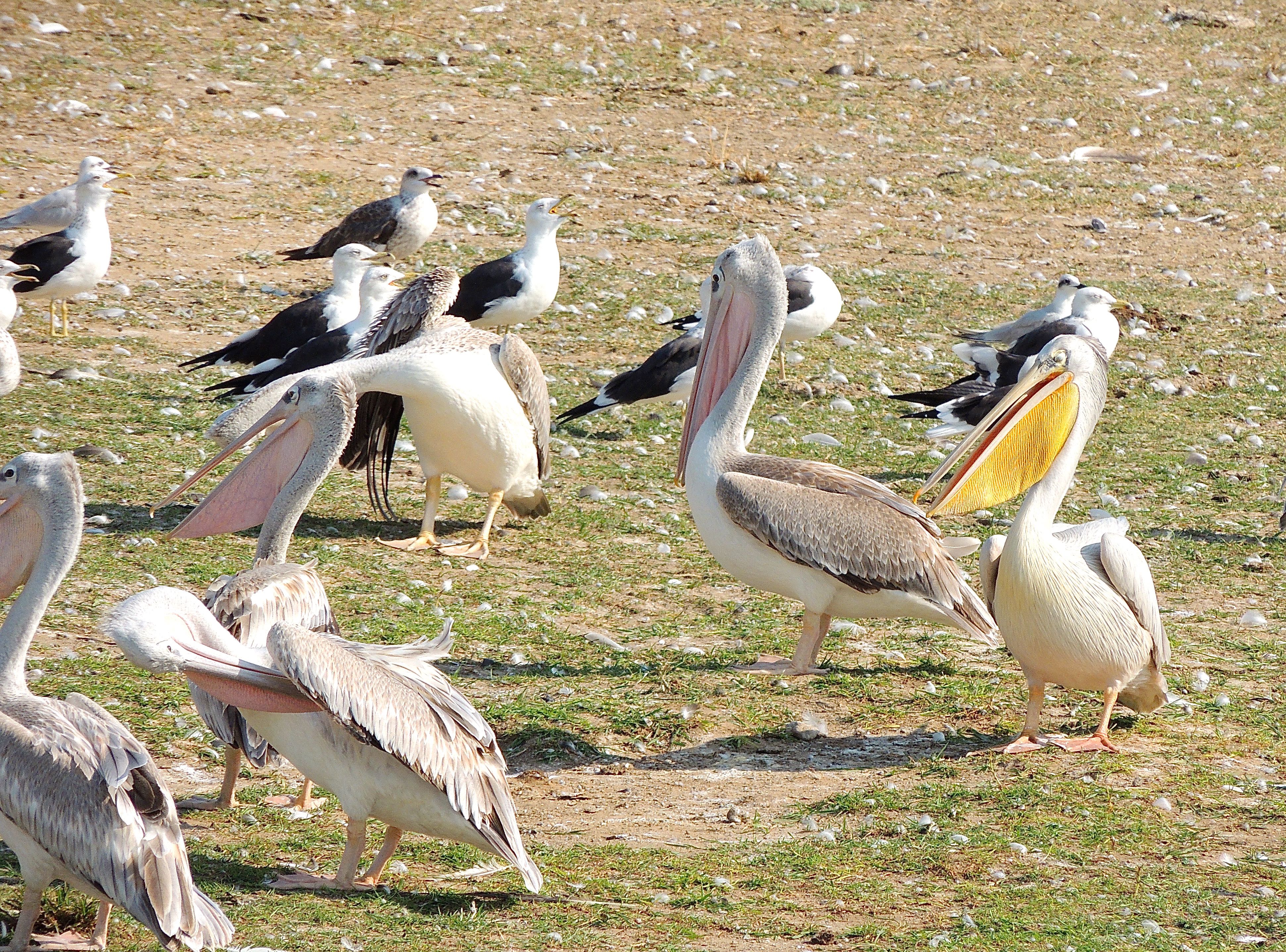 Great White and Pink-backed Pelicans, Lesser Black-backed and Grey-hooded Gulls - Photo by William Young
Great White and Pink-backed Pelicans, Lesser Black-backed and Grey-hooded Gulls - Photo by William YoungShoebill and Hamerkop
The bird I most wanted to see on the trip was a Shoebill, and I saw them on two days. On the Nile, we found a female who was about 50 meters away and then moved to within about 25 meters. The bird was cooperative and stayed relatively still for a long time. She also moved around a bit. One of the primary foods of the Shoebill is the lungfish, and we watched as she stalked her prey. At one point, we saw her lose a feather. I saw a male at Mabamba Swamp who was a bit farther away, but still close enough for photos. We saw two additional Shoebills flying around Mabamba. These are huge birds who look and act like storks but who are more closely related to the pelicans. The bill looks like a large wooden shoe with a hook on the end for ripping prey. They have very intense eyes, and they stand still while evaluating the scene around them. We saw a lot of Hamerkops and quite a few Hamerkop nests, which are the biggest nests of any bird species in the world. They sometimes build two or three of them a year. At the dock at Mabamba, some were perched on the canoes. We saw one flying over the forest at Bwindi, which was an unexpected place to see it.
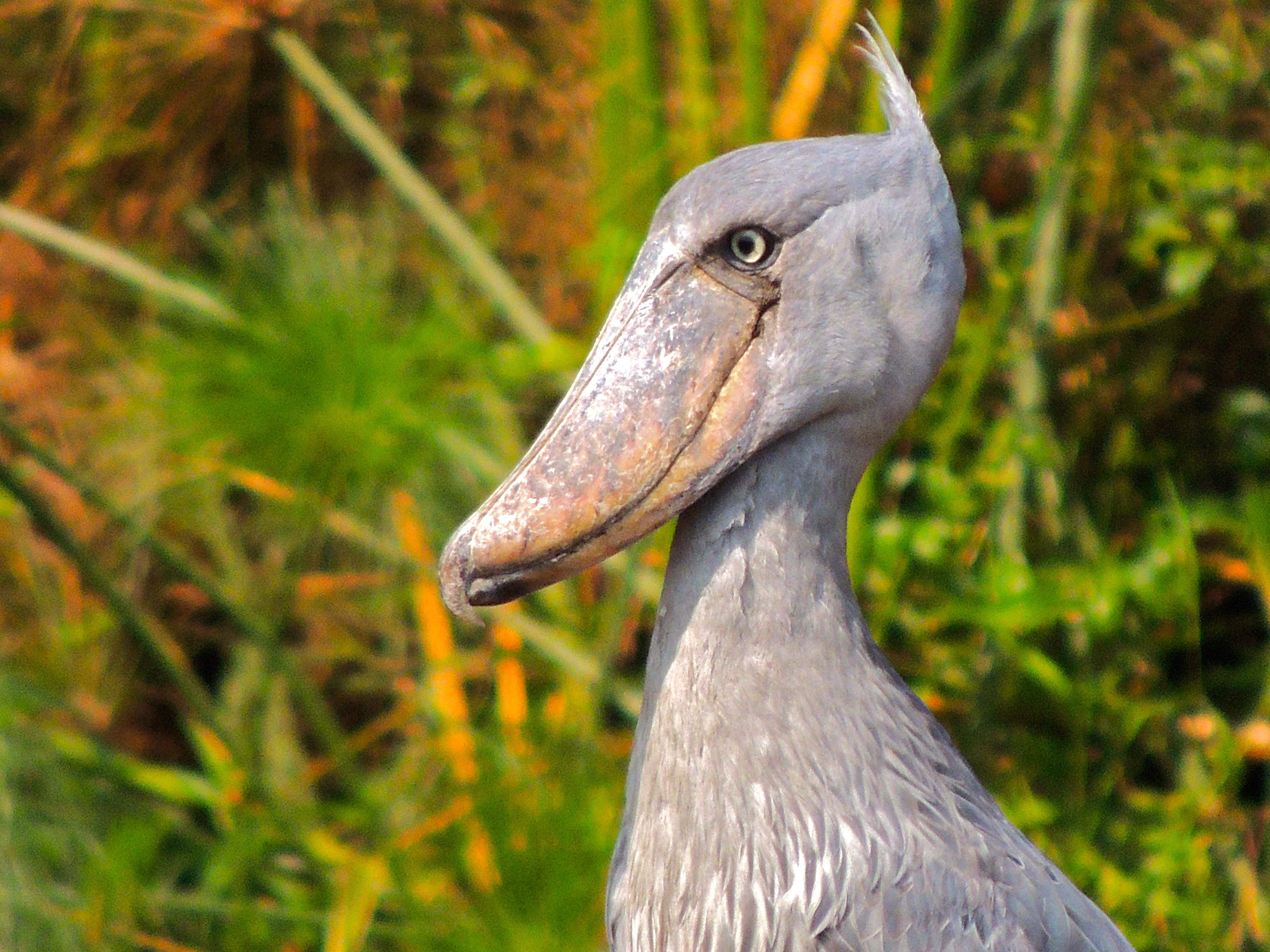 Shoebill - Photo by William Young
Shoebill - Photo by William Young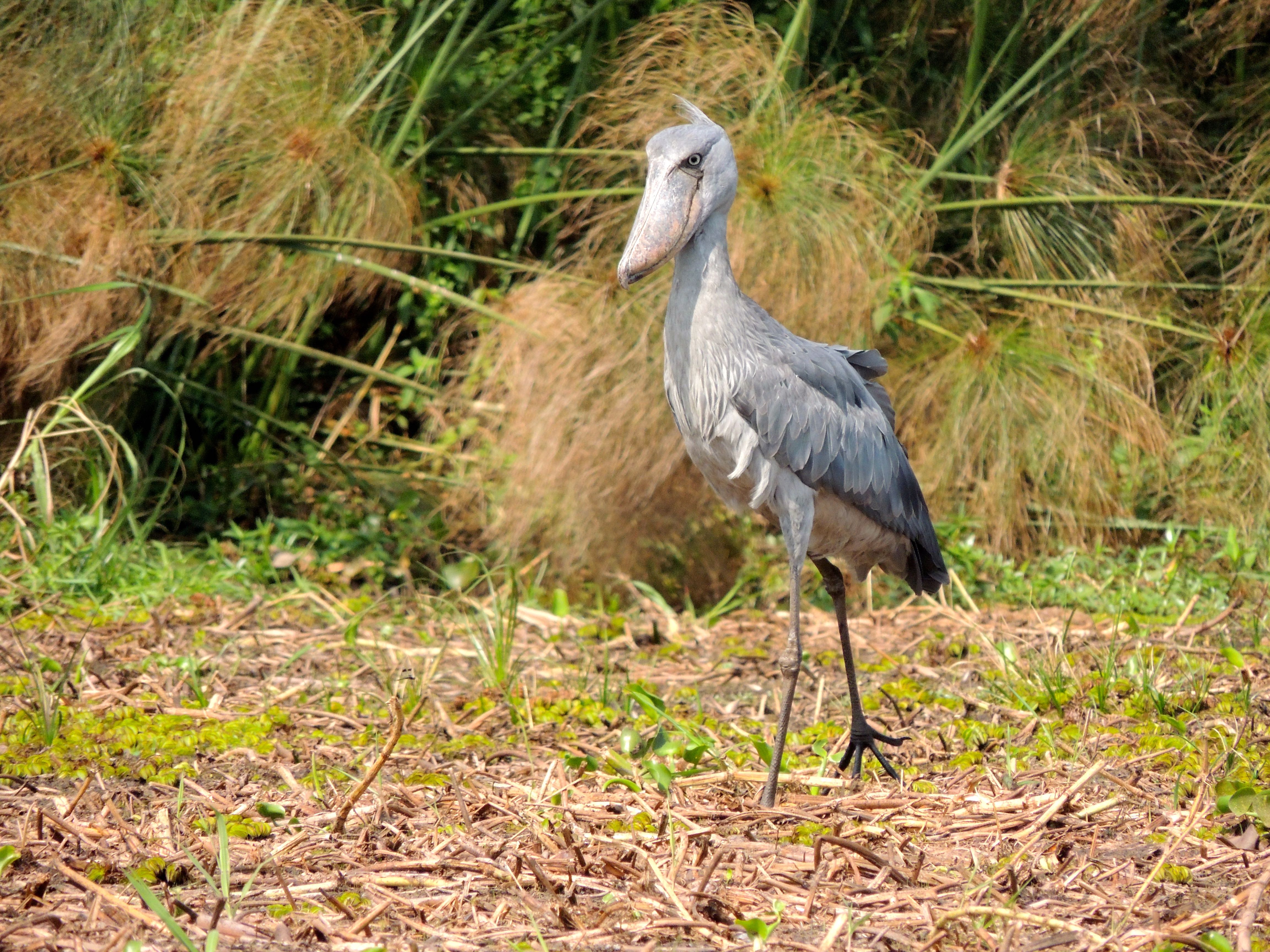 Shoebill - Photo by William Young
Shoebill - Photo by William Young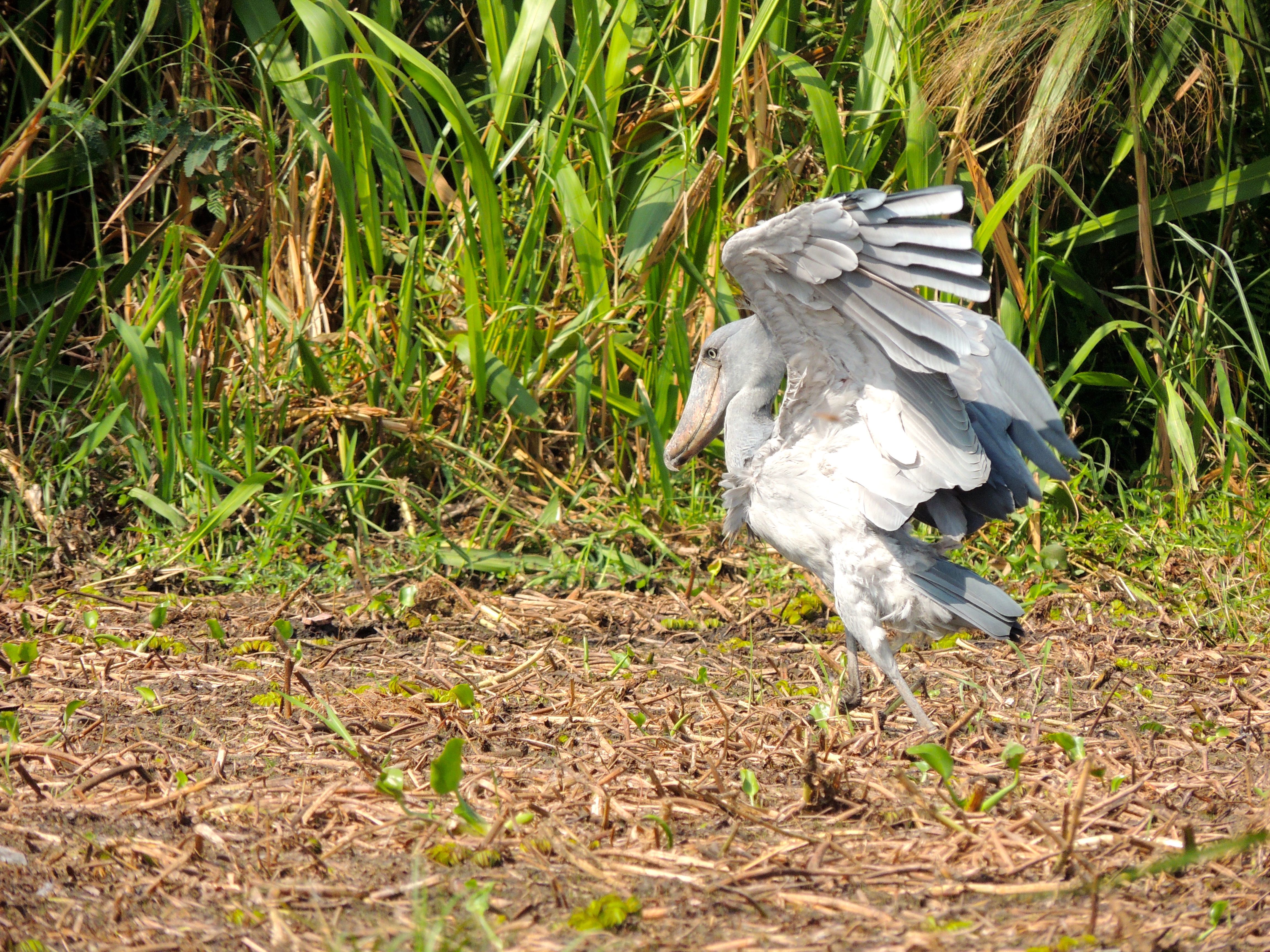 Shoebill - Photo by William Young
Shoebill - Photo by William Young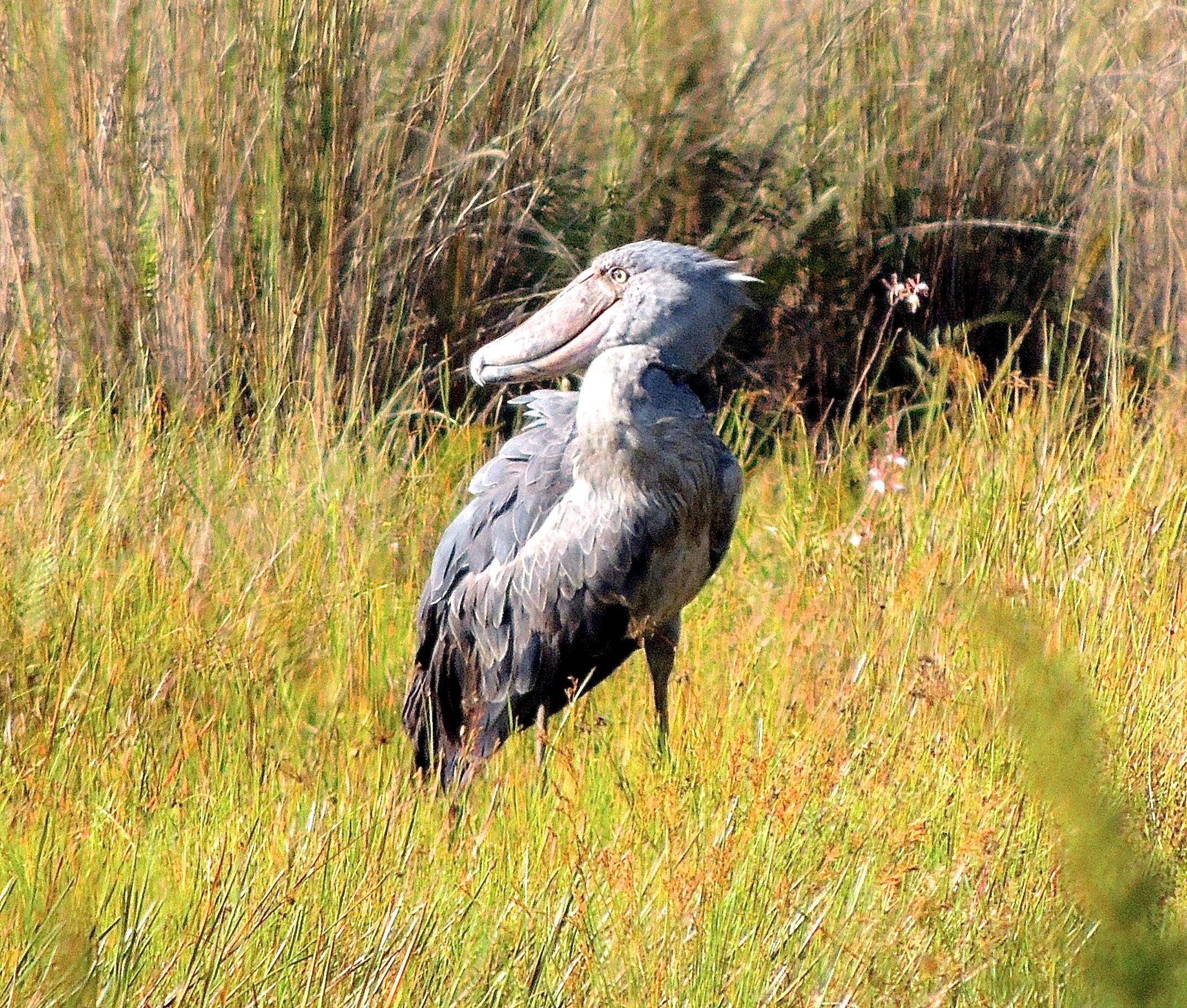 Shoebill - Photo by William Young
Shoebill - Photo by William Young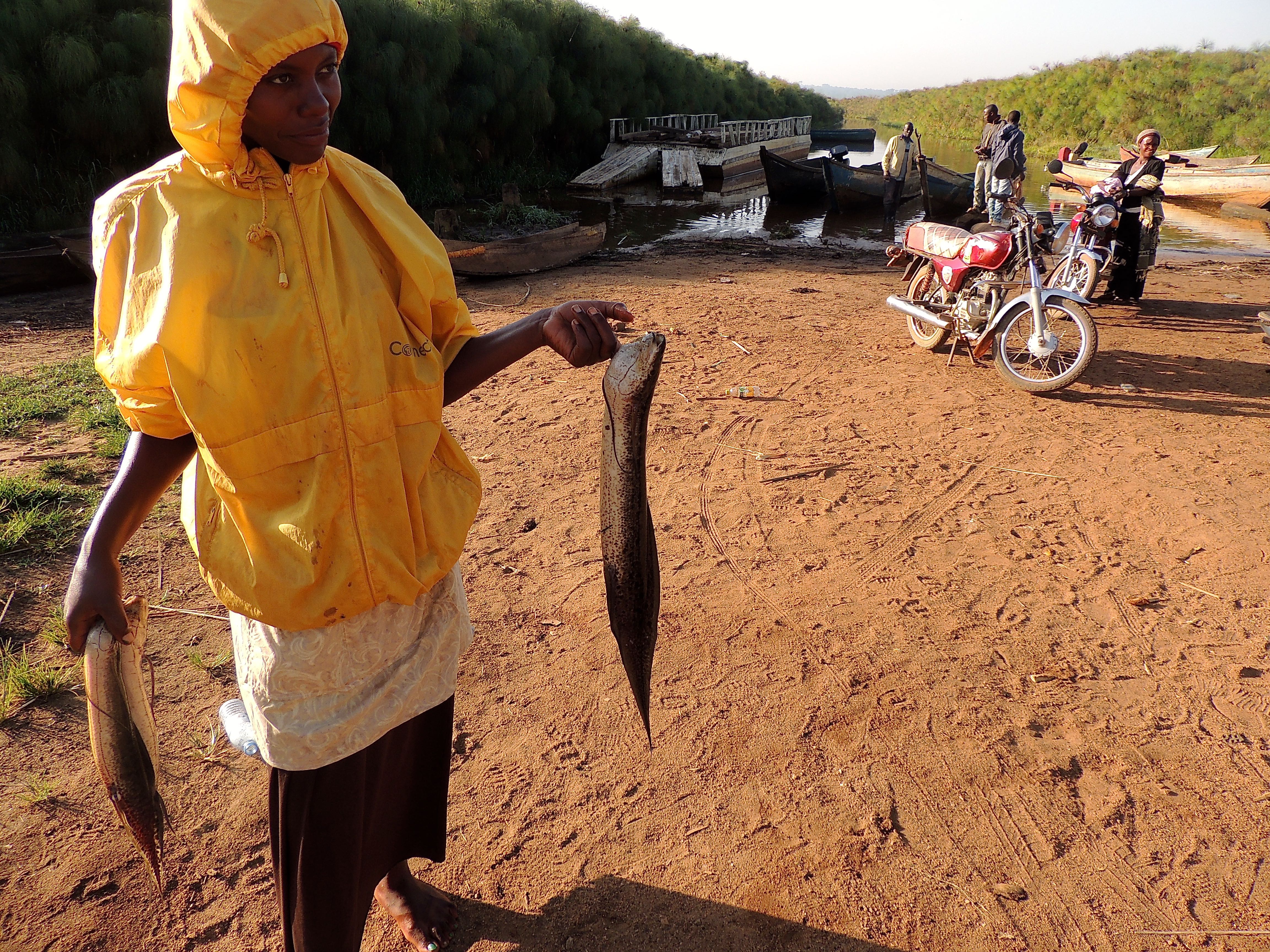 Lungfish - Photo by William Young
Lungfish - Photo by William Young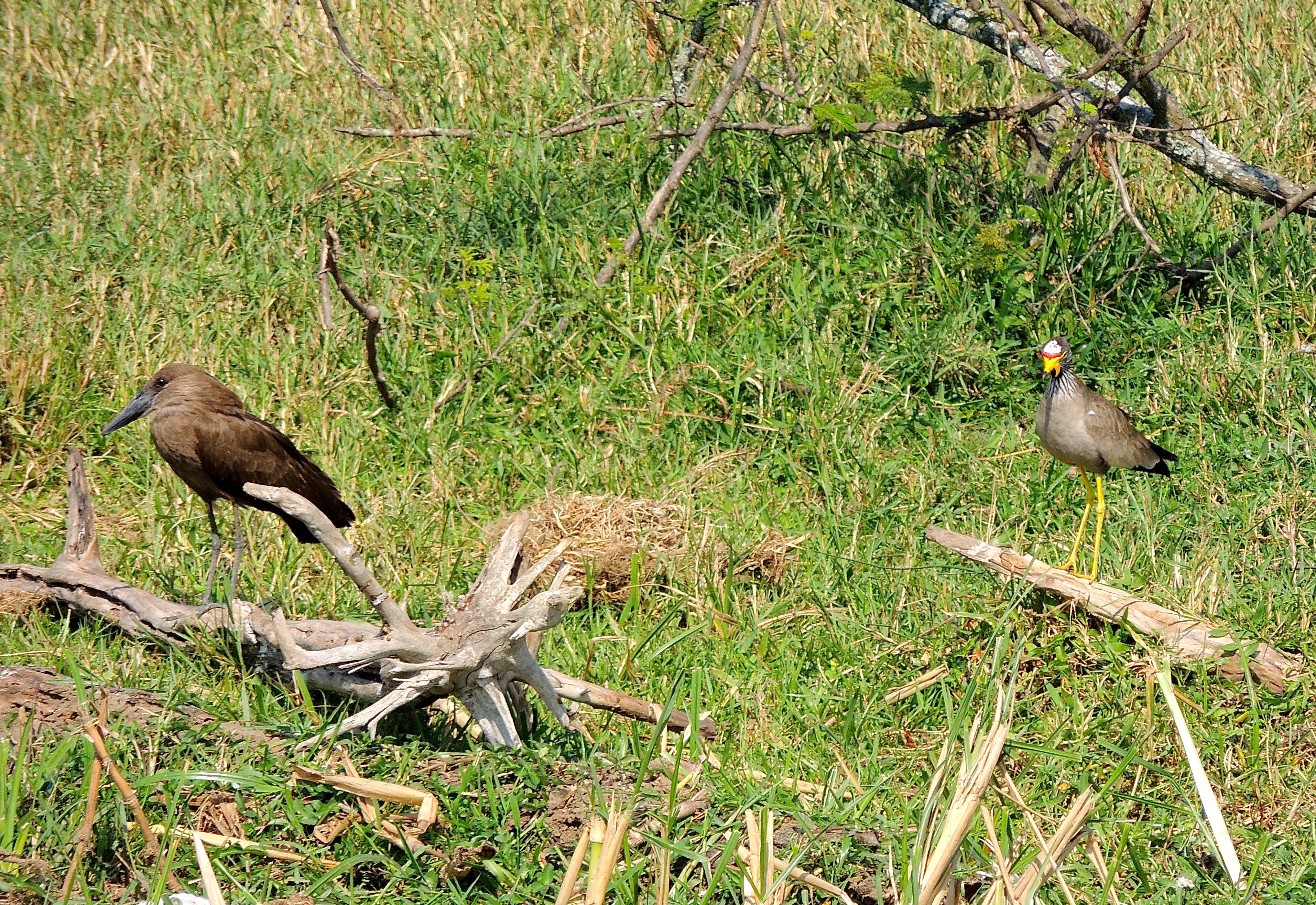 Hamerkop and African Wattled Lapwing - Photo by William Young
Hamerkop and African Wattled Lapwing - Photo by William Young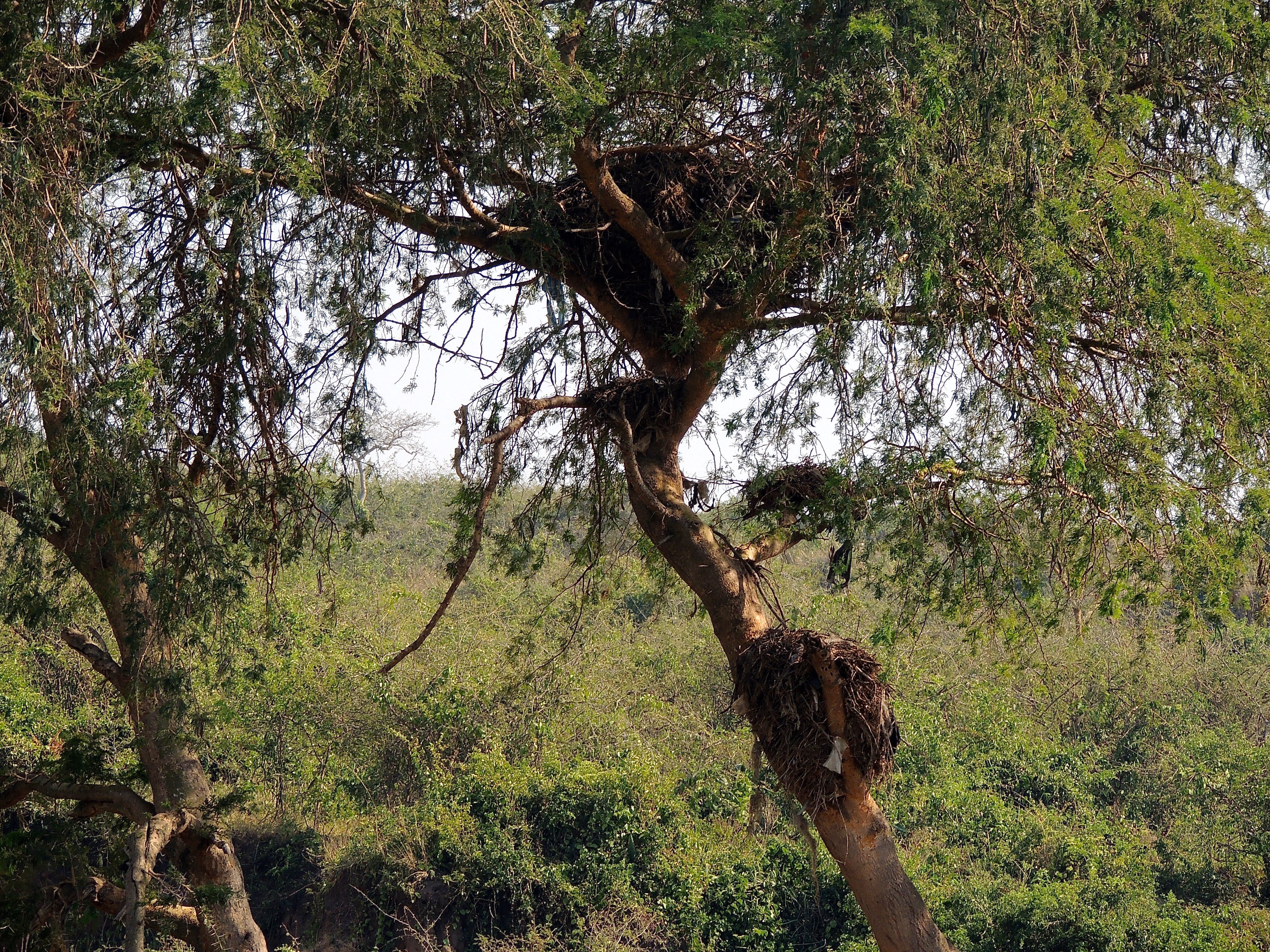 Hamerkop Nest - Photo by William Young
Hamerkop Nest - Photo by William YoungHerons
The most common heron species on the trip was the Black-headed. We saw them on most days. We tended not to see many each day, but there were some in most areas we visited. When we were outside of towns, Cattle Egrets were quite common. On some days, we saw more than a hundred. We saw Gray Herons on 7 different days, with the greatest number being the 7 we saw at Queen Elizabeth NP. Little Egrets were seen on 8 days, and I sometimes saw their golden slippers when they flew. We saw both Great and Intermediate Egrets, and after awhile, I could tell them apart by appearance — the Great has a kinked neck, while the Intermediate's is straight. We saw Squacco Herons on 7 days. They have brown bodies and white wings, which makes them fairly easy to identify. We saw a couple of Striated Herons, and on Lake Mburo, we saw a few Black-crowned Night Herons. I saw Purple Herons on two days, and I had close looks at them at Mabamba. My favorites were the Goliath Herons, who are shy. They are huge and have vertical streaks down their neck. They dwarf the Purple Heron, who has similar coloration. They have broad wings in flight. We saw quite a few on the Nile.
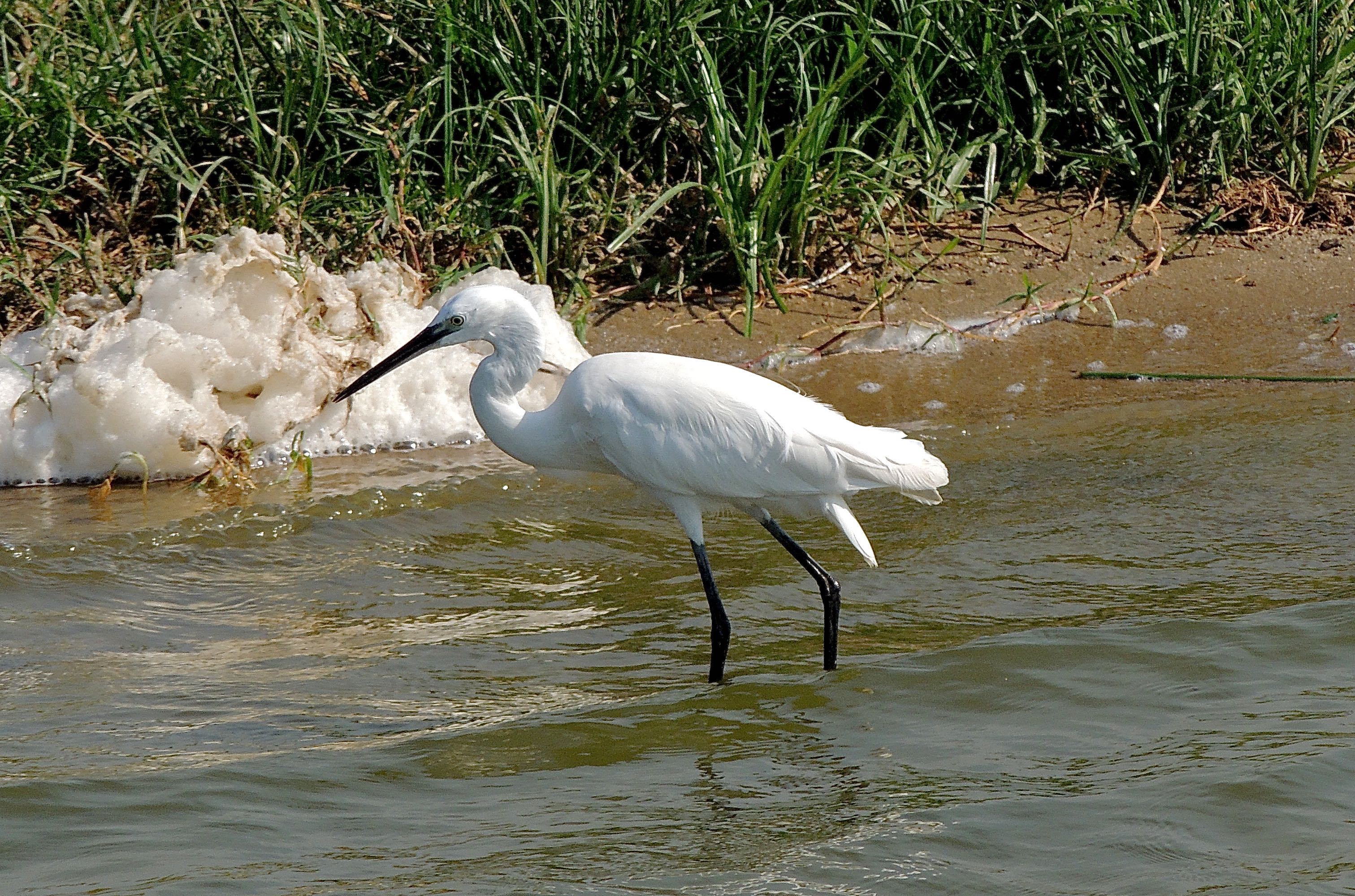 Little Egret - Photo by William Young
Little Egret - Photo by William Young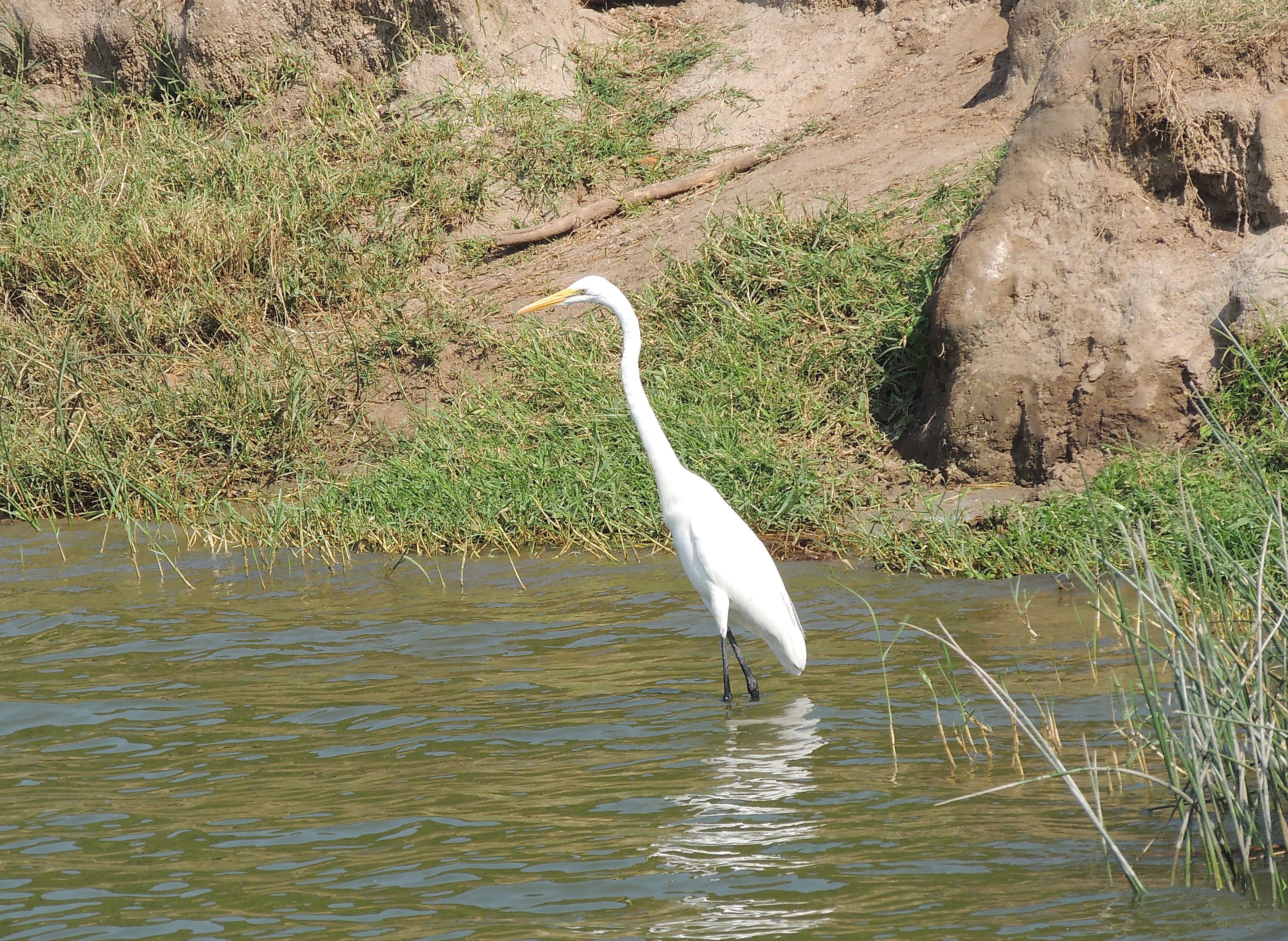 Great Egret - Photo by William Young
Great Egret - Photo by William Young Intermediate Egret - Photo by William Young
Intermediate Egret - Photo by William Young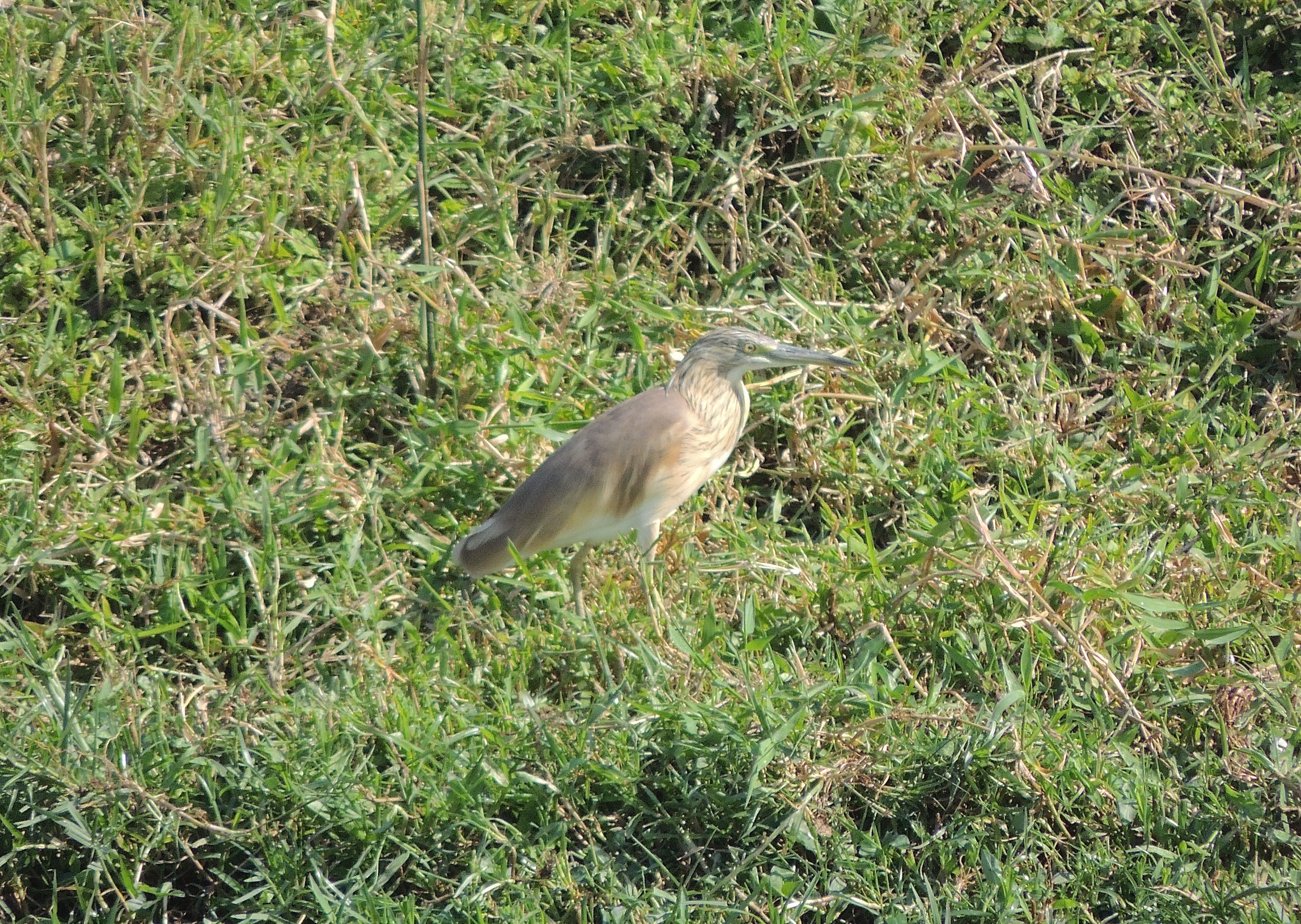 Squacco Heron - Photo by William Young
Squacco Heron - Photo by William Young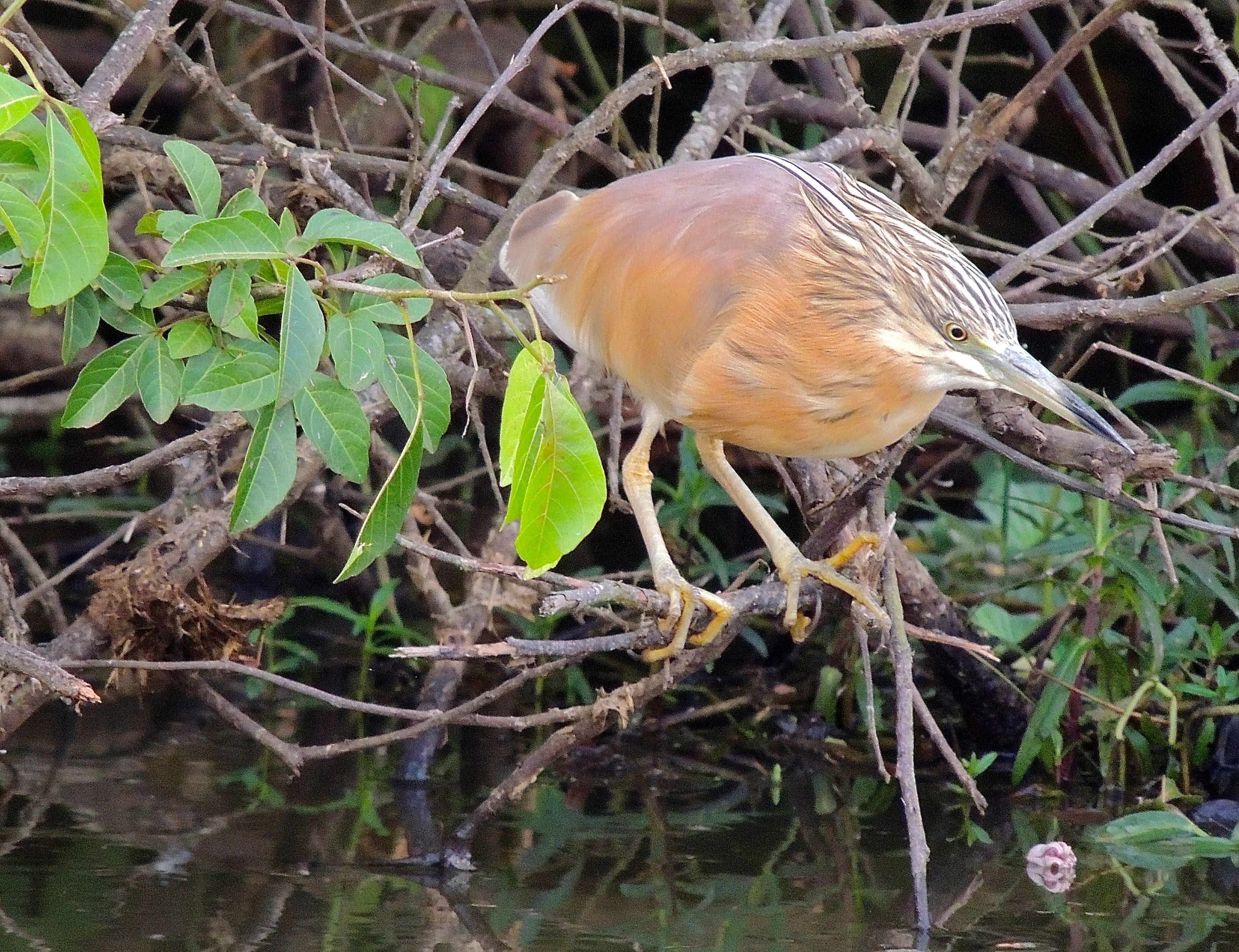 Striated Heron - Photo by William Young
Striated Heron - Photo by William Young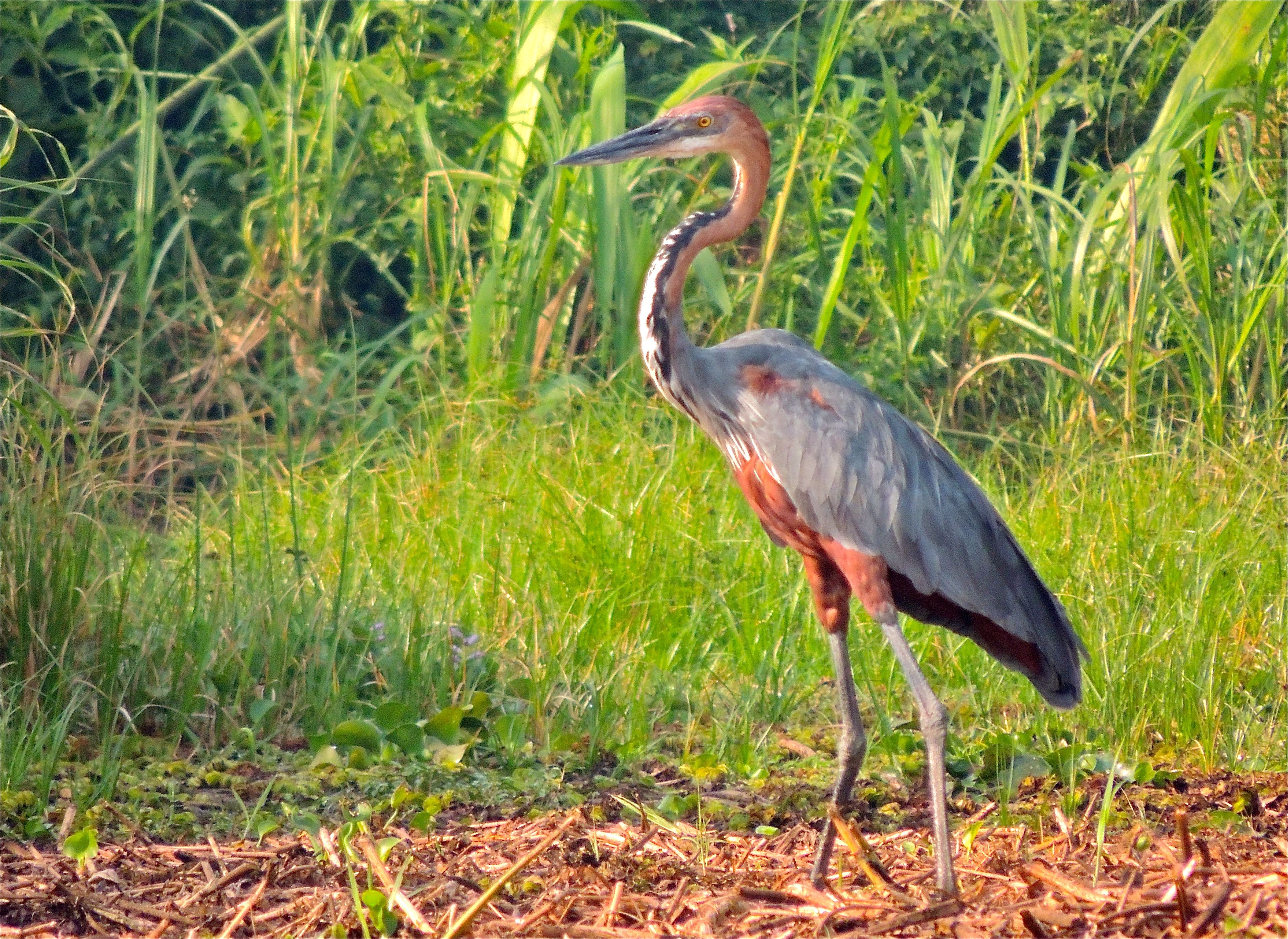 Goliath Heron - Photo by William Young
Goliath Heron - Photo by William YoungIbises
Hadada Ibises were one of the most common species on the trip. They perched on top of cottages at the Victoria View Guest House. Their HA-DA-DA call was loud and insistent. They have iridescent feathers on their wings. I got close looks at them as they fed with the Marabous at the Mountains of the Moon Hotel. I saw Sacred Ibises on 8 days. They are white with a bald black head. On our Nile cruise, we saw Sacred, Hadada, and Glossy Ibises feeding together so that we could see the differences. Those were the only Glossy Ibises I saw.
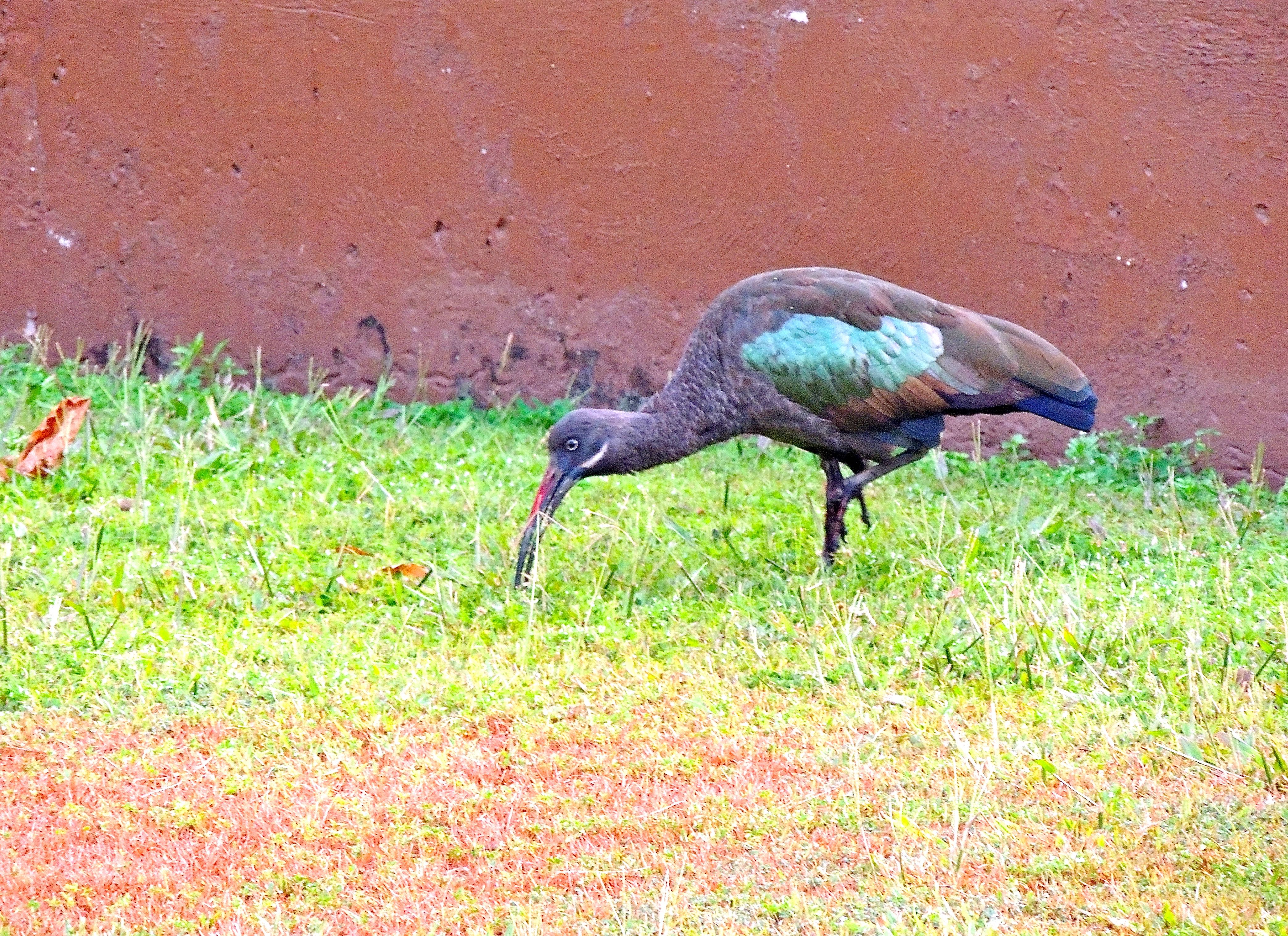 Hadada Ibis - Photo by William Young
Hadada Ibis - Photo by William Young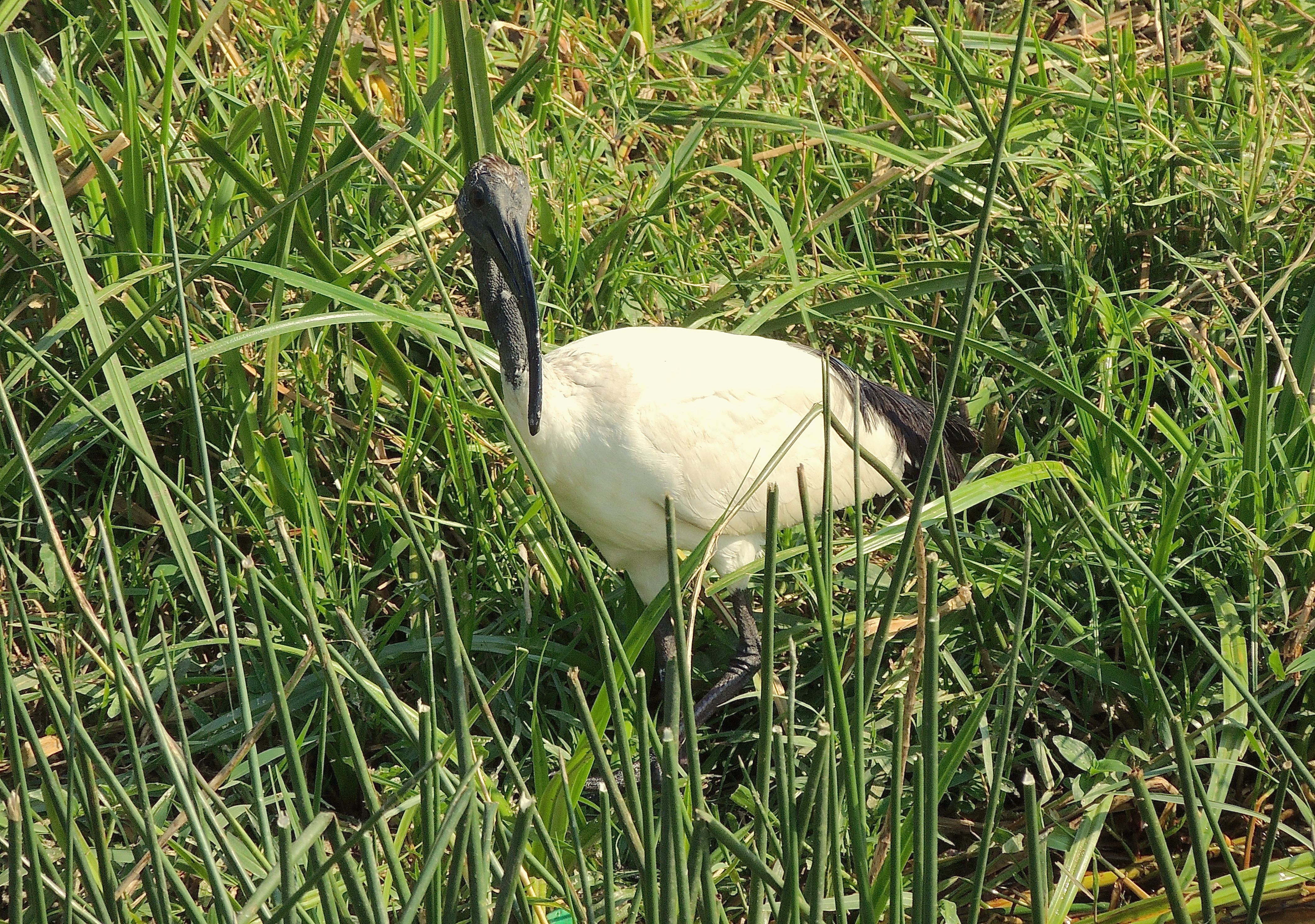 Sacred Ibis - Photo by William Young
Sacred Ibis - Photo by William Young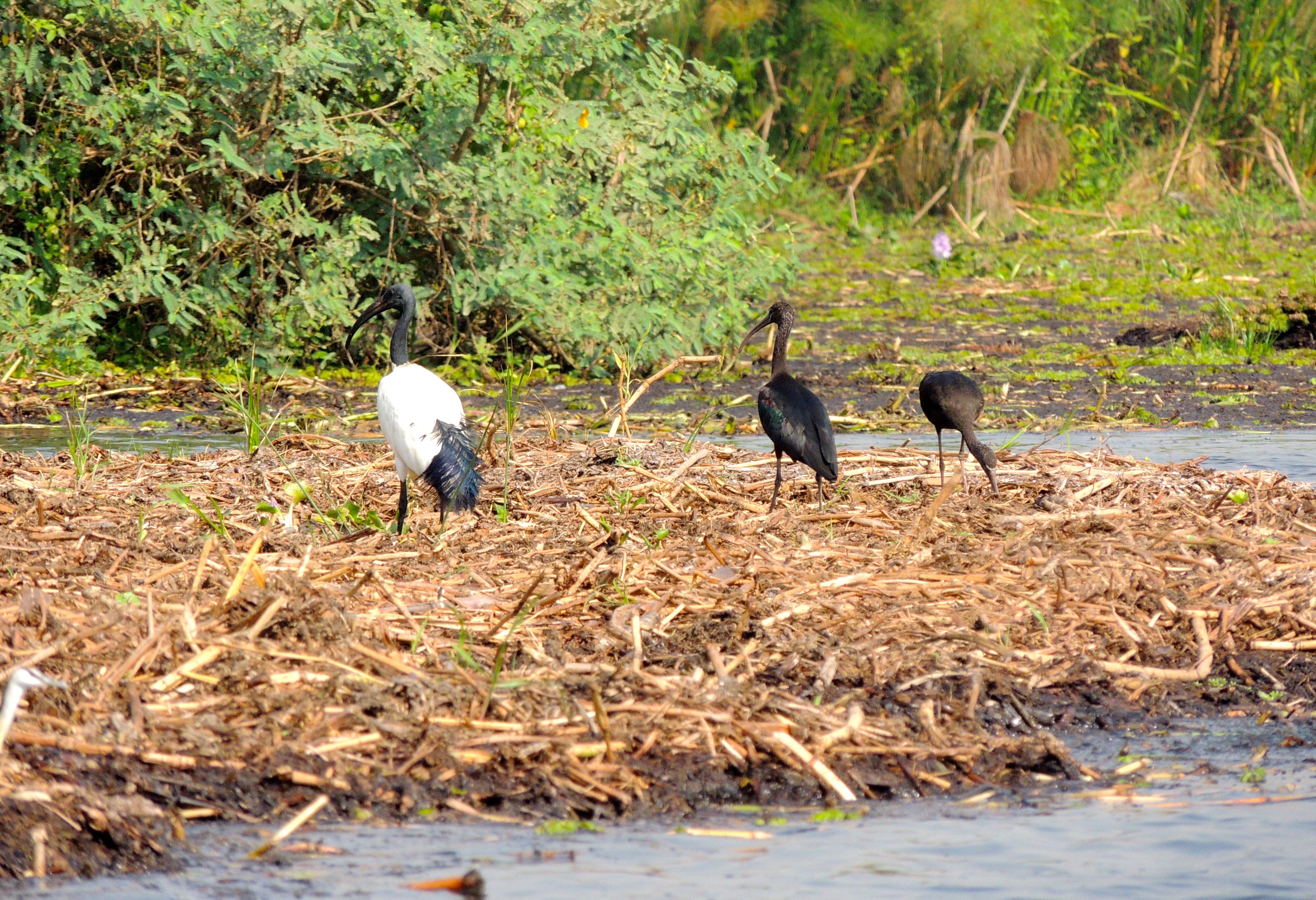 Sacred, Hadada, and Glossy Ibises - Photo by William Young
Sacred, Hadada, and Glossy Ibises - Photo by William YoungBirds of Prey
The most common raptor on the trip was the Yellow-billed Kite, who either has been or will be split from the Black Kite. There were only a few days in the mountains when we did not see them. They have a yellow bill and a slightly forked tail, and we saw them in a wide variety of habitats. I took photos of one perched in the gardens at the Kisoro Travellers Inn. A different race of this species with a dark bill is found in Australia, where they fill the ecological niche occupied by vultures in other countries. When we were near Murchison Falls NP, we saw kites from both races. We saw a few Black-shouldered Kites, mostly on wires as we were driving. On the Nile, we saw a couple of Ospreys. I am not sure if they will be split from the Ospreys in the US. One of my favorite hawks of the trip was the African Harrier-Hawk. I saw one fly over the Victoria View Guest House the final morning of the trip. The most notable one was on the road to Bwindi. It was perched on the trunk of a tree almost like a woodpecker, and it was yanking at strands of fiber from the tree. It occasionally spread its wings to keep its balance. They have double-jointed legs and bare yellow skin on their face.
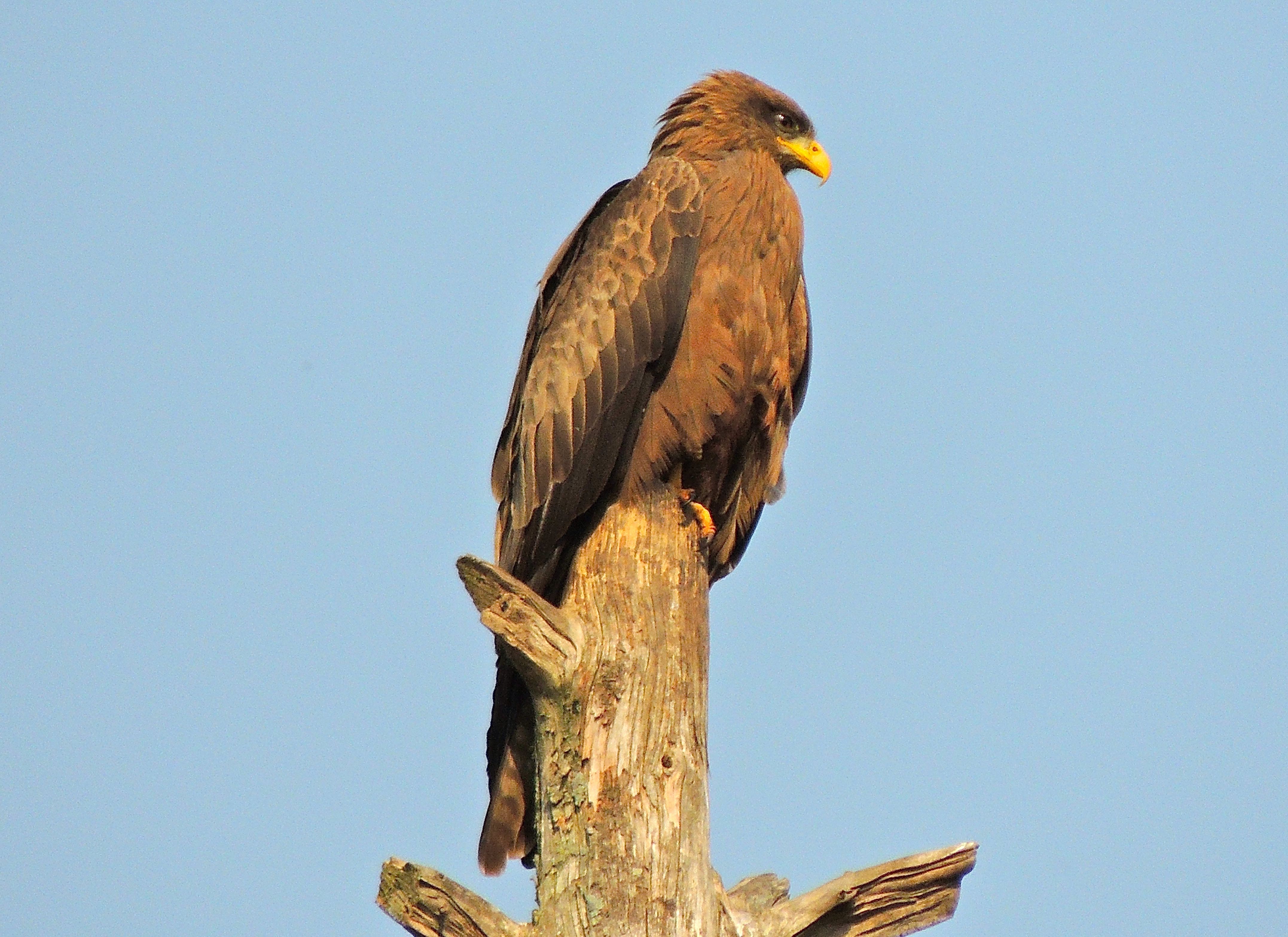 Yellow-billed Kite - Photo by William Young
Yellow-billed Kite - Photo by William Young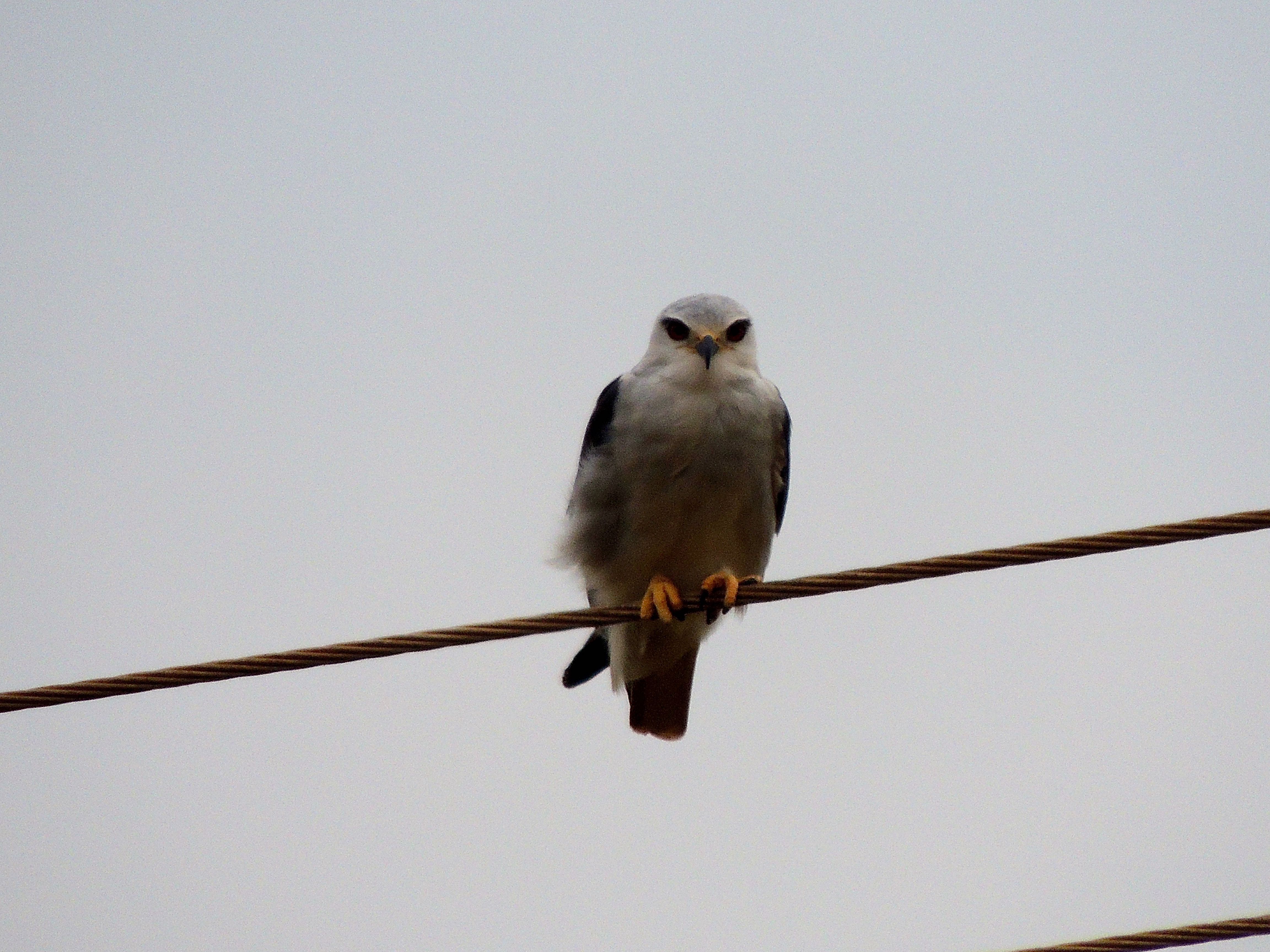 Black-shouldered Kite - Photo by William Young
Black-shouldered Kite - Photo by William Young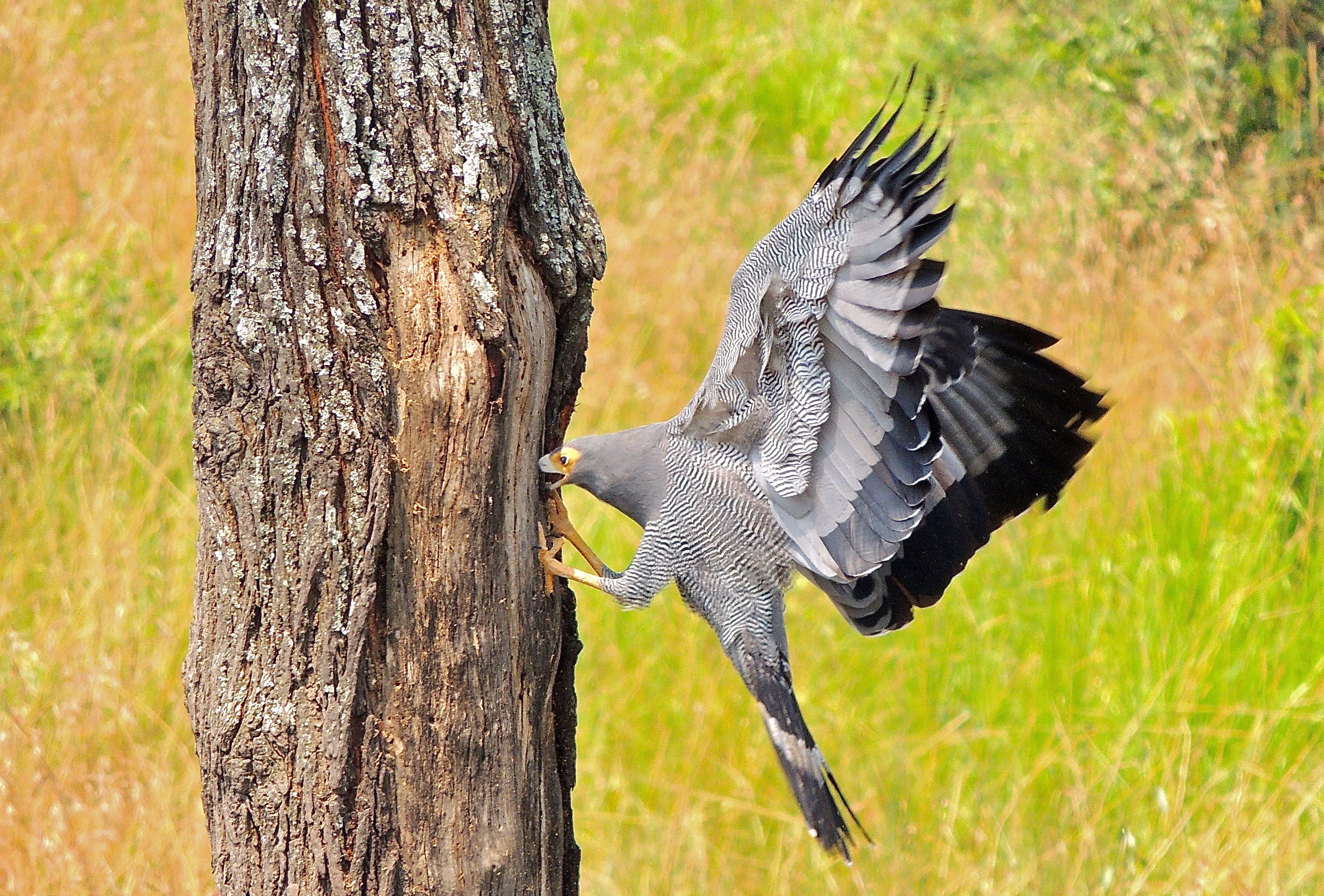 African Harrier-Hawk - Photo by William Young
African Harrier-Hawk - Photo by William Young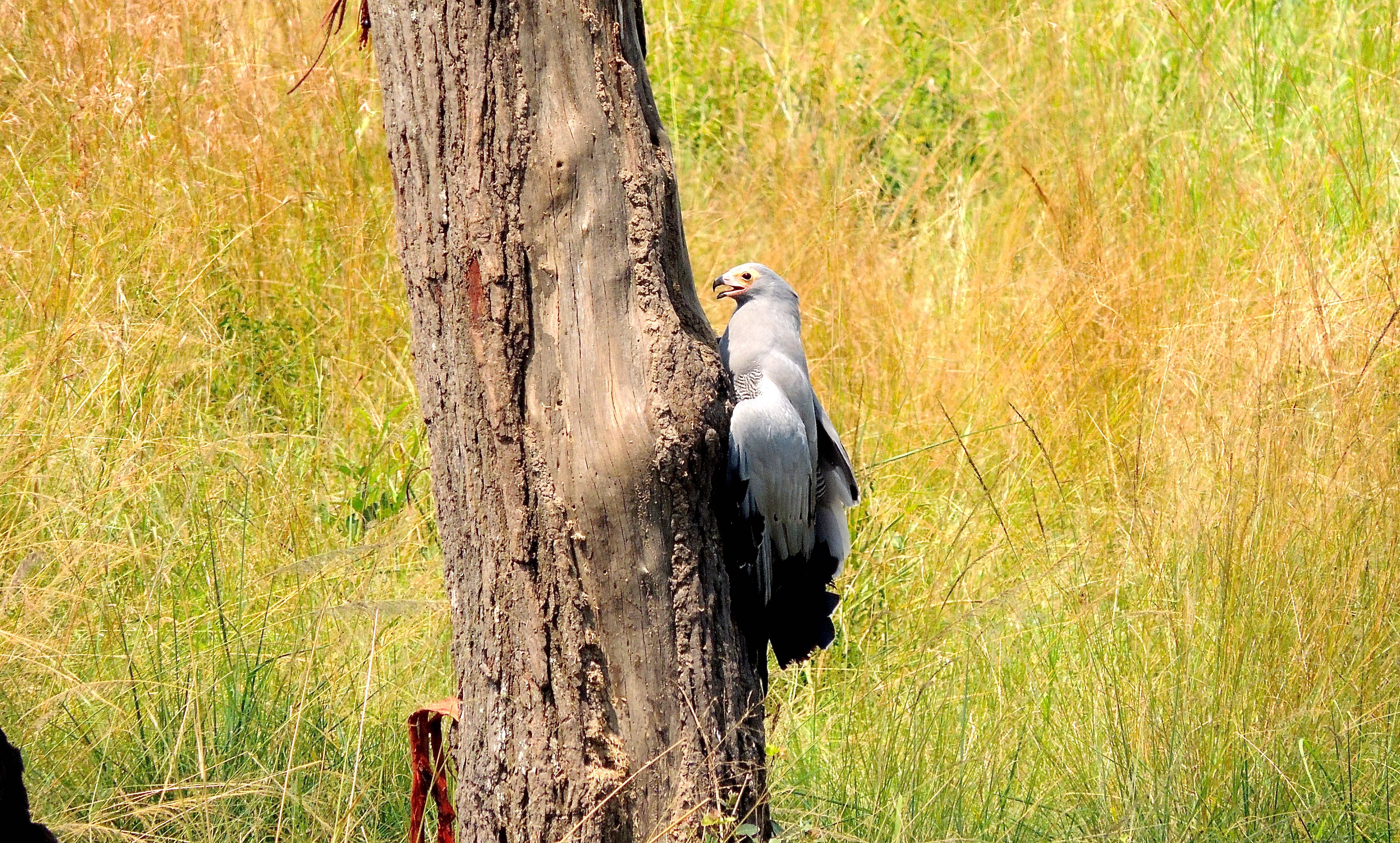 African Harrier-Hawk - Photo by William Young
African Harrier-Hawk - Photo by William YoungWe saw 5 species of vultures. On the first two days of the trip, we saw Hooded Vultures. On the second day, we saw two perched on a tower, along with a Gray Kestrel. They look like Turkey Vultures and are critically endangered. Many vulture species have suffered significant population declines because of poisoning. If a predator kills a farm animal, farmers will retaliate by putting poison in the carcass when the predator comes back to the kill. Vultures often eat from the kills and ingest the poison. We saw White-backed Vultures on four days, and they also are critically endangered. At Queen Elizabeth NP, we saw about a hundred, and they had probably gathered because of a dead animal. The same day, we saw Ruppell's Griffon Vultures, who are endangered. I studied some at close range at Murchison Falls NP. They have a small pink area at the base of the throat. They seem to have more white on their back than the White-backed. The adults have yellow on their bill, while the White-backed has a solid black bill. We saw two Lappet-faced Vultures, who are very large. We saw quite a few Palm Nut Vultures, who have a distinctive black-and-white wing pattern. A lot of them were flying around Semliki.
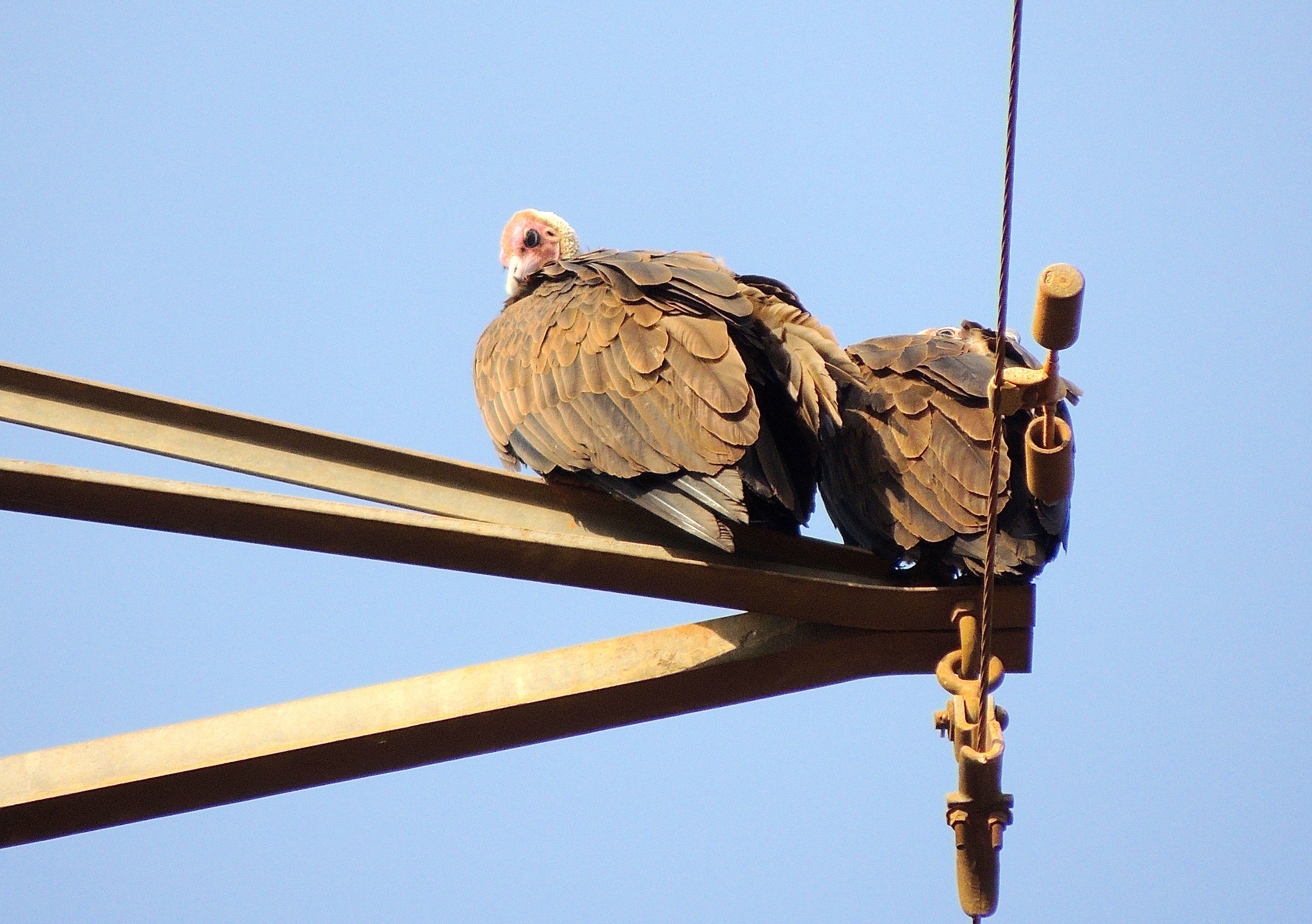 Hooded Vultures - Photo by William Young
Hooded Vultures - Photo by William Young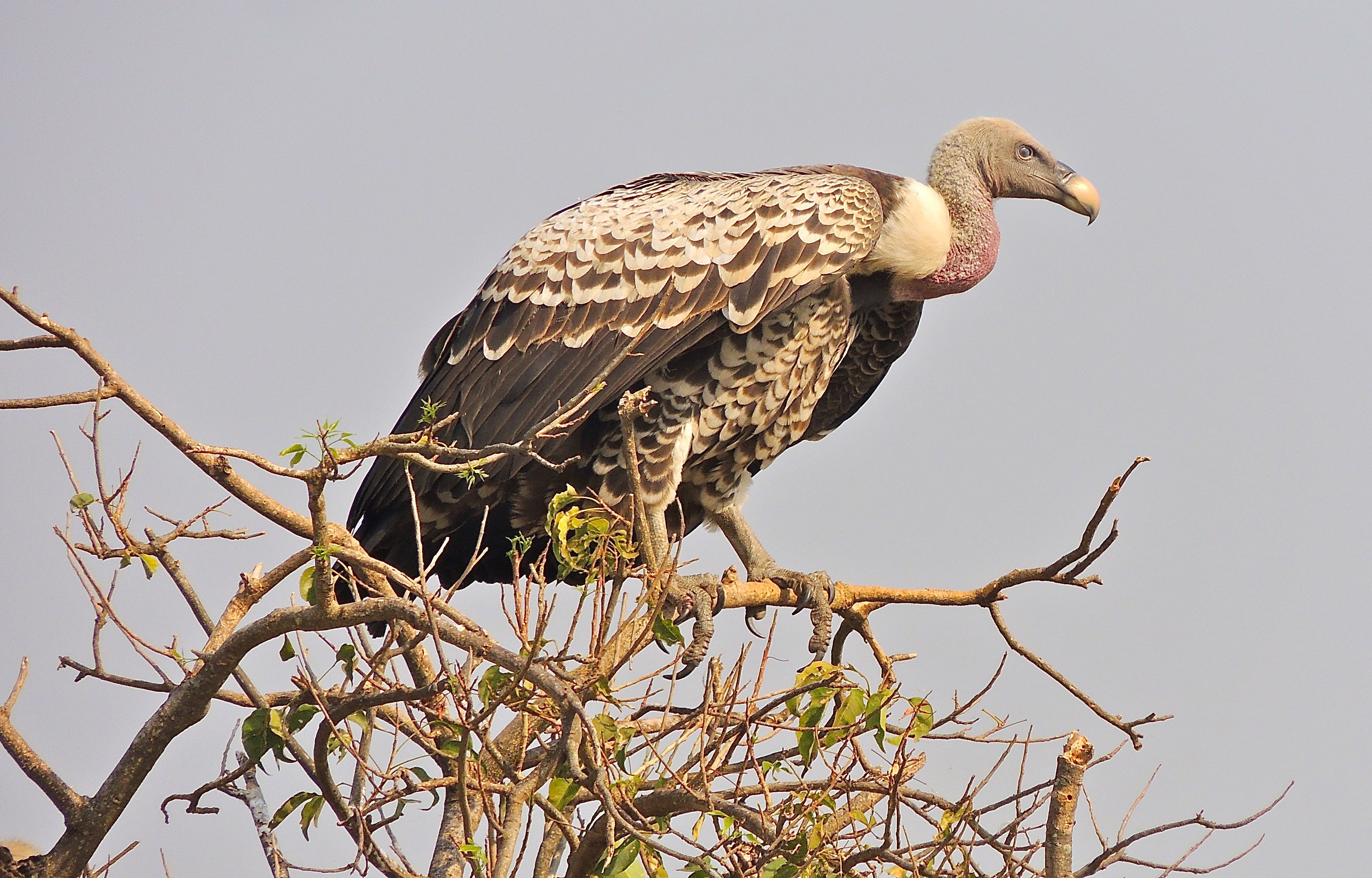 Ruppell's Griffon Vultures - Photo by William Young
Ruppell's Griffon Vultures - Photo by William Young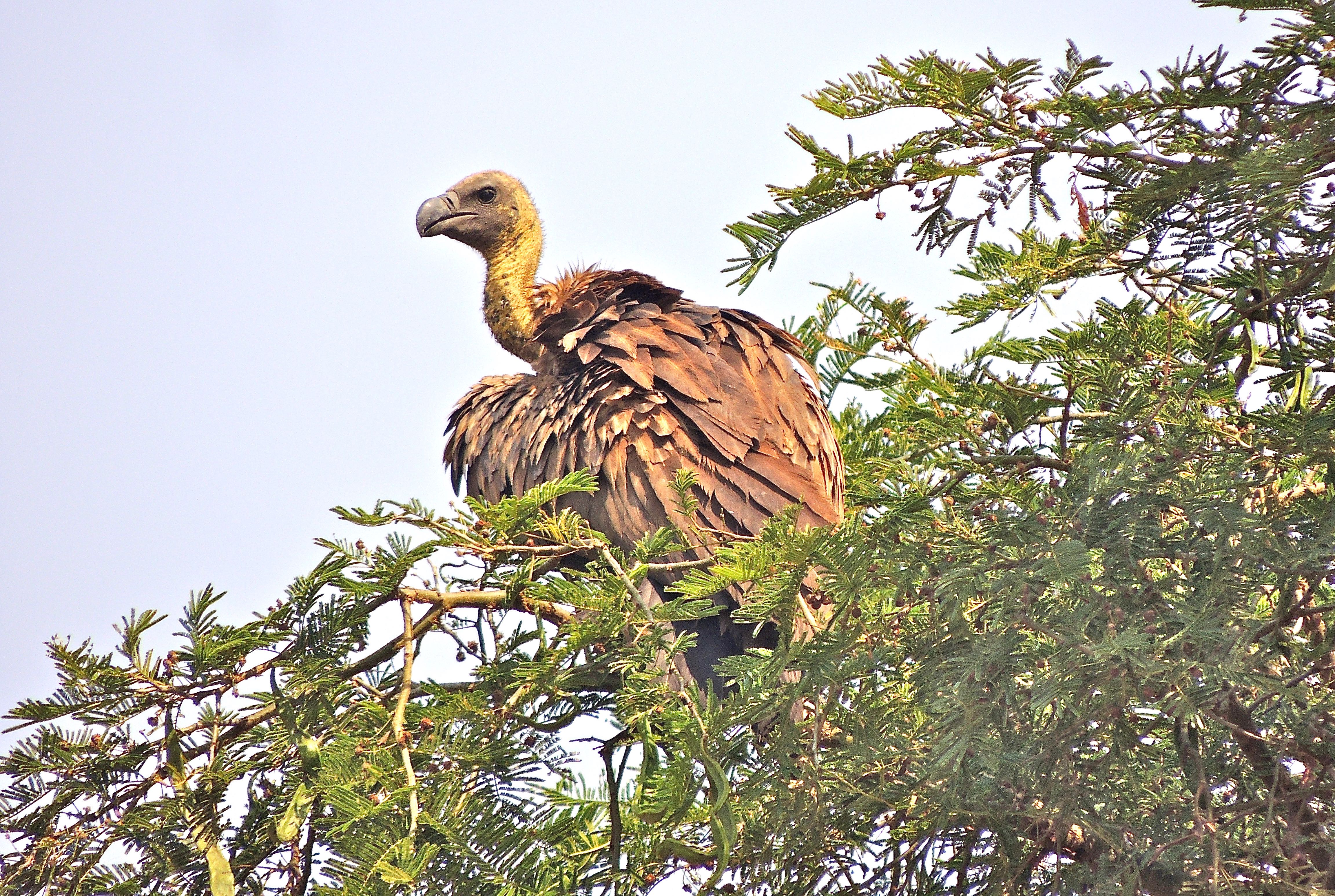 African White-backed Vulture - Photo by William Young
African White-backed Vulture - Photo by William YoungWe saw 4 species of Snake-Eagles. They have rounded heads and intense eyes, making them appear angry. The Brown Snake-Eagle is all brown, with a round head and yellow eyes. The Black-breasted has a plain white belly. The Western Banded Snake-Eagle has bands on its belly. And we saw a Short-toed Snake-Eagle, who is considered rare or accidental. It was perched on a power line. We saw Bateleurs on a few days, including at the Ziwa Rhino Sanctuary. They have black bodies and white underwings.
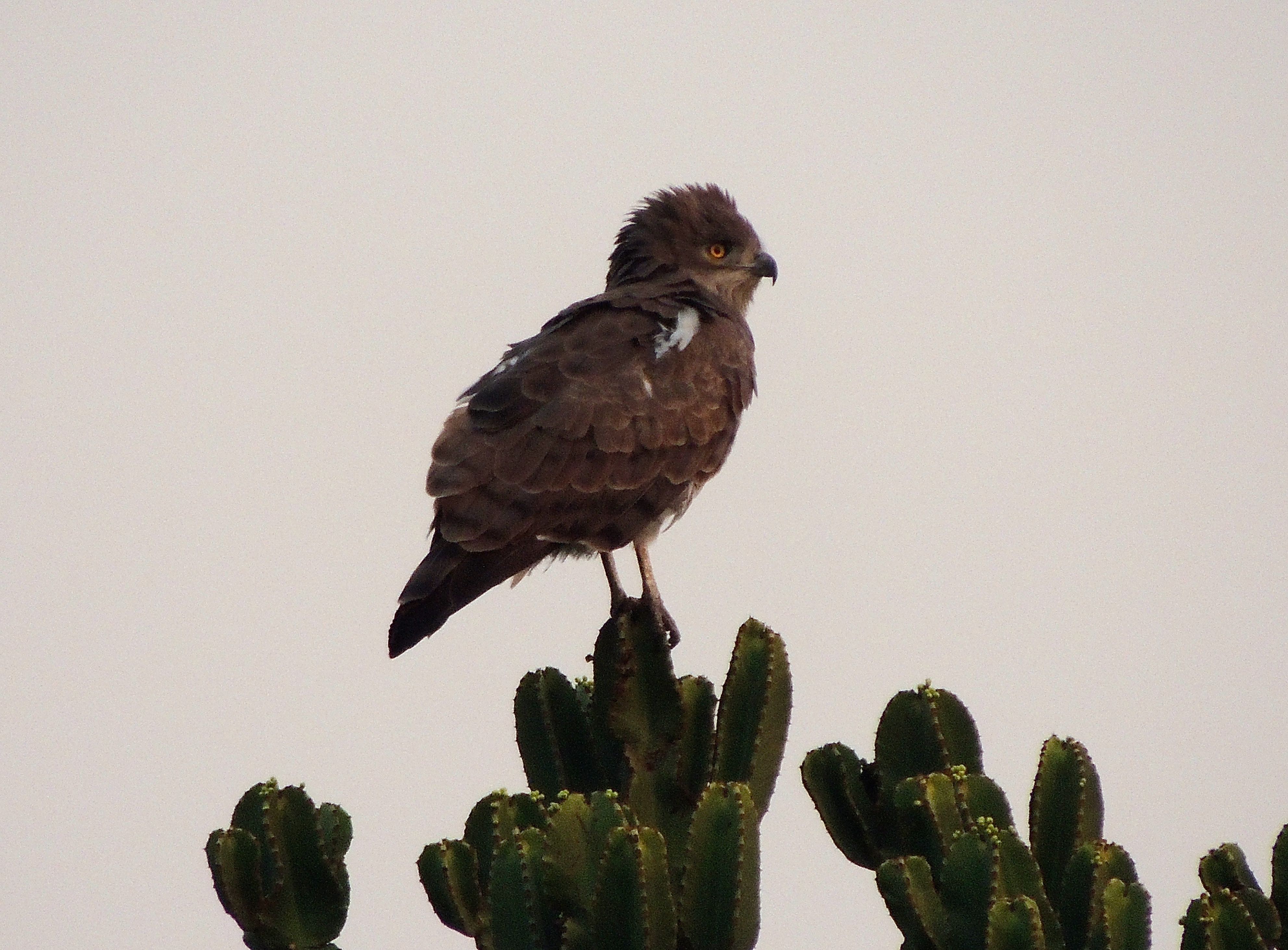 Brown Snake-Eagle - Photo by William Young
Brown Snake-Eagle - Photo by William Young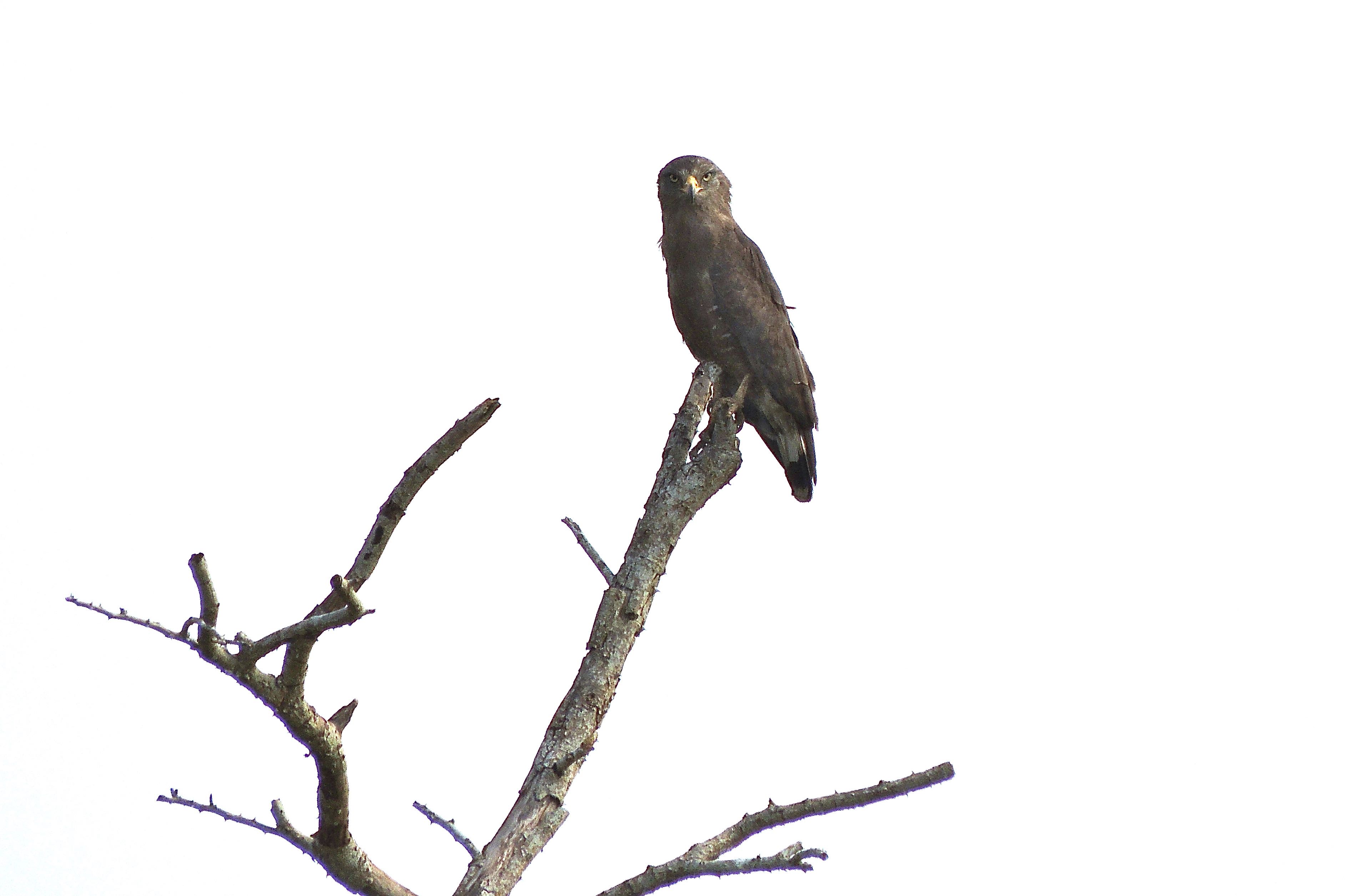 Western Banded Snake-Eagle - Photo by William Young
Western Banded Snake-Eagle - Photo by William YoungLong-crested Eagles were fairly common. On the road to Masindi, A pair was flying and vocalizing. They are handsome black birds with white wing patches. Crammy saw the pair go talon-to-talon. We saw a lot of them perched in trees near the road, with their crest sometimes blowing in the wind. I had fleeting looks at Crowned Eagles, who are huge and resemble Harpy Eagles. We heard them in Semliki. Of the brown eagles, the Wahlberg's was the most common. It is smaller than the Tawny. We saw a Tawny perched in a tree at Murchison Falls NP. Another flew over Mweya Lodge. It is an Aquila eagle and looks a lot like a Golden Eagle. On the road to Masindi, we saw a couple of flying Booted Eagles. They have a white line on their upper wings. A young Steppe Eagle was perched in a tree on our first game drive in Murchison Falls NP, and it was still there when we retraced our steps after sunset. We had nice looks at a couple of flying Cassin's Hawk-Eagles, who are light and look more like hawks than eagles.
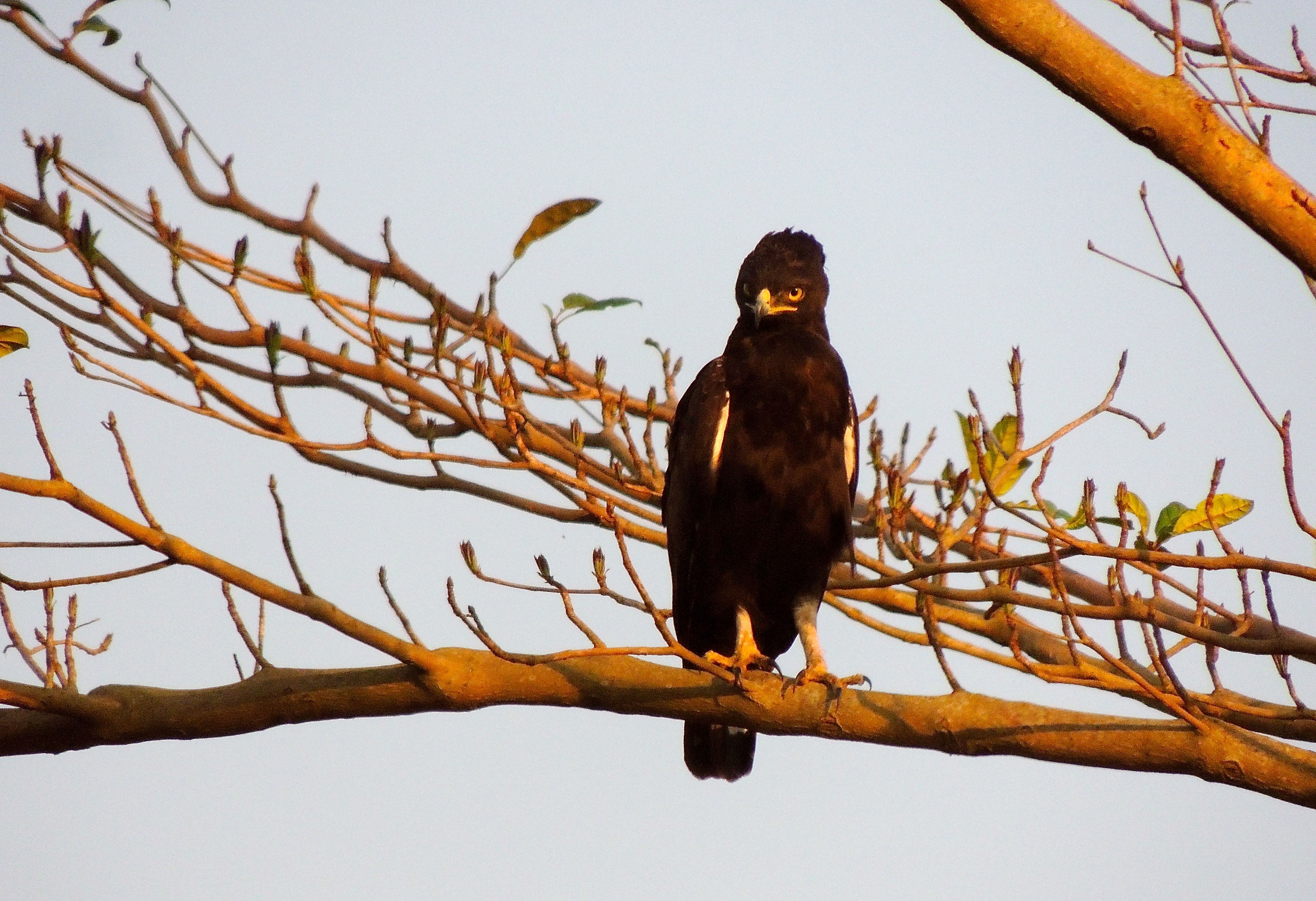 Long-crested Eagle - Photo by William Young
Long-crested Eagle - Photo by William Young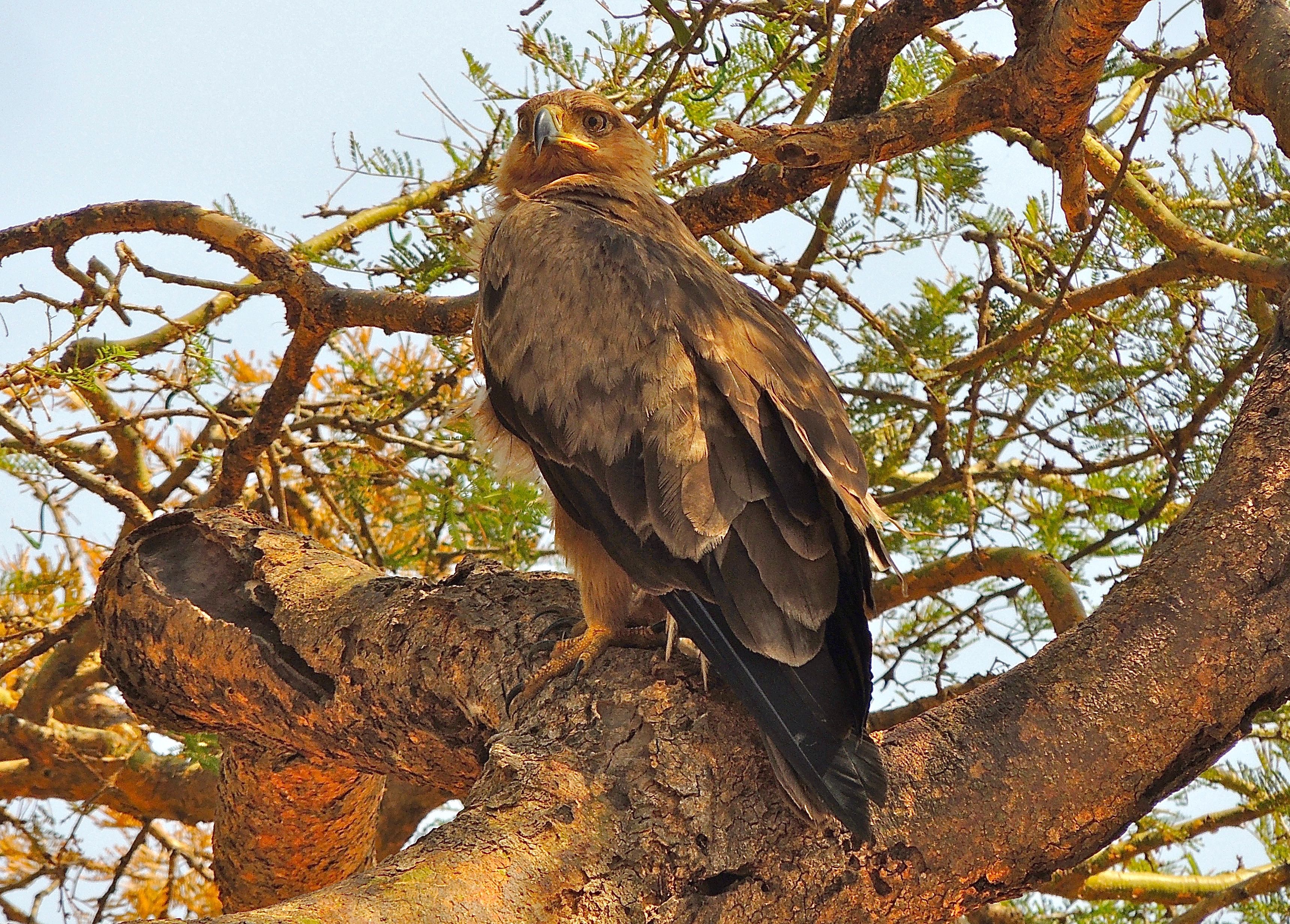 Tawny Eagle - Photo by William Young
Tawny Eagle - Photo by William YoungLizard Buzzards seemed fairly common. We saw a perched one at the Entebbe Botanical Gardens on the first day, and we could see the line on its throat. They have dark eyes and look like small chanting-goshawks. They have a red cere and red legs. I had an even closer look at one on the wires outside the Victoria View Guest House the morning I left. We saw Dark Chanting Goshawks on three of the first six days. They have a reddish cere rather than the yellow cere of the Eastern Chanting Goshawk. As we neared Murchison Falls, we drove through areas where there were a lot of controlled burns so that grass will grow next year for cattle. Many birds hang around the areas where there is burning, picking off insects and other creatures fleeing the fire in a manner similar to the way some birds in the New World tropics follow swarms of army ants. One of the fire-following species was a lovely hawk called the Grasshopper Buzzard, who flashes russet wing patches when it flies. It has a vertical line on its throat like the Lizard Buzzard. It is an African migrant from the Sahel region to the north, and it prefers dry habitat. Yellow-billed Kites were also hanging around the flames.
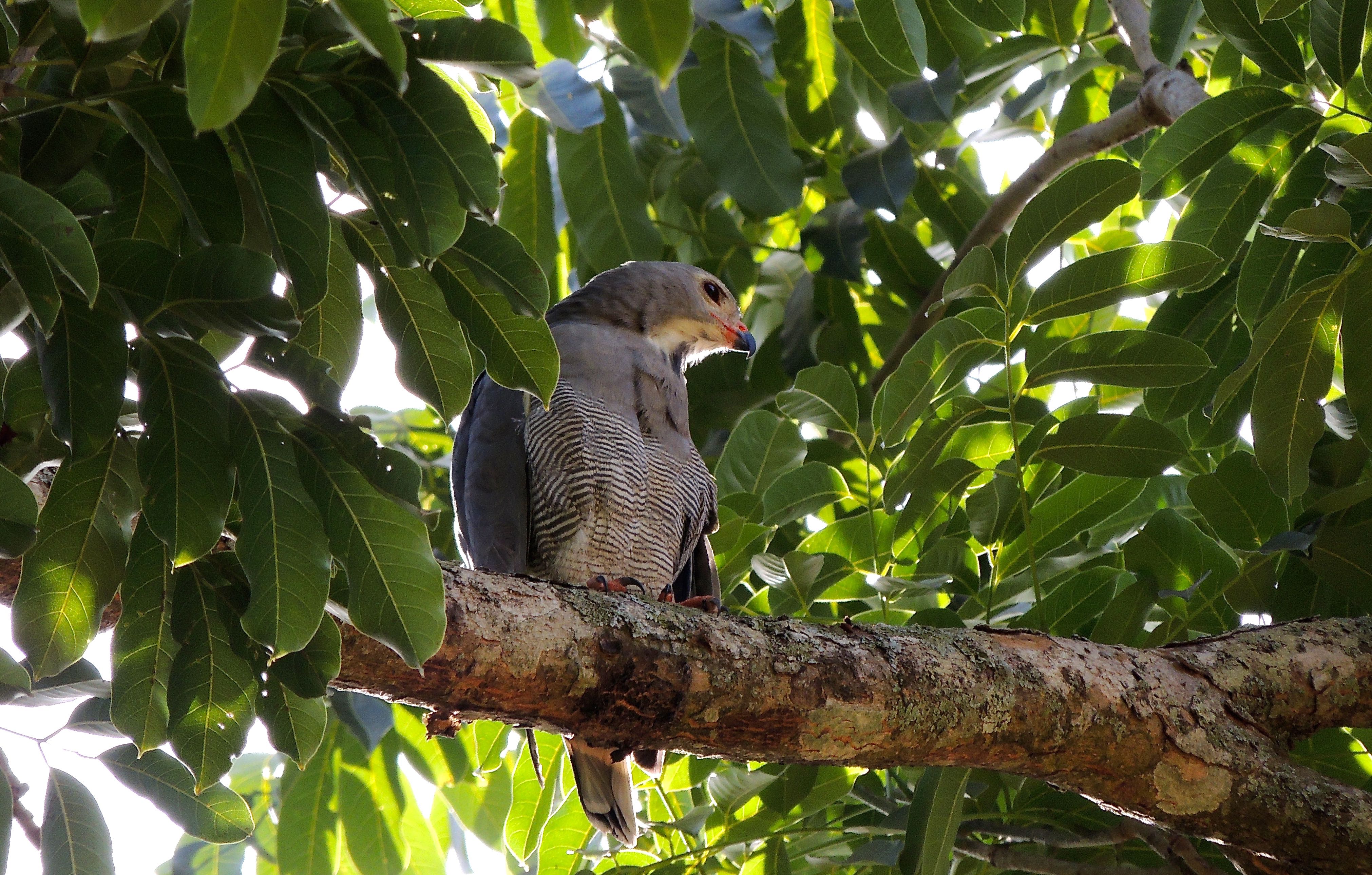 Lizard Buzzard - Photo by William Young
Lizard Buzzard - Photo by William Young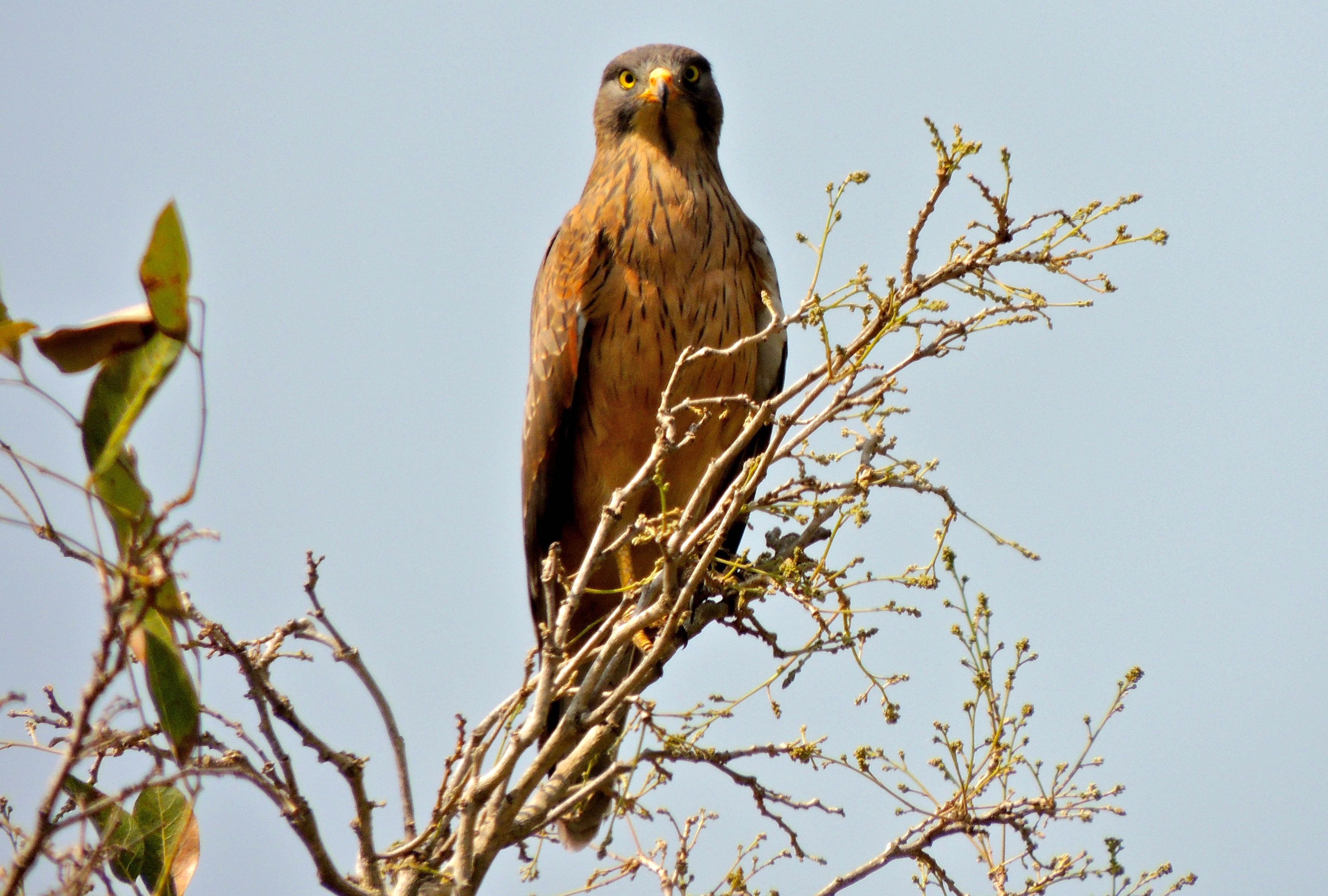 Grasshopper Buzzard - Photo by William Young
Grasshopper Buzzard - Photo by William YoungWe saw Shikras on six days, including my next to last day of the trip at the Victoria View Guest House. On the road to Masindi, we saw one perched on one leg, with the other leg sticking out of its belly. It is a small Accipiter, a bit like a Sharp-shinned Hawk. We saw a couple Great Sparrowhawks, who have dark flanks and present a dark appearance. They sometimes are called Black Sparrowhawks. Murchison Falls NP has a lot of Montagu's Harriers, who were flying around near sunset. A few Pallid Harriers were mixed in. At Mabamba Swamp, I saw both African and Western Marsh Harriers, patrolling the area near where the Shoebill was. I saw a couple of Common Buzzards around Murchison Falls NP, and there was a soaring Mountain Buzzard who gave us nice looks as it was soaring in the mountains not long after we had left Kisoro. Augur Buzzards were common around Kisoro, and we saw both the light and dark morphs. Some flew around the town. We saw African Fish Eagles on five days, with the greatest number around Lake Mburo. Their were adult pairs perched in trees, vocalizing loudly. They look like a cross between a Bald Eagle and a Brahminy Kite. There also were some young birds. They take four years to reach adult plumage.
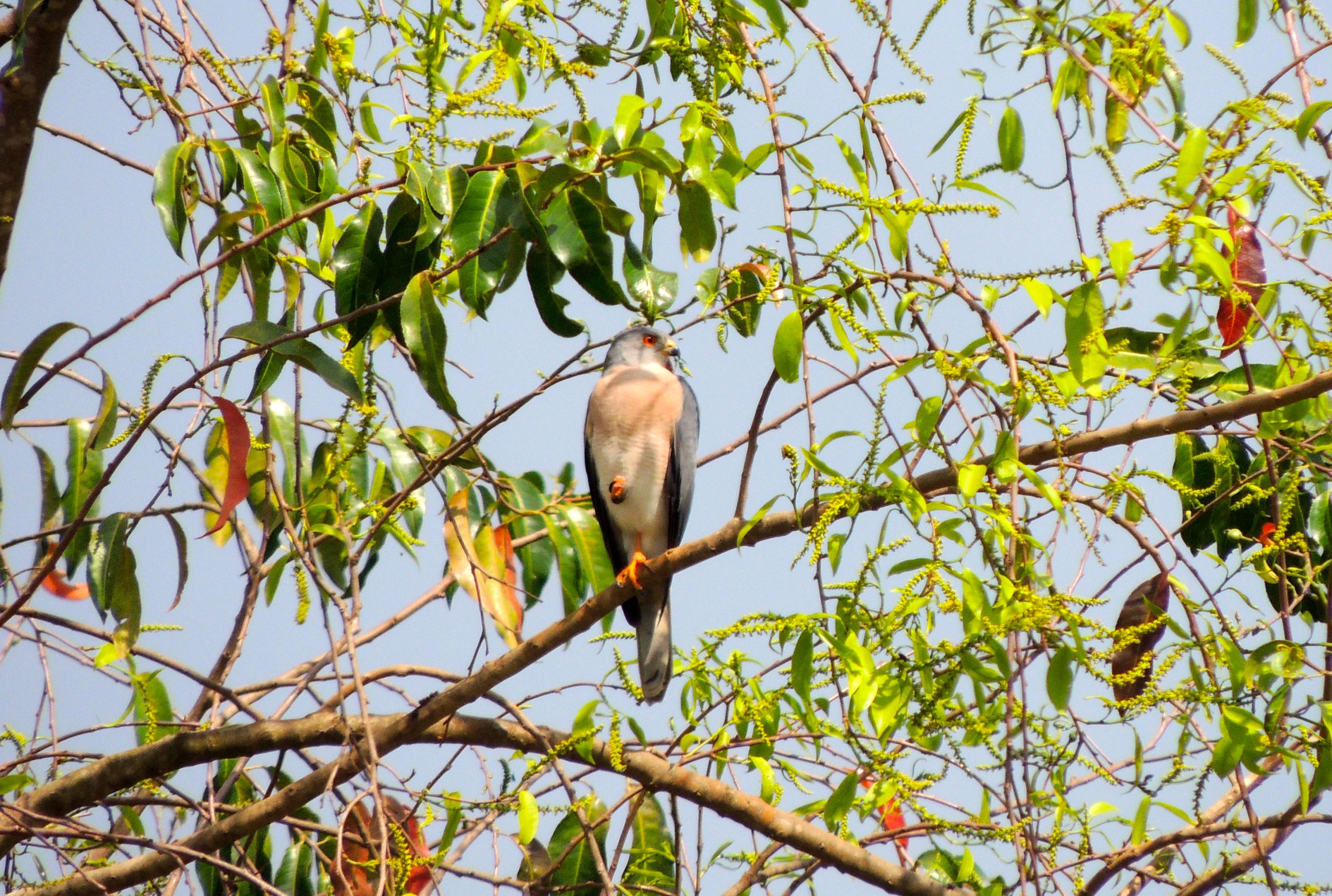 Shikra - Photo by William Young
Shikra - Photo by William Young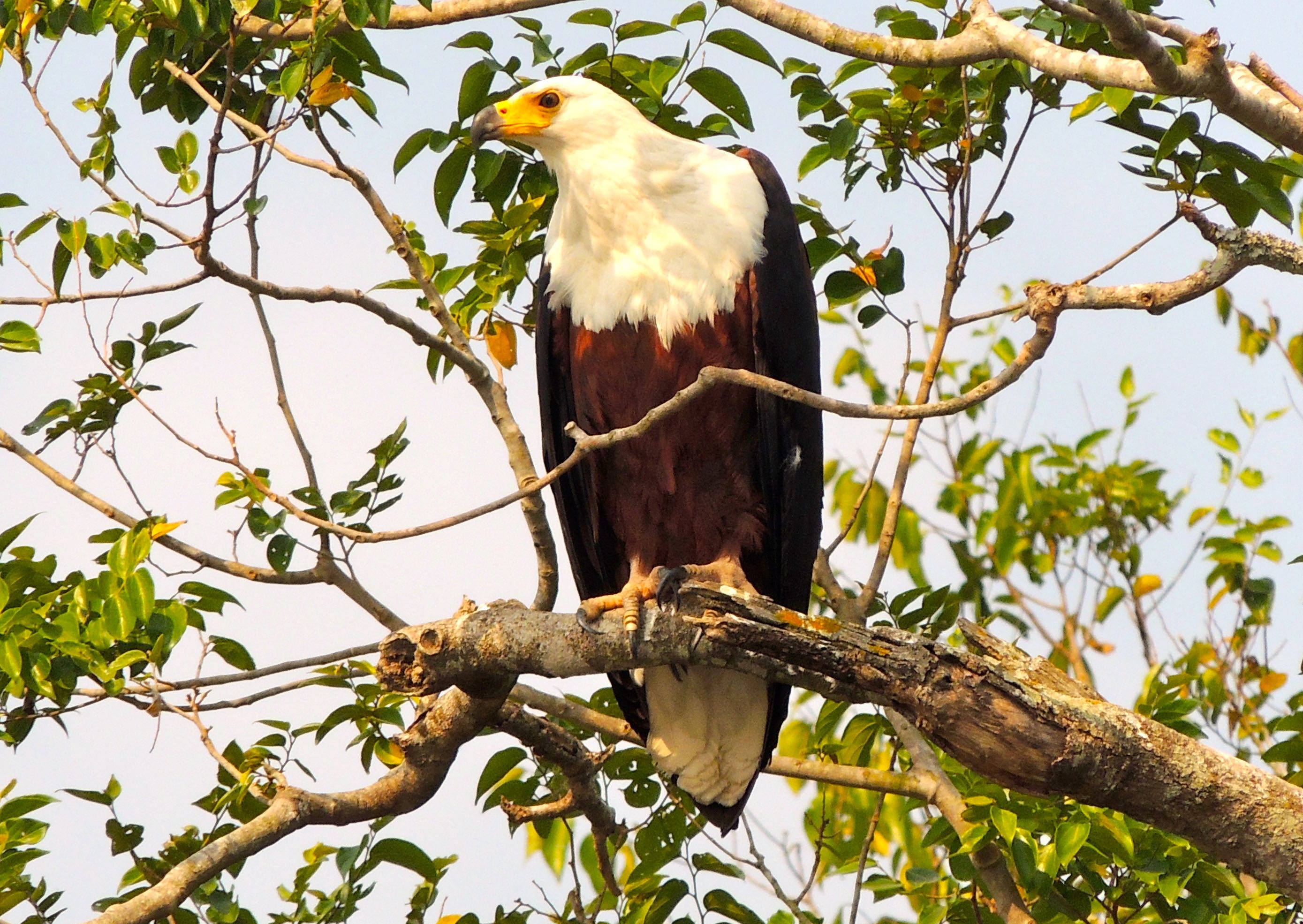 African Fish Eagle - Photo by William Young
African Fish Eagle - Photo by William YoungWe saw three falcon species. The most common was the Grey. We saw them perched in a number of places, including one who hung around the entrance to the Paraa Lodge. They have a prominent yellow cere. Common Kestrels were seen on four of the first five days, and then only once after that. We saw Red-necked Falcons at Murchison Falls NP. They are relatively small and have a reddish hood.
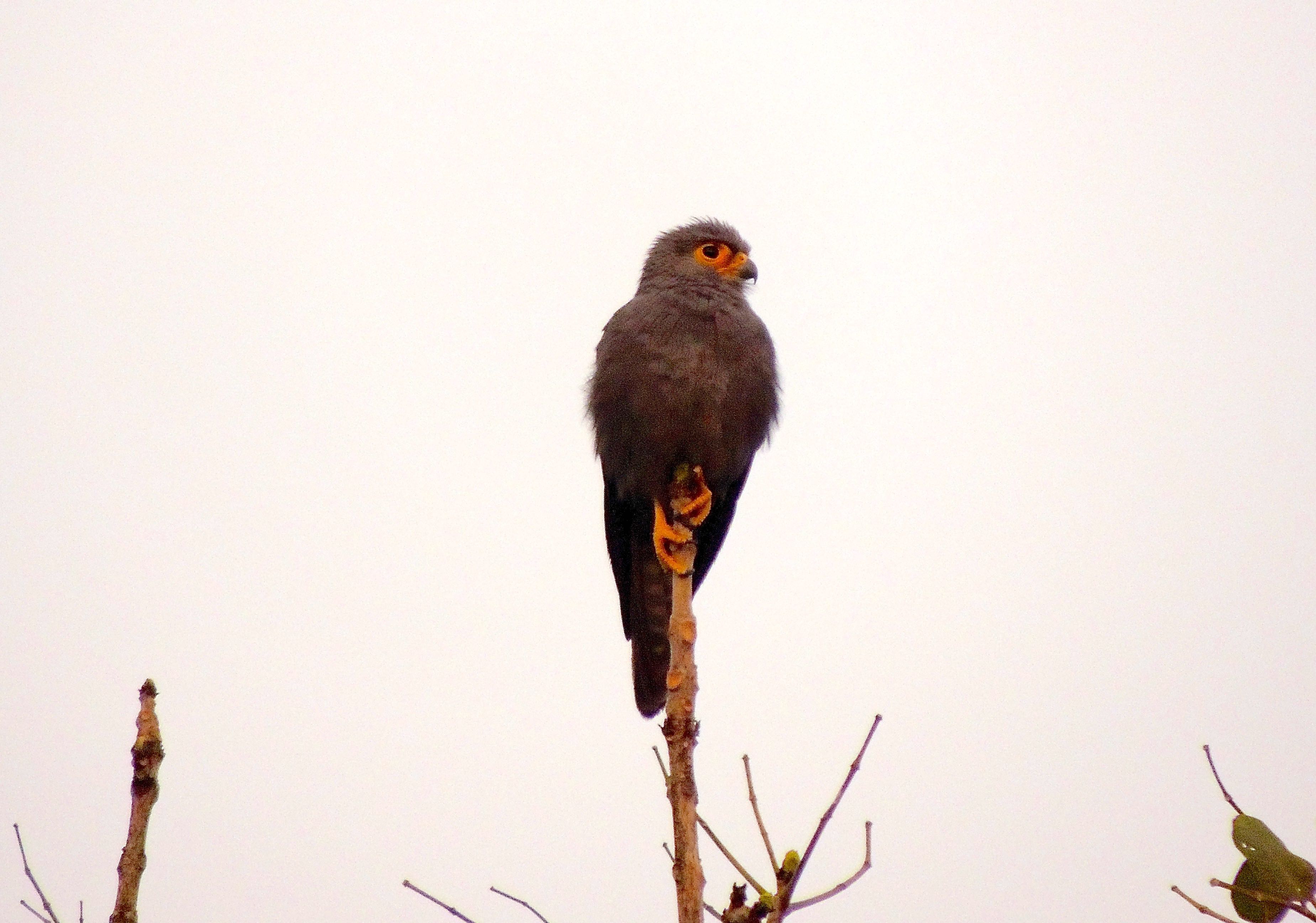 Grey Falcon - Photo by William Young
Grey Falcon - Photo by William Young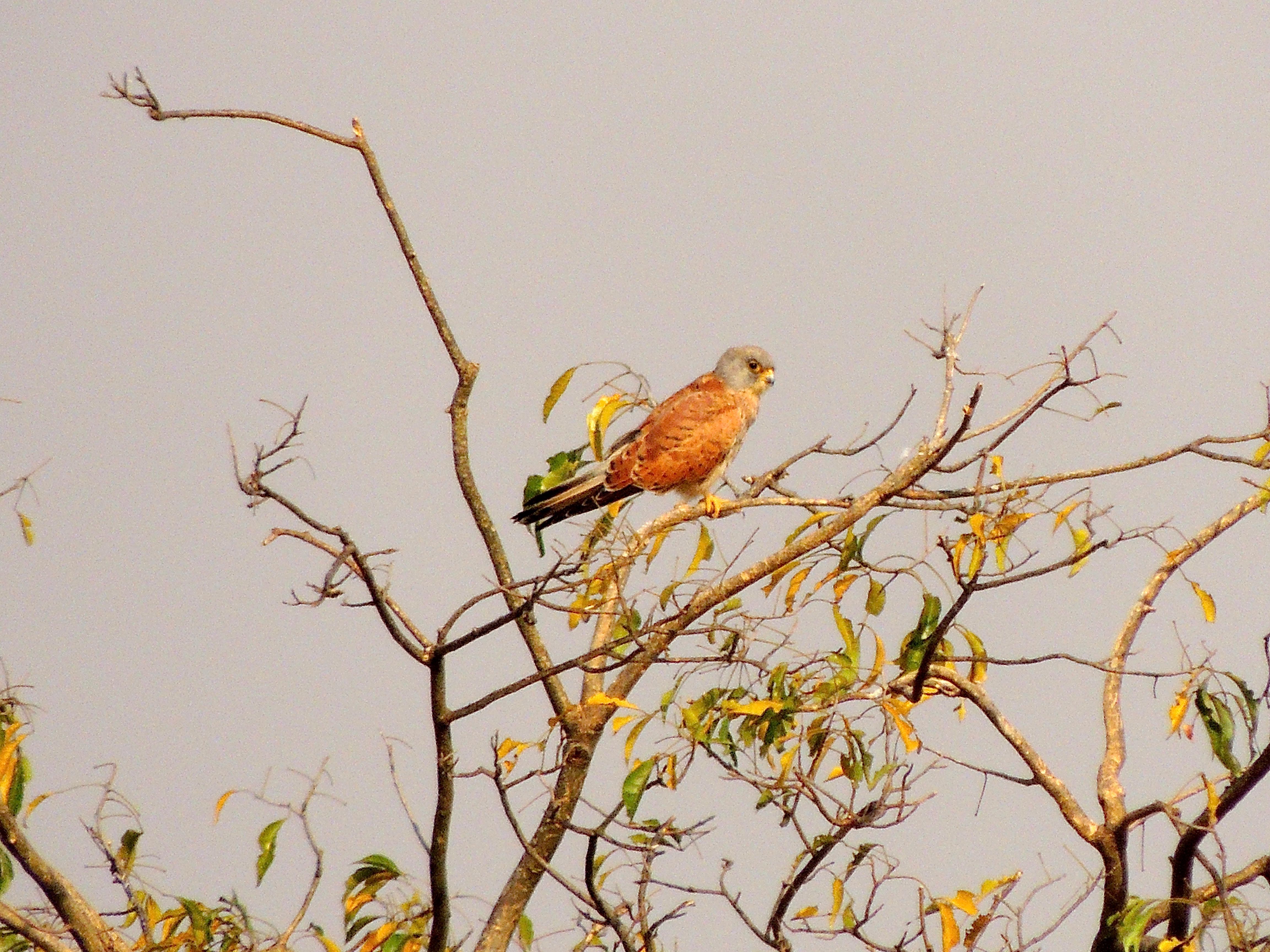 Common Kestrel - Photo by William Young
Common Kestrel - Photo by William YoungBustards
We saw two Black-bellied Bustards around Murchison Falls NP. One was fairly close to our vehicle before it walked back into the grass.
Rails, Flufftails
In wetland areas, we saw a lot of Black Crakes, with their yellow bill and bright red legs. I saw them on seven different days. We saw one African (Purple) Swamphen as we were riding back to Entebbe. As we were nearing Kisoro, we found a group of Common Moorhens with some Red-knobbed Coots mixed in. In a couple of places, we tried to find flufftails, but never saw any.
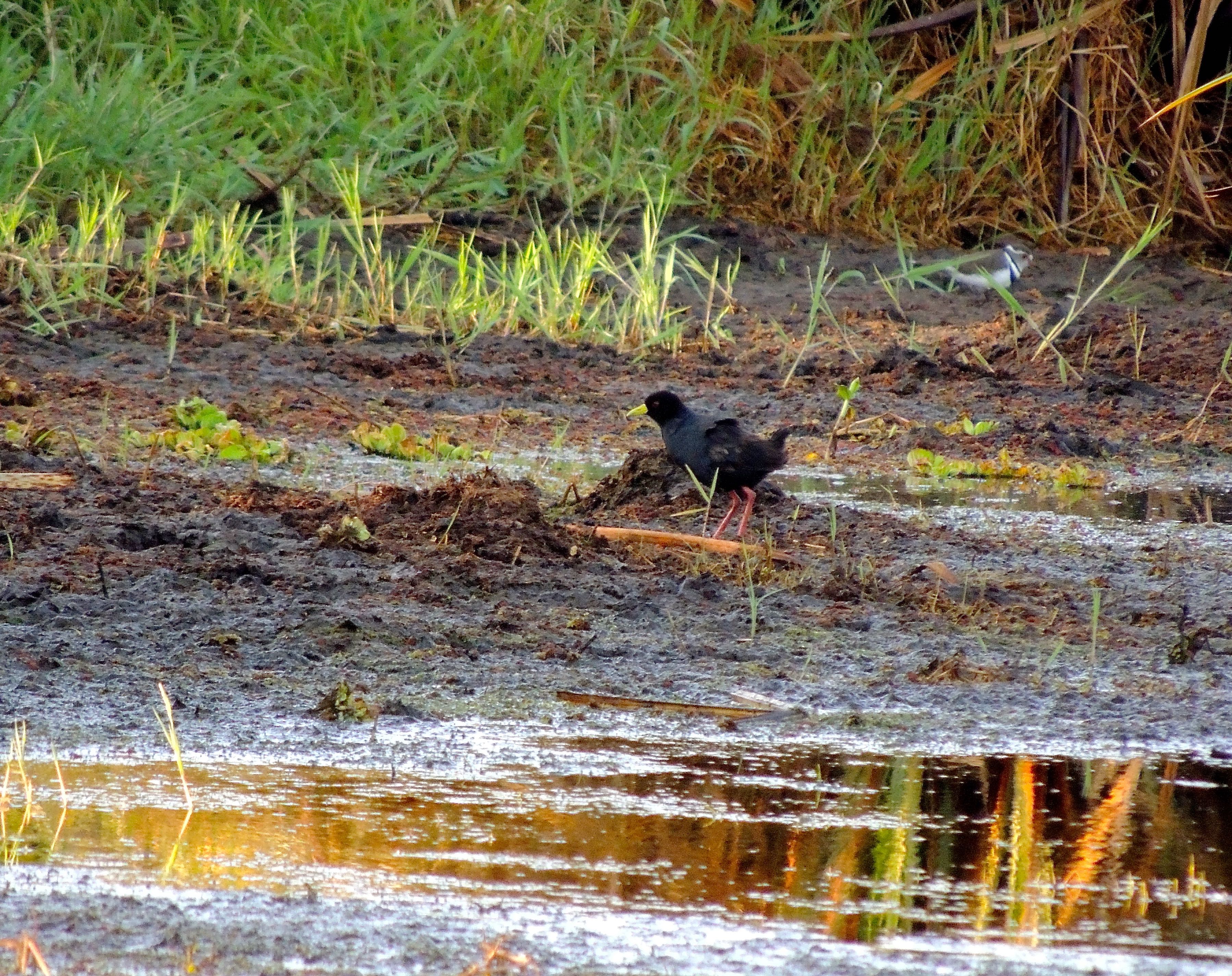 Black Crake and Three-banded Plover - Photo by William Young
Black Crake and Three-banded Plover - Photo by William YoungFinfoot
At Mabamba, we saw an African Finfoot by the edge of the water, under the reeds. It looks like a Sungrebe. It has a red bill. Crammy says its feet are red rather than striped like the Sungrebe's.
Cranes
The Grey Crowned Crane is the national bird of Uganda, and we saw quite a few. On the Nile cruise, we found a group of more than sixty. Some were dancing and displaying. Because of their beautiful attire, their dancing looks more special than the dancing of Sandhill Cranes. They were not vocalizing much. They have big white patches on their wings, which can be seen when they fly. The crown on their head looks like wheat growing, and it stands out when they fly. While driving to Ruhija, we saw one perched on the top of a tree like a Christmas angel. They are a bird that the pictures in field guides do not do justice to.
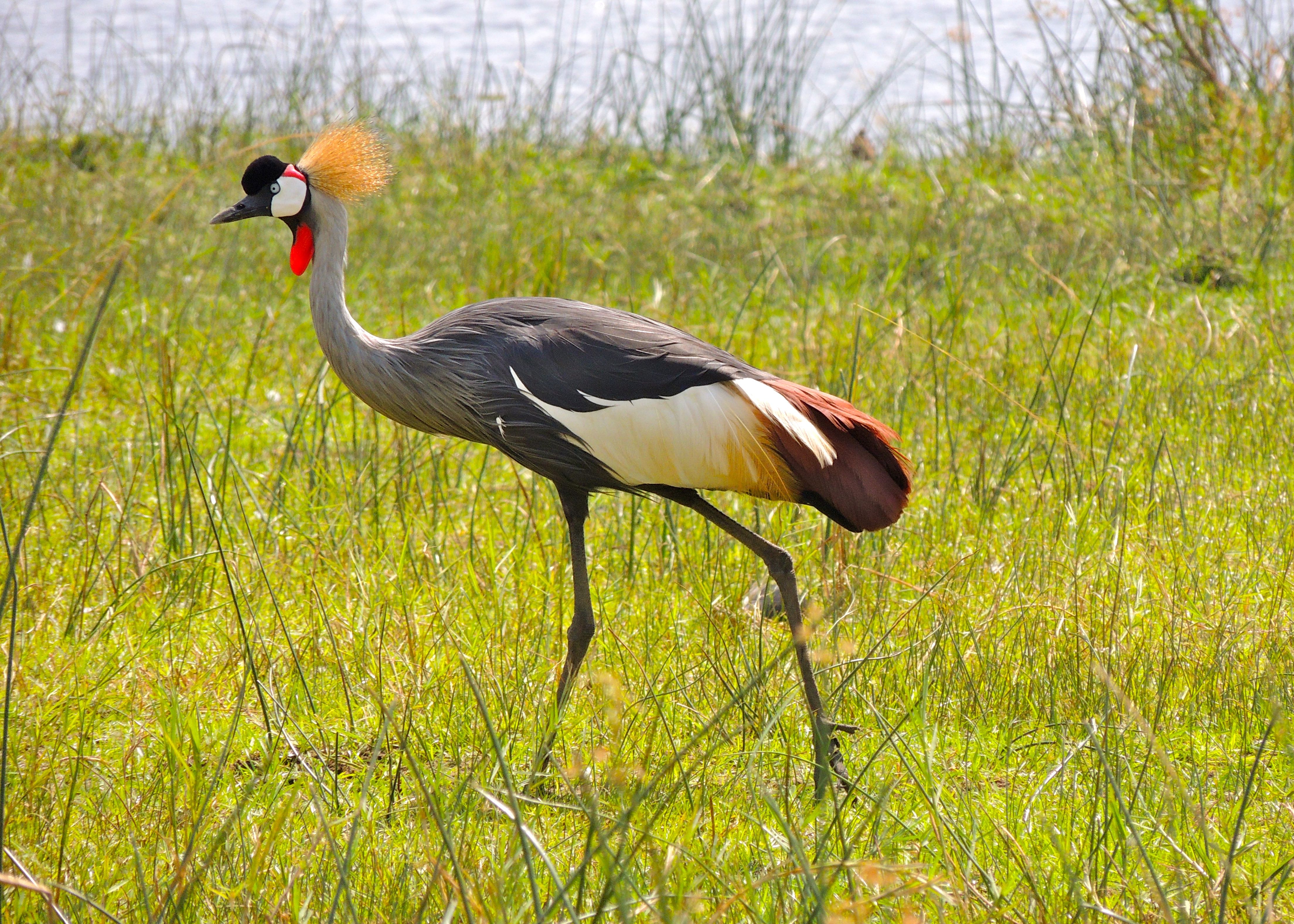 Grey Crowned Crane - Photo by William Young
Grey Crowned Crane - Photo by William Young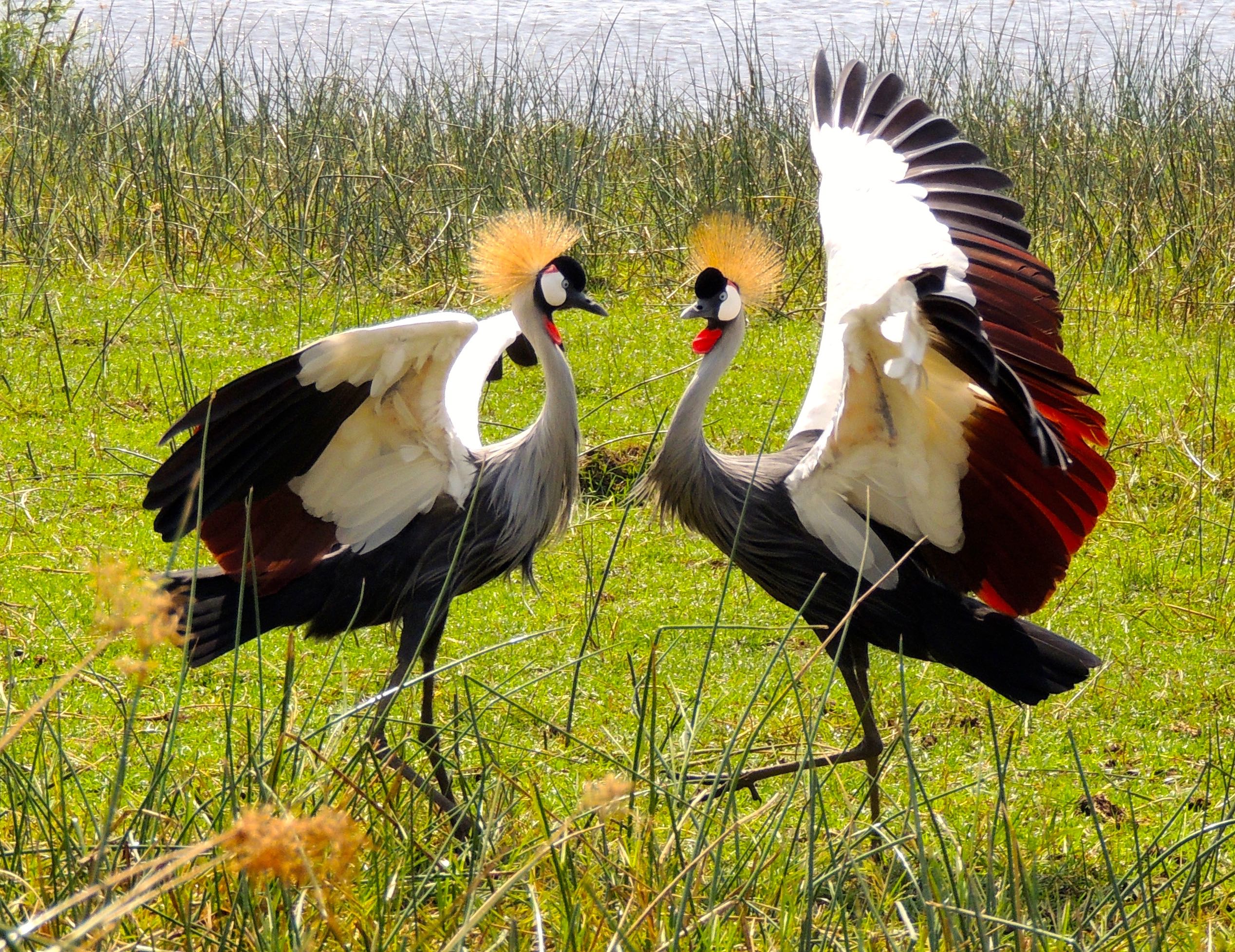 Grey Crowned Cranes - Photo by William Young
Grey Crowned Cranes - Photo by William Young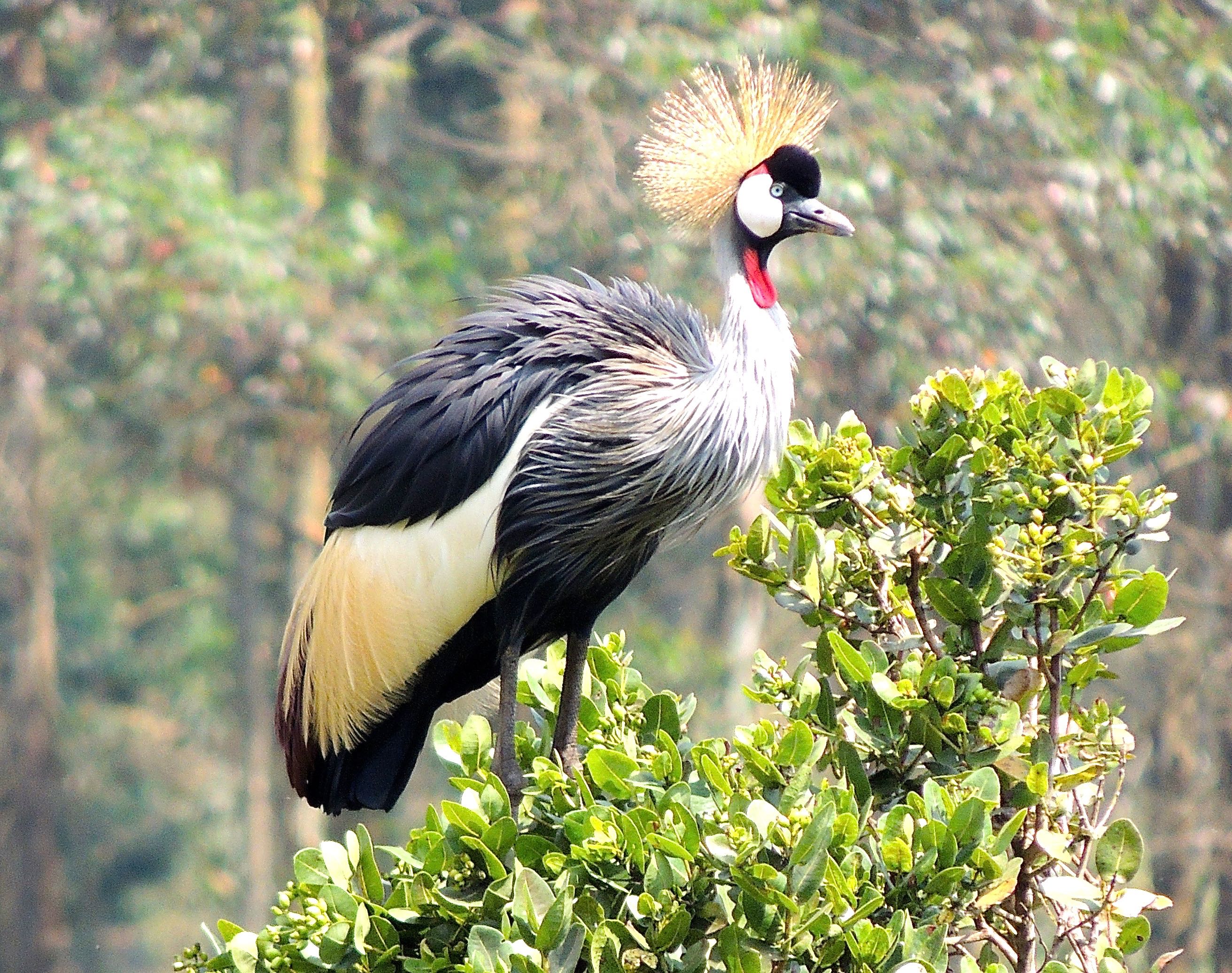 Grey Crowned Cranes - Photo by William Young
Grey Crowned Cranes - Photo by William YoungThick-knees, Stilts, Plovers, and Jacanas
The most common thick-knee was the Senegal. It has more white over the eye than the Water Thick-knee. The difference in the amount of white over the wing can be difficult to see in the field. We saw about 20 along the Nile. I did not see Water Thick-knees until we got to the Kazinga Channel. At Murchison Falls NP, we found two European Thick-knees while we were spotlighting, but I never got a good look at them. We saw Black-winged Stilts at the Entebbe Botanical Gardens, along the Nile, and at Queen Elizabeth NP. African Jacanas were common in wetland areas, and they did not seem shy. The adults have a blue shield over their bill. I saw an immature on the Kazinga Channel who looked duller. Much shyer is the Lesser Jacana. I saw one on the ground and flying at Mabamba. It is considerably smaller than the African, and it looks tannish.
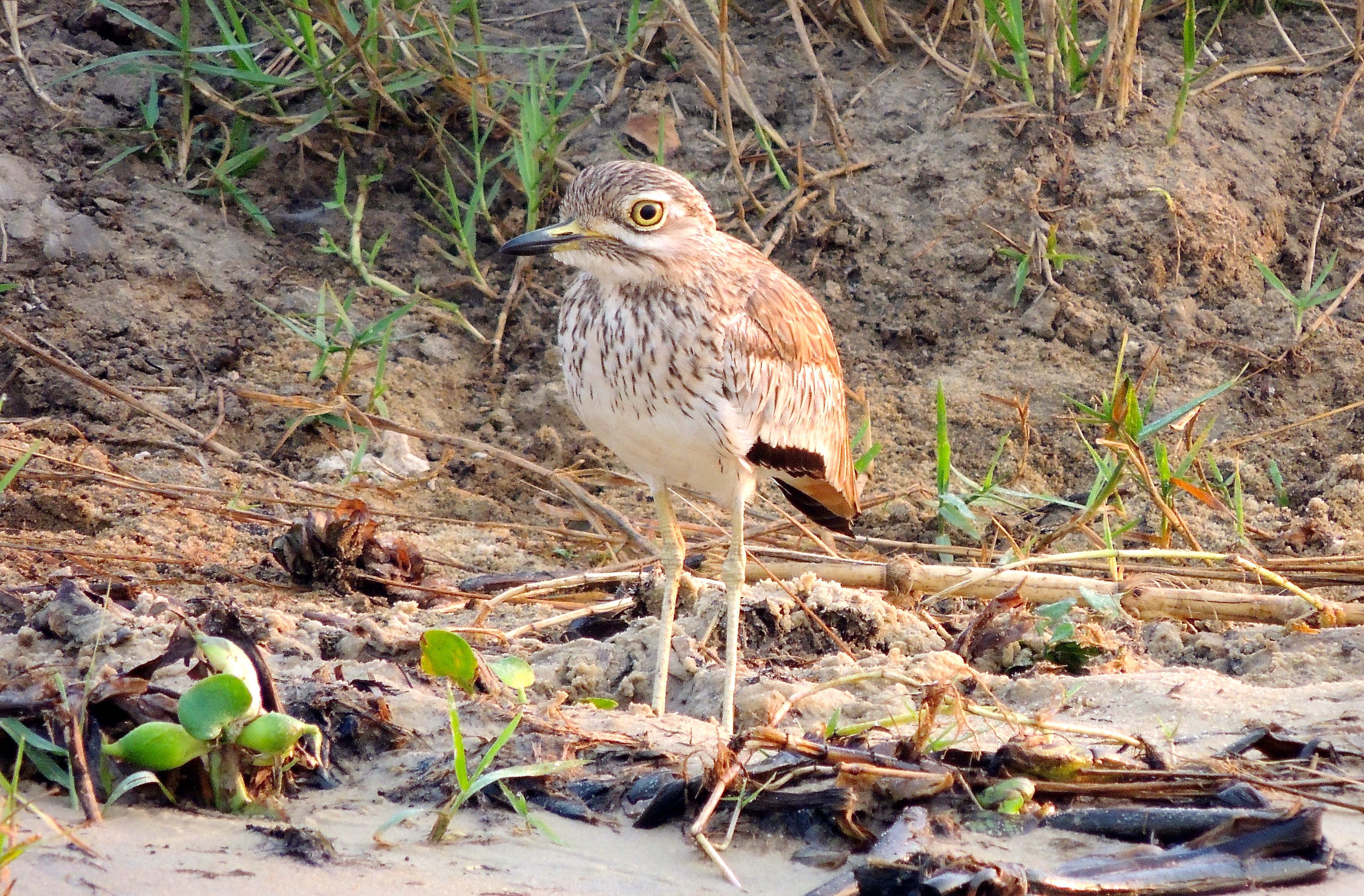 Senegal Thick-knee - Photo by William Young
Senegal Thick-knee - Photo by William Young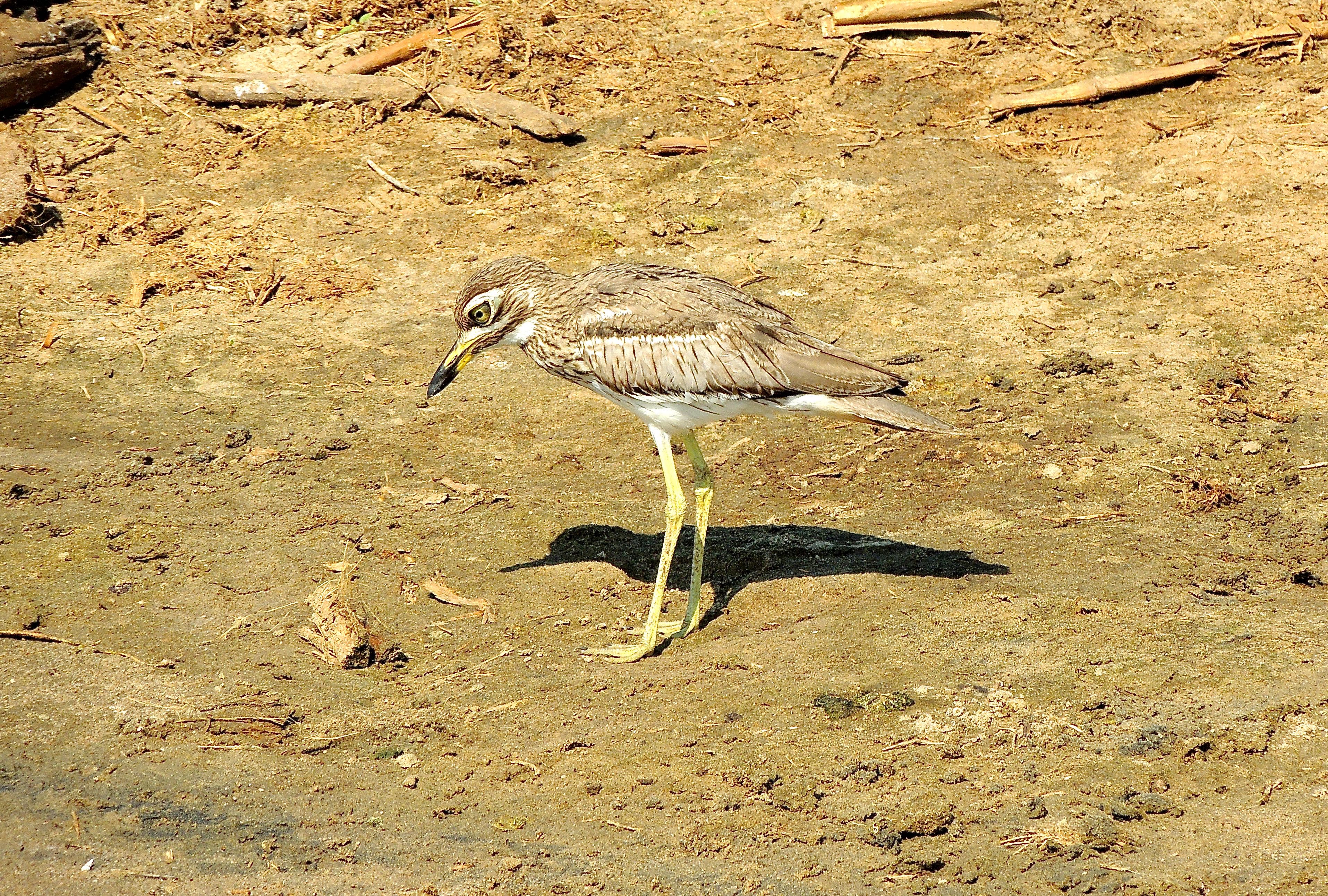 Senegal Thick-knee - Photo by William Young
Senegal Thick-knee - Photo by William Young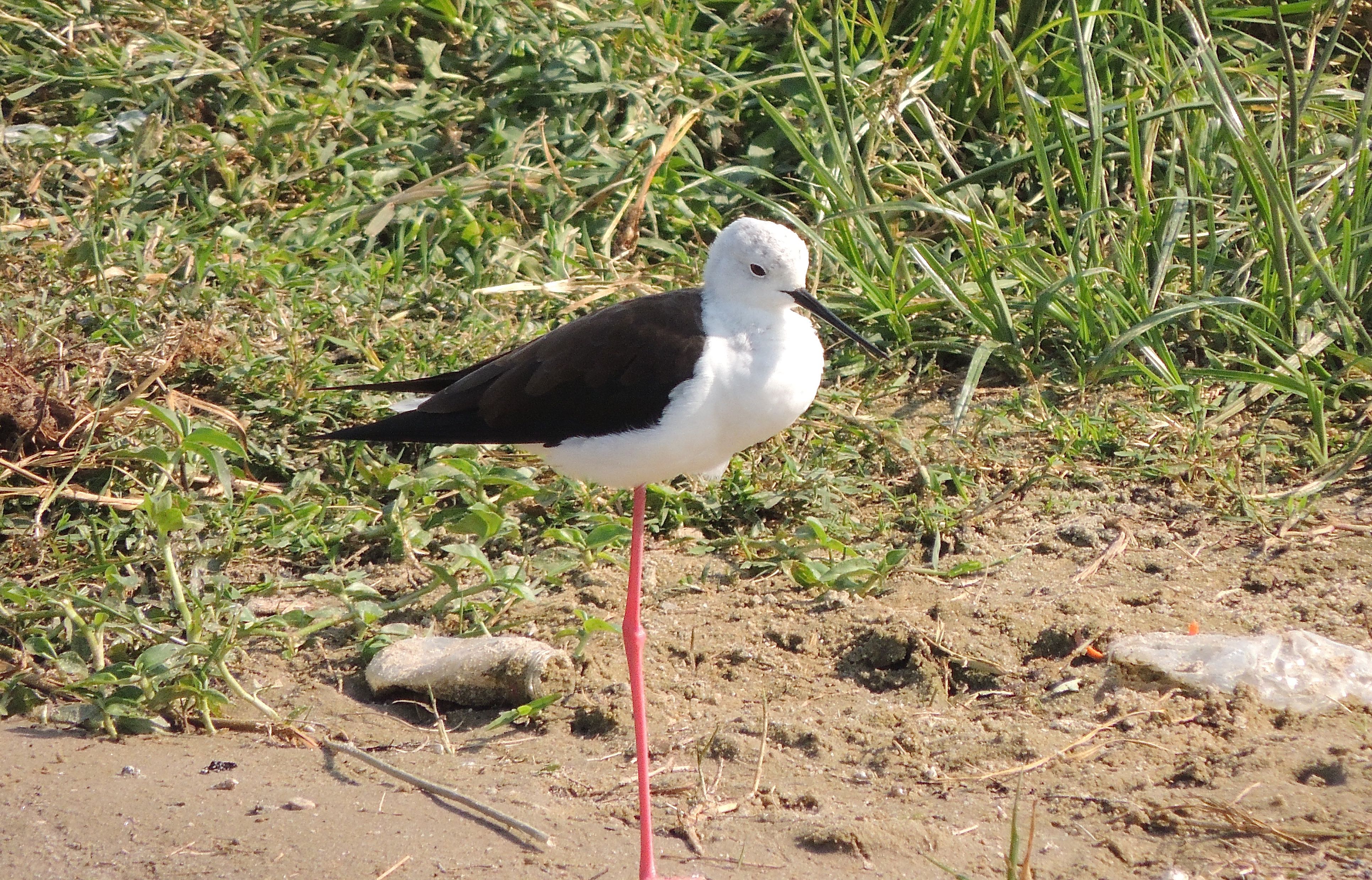 Black-winged Stilt - Photo by William Young
Black-winged Stilt - Photo by William Young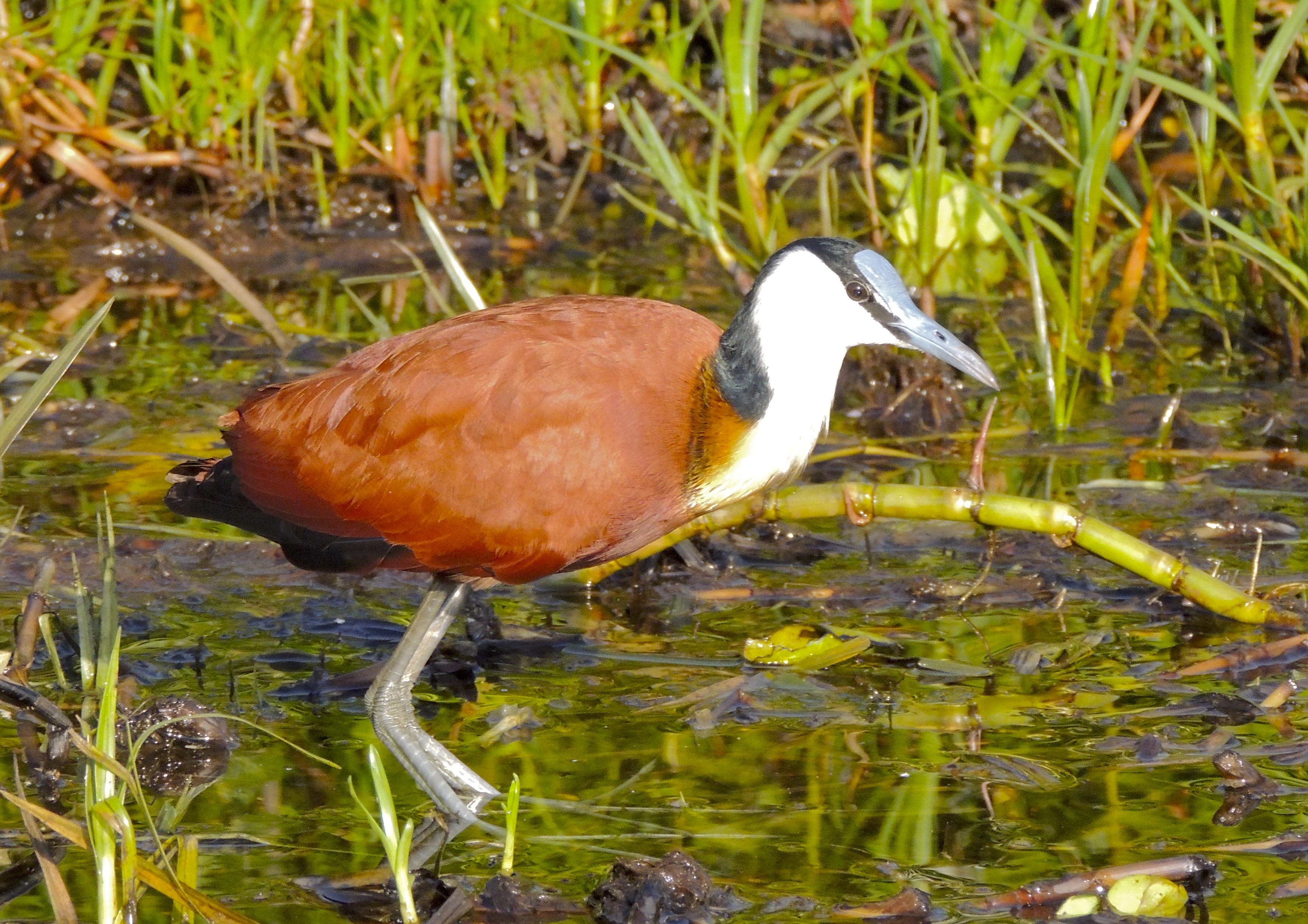 African Jacana - Photo by William Young
African Jacana - Photo by William YoungPlovers and Lapwings were common. On my ride through Mabamba, there were about 70 Long-toed Lapwings. We saw one harassing a harrier. We saw a lot of them along the Nile. Spur-winged Plovers were also common in wetland areas. They have a distinctive black front and cap, with a white patch on the cheek and shoulder. Crammy spotted a couple of Senegal Lapwings near Queen Elizabeth NP while we were driving. I had close looks at African Wattled Lapwings at the Ziwa Rhino Sanctuary. They have a yellow flap of skin hanging from their face like the Masked Plover in Australia. We also saw some of the smaller plovers. Common Ringed Plovers were at the Sempaya Hot Springs and on the Kazinga Channel. We came across a few Three-banded Plovers, who have only two bands. While spotlighting in Queen Elizabeth NP, Crammy saw some Kittlitz's Plovers, but it was too dark for me to see fieldmarks.
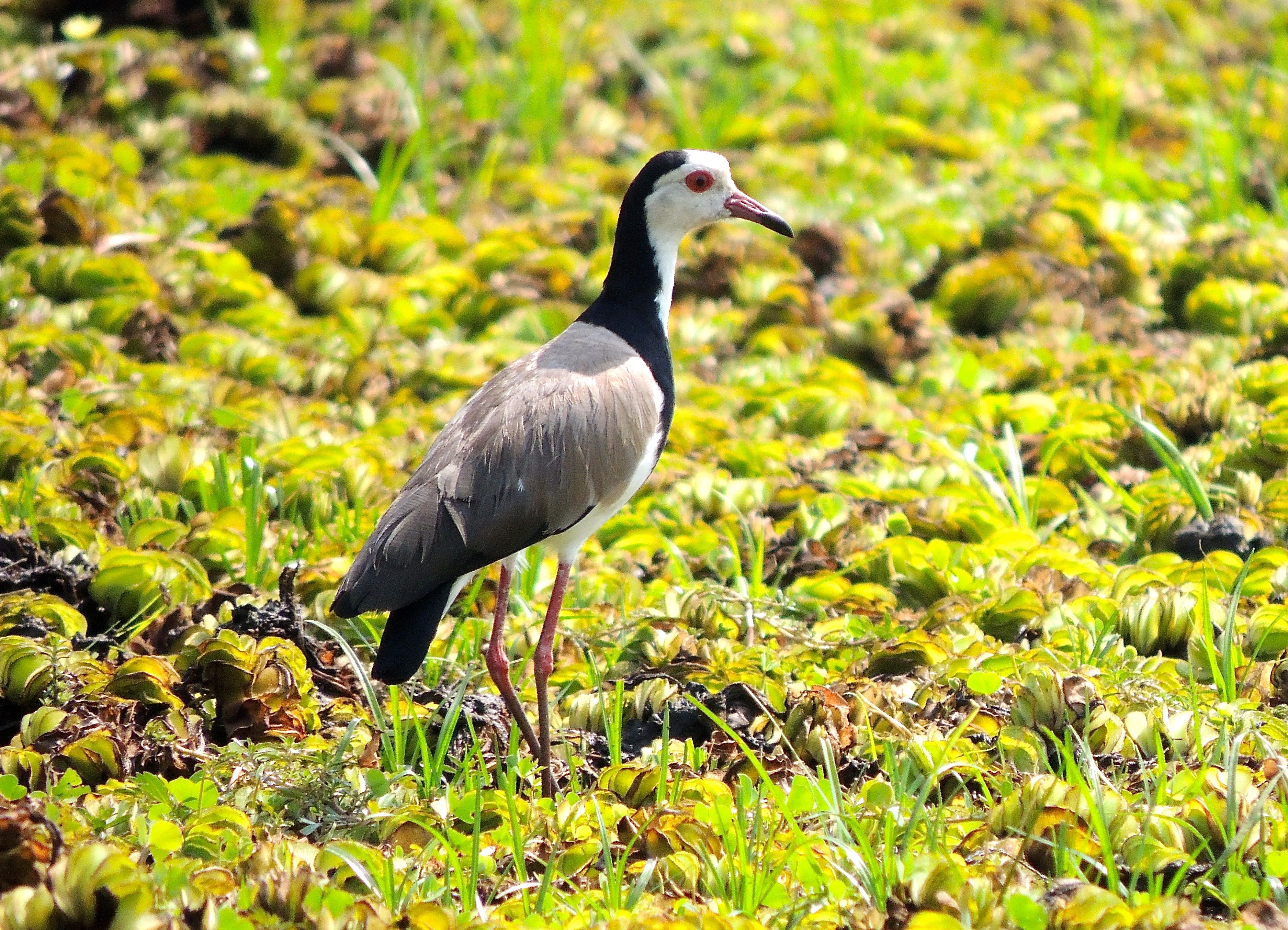 Long-toed Lapwing - Photo by William Young
Long-toed Lapwing - Photo by William Young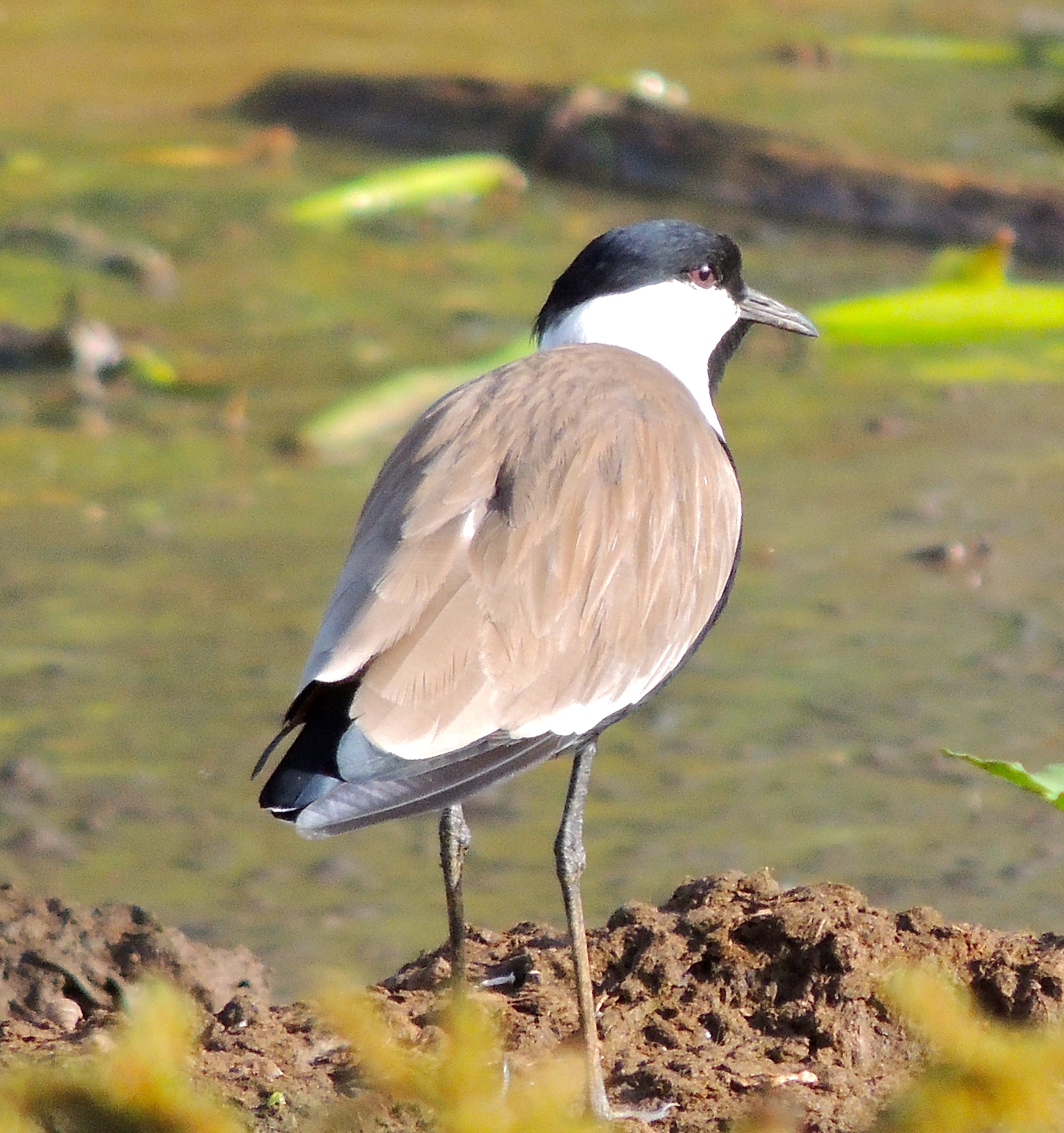 Spur-winged Plover - Photo by William Young
Spur-winged Plover - Photo by William Young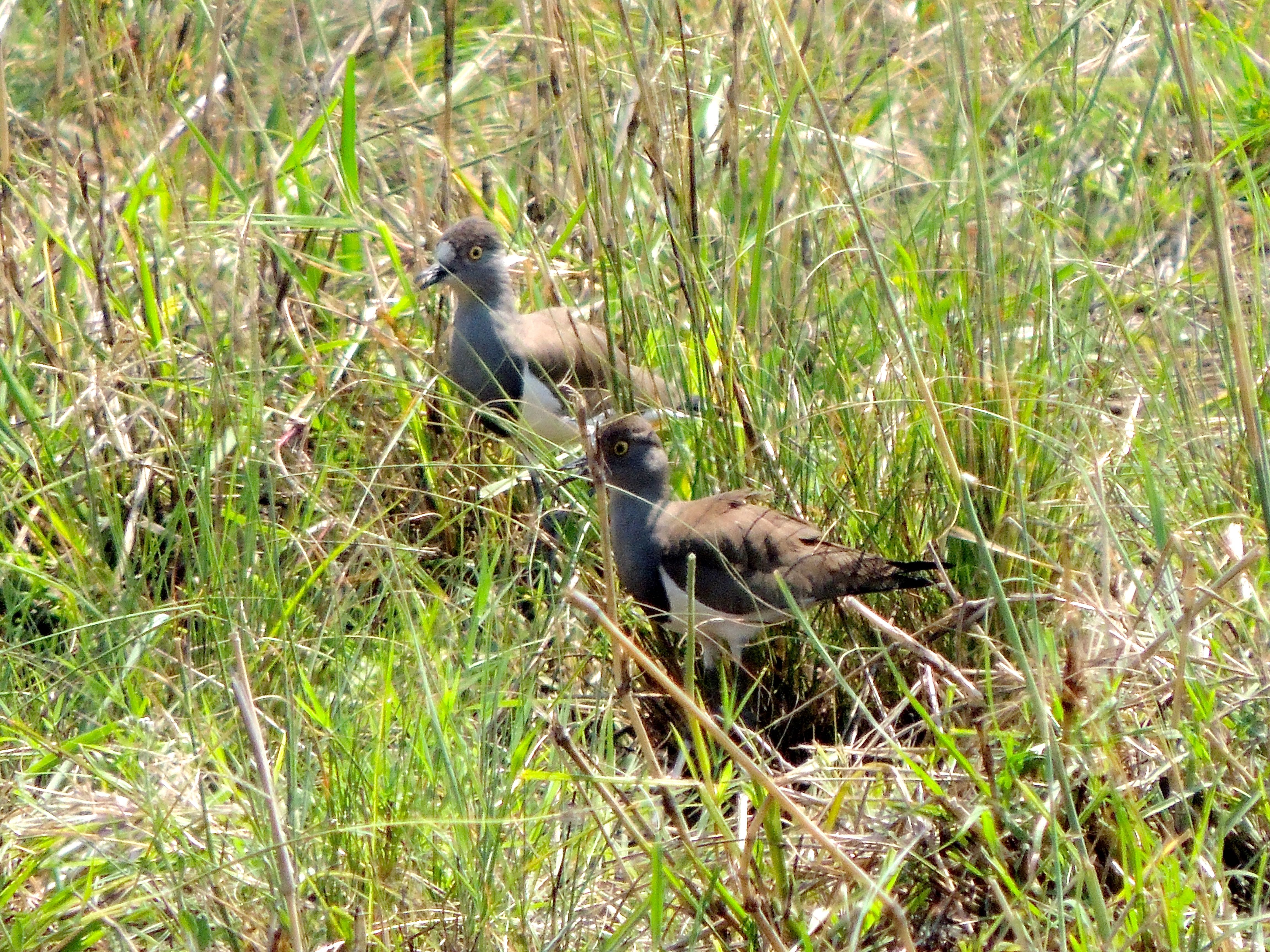 Senegal Lapwing - Photo by William Young
Senegal Lapwing - Photo by William Young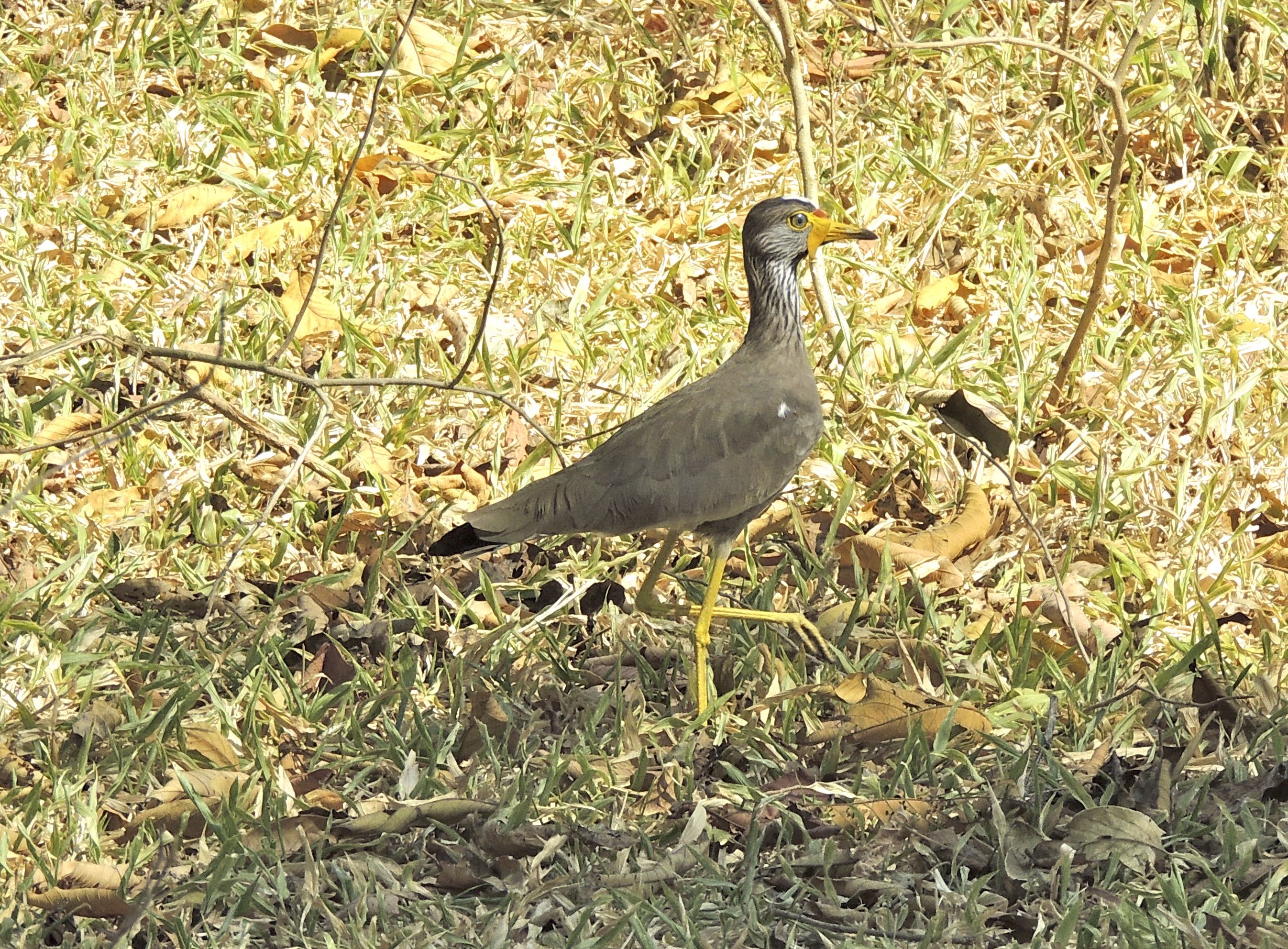 African Wattled Lapwing - Photo by William Young
African Wattled Lapwing - Photo by William YoungShorebirds
The most common sandpiper on the trip was the Wood Sandpiper. We saw them on 11 days. The most productive ride to see shorebirds was without question our cruise through the Kazinga Channel. We saw 15 Wood Sandpipers in the channel. They have long legs and a light supercilium. We saw 16 Common Sandpipers, who are like winter plumage Spotted Sandpipers and have a similar white mark on the side. We saw them at numerous locations, including on the rocks near Murchison Falls. In the Kazinga Channel, there were four Common Greenshanks, who are light-colored and look like a yellowlegs with green legs. The 8 Marsh Sandpipers reminded me of Solitary Sandpipers. There was one Black-tailed Godwit, who towered over the other shorebirds. We saw 8 Ruffs with their reddish-salmon legs, and five Ruddy Turnstones, one of whom was turning stones. There were three Curlew Sandpipers with their downcurved bills, two Sanderlings, and a Dunlin. Because Uganda is inland, the Dunlin is considered rare or accidental there. The most common species was the Little Stint. We saw 25 at the Kazinga Channel, and we had seen ten at the Sempaya Hot Springs.
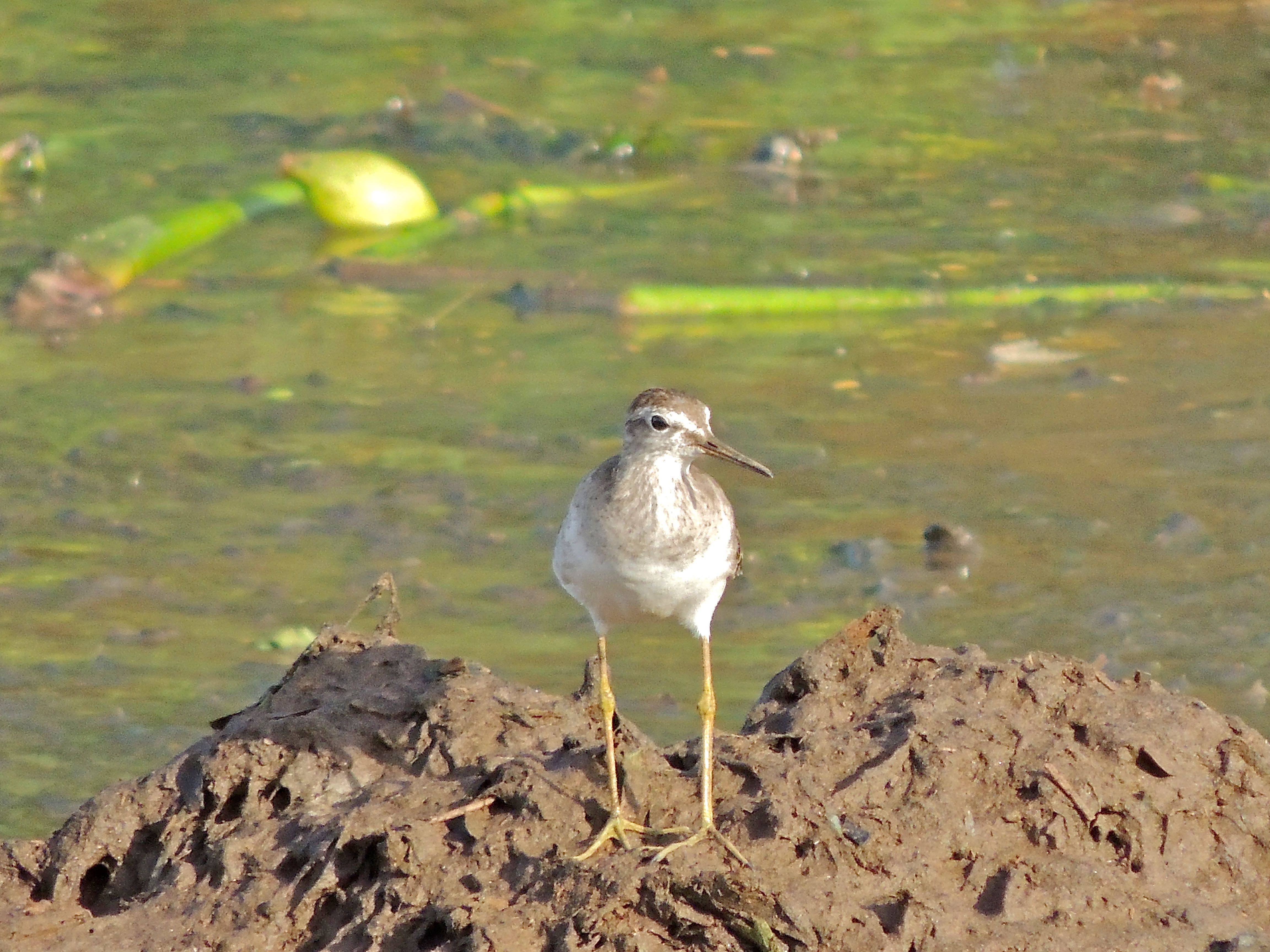 Wood Sandpiper - Photo by William Young
Wood Sandpiper - Photo by William Young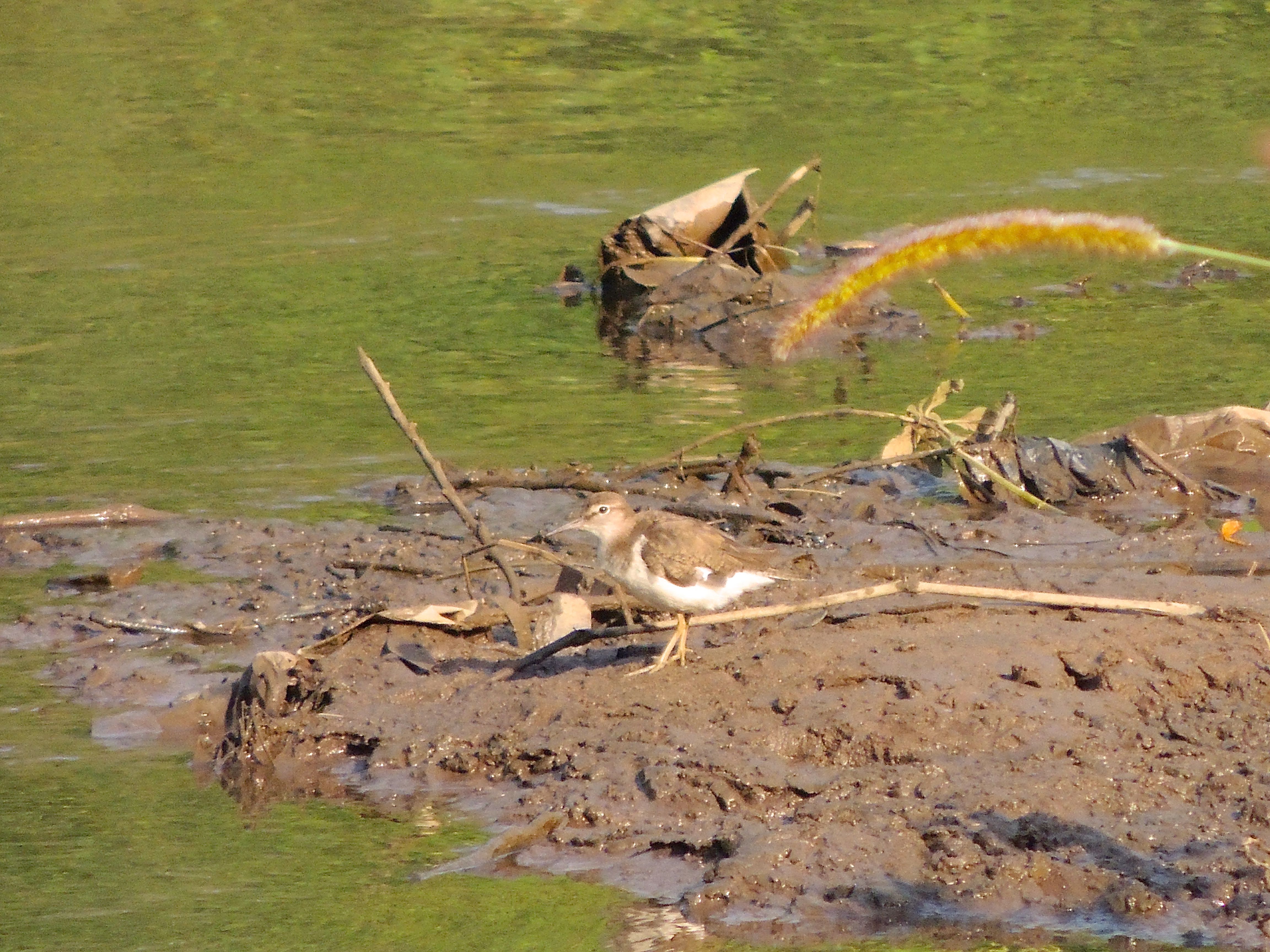 Common Sandpiper - Photo by William Young
Common Sandpiper - Photo by William Young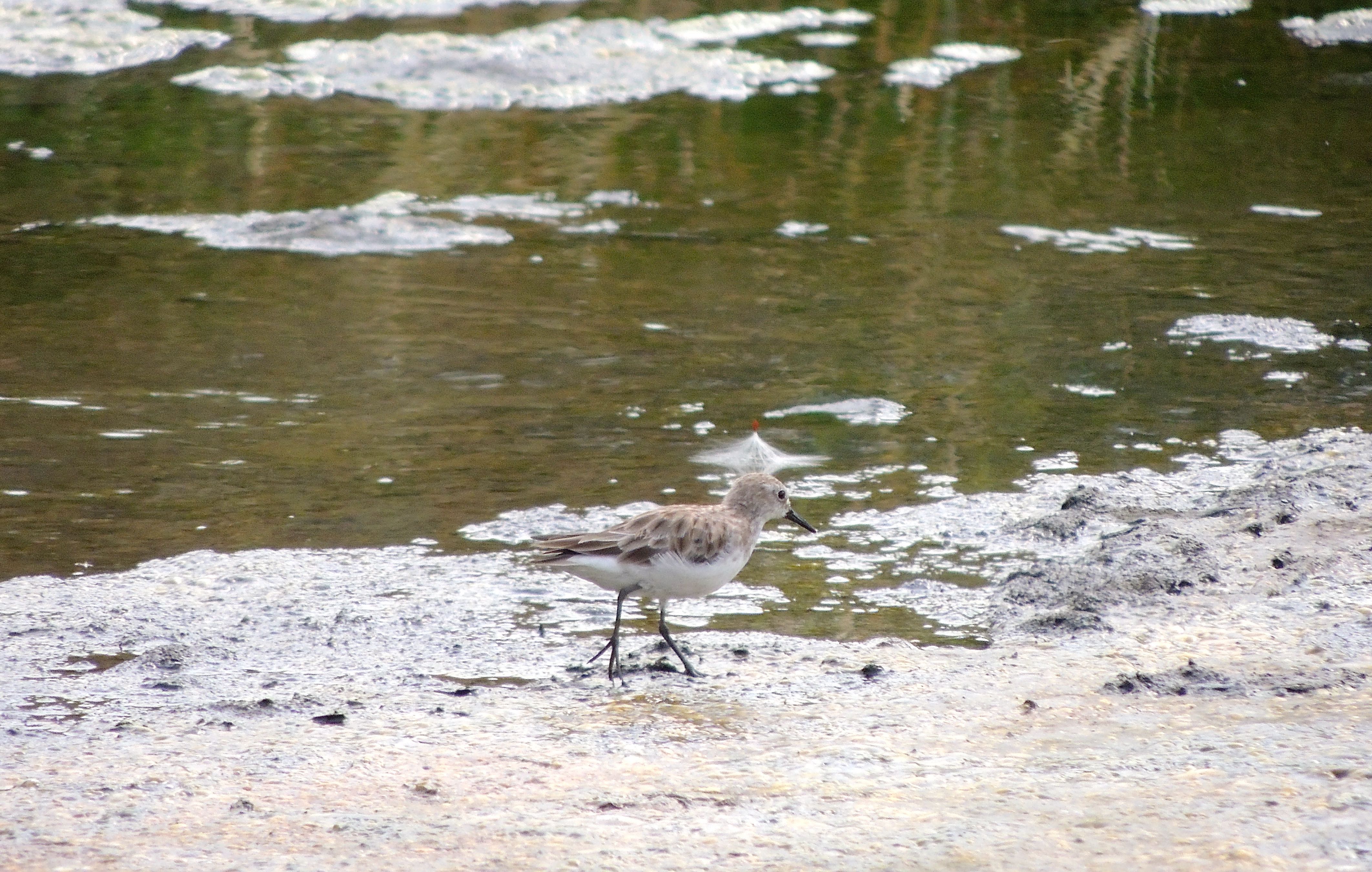 Little Stint - Photo by William Young
Little Stint - Photo by William YoungCoursers and Pratincoles
We saw a Temminck's Courser at Murchison Falls NP in a burned out patch of grass. It is a delicate looking tan bird who has a pert, erect posture. It looked like the avian equivalent of an Oribi. Near the falls, we saw Rock Pratincoles perched on rocks. They have a red bill and look darker than the Collared. Crammy had seen some a couple of days earlier when we were at the rocks at the top of the falls. We saw a group of 13 Collared Pratincoles at Murchison Falls NP, and they blend in well with their surroundings. They have a yellow-brown throat, and they flash a white rump when they fly. We saw both adults and young ones at Queen Elizabeth NP. The young ones are duller — we saw one at close range in the road.
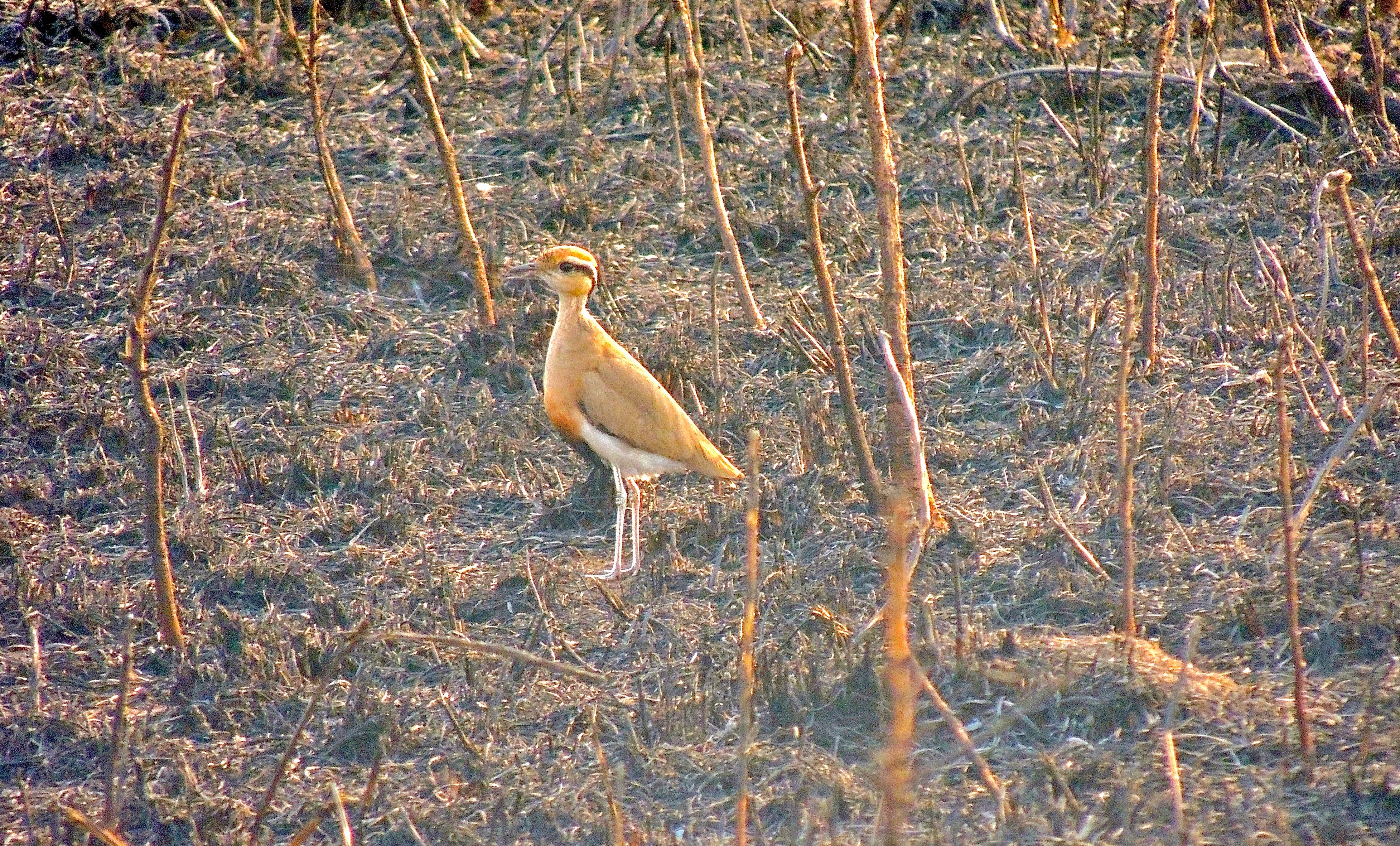 Temminck's Courser - Photo by William Young
Temminck's Courser - Photo by William Young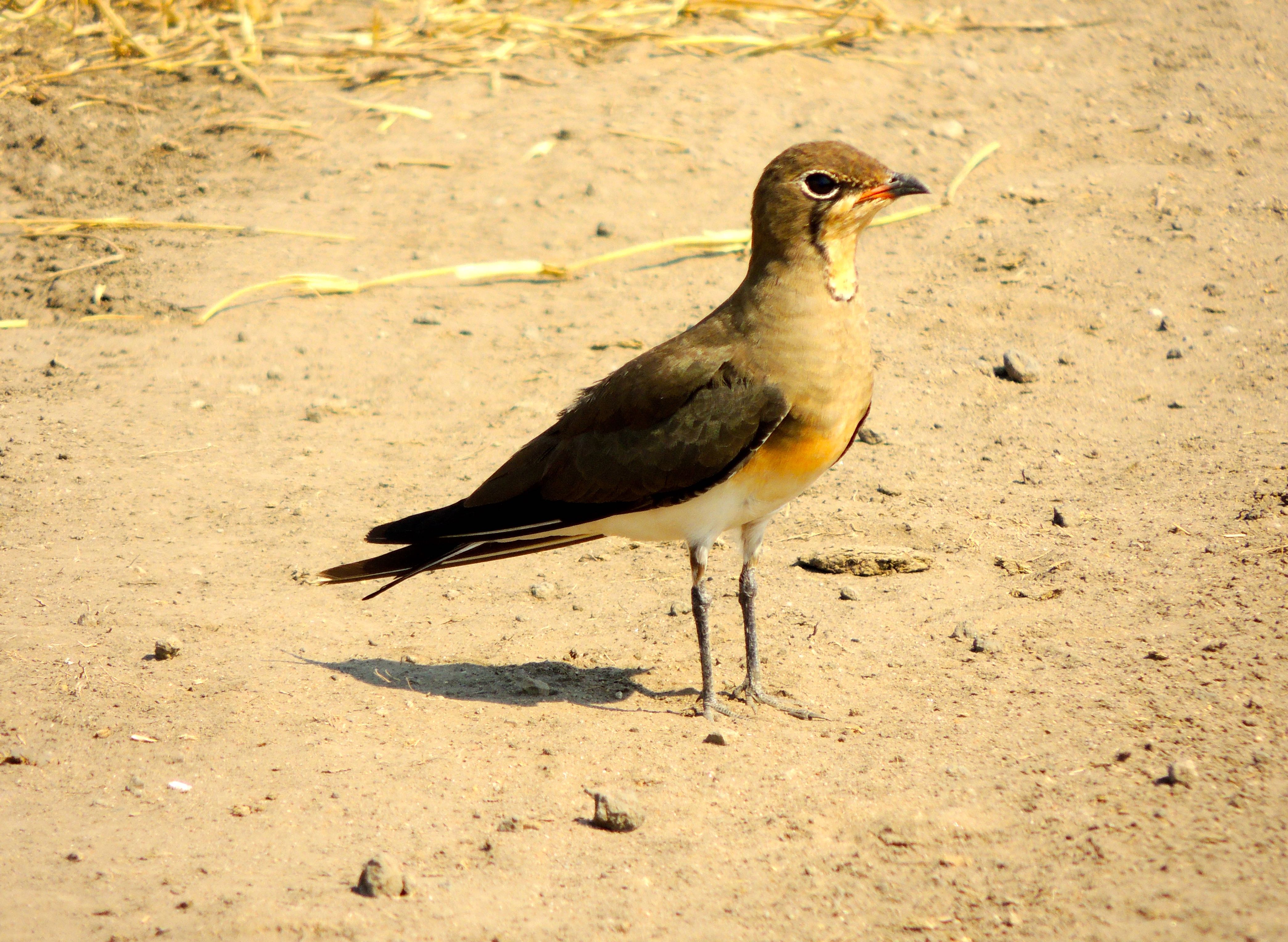 Collared Pratincole - Photo by William Young
Collared Pratincole - Photo by William YoungGulls, Terns, and Skimmers
Most of the gulls, terns, and skimmers I saw were either in the Kazinga Channel or somewhere near there. We saw many Gray-hooded Gulls, who are similar to Common Black-headed Gulls. The Gray-hooded were mixed in with a similar number of Lesser Black-backed Gulls, who are much larger. Crammy picked out two Herring Gulls among the other gulls standing on the shore. About 25 Gull-billed Terns flew by with their heavy black bill, and the smaller terns, who were much more common, were the White-winged. We saw a lot of White-winged Terns at the Entebbe Botanical Gardens, none of whom were in breeding plumage. Some were perched in a bare tree. I saw African Skimmers in the Kazinga Channel. A great many were standing on the shore, but some were skimming in the lake. Adults in breeding plumage have a red bill with a yellow tip, while birds in non-breeding plumage have a dark tip.
 African Skimmers - Photo by William Young
African Skimmers - Photo by William YoungDoves
The most prevalent sound of the trip was I AM A RED-EYED DOVE, sung to the pattern of 1-2, 1-2-3-4. I saw or heard Red-eyed Doves on all but five days. They sang incessantly in the forest on the morning I went chimp tracking. Ring-necked, Vinaceous, and Mourning Collared-Doves all have similar plumage to the Red-eyed, including a black collar. The Ring-necked has a three note call that sounds as if it is saying Work Harder or Drink Lager. Vinaceous Doves have a black collar, and both the head and breast are wine-colored. Crammy was seeing Laughing Doves all over the place, but I had good looks at only a few. They are smaller than the doves with collars. Speckled Pigeons have become fairly common in areas with human settlements. I saw some at the airport the day I went home, and I also saw them in other urbanized areas. The red patch around the eye stands out. Uganda has Rock Pigeons in areas with human settlements. I heard the low call of the Afep Pigeon on the day I tracked chimps, but I never saw one. I had fleeting looks at an African Olive (Rameron) Pigeon, but I never saw the fieldmarks. We found the feather remains of one under a tree. I saw a couple of flyover Western Bronze-naped Pigeons, who were silhouettes. The Black-billed, Emerald-spotted, and Blue-spotted Wood-Doves all look alike and resemble a Common Ground Dove. They are small and have rufous patches on their wings as well as a blackish patch around their uppertail coverts. In good light, I could see both the blue and the emerald spots on the birds with those names. There were a lot of Blue-spotted Wood-Doves in Queen Elizabeth NP. I saw a Tambourine Dove at Bwindi. It is white underneath. A lot of African Green Pigeons were around. They are green and plump, with a red bill. I saw them on seven days, including two having a conflict in a tree at the Mountains of the Moon Hotel.
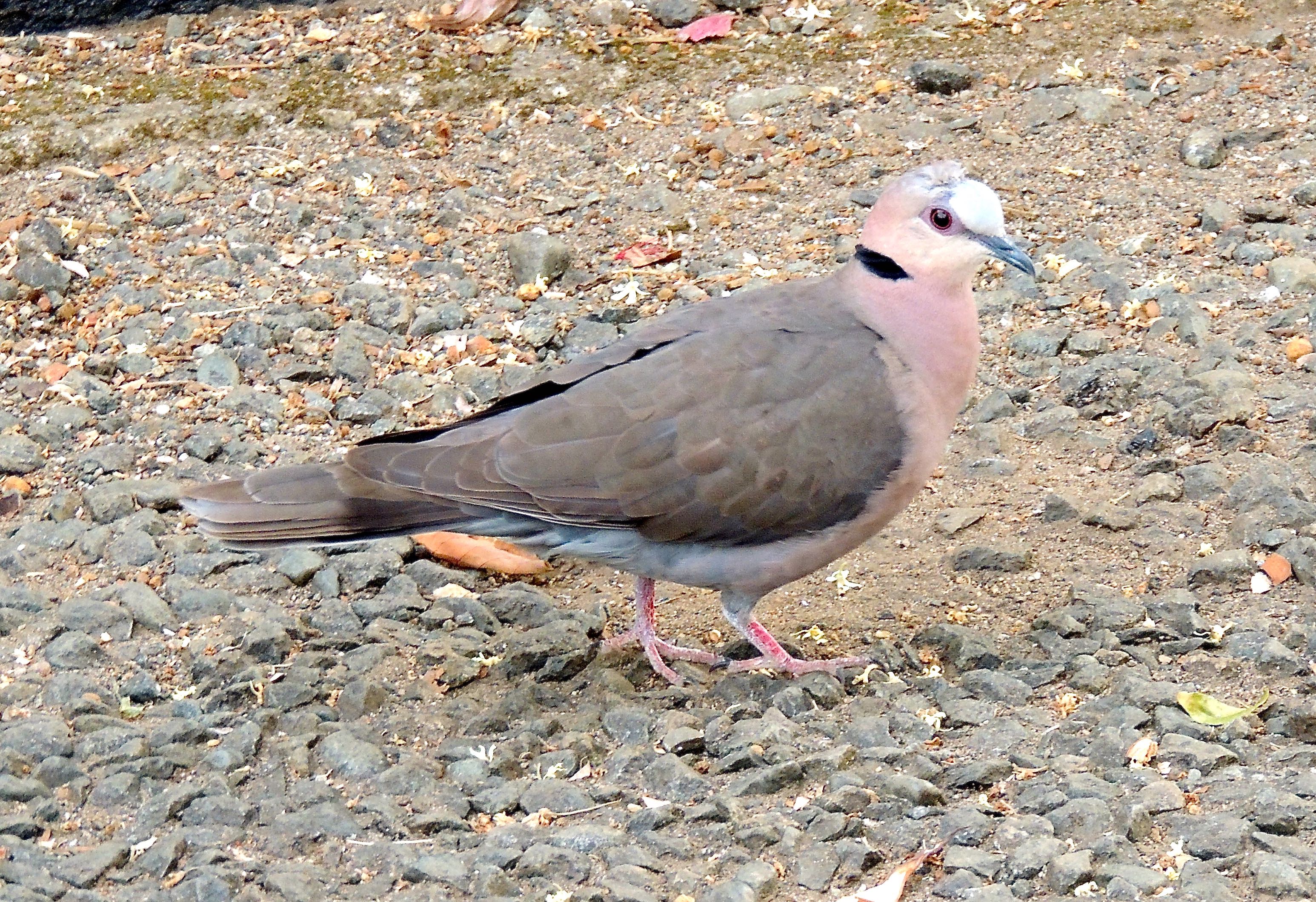 Red-eyed Dove - Photo by William Young
Red-eyed Dove - Photo by William Young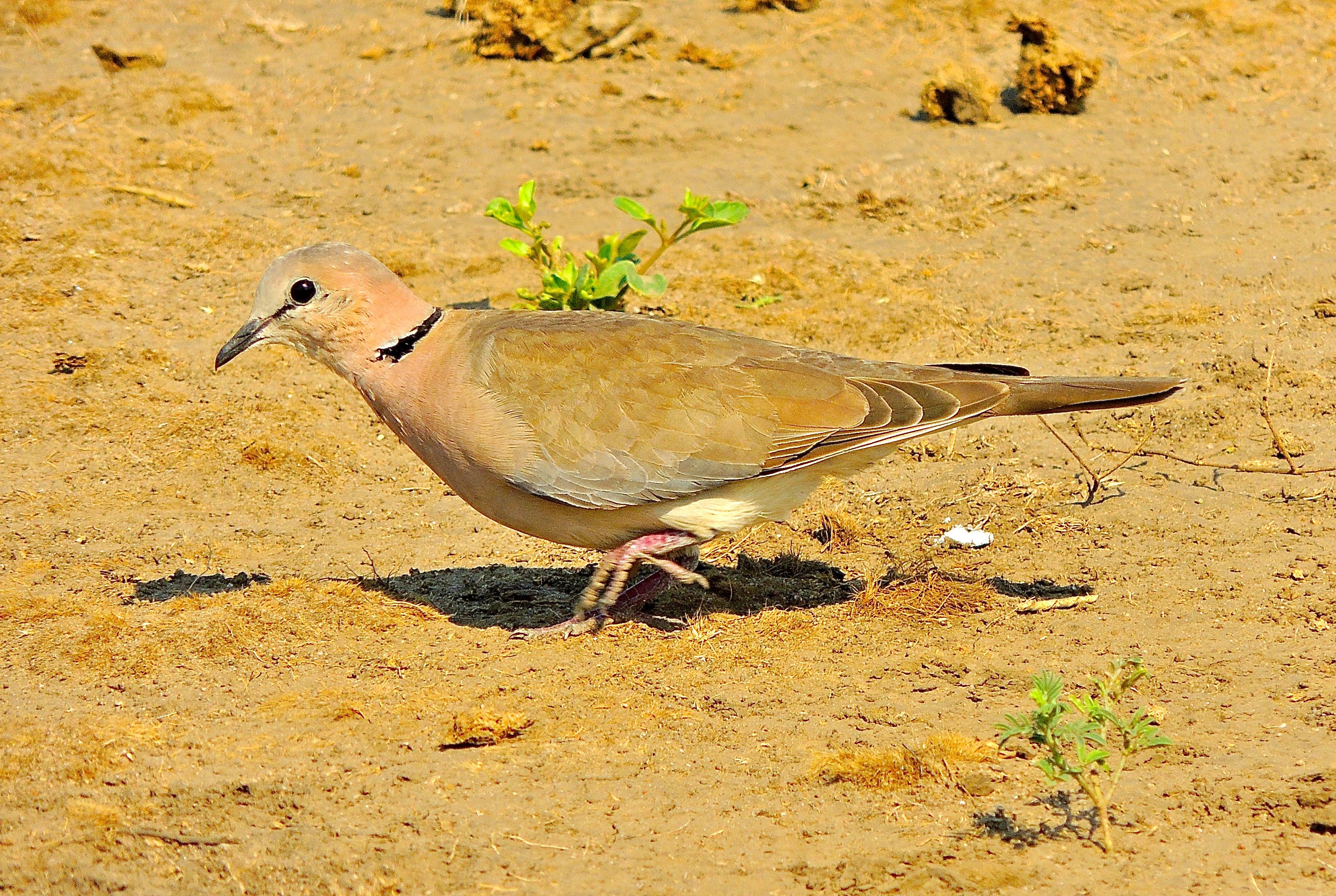 Ring-necked Dove - Photo by William Young
Ring-necked Dove - Photo by William Young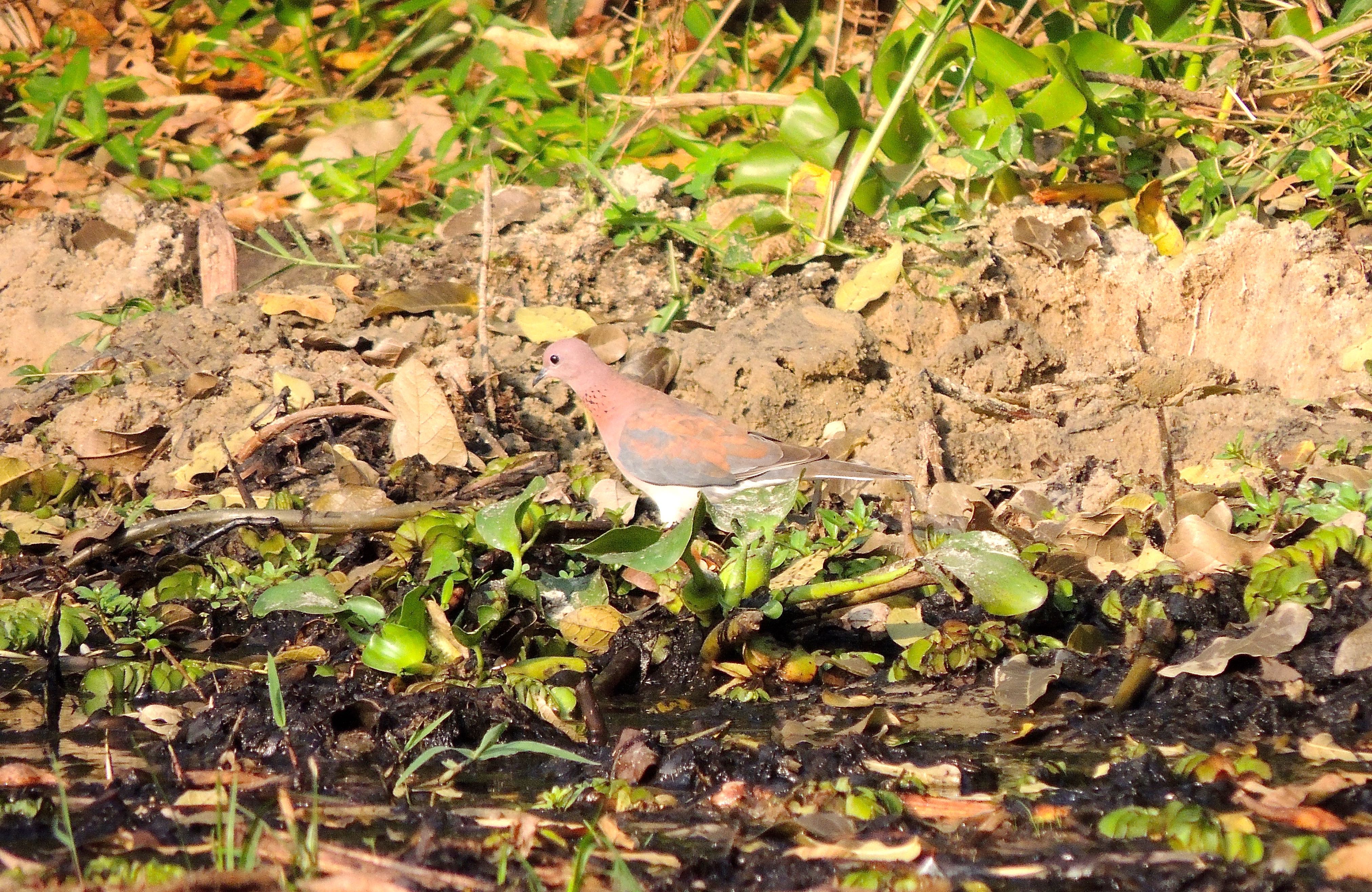 Laughing Dove - Photo by William Young
Laughing Dove - Photo by William Young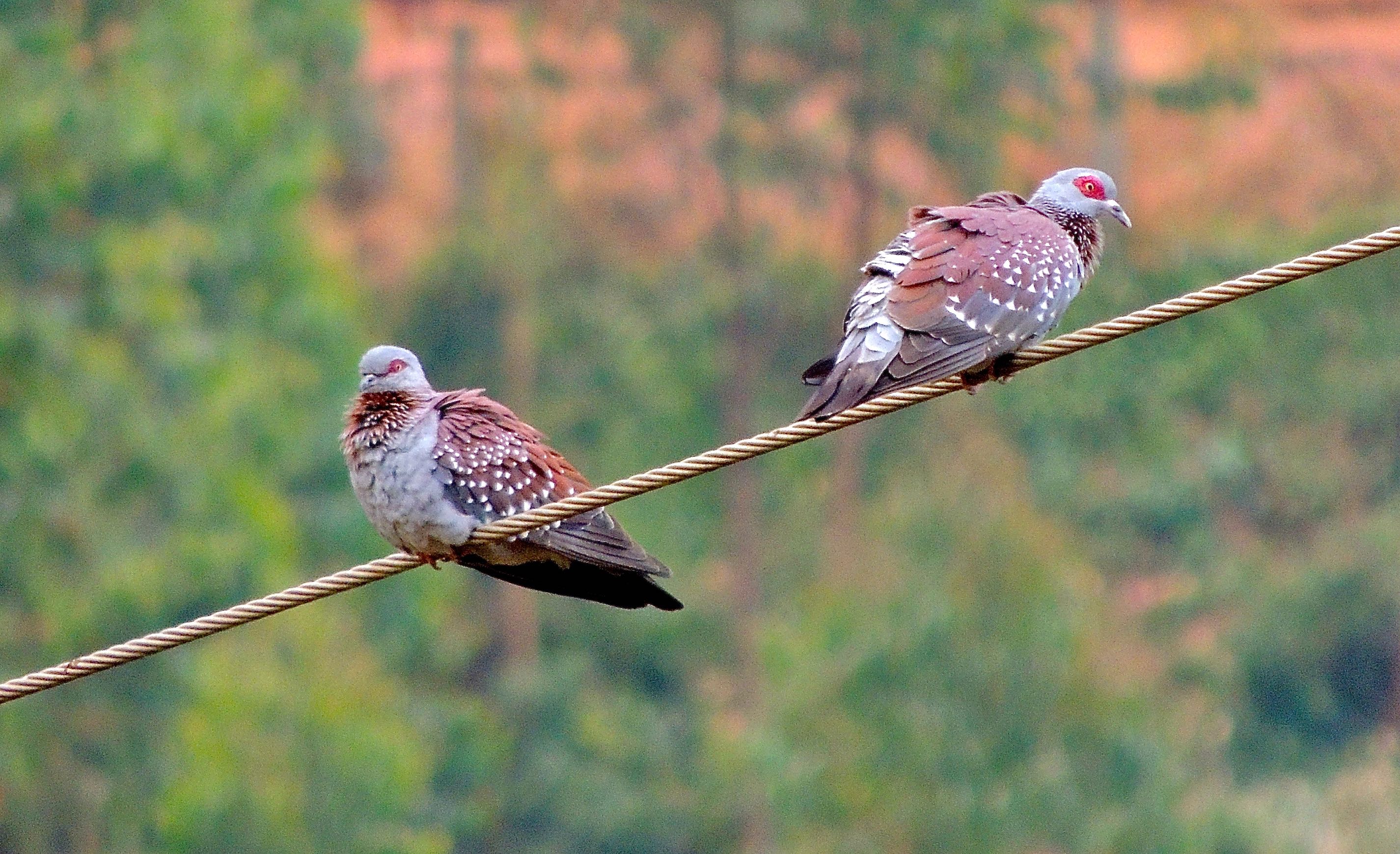 Speckled Pigeons - Photo by William Young
Speckled Pigeons - Photo by William Young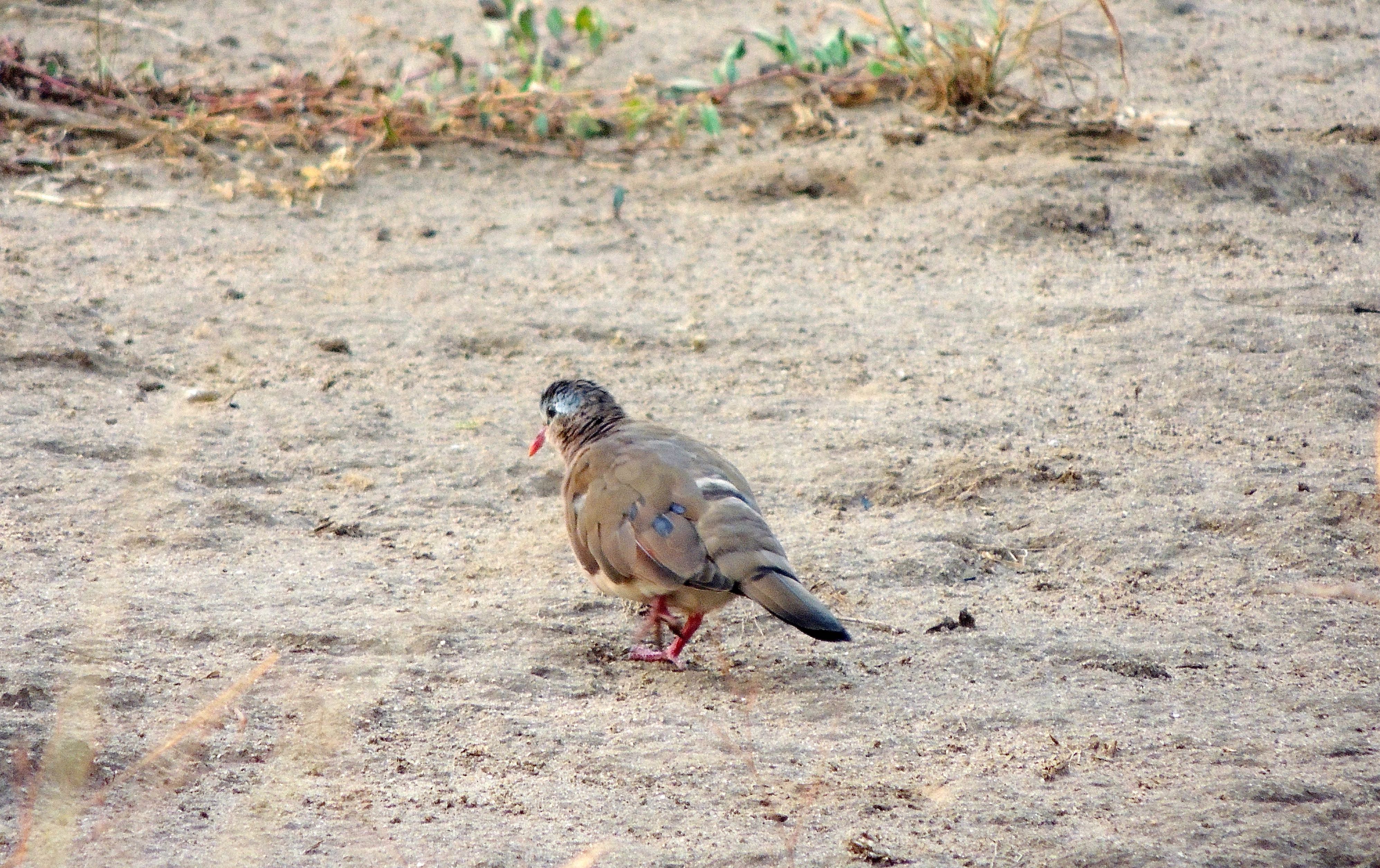 Blue-spotted Wood-Dove - Photo by William Young
Blue-spotted Wood-Dove - Photo by William Young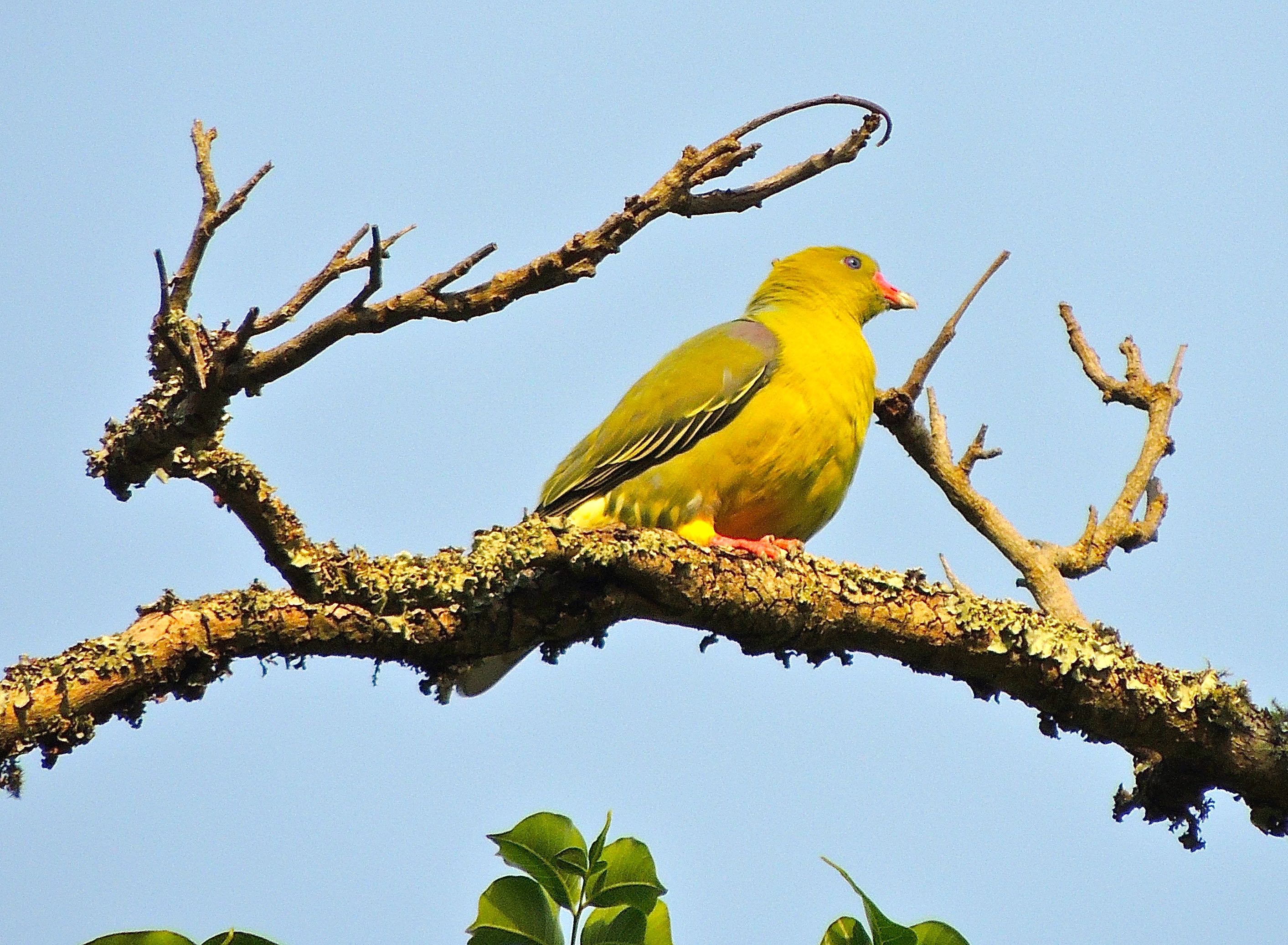 African Green Pigeon - Photo by William Young
African Green Pigeon - Photo by William YoungTuracos
The turacos were my favorite bird family on the trip. They are big and spectacular, but because they like to scurry in trees, they can be difficult to see well. They tend to land low in a tree and gradually hop higher from branch-to-branch, sometimes walking along the branches. I saw a lot of Great Blue Turacos, and a few very well. They are 30-inch birds who think they are passerines. They have a blue crest and a yellow bill tipped in red. The coloring underneath appears to be a blend of many colors. We typically saw them in pairs. I had my best looks at them at the Bigodi Wetlands, and one tree there contained four. The Ross's Turaco is 21 inches and behaves the same way. It has yellow skin around the eye. I saw a pair at the Victoria View Guest House on my final morning in Uganda. As with the Great Blue, the two appeared to be actively interacting with each other. I saw one at the Mountains of the Moon Hotel. They flash russet on the wings in flight. Turacos are among the only birds in the world who have blue or green pigment in their blue or green feathers. George found a Great Blue Turaco feather which he gave to me, and I later gave it to Lori.
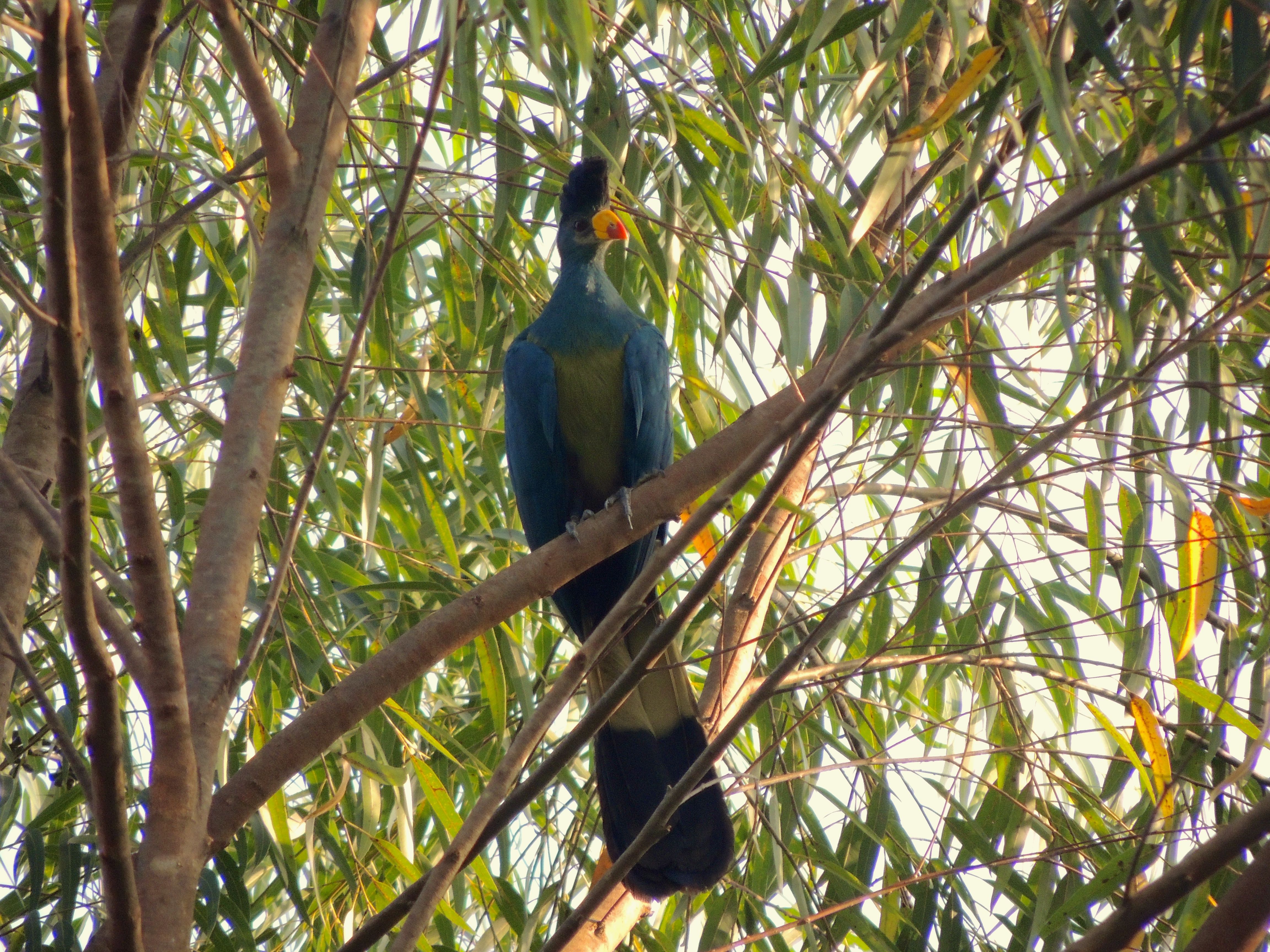 Great Blue Turaco - Photo by William Young
Great Blue Turaco - Photo by William Young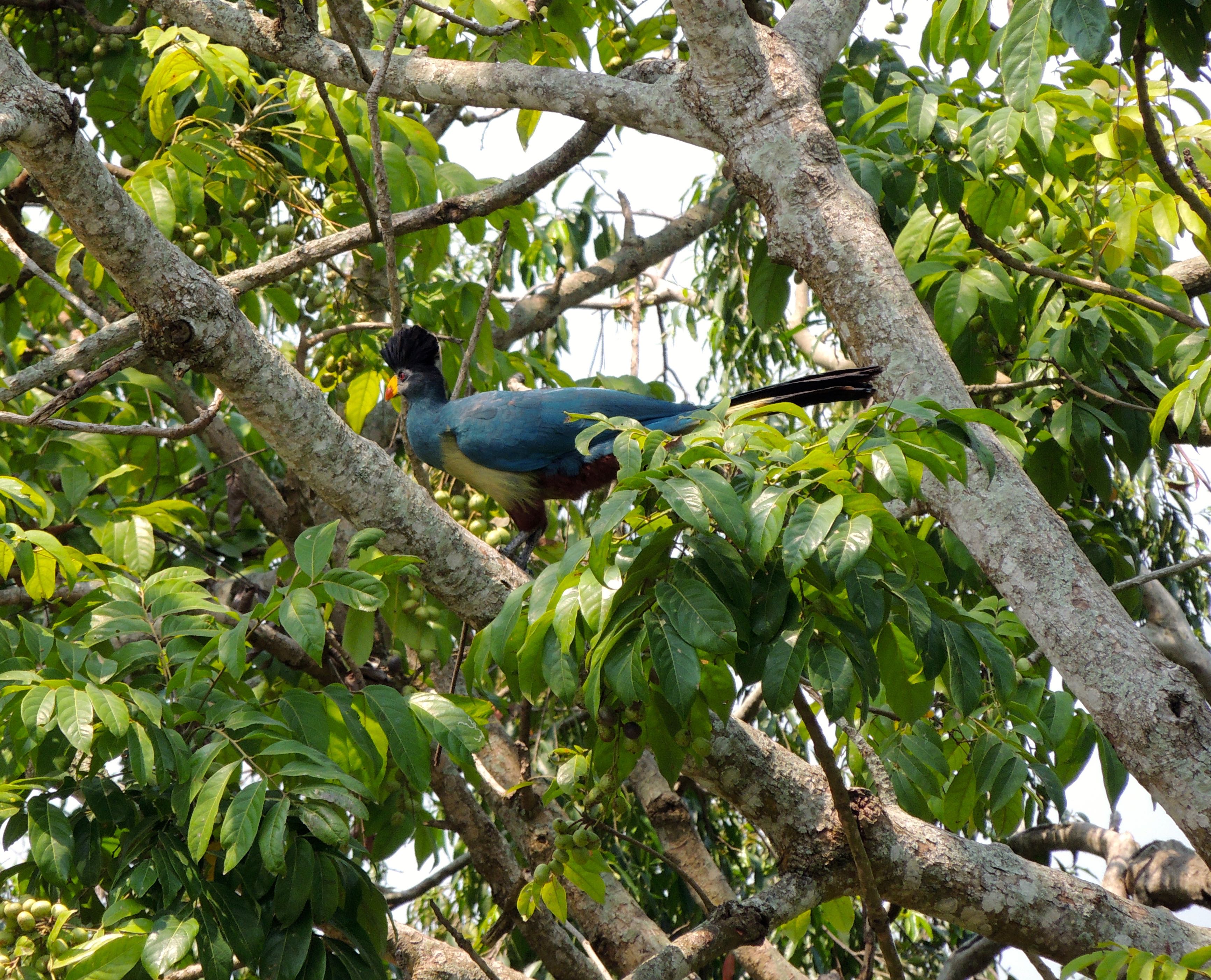 Great Blue Turaco - Photo by William Young
Great Blue Turaco - Photo by William Young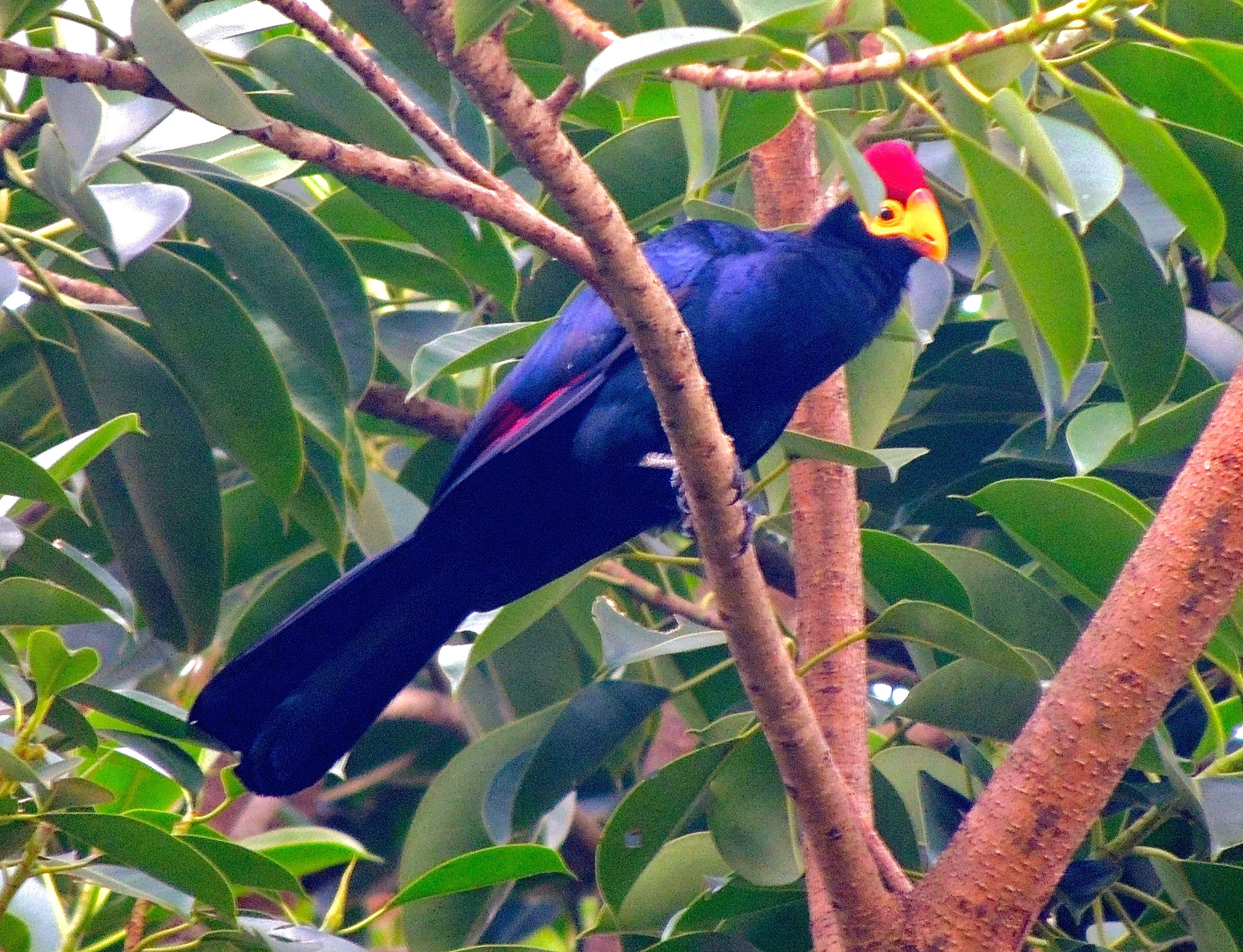 Ross's Turaco - Photo by William Young
Ross's Turaco - Photo by William YoungThe White-crested Turaco is a stunning bird. We saw one flying outside the Ziwa Rhino Sanctuary, and the bright red-and-blue wings combined with the white head made it look like an All-American bird. A better name for the bird would probably be White-headed, because more than the crest is white. I saw a few Black-billed Turacos fly over. I could see the red patches on the wings, but I never saw one perched. I heard them a lot when I was in the mountains, including when I was tracking chimps. I also heard them on the hike to Mubwindi Swamp, and their call carried a long distance in the mountain areas. We saw a couple of Bare-faced Go-Away-birds near the end of the trip. They are gray with a black face. And I spent much of my final morning following and observing Eastern Plantain-eaters in the gardens at the Victoria View Guest House. They are brown with a yellow bill, and they show white on their wings when they fly. They are extremely loud, and their call sounds like an archetypal African jungle sound. The Stevenson guide compares the call to maniacal laughter. There appeared to be several adults and several youngsters, with a lot of interaction among them. Some appeared to be either kissing or feeding another one. They seemed to be doing a circuit around the property, and there was one tree they always returned to, even though they never stayed long. There was something about them that seemed a bit crazy, and they were enjoyable to observe.
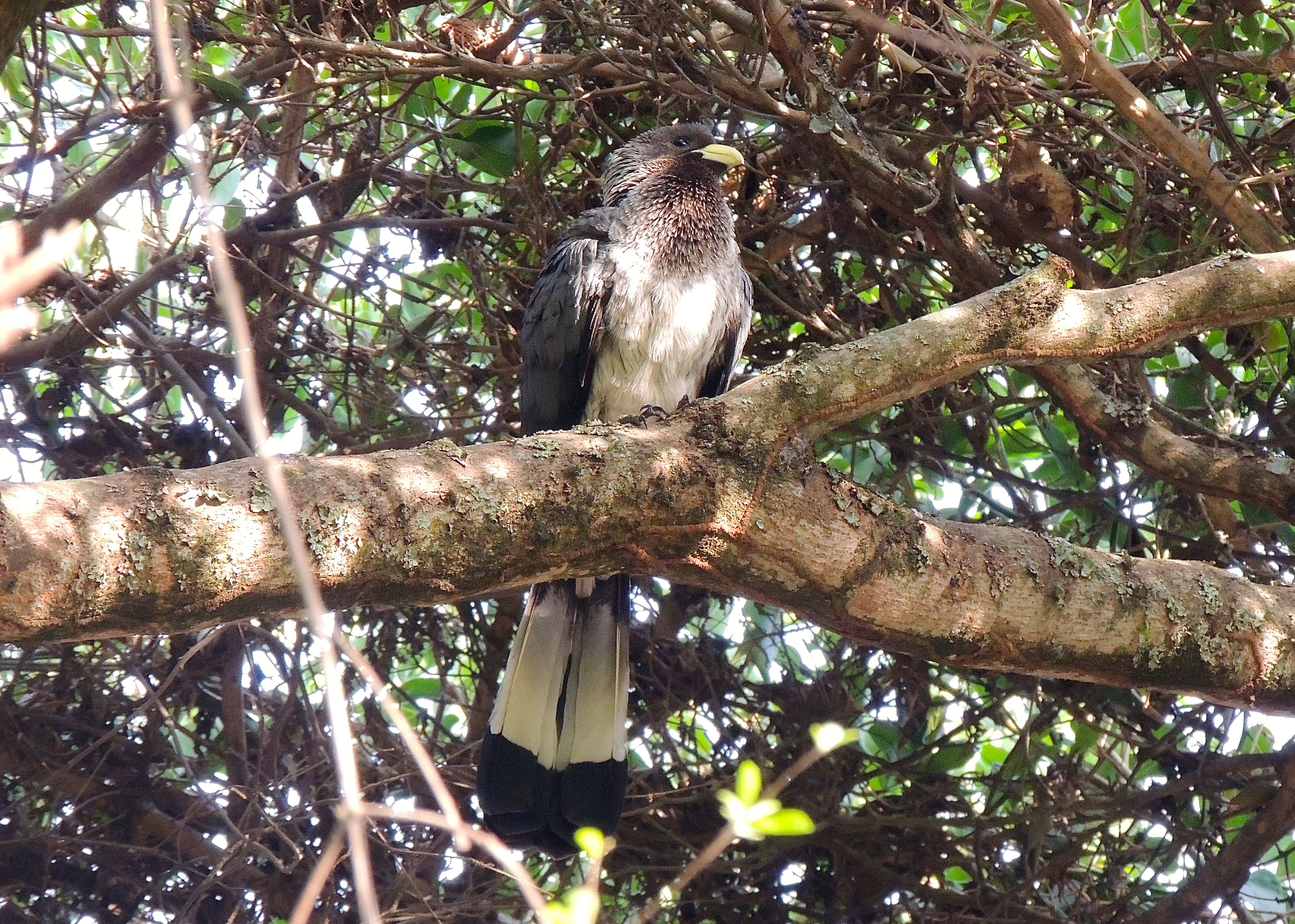 Eastern Plantain-eater - Photo by William Young
Eastern Plantain-eater - Photo by William Young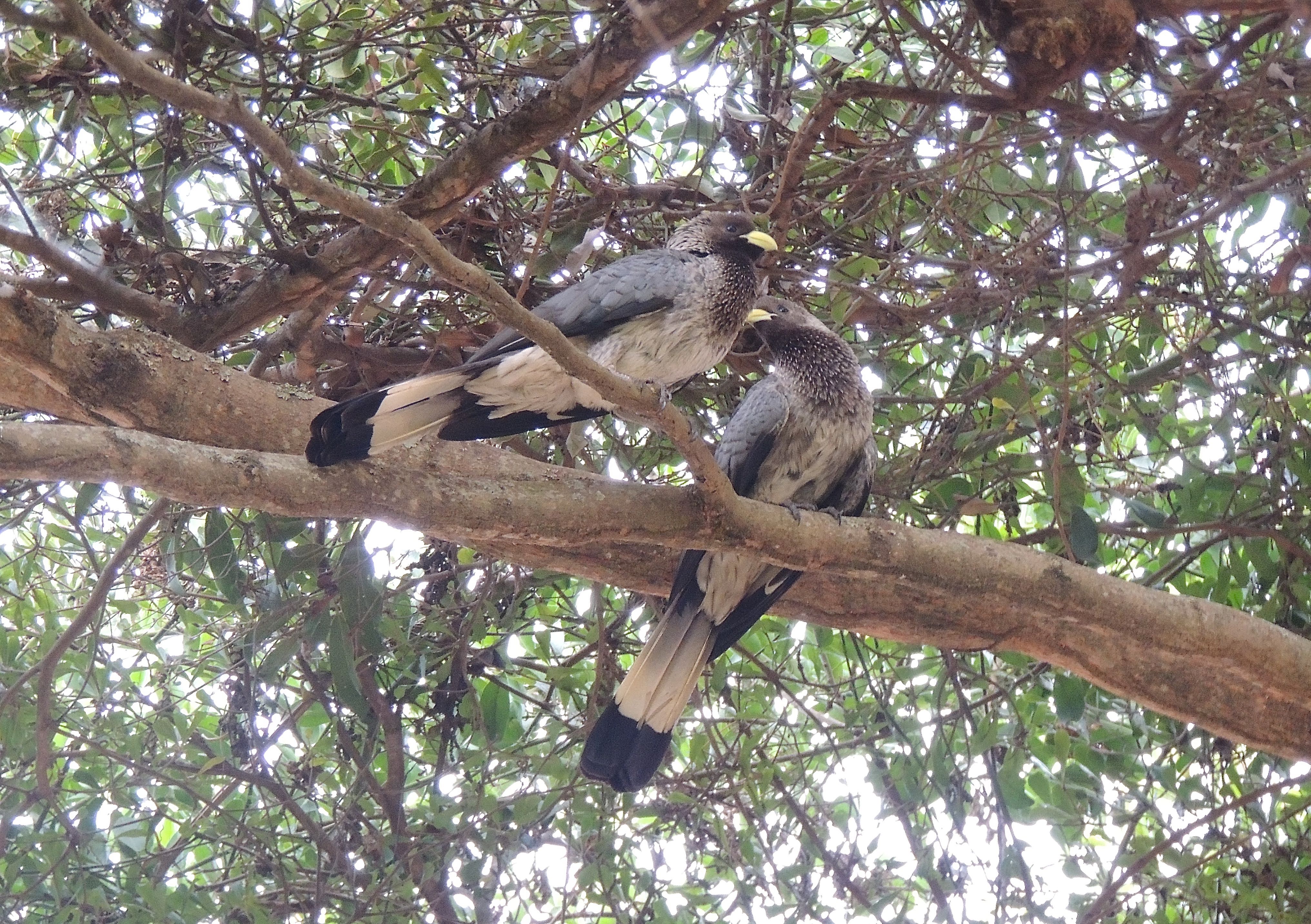 Eastern Plantain-eaters - Photo by William Young
Eastern Plantain-eaters - Photo by William YoungCuckoos
We did not see a lot of cuckoos. I saw a pair of Red-chested Cuckoos at the Travellers Inn in Kisoro. Their three-note It will rain call was incessant, and I finally managed to find them in a tree. We also saw one at Bwindi, along with a Levaillant's Cuckoo and a Black Cuckoo. The Black Cuckoo's three note call is I'm so sad. The Levaillant's is a large black-and-white cuckoo. One of them had its crest raised. Near the beginning of the walk to Mubwindi Swamp, we tracked a Barred Long-tailed Cuckoo. It has an incessant three-note call that sounds like Tic Tac Toe. I finally saw one fly over, but I never saw it perched. At Lake Mburo, we saw both a Common and an African Cuckoo. I had a much better look at the latter. It had yellow around the eye, a gray back, and barring below. It is shaped like a hawk or falcon. I saw a couple of Diedrick's and Klaas's Cuckoos, who are smaller and rounder than the other cuckoos. Occasionally, I saw them in good enough light so that I could see the green on their back. I saw one of the Klaas's Cuckoos at the Kibale Guest Cottages. We saw Yellowbills in a few places, and they reminded me of turacos. They are large and elongated, with a long tail and a yellow bill. Another name for them is the Green Coucal, and they resemble a coucal in shape. We saw White-browed Coucals on seven days. Unlike other cuckoos who tend to be solitary, White-browed Coucals frequently were in pairs. Vero spotted a Blue-headed Coucal in the reeds by a bridge near Queen Elizabeth NP. We saw two Senegal Coucals on the road from Murchison Falls NP to Masindi. They look like a smaller version of the Blue-headed. They have a black cap and no eyeline like the White-browed.
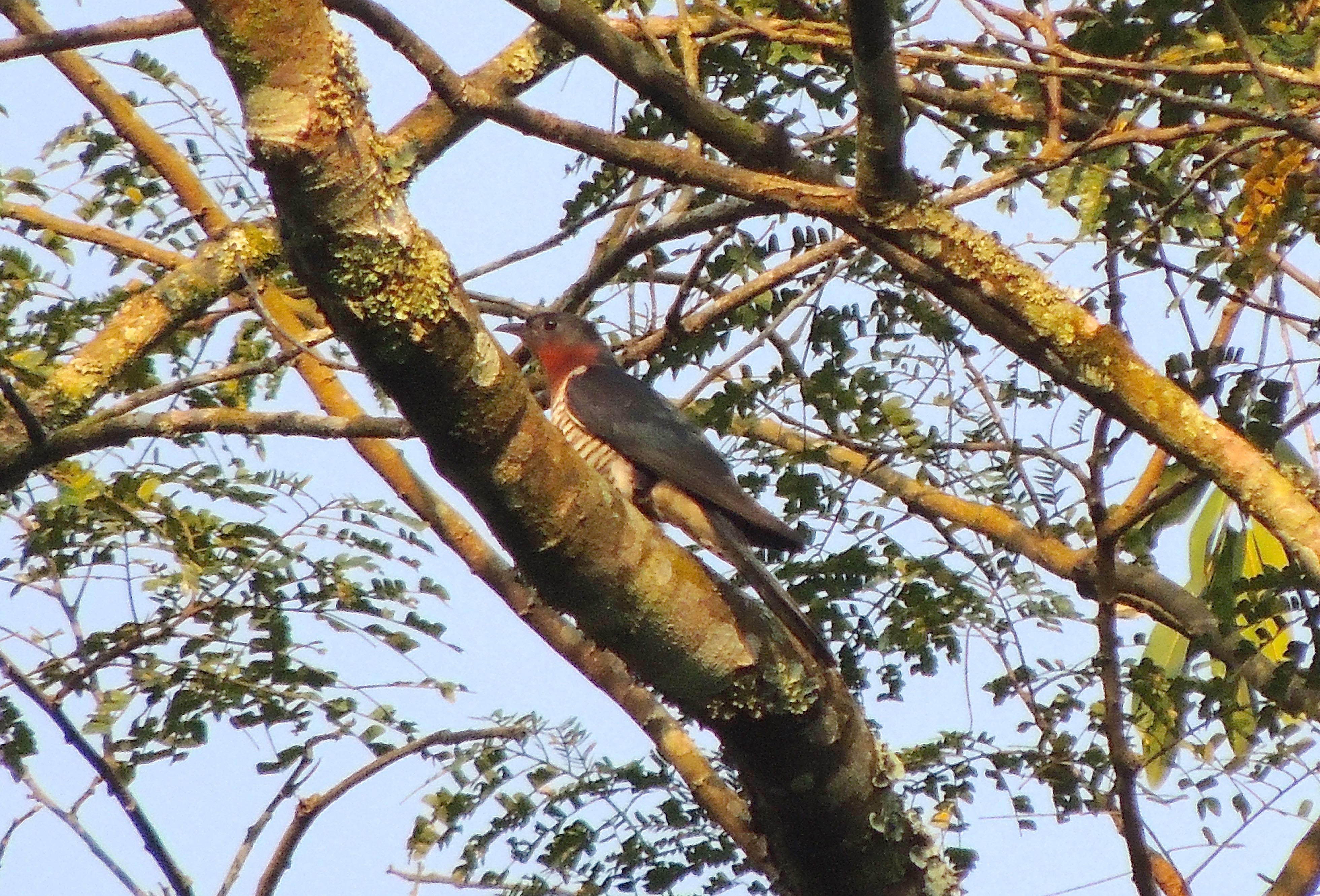 Red-chested Cuckoo - Photo by William Young
Red-chested Cuckoo - Photo by William Young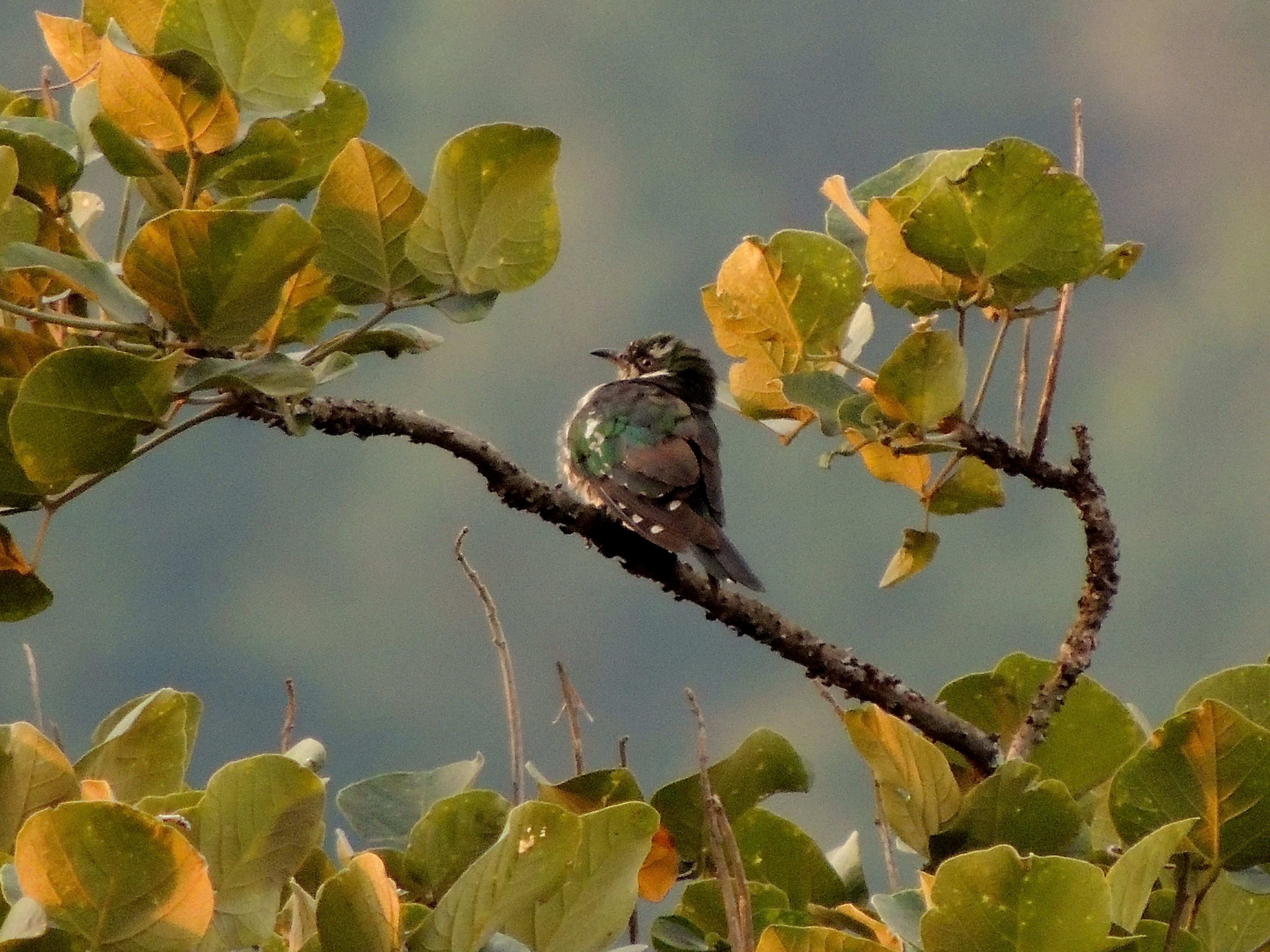 Diedrick's Cuckoo - Photo by William Young
Diedrick's Cuckoo - Photo by William YoungOwls, Nightjars
At Semliki, we saw a group of three Verreaux's Eagle-Owls, possibly an adult and two offspring. They were in a tree about 100 yards from the main road. The youngsters sat together, while the adult perched on a nearby branch. I could see their pink eyelids. They are the largest owl species in Africa. They are in the same genus as the Snowy and Great Horned, and they are larger than both. We also saw a pair on the road to Bwindi. On our drive to Buhoma, we stopped and saw a pair of African Wood Owls, who are much smaller. Crammy knew people who worked at the building near where they were perched. They look a bit like Barred Owls.
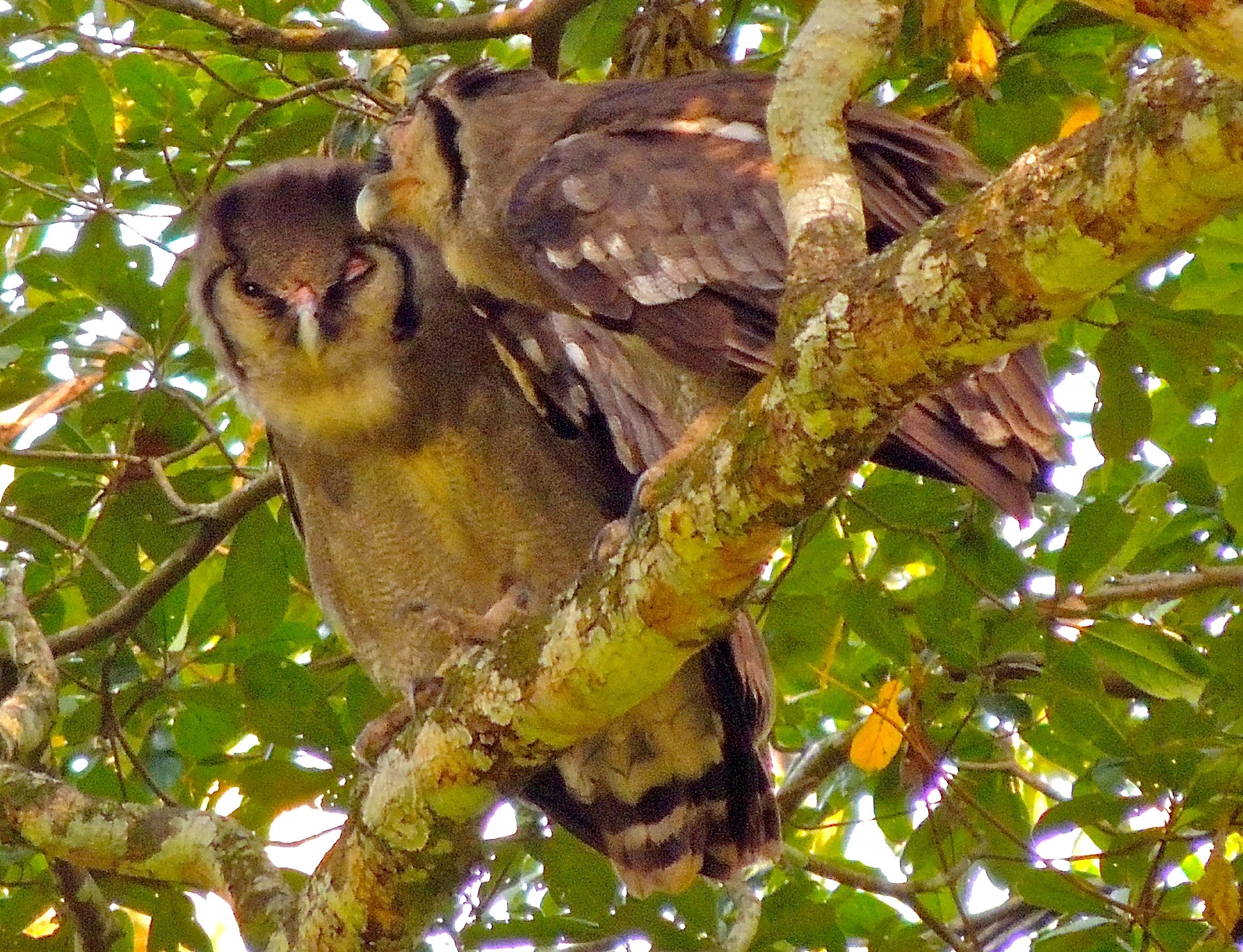 Verreaux's Eagle-Owls - Photo by William Young
Verreaux's Eagle-Owls - Photo by William Young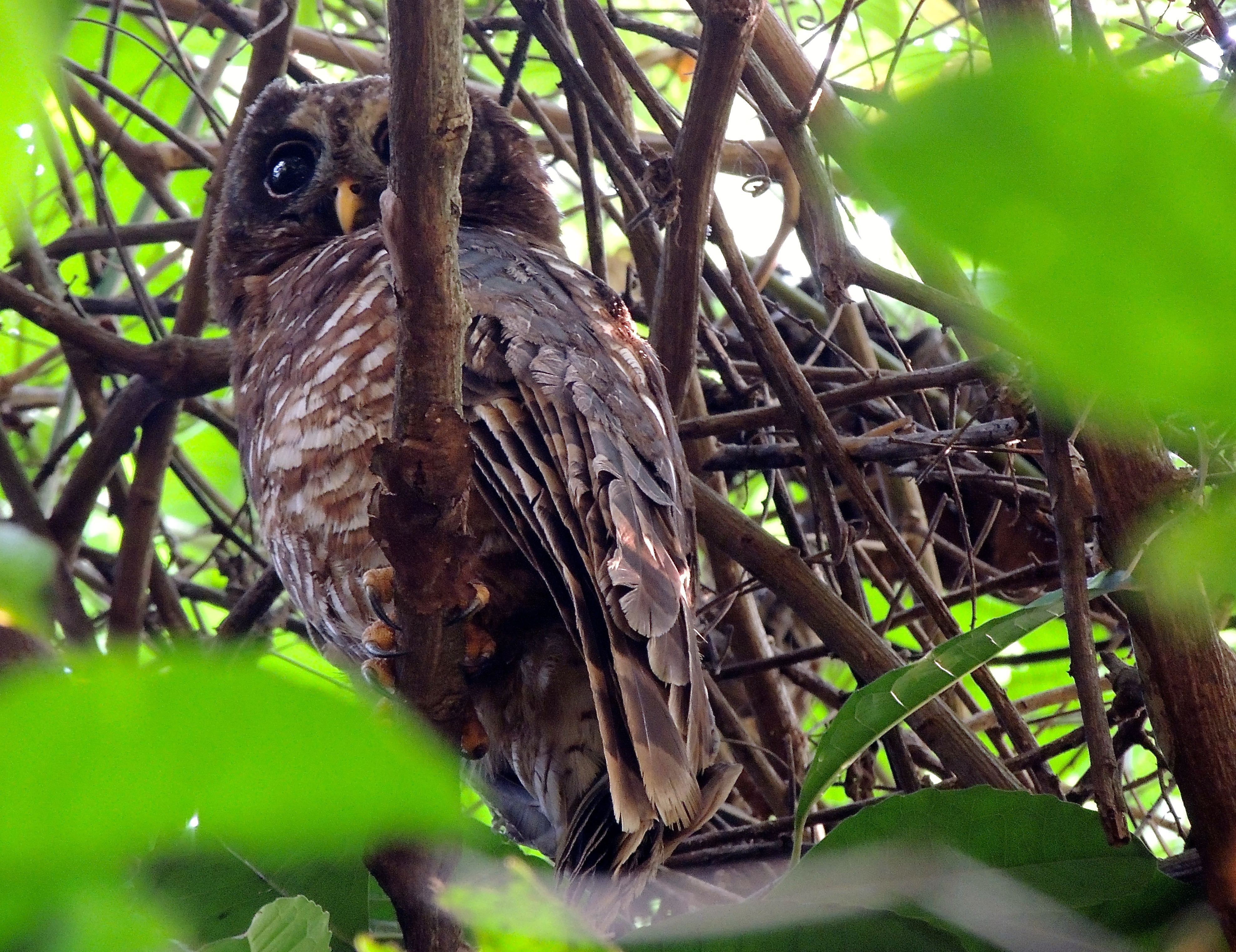 African Wood Owl - Photo by William Young
African Wood Owl - Photo by William YoungWe went spotlighting a few times for nightjars. I had a fleeting look at a Standard-winged Nightjar in Murchison Falls NP, but it was a young male who did not have long wing feathers. At Lake Mburo, I saw a Black-shouldered Nightjar, who fluttered like a butterfly, showing white on the wings and tail. We heard a Freckled Nightjar but I did not see one. We saw a Square-tailed Nightjar in the road at Queen Elizabeth NP. While spotlighting, we sometimes picked up the eyeshine of antelopes as well as creatures as small as insects and spiders. The latter two have yellowish rather than red eyeshine.
Swifts
The first birds I saw in Uganda were Little Swifts flying above the exit of the airport. They are small with a white rump. By far, the most common swift we saw in Uganda was the African Palm-Swift. We saw large numbers of them (sometimes in the hundreds) every day until we went to higher elevations. They have long narrow wings and a forked tail, so they are not difficult to identify. At Semliki, some Sabine's Spinetails flew over. They have a white rump and a stubby tail, but I could not have identified them on my own. A couple of times we saw Common Swifts, who are mostly brownish-gray. When we pulled off the road on the drive to Bigodi Wetlands, we saw Alpine Swifts, who are large and have a lot of white underneath.
Mousebirds
The Speckled Mousebird was one of the most common birds on the trip. In flight, the tail looks long and comes to a point. We saw them on all but six days. They fly into trees and sometimes scurry through the branches. We saw Blue-naped Mousebirds in a couple of places. They look grayish in flight rather than brownish like the Speckled. We saw a lot of both species at Queen Elizabeth NP.
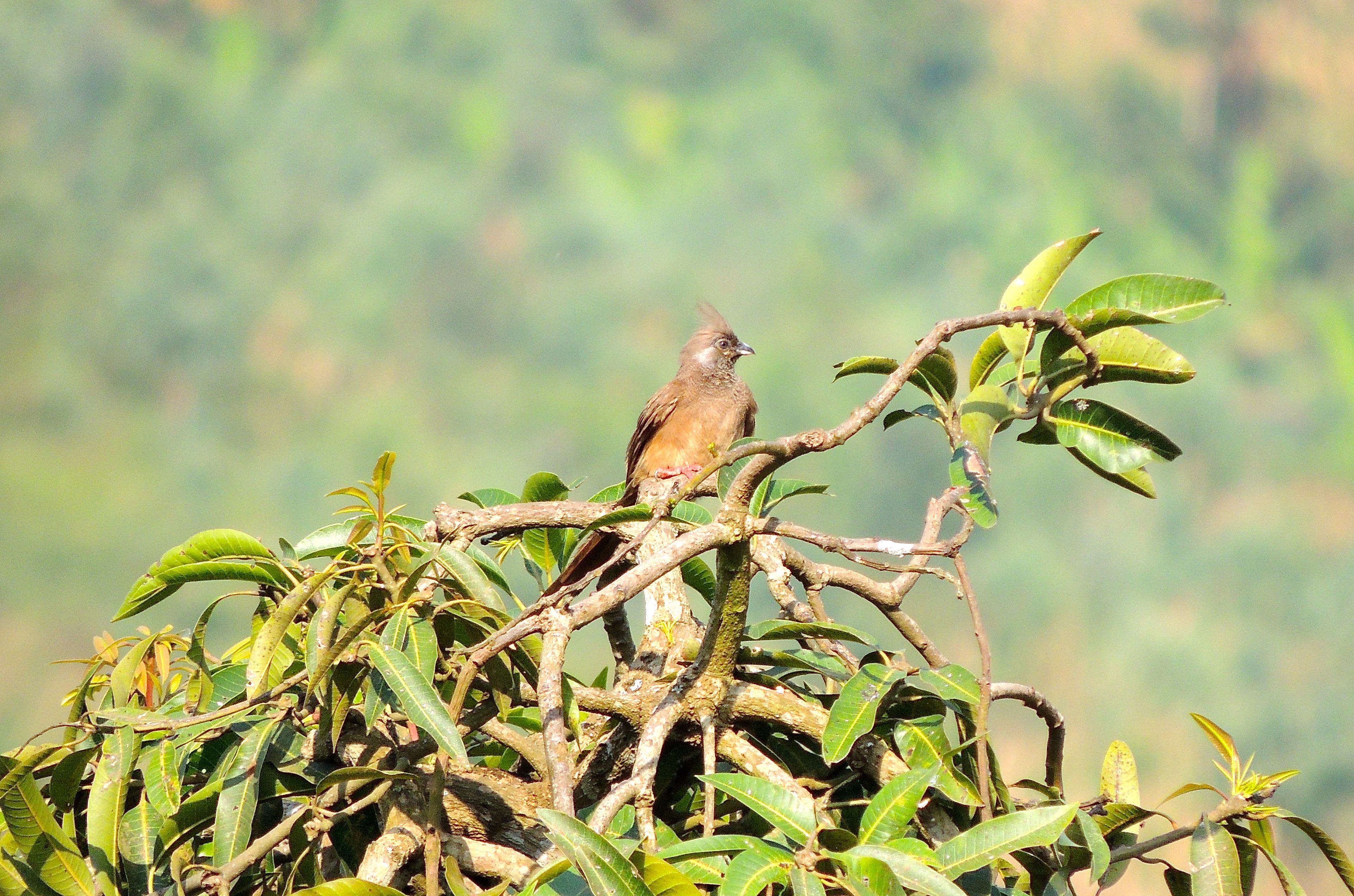 Speckled Mousebird - Photo by William Young
Speckled Mousebird - Photo by William YoungTrogons
We saw both species of Uganda trogons, who look alike. The Narina Trogon is red underneath, green on back, and has a white undertail. The Bar-tailed Trogon looks similar but has a barred undertail. Trogons often sit still, and if you find one facing you in the open, you can watch it for awhile. We found a Narina on the Community Trail in Ruhija, and it eventually hopped into the open. We had our best looks at a Bar-tailed at Bwindi, where we saw four of them. We scoped one, and I could see the barring on the side of the tail which looked like a serrated edge.
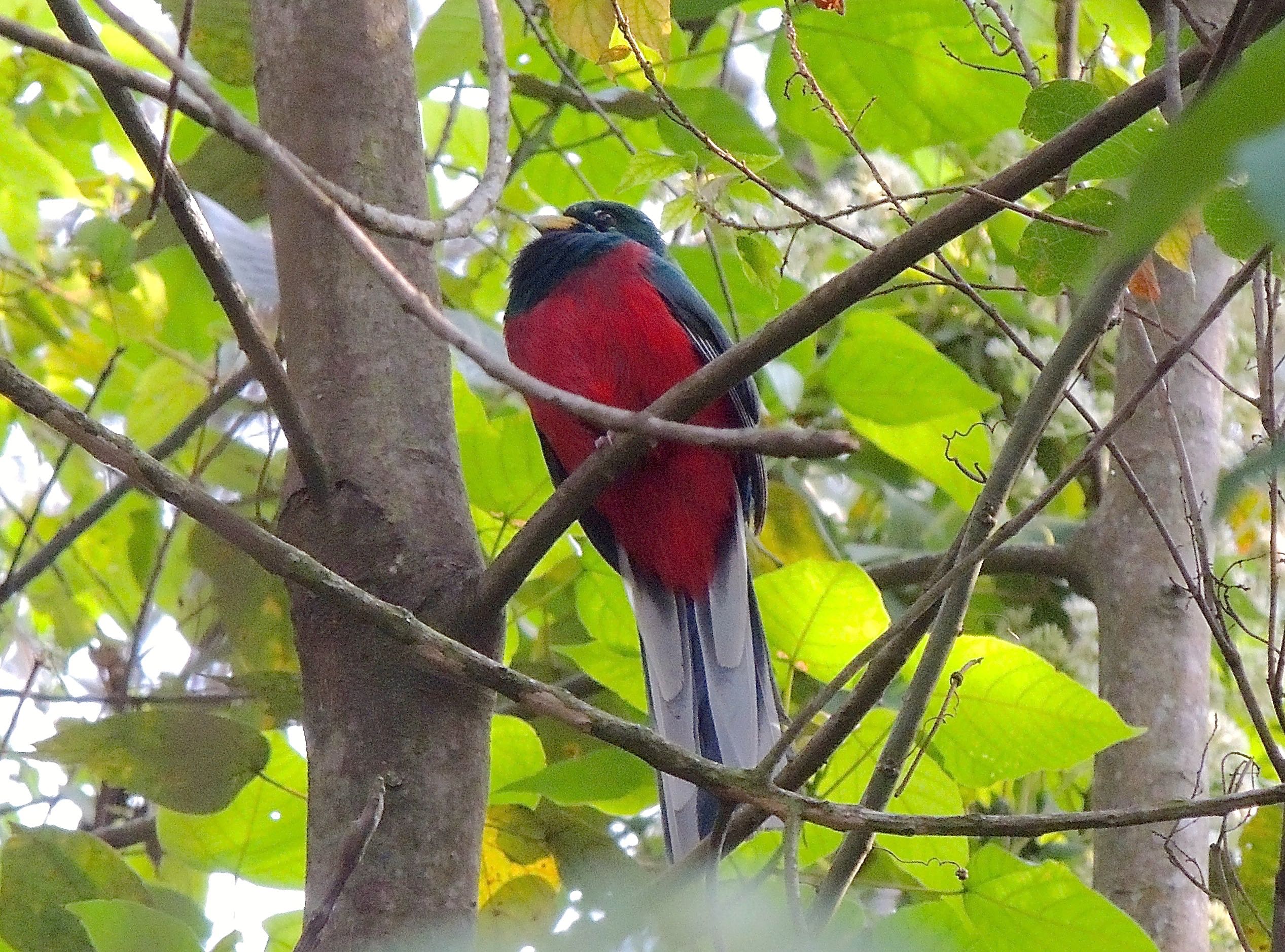 Narina Trogon - Photo by William Young
Narina Trogon - Photo by William YoungHoopoes, Wood-Hoopoes, Scimitarbills
I had nice looks at Eurasian Hoopoes, including a pair at the entrance to the Ziwa Rhino Sanctuary. They have a lot of character, with their long curved bill on the front of their head and long curved crest at the back. I saw the white on the outerwing when one flew, which is a distinguishing fieldmark from the African Hoopoe. I can see why the Israelis selected it as their national bird. The same day, we saw Green Wood-Hoopoes, who are dark with a shorter curved bill, but a similar white crescent on the wings. At Queen Elizabeth NP, we saw a couple Black Scimitar-bills, who are black with a long curved bill and white wing crescents in flight.
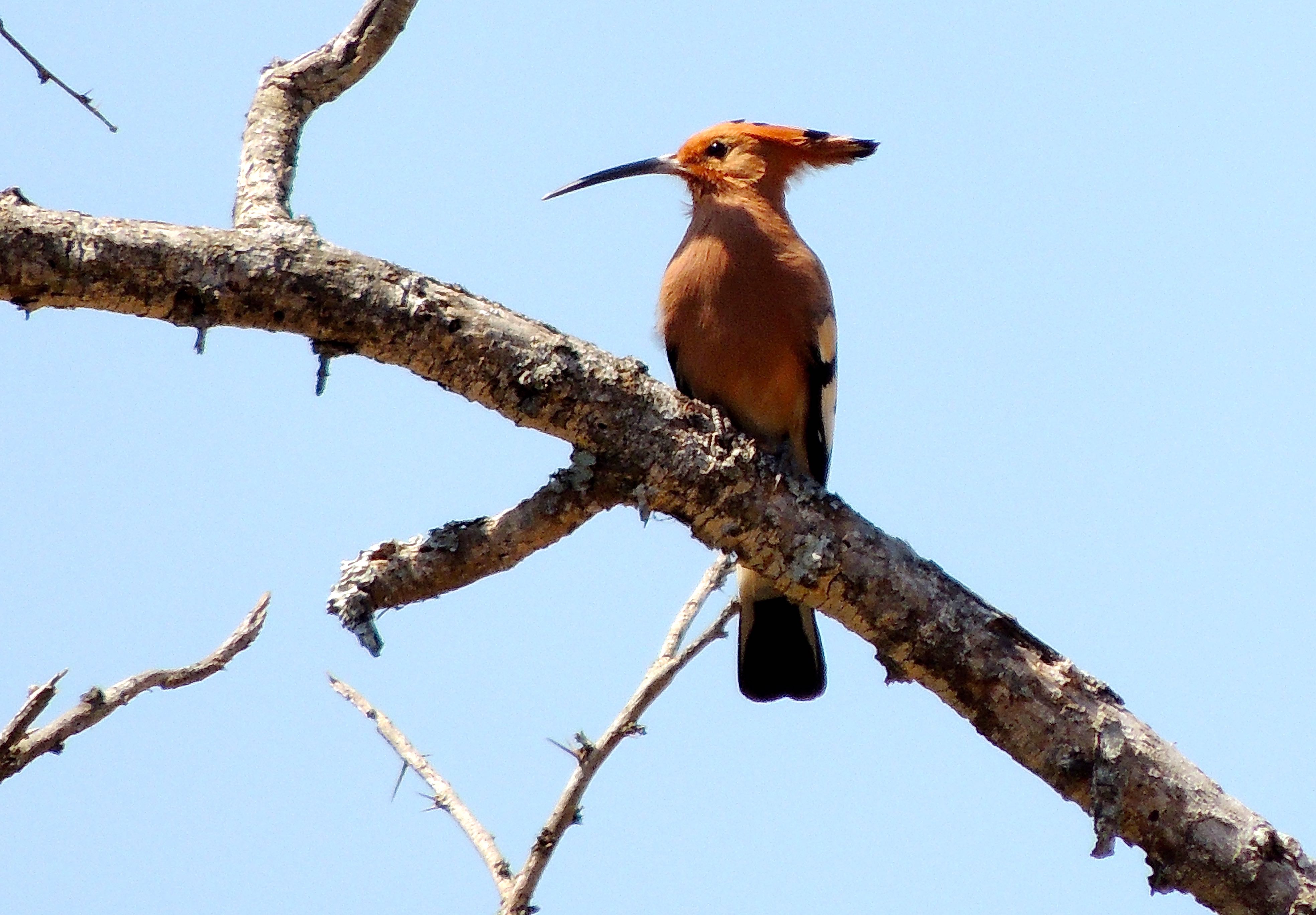 Eurasian Hoopoe - Photo by William Young
Eurasian Hoopoe - Photo by William YoungHornbills and Ground Hornbills
Hornbills look prehistoric and range in size from smallish to huge. The large ones have slow wingbeats, and some guides can identify hornbills from the sound of their wings in flight. The ground hornbills are in a different family than the other hornbills. At the beginning of the trip, we saw a lot of Abyssinian Ground Hornbills. Almost all of them were in male-female pairs. The males have blue and red skin on their face, while the females have only blue. We saw some walking in an area that had just been burnt, hoping to find food in the ashes. At Murchison Falls NP, we saw more than forty over a two-day period. We saw one group trying to eat what looked like a small antelope. I did not know they were scavengers.
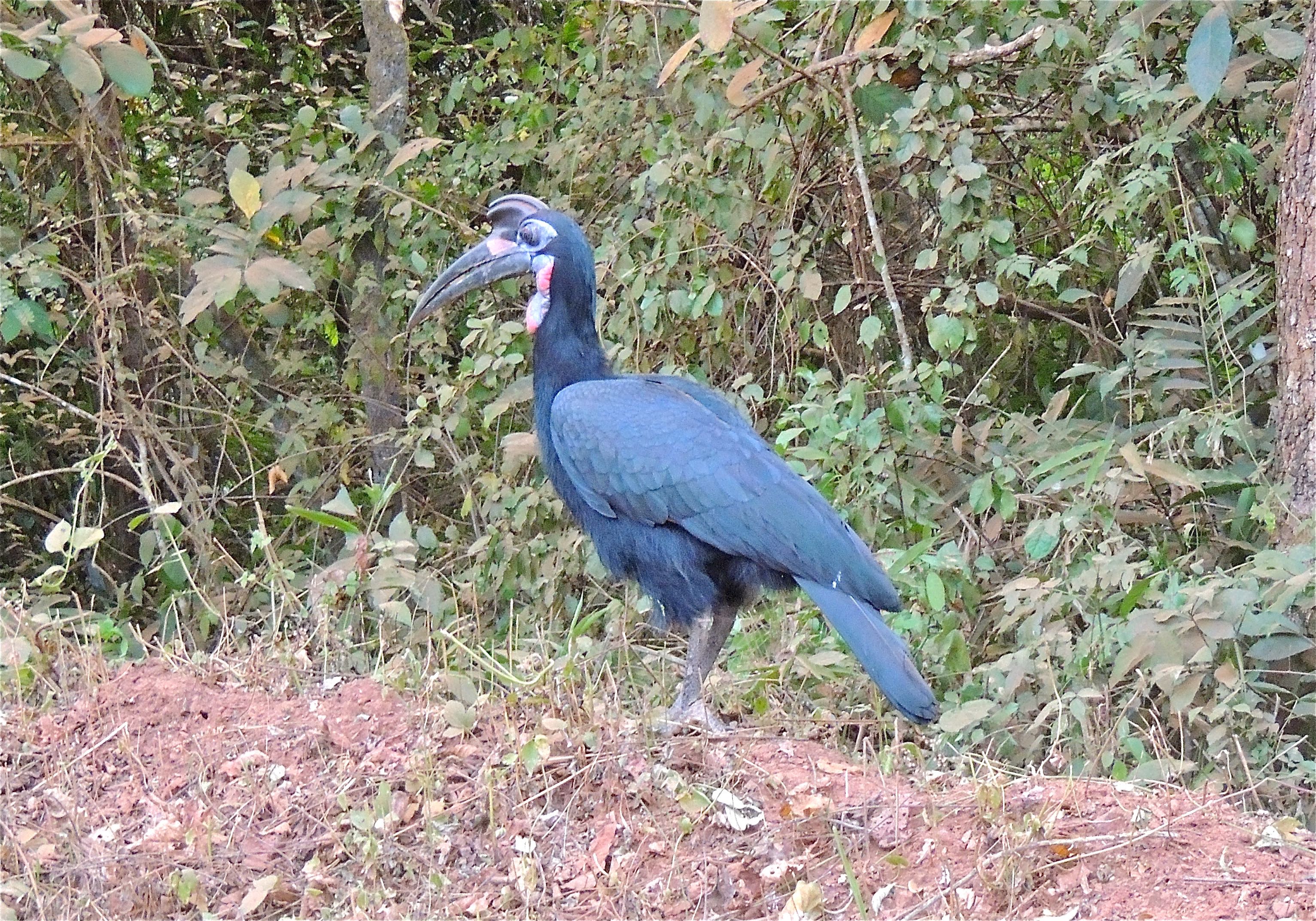 Abyssinian Ground Hornbill Male - Photo by William Young
Abyssinian Ground Hornbill Male - Photo by William Young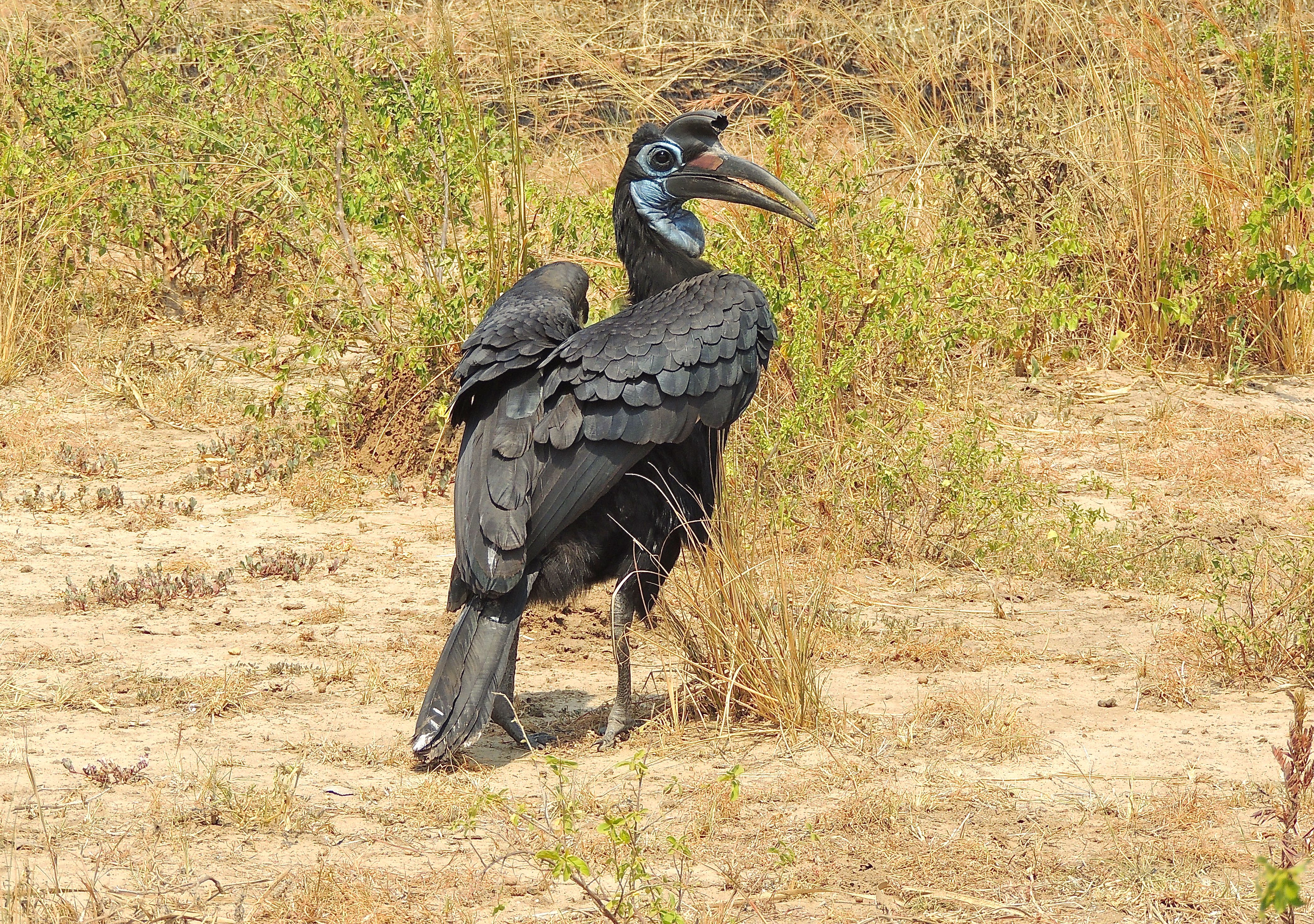 Abyssinian Ground Hornbill Female - Photo by William Young
Abyssinian Ground Hornbill Female - Photo by William YoungThe hornbill seen on the most days was the Black-and-white-casqued. It is very large with a two-color casque. They utter a funny one-syllable noise which is quite loud. At the Entebbe Botanical Gardens, a male landed in a tree almost right over my head. We frequently saw them in male-female pairs — the female does not have a casque on her bill. The White-thighed Hornbill looks similar, but its tail is all white with a black horizontal bar, unlike the tail of the Black-and-white-casqued which is half black and half white. The casque on the White-thighed is smaller and points forward so that it almost looks like a second bill. Sometimes the casque grows to be the same length or longer than the bill. Also at Semliki we saw Black-casqued (Wattled) Hornbills. The pair we found was making a lot of noise and was wary, and we had difficulty getting a clear look at them. They are the largest of the three species, and their only white feathering is at the end of the tail. They resemble a ground hornbill. One had a brownish face. On the road at Semliki, we saw Piping Hornbills, who are black-and-white, but a little smaller than the previous three. They are named for one of their vocalizations. I saw African Gray Hornbills on six days. They are gray with a long white supercilium. The African Pied Hornbill has a yellow bill, while the Crowned Hornbill has a red bill; otherwise, the two species look similar. We saw a pair of Crowned Hornbills in good light on the road to the Bigodi Wetlands, and I could see the crown. Their heads seem to glisten.
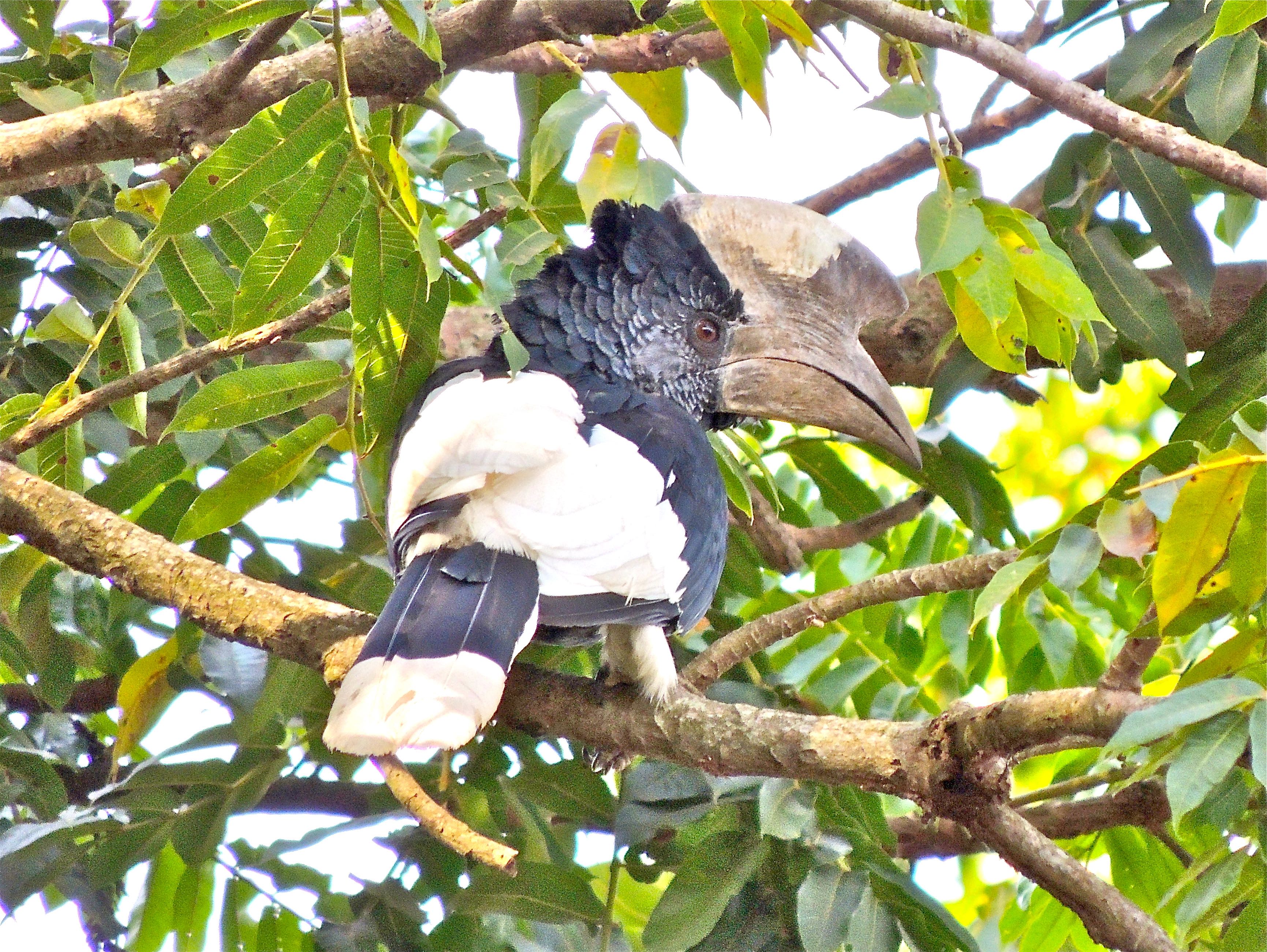 Black-and-white-casqued Hornbill Male - Photo by William Young
Black-and-white-casqued Hornbill Male - Photo by William Young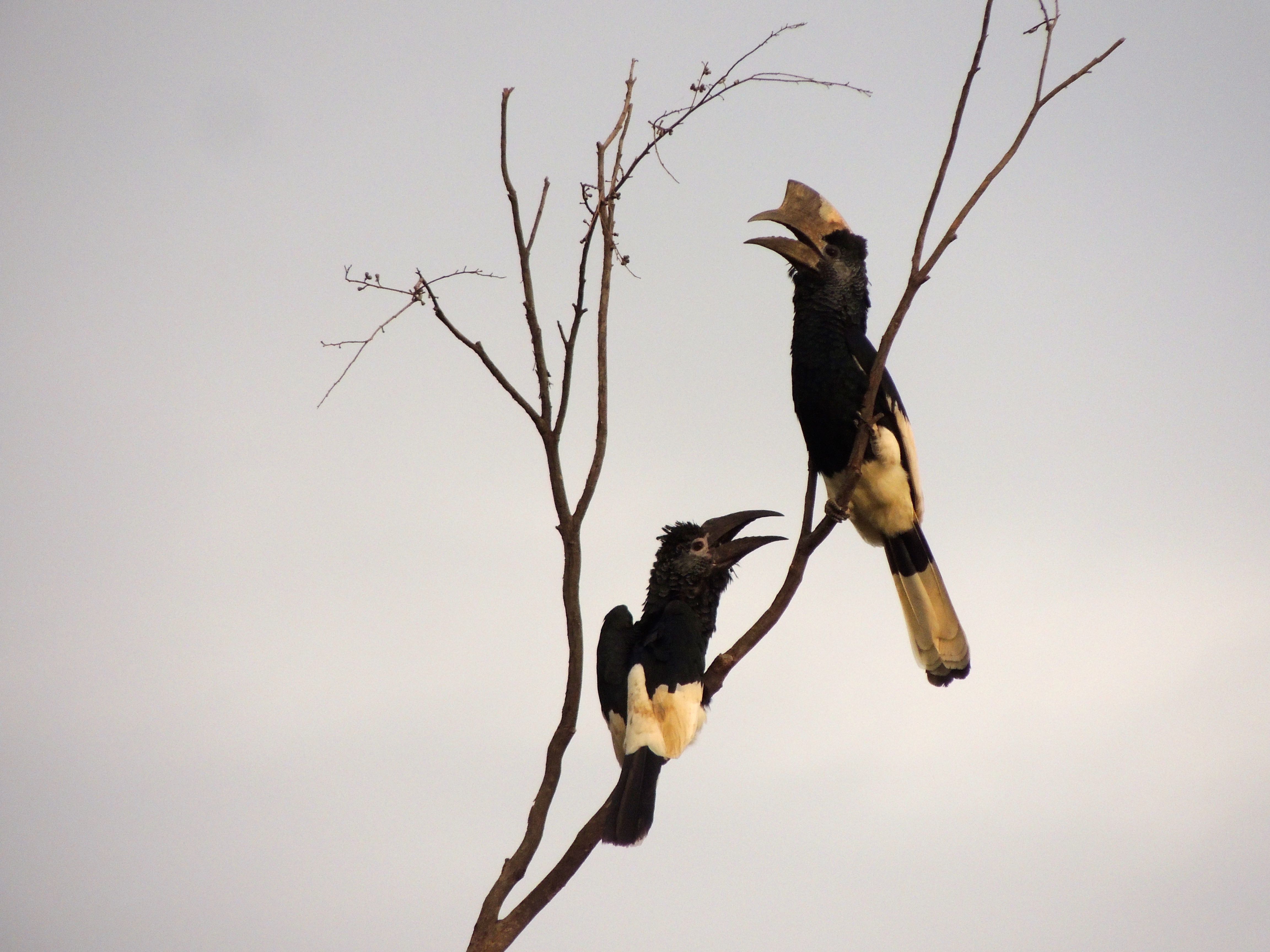 Black-and-white-casqued Hornbill Female (left) and Male - Photo by William Young
Black-and-white-casqued Hornbill Female (left) and Male - Photo by William Young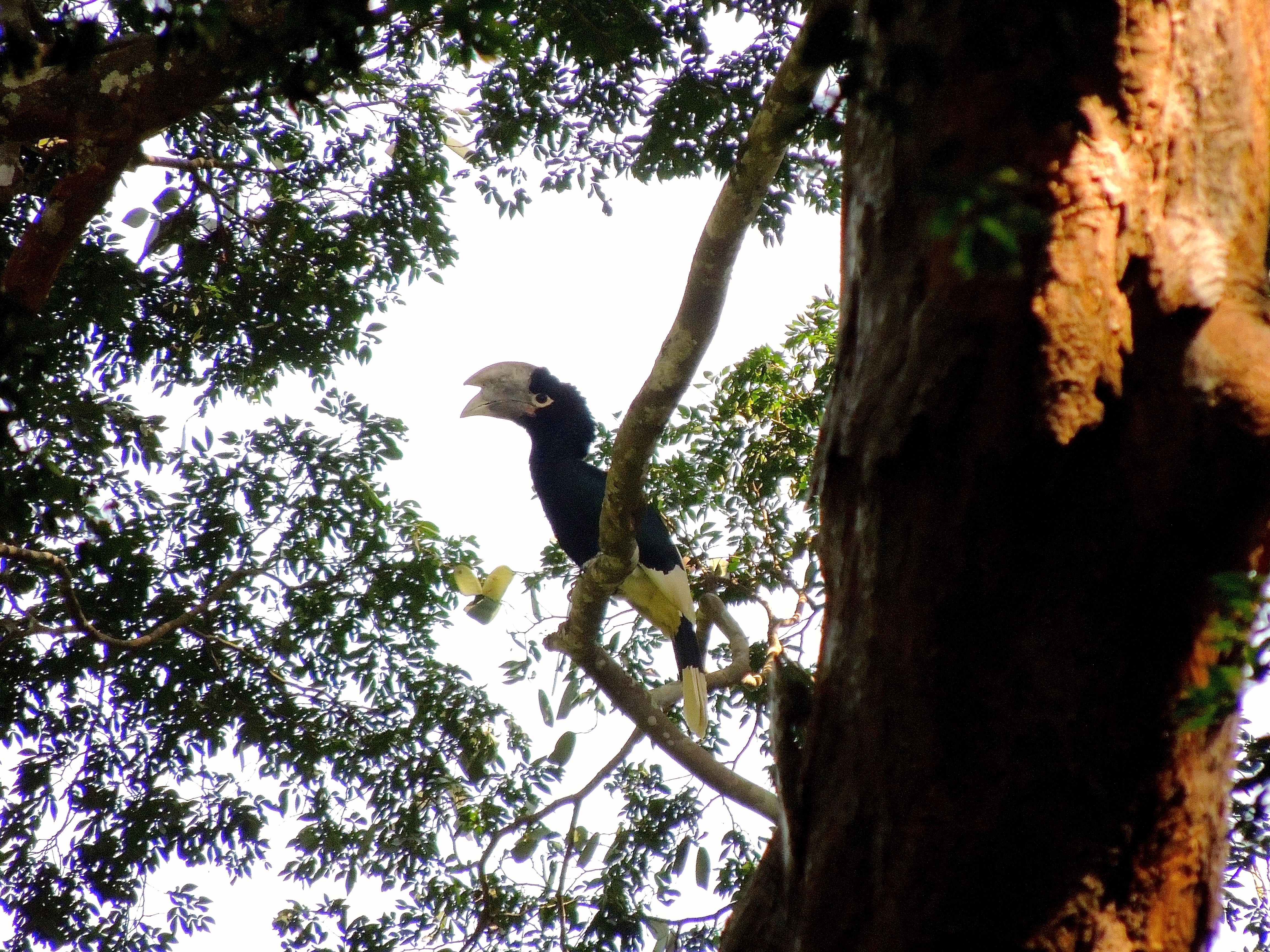 White-thighed Hornbill - Photo by William Young
White-thighed Hornbill - Photo by William Young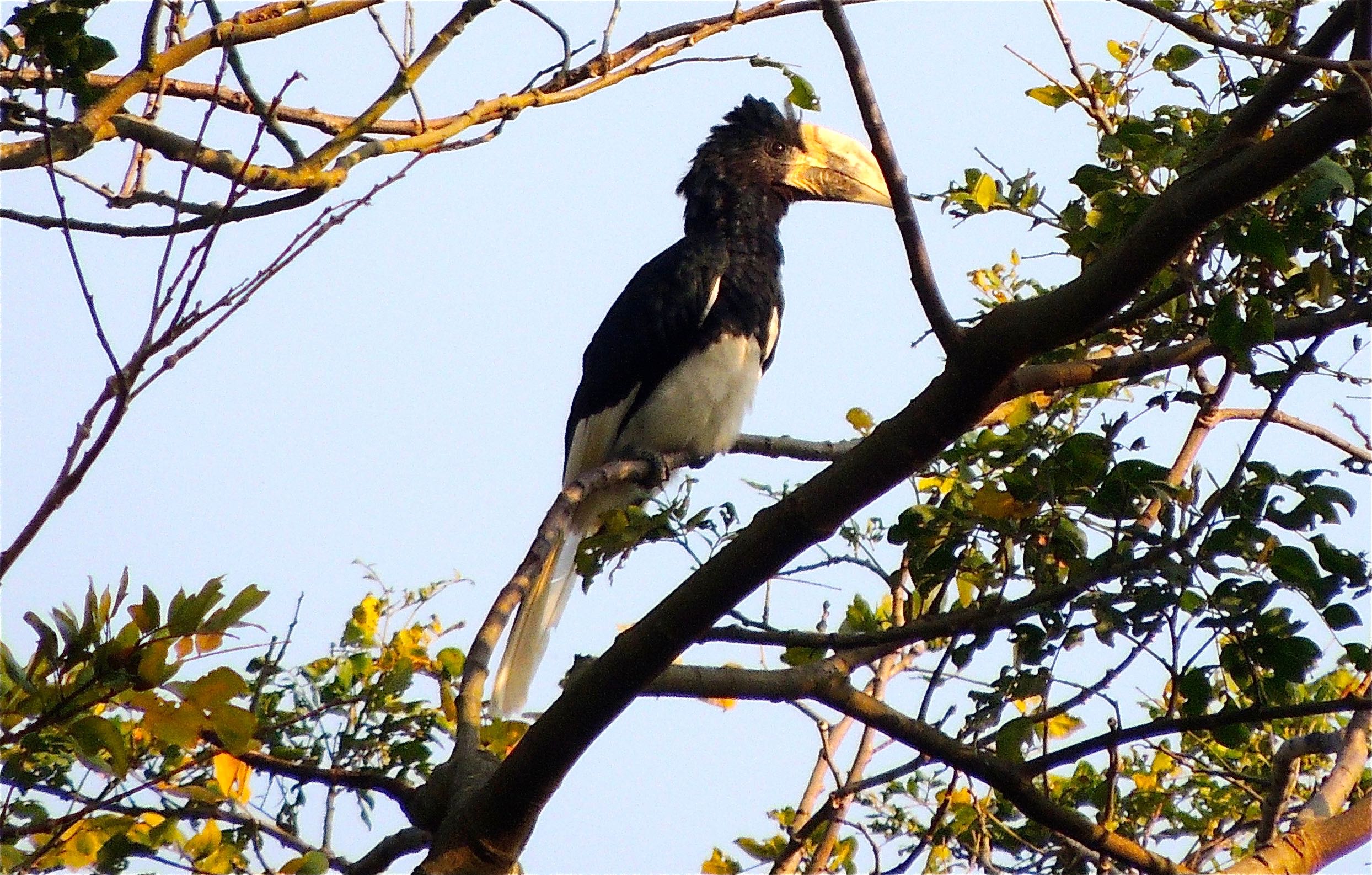 Piping Hornbill - Photo by William Young
Piping Hornbill - Photo by William YoungKingfishers
I saw ten different kingfishers. At Lake Mburo, we had a close look at a Giant Kingfisher. It is a big, beautiful bird, but the name "giant" involves overstatement, just as with the Giant Nuthatch in Thailand. It is rufous below and has a black-and-white pattern on the back that looks smudged and dirty. It stayed still as we approached and acted as if we were not there. I saw it fly after we left. We previously had a quick look at one on our second boat ride in the Nile. We saw some kingfishers in good numbers. Pied Kingfishers were abundant when we were near water. On three different days, we saw 100, 300, and 500. The first species I saw on January 1 was a Woodland Kingfisher. We saw them on 11 of the first 14 days of the trip. They have beautiful aquamarine plumage and a red bill. They are one of the birds in the kingfisher/roller/starling group who show a flash of electric blue when they fly. We saw Gray-headed Kingfishers on 11 of the first 14 days of the trip, with a lot of them perched on wires. Some days, we saw 20 or 30. They have a gray hood and rufous underparts. We saw fewer Striped Kingfishers, but I saw them on ten days of the trip. They are smaller than the Woodland and Gray-headed, and they have a dark bill. They look a little dirty. On the Royal Mile, we saw a Chocolate-backed Kingfisher. It has a red bill, brown back, and a blue stripe on each wing. The one we saw was sitting among sticks. The song of the Chocolate-backed sounds almost exactly like the song of the Streak-chested Antpitta I heard in Panama. On the Royal Mile, we had long, close looks at a Blue-breasted Kingfisher. It looks a bit like a Woodland, with the coloring more saturated. It stayed in the same tree for a long time, except for a brief moment when it shot down to pick off a moth before returning to the same perch.
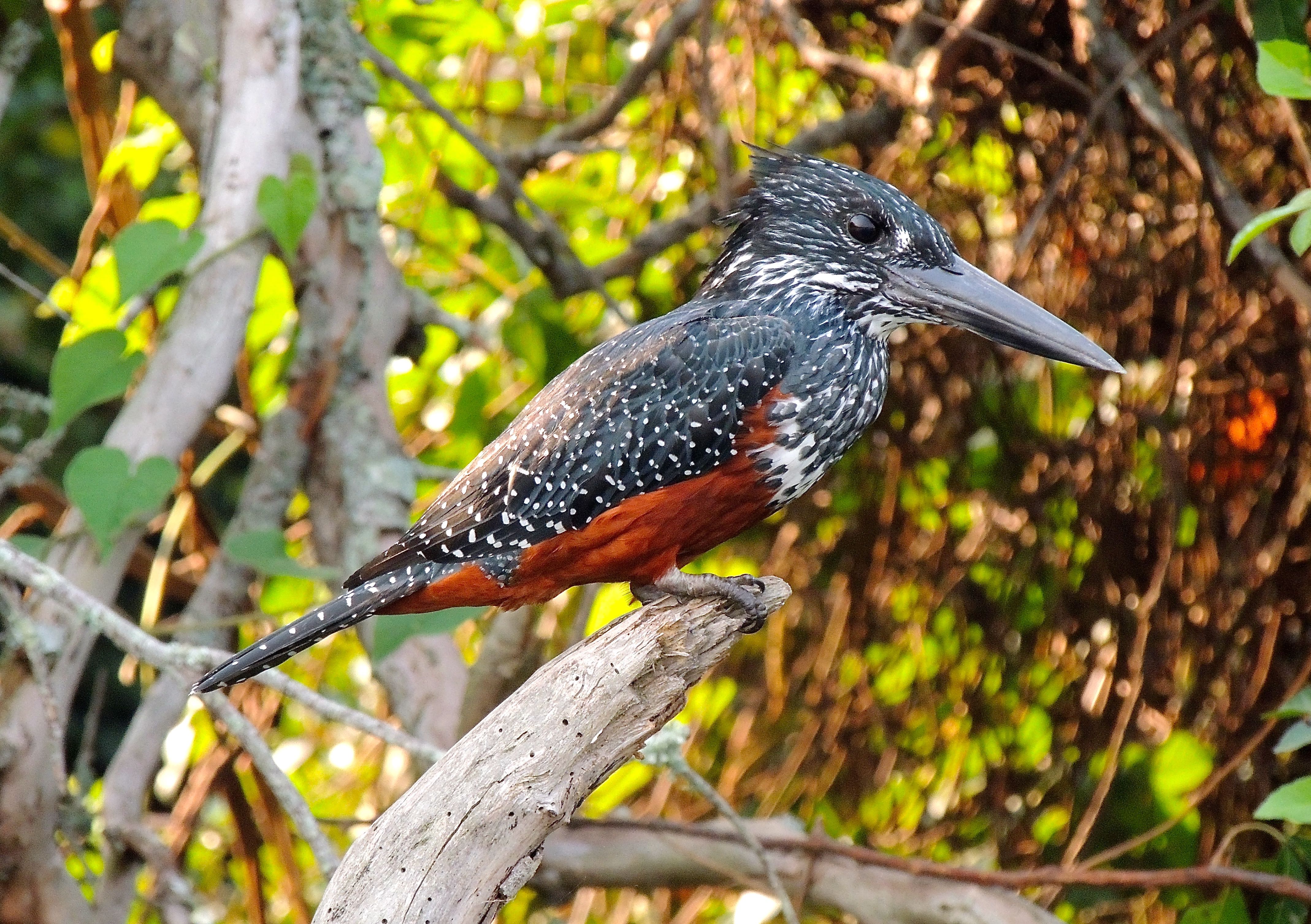 Giant Kingfisher - Photo by William Young
Giant Kingfisher - Photo by William Young Pied Kingfisher - Photo by William Young
Pied Kingfisher - Photo by William Young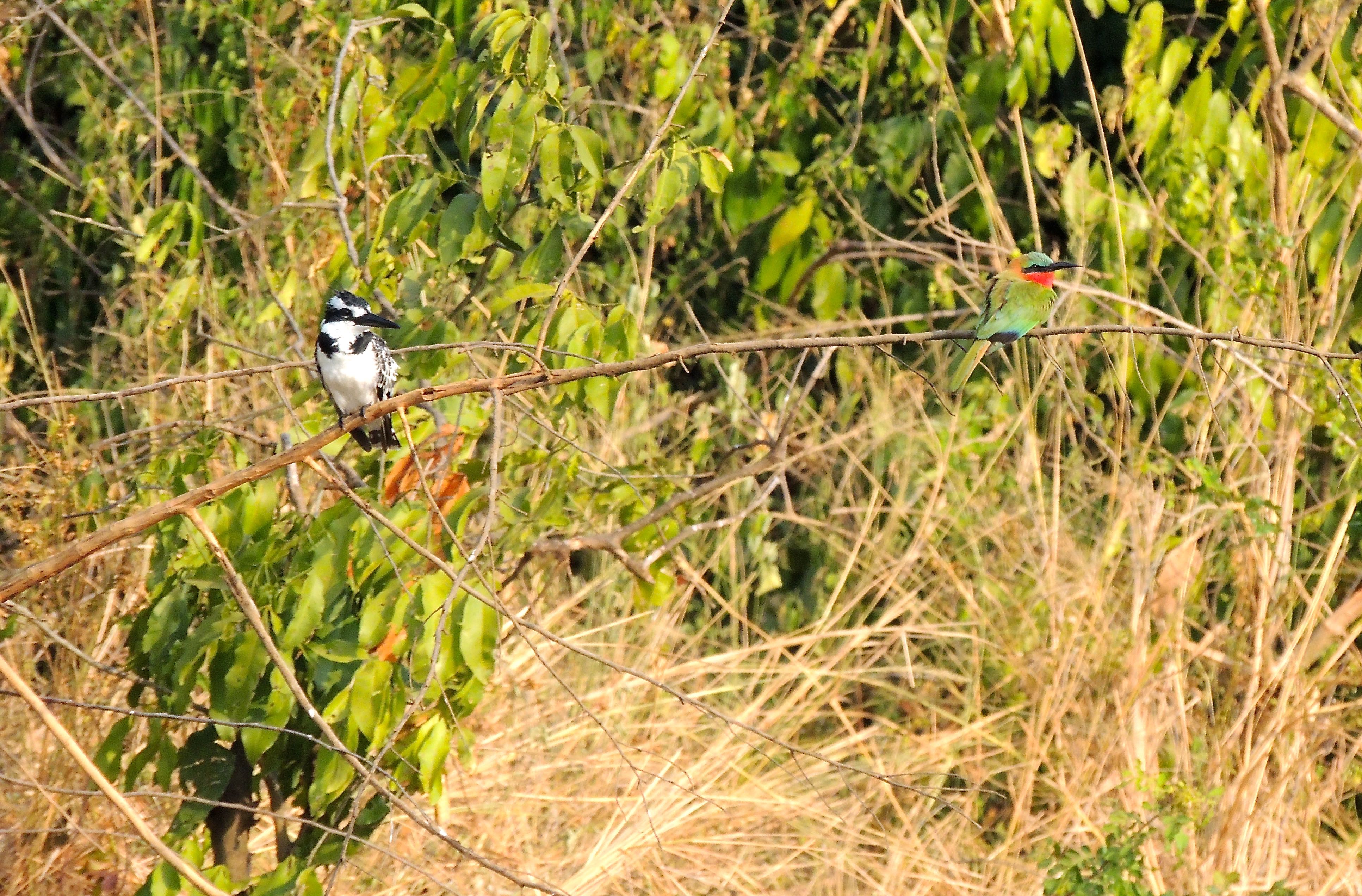 Pied Kingfisher and Red-throated Bee-eater - Photo by William Young
Pied Kingfisher and Red-throated Bee-eater - Photo by William Young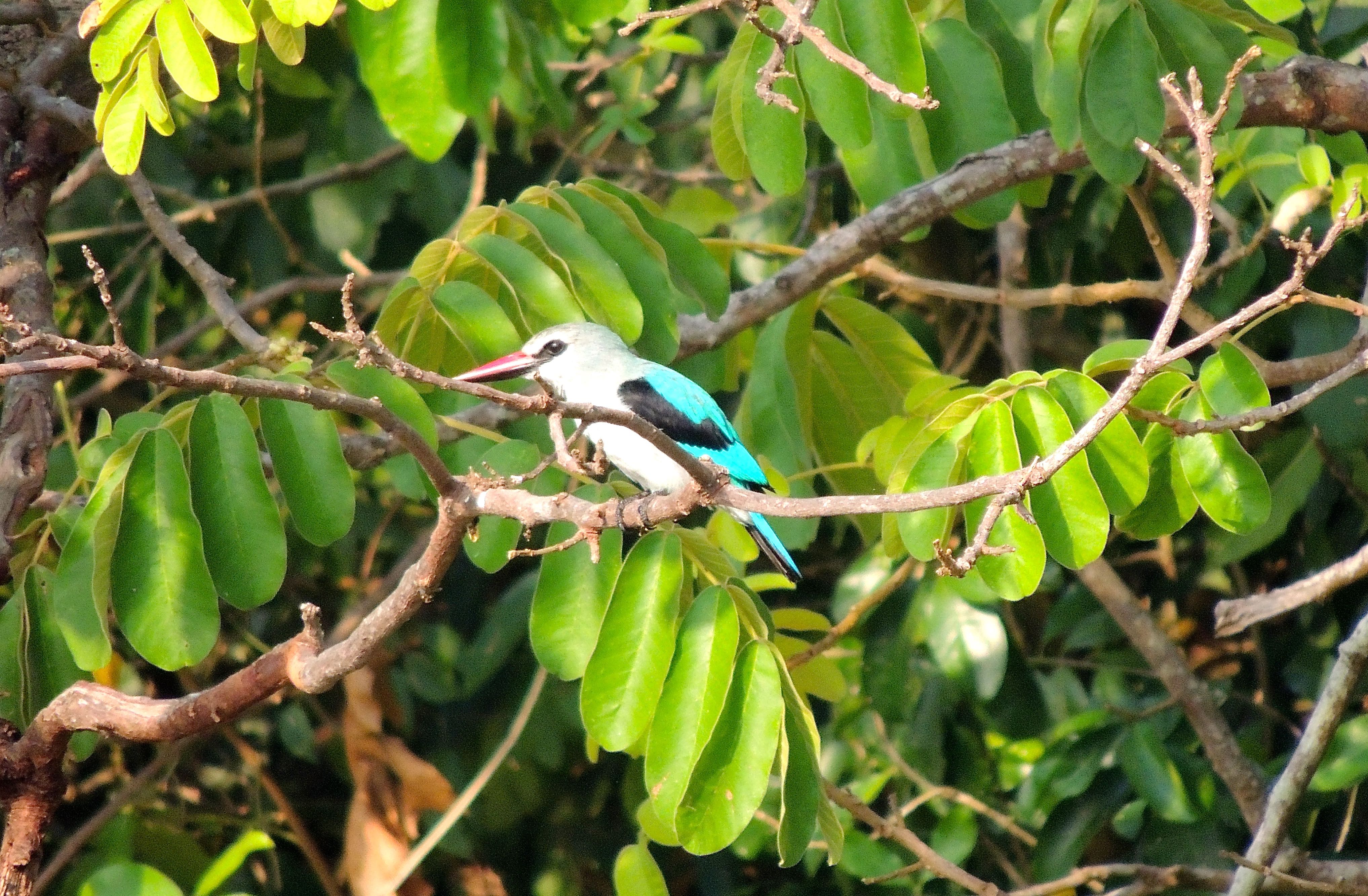 Woodland Kingfisher - Photo by William Young
Woodland Kingfisher - Photo by William Young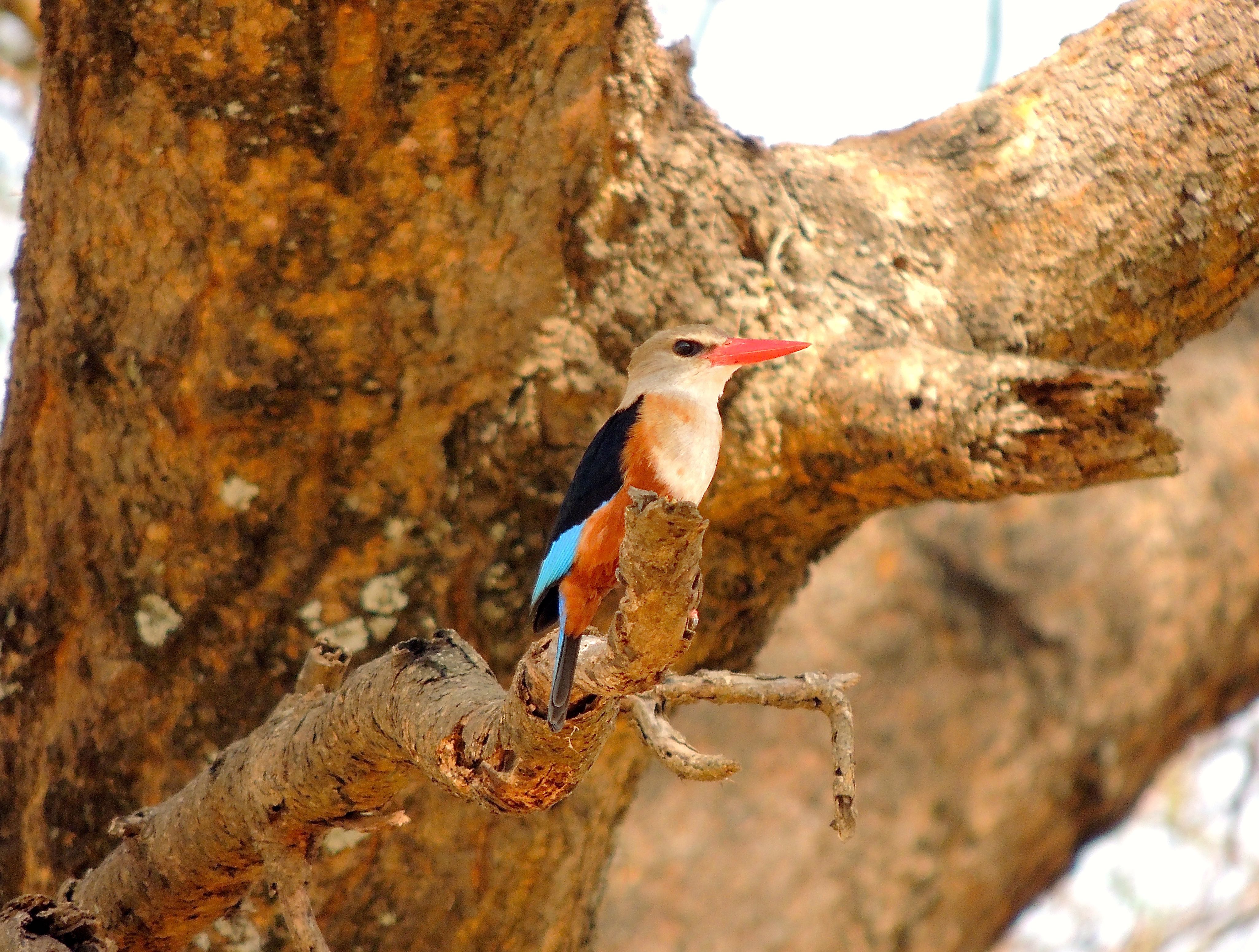 Gray-headed Kingfisher - Photo by William Young
Gray-headed Kingfisher - Photo by William Young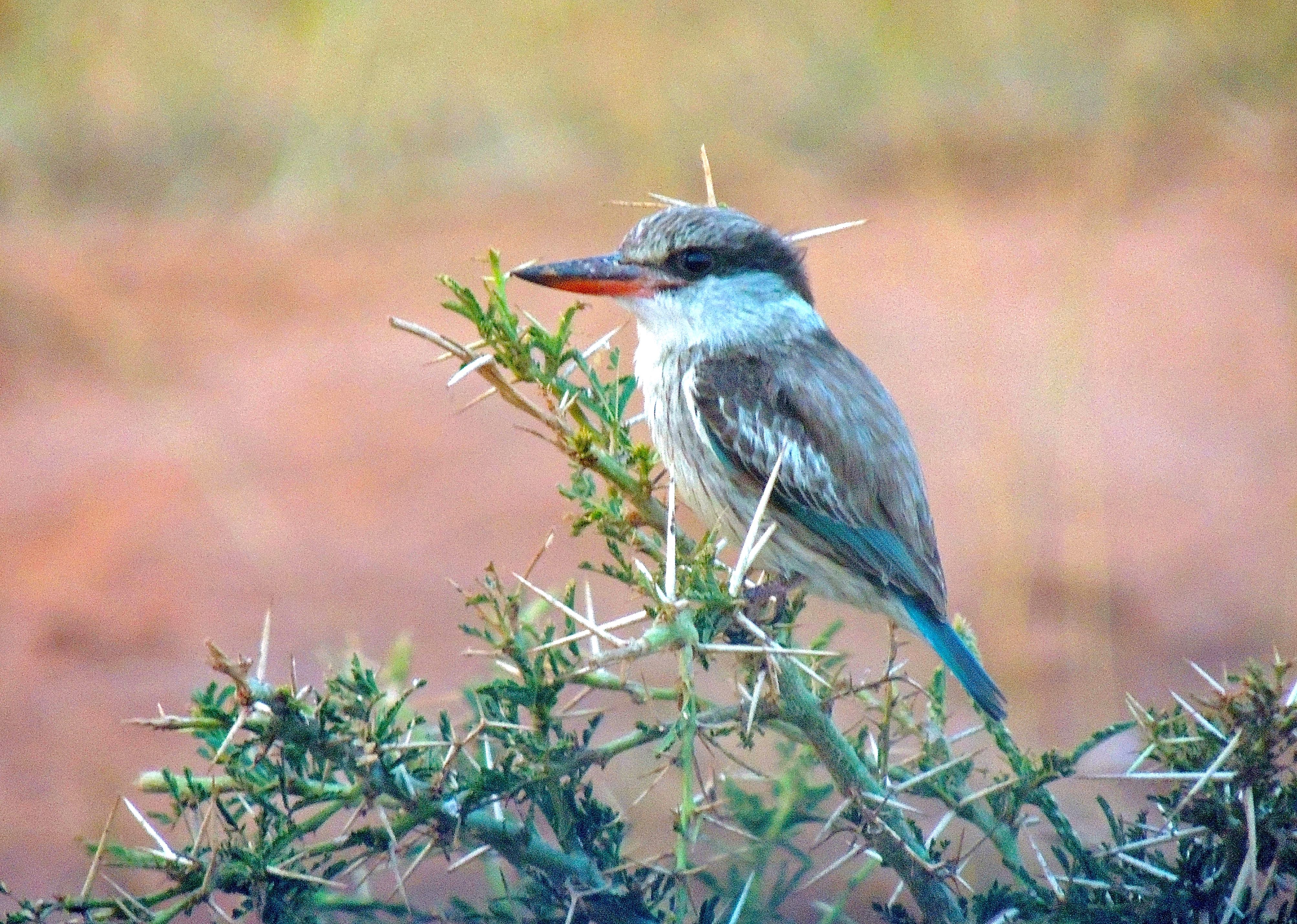 Striped Kingfisher - Photo by William Young
Striped Kingfisher - Photo by William Young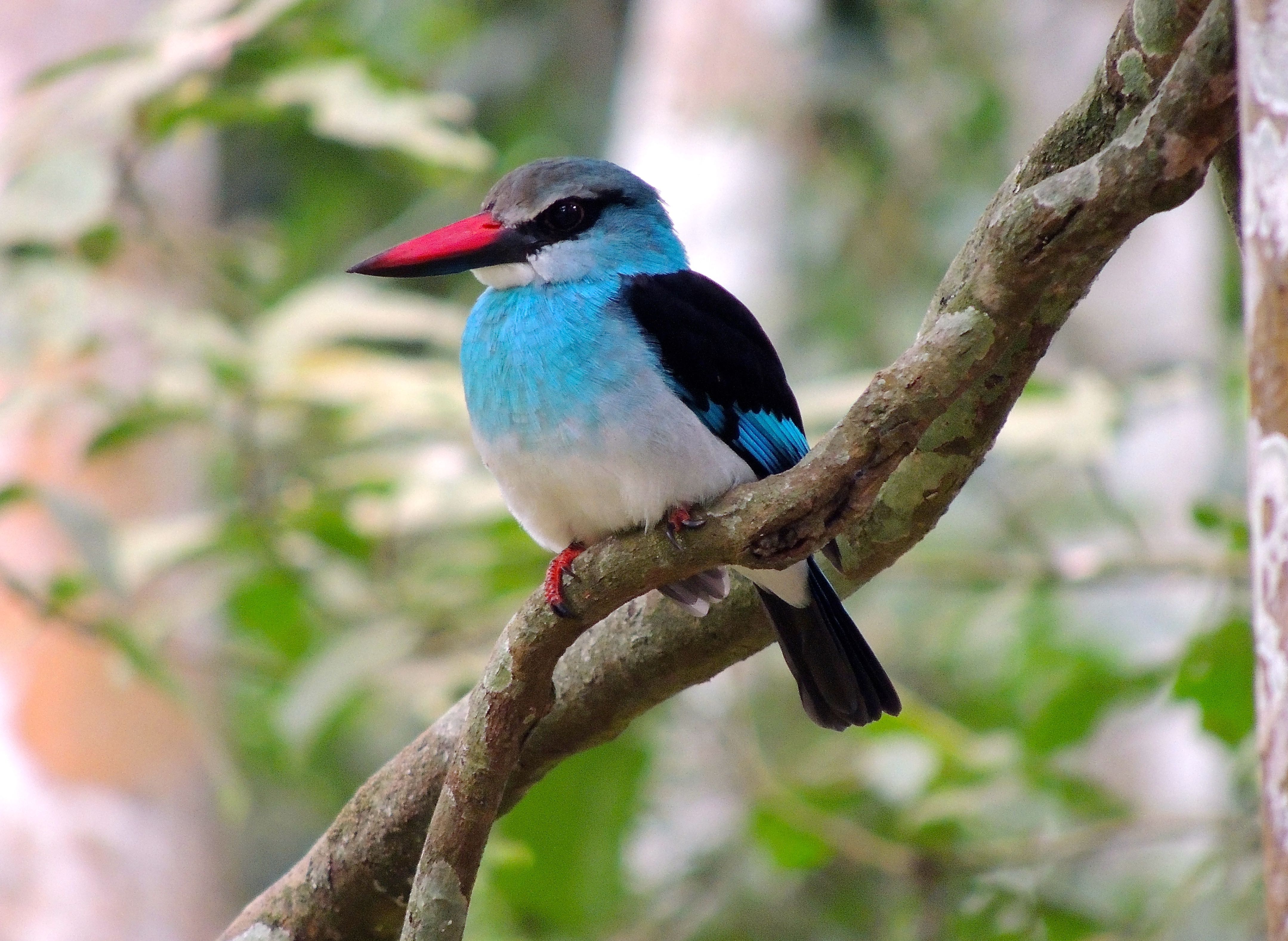 Blue-breasted Kingfisher - Photo by William Young
Blue-breasted Kingfisher - Photo by William YoungThe jewels among the kingfishers are the little ones. They all seem nervous, and they fly very quickly. We saw a lot of Malachite Kingfishers on our first Nile boat ride, but it was difficult to get a good look at one. On Lake Mburo, they were much more cooperative, and I had long close looks at the mottling on the head. They also were easy to see at Mabamba. On the Kazinga cruise, Crammy showed me a leucistic Malachite Kingfisher. Leucism results from an absence of melanin in a bird's feathers, making the feathers white or light-colored. Leucism can result in either all or some of the feathers being white or light-colored. This kingfisher was pure white, with a red bill. Even though the Malachite Kingfisher is not rare, a pure leucistic one is exceptionally rare. At Bigodi Wetlands, we saw a White-bellied Kingfisher, who is a little bigger than the Malachite and has a white belly. The African Pygmy Kingfisher is smaller than a sparrow. I had a good look at one in Semliki Forest. It looks like a slightly-smaller Malachite with a pink ear. I also had good looks at one near the registration area of the Kibale Guest Cottages.
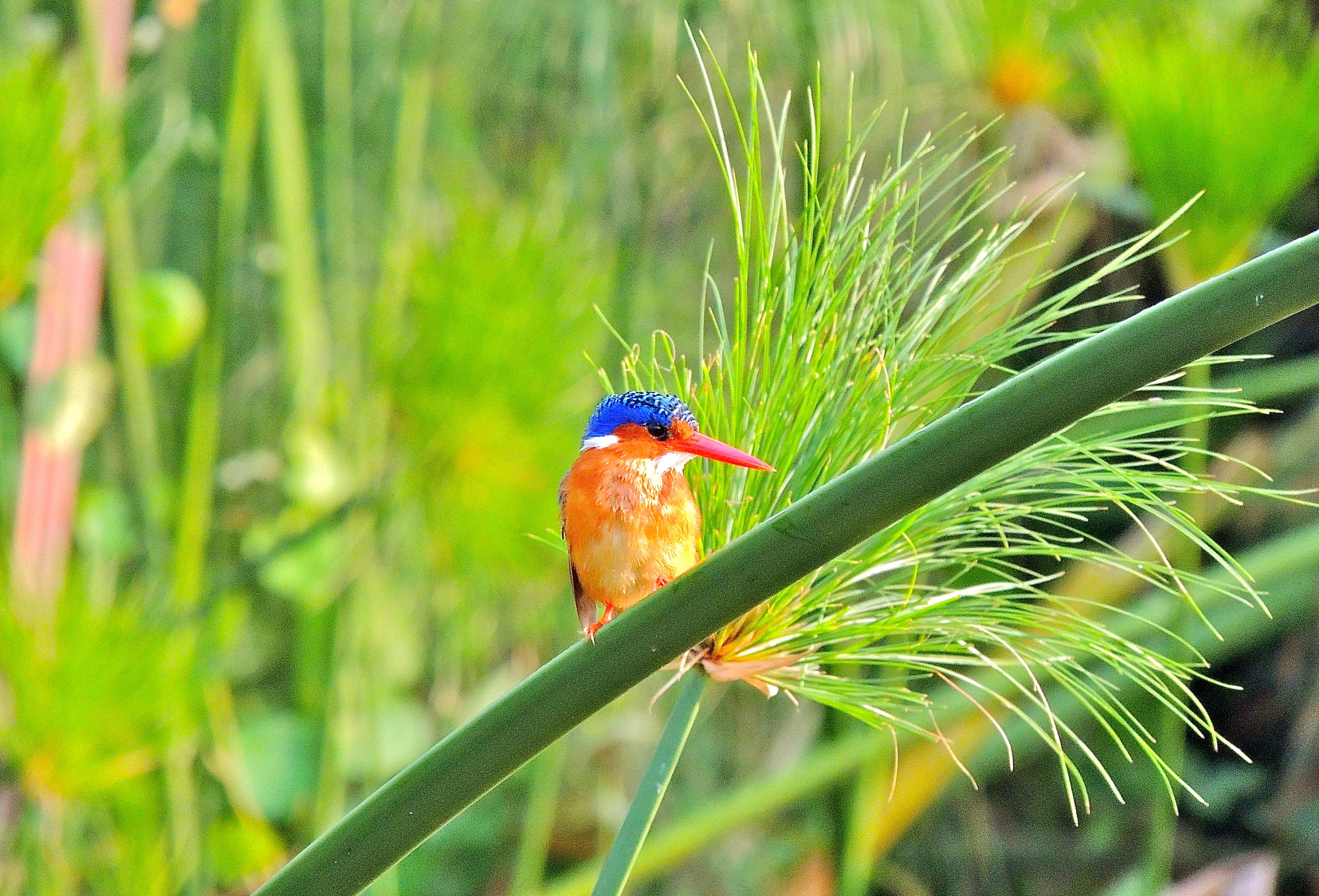 Malachite Kingfisher - Photo by William Young
Malachite Kingfisher - Photo by William Young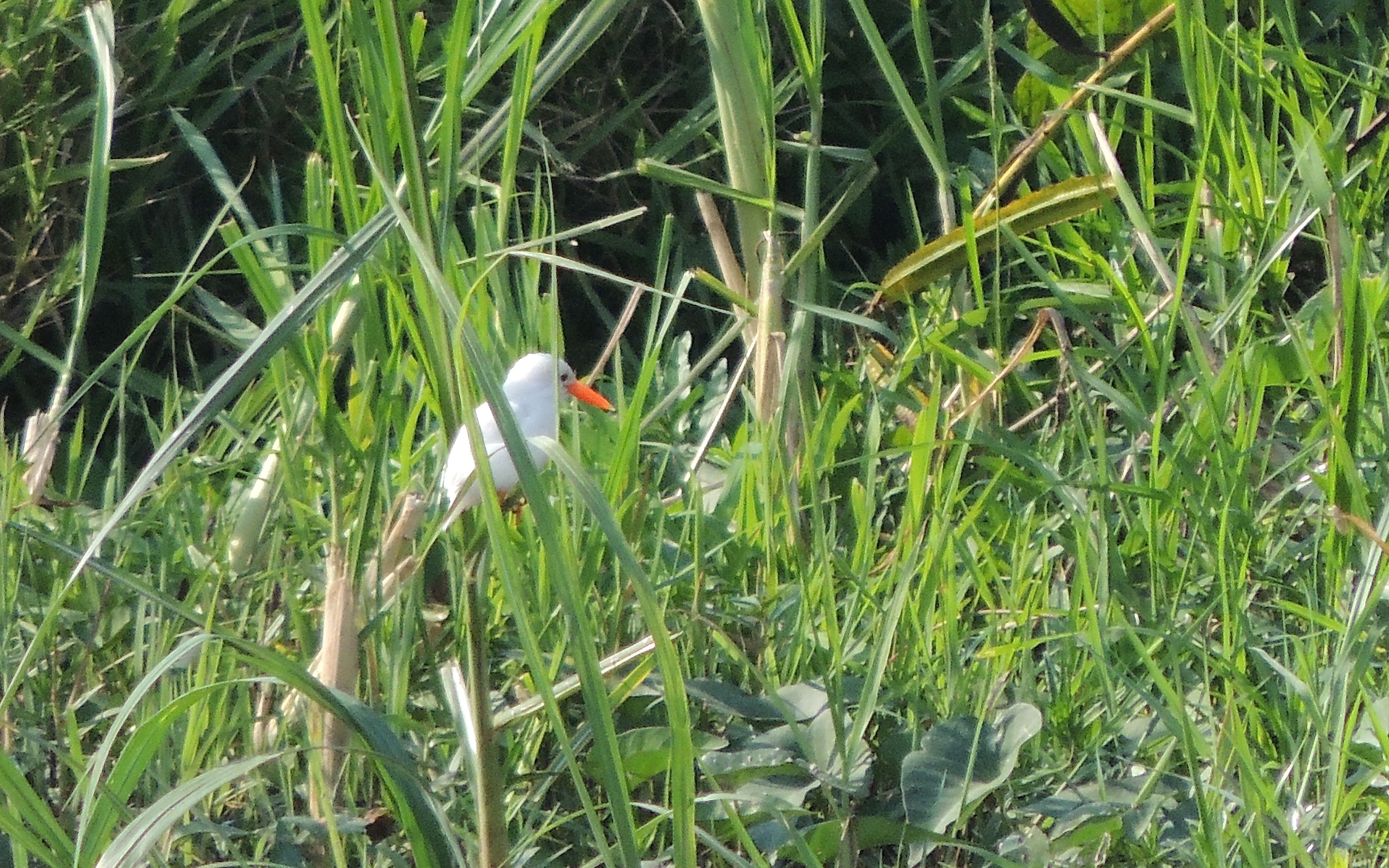 Leucistic Malachite Kingfisher - Photo by William Young
Leucistic Malachite Kingfisher - Photo by William Young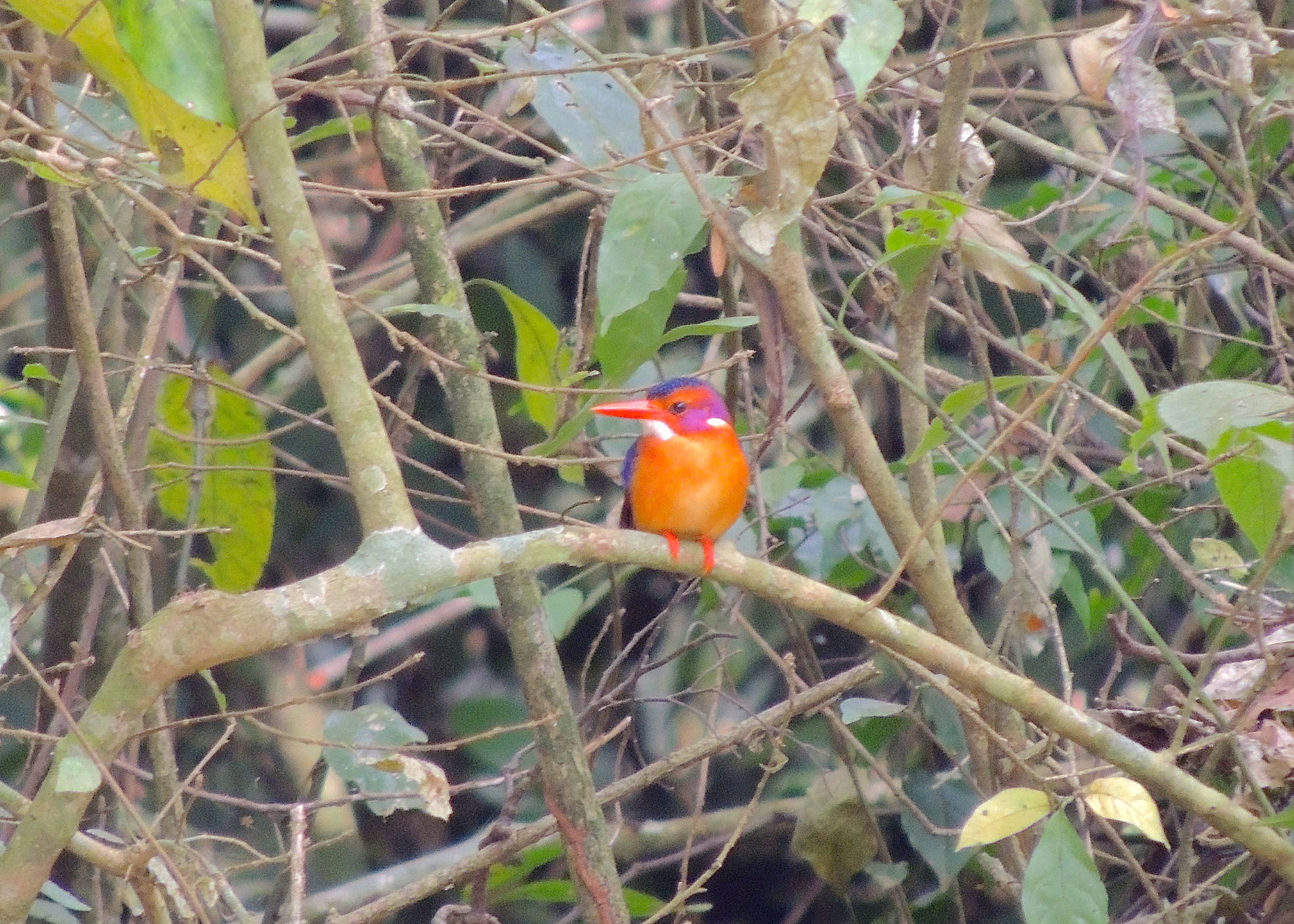 African Pygmy Kingfisher - Photo by William Young
African Pygmy Kingfisher - Photo by William YoungBee-eaters
The bee-eaters were my second favorite bird family, after the turacos. We saw ten species, and most were gorgeous. Many are green or blue, and their underwings in flight sometimes appear golden if they are flying toward the sun. Some Northern Carmine Bee-eaters flew over when we were watching the Shoebill on the Nile, and we rode past some who were perched when we took the Nile cruise the following day. Their breast is the color of watermelon. Occasionally, we ran into a flock of flying European Bee-eaters, but I didn't see any perched. They are blue below. We saw Blue-cheeked Bee-eaters, and many looked more washed out than the ones I saw in Tanzania. White-throated Bee-eaters were common in some areas, and we drove past a lot of them on wires while we were heading back to Entebbe and on the trip to Mabamba. They have a long pointed tail and look light-colored. We saw Little Bee-eaters the day we drove to see the rhinos. They are a bit smaller than the other bee-eaters. The Cinnamon-chested and Blue-breasted Bee-eaters both look like slightly larger versions of the Little. The Cinnamon-chested was fairly common when we got to higher elevations. It has a deep cinnamon chest. We saw a pair at a stop on the way to the Bigodi Wetlands, and some were perched near the dining area at the New Havens Lodge. The Blue-breasted was the most common bee-eater at Mabamba. I could see a dark mark on the chest, but to distinguish it as blue rather than black would require seeing it in good light. Red-throated Bee-eaters were all over Murchison Falls NP. The day we took a game drive in the morning, we saw a couple hundred of them. I took a photo of one with a bee in its mouth. On our second Nile cruise, we saw a dirt cliff face where they and Pied Kingfishers had excavated nest holes. Parts of the dirt looked like Swiss Cheese. The Swallow-tailed Bee-eater has a yellow throat and a deeply forked tail. We saw some around Murchison Falls NP. My favorite was the Black Bee-eater. It has a black back, turquoise streaks on its black underparts, and a scarlet throat. It is stunning when seen in good light. We saw our first ones while driving out of Kibale. I was able to study more of them at Bwindi.
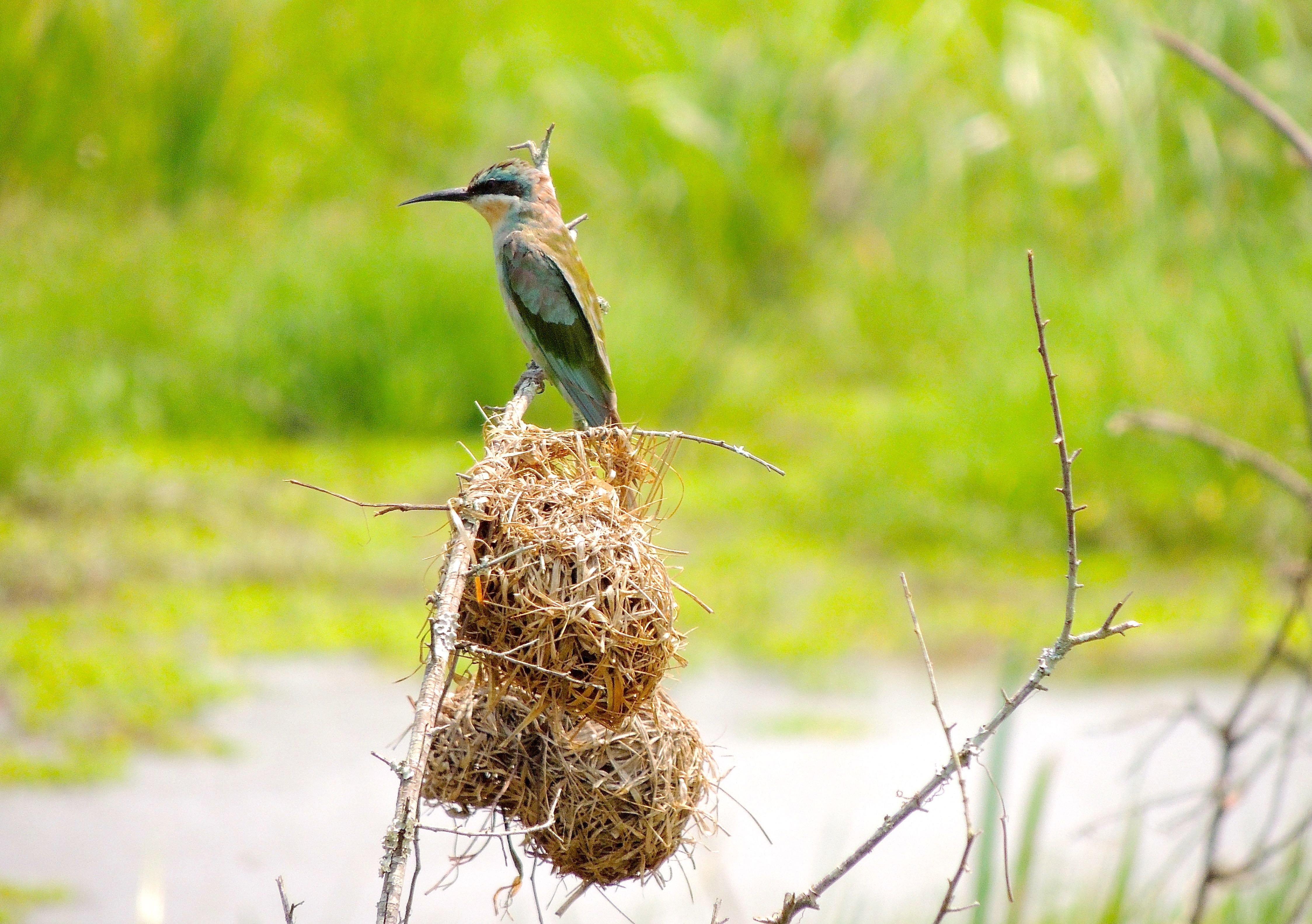 Blue-cheeked Bee-eater - Photo by William Young
Blue-cheeked Bee-eater - Photo by William Young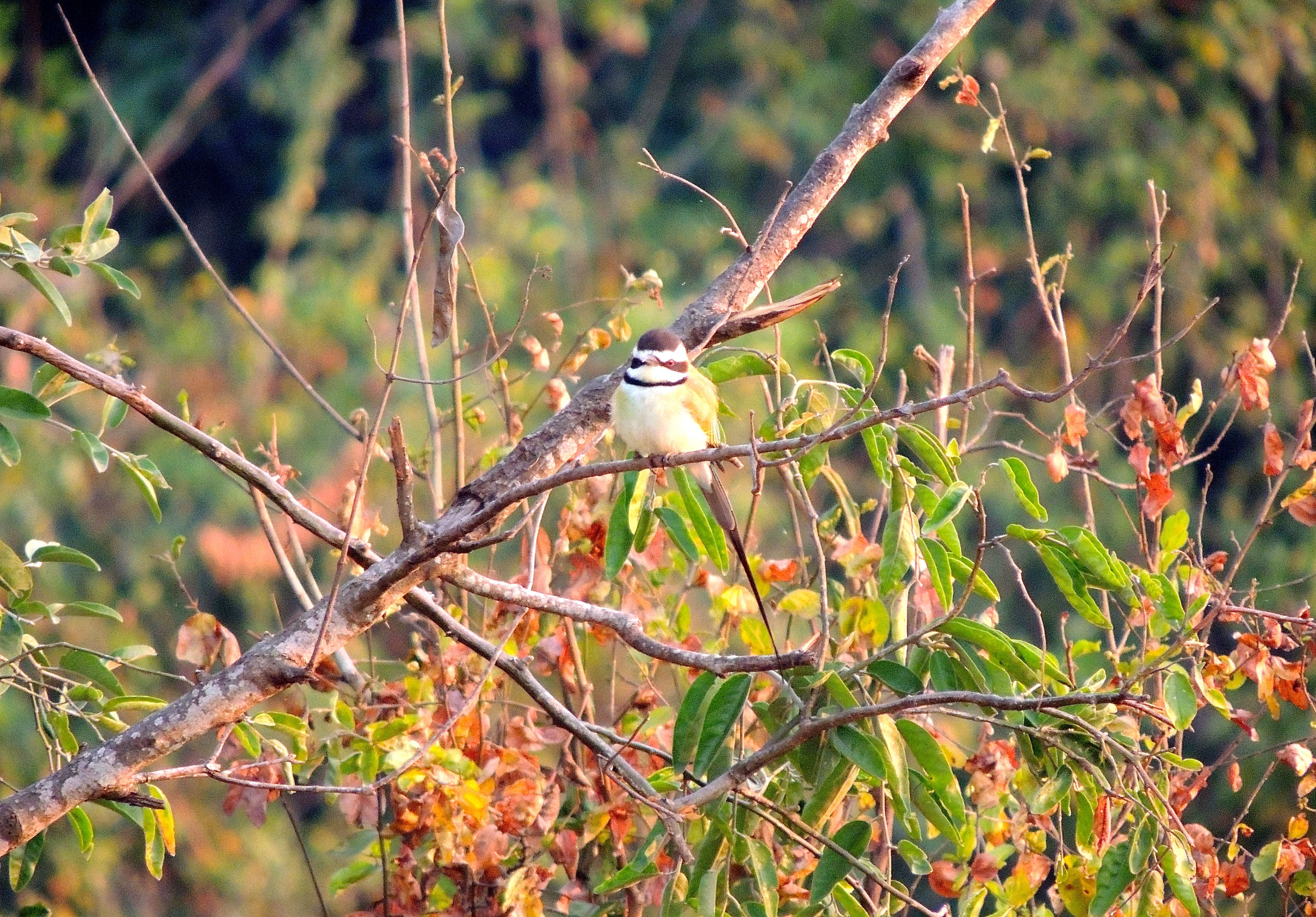 White-throated Bee-eater - Photo by William Young
White-throated Bee-eater - Photo by William Young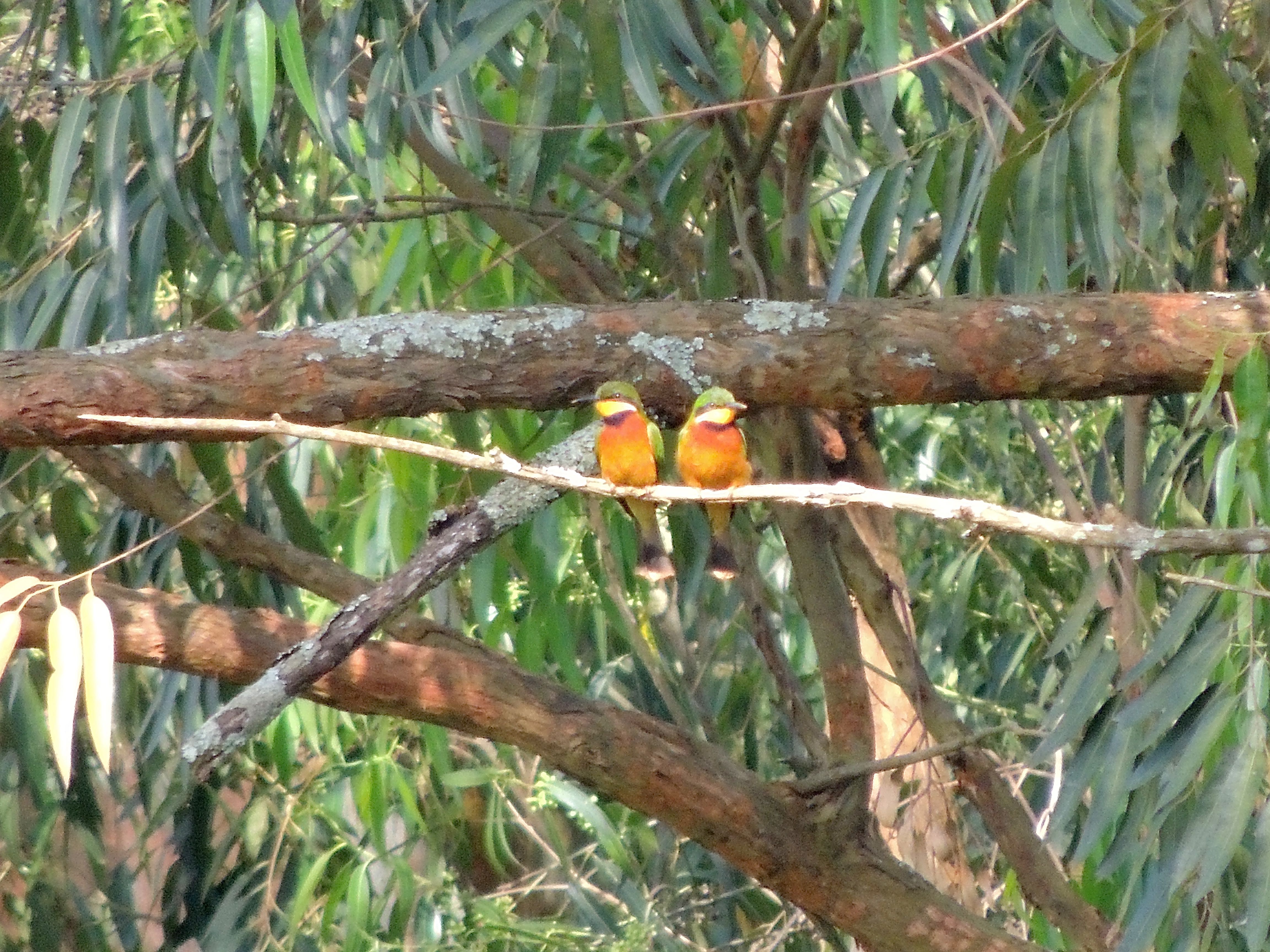 Cinnamon-chested Bee-eater - Photo by William Young
Cinnamon-chested Bee-eater - Photo by William Young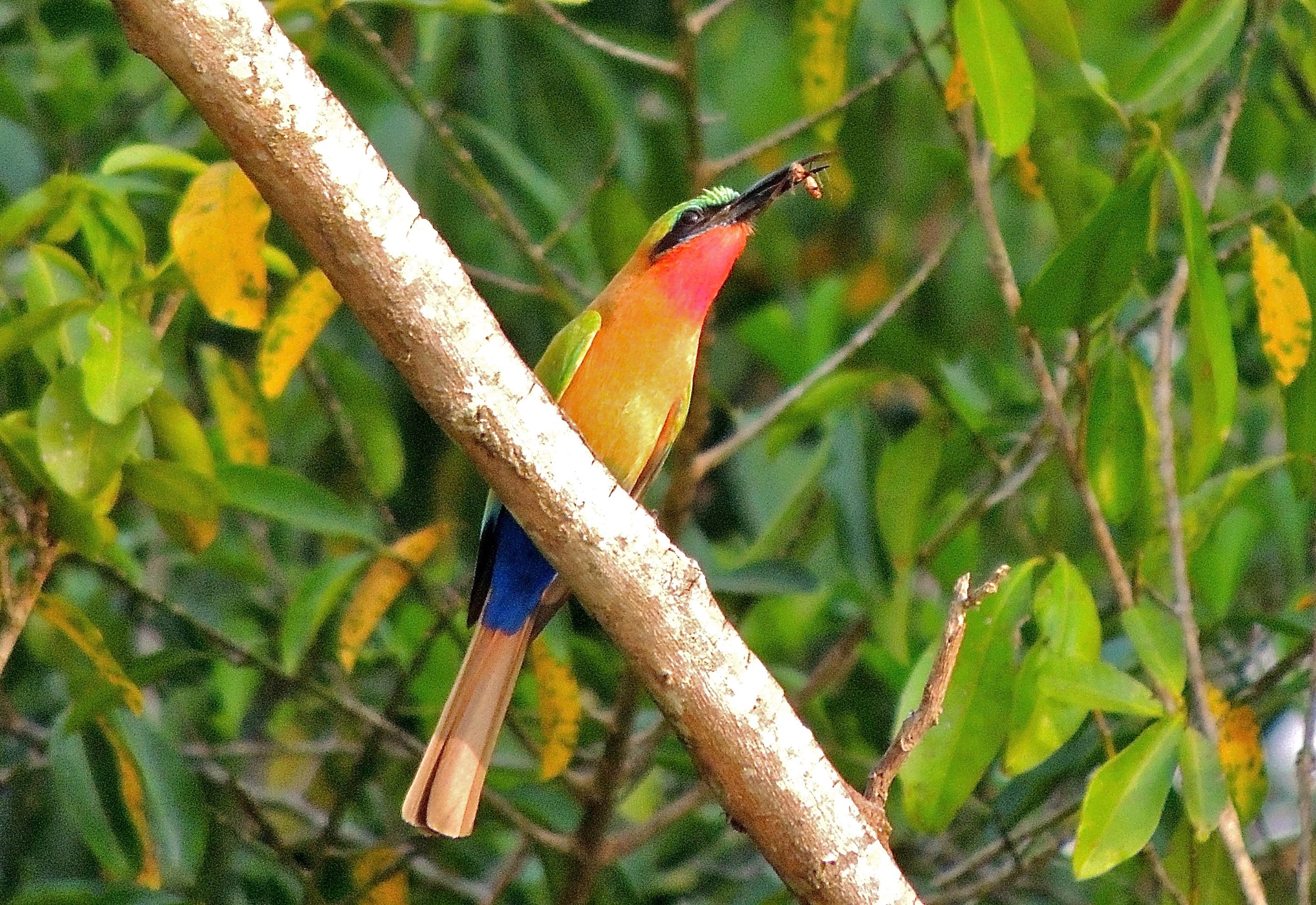 Red-throated Bee-eater - Photo by William Young
Red-throated Bee-eater - Photo by William Young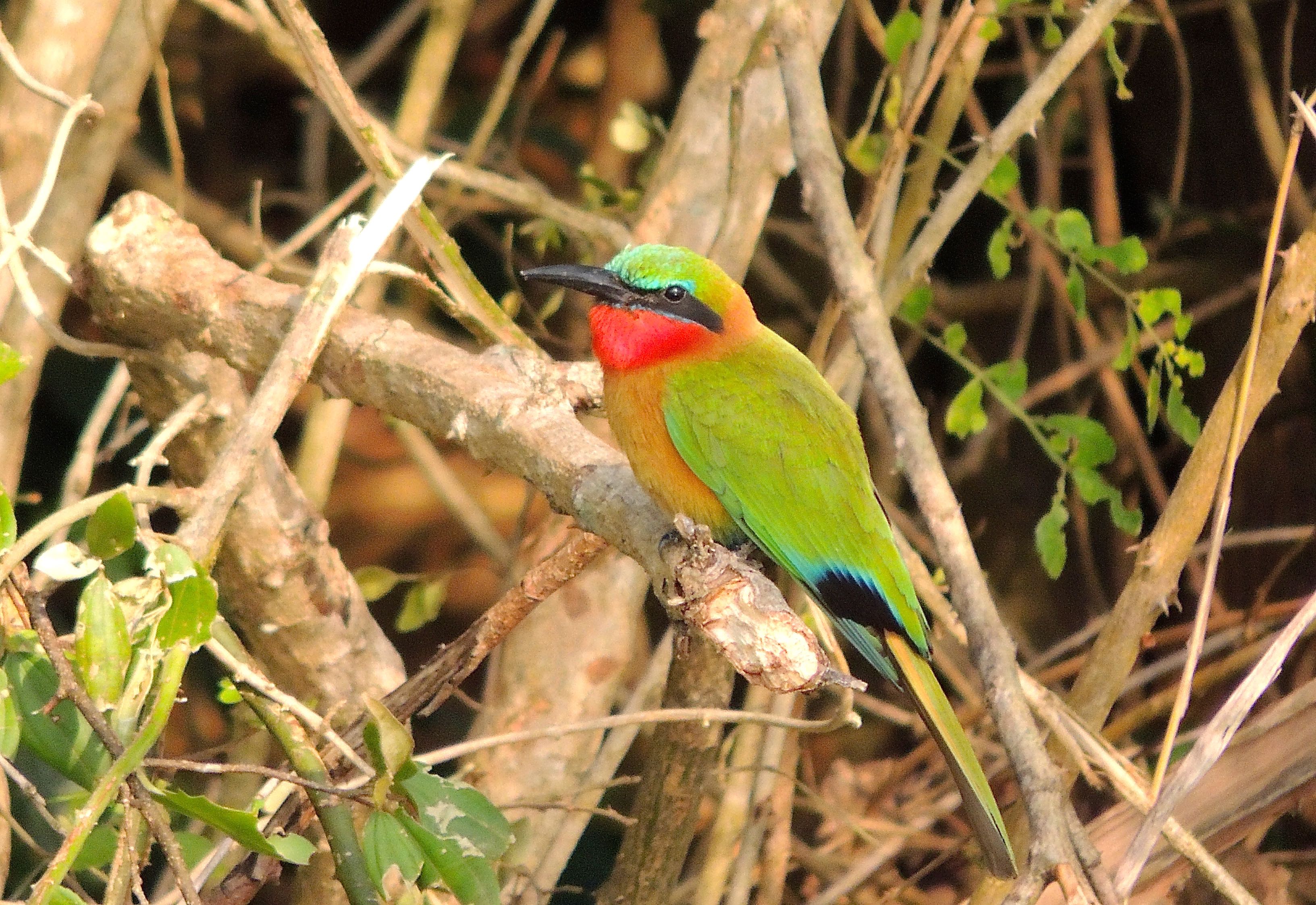 Red-throated Bee-eater - Photo by William Young
Red-throated Bee-eater - Photo by William Young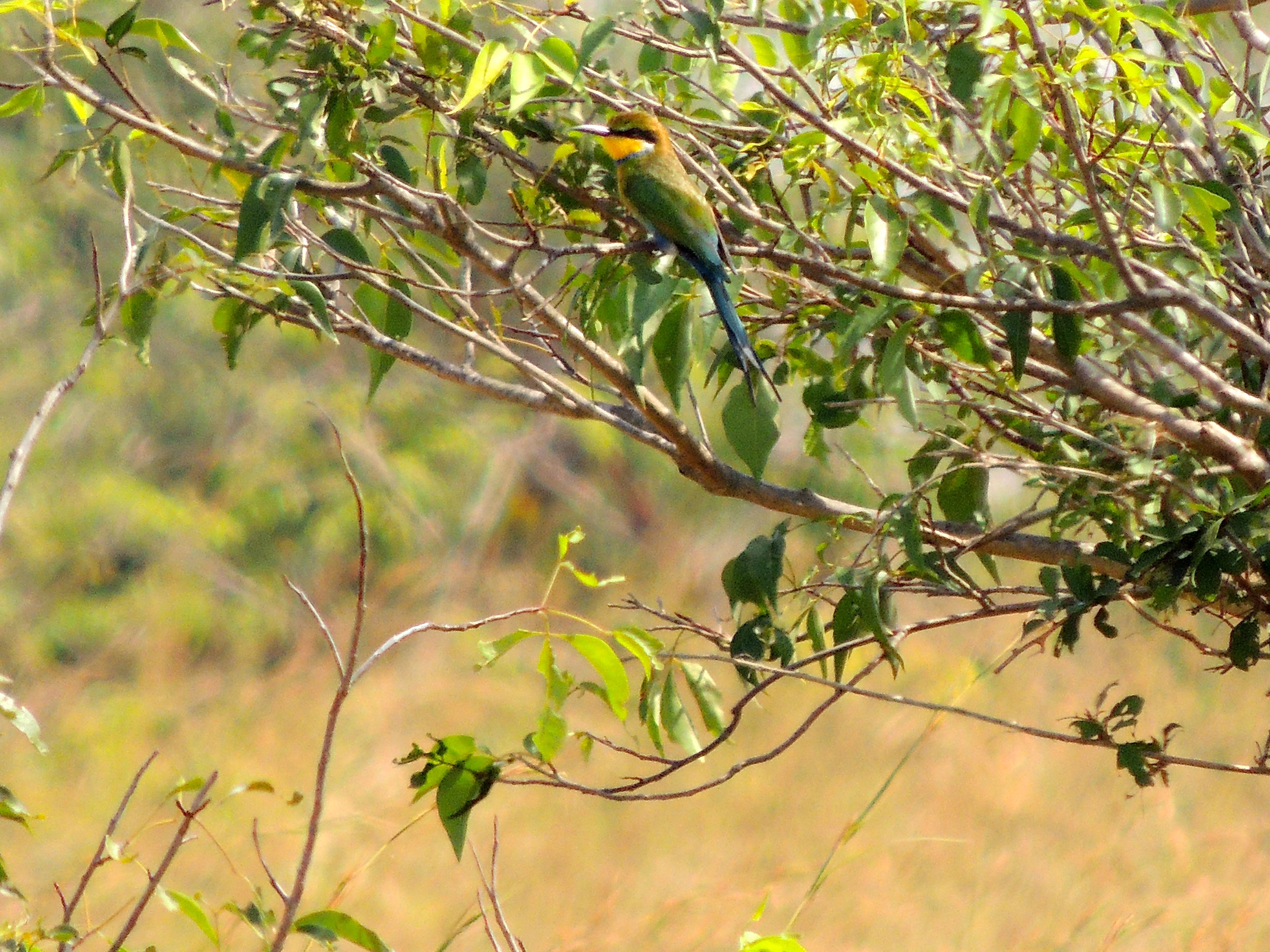 Swallow-tailed Bee-eater - Photo by William Young
Swallow-tailed Bee-eater - Photo by William Young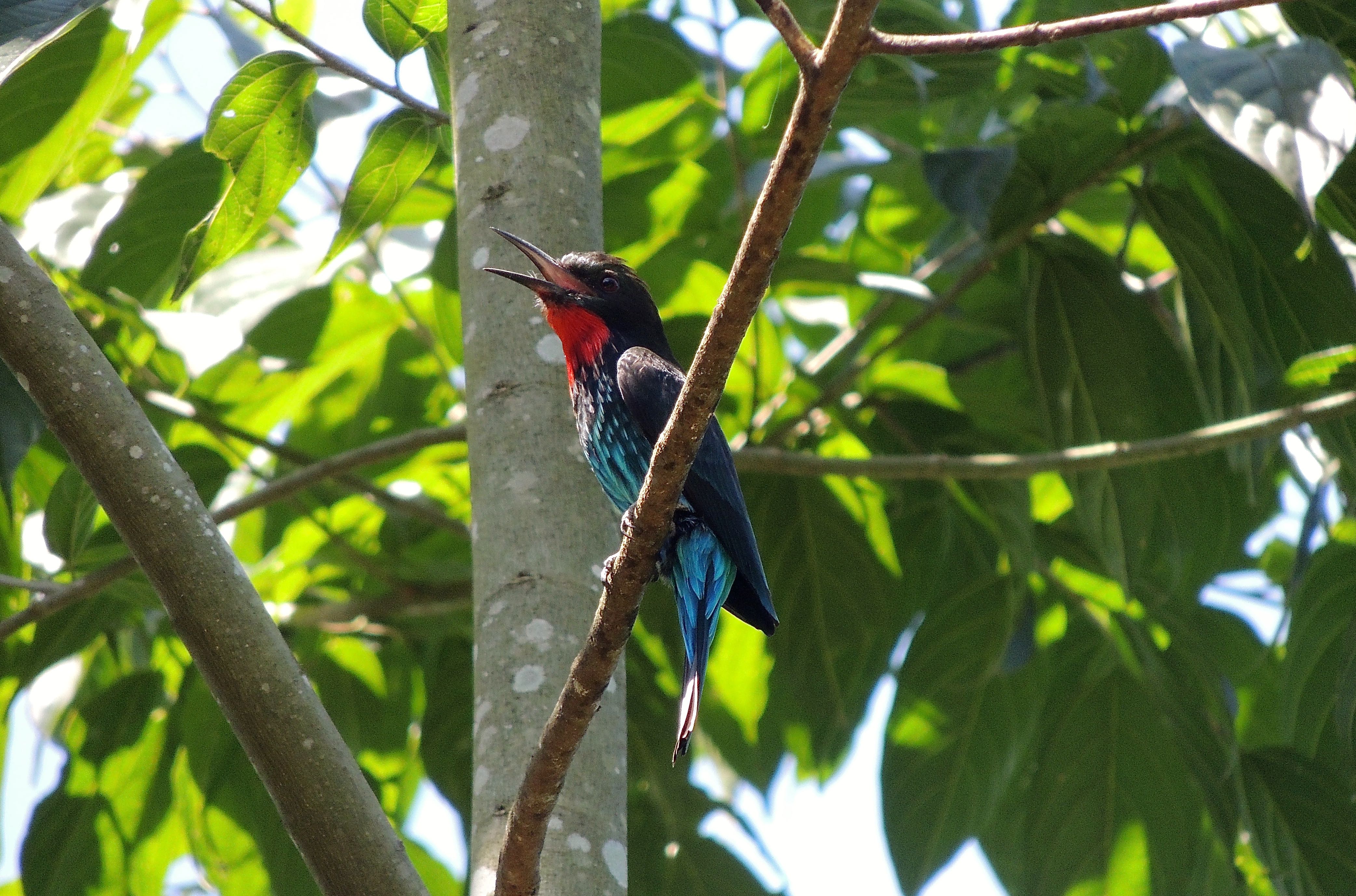 Black Bee-eater - Photo by William Young
Black Bee-eater - Photo by William YoungRollers
Broad-billed Rollers were common around Entebbe and points nearby. They were the second species I saw on January 1 after the Woodland Kingfisher. A lot of them sit on wires. They are brown with a yellow bill. One was perched on a wire at the Victoria View Guest House the morning I left. We saw Blue-throated Rollers on the Royal Mile. They look like the Broad-billed, but have a blue throat. We did not see Lilac-breasted Rollers until the final couple days of the trip when heading back to Entebbe. They also like to perch on wires.
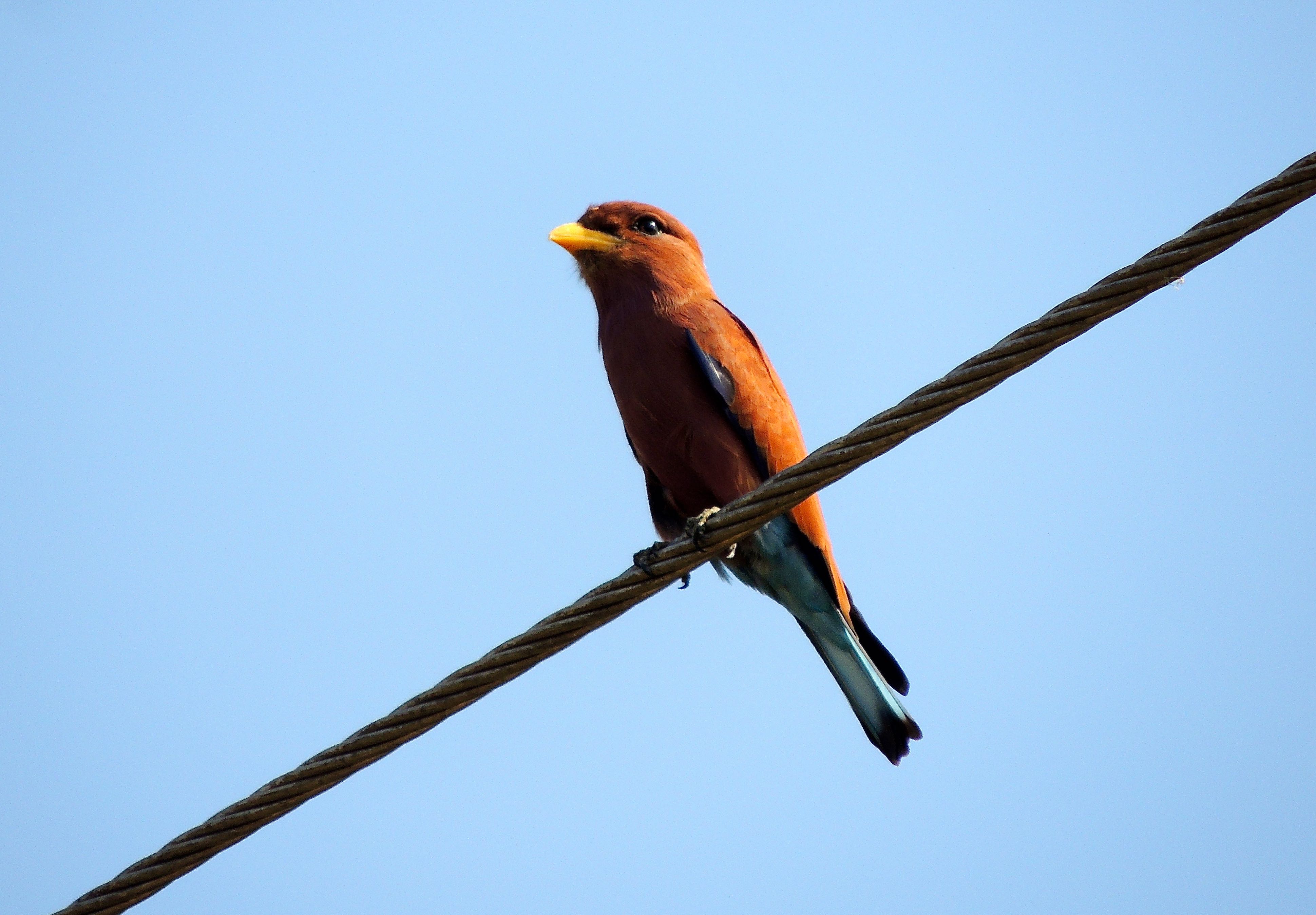 Broad-billed Roller - Photo by William Young
Broad-billed Roller - Photo by William Young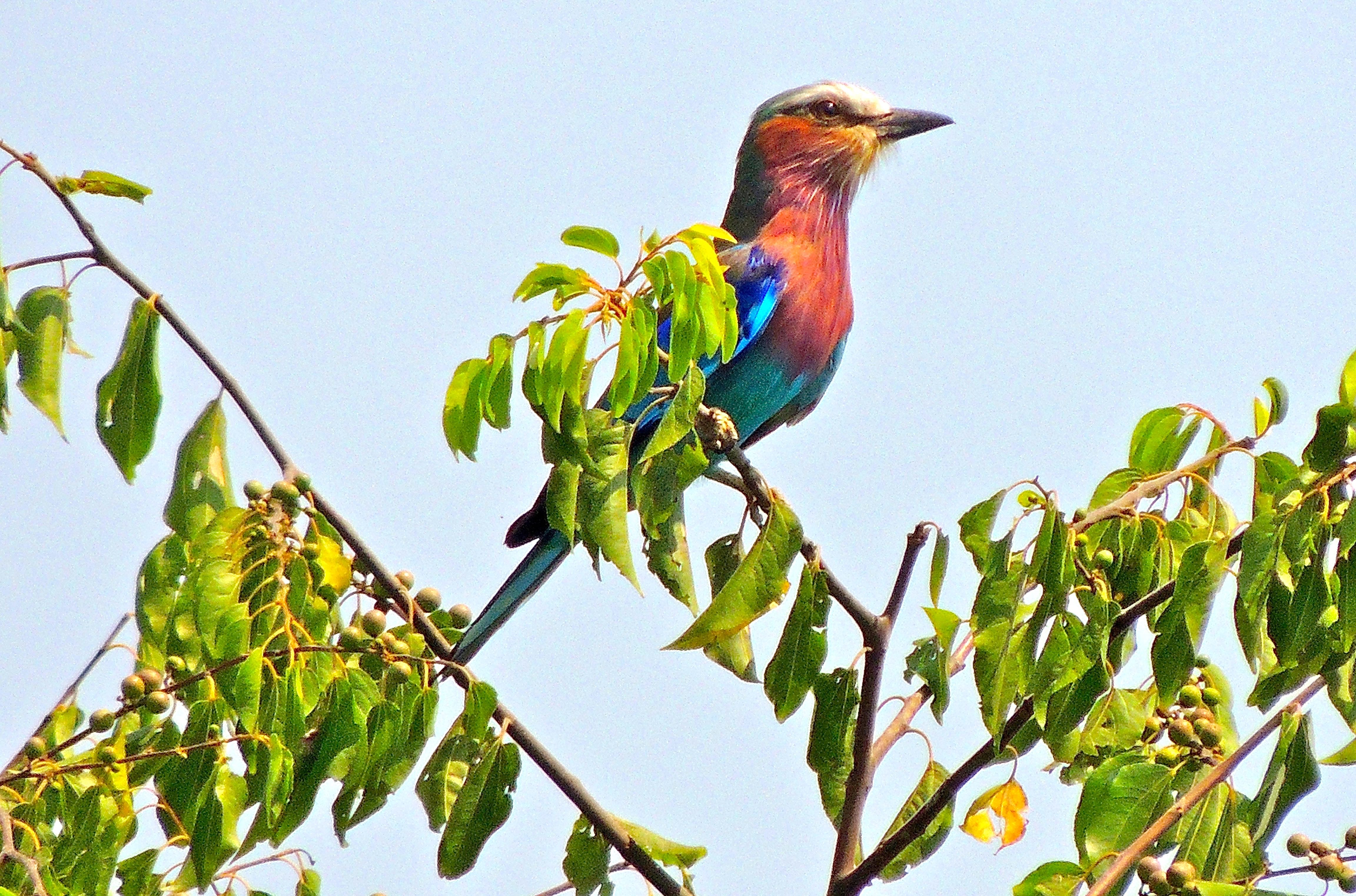 Lilac-breasted Roller - Photo by William Young
Lilac-breasted Roller - Photo by William YoungBarbets
The barbets were some of my favorite birds. They have large bills and tend to sit still unless feeding. Many barbet species are beautiful and have a lot of character. On our first day at the Victoria View Guest House, we saw a pair of Double-toothed Barbets in the gardens. They are black on back, red underneath, and have a large white bill with a double notch in it. They also have light skin around the eye. We saw a Black-billed Barbet on a game drive at Murchison Falls NP. I could see the dark body and red face. We found a White-headed Barbet on our way from Masindi to Fort Portal. It has a white hood and a brown body. At a ranger station in Queen Elizabeth NP, I took some close photographs of a Spot-flanked Barbet. It had a black hood which came down to a V on its breast. It had two white lines on its face and spots on its flanks. We saw a pair of Hairy-breasted Barbets on consecutive days at Bwindi. They look very green, with streaks on the breast that look like hair. The belly is spotted. Near where we saw the second pair was a fig tree that contained about a dozen foraging Yellow-spotted Barbets. They are black with a red forehead, gold barring on the belly, and yellow spots above. Foraging with them were Gray-throated Barbets, who are all brown with a yellow eye. They have a little tuft of feathers sticking up near their bill. Yellow-billed Barbets are black with a yellow belly, a yellow bill, and bare yellow skin around the eyes.
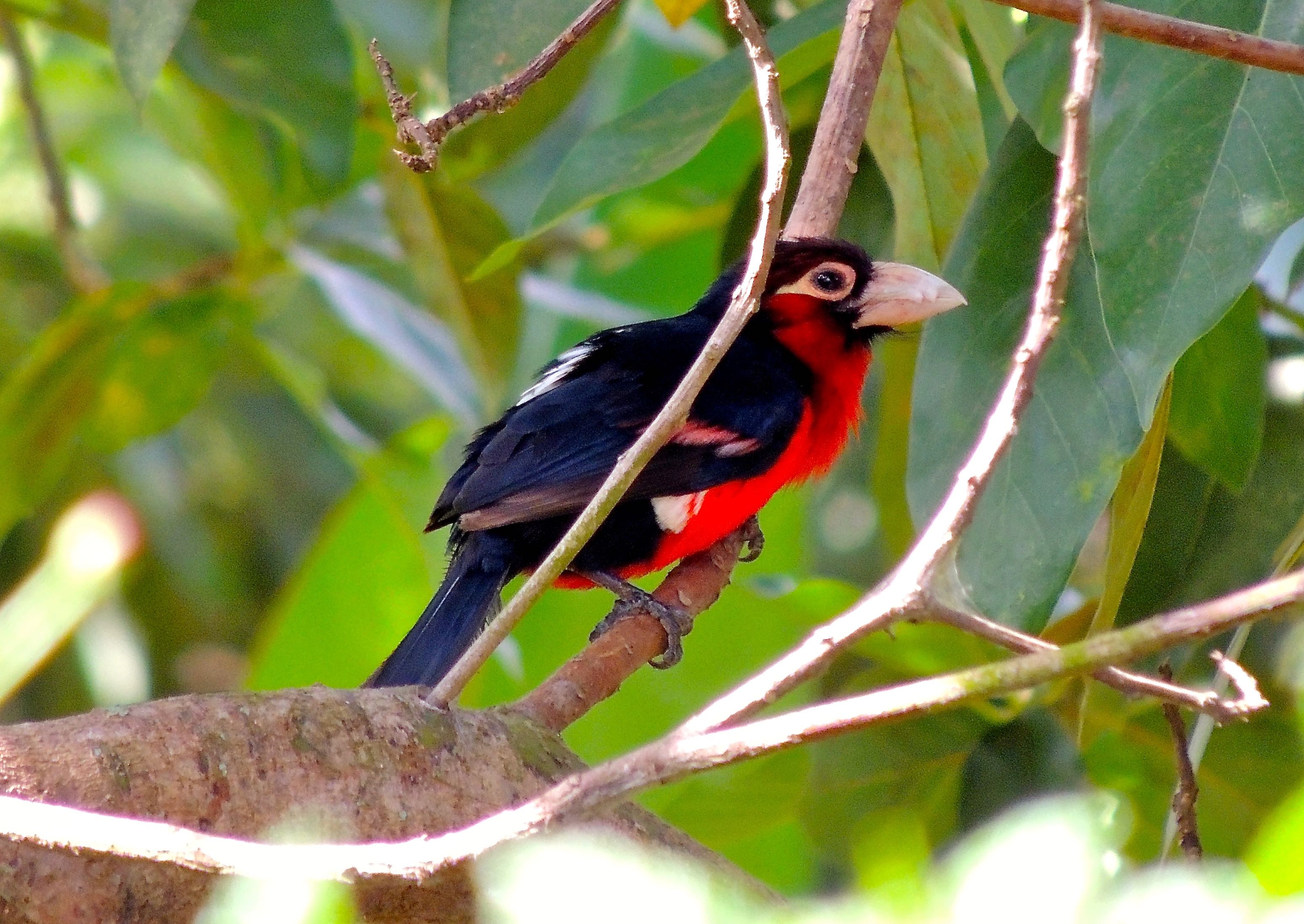 Double-toothed Barbet - Photo by William Young
Double-toothed Barbet - Photo by William Young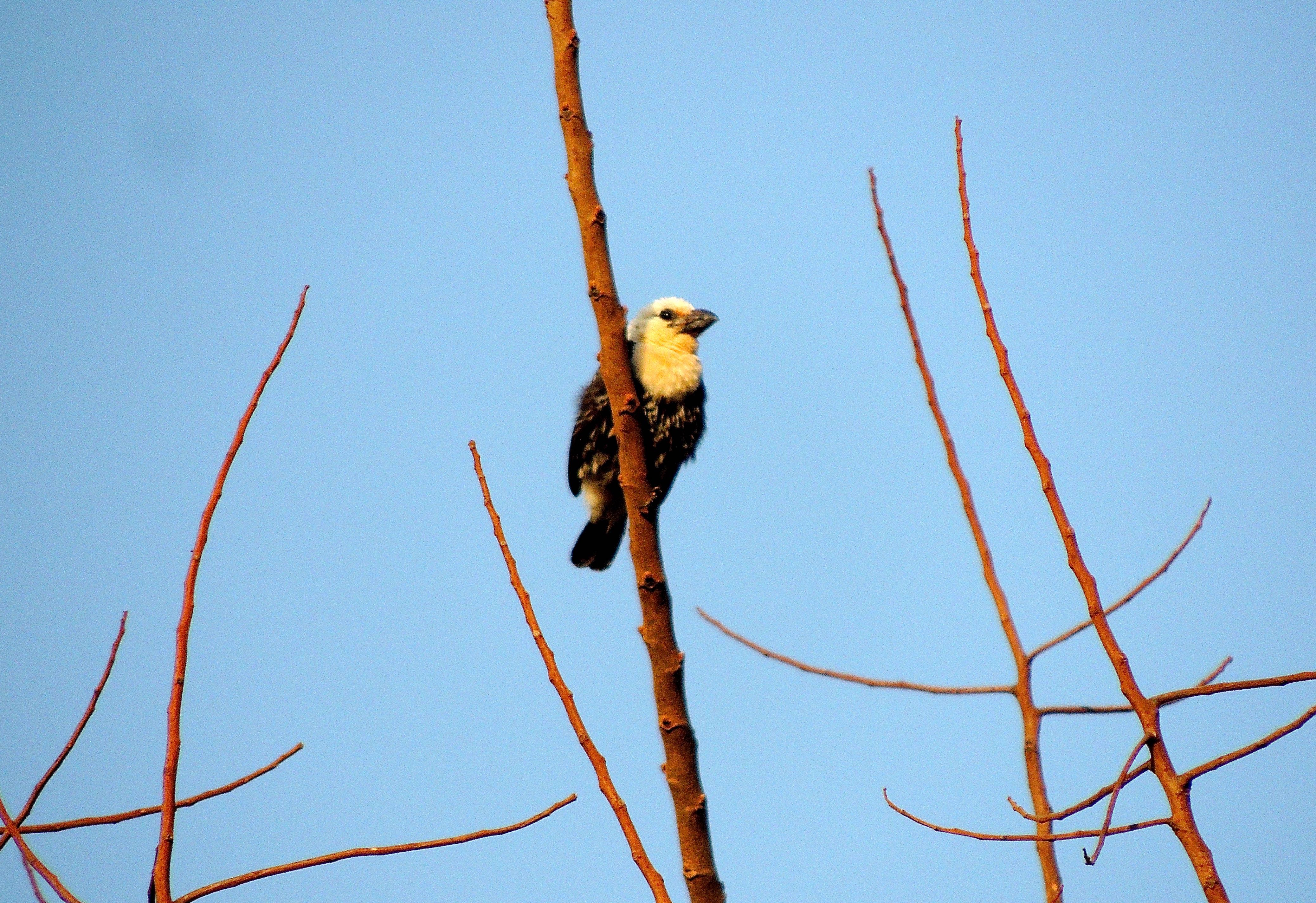 White-headed Barbet - Photo by William Young
White-headed Barbet - Photo by William Young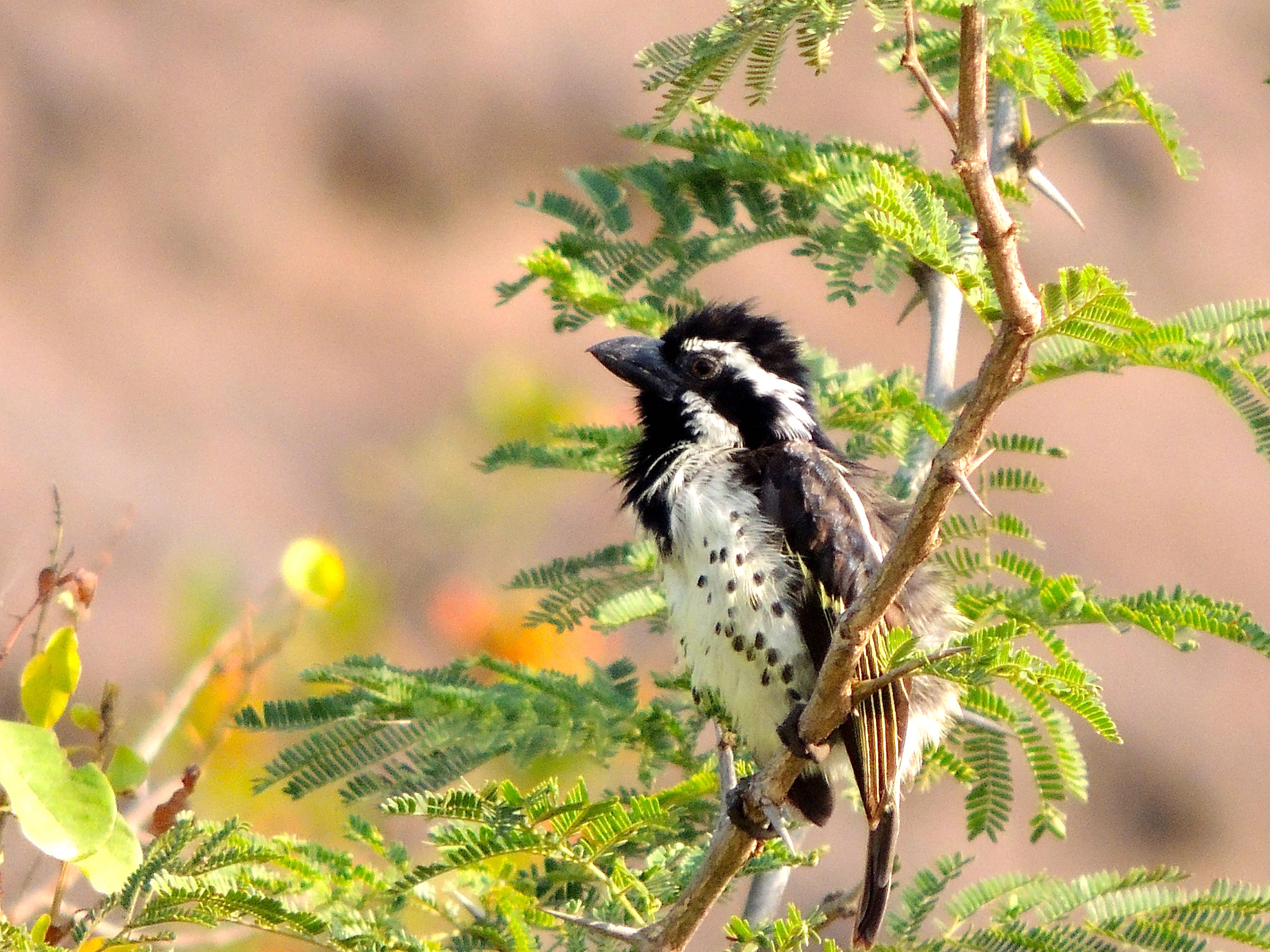 Spot-flanked Barbet - Photo by William Young
Spot-flanked Barbet - Photo by William Young Yellow-spotted Barbet - Photo by William Young
Yellow-spotted Barbet - Photo by William YoungIn the same family as the barbets are tinkerbirds, who are smaller and used to be called tinkerbarbets. One hears their incessant tinking more often than one sees the birds, but I had good looks at some. Yellow-rumped Tinkerbirds were fairly common. They are only 4 inches long and have a short tail, giving them a round look. They have a black head with two white lines on it. They tend to move quickly while foraging. The Red-rumped and Yellow-throated Tinkerbirds look similar, except for the fieldmarks mentioned in their names. Speckled Tinkerbirds are drab little birds with speckling on the breast. We saw one at Bwindi excavating a nest in the bare trunk of a tree.
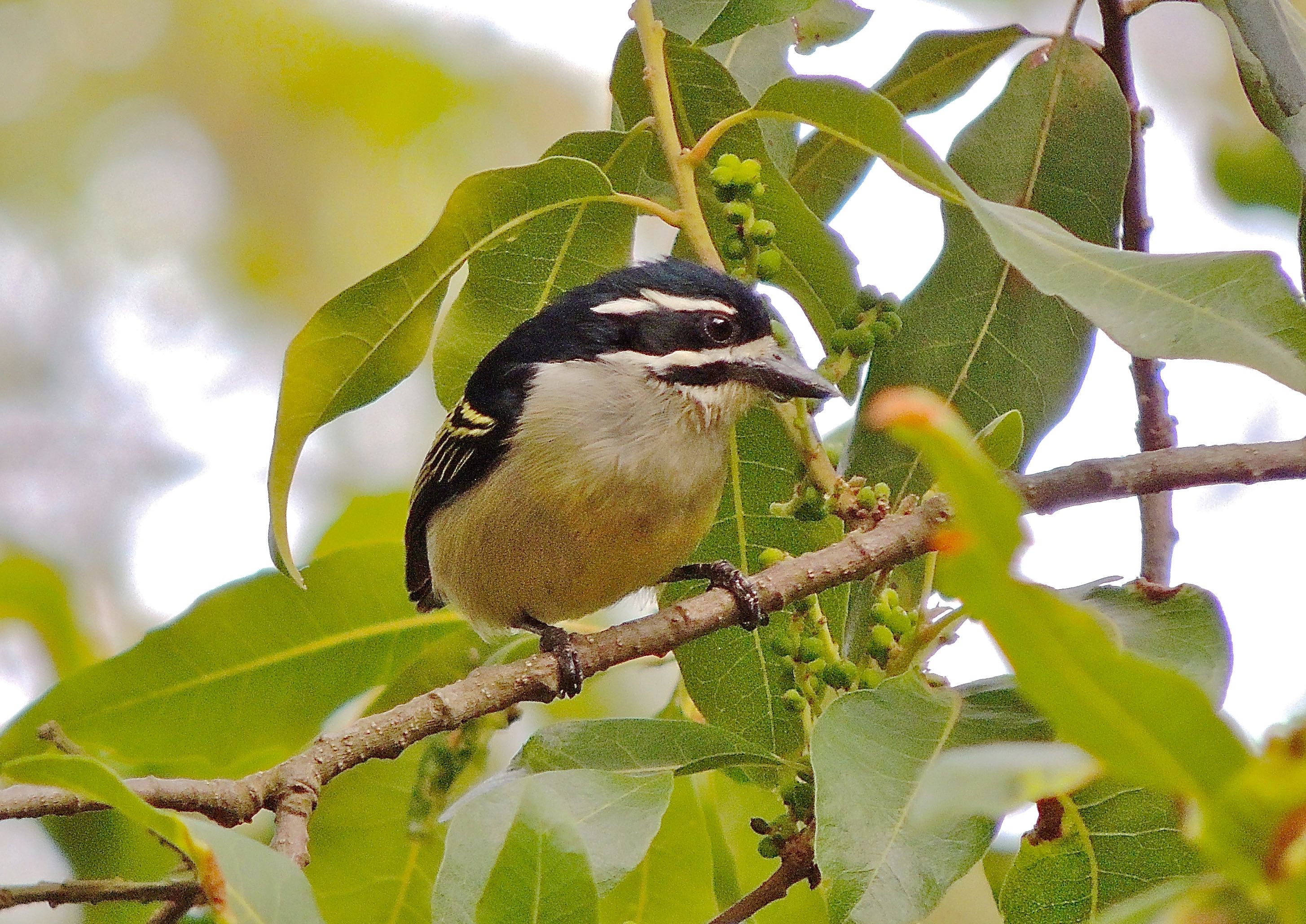 Yellow-rumped Tinkerbird - Photo by William Young
Yellow-rumped Tinkerbird - Photo by William YoungHoneyguides
All honeyguides have white outertail coverts and are parasitic nesters. I had a nice look at a Greater Honeyguide on the road to Masindi. It had white on the face, and the bill appeared to be reddish-yellow. I had quick looks at a Least and a Thick-billed Honeyguide, but as with the greenbuls, they are all similar, and I'm not sure I could have identified them on my own.
Woodpeckers
Uganda has a lot of woodpeckers, but we did not see many. At the Royal Mile, we saw a pair of Golden-crowned Woodpeckers, who used to be called Yellow-crested Woodpeckers. They are one of the green woodpeckers, with spots below and a black-and-white face pattern. I could see a bit of the golden crown. At Bwindi, we saw a Tullberg's Woodpecker, who is green with barring below. It might be split and become the Finely-barred Woodpecker. Also at Bwindi we saw an Elliot's Woodpecker, who is green, does not have a face pattern, and is streaked below. We saw a few Nubian Woodpeckers, who are green with red on the head, bars on the back, and spots below. Two were perched on top of a euphorbia near my room the morning we left Mweya Lodge. I saw a couple of African Gray Woodpeckers on the road to Masindi. They also have a green back, but most of the rest of the body is gray. The only non-green species I had a good look at was the Cardinal Woodpecker. I saw a couple around Murchison Falls NP.
Parrots
We did not see many parrots. When we were driving through Queen Elizabeth NP, a Red-faced Lovebird flew parallel to our vehicle. It was flying quickly and looked like a small green flash next to us. On our way to the Royal Mile, we saw some Meyer's (Brown) Parrots perched in a tree. On the trip to Mabamba, I saw 3 African Gray Parrots fly over. I could see the reddish undertail coverts. There were captive Gray Parrots at the Ziwa Rhino Sanctuary.
Wattle-eyes and Batises
Wattle-eyes and batises can be difficult to see, because they are small birds who flit in trees, often high up. All male batises look pretty much alike, while there is some variation in the females. On the Royal Mile, we saw an Ituri Batis, who is only 3 inches long, making it one of the three smallest birds in Africa along with the Lemon-bellied Crombec and the Tit Hylia. It is very uncommon, confined to a small area. It stays high in the trees, making it a very challenging bird to see well. Near where we parked to go to Mubwindi Swamp, we saw both Chin-spot and Rwenzori Batises. The male Chin-spot does not have a chin spot, but the female does. The Rwenzori is an Albertine Rift endemic. I had a couple of looks at Brown-throated Wattle-eyes that allowed me to see the red wattle over the eye, including one at Murchison Falls NP. In Kanio Pabidi Forest, we saw some Chestnut Wattle-eyes, who are smaller and do not have much of a wattle. The females are black-and-white.
Helmet-Shrikes
We saw a couple of flocks of White(-crested) Helmet-Shrikes. One flock was near the Ziwa Rhino Sanctuary, and we saw the other the next day on our way to Murchison Falls NP. They move around a lot, and I had a distant view of one perched in a tree. At Bigodi Wetlands, we saw both male and female Black-and-white Shrike-Flycatchers. The males have a black back and the females a russet back. The female appeared to be the more attractive of the two. Both have crests and intense yellow eyes. We also saw a pair at the Kibale Guest Cottages.
Bushshrikes
The bush-shrikes are a varied group which includes tchagras, puffbacks, gonoleks, and boubous. Black-headed Gonoleks are common and plentiful. They are jet black above and scarlet below, with a light eye. They were on the lawn at the Victoria View Guest House, and a couple sang in the trees at the Ziwa Rhino Sanctuary. Their song is loud and varied, and the ones at Ziwa sang a three-note call that sounds like "OR-I-OLE". A number of times, we looked for Papyrus Gonoleks, who look similar but have a yellow crown. I got glimpses of about five of them and eventually saw all of the fieldmarks, but I never had a prolonged look at any of them. They mostly skulk in the papyrus. Likewise, I had a fleeting glimpse of a Mountain Sooty Boubou, an all black bird, but I did not see it well. We heard a new species called a Willard's Sooty Boubou, but I never saw it. At the Kisoro Travellers Inn, I saw a Tropical Boubou perched in a tree. It is black above and white below, with white slashes on the wings. I heard the distinctive burry call of the Brubru at Murchison Falls NP, but never saw it.
 Black-headed Gonolek - Photo by William Young
Black-headed Gonolek - Photo by William YoungSome of the birds called bush-shrikes are lovely and colorful. At Bwindi, we saw a few Many-colored Bush-shrikes in the trees. They are green above and orange below, and they have a black mask like a lot of shrikes. In the same trees were Luhder's Bush-shrikes, who are brown, black, and white. Bocage's Bush-shrikes were also in these trees. They are olive on back and light below. We saw a number of tchagras in reedy fields. They have a distinctive tail pattern that I learned to recognize. We saw both Black-crowned and Brown-crowned Tchagras, who look alike. At Queen Elizabeth NP and Mabamba Swamp, we saw Marsh Tchagras, who also have a black cap and a rufous back. They are not easy to find. We had nice looks at both Northern and Pink-footed Puffbacks. All of the puffbacks look similar, being black on back and white below.
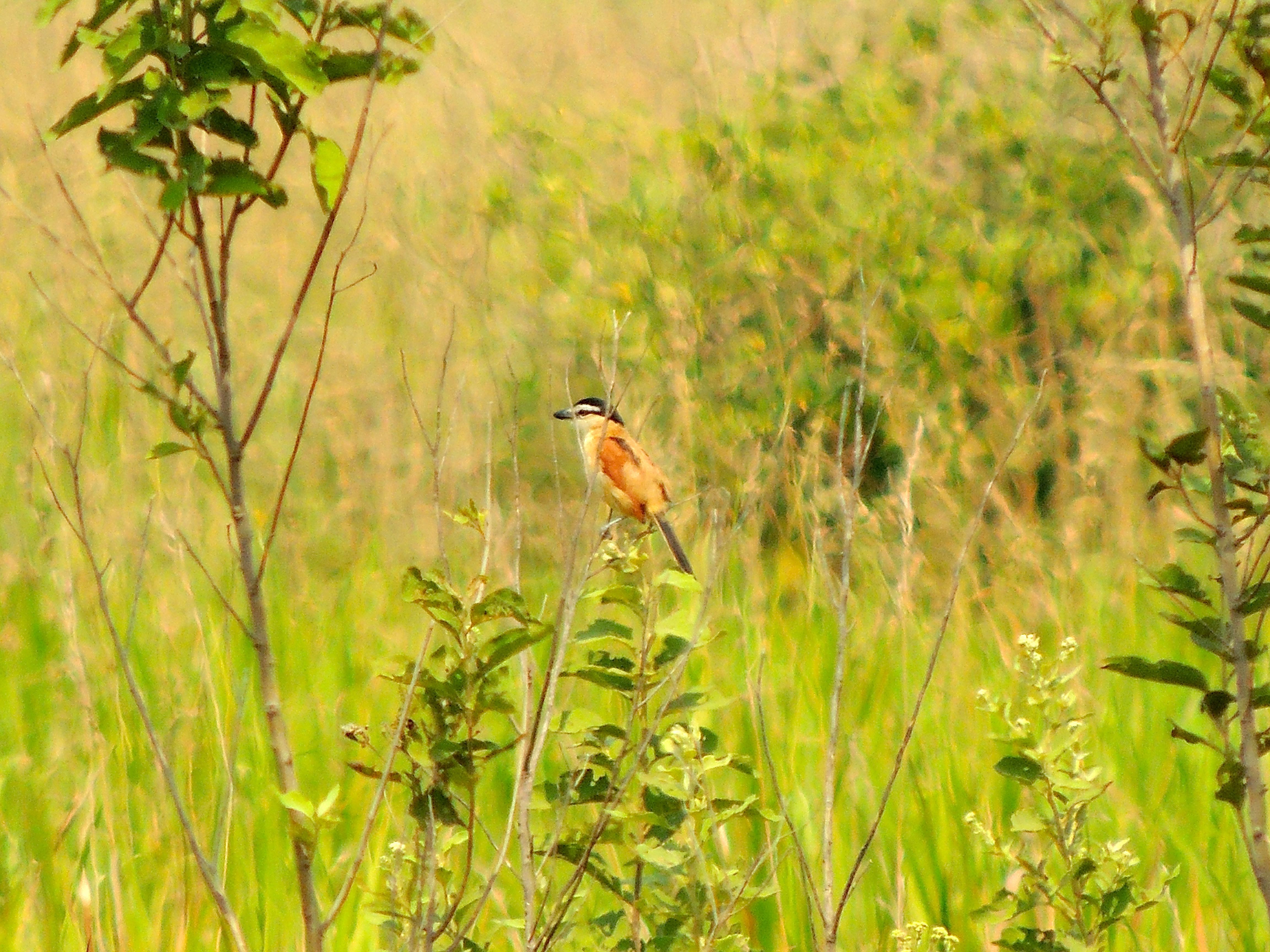 Marsh Tchagra - Photo by William Young
Marsh Tchagra - Photo by William YoungCuckooshrikes
At the beginning of the walk through the Bwindi Impenetrable Forest, we saw male and female Petit's Cuckooshrikes. The males are all black with some yellow around the gape. The females are yellow and look like large Blue-winged Warblers, with a dark a line through the eye. We saw Gray Cuckooshrikes in Bwindi. They are gray and nondescript.
Shrikes
I saw six species of shrikes. At Murchison Falls NP, we saw both Red-backed and Isabelline Shrikes. The Isabelline has a brown back and looks washed out. The Red-backed was a young bird not in adult plumage. The Common Fiscal has been renamed the Northern Fiscal, and it was common in some areas on power lines. Also common was the Gray-backed Fiscal. Mackinnon's Shrikes look like Loggerhead Shrikes but have rufous on the flanks. I had a close look at one in the gardens at the Travellers Inn in Kisoro. We also saw some Woodchat Shrikes at Murchison Falls NP, who have a rufous cap. We saw one leave its perch to grab a grasshopper, after which it returned and ate it.
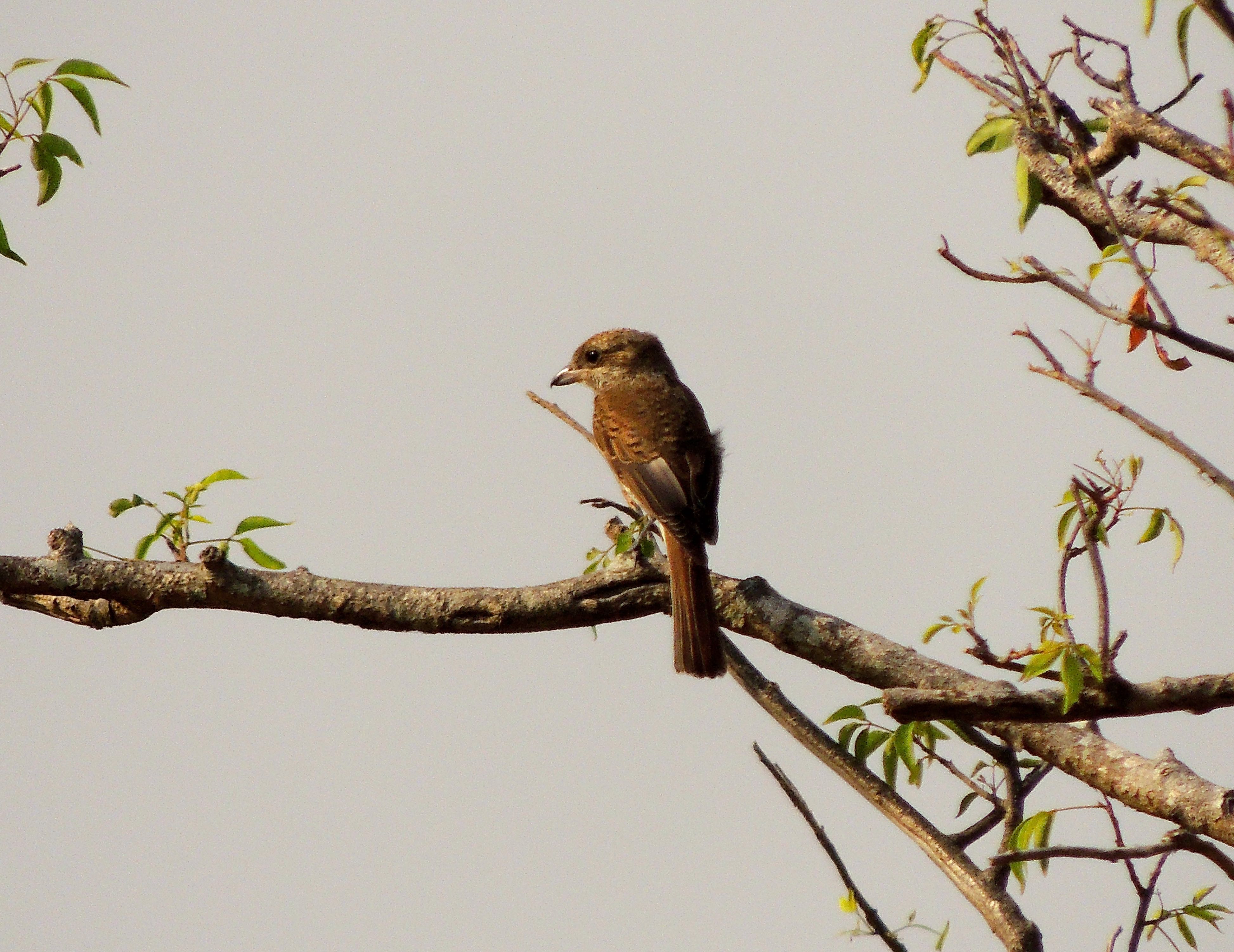 Red-backed Shrike - Photo by William Young
Red-backed Shrike - Photo by William Young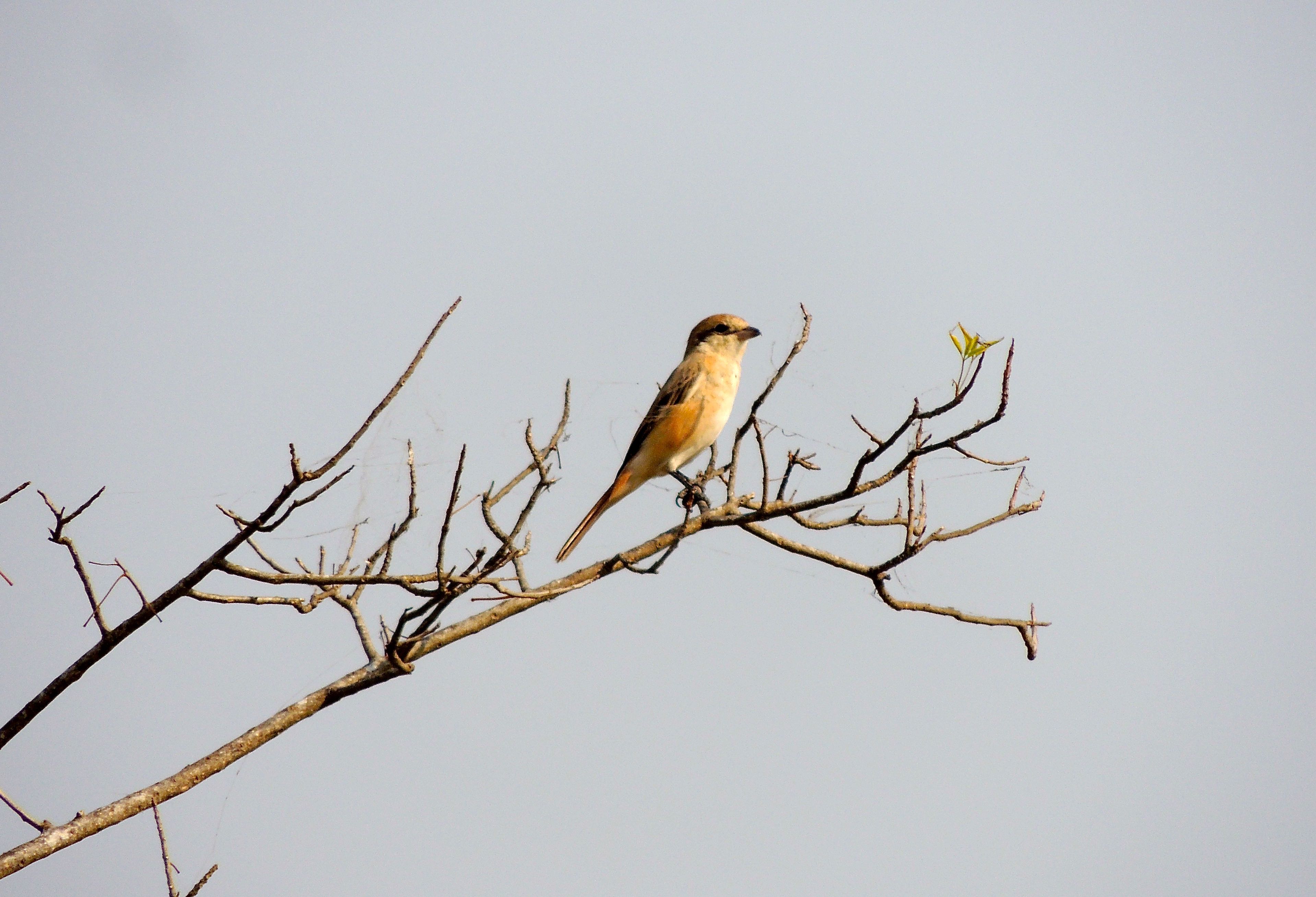 Isabelline Shrike - Photo by William Young
Isabelline Shrike - Photo by William Young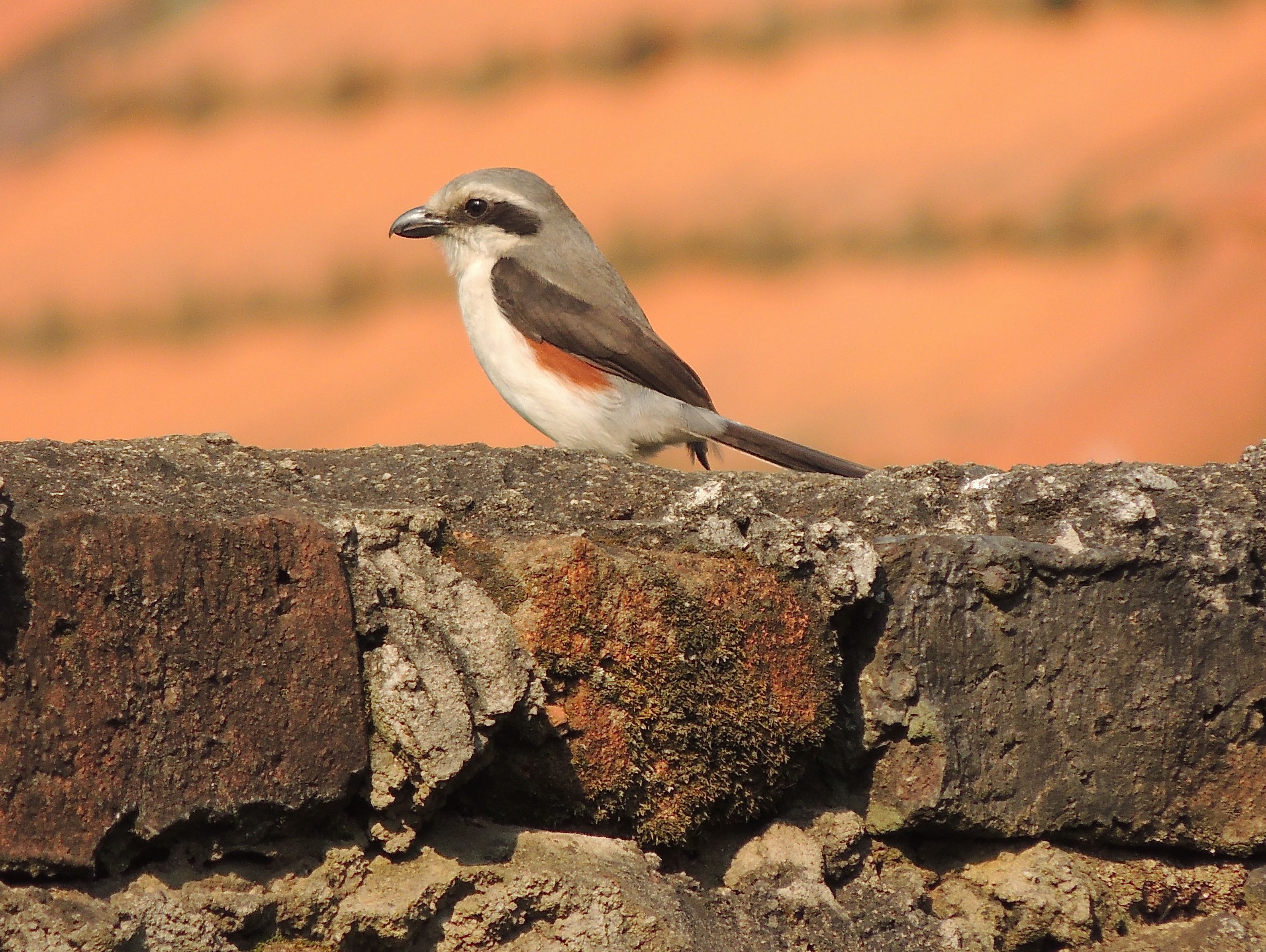 Mackinnon's Shrike - Photo by William Young
Mackinnon's Shrike - Photo by William Young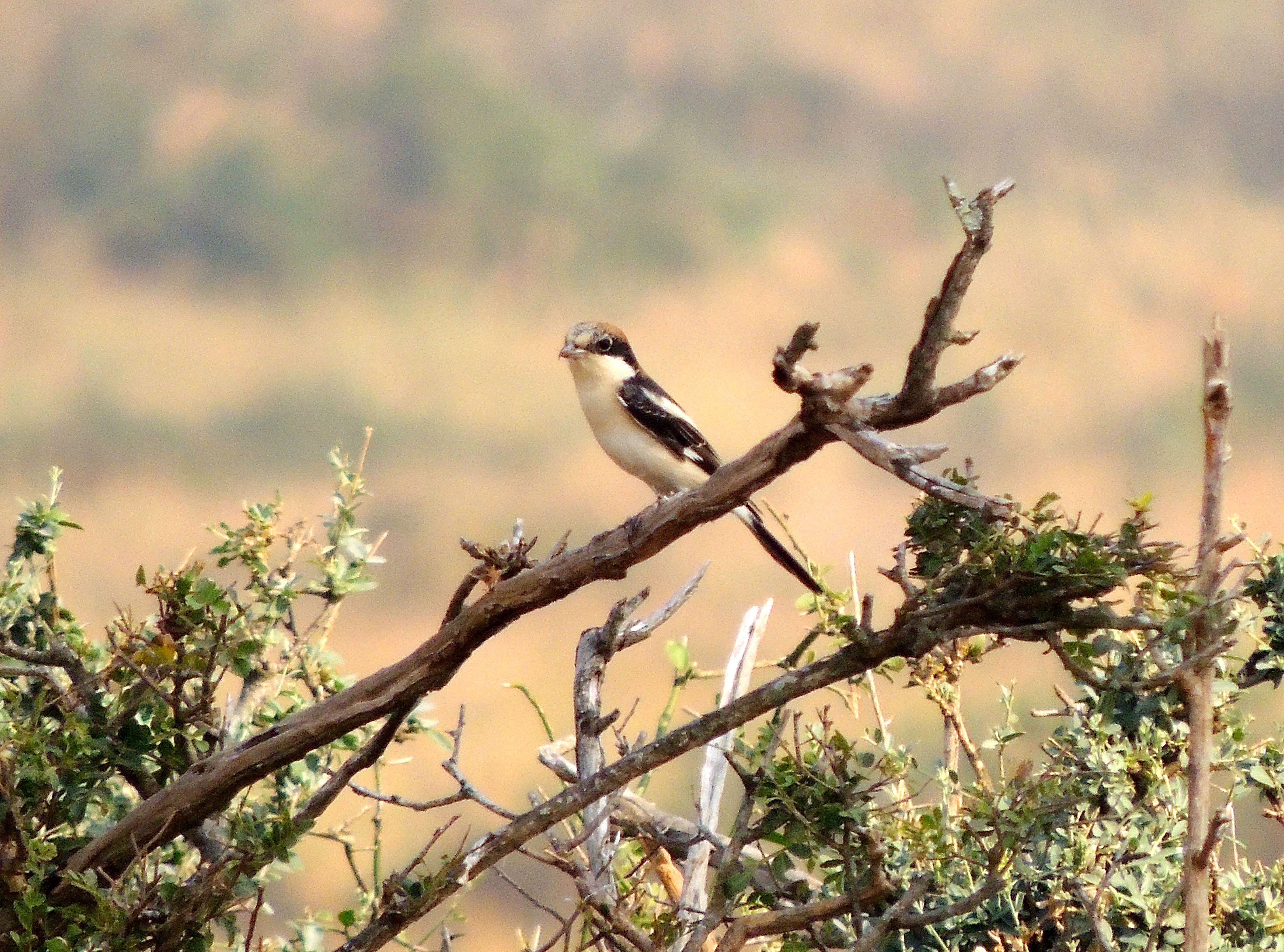 Woodchat Shrike - Photo by William Young
Woodchat Shrike - Photo by William YoungOrioles
I saw two species of orioles. The most common was the Western (Black-headed) Oriole, whom I saw on three days. It is bright yellow, with a black head and a red bill. When we got into the mountains, we saw a Mountain (Black-tailed) Oriole, who looks similar to the Black-headed but has black on the uppertail.
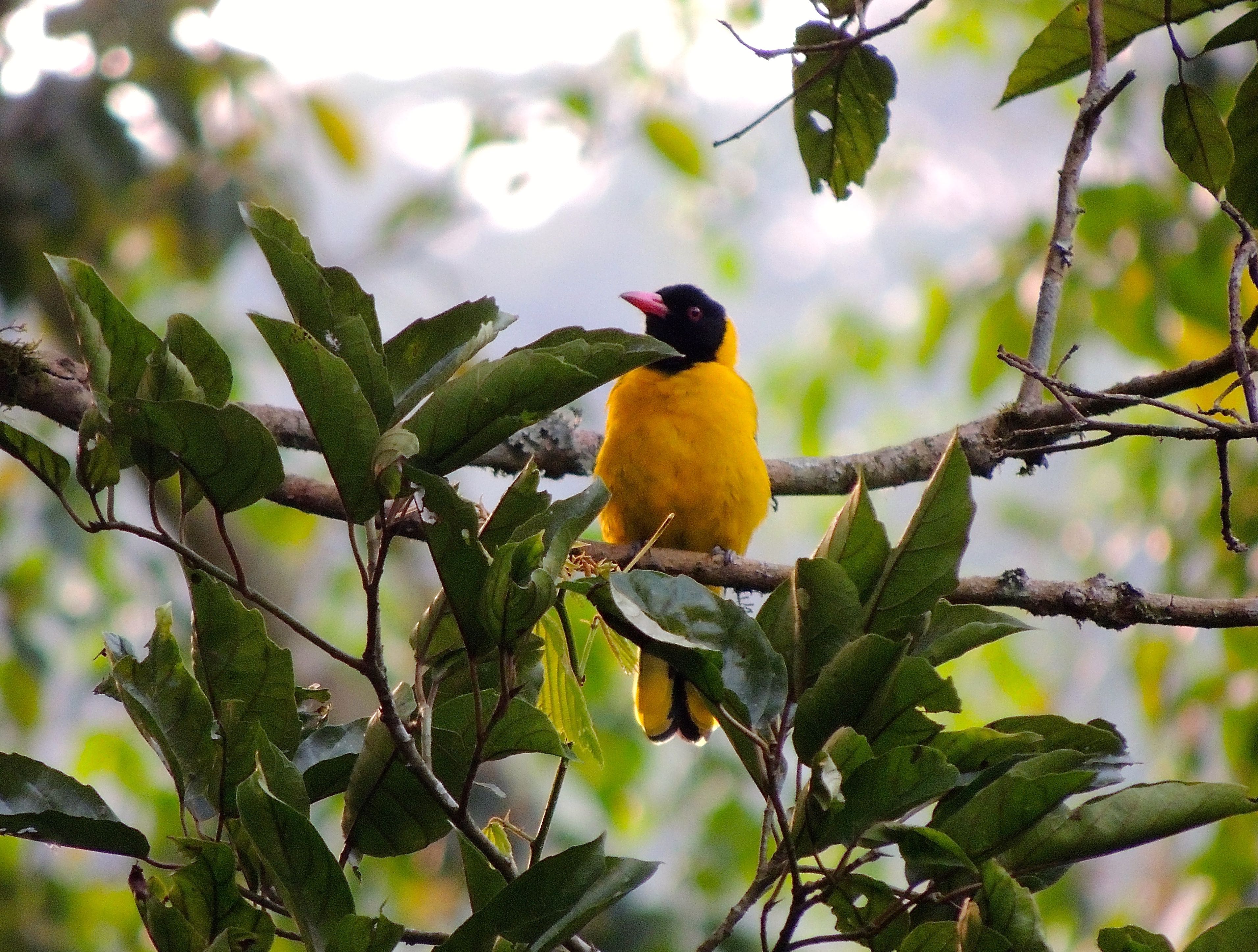 Western (Black-headed) Oriole - Photo by William Young
Western (Black-headed) Oriole - Photo by William YoungDrongos
We saw both species of drongos in Uganda. The Fork-tailed is an all black bird with a forked tail. We first saw them on the road to Masindi. The Velvet-mantled Drongo looks similar, and I could not detect much of a difference in the feathering on the back.
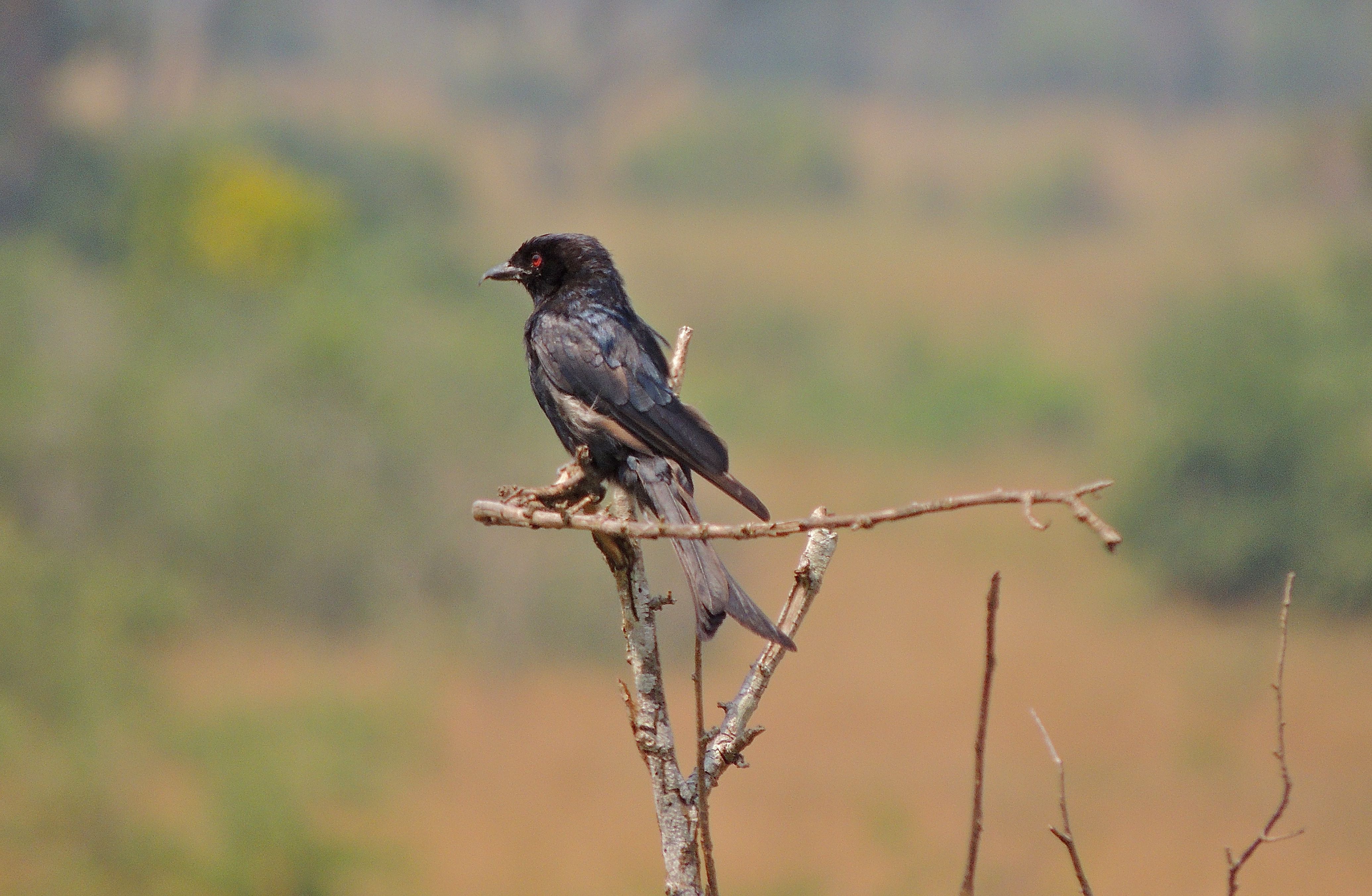 Fork-tailed Drongo - Photo by William Young
Fork-tailed Drongo - Photo by William YoungMonarch Flycatchers
We saw both species of paradise-flycatchers. I saw the African Paradise Flycatcher on seven days, but only one at Murchison Falls NP was a male with long tail streamers. We saw both the rufous morph and the white morph. The white morph is white with a black cap that extends beyond the back of its head. This morph does not occur much farther south than the Royal Mile. The typical morph is gray below with a rufous back and black head. At Semliki, I saw a Black-headed (Red-bellied) Paradise Flycatcher, who has a black head and is red both above and below. Also at Semliki, we saw Blue-headed Crested Flycatchers flitting in a bush. They have a very restricted range.
Corvids
We saw three species of corvids, and they all have a lot of character. We saw Pied Crows on all but three days of the trip, and sometimes we saw 100 or 200. There was a large roost in the trees near the Kisoro Travellers Inn. They have distinctive black-and-white plumage. At the Victoria View Guest House, they sometimes dropped in to take a quick drink from the bird bath. We saw White-necked Ravens in Ruhija and Kisoro. One hopped onto the railing going up to Lori's cabin at the Gorilla Mist Camp. Another perched on top of a tall statue at the Great Lakes Museum. They have white on the collar, but they show no white on their underparts, which is a key fieldmark in quickly separating them from Pied Crows on a flying bird. Their bill is much larger than a Common Raven's. I saw quite a lot of Piapiacs, also called Social Crows, around Murchison Falls NP, but we saw only a few during the rest of the trip. They have red eyes, a long pointed tail, and white patches on the wings. They ride on the backs of animals. They are more interested in eating the insects stirred up by the animals than in acting like the oxpeckers and eating insects and other small creatures directly from the animal.
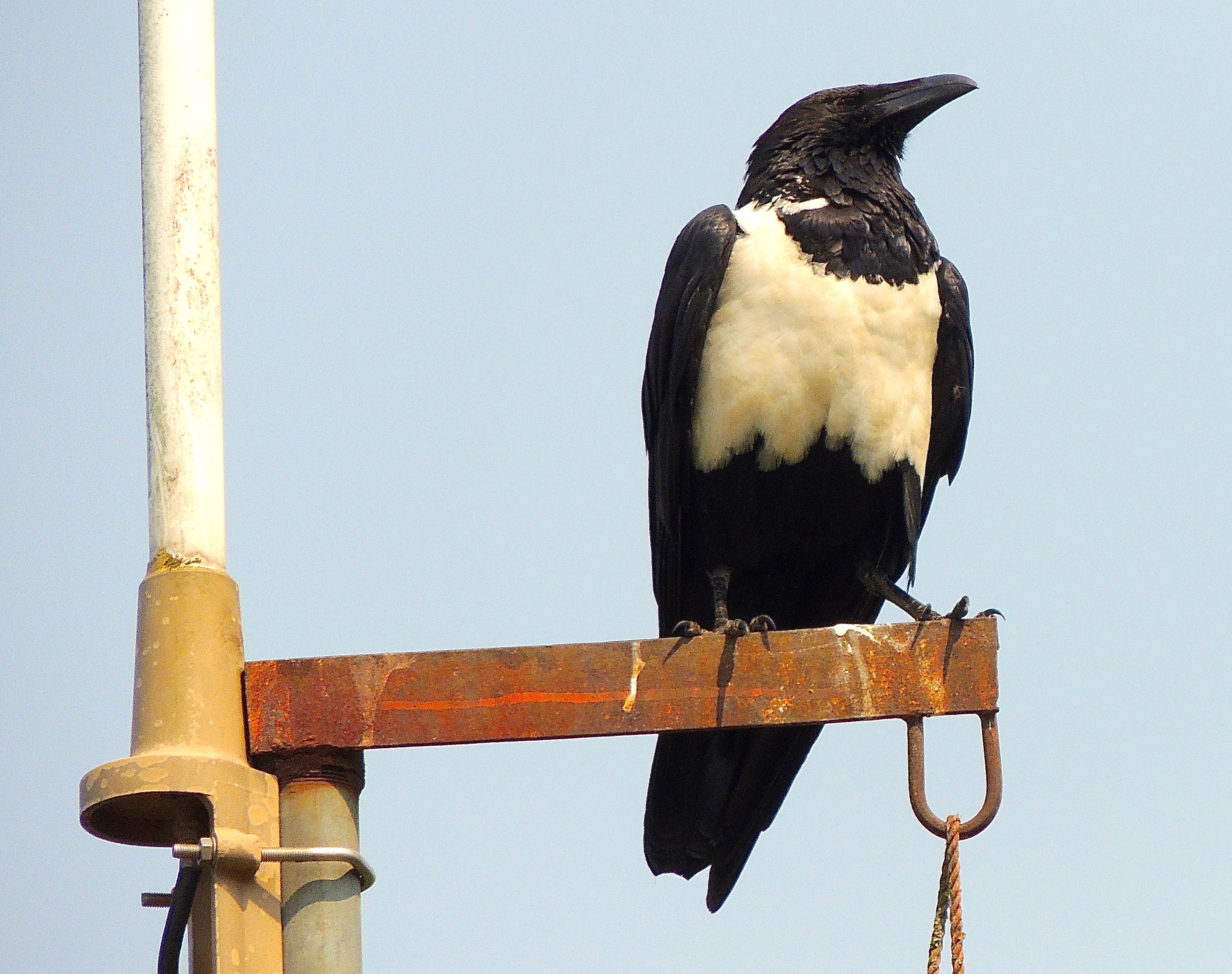 Pied Crow - Photo by William Young
Pied Crow - Photo by William Young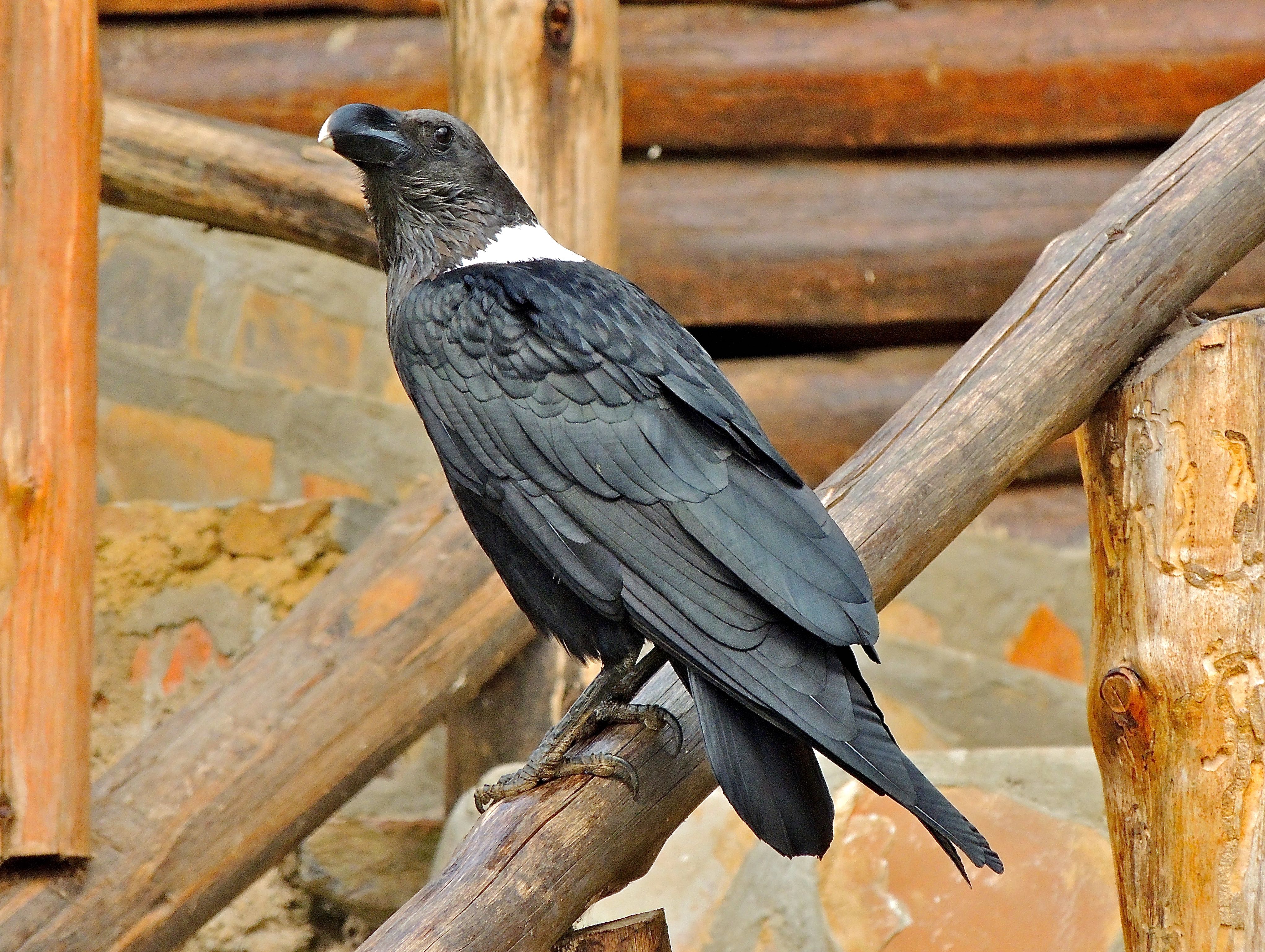 White-necked Raven - Photo by William Young
White-necked Raven - Photo by William Young Piapiacs on an African Elephant - Photo by William Young
Piapiacs on an African Elephant - Photo by William YoungNicators
I saw my first Western Nicator in the Kanio Pabidi Forest. I saw movement in a tree about 50 yards down the path. When we got closer, the bird popped into the open so that I could see all of the spots on its wings. It looks like a greenbul.
Larks
One of my favorite bird sounds of the trip came from the Flappet Lark. It is a small lark, and its flapping wings sound like a raspberry or one of those rubber-band-powered balsa wood airplanes. We saw Rufous-naped Larks at Queen Elizabeth NP. They stand tall when walking. We also saw a Red-capped Lark there. Both the Rufous-naped and Red-capped Larks are bigger than the Flappet.
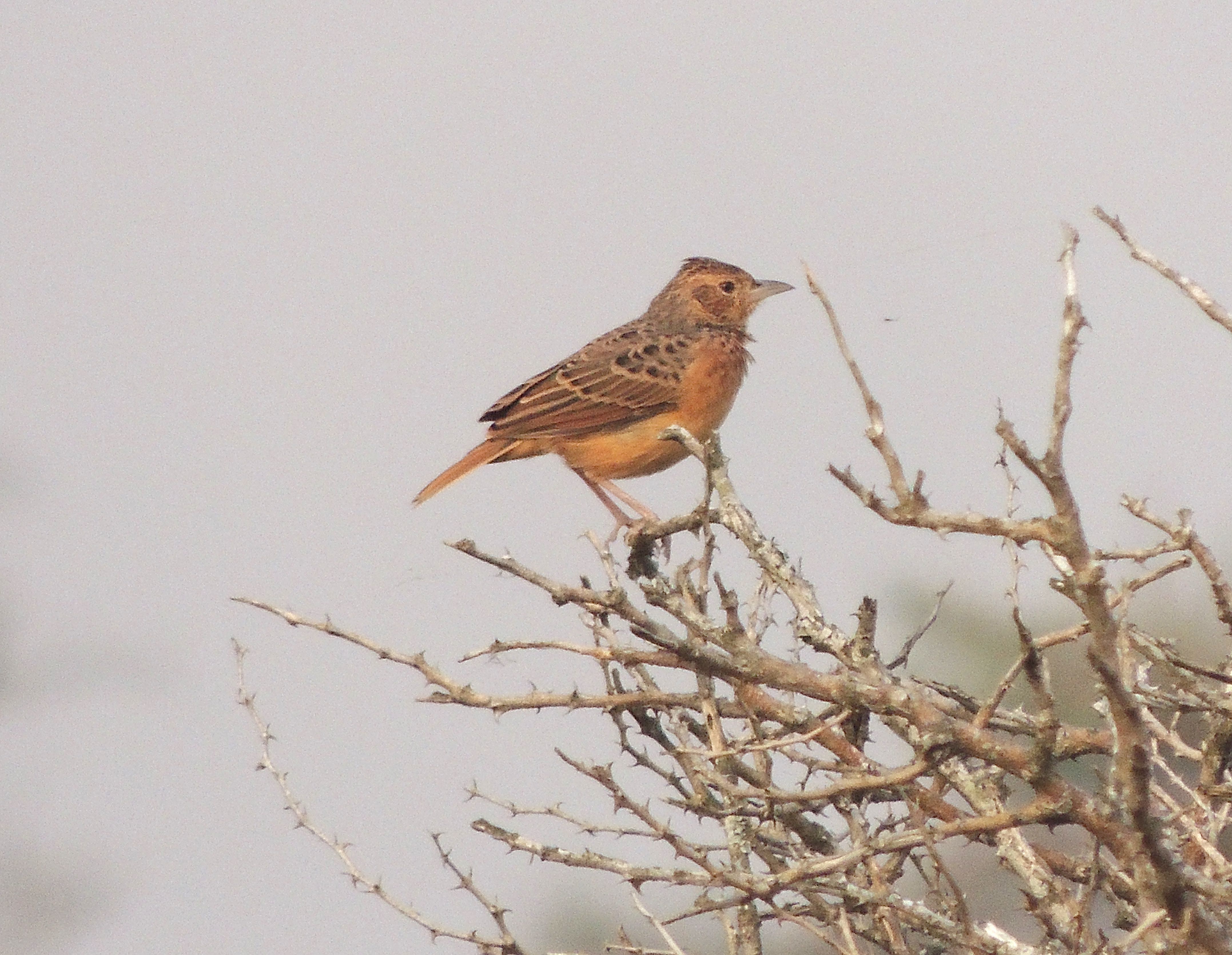 Flappet Lark - Photo by William Young
Flappet Lark - Photo by William Young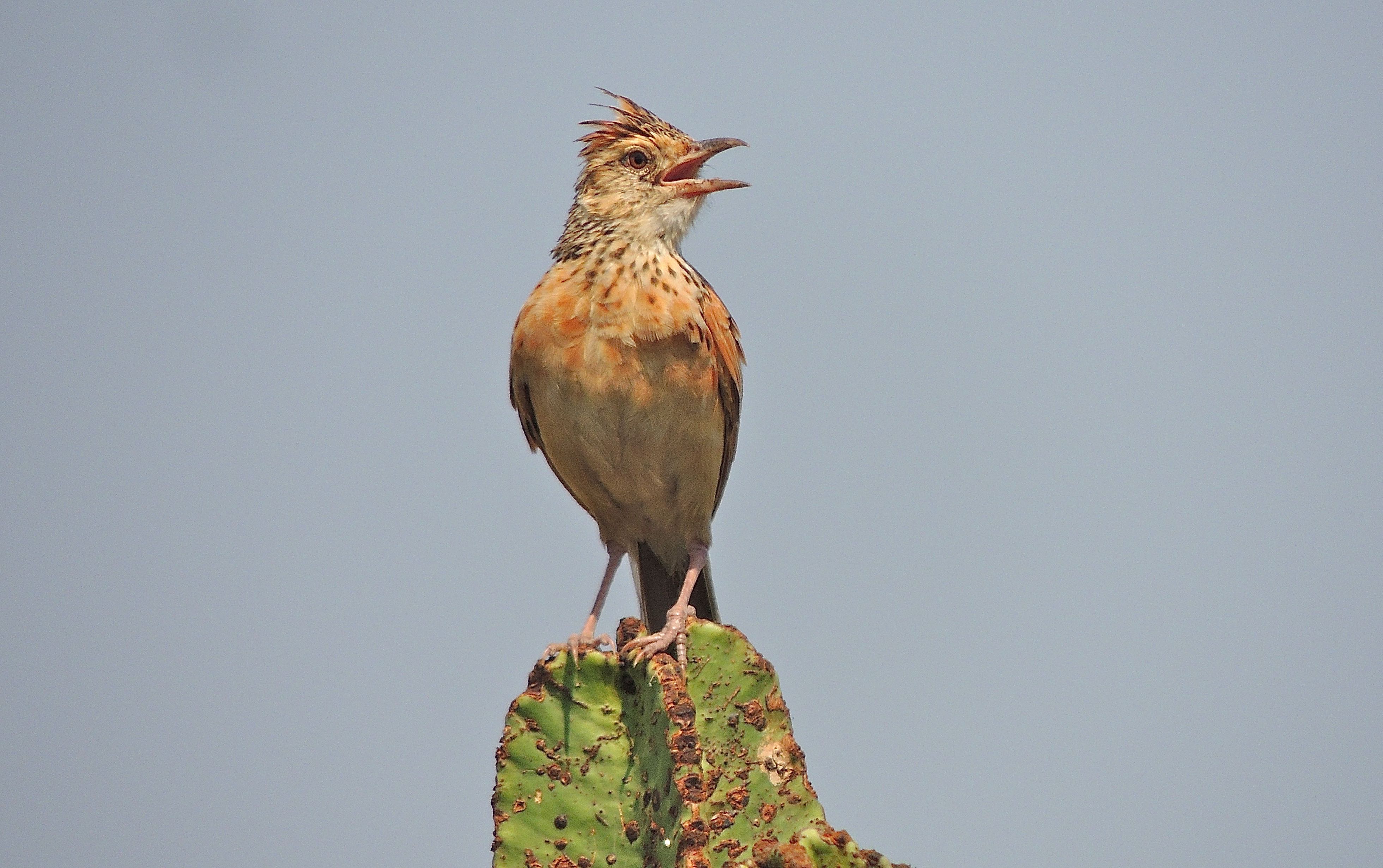 Rufous-naped Lark - Photo by William Young
Rufous-naped Lark - Photo by William YoungSwallows
By far, the species we saw in the greatest number on the trip is the Barn Swallow. Some days, we saw thousands of them. We did not see any on two days when we were in the mountains, but we saw them on every other day. Bank Swallows, who are also called Sand Martins, were also common. In the mountains, we saw Banded Martins, who look like large Bank Swallows with white underwing coverts. We saw both species at Murchison Falls NP. In Kisoro, I saw Rock Martins, who are all brown. While waiting for the ferry across the Nile, we saw Wire-tailed Swallows, including some who were perched. The long wire tail feathers can be difficult to see. Lesser Striped Swallows were seen in good numbers in a few places. The streaked underparts combined with the buffy head make them fairly easy to pick out. On the road to Masindi, we saw one Gray-rumped Swallow on a powerline with a bunch of Barn Swallows. It looked smaller than the Barn Swallows, and its head is a different color. Angola Swallows look like Barn Swallows, but are dingier below. They were seen in a few places, including where we received the orientation for the gorilla tracking. We saw a couple of Mosque Swallows while we were driving through the town near the entrance to Bwindi. In the mountains, we saw a lot of Black Sawwings, who are all dark. They were the most common swallow on the hike to Mubwindi Swamp. At the Mweya Lodge, I saw White-headed Sawwings, who are dark brown except for their white head.
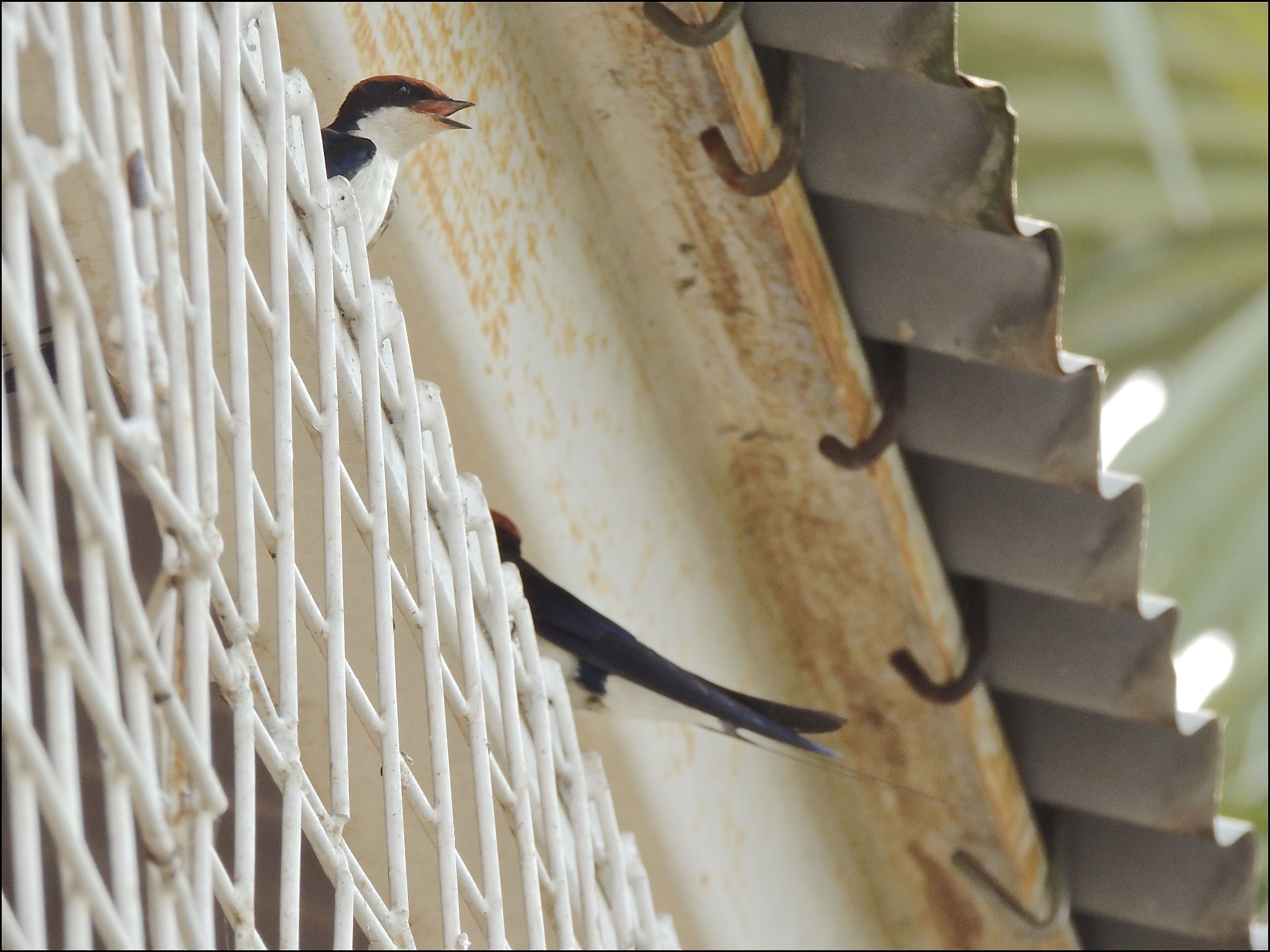 Wire-tailed Swallows - Photo by William Young
Wire-tailed Swallows - Photo by William Young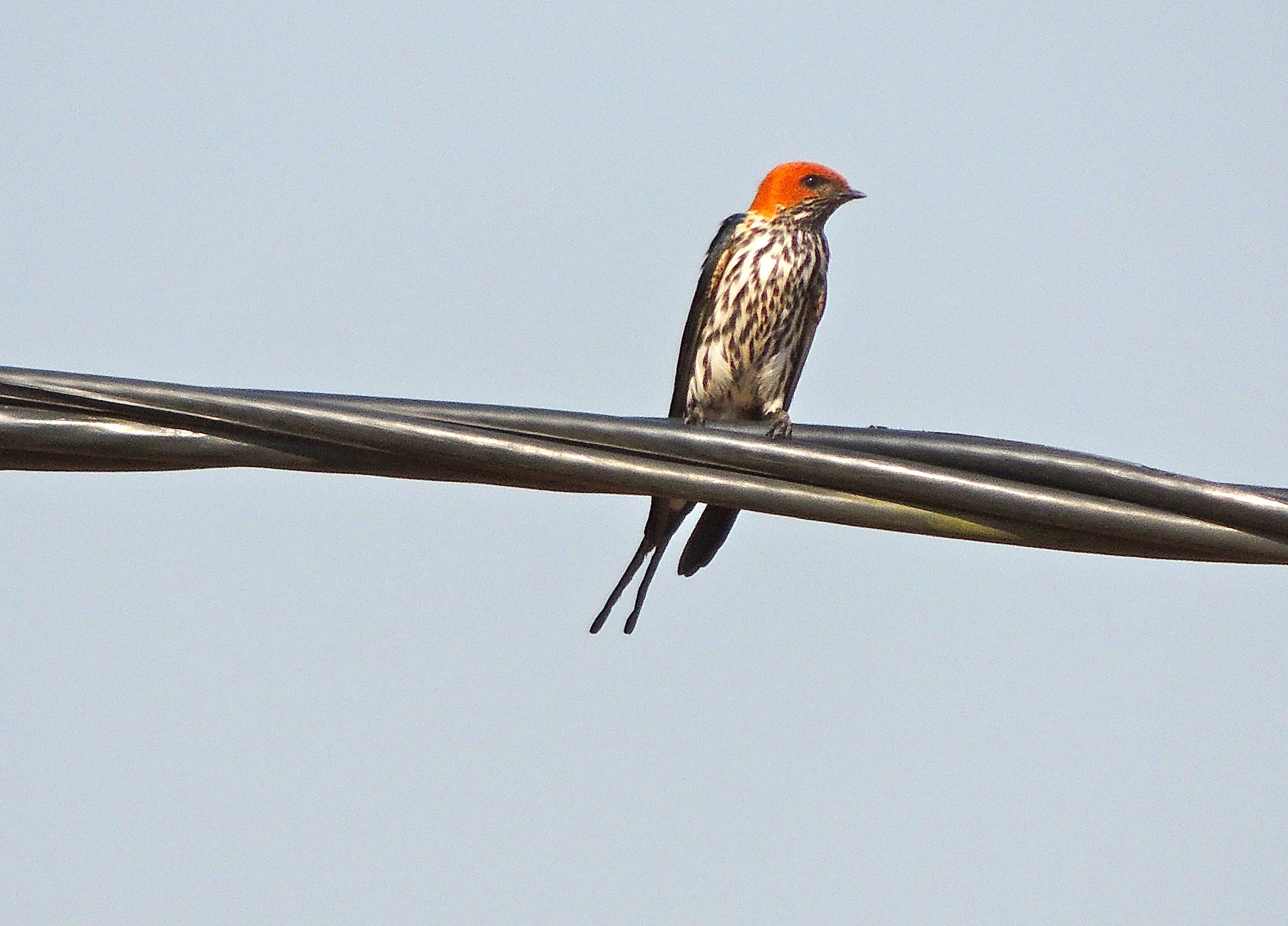 Lesser Striped Swallow - Photo by William Young
Lesser Striped Swallow - Photo by William YoungBlue-Flycatchers
We saw both African and White-tailed Blue-Flycatchers. They look similar, except for the white on the outertail coverts of the latter. When foraging, they remind me of fantails, because they constantly spread their tails. There is a species called a Dusky-blue Flycatcher, but the "blue" is linked to "dusky" rather than to "flycatcher".
Tits
We saw four species of tits. The most common was the Dusky Tit, whom we saw in the mountains. It is an all dark bird. We saw White-shouldered (Black) Tits near the Ziwa Rhino Sanctuary and the very similar looking White-winged Black Tit near Lake Mburo. Both are black birds with some white on the wing or shoulder. In the Bwindi Impenetrable Forest, there are nest boxes for Stripe-breasted Tits. They have a black V on the breast like a Great Tit, but they have no yellow. Their head is solid black, and they have wingbars. We saw them on the Ruhija Community Trail and after the hike to Mubwindi Swamp.
Greenbuls and Bulbuls
The Common Bulbul is the only species we saw every day of the trip. They were common in all types of habitats. Some days, we saw at least a hundred. They are also called the Dark-capped Bulbul, and they might be split. They are very vocal and were the first bird species I heard on January 1. They are easy to identify if you see the yellow undertail coverts. One hopped onto my hand and took a piece of bread when we were having lunch at the Mweya Lodge. Vero showed me one on the nest just below the reception area at the New Havens Lodge.
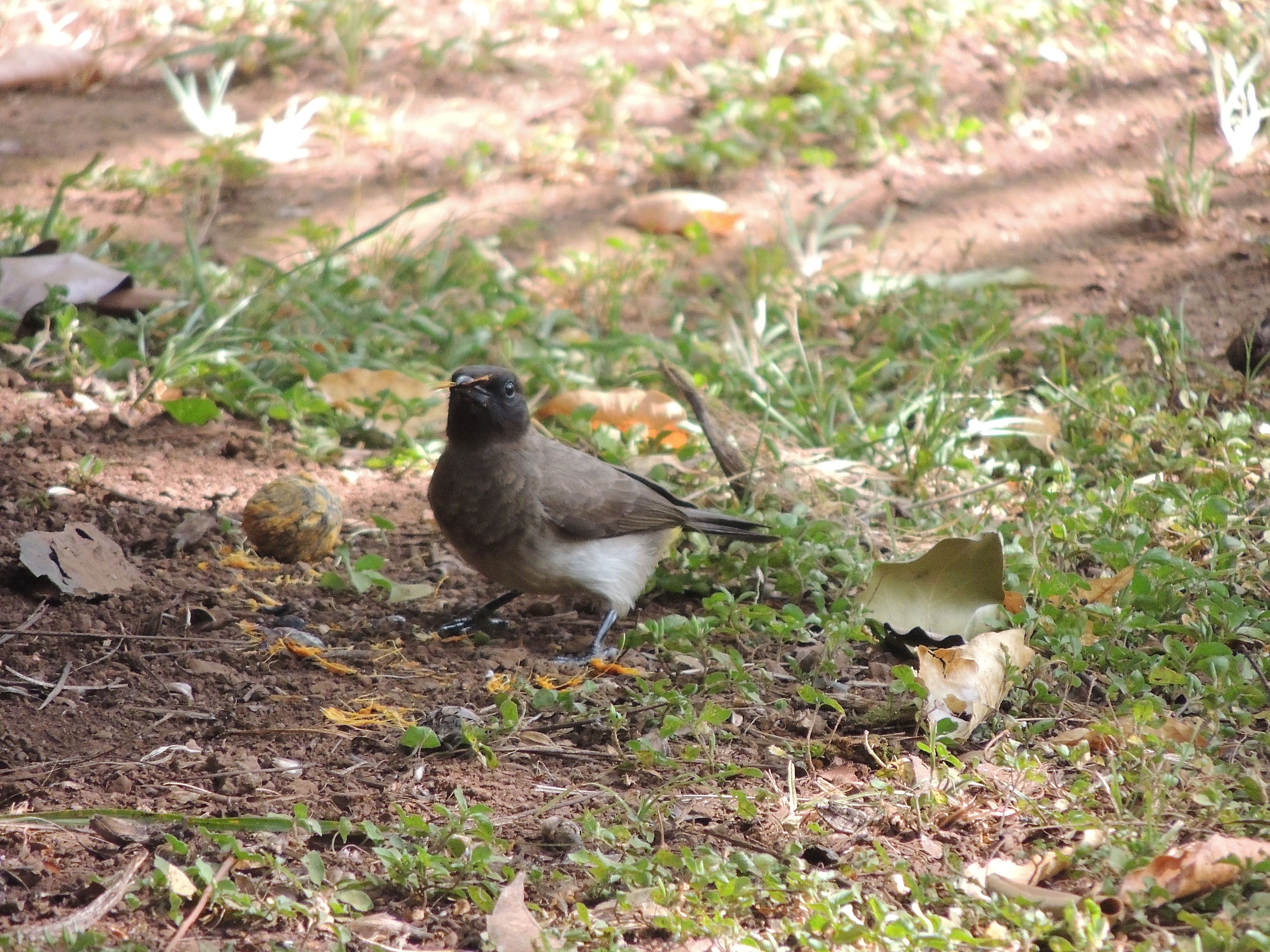 Common Bulbul - Photo by William Young
Common Bulbul - Photo by William Young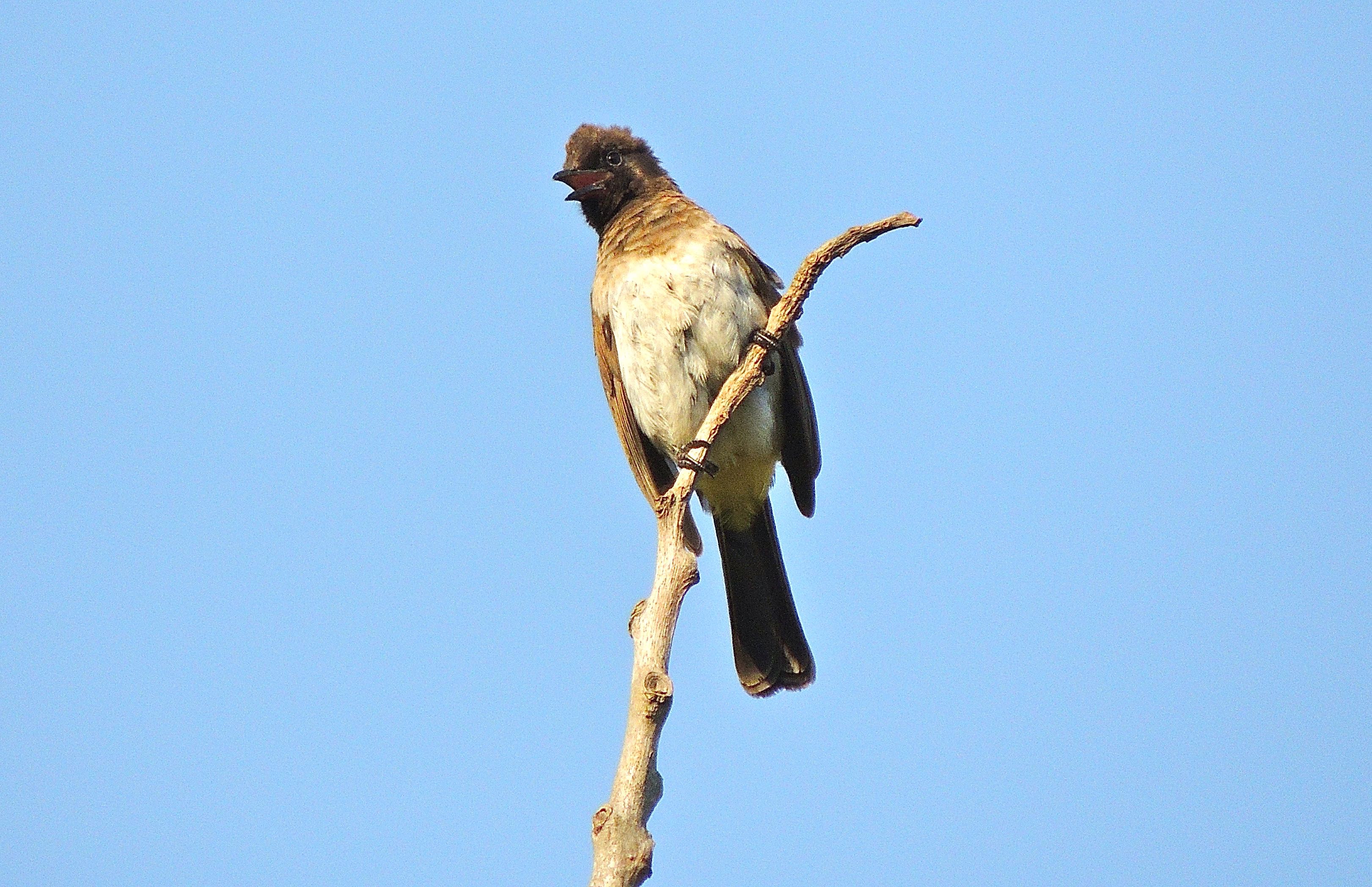 Common Bulbul - Photo by William Young
Common Bulbul - Photo by William YoungGreenbuls are not easy to identify, but if you see a lot of greenbul species together, you can start to recognize some of the differences. I saw 13 species. In the parking area for the Royal Mile, we saw Spotted Greenbuls in a tree. They are distinctive, because they have white spots on their wings like a Nicator. The Yellow-whiskered Greenbul looks as if it is wearing a fake yellow mustache. The Red-tailed Greenbul has a white throat, and its rufous tail contrasts with its body, like a Hermit Thrush. The Red-tailed Bristlebill also has a rufous tail, and it has bare skin around the eye. Otherwise, most of the other greenbuls we saw were difficult to tell apart. I saw Slender-billed, Mountain, Honeyguide, Little Grey, Ansorge's, Plain, Toro Olive, White-throated, and Xavier's Greenbuls. They have slight differences in size, eye color, and plumage.
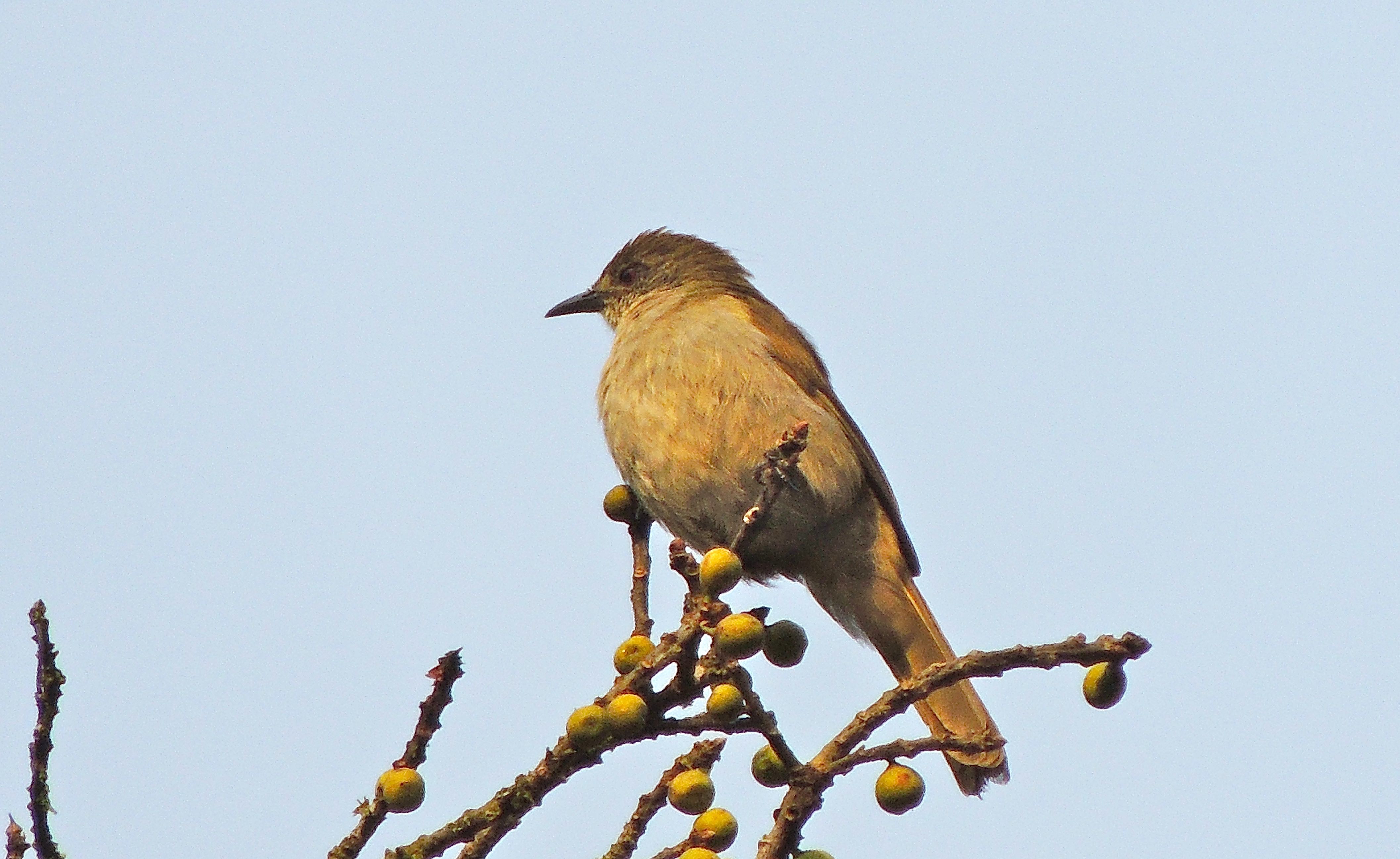 Slender-billed Greenbul - Photo by William Young
Slender-billed Greenbul - Photo by William Young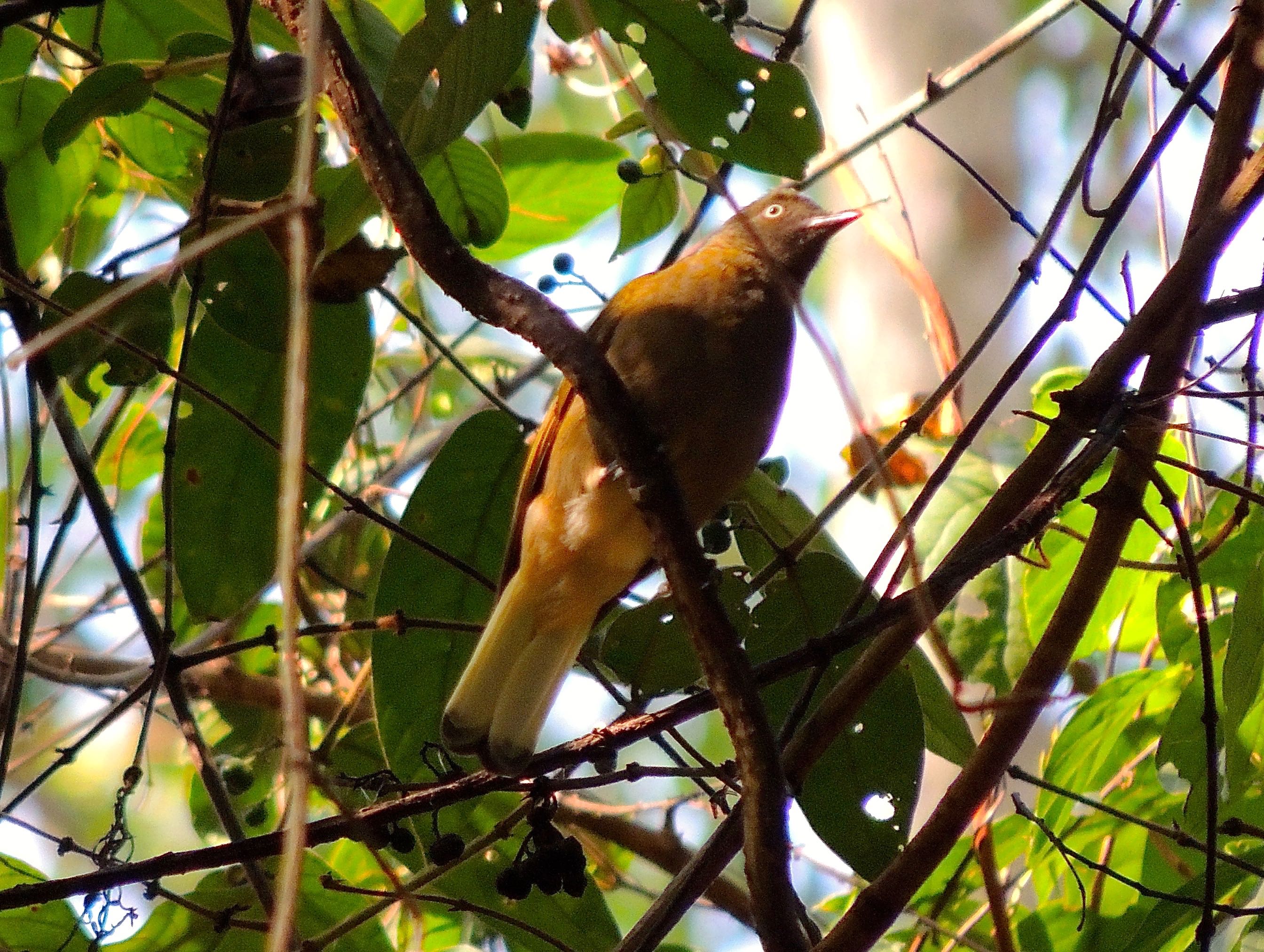 Honeyguide Greenbul - Photo by William Young
Honeyguide Greenbul - Photo by William YoungCrombecs and Longbills
Crombecs are small, short-tailed warblers who move around a lot. In Semliki Forest, Lori found a Green Crombec by the water building a nest that hung from a branch and looked like the framework of a Baltimore Oriole's nest that still needed a lot of work. The Green Crombec is a round little green bird who is shaped like an egg. Crombecs are usually manic birds when foraging, so watching a relatively still one near a nest was unusual. After we left Kisoro, I got a quick look at a White-browed Crombec whose face is a little lighter than the Green's. At the Royal Mile, we saw the Lemon-bellied Crombec, who is only 3 inches long, compared to the hefty 3 1/2 inches of the first two. The Northern and Red-faced Crombecs are brown rather than green and have contrasting rufous underparts. I saw both species on a game drive at Murchison Falls NP. The Northern Crombec has a black line through its eyes. It has a gray back and rufous underparts, resembling a Red-breasted Nuthatch. The Red-faced Crombec lacks the eyeline.
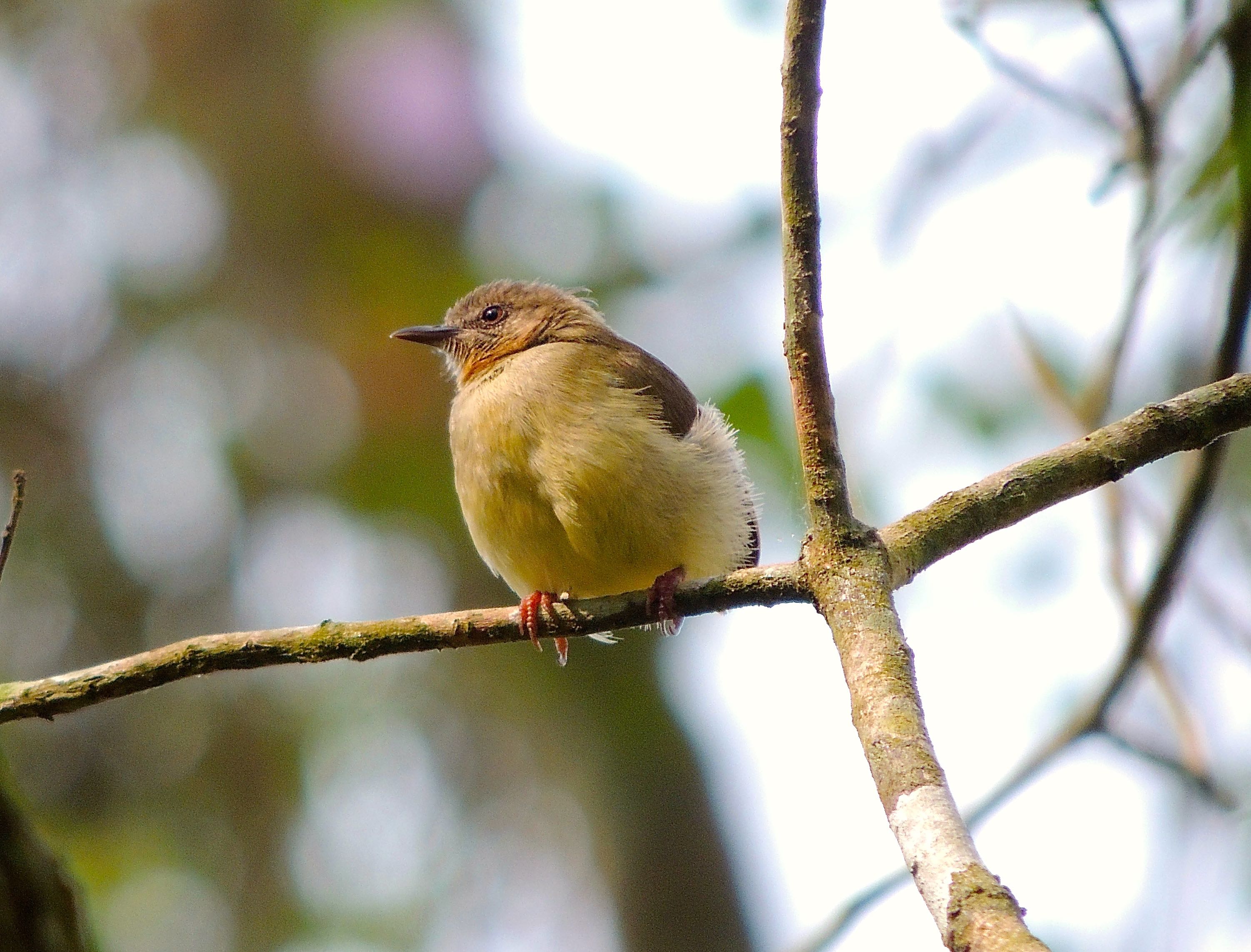 Green Crombec - Photo by William Young
Green Crombec - Photo by William Young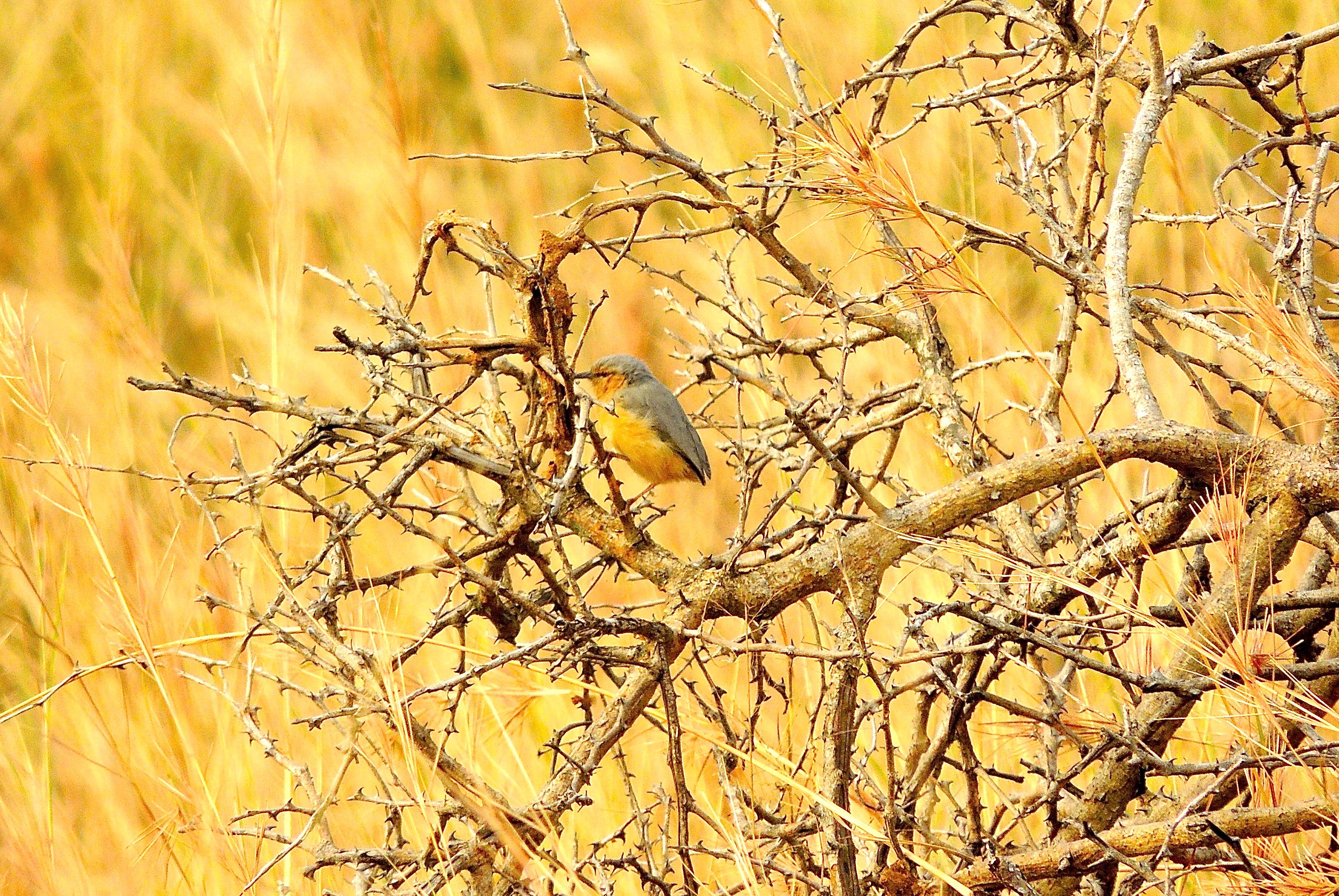 Northern Crombec - Photo by William Young
Northern Crombec - Photo by William YoungLongbills are slightly larger than crombecs and nondescript. They have a straight bill that dominates their head, a bit like a gnatwren, and they have a longer tail than the crombecs. In the Kanio Pabidi Forest, we saw a Yellow Longbill. A Gray Longbill was also there — I heard it, but never saw it. I did not see any hylias, although Crammy heard some. The African Moustached Grass Warbler does not fit into this group, the same way that the Yellow-breasted never seemed to fit in with the New World warblers. It is 7.5 inches and often sits upright in the grass. It is a brown bird with a black eyeline and rufous underparts.
Warblers
A lot of the African warblers are little brown jobs who do not let you have much of a look. They come from a number of different families, including the crombecs, longbills, and cisticolas who are included in other categories. I saw a Chestnut-capped Flycatcher on the Royal Mile, who is actually a warbler. At Bwindi, we saw Red-faced Woodland Warblers, who are Phylloscopus warblers with a brick-colored face and throat. Willow Warblers were common, and we saw them in a lot of places. At Bulisa, we saw an Eastern Olivaceous Warbler, who has greenish upperparts and light underparts. When we were waiting to take the ferry across the Nile, a Lesser Swamp Warbler hopped into the open. It is brownish and looked more elongated than some of the smaller warblers. I did not get much of a look at an African Reed Warbler at Queen Elizabeth NP who was missing its tail. I had a fleeting look at a Mountain Yellow Warbler. One popped onto a bare branch in front of us, but I never got my binoculars on it. In Mubwindi Swamp, I saw a Grauer's Swamp Warbler, which is an endangered Albertine Rift endemic. It foraged in the reeds and occasionally cocked its tail like a wren.
Cisticolas
As with the greenbuls, the cisticolas and their allies are a confusing group who are easier to tell apart by song than by plumage. I saw 10 species of cisticolas. When we got into the mountains, the Chubb's Cisticolas were the most common. We saw both Red-faced and Rattling Cisticolas on the road to Masindi and in the Bigodi Wetlands. The Red-faced looked smaller and slimmer and had red on both the face and flanks. The Rattling had dark wings. Whistling Cisticolas were around Masindi. I also saw one perched on top of a flowering bush just before we arrived at the Royal Mile. I saw a Trilling Cisticola in the Lake Mburo area. I encountered Winding Cisticolas at the Entebbe Botanical Gardens and in Mabamba Swamp. Crammy scoped one, and I could see the white on the tip of the tail. Carruther's Cisticolas were in the papyrus by the bridge near Queen Elizabeth NP. They have a bubbly song like a Marsh Wren. At Queen Elizabeth NP, we encountered Stout, Zitting, and Croaking Cisticolas. The Stout Cisticola has a buffy cap with black stripes, which are also on its back. I had especially long looks at the Croaking Cisticola, who has one of my favorite bird names. We also saw Zitting Cisticolas at Murchison Falls NP.
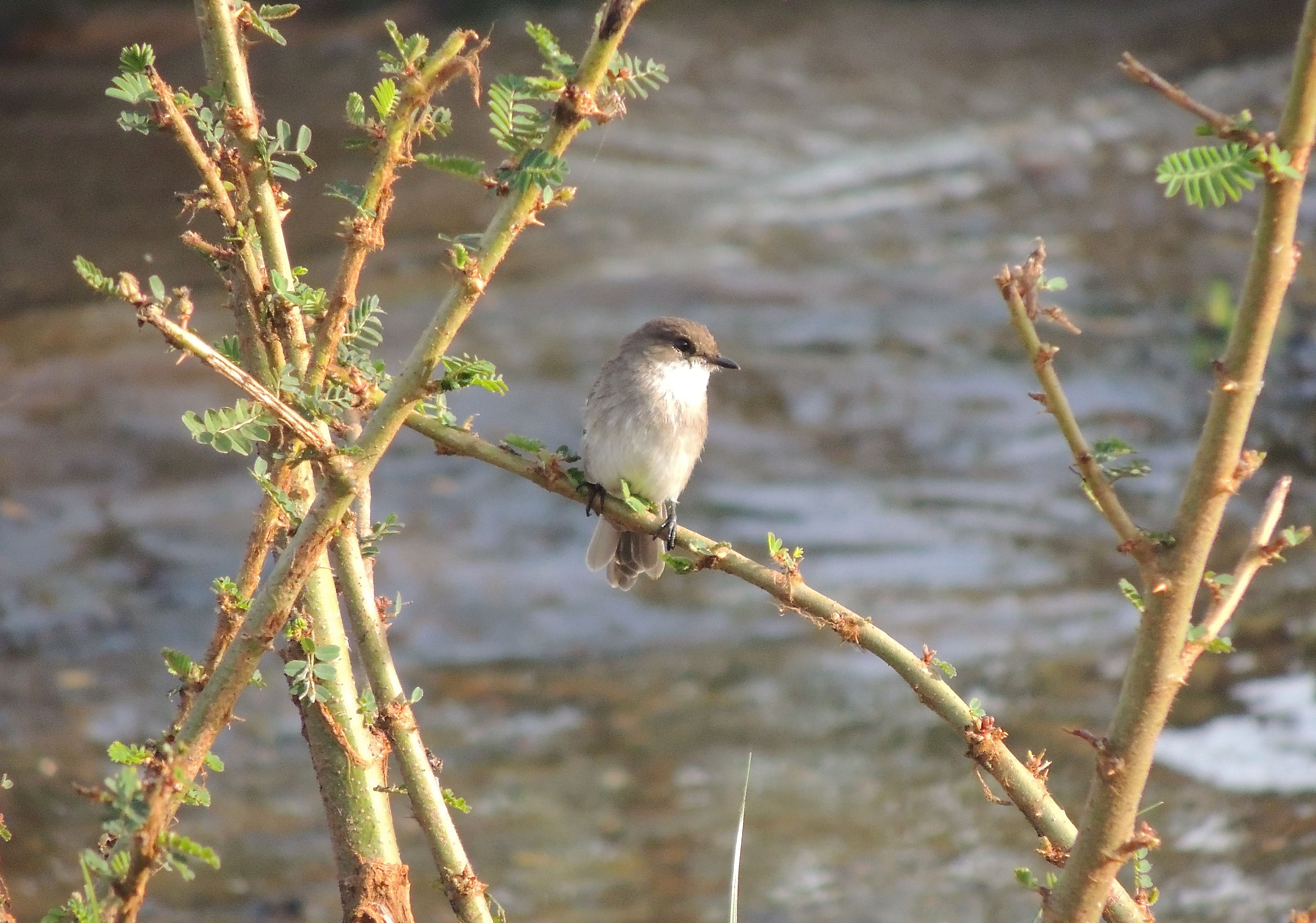 Winding Cisticola - Photo by William Young
Winding Cisticola - Photo by William Young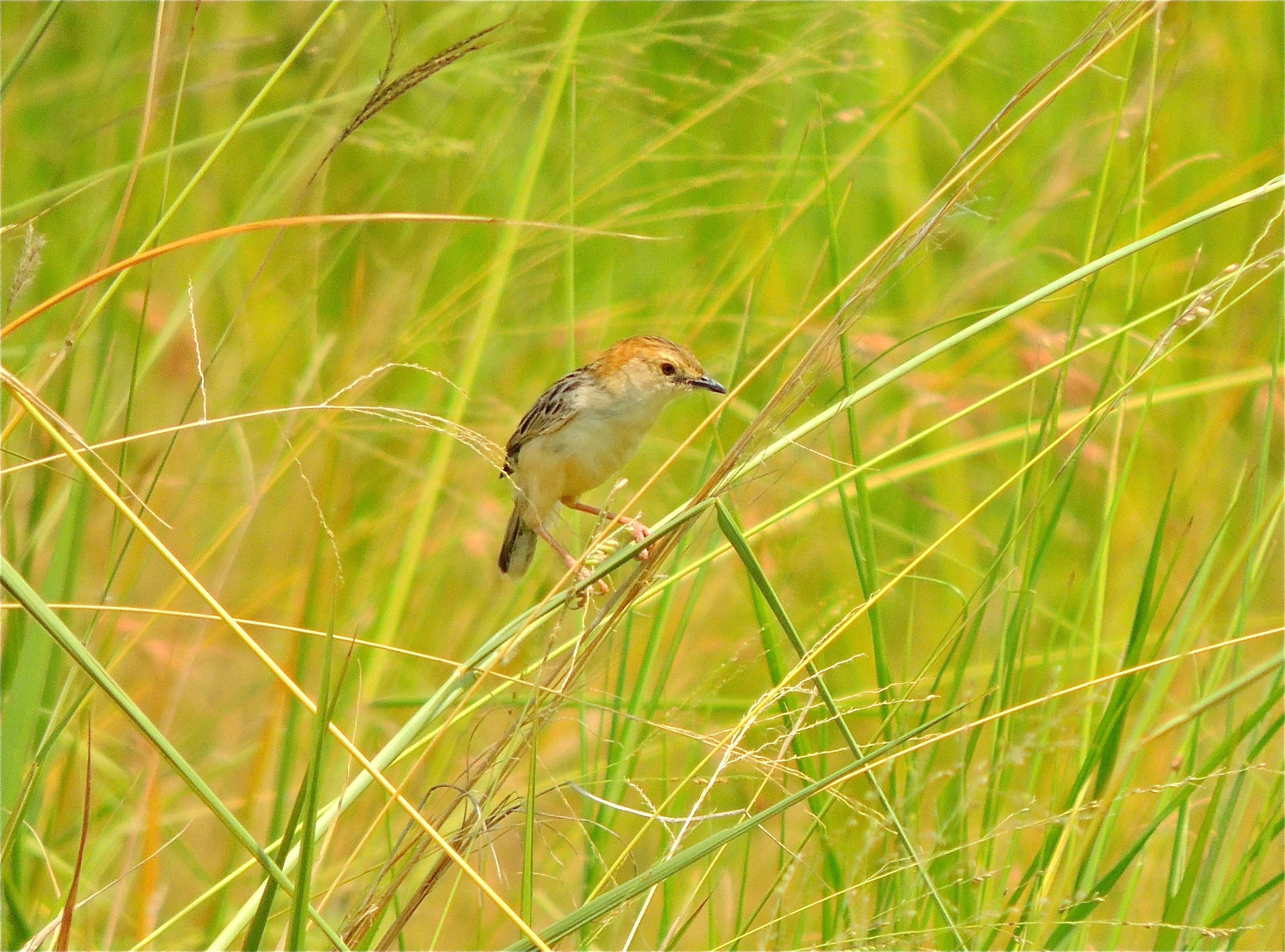 Stout Cisticola - Photo by William Young
Stout Cisticola - Photo by William Young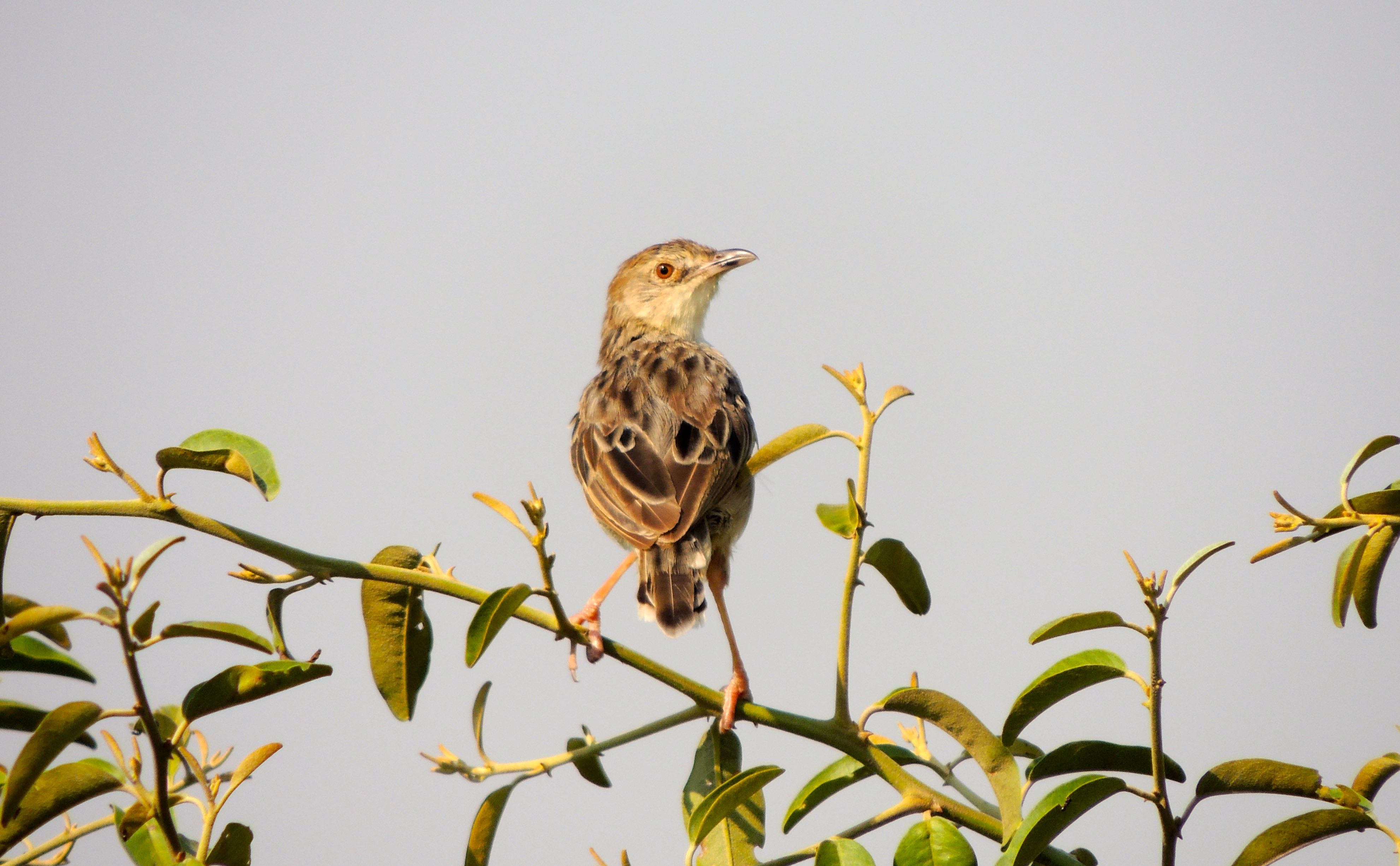 Croaking Cisticola - Photo by William Young
Croaking Cisticola - Photo by William YoungApalises and relatives
Apalises are in the same family as cisticolas. They are slender birds with long tails, resembling gnatcatchers in shape. I saw six species. We encountered Buff-throated Apalises in Kanio Pabidi Forest and on numerous subsequent days. They are brown on the back and light below, with a somewhat darker throat. The Black-throated Apalis is yellow below with a dark throat. We saw them in the Bwindi Impenetrable Forest. The Mountain Masked Apalis, whom we saw in Mubwindi Swamp, has a black hood and throat, and it is not yellow below. We saw Chestnut-throated Apalises along the Community Trail in Ruhija. They are gray with chestnut on the throat. Their call sounds like a ringing mobile phone. The Grey Apalis is nondescript. The Rwenzori (Collared) Apalis is an Albertine Rift endemic with a band across the breast. Prinias have a long tail like apalises. Tawny-flanked Prinias are brown on back and light below. Banded Prinias are dark birds with a light eye and barring on their underparts. Lori took a photo of one at Semliki which allowed me to see the bands and the dark face.
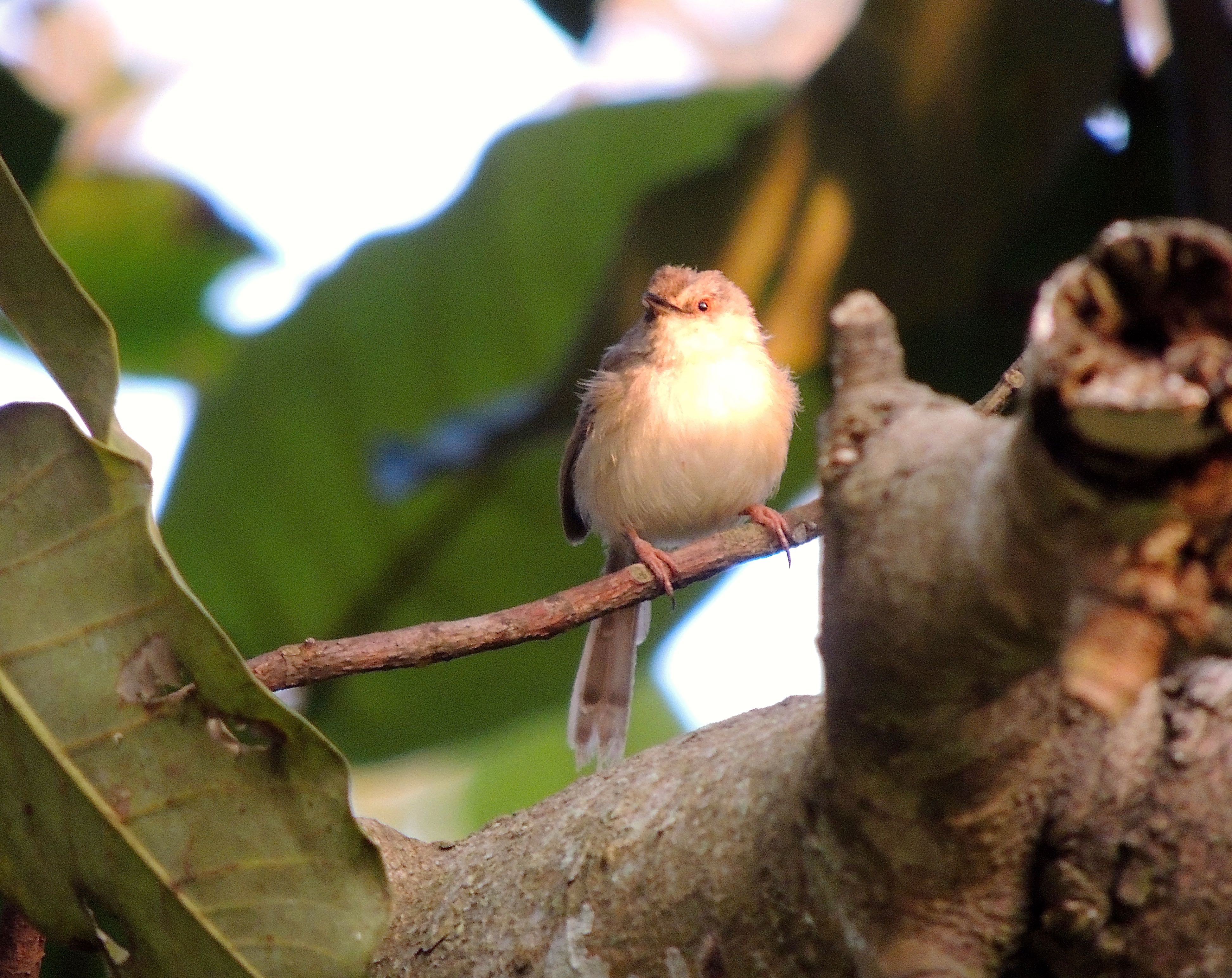 Buff-throated Apalis - Photo by William Young
Buff-throated Apalis - Photo by William YoungA few other types of birds are in this family. On the Royal Mile, I saw both Yellow-browed and Olive-green Camaropteras. They are round LBJs with much shorter tails than the apalises and prinias. Also on the Royal Mile was a Rufous-crowned Eremomela, who has some rufous on the head and is a similar shape to the camaropteras. It had a band on its chest. On the Ruhija Community Trail, I saw a Black-faced Rufous Warbler, a rufous bird who looks as if someone sprayed black paint from its crown to its belly. In the gardens of the Kisoro Traveller's Inn, we had nice looks at a Grey-capped Warbler. It is a large, vocal warbler with a gray cap, olive back, ragged black line through the eye, and some rufous on the throat.
Babblers
There are two families called babblers. One contains the Black-lored, Brown, Arrow-marked, and Capuchin Babblers. We saw a Black-lored perched on a wire after we left Lake Mburo. I took a photo which shows the dark mark near the cheek. It is one of the babblers whose light eyes make it appear angry. We saw a flock of about 20 Brown Babblers on our drive from Masindi to Fort Portal. They chattered loudly, and I saw them fly into a distant tree. We saw Arrow-marked Babblers at the feeders at Mweya Lodge. They also have a yellow eye. At Semliki, I heard and had a fleeting glimpse of some Capuchin Babblers. They are shy — most babblers like to move through foliage quickly. The other family of babblers has three species whom we saw. In one of the mountain forests, we saw a lot of Eurasian Blackcaps. They are grayish birds with a black cap. We saw an African Hill-Babbler in the same area. We saw the Rwenzori Hill-Babbler when we were on the Community Trail in Ruhija. We also saw them on the hike to Mubwindi Swamp. The Rwenzori is a split from the African Hill-Babbler.
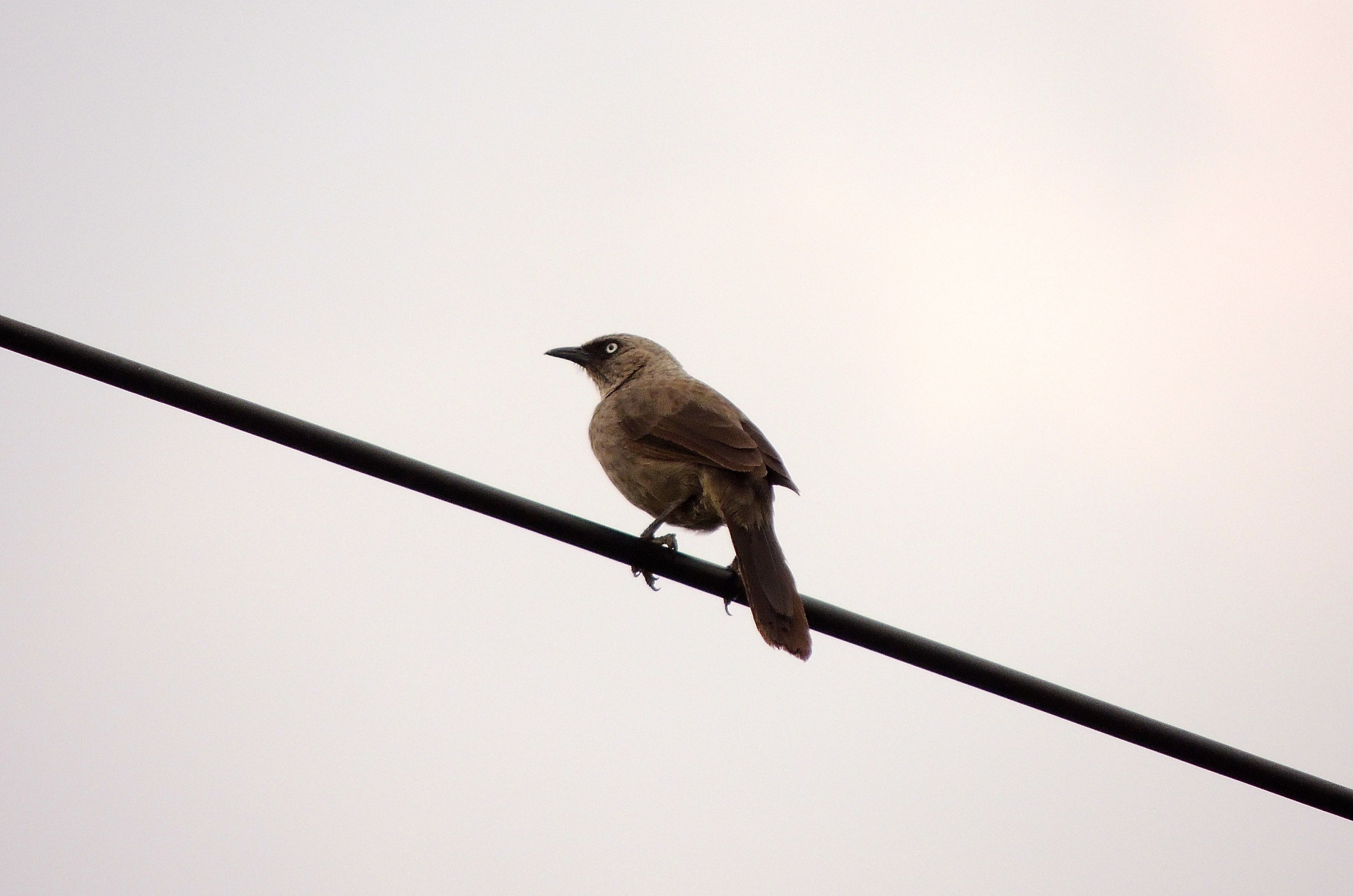 Black-lored Babbler - Photo by William Young
Black-lored Babbler - Photo by William YoungWhite-eyes
African Yellow White-eyes were common in a number of places. In Tanzania, I had trouble getting good looks at them, but they seemed to forage much lower in Uganda and out in the open. They look a lot like the Silvereyes in Australia.
Illadopsis
Illadopsises are extreme skulkers. I had a fleeting glimpse at a Pale-breasted Illadopsis at the Royal Mile, and another fleeting glimpse of a Mountain Illadopsis at Bwindi. The Mountain Illadopsis is a small fast-moving bird who sometimes cocks its tail like a wren. We heard the loud three-note call of the Scaly-breasted Illadopsis in a couple of places, including on the day I tracked chimps, but I never saw one.
Old World Flycatchers
The Old World Flycatchers are a large and varied family. At Murchison Falls NP, Silverbirds were common. They are gray on the back and rufous below. On the road to Masindi, we saw one get into a confrontation with a Spotted Morning Thrush in a tree. Northern Black-Flycatchers, who are all black, were in the gardens at the Victoria View Guest House as well as around the property at the Mweya Lodge. We saw a few Yellow-eyed Black-Flycatchers on our walk to Mubwindi Swamp. From some angles, they appeared to be the color of a catbird. White-eyed Slaty Flycatchers were in the same area, as well as in the Bigodi Wetlands. We also saw them on the lawn at the Mountains of the Moon Hotel, and they did not appear to have much of an eyering. Swamp Flycatchers are small brown birds who were in the lobby at the Mweya Safari Lodge in Queen Elizabeth NP. We saw a Pale Flycatcher at Murchison Falls NP, who looks a little larger than a Swamp Flycatcher. We saw Dusky Flycatchers in various parts of the Bwindi Impenetrable Forest. A pair of Ashy Flycatchers were building a nest over the water near Murchison Falls. The Dusky-blue Flycatcher is a dark gray bird we saw in Ruhija. Cassin's Flycatchers are light gray with black wings, and we saw them in wetland areas near bridges. The two species of tit-flycatchers we saw had a posture that was more horizontal than vertical. We saw Lead-colored Tit-Flycatchers in Semliki. They have a blue head and crest and white underparts. We also saw a Gray-throated Tit-Flycatcher in the Bigodi Wetlands.
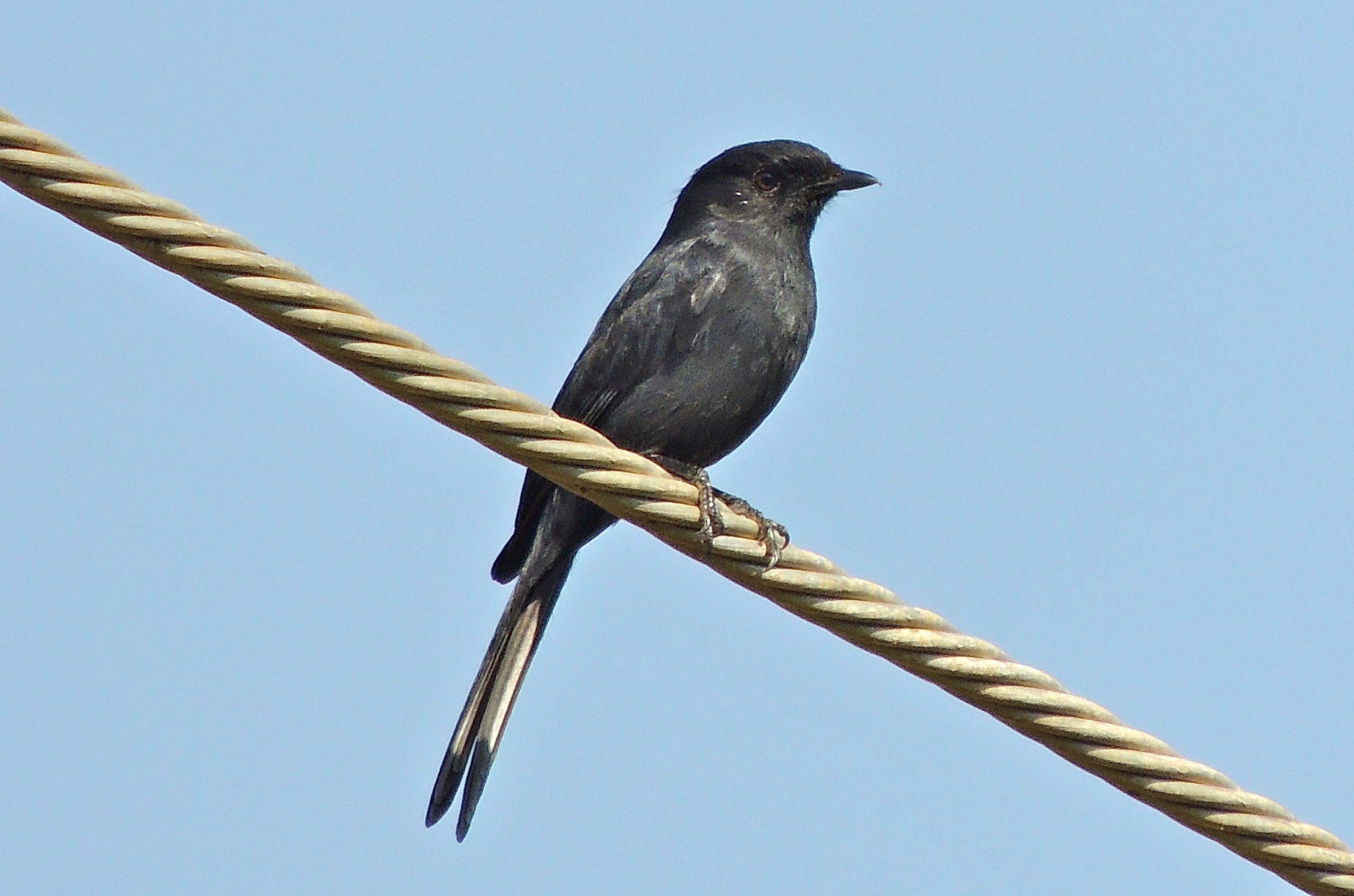 Northern Black-Flycatcher - Photo by William Young
Northern Black-Flycatcher - Photo by William Young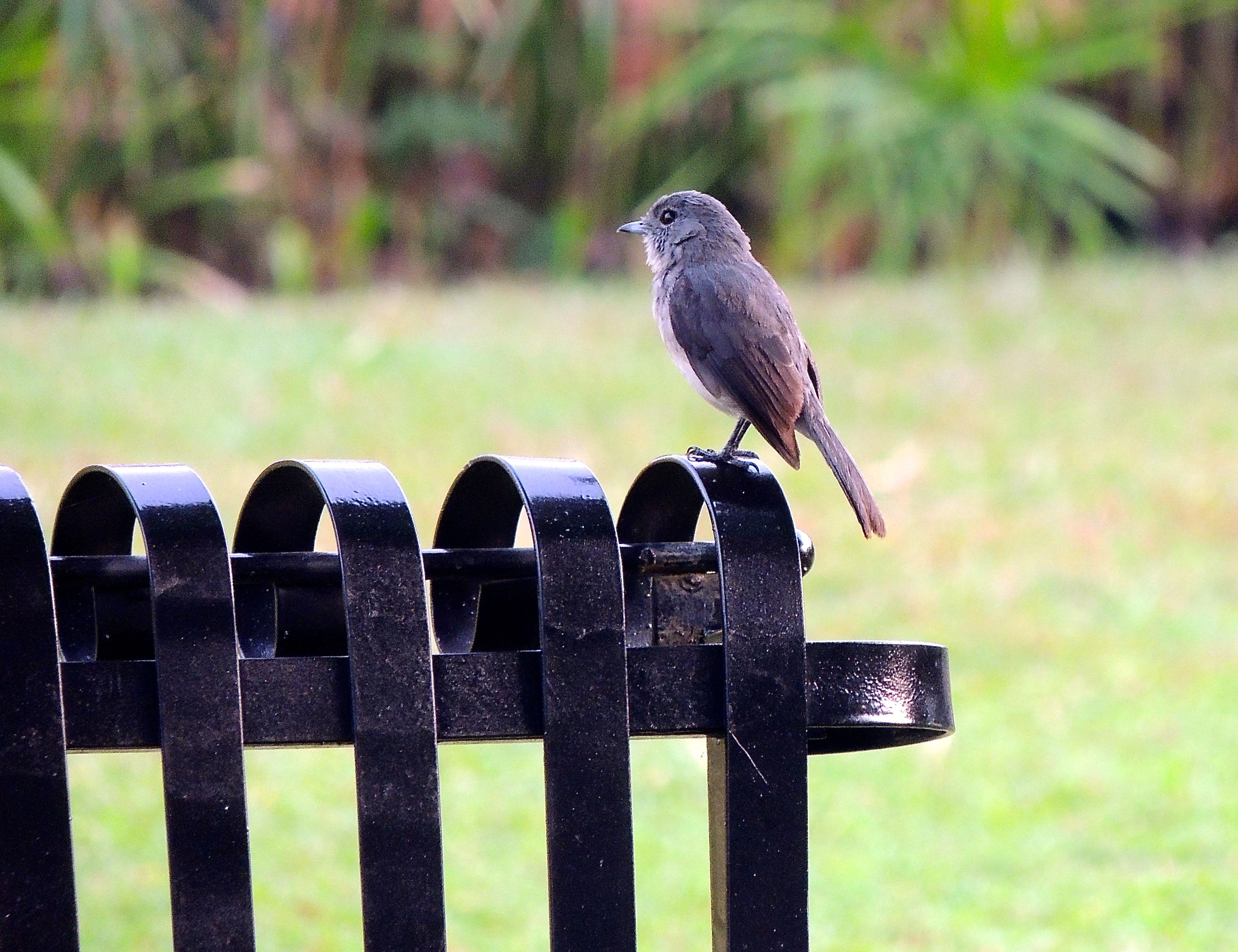 White-eyed Slaty Flycatcher - Photo by William Young
White-eyed Slaty Flycatcher - Photo by William Young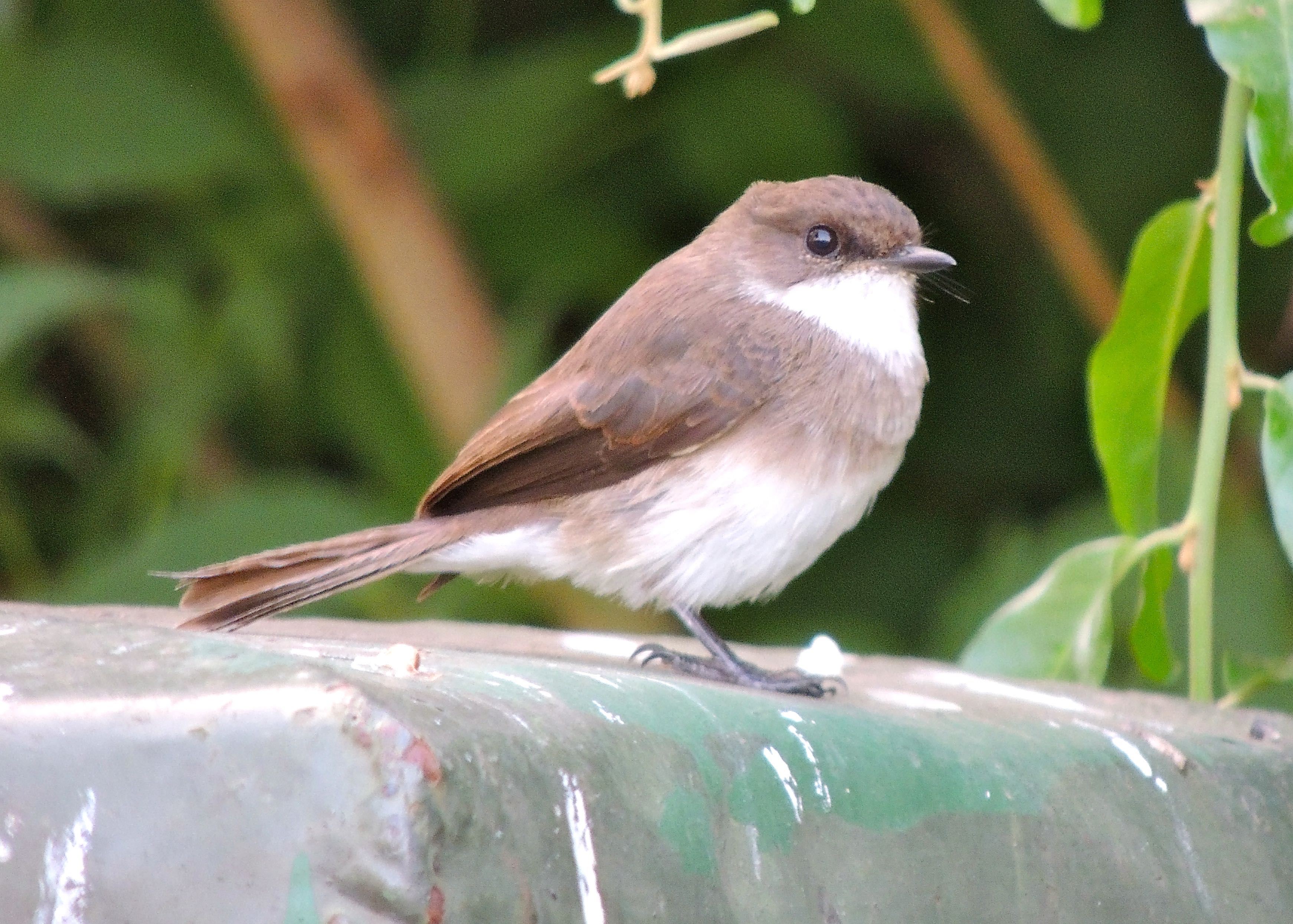 Swamp Flycatcher - Photo by William Young
Swamp Flycatcher - Photo by William Young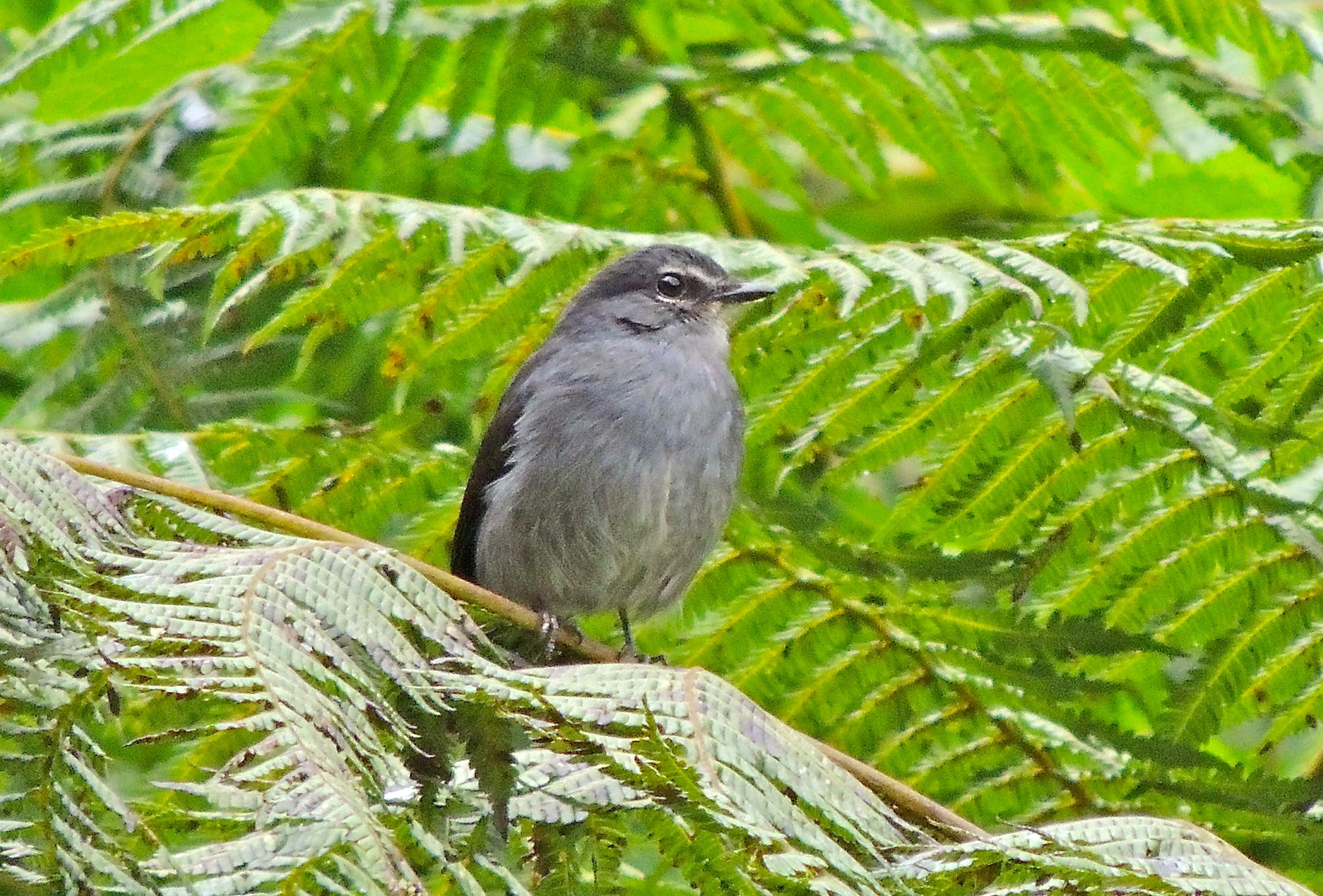 Dusky-blue Flycatcher - Photo by William Young
Dusky-blue Flycatcher - Photo by William Young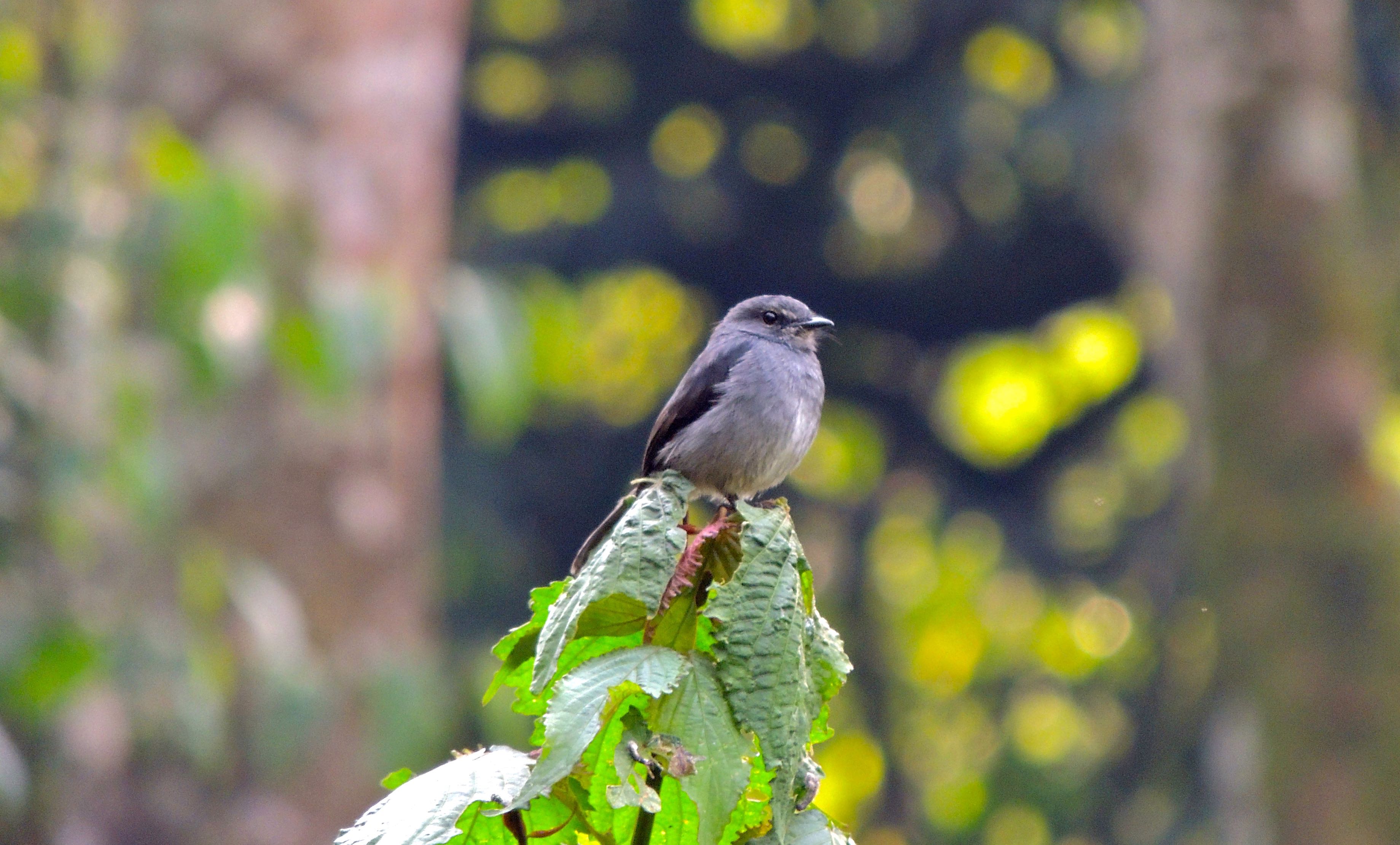 Cassin's Flycatcher - Photo by William Young
Cassin's Flycatcher - Photo by William YoungOn the Royal Mile, we saw both White-browed and Brown-backed Scrub-Robins, who are sleek and look similar. Robin-Chats are stockier. The White-browed Robin-Chat is orange below. I saw them at the Mweya Lodge and at the Victoria View Guest House. The Snowy-crowned (or Snowy-headed) Robin-Chat looks similar, but instead of having a white eyeline, it has a white crown. We saw some at the Bigodi Wetlands. Some African robins are really beautiful. At Semliki, we saw a Forest Robin, who has pale eyes and a bright yellow-orange breast. Also beautiful were the White-starred Robins we saw on the Ruhija Community Trail. They are yellow-orange below, with a black hood and a white spot in front of the eye. After we left Murchison Falls NP, we saw two Spotted Palm (Morning) Thrushes. They are spotted below, but have a white throat.
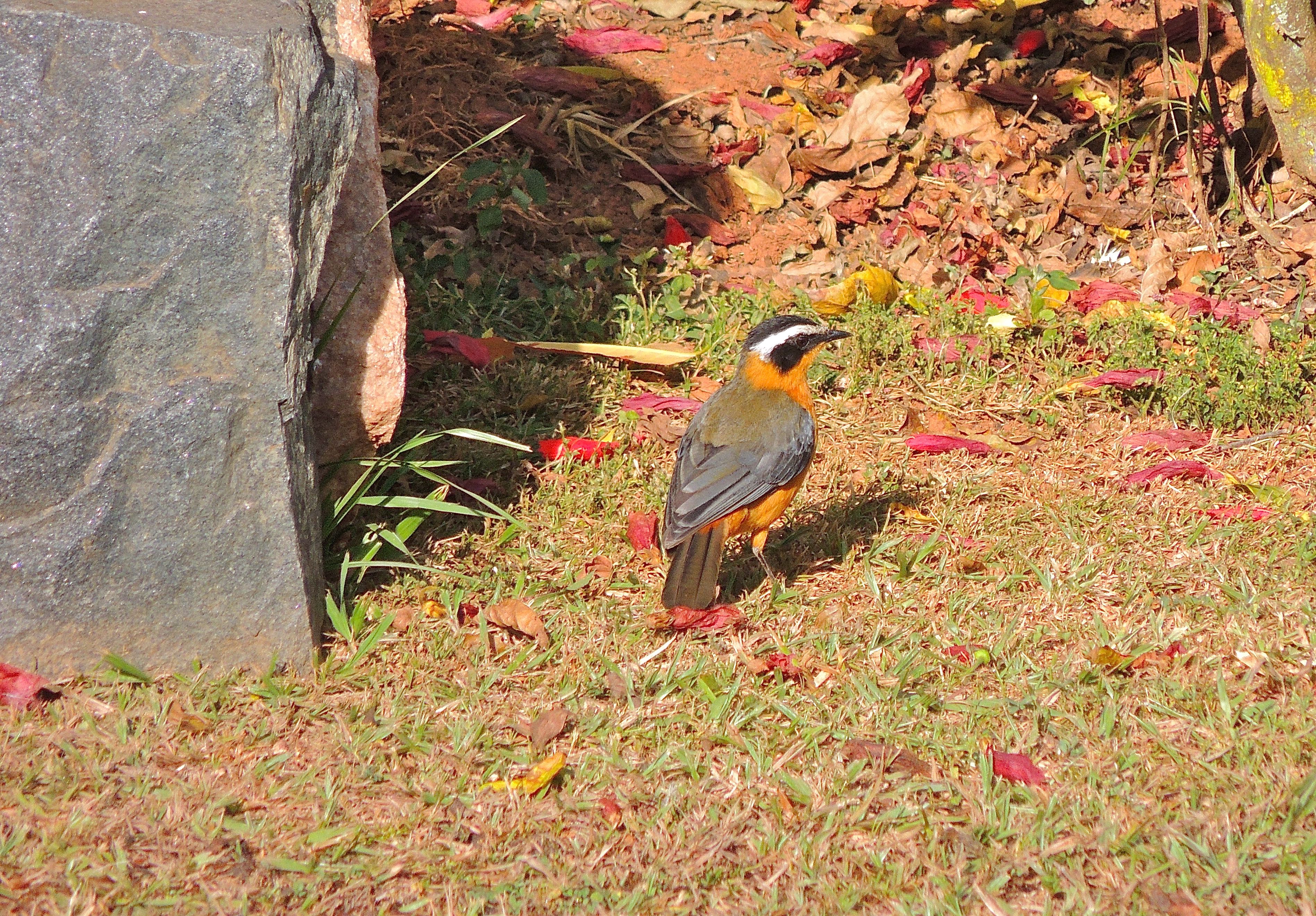 White-browed Robin-Chat - Photo by William Young
White-browed Robin-Chat - Photo by William YoungWhinchats were common in the grasslands at both Murchison Falls NP and Queen Elizabeth NP. When we got to the higher elevations around Ruhija, we saw African Stonechats. At Murchison Falls NP, we saw both male and female Sooty Chats. The males have some white on the wings, while the females are all dark. As we drove to Kisoro, we saw a Ruaha (White-headed Black) Chat perched on a wire. It is a new species who has been separated from the Sooty Chat. We saw a Familiar Chat flying one day while we were driving, but it flew onto a gated property that we could not enter. Northern Wheatears were fairly common at Murchison Falls NP. In the same area, we saw both Pied and Isabelline Wheatears. "Isabelline" means "parchment-colored". The Isabelline Wheatear is pale, but has a white rump.
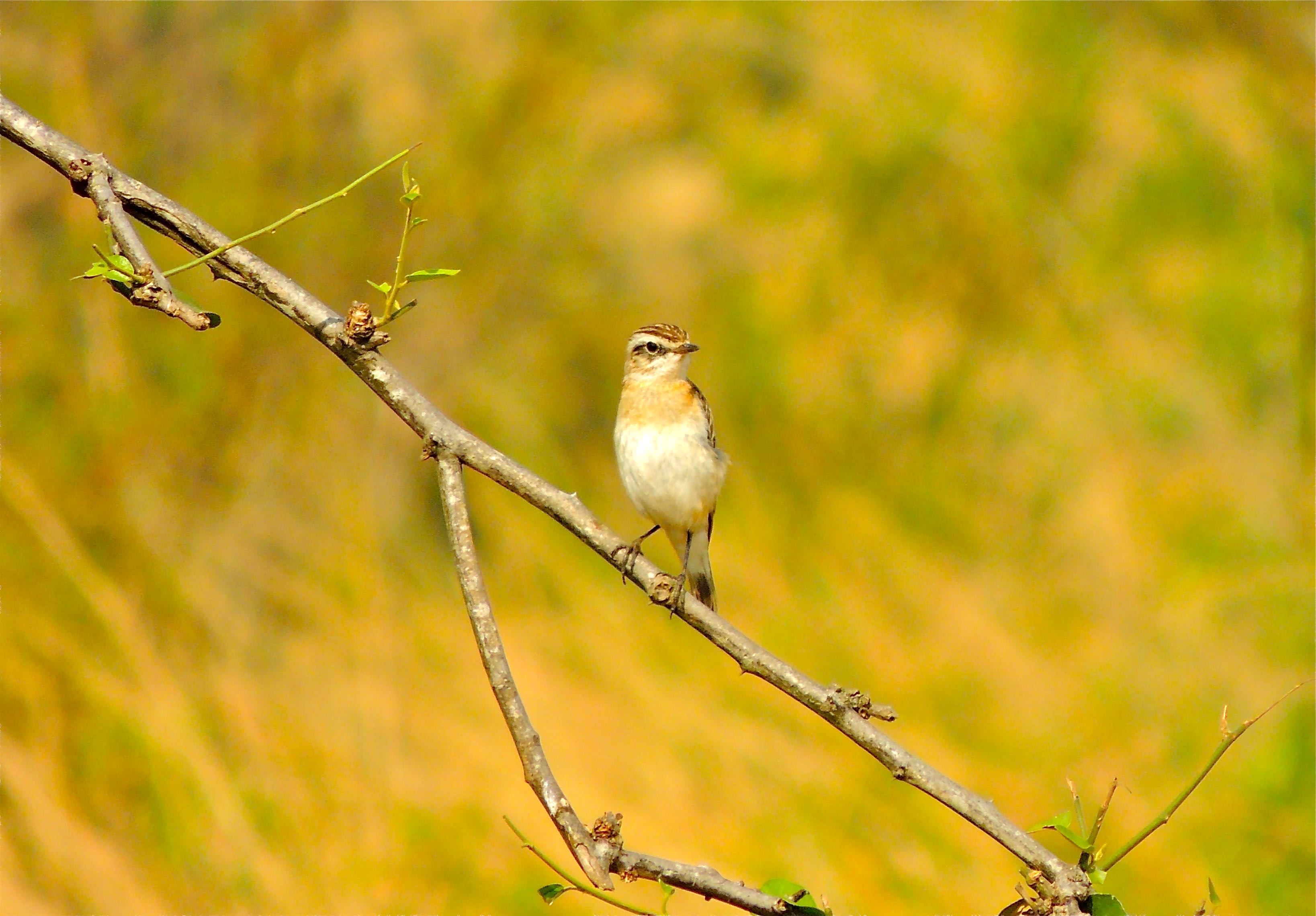 Whinchat - Photo by William Young
Whinchat - Photo by William Young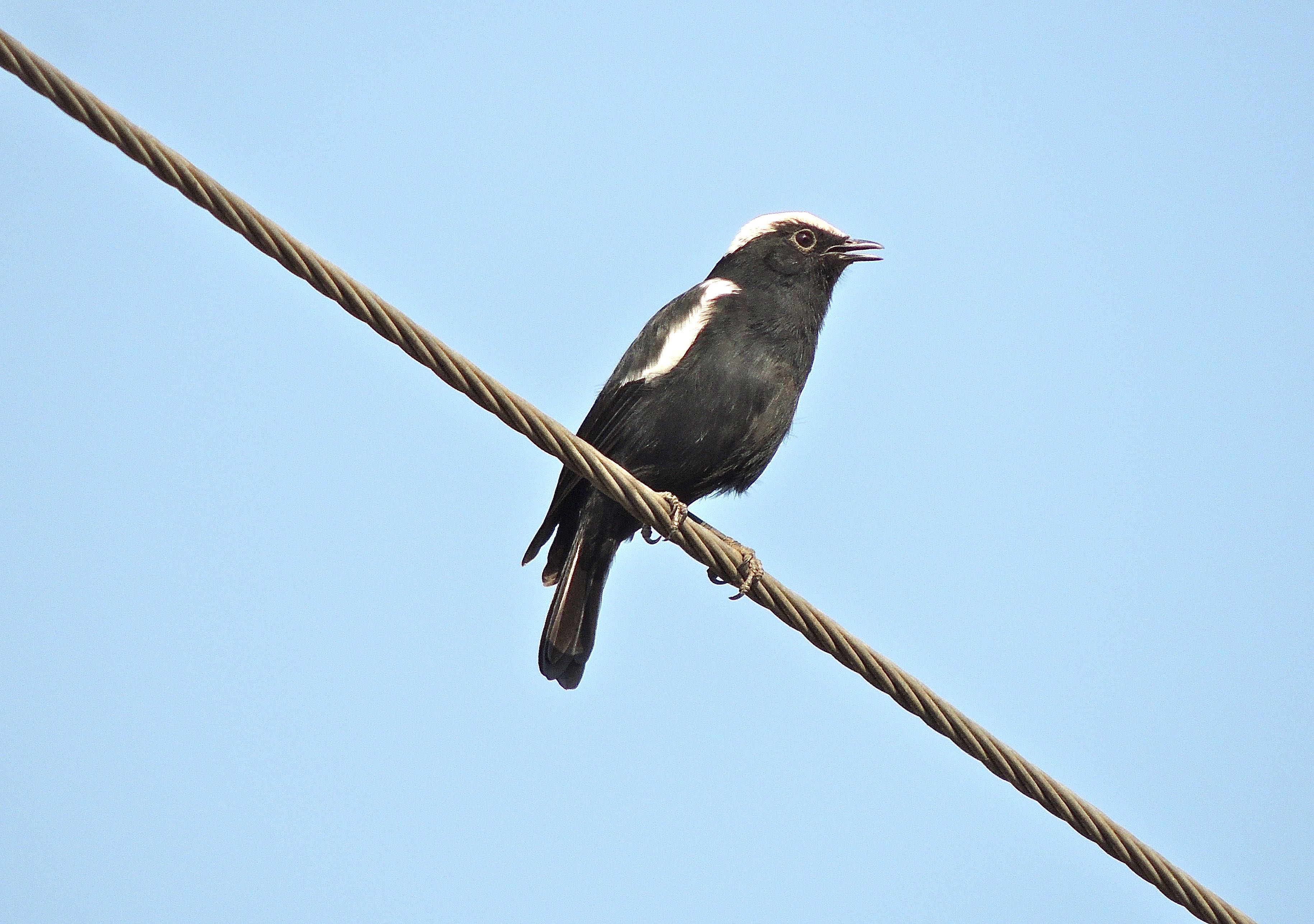 Ruaha (White-headed Black) Chat - Photo by William Young
Ruaha (White-headed Black) Chat - Photo by William Young Northern Wheatear - Photo by William Young
Northern Wheatear - Photo by William YoungThrushes
The most common thrush was the African Thrush, who was on the grounds of some of the lodges where we stayed. It is a Turdus thrush who looks like a pale American Robin. I saw a couple Abyssinian Thrushes (who used to be called Olive Thrushes) in the highlands after we left Lake Mburo. They have an orange bill and are a little darker than the African Thrush. We had nice looks at the Rufous Flycatcher-Thrush on the Royal Mile and at Semliki. It perches upright like a flycatcher rather than being more horizontal like a thrush. It is an active rufous bird who is larger than a lot of the birds who hang out in the canopy. The Red-tailed Ant-Thrush is all rufous and flits quickly through the foliage. We saw a couple, but I never had a prolonged look.
Starlings and Oxpeckers
By far, the most common starling species of the dozen we saw was the Ruppell's (Long-tailed) Starling, who looks like a grackle. We saw them on all days, except when we were in the mountains. It is one of the glossy starlings, along with the Lesser and Greater Blue-eared Starlings. Both have yellow eyes, but the blue cheek can be difficult to see unless the bird is in good light. The Bronze-tailed Starling looks similar. All three have a much shorter tail than the Ruppell's. Purple and Splendid Starlings are also glossy with light eyes. Vero found a Purple Starling in a tree in the town of Masindi. It has a wine-colored breast and a large yellow ring around its yellow eye. We saw another on the road to Masindi. Both the Purple and the Splendid are purple below and beautiful when seen in good light, with the Splendid being bigger. The Purple-headed Starling is dark, with a purple head. It is much smaller and has a dark eye. Some of the immatures of the glossy starling species have dark eyes. The Stuhlman's Starling is a small dark starling who shows chestnut wing patches in flight. We saw one flycatching high in a tree at Bwindi. Also there were a pair of Waller's Starlings, who have chestnut on the wings and are a little bigger. The Slender-billed Starling looks similar, but has a longer tail. The only two starlings I saw who had light underparts were the Sharpe's and the Violet-backed. The Sharpe's was in the mountains, and we scoped a couple high on a bare branch. It has a light eye that stands out on its blue head. The Violet-backed might have been the prettiest starling I saw. We saw some on our way to Ruhija. They are violet on the back and white below. In the sun at Queen Elizabeth NP, one looked like it was deep red. We saw Yellow-billed Oxpeckers on some of the mammals in Queen Elizabeth NP. Their eyering makes them look perpetually surprised. We saw more Piapiacs riding animals than oxpeckers.
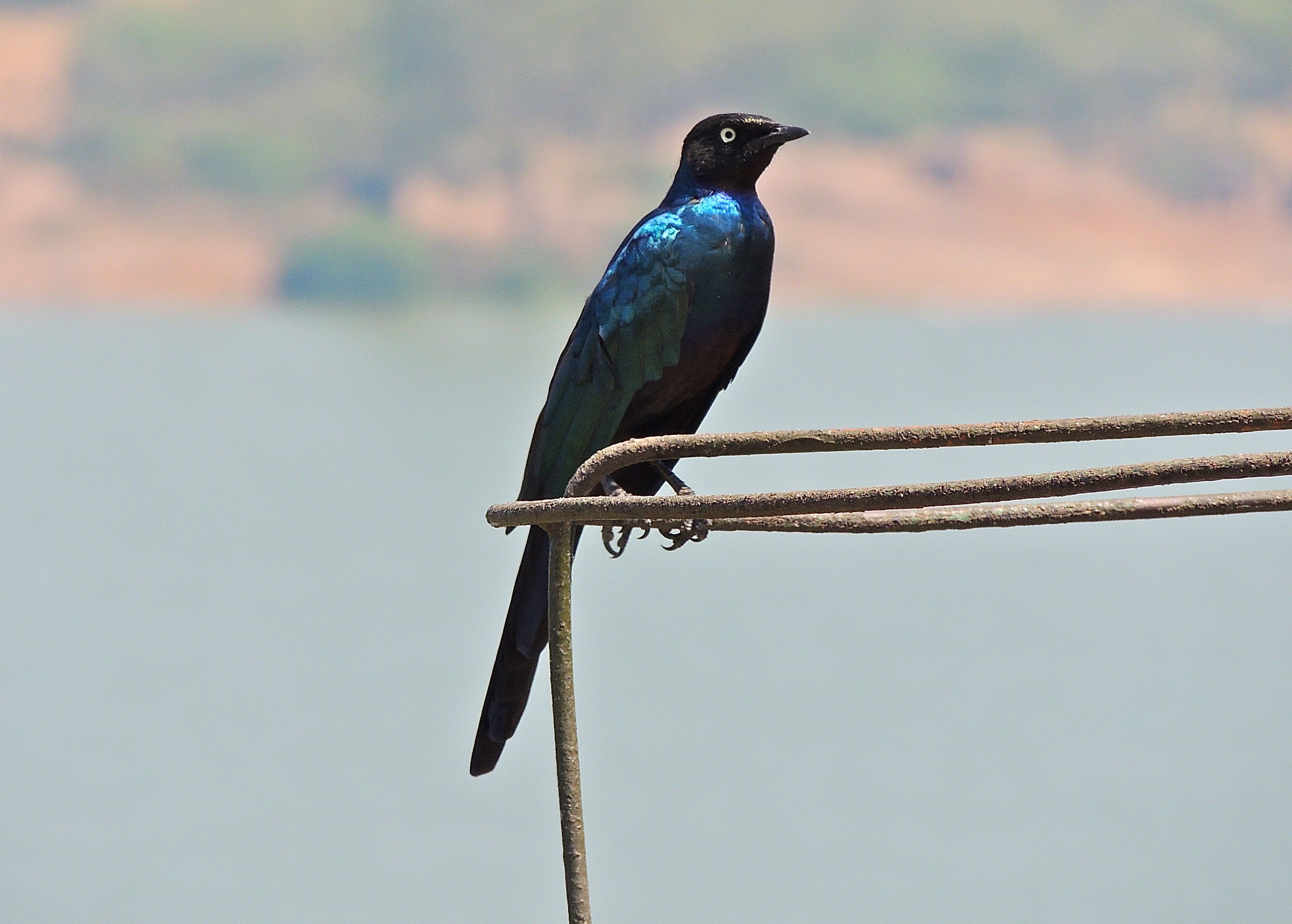 Ruppell's (Long-tailed) Starling - Photo by William Young
Ruppell's (Long-tailed) Starling - Photo by William Young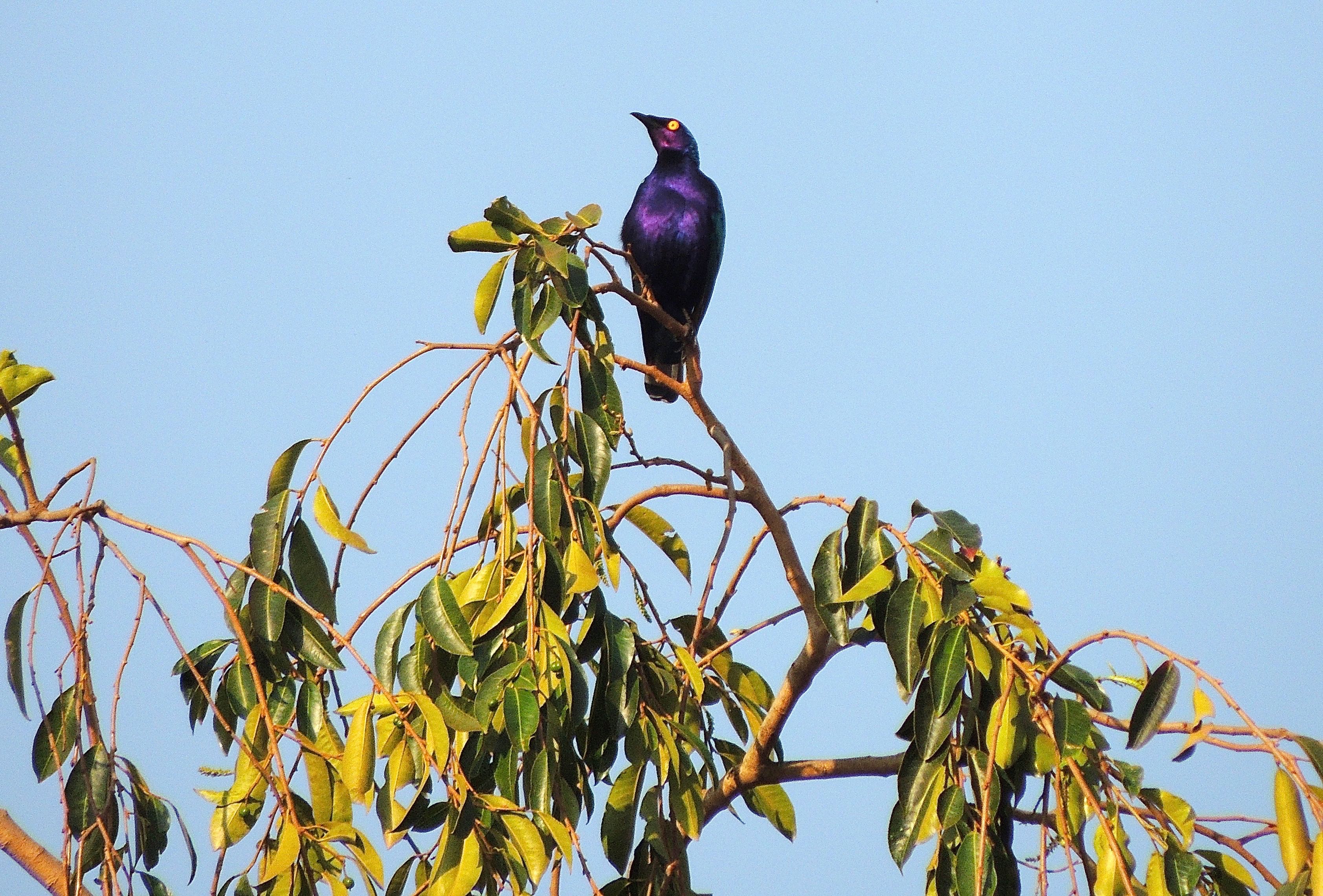 Purple Starling - Photo by William Young
Purple Starling - Photo by William Young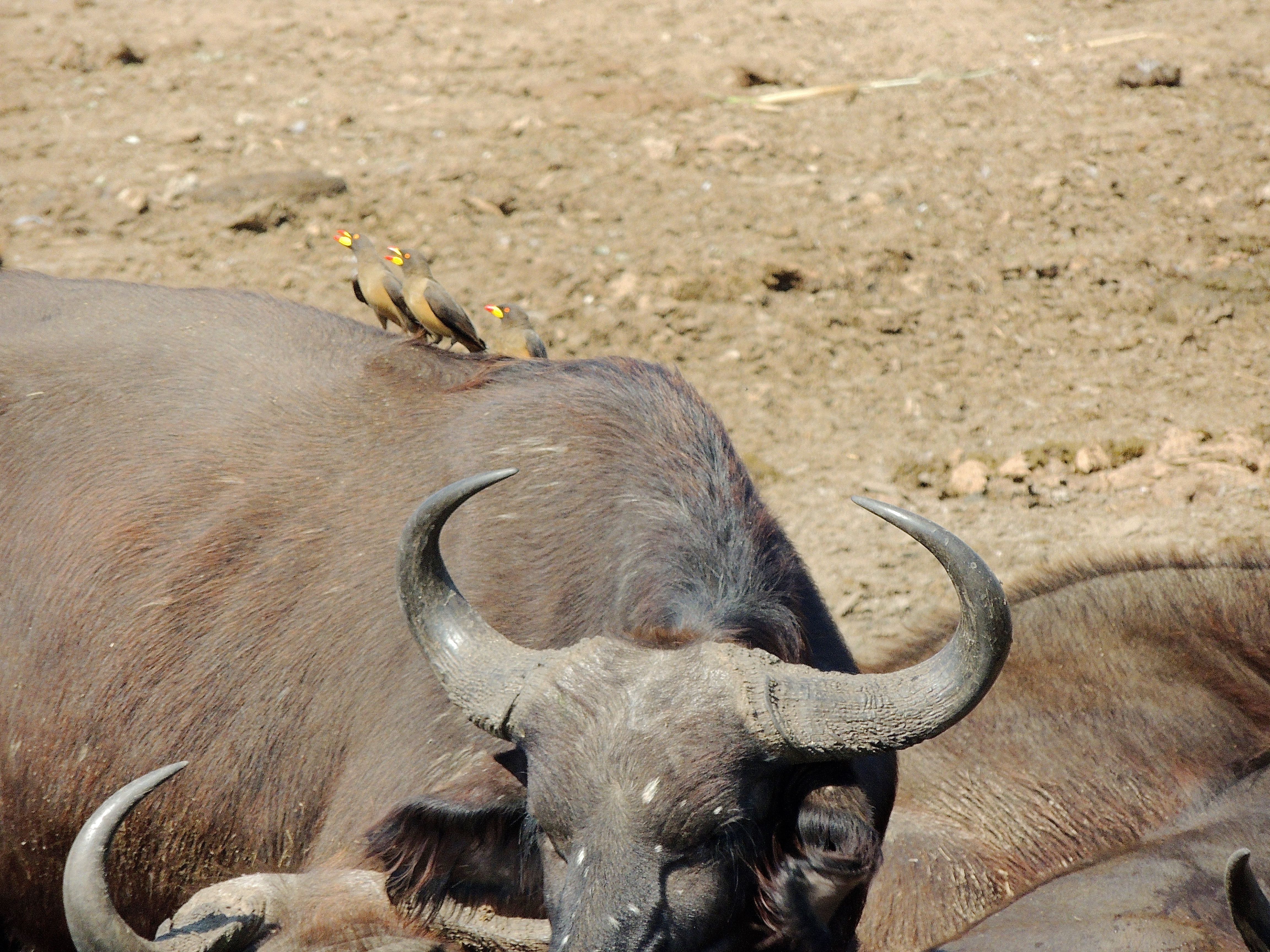 Yellow-billed Oxpeckers on African Buffalo - Photo by William Young
Yellow-billed Oxpeckers on African Buffalo - Photo by William YoungSunbirds
Sunbirds can be difficult to identify. The beautiful iridescent colors shown in the field guide are based on seeing the birds in good light. In bad light, the iridescent colors look black. You then need to look at characteristics such as size, length of tail, and bill shape. Females are mostly brown and difficult to tell apart. I saw 23 species of sunbirds. At the Victoria View Guest House, Red-chested Sunbirds worked the white flowers in the gardens. They have elongated central tail feathers that are not as long as on some of the other sunbirds. Some in the Kazinga Channel were flying into the water to take a drink. Their feathers were a beautiful iridescent blue. On the wires over the gardens at the Victoria View Guest House were Marico Sunbirds, who have a purple breastband but no elongated tail feathers. The Purple-banded Sunbird we saw on the road to Masindi looked similar as it worked some pink flowers. The Scarlet-chested Sunbird has a bright scarlet breast, and we saw them in numerous places. At some of the lodges in the mountains, Variable Sunbirds were common. They show purple, green, blue, and yellow when seen in good light. Less common in the mountains was the Regal Sunbird, who has yellow underparts with a broad red vertical streak down the middle. Collared Sunbirds are similar to the Variable, but the Variable has a wider purple band on the lower breast. The Green-headed Sunbird appeared to have a blue head, and the Blue-headed appeared to have a greenish head, depending on how the light was hitting them. We saw Tiny Sunbirds on the Royal Mile, and I did not think they looked much smaller than some of the other sunbirds I saw. In the same area were Orange-tufted and Superb Sunbirds. The Superb looked bigger and chunkier. Blue-throated Brown Sunbirds look all dark with some blue on the head and throat. We saw one hanging from branches at Kanio Pabidi. On the road to Masindi, we found a Pygmy Sunbird, who has an iridescent green back, a bright yellow belly, and a long tail. If you took away the tail, it would be tiny.
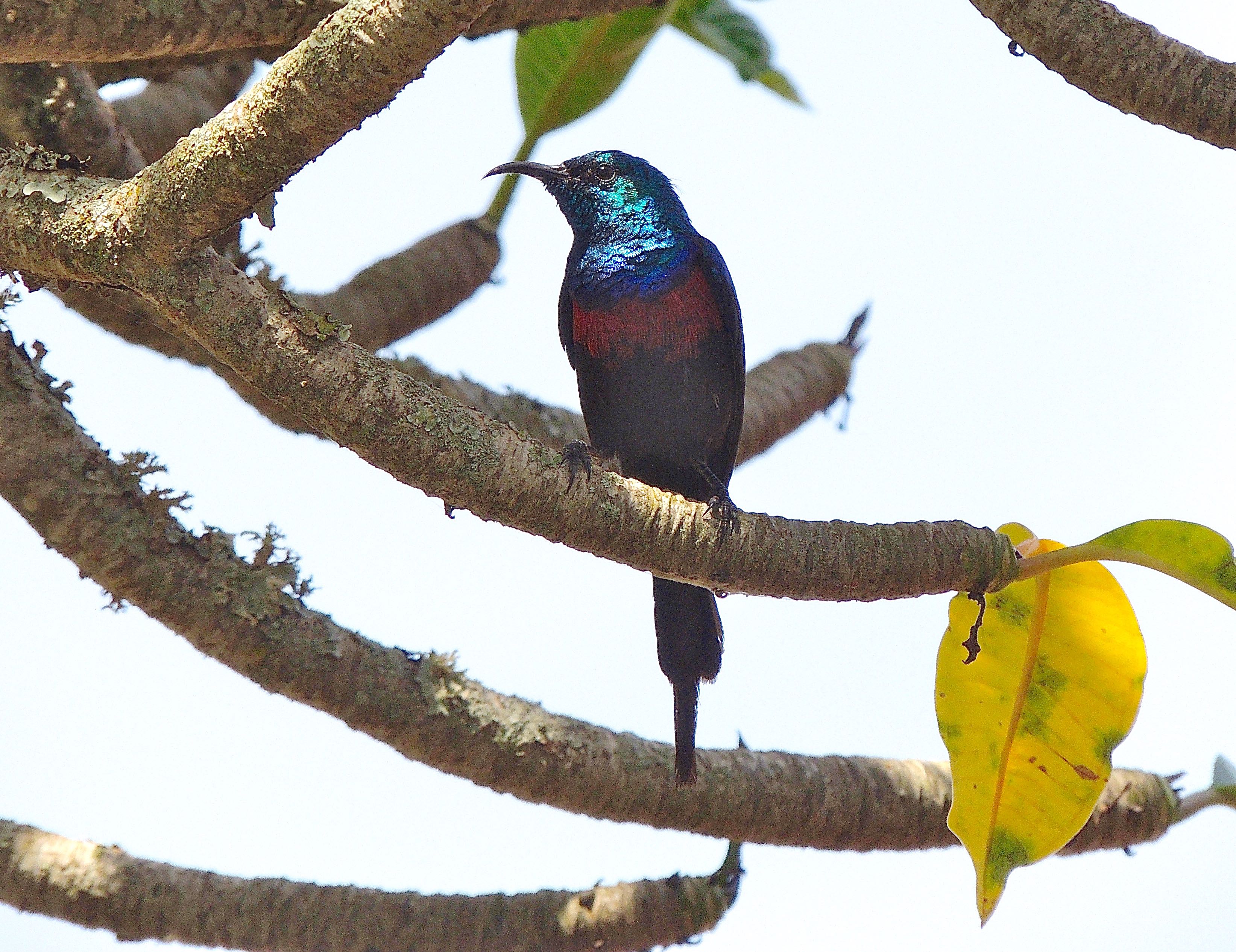 Red-chested Sunbird - Photo by William Young
Red-chested Sunbird - Photo by William Young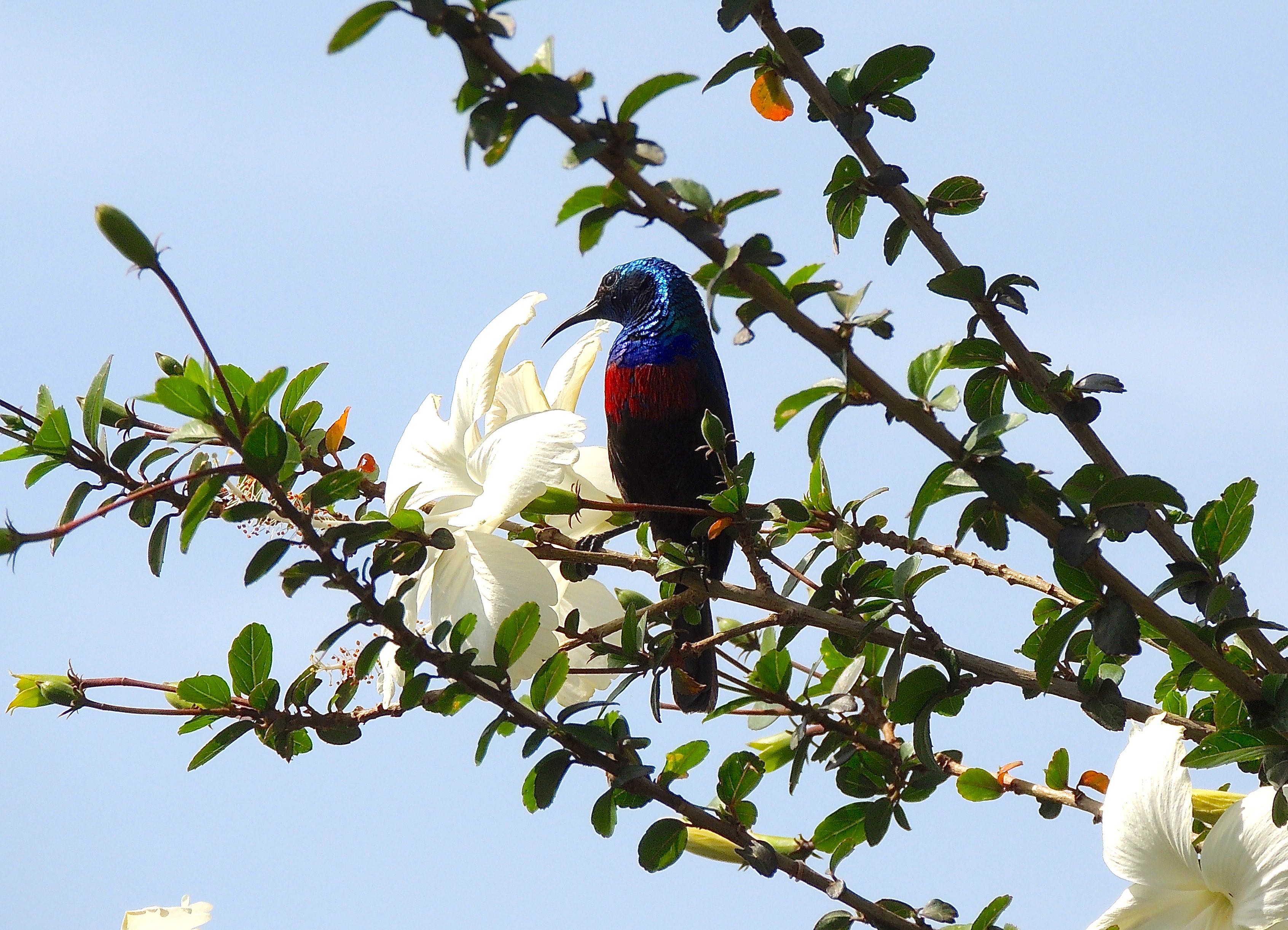 Marico Sunbird - Photo by William Young
Marico Sunbird - Photo by William Young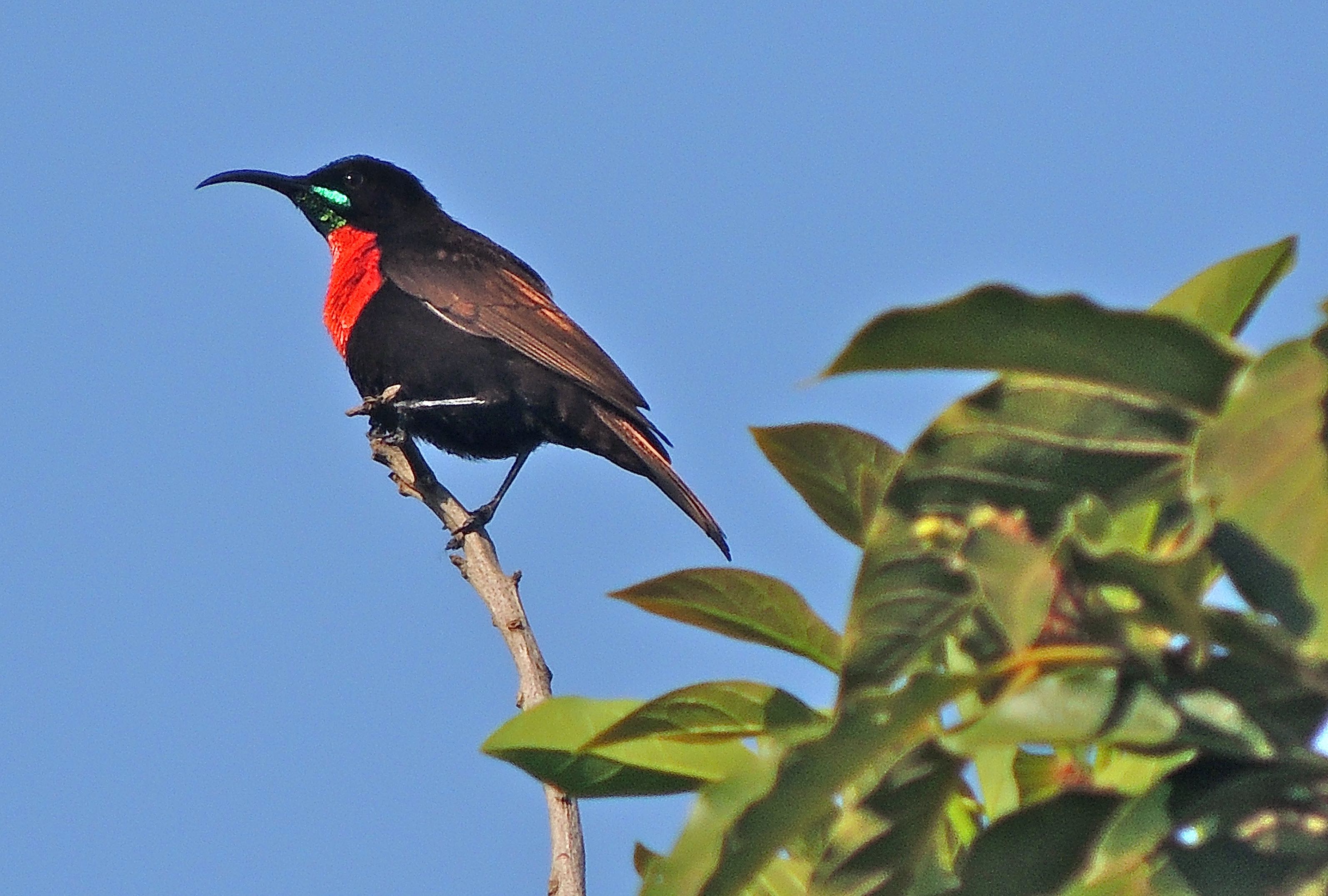 Scarlet-chested Sunbird - Photo by William Young
Scarlet-chested Sunbird - Photo by William Young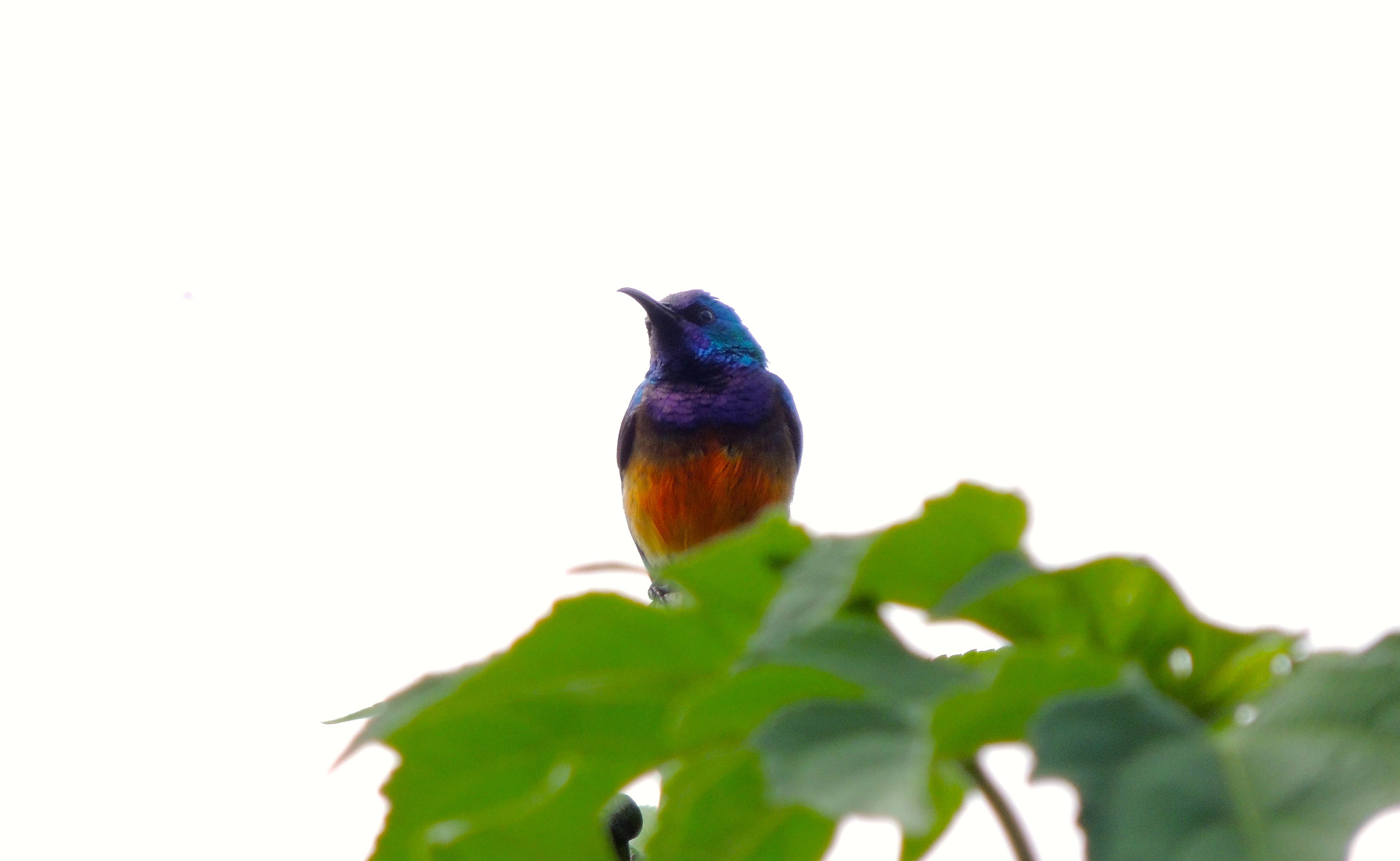 Variable Sunbird - Photo by William Young
Variable Sunbird - Photo by William Young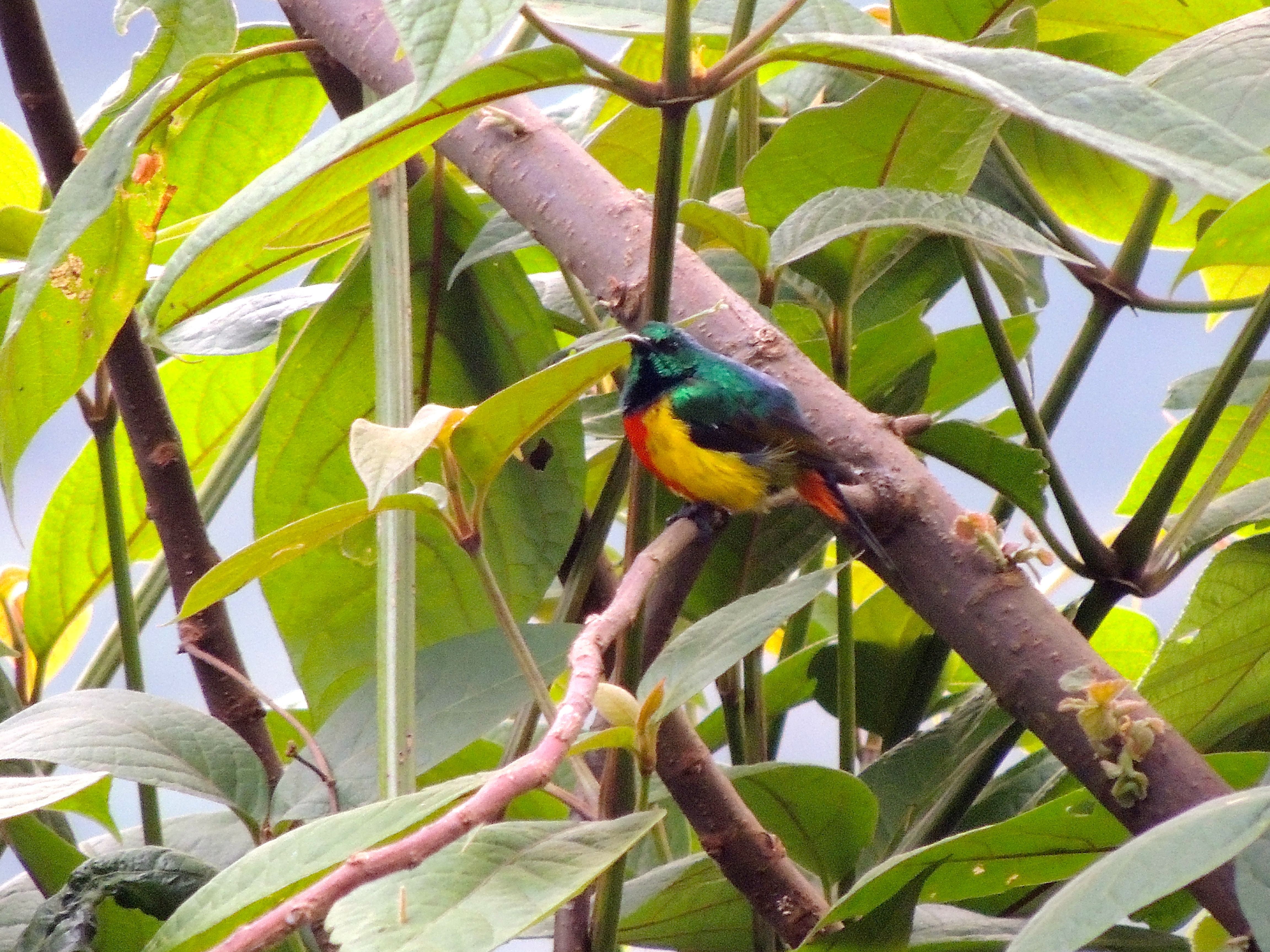 Regal Sunbird - Photo by William Young
Regal Sunbird - Photo by William Young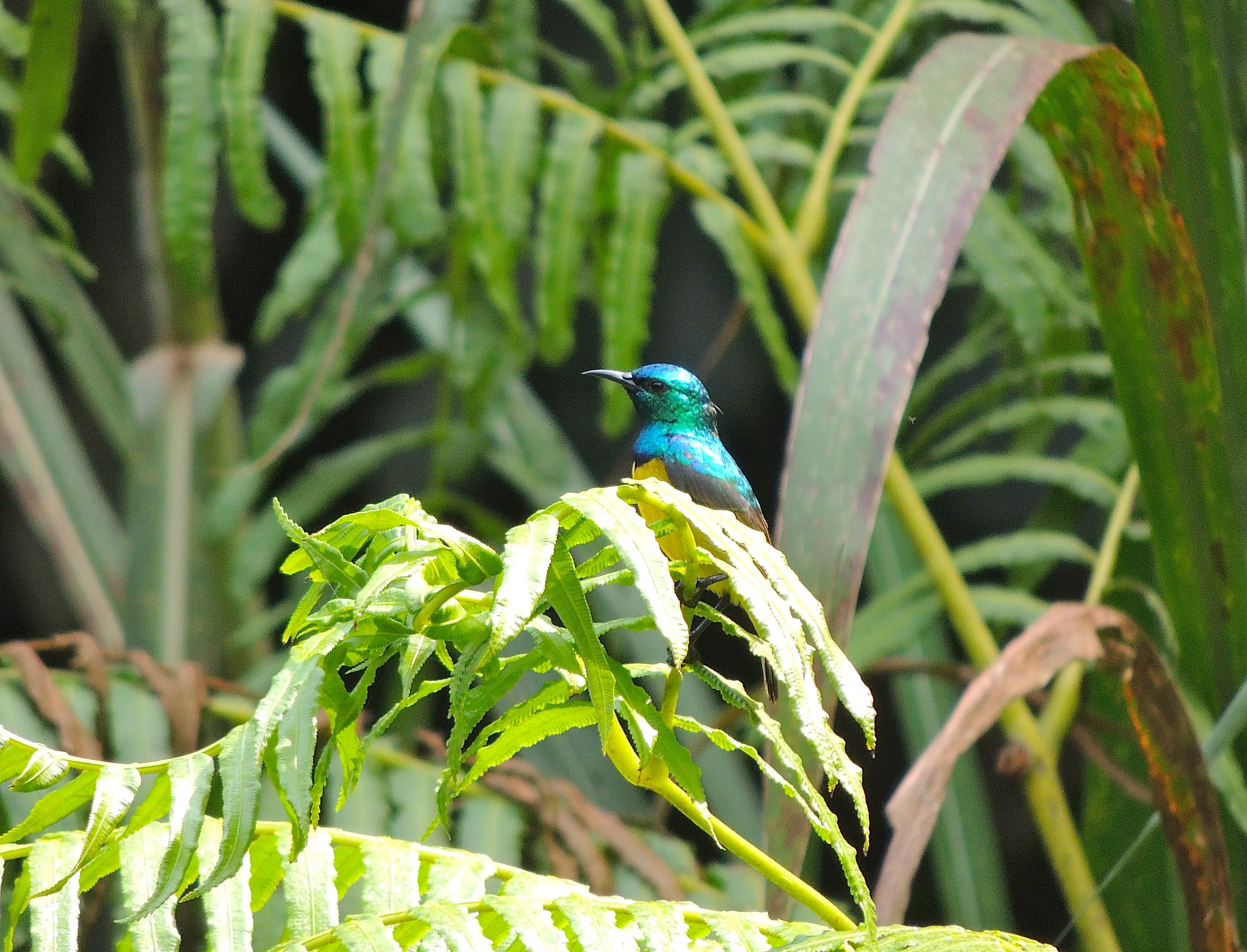 Collared Sunbird - Photo by William Young
Collared Sunbird - Photo by William YoungThe Grey-headed Sunbird has a relatively straight bill, and because of its olive and grey plumage, looks like a warbler while foraging in the trees. Siemund's (Little Green) Sunbirds look tiny and would look more like warblers if they bigger. We saw one at Kanio Pabidi who was gathering spider webbing for a nest. Grey-chinned (Green) Sunbirds are also small and do not have a strongly curved bill. Western Olive Sunbirds have plain plumage and more curve to their bill. We saw one at our lunch stop on the way to Ruhija who was building a nest, which was a long structure that hung from the end of a branch. Some sunbird species have one or two bands below their breast. We saw quite a few Northern Double-collared Sunbirds around Queen Elizabeth NP and the areas we visited shortly after. The back is an iridescent dark blue. In the mountains was a Rwenzori Double-collared Sunbird, but I never had a good look at it. I had nice looks at a Green-throated Sunbird at Bigodi Wetlands. We saw Olive-bellied Sunbirds at Murchison Falls NP and at the beginning of the Royal Mile. They have a green back and red on the breast. A couple of the sunbird species have very long tails. We saw Bronze Sunbirds on the road to Semliki and in a couple of other places. The one at Semliki was a young male, because the adults have long feathers that extend well beyond the tail. It had subtle iridescent colors. Purple-breasted Sunbirds were in Bigodi Wetlands. Beautiful Sunbirds have a double breastband and medium-long central tail feathers.
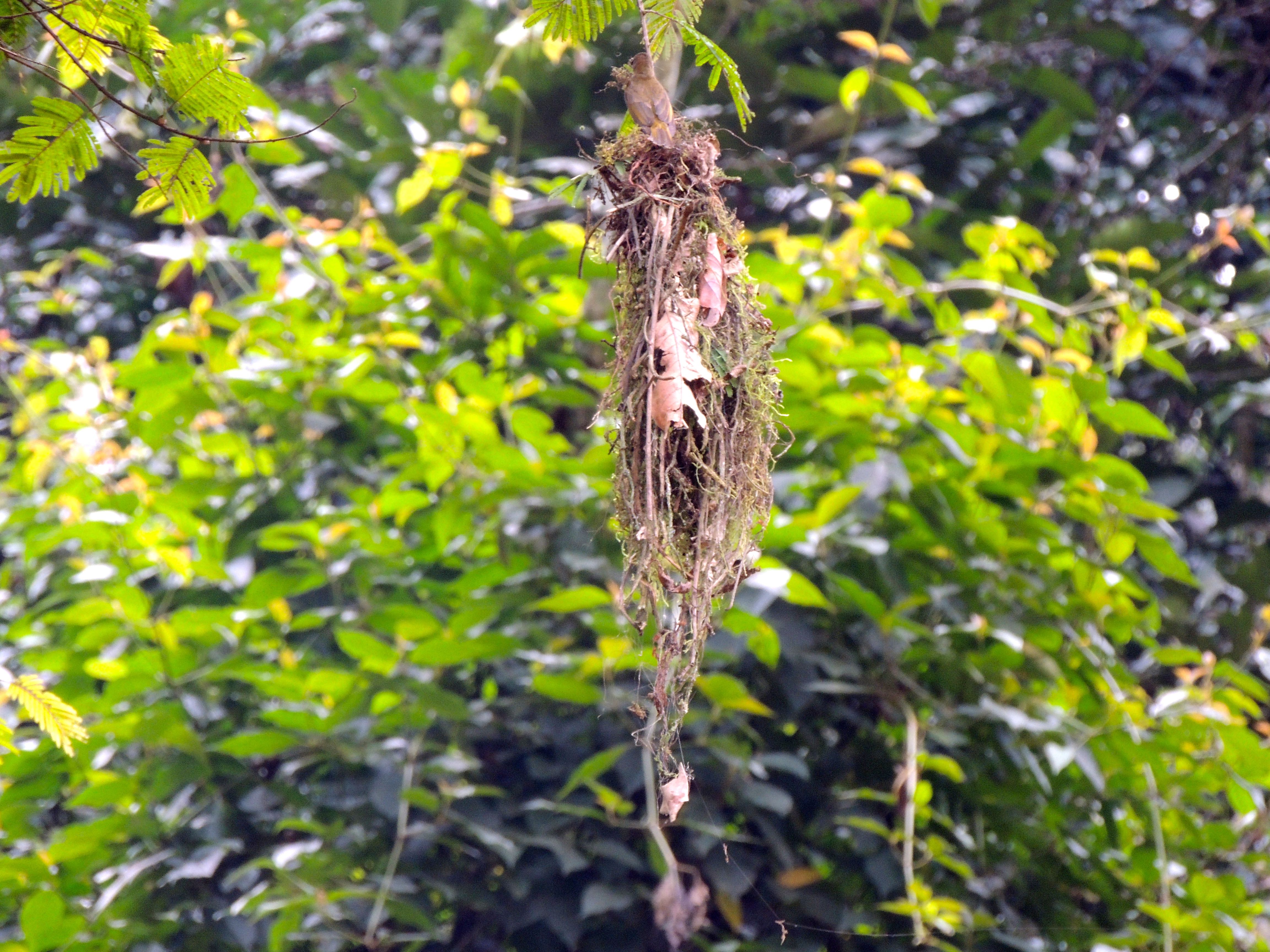 Western Olive Sunbird Nest - Photo by William Young
Western Olive Sunbird Nest - Photo by William Young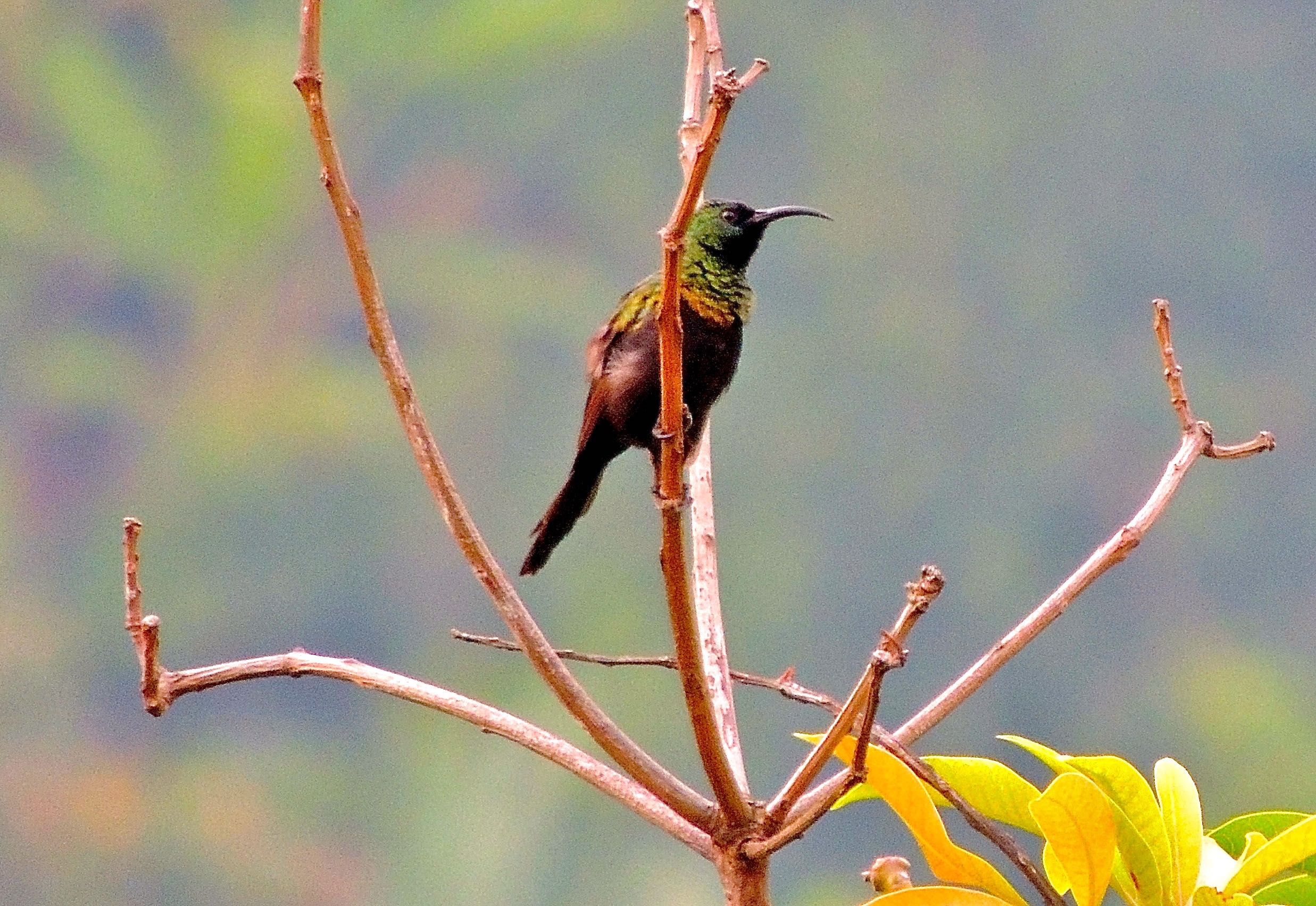 Bronze Sunbird - Photo by William Young
Bronze Sunbird - Photo by William YoungWagtails and Pipits
African Pied Wagtails were fairly common. We saw them on all but seven days of the trip. They are not shy, and they liked to be in the middle of paths or roads. A couple of them hopped around at the entrance to Murchison Falls NP as well as on the rocks of the falls. One came into the dining area at the Kibale Guest Cottages and caught an insect. In some of the game parks, there were large numbers of Western Yellow Wagtails. We saw a couple different races of this species. On the first Nile cruise, we saw one of the Feldegg race who had a black head. We also saw some at the Entebbe Botanical Gardens who were perched in trees, and they looked surprisingly large. After we left Buhoma, we birded on a road where we saw Cape, Mountain, and African Pied Wagtails. The Mountain has a long tail, and the Cape appears darker.
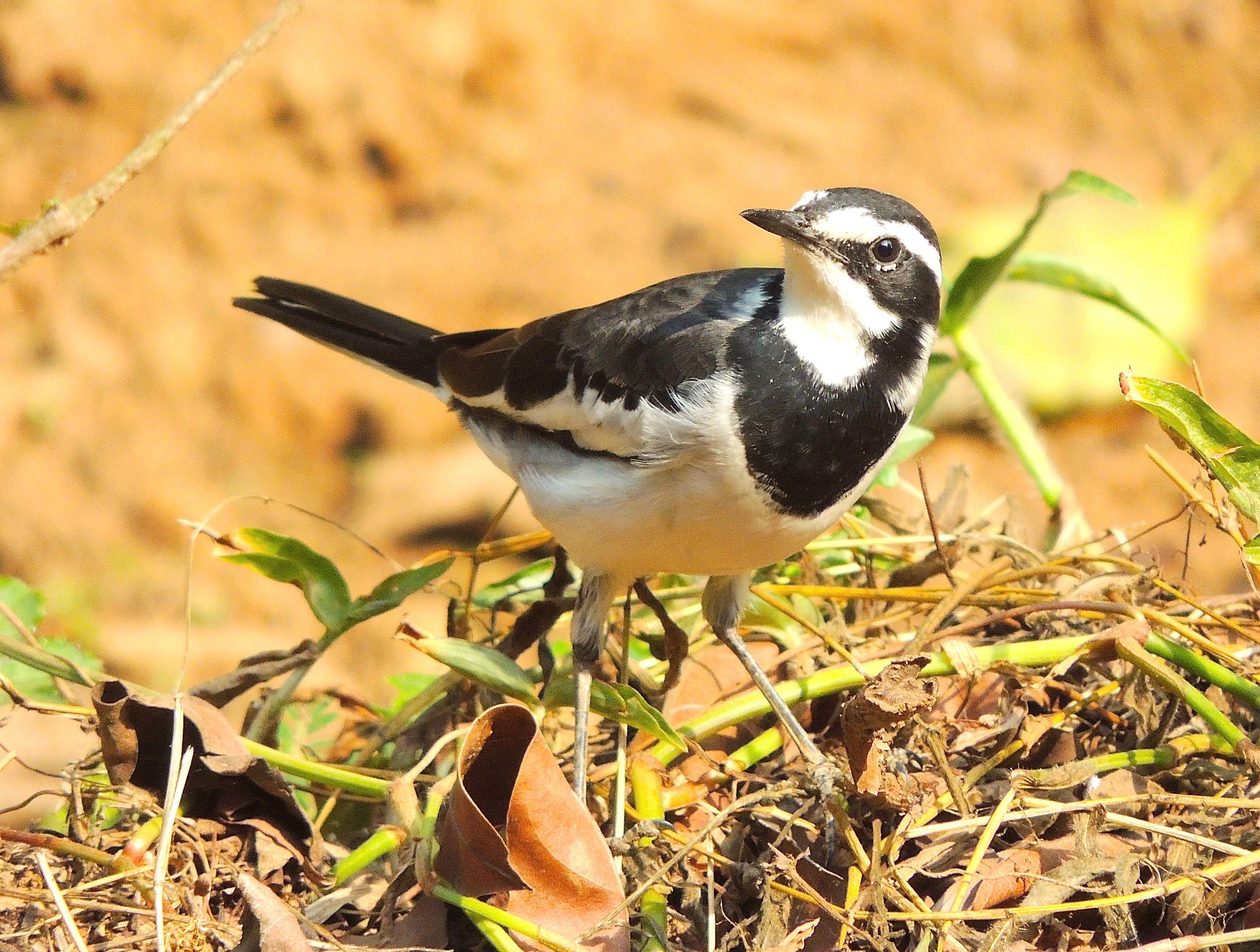 African Pied Wagtail - Photo by William Young
African Pied Wagtail - Photo by William Young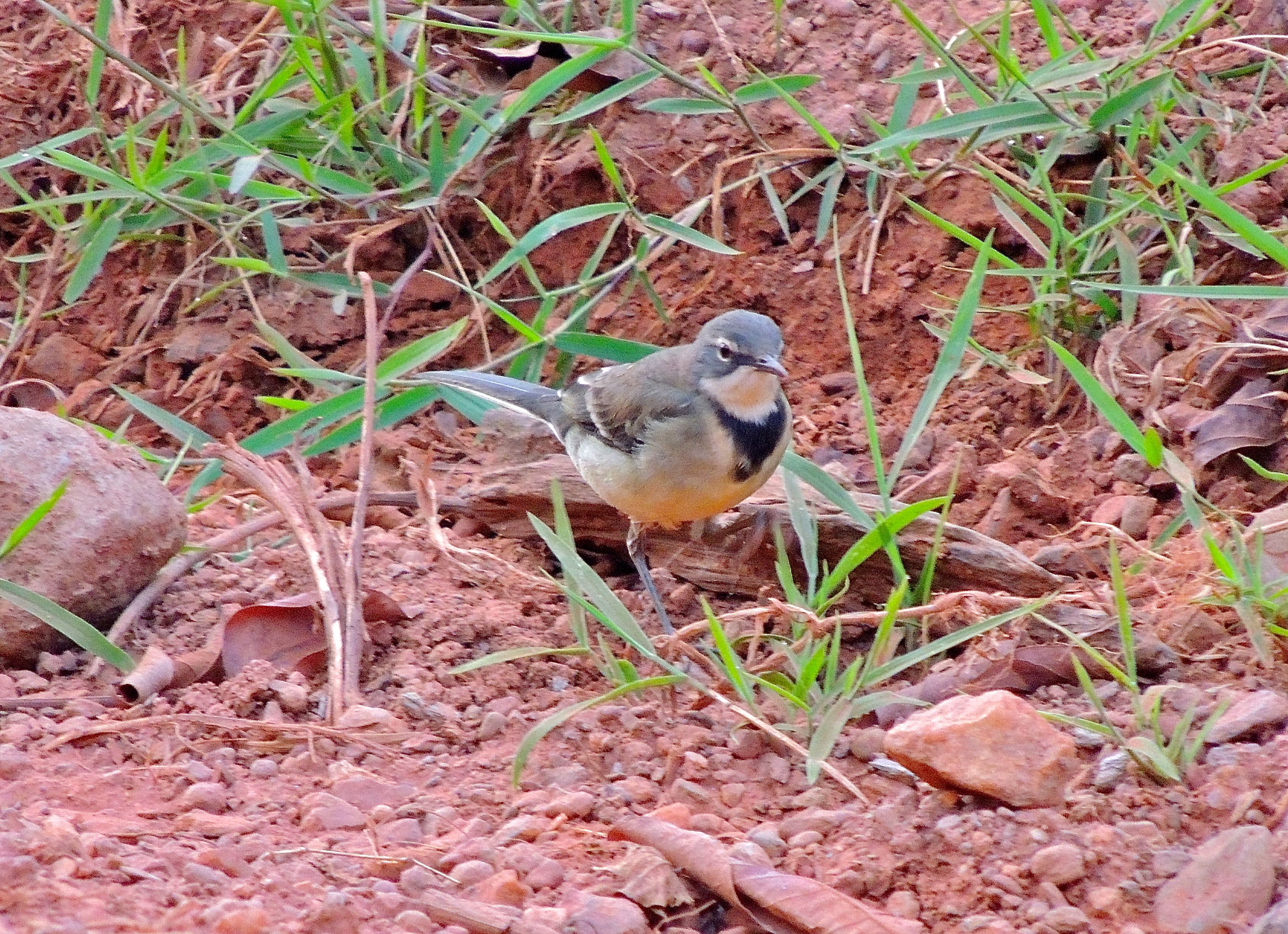 Cape Wagtail - Photo by William Young
Cape Wagtail - Photo by William Young Mountain Wagtail - Photo by William Young
Mountain Wagtail - Photo by William YoungWe saw Yellow-throated Longclaws on five days. They look like Eastern Meadowlarks and even have white outertail coverts. We saw four species of pipits. There was a young Red-throated Pipit at Murchison Falls NP in the same field with some lapwings. It did not have red on the throat. The other pipits we saw were at Queen Elizabeth NP on one of the game drives. There were African Pipits, also called Grassland or Grasveld Pipits. There were a number of Plain-backed Pipits, who did not have the heavy markings on the back like the African. And we saw a Short-tailed Pipit, who looked a bit smaller.
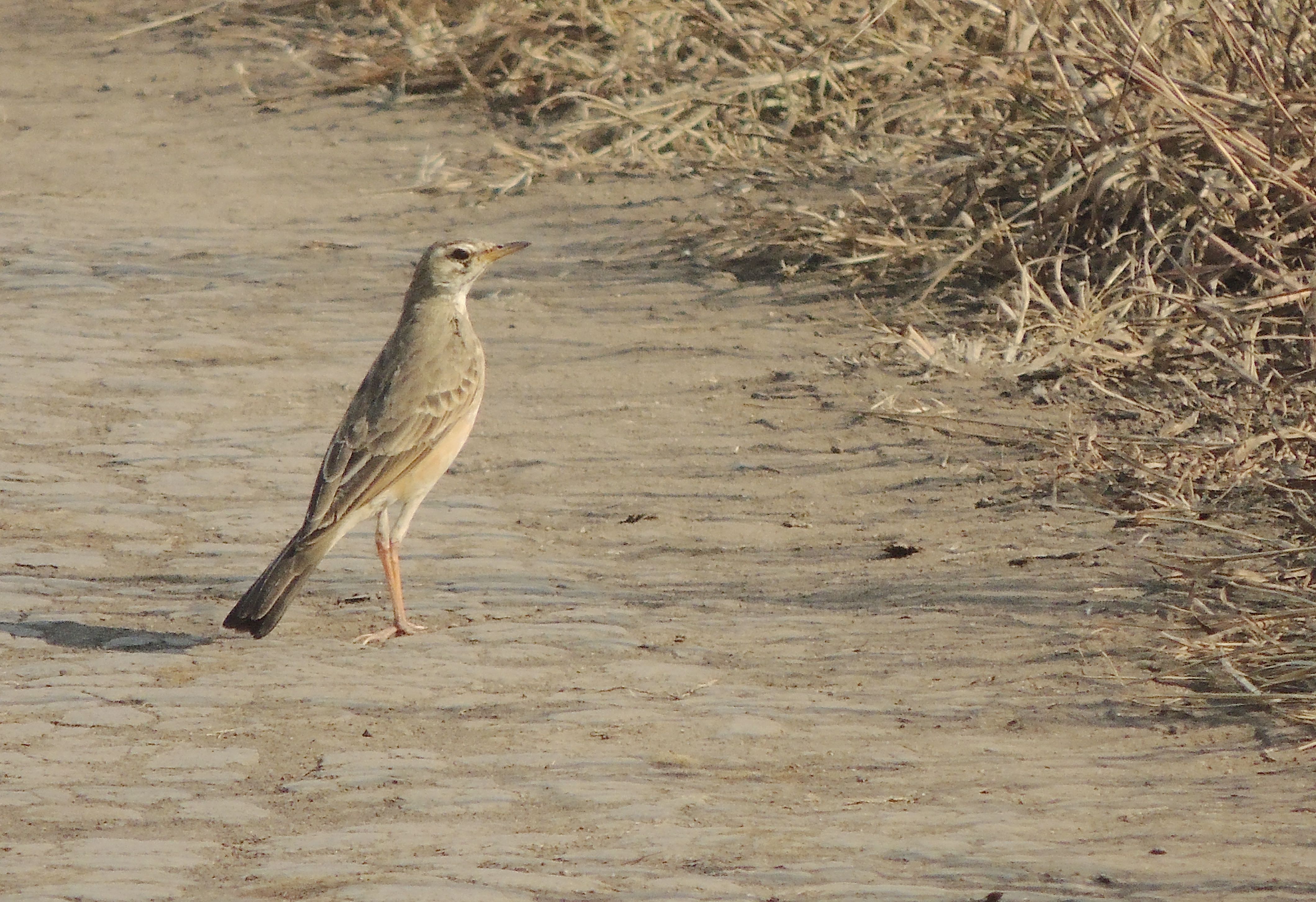 Plain-backed Pipit - Photo by William Young
Plain-backed Pipit - Photo by William YoungCanaries, Buntings
We saw African Golden-breasted Buntings on two days around Buhoma. They have a reddish bill and a black-and-white face pattern to go along with the golden breast. They have some rufous on the back. On our first day at the Victoria View Guest House, we saw both Yellow-fronted and Brimstone Canaries. They perched on the wires over the gardens. The Yellow-fronted looked yellower. We saw Western Citrils in a couple of places. They are canary-like. We saw Streaky Seedeaters, who look like a North American sparrow. On the Ruhija Community Trail, we saw Thick-billed Seedeaters, who have a white mark near the bill.
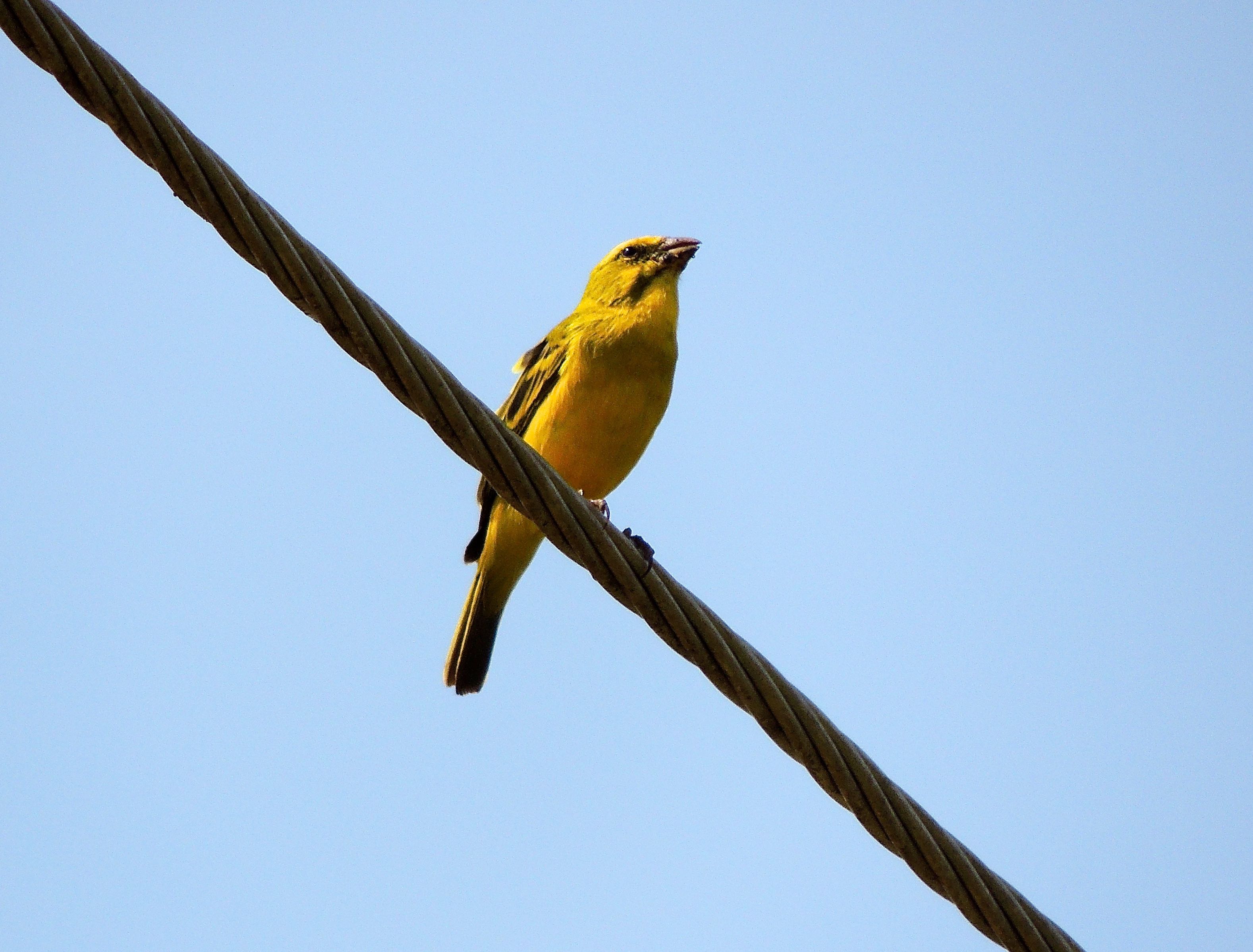 Brimstone Canary - Photo by William Young
Brimstone Canary - Photo by William YoungSparrows
One of the most common birds on the trip was the Northern Gray-headed Sparrow. We saw them on all but four days, and on the days we saw them, we often saw ten or more. They have a gray head with rufous on the wings. They replace House Sparrows in some towns. House Sparrows were present in areas with a lot of people. They were introduced to Uganda in the late 1970s. There is a large statue of an elephant in front of the Mweya Lodge, and House Sparrows were walking below the raised foot. At Murchison Falls NP, we saw Shelley's Rufous Sparrows. They are a recent split from the Rufous Sparrow, with the other species being the Kenya Rufous Sparrow. They have a curved rufous streak around the ear.
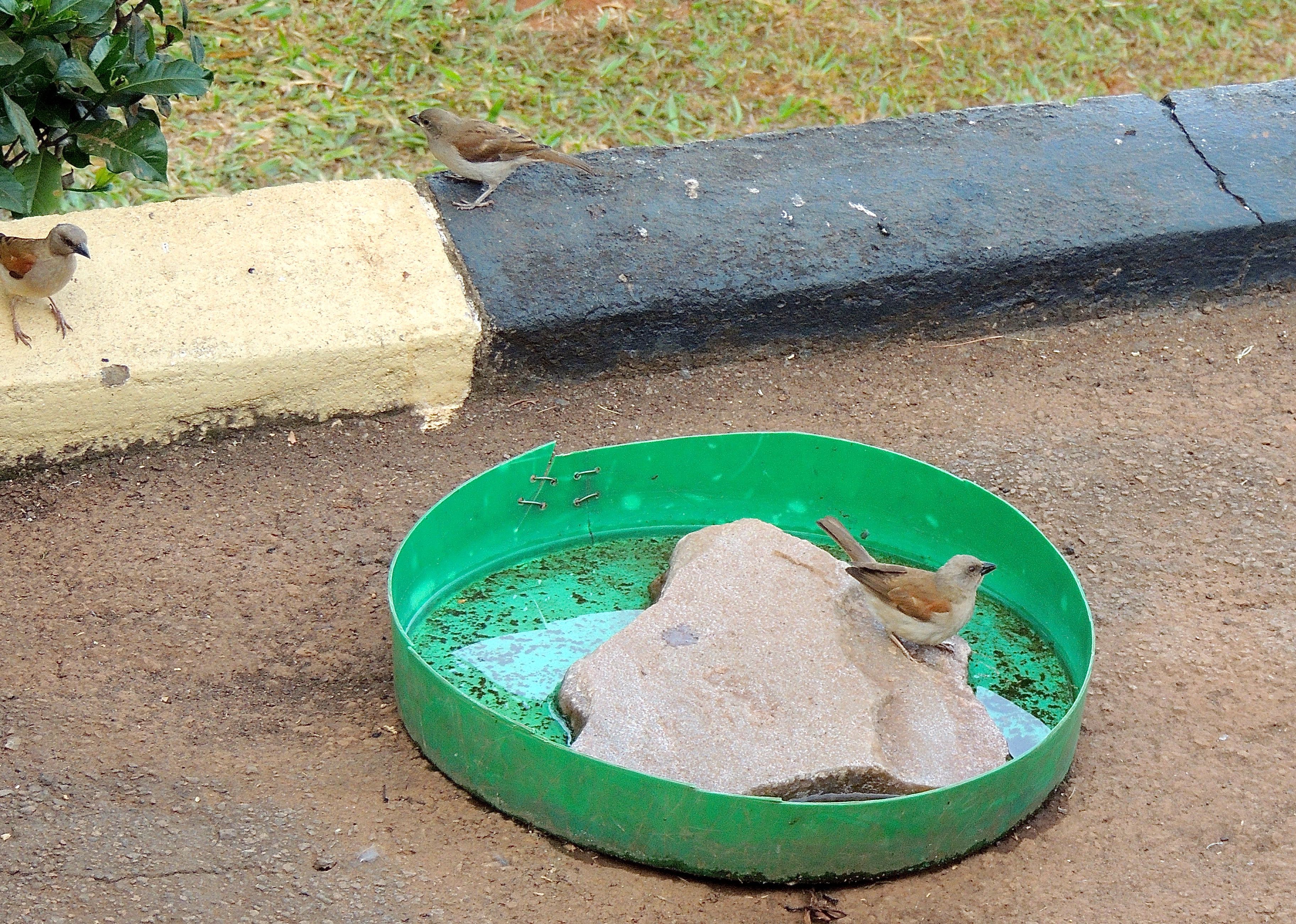 Northern Gray-headed Sparrow - Photo by William Young
Northern Gray-headed Sparrow - Photo by William YoungWeavers
The weavers are a large and diverse family, and many look similar. I saw more than 30 species. Speckle-fronted Weavers are small birds with white spots on their black crown. The back of their head to the nape is rufous. We saw quite a few at Murchison Falls NP. We also saw Chestnut-crowned Sparrow-Weavers there. They have a brown head and nape with a white malar stripe and supercilium. At Bulisa, we saw one building a nest. On the Royal Mile, we saw both Red-headed and Crested Malimbes. They are attractive forest weavers with a scarlet head and a jet black body. The red on the Crested goes down to the throat and breast. We saw Red-headed Malimbes in other areas as well, including Bwindi. On a roadside stop between Kisoro and Lake Mburo, we saw all three species of quelias. I never got much of a look at the Red-billed, but I had good looks at both the Cardinal and the Red-headed Quelias. The red on the Cardinal Quelia comes further down the breast. We had seen Red-billed Quelias at Queen Elizabeth NP. They are thought to be the most abundant bird species in the world. We saw Fan-tailed Widowbirds, who look like Red-winged Blackbirds when they fly. We saw both Northern and Southern Red Bishops, but most were either female or young birds. As we drove toward Queen Elizabeth NP, we saw a tree with 11 Southern Red Bishops, including one who appeared to be an adult male. We had nice looks at breeding male Yellow Bishops shortly after we left Buhoma. They are black and bright yellow. We saw a young male Black Bishop on the way to Bigodi Wetlands who had a yellow head rather than a red one like an adult. I also saw a few female Thick-billed (Grosbeak) Weavers, who are streaky below.
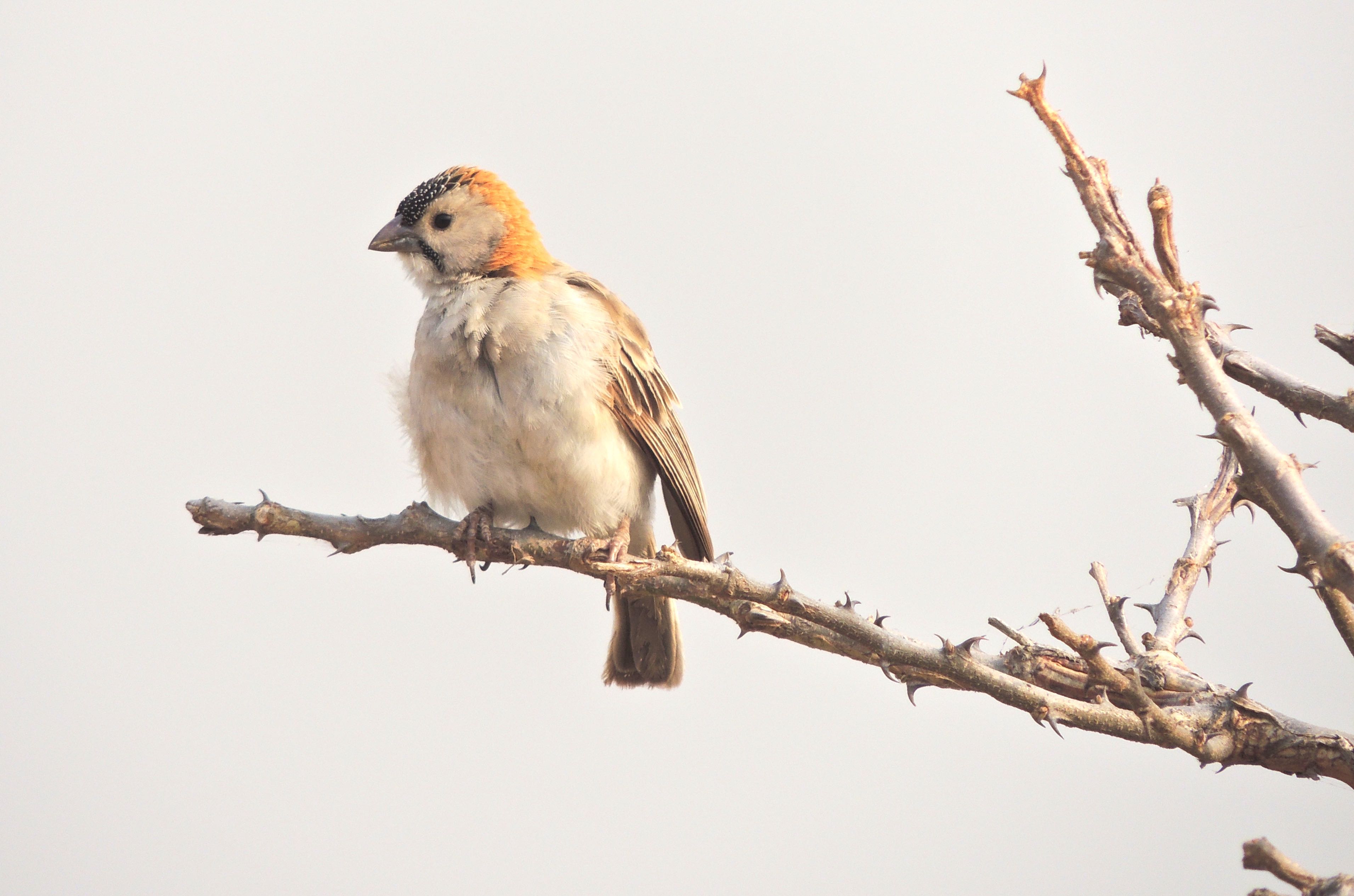 Speckle-fronted Weaver - Photo by William Young
Speckle-fronted Weaver - Photo by William Young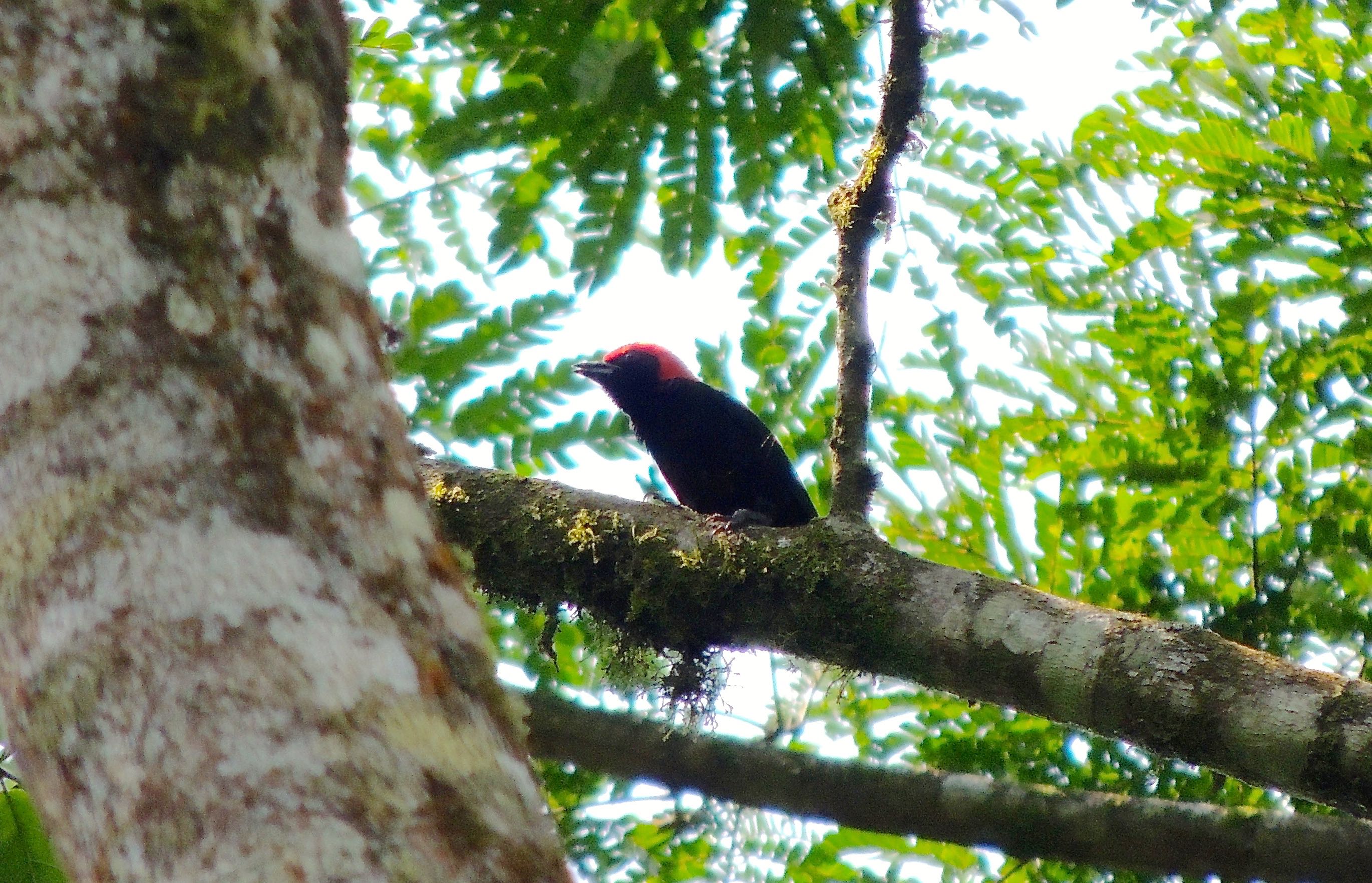 Red-headed Malimbe - Photo by William Young
Red-headed Malimbe - Photo by William Young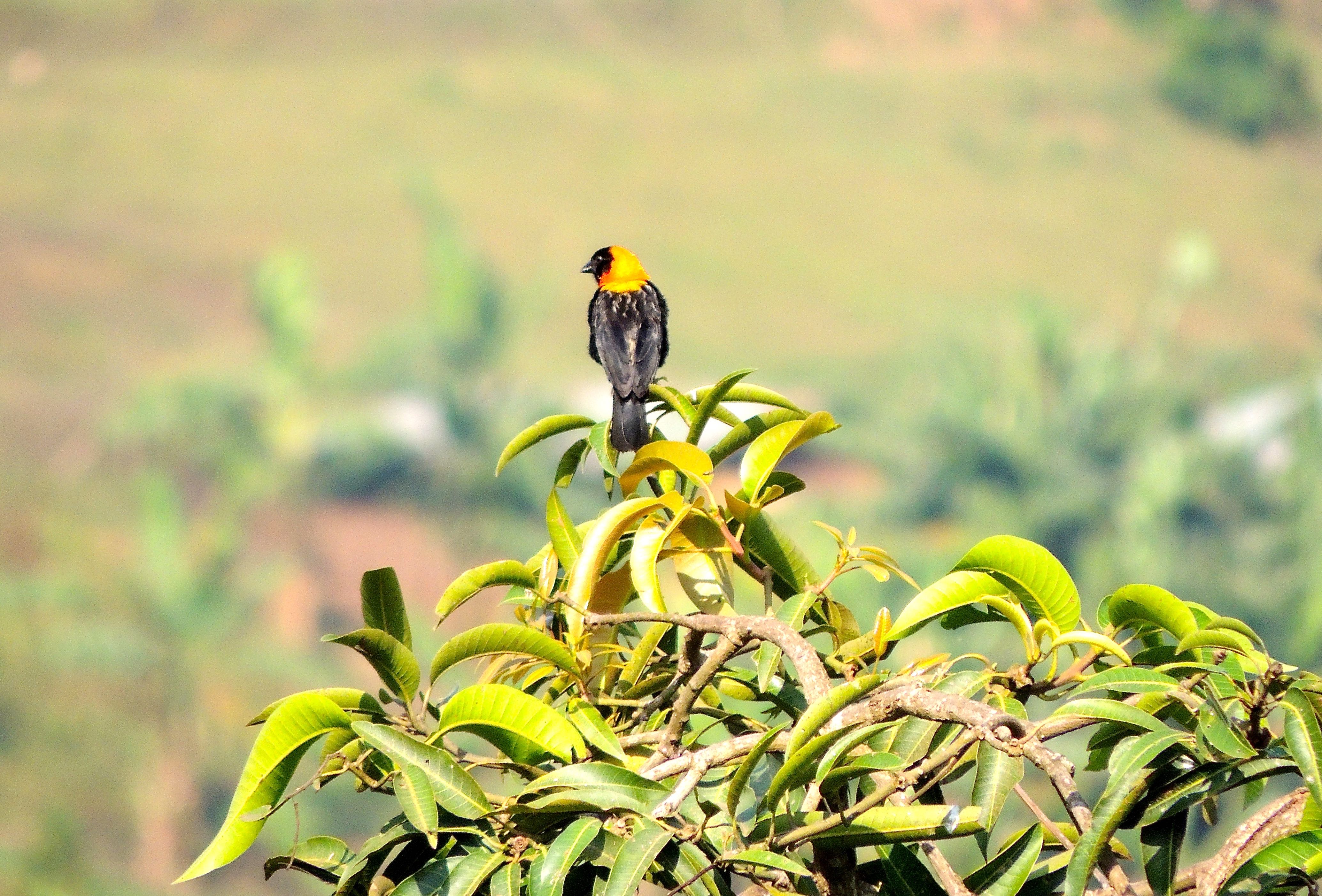 Black Bishop - Photo by William Young
Black Bishop - Photo by William YoungBaglafecht Weavers have a number of different races. In the reichenowi race, the light eye stands out against the black face. They were on the wires near the Victoria View Guest House. I had seen a different race in 2015 at the Addis Ababa airport. We saw Little Weavers at Murchison Falls NP. They are small yellow birds with a black forehead, face, and chin. Similar in size and coloration is the Slender-billed Weaver. We saw quite a few at Queen Elizabeth NP. At the Mweya Lodge, this was one of the weaver species who hung around the dining area looking for table scraps. I put a piece of bread in my hand, and one hopped onto my palm and took it before flying away. Black-necked Weavers have a black back. Spectacled Weavers have a yellow head with a small black line through the eye. We saw Black-billed Weavers in the mountains. They are black with some yellow on the head and throat. We also saw Strange Weavers in the mountains. They have a black hood and throat, with some brown on the breast. On the way back to Entebbe, we saw Holub's Golden Weavers, who are large yellow weavers with a bit of orange on the throat. On the road toward Bigodi Wetlands, we saw both Northern Brown-throated and Black-headed Weavers. The Brown-throated are golden with brown on the throat, and they have a white eye. The Black-headed used to be considered part of the same species as the Village Weaver, and it has a dark eye. We saw Black-headed, Village, and Slender-billed Weavers at the feeders at the Mweya Lodge. At the Entebbe Botanical Gardens, we saw Orange Weavers in a tree by the water. They are bright yellow with a face that appears to be orange, the way some male Prothonotary Warblers are so yellow that they appear orange. They were interspersed among the larger Village Weavers.
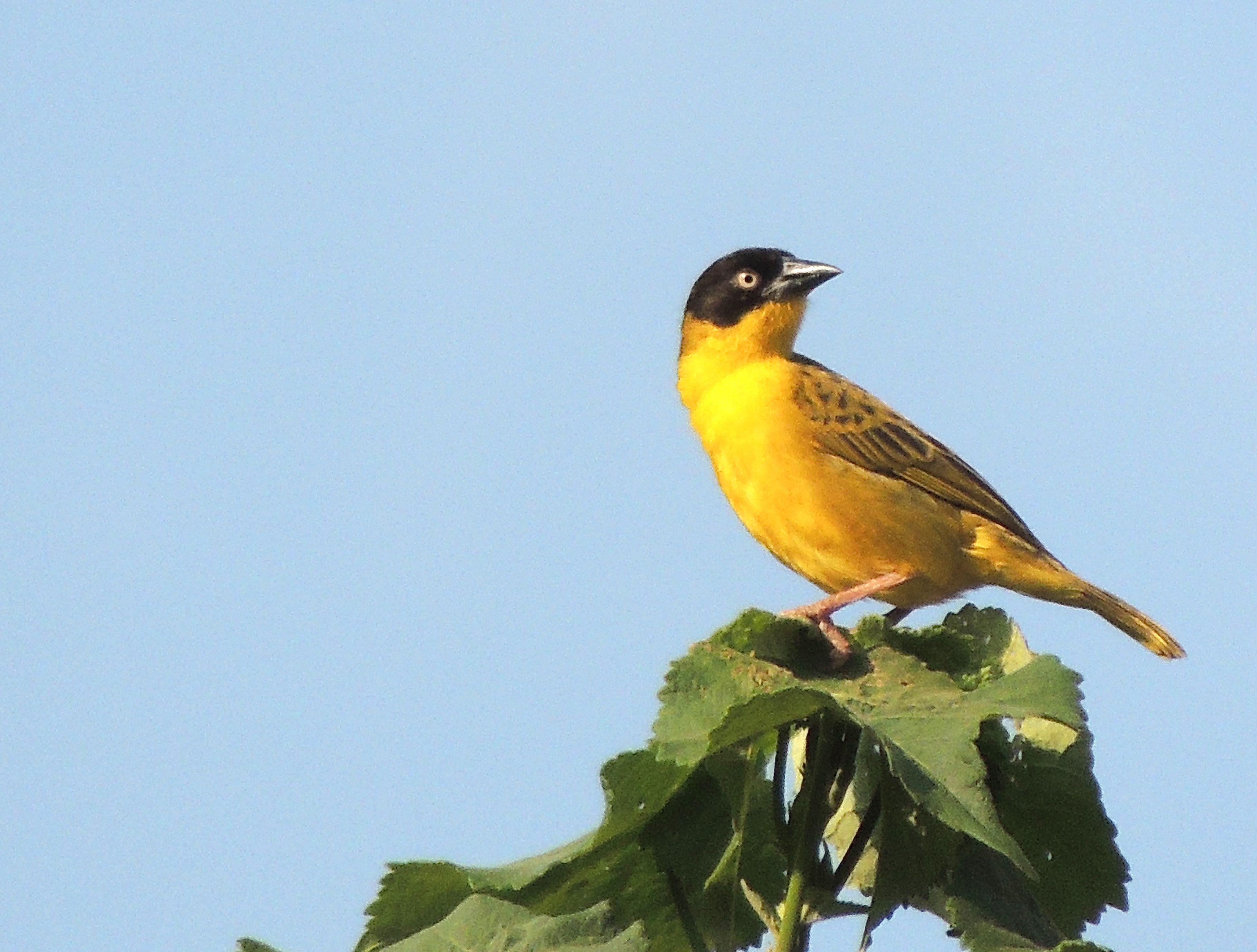 Baglafecht Weaver - Photo by William Young
Baglafecht Weaver - Photo by William Young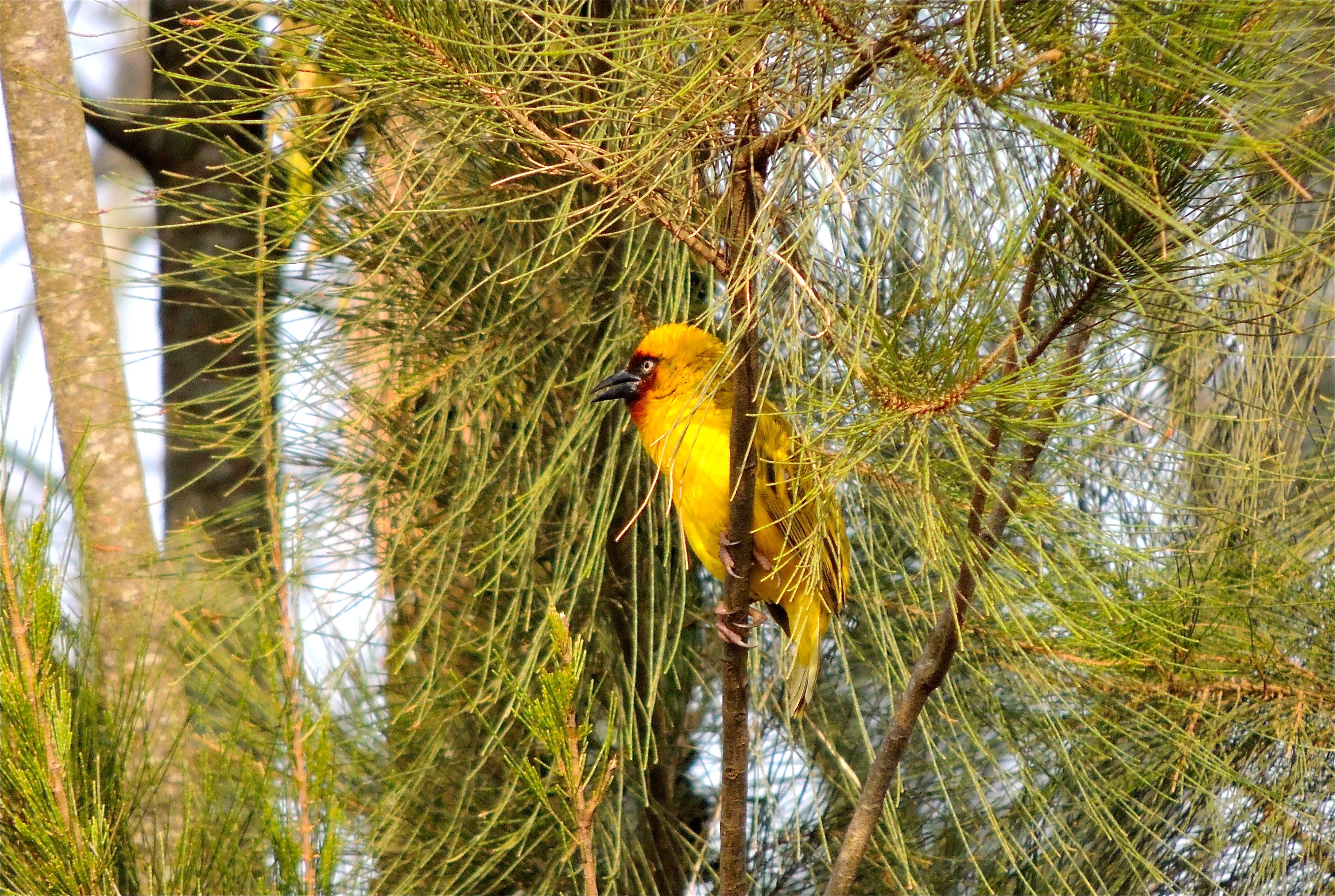 Northern Brown-throated Weaver - Photo by William Young
Northern Brown-throated Weaver - Photo by William Young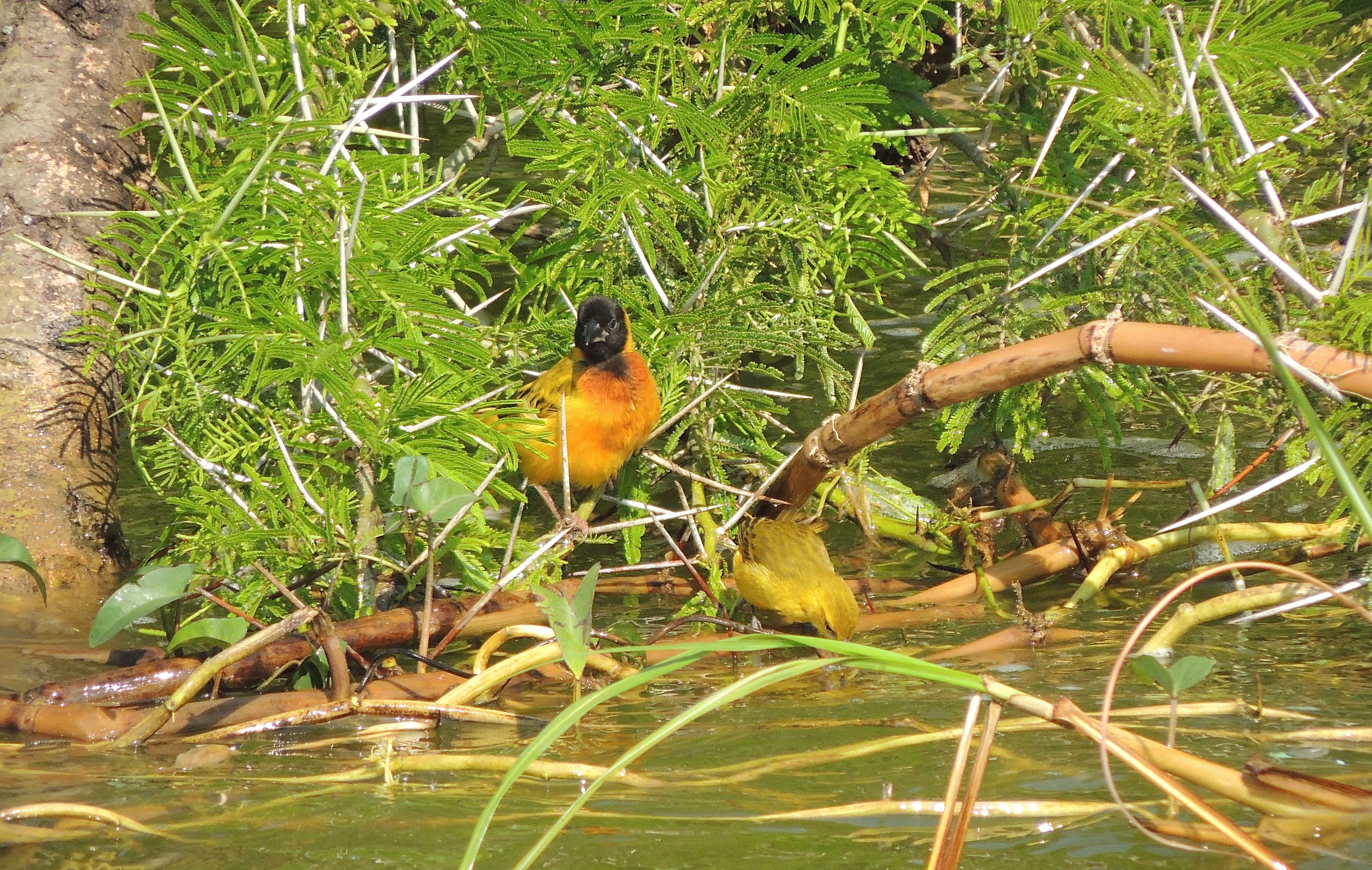 Black-headed Weaver - Photo by William Young
Black-headed Weaver - Photo by William Young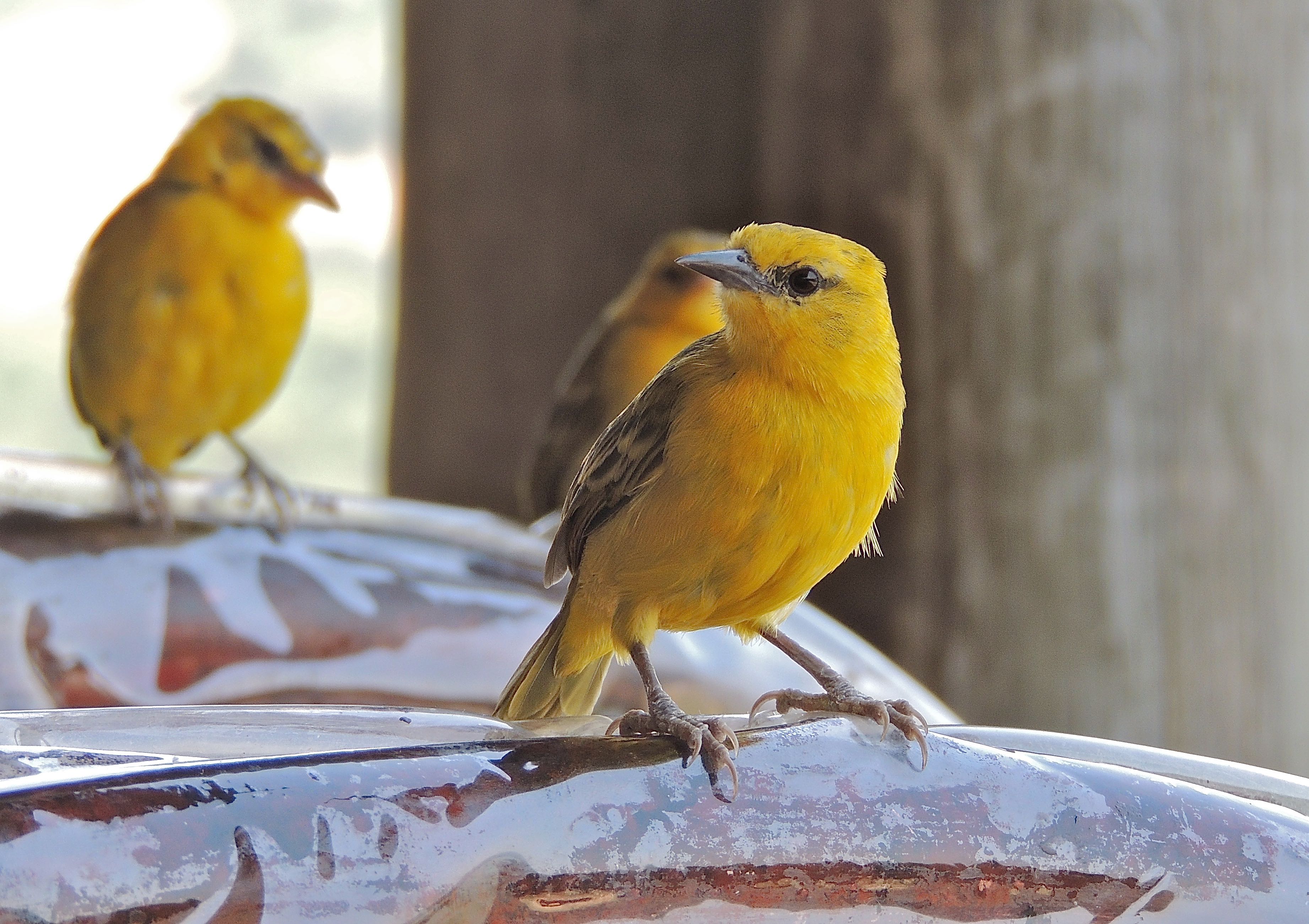 Slender-billed Weaver - Photo by William Young
Slender-billed Weaver - Photo by William Young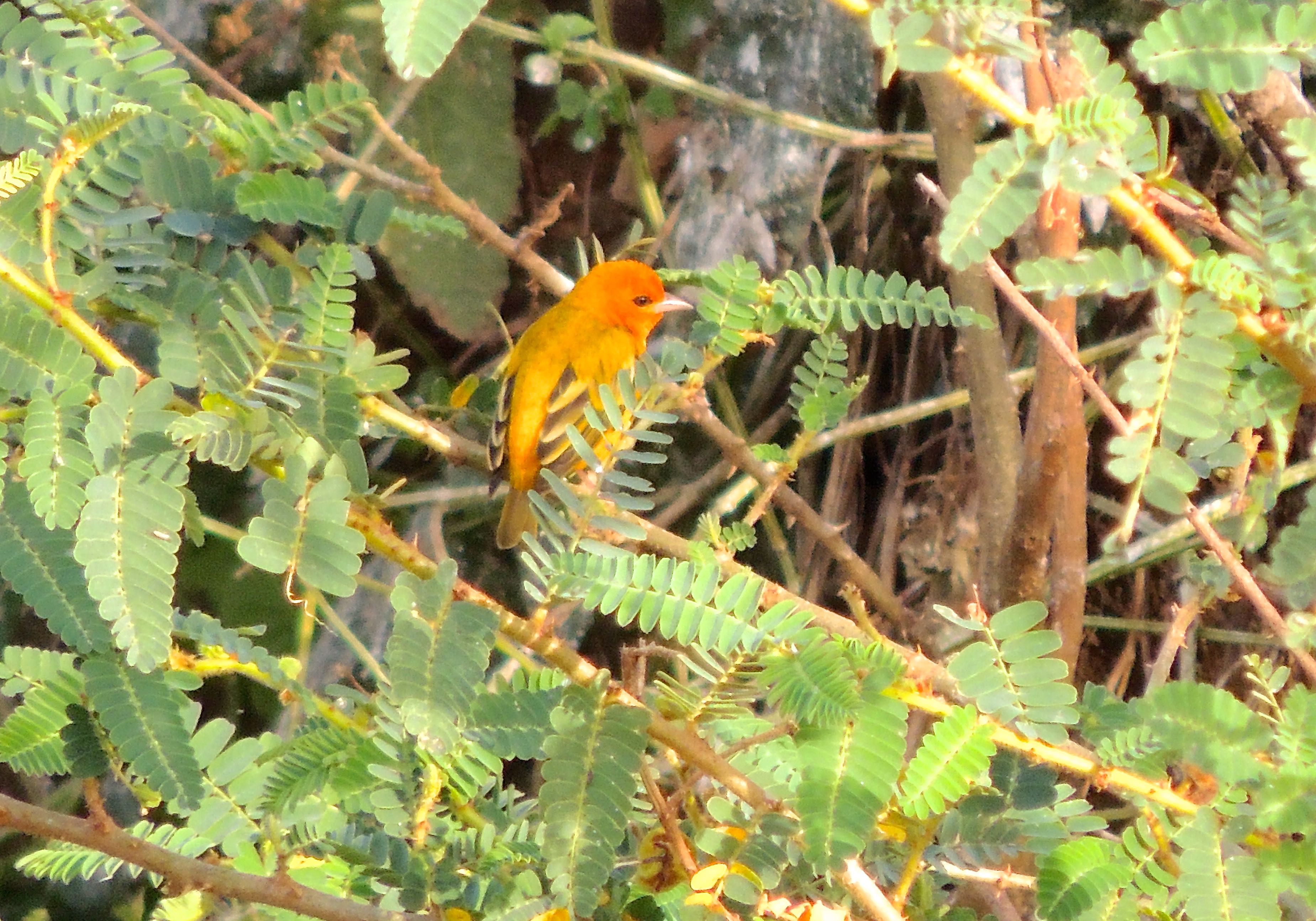 Orange Weaver - Photo by William Young
Orange Weaver - Photo by William YoungThe Village Weavers were the most common weaver we saw. We encountered them on 15 days, sometimes at least 100. They have a black face, forehead, and breast, and a red eye. We saw a lot of colonies of them in numerous places. There was also a large colony near the headquarters for Bigodi Wetlands, with some Viellot's Black Weavers mixed in. In a number of places, we saw colonies of weavers with more than one species. The Viellot's tend to build their nests higher than the Village. The male is all black with a pale eye, while the female is olive. We saw them at the Entebbe Botanical Gardens. The Vitelline Masked Weaver looks like a smaller version of the Village Weaver, and the Lesser Masked Weaver looks like a Village Weaver with a pale eye rather than a red one. Their plumage was not as bright as the Spectacled Weaver's. Also common were Yellow-backed Weavers, who are chestnut below and have a yellow nape. The Golden-backed Weaver looks like an Orchard Oriole with a golden nape. It has a black head and brick-colored underparts. We saw some Yellow-mantled Weavers at Murchison Falls NP. This grassland species has a black head, is chestnut below, and has a yellow nape. We saw a Compact Weaver at Queen Elizabeth NP, who has a black face and looks chunky and compact. At Bwindi, we saw Brown-capped Weavers, who are yellow with a black face and throat and a brown crown and nape.
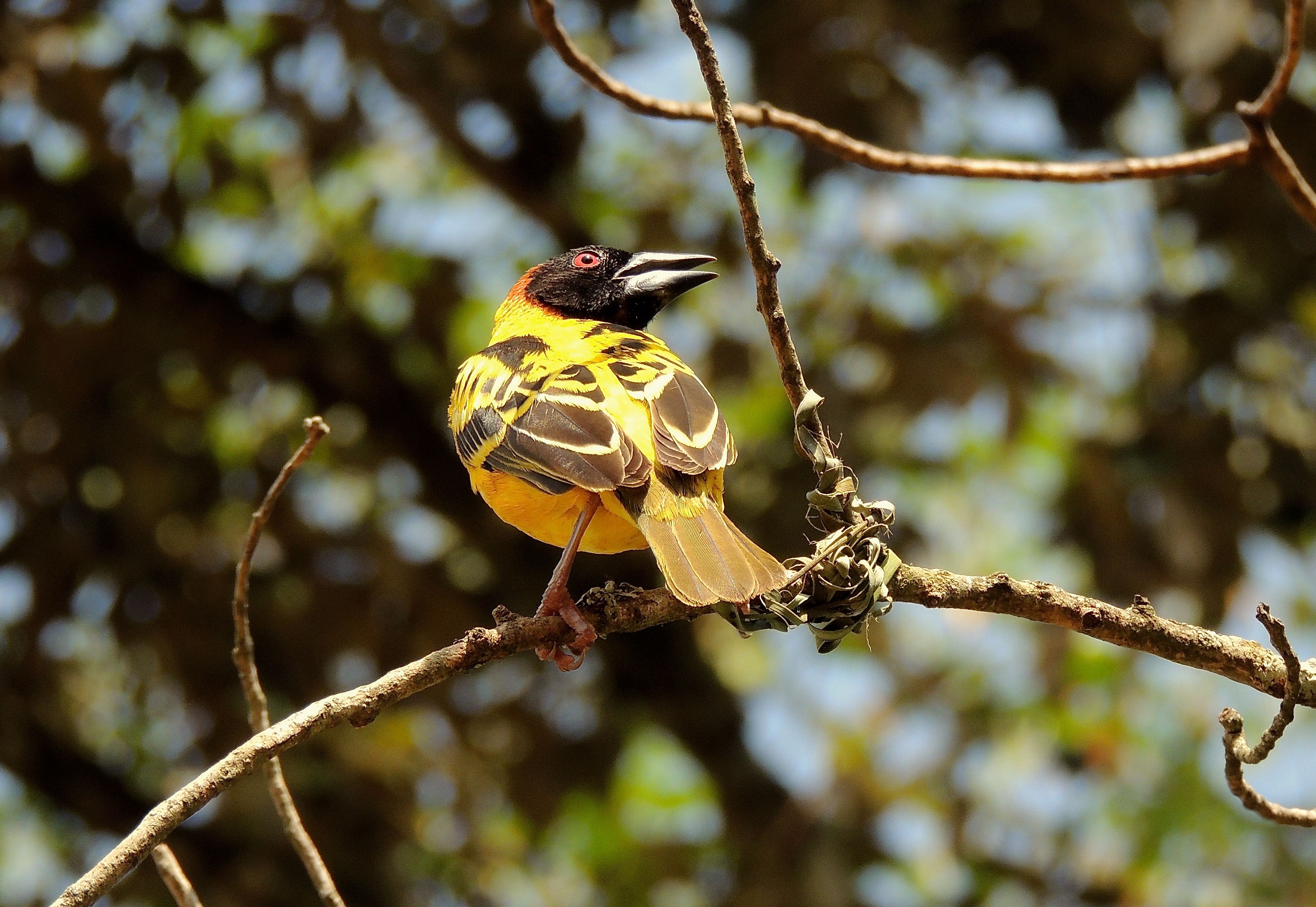 Village Weaver - Photo by William Young
Village Weaver - Photo by William Young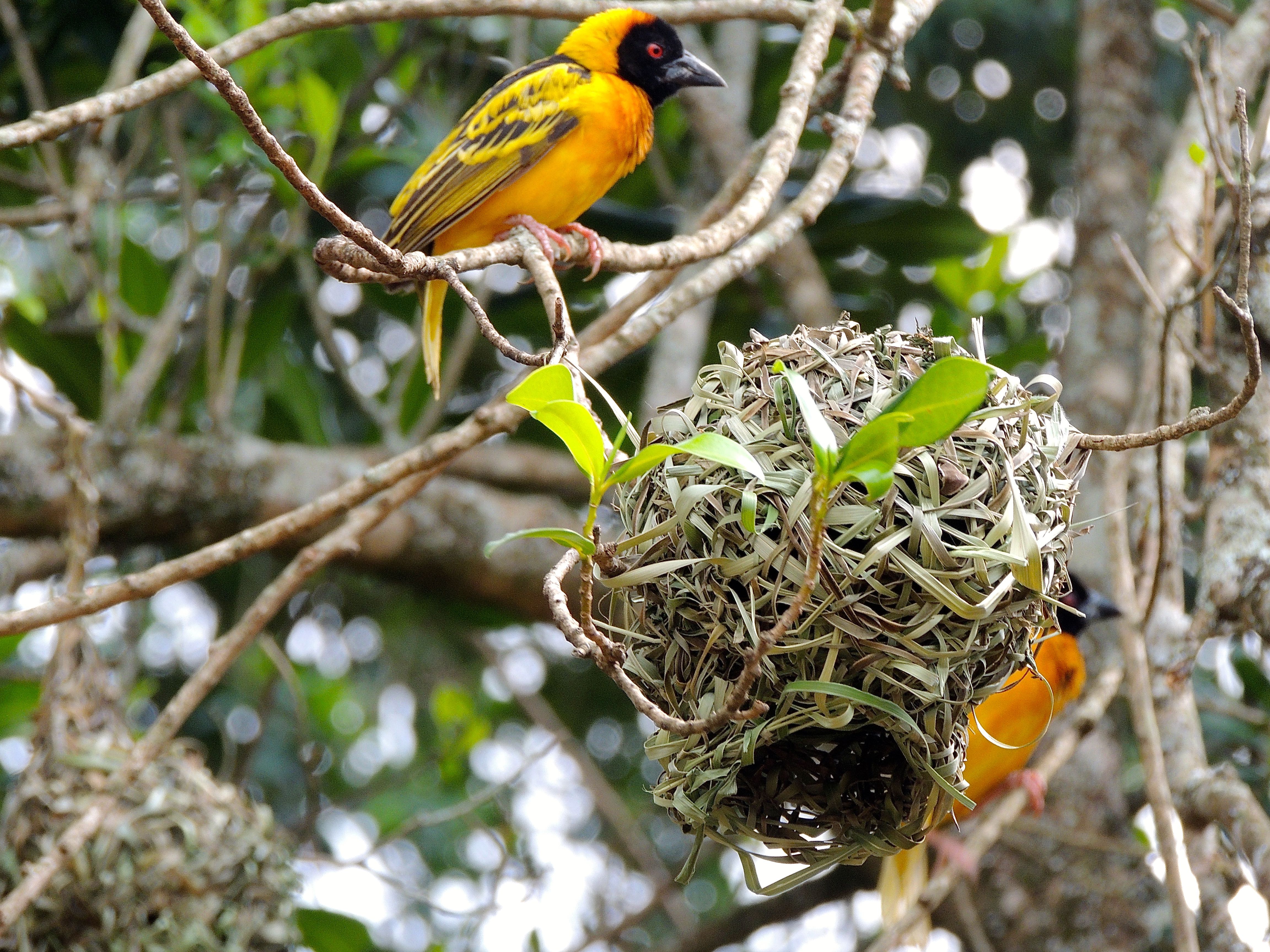 Village Weaver Nest - Photo by William Young
Village Weaver Nest - Photo by William YoungFinches
Africa has a lot of beautiful finches, but I did not see many. We saw three nigritas. The Grey-headed Nigrita is black with a grey head and back and a red eye. The Chestnut-breasted Nigrita is a small bird who is chestnut below and dark olive on the back. We saw one at Semliki. And the White-breasted Nigrita is pure white below, with a black cap and olive back. I saw a Common Waxbill on our way to Ruhija. At Semliki we saw a couple of Red-headed Bluebills, who are black-and-red with a large red-and-blue bill. Red-cheeked Cordon-Bleus flew around Murchison Falls NP. We saw Red-billed Firefinches in a number of places, including at the Victoria View Guest House, and we saw a couple of African Firefinches near the beginning of the Royal Mile. Bronze Mannikins were fairly common. They were more common than the Black-and-white Mannikin, and the Magpie Mannikin was the least common.
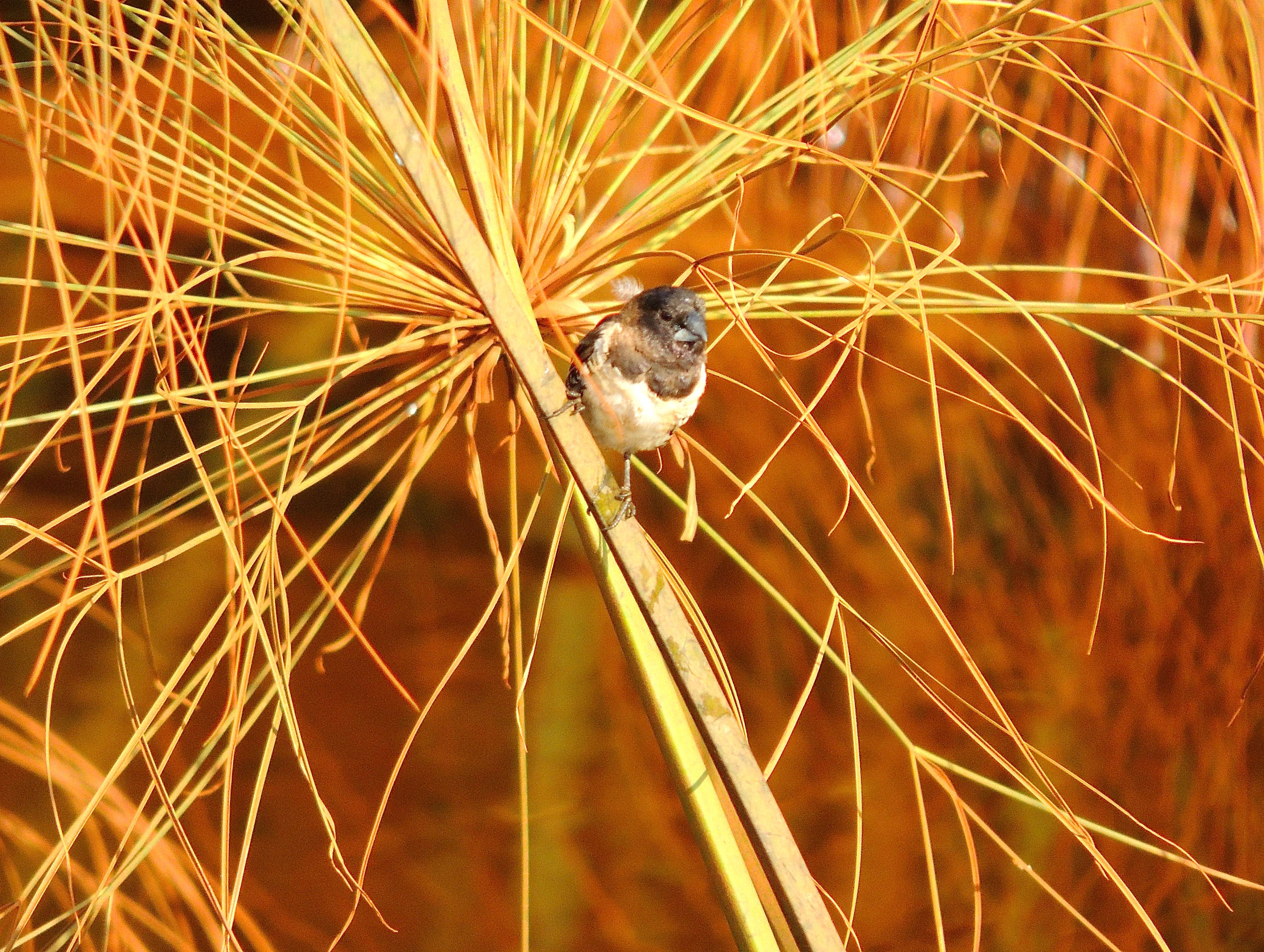 Bronze Mannikin - Photo by William Young
Bronze Mannikin - Photo by William YoungWhydahs, Indigobirds
We saw Pin-tailed Whydahs in a number of places. At the Kibale Guest Cottages, long-tailed males displayed to both females and other males. Some of them flew to the ground and appeared to briefly flatten themselves out before flying up to a branch. Some of the males we saw did not have long tail feathers. On the day we went to the Royal Mile, we saw a flock of Village Indigobirds in a field before we got to the parking area. A lot of them were either females or juveniles. In other parts of the trip, we saw a couple of them perched on wires. They are very small, and the males are totally dark. They parasitize pytillias and firefinches.
MAMMALS
Primates
Chimpanzees are the closest relatives to Homo sapiens. We saw them in three places. One was foraging in a tree at Bwindi. We saw a family of three at a day nest on the Royal Mile. They appeared to be a mother with two offspring, with one of the youngsters being about a year old and the other three-to-four years old. They were playing and hugging each other while the mother rested a short distance away. A bit later, we heard the loud roar of a group of chimps who were somewhere nearby in the forest. Chimps build day nests where they rest during the day, and these leafy structures look a lot like a squirrel's nest. At Kanio Pabidi, we saw some abandoned chimp day nests.
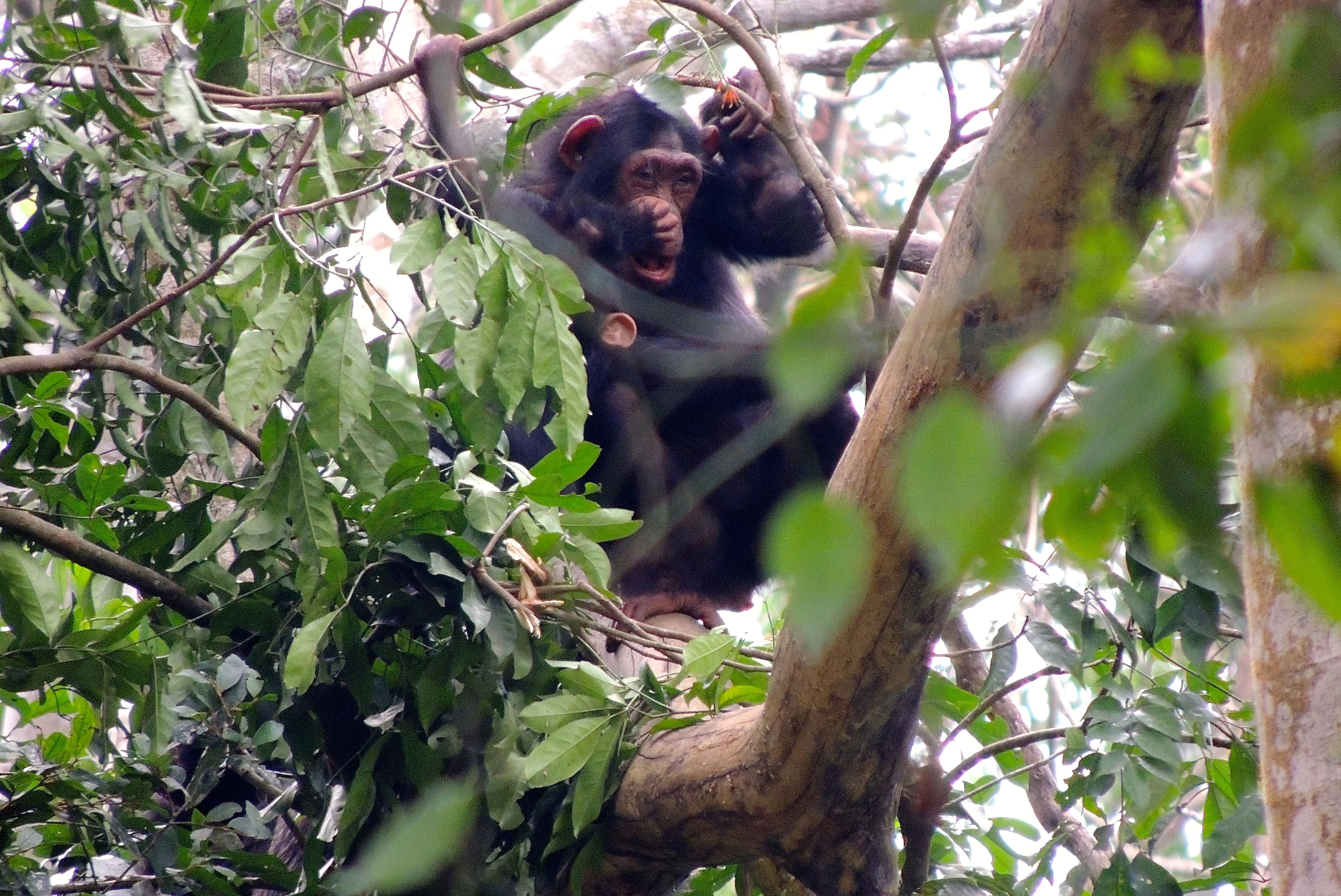 Common Chimpanzees - Photo by William Young
Common Chimpanzees - Photo by William Young Common Chimpanzees - Photo by William Young
Common Chimpanzees - Photo by William Young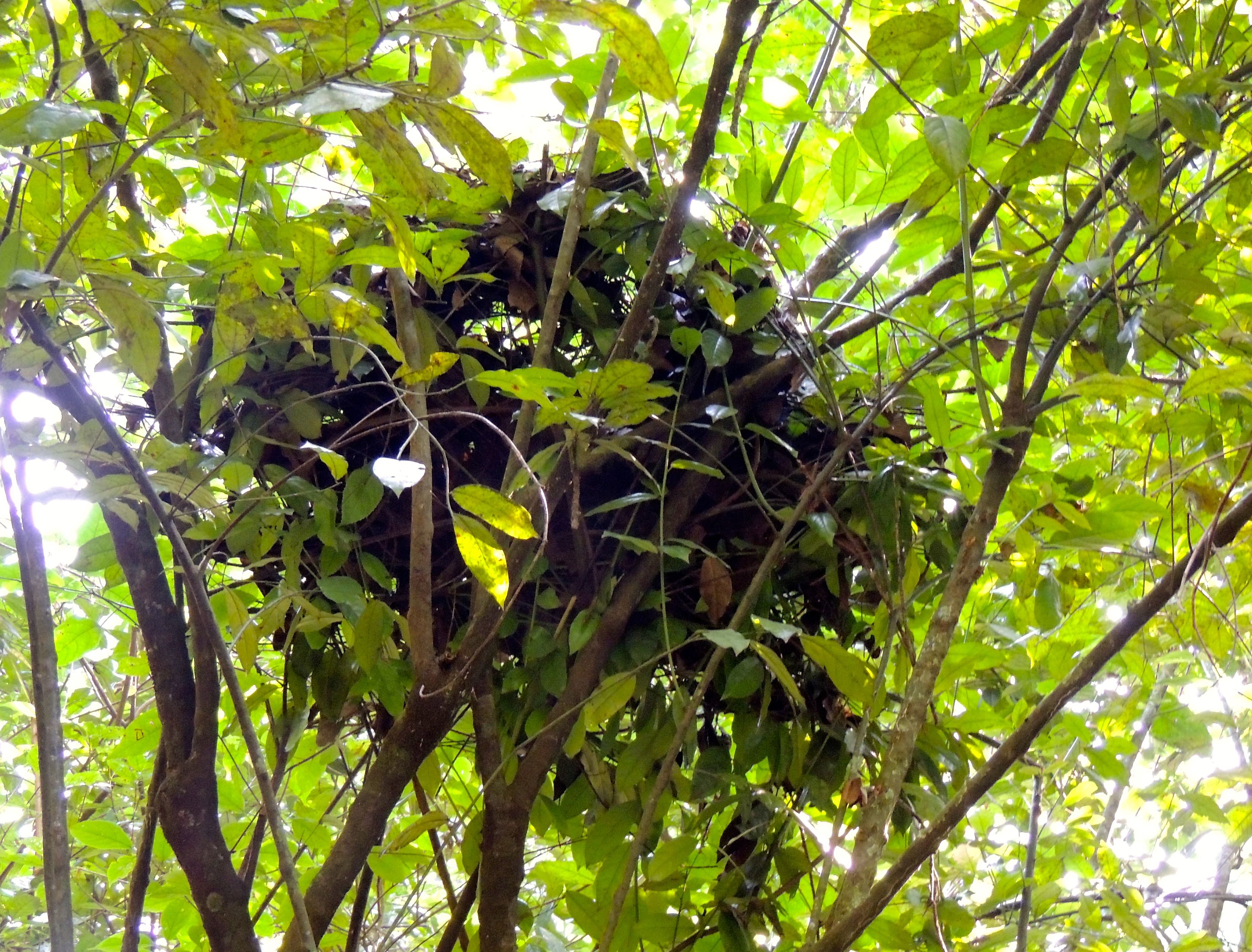 Common Chimpanzee Nest - Photo by William Young
Common Chimpanzee Nest - Photo by William Young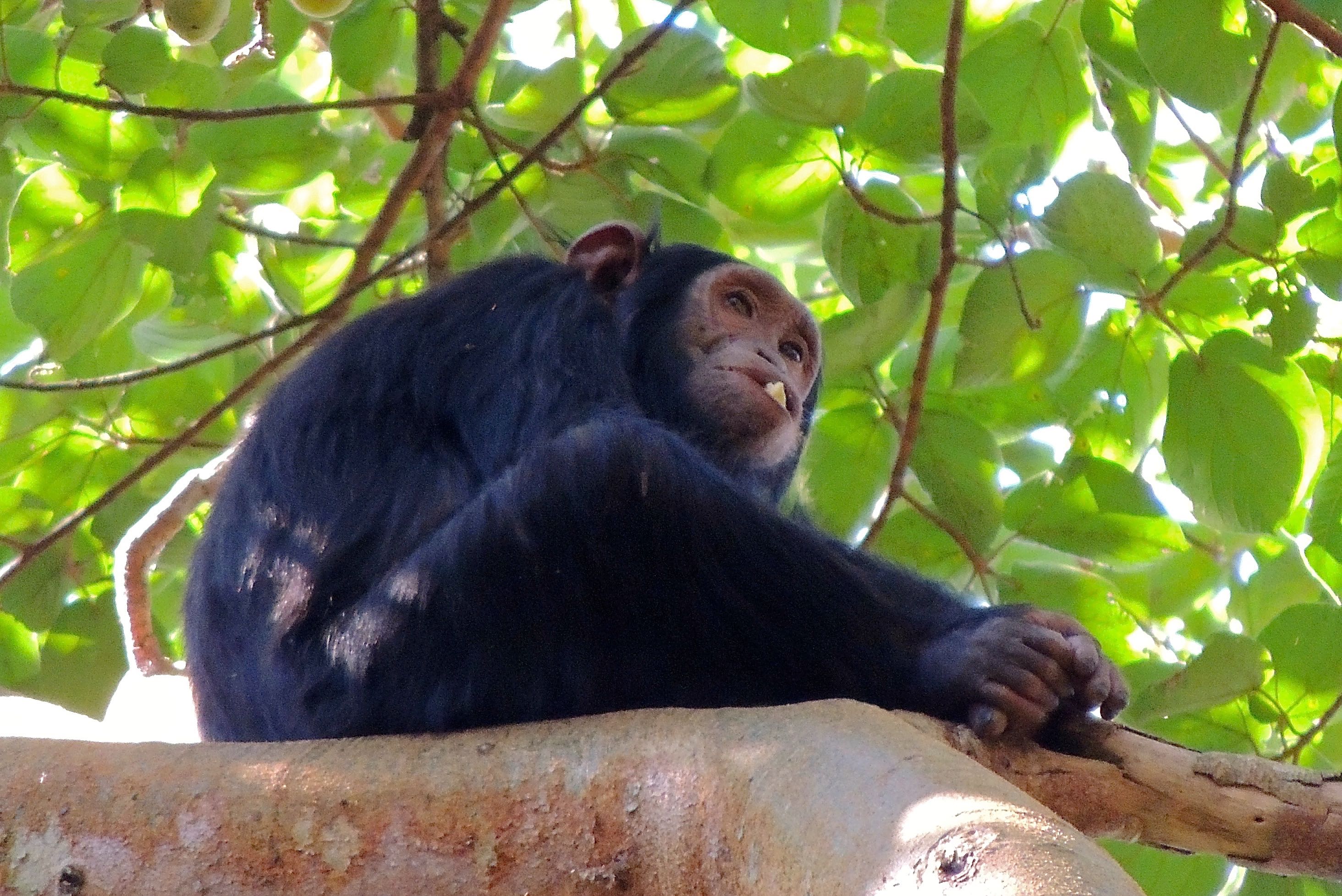 Common Chimpanzee - Photo by William Young
Common Chimpanzee - Photo by William Young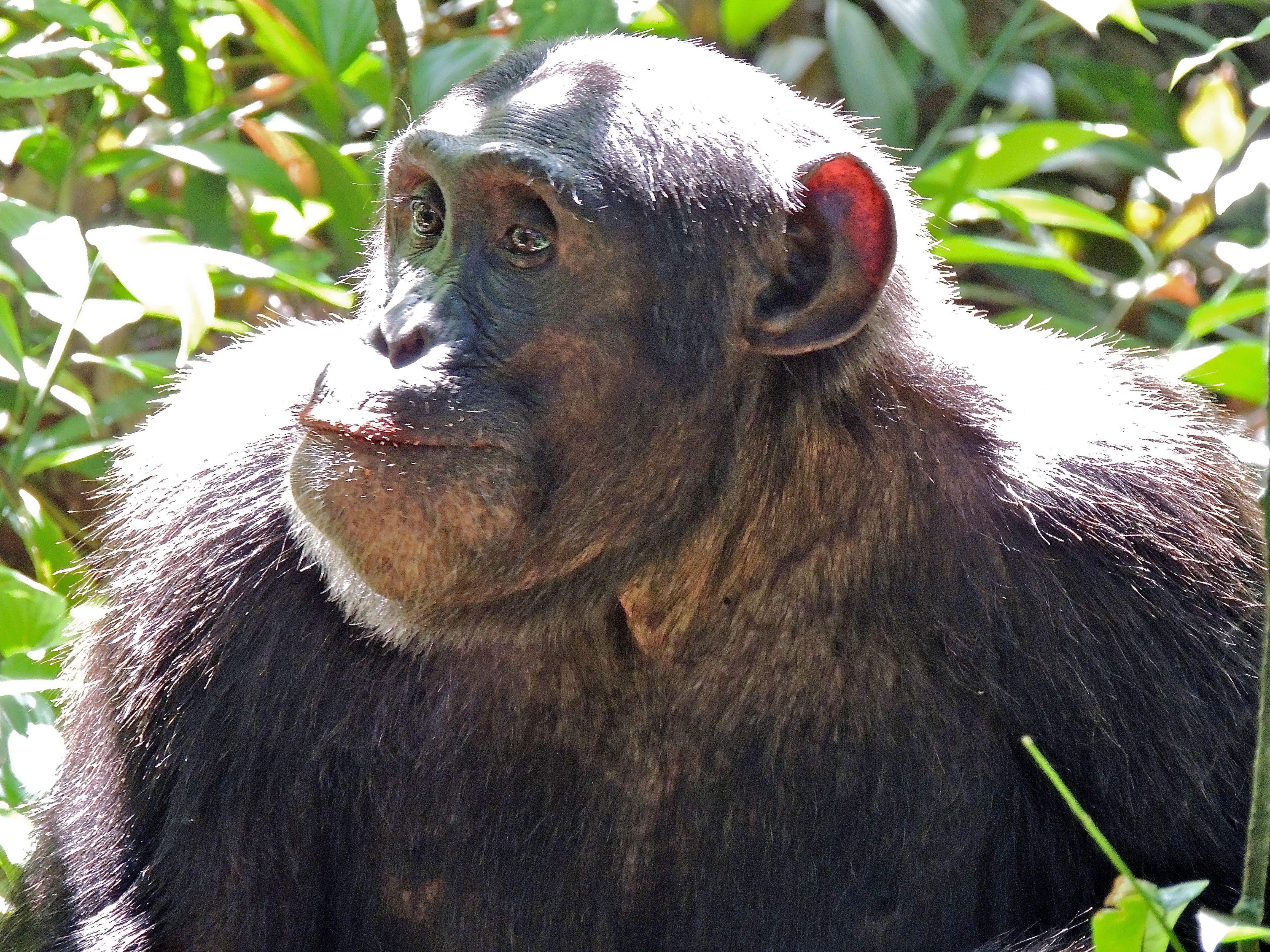 Common Chimpanzee - Photo by William Young
Common Chimpanzee - Photo by William Young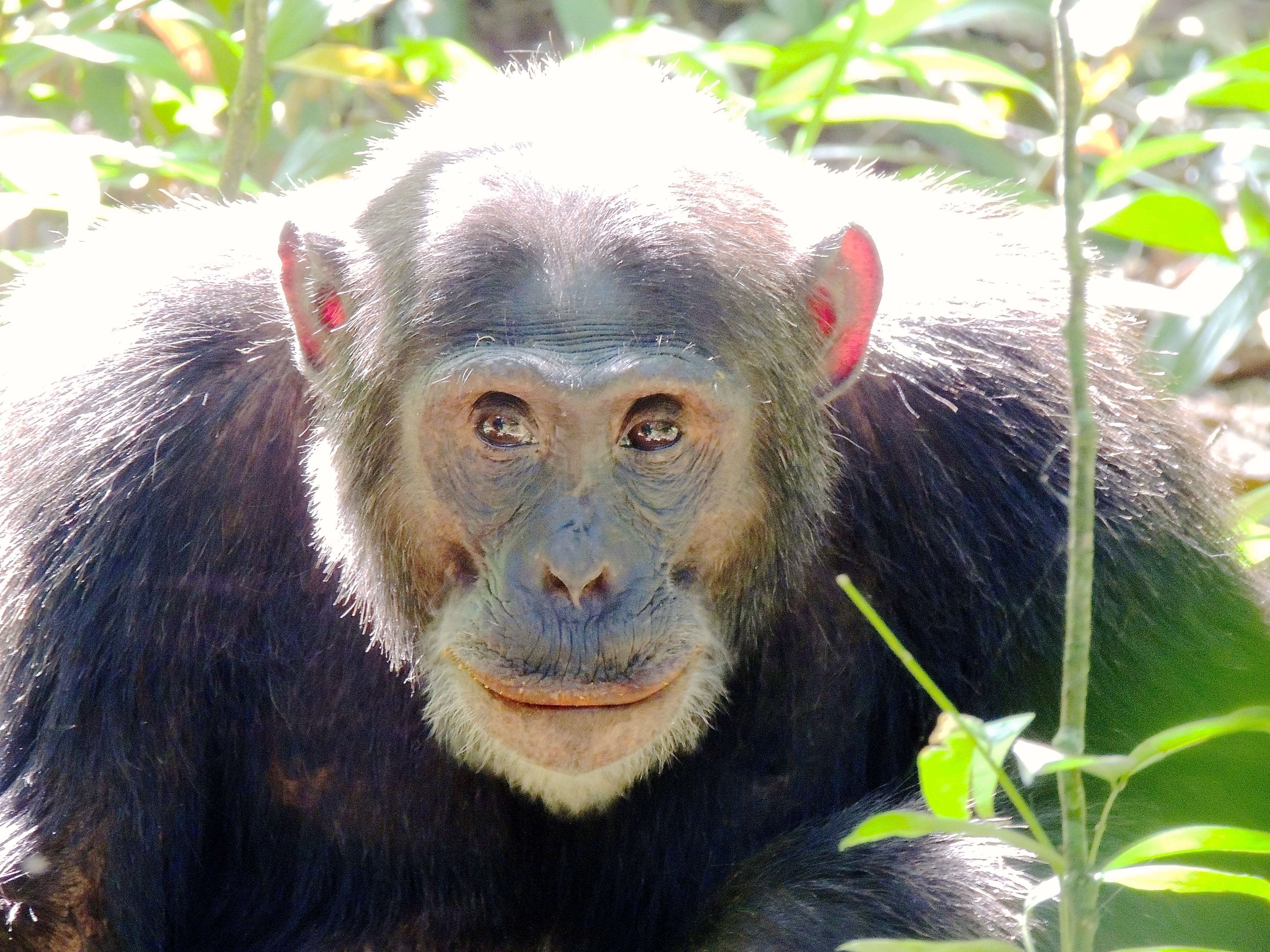 Common Chimpanzee - Photo by William Young
Common Chimpanzee - Photo by William YoungI had my best looks at chimps when I went chimp tracking at Kibale. I saw 25 to 30 of them, with some at very close range. At first, they were mainly up in the canopy — imagine looking among the leaves for warblers who weigh about 100 pounds. Eventually, I had clear views of some in the trees and even clearer views of some about 20 feet away on the ground. The first one I saw at close range came out of a tree quickly and appeared to be about my weight. Some older chimps have silver backs like older gorillas. We were told that the chimps were habituated, so nobody acted startled when the chimps started screaming and landing within ten to twenty yards from us. Hearing the sounds made by the chimps was as exciting as seeing them. We looked at the chimps up in the trees for awhile while our guide Bosco told us about chimp natural history. Chimps form communities and subgroups within communities. The only time chimps from different communities interact is for warfare, and some of their activities include ripping off the testicles of males they kill. As with humans, the winners are often not generous to the losers. We came across one older male who sat about 10 yards away, eating a piece of fruit. He did not seem bothered by our presence. We got close to another pair in which one was grooming the other. I looked at them through my binoculars and could see the groomer's long fingers working around the back end of the groomee.
Six days later, Lori and I tracked Mountain Gorillas. We saw 11 members of a large group called Oruzogo, which is named after one of the favorite food plant families that the Mountain Gorillas eat. Our guide Benson cut off the branch of one of these trees to show us what they eat. The Oruzogo group has 17 members, of whom three are silverback males, who are brothers. Mountain Gorillas are highly endangered. There are only an estimated 880 left in the world, and 400 live in various parts of the Bwindi Impenetrable Forest. The biggest reason for their demise is habitat loss, and one of the only reasons they have been able to hold on is that the parkland has been set aside so that people cannot farm it. While driving through the mountains, we saw hillsides that appeared to have beautifully terraced agriculture or tea plantations. Unfortunately, a lot of these attractive hillsides used to be forest habitat for mountain gorillas, who have lost more than 60 percent of their habitat to such practices.
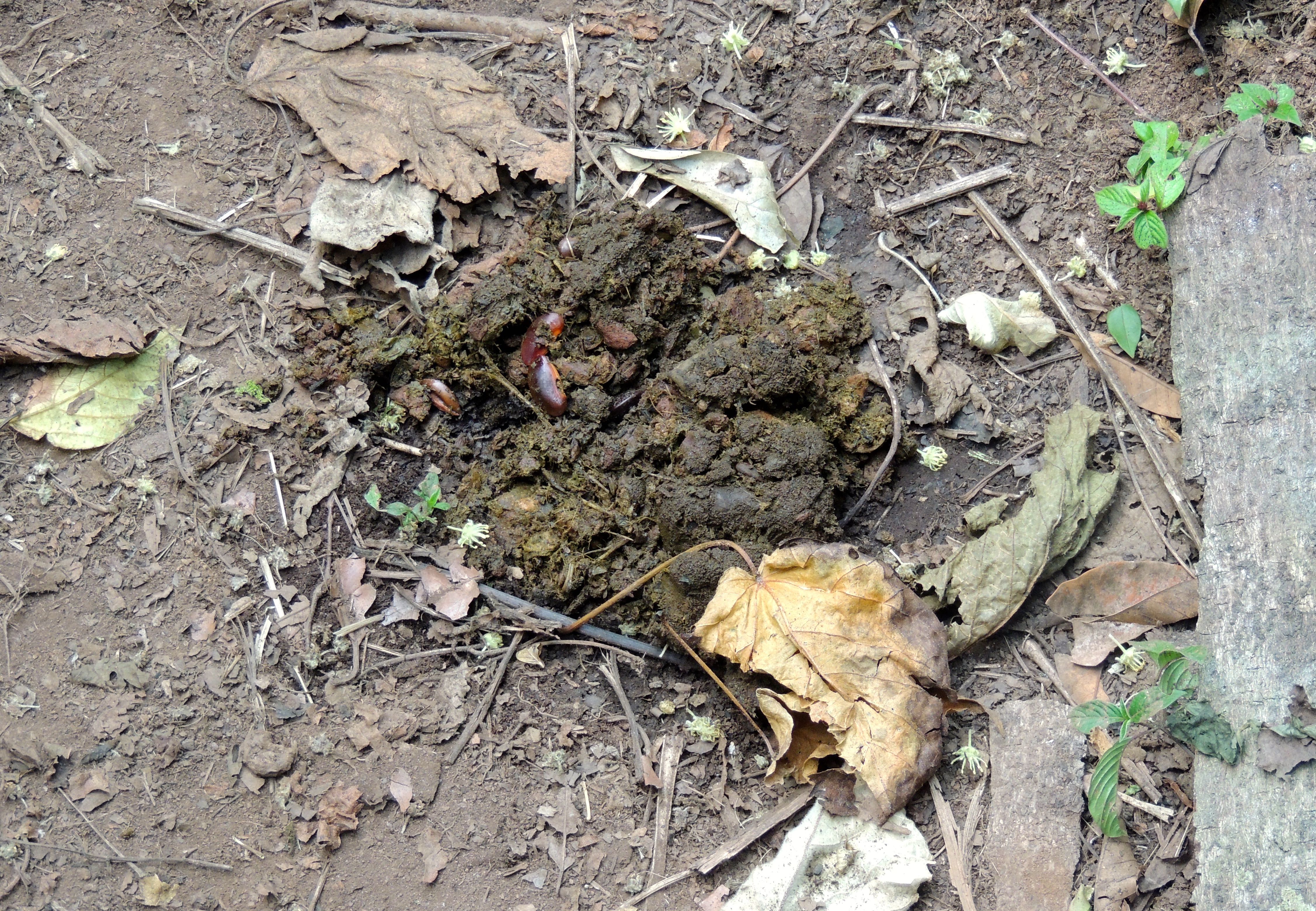 Mountain Gorilla Poo - Photo by William Young
Mountain Gorilla Poo - Photo by William YoungWe had been warned to stay at least 7 meters from the gorillas, but the guides disregarded this instruction. They also hacked away a lot of branches so that people could take better photos. I was standing next to one of the guides about 10 feet away from a young male who suddenly began to pound his chest and come charging at us. He pushed me in the left thigh as he ran past. The chest pounding made a popping sound. We later found other gorillas in the group, including a silverback. These large males can weigh well over 400 pounds. We saw one silverback eating fruit while lying on the ground like a couch potato. Other gorillas — mostly females and young males — climbed high in the trees and threw down fruit for the silverback and others to eat. One of the pieces of fruit grazed my head while I was watching other gorillas. Unlike the chimps, gorillas are almost entirely vegetarian. They eat a few insects, but they mostly eat fruit and vegetation. They sometimes kill other gorillas, but they do not eat them. Gorillas have large heads and large hands. They have trouble scooping water with their hands, because it leaks out between their fingers. Sometimes, they drink by lapping up water.
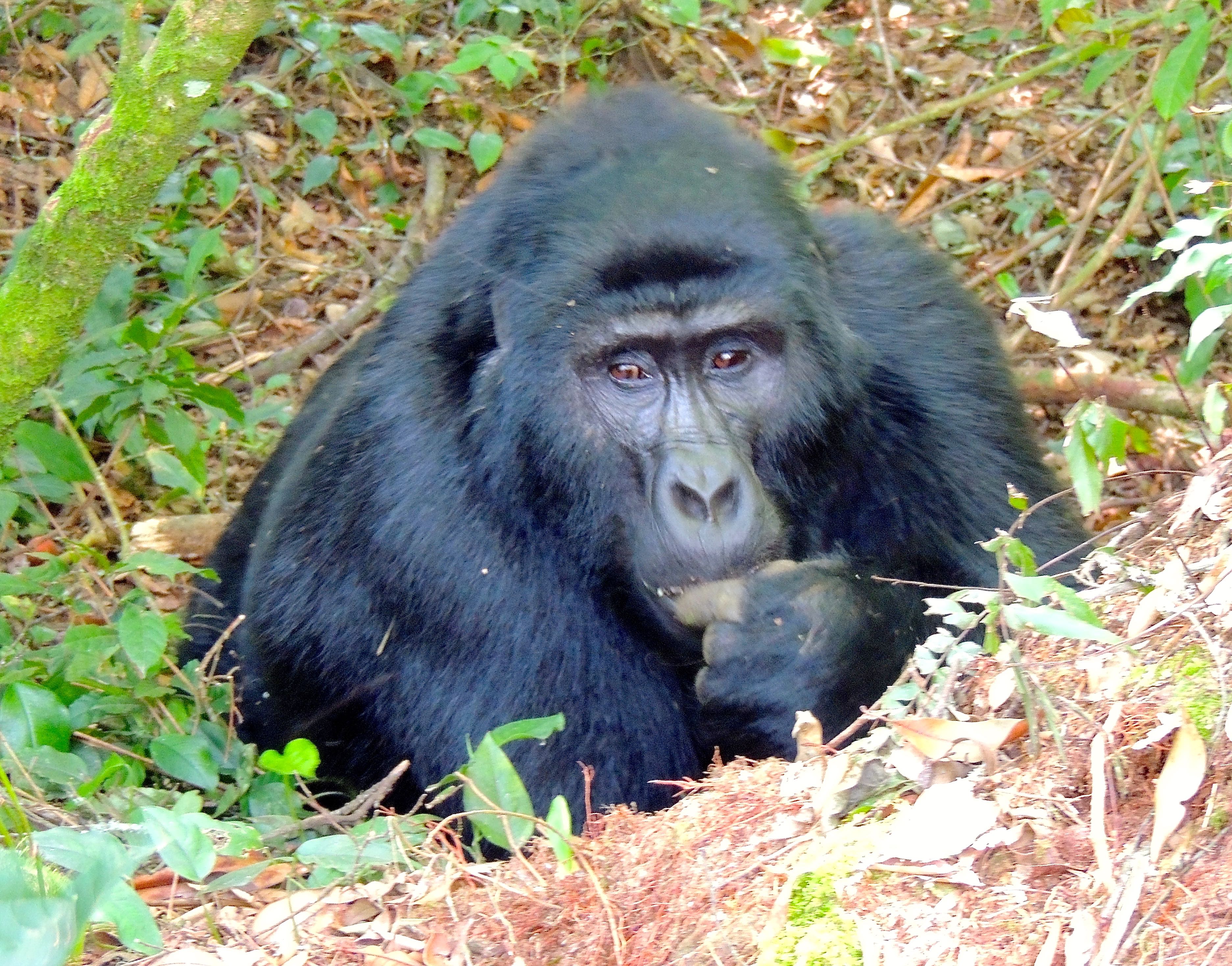 Mountain Gorilla - Photo by William Young
Mountain Gorilla - Photo by William Young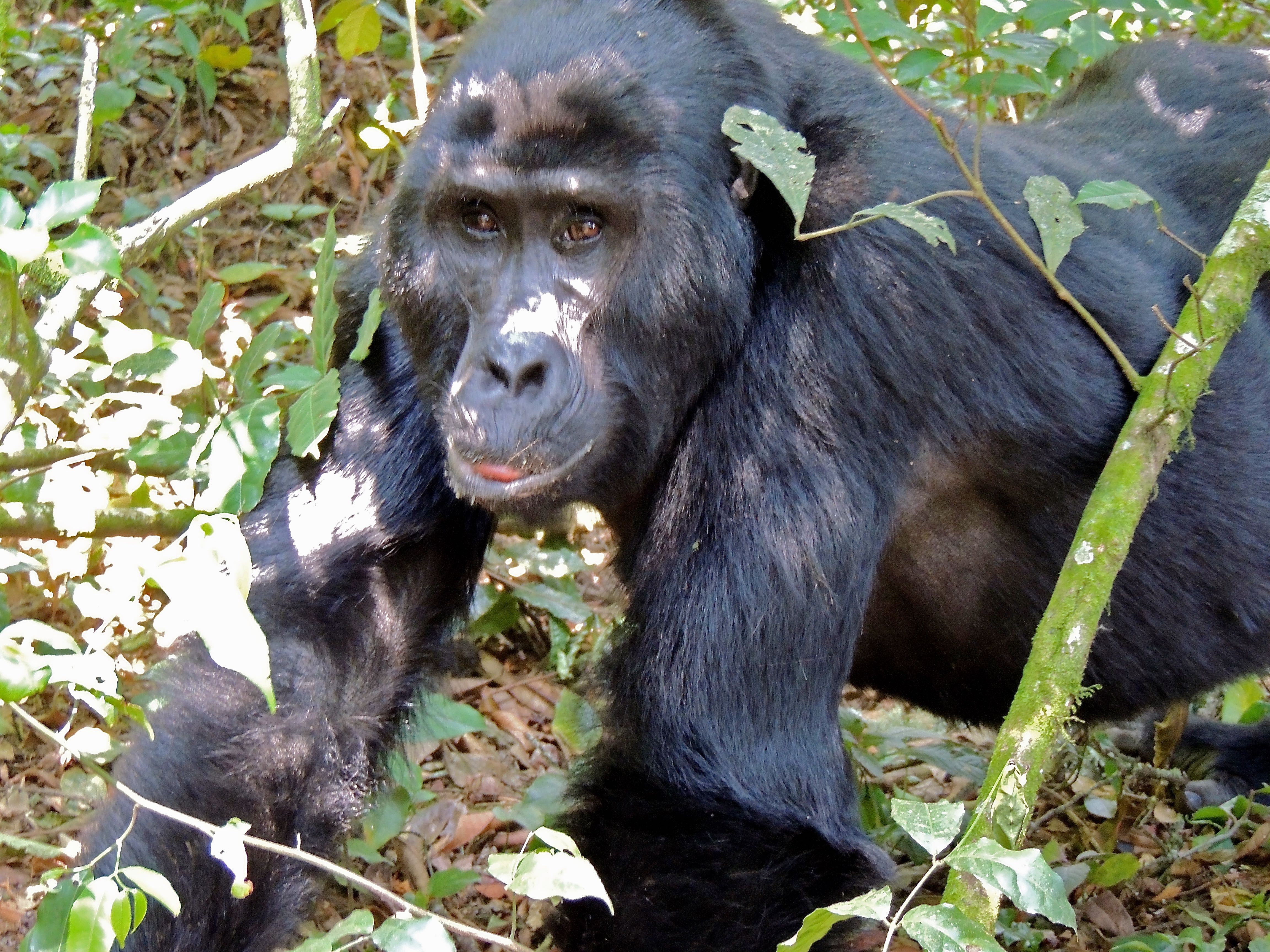 Mountain Gorilla - Photo by William Young
Mountain Gorilla - Photo by William Young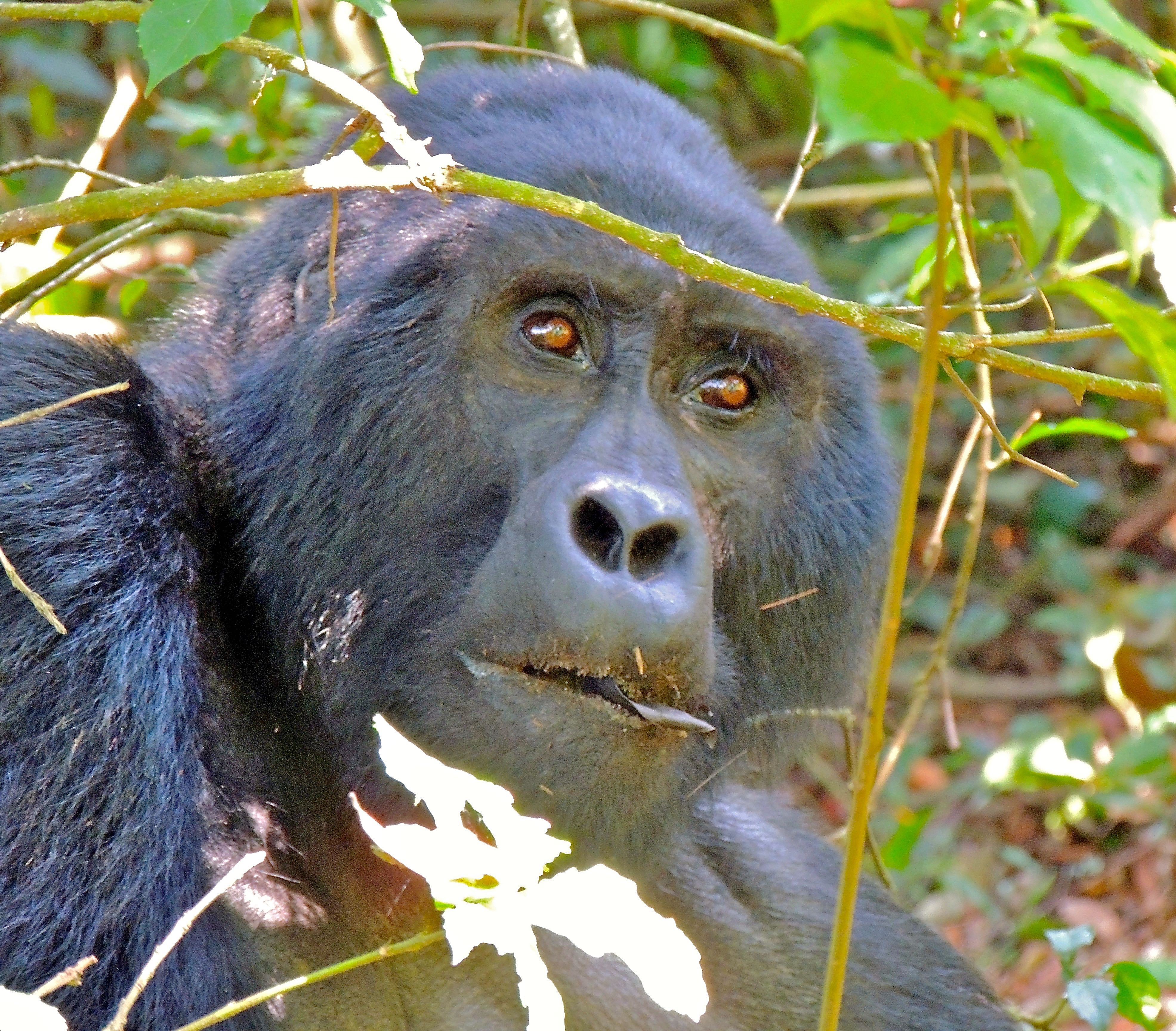 Mountain Gorilla - Photo by William Young
Mountain Gorilla - Photo by William Young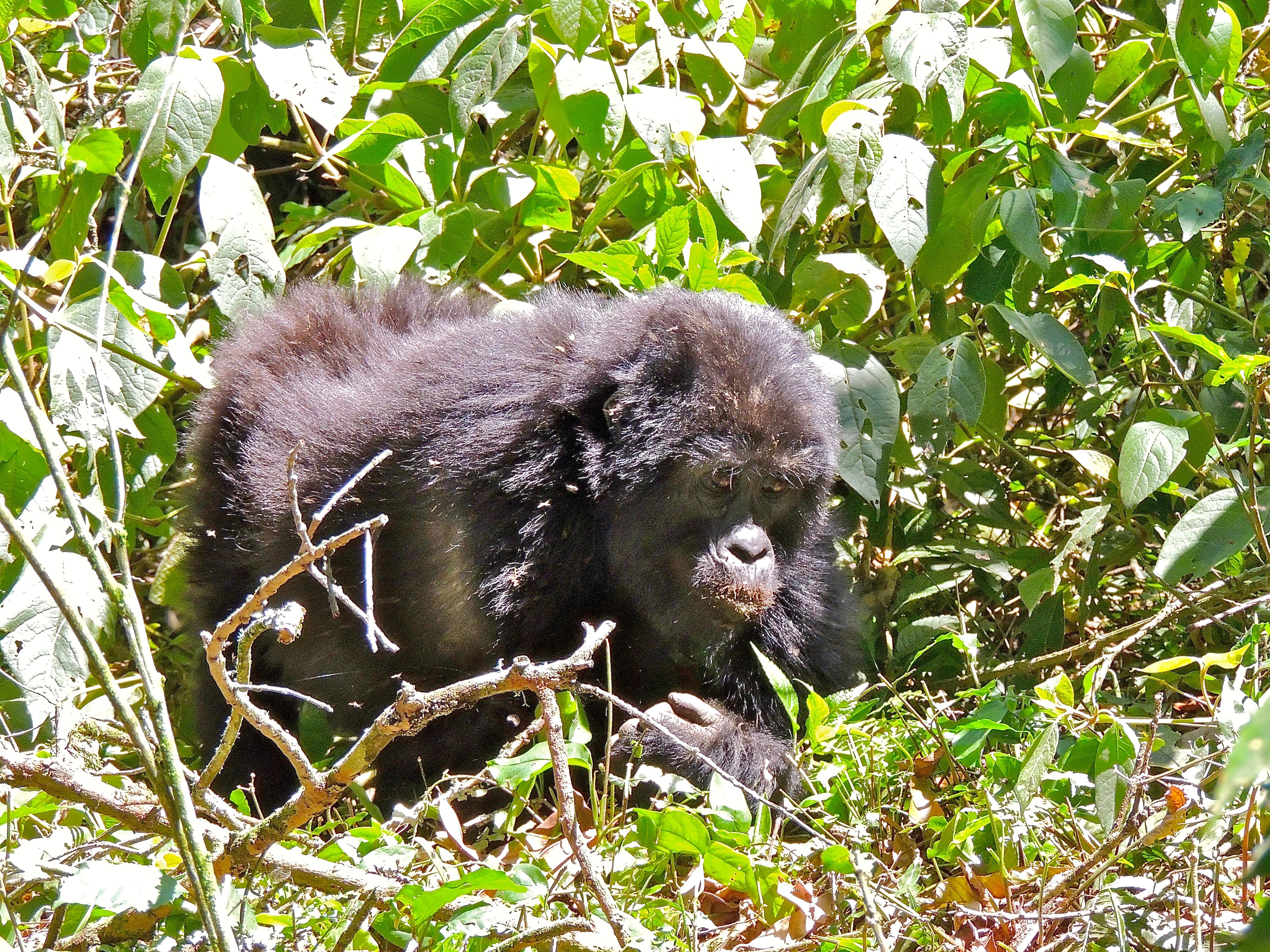 Mountain Gorilla - Photo by William Young
Mountain Gorilla - Photo by William Young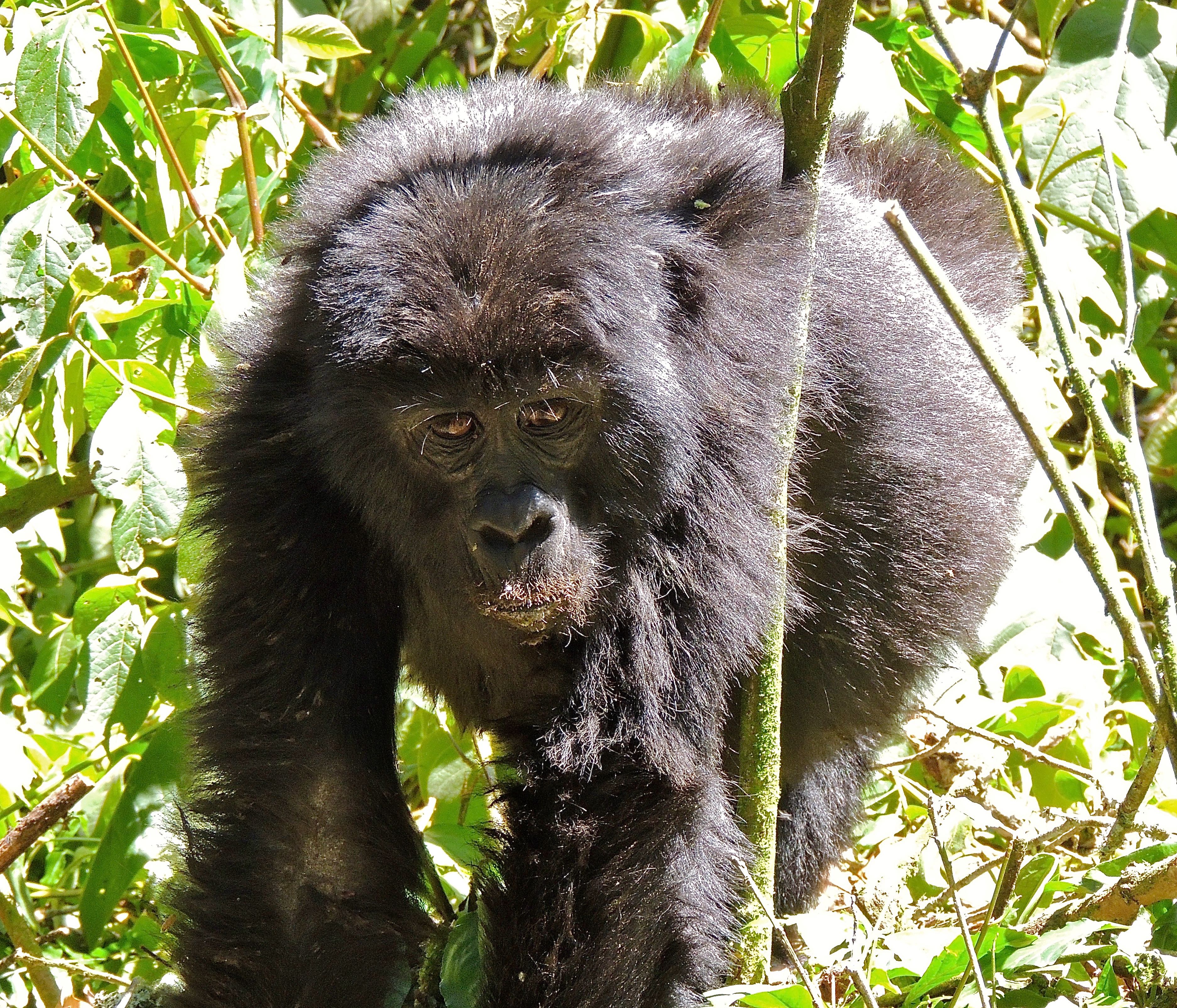 Mountain Gorilla - Photo by William Young
Mountain Gorilla - Photo by William YoungThe aspect of the experience I will most remember is looking into the eyes of the gorillas. It felt as if I were looking at how humans used to be many millennia ago. One of the reasons so many people in the US do not believe in evolution might be that they don't live in a place that has primates. I have seen a lot of primates on this trip, including two species of great apes, and I have seen a great many similarities between them and us.
I saw 10 other species of primates. Olive Baboons were common in many places, often in good numbers. At the Budongo Eco Lodge, they hung around the dining area, hoping to snatch an unattended morsel of food after a diner had left. At the Paraa Lodge, I had to walk past a large group of baboons to get from my room to the massage area on the other side of the complex. One seemed to have a melon, and the others gave chase. On the drive to the Bigodi Wetlands, we found a large group of them with some Guereza Black-and-white Colobuses. Some were sitting in the middle of the road and eating ears of corn. We saw Guereza Black-and-white-Colobus Monkeys on nine of the first 11 days of the trip. These beautiful monkeys have an extremely long black tail with lovely white fur tip. Colobus monkeys do not have thumbs as other primates do. At Bigodi Wetlands, we saw Central African Red Colobus monkeys. They are not doing well, because chimpanzees often kill them, especially the young and the mothers trying to protect them. In the same area we saw Grey-cheeked Mangabeys, including one who came down very close to us and was masturbating on a low branch. We saw this same monkey jump about ten feet from one branch to another branch not far from where we were standing. We had nice looks at Vervet Monkeys at the Entebbe Botanical Gardens, including a mother who still had a bloody wound in her groin that had not yet healed after she had given birth to the infant she held in her arms. This race has black paws, and people at the gardens were throwing mangos to them. The male has a bright blue scrotum. I had a close look at a Tantalus Monkey at the Ziwa Rhino Sanctuary. It is a recent split from the Vervet Monkey. It does not have dark paws like the Vervets. Patas Monkeys were in Murchison Falls NP. We saw a mother holding a recently-born infant. They are savanna monkeys, and their fur is a light brown. I saw Dent's Monkeys at Semliki, who are small brown monkeys with white bellies. I saw my first Blue Monkeys of the trip on the Royal Mile. I heard their alarm call, which they utter often. At one point, some of them wanted to cross the road, so they got onto a branch on one side and launched themselves across to the other. I saw Red-tailed Monkeys on 6 out of 8 days in the middle of the trip, from Semliki to when we went to the mountains. One sat right in front of us in a tree in Bwindi. They are tan with a long rufous tail. They sometimes interbreed with Blue Monkeys.
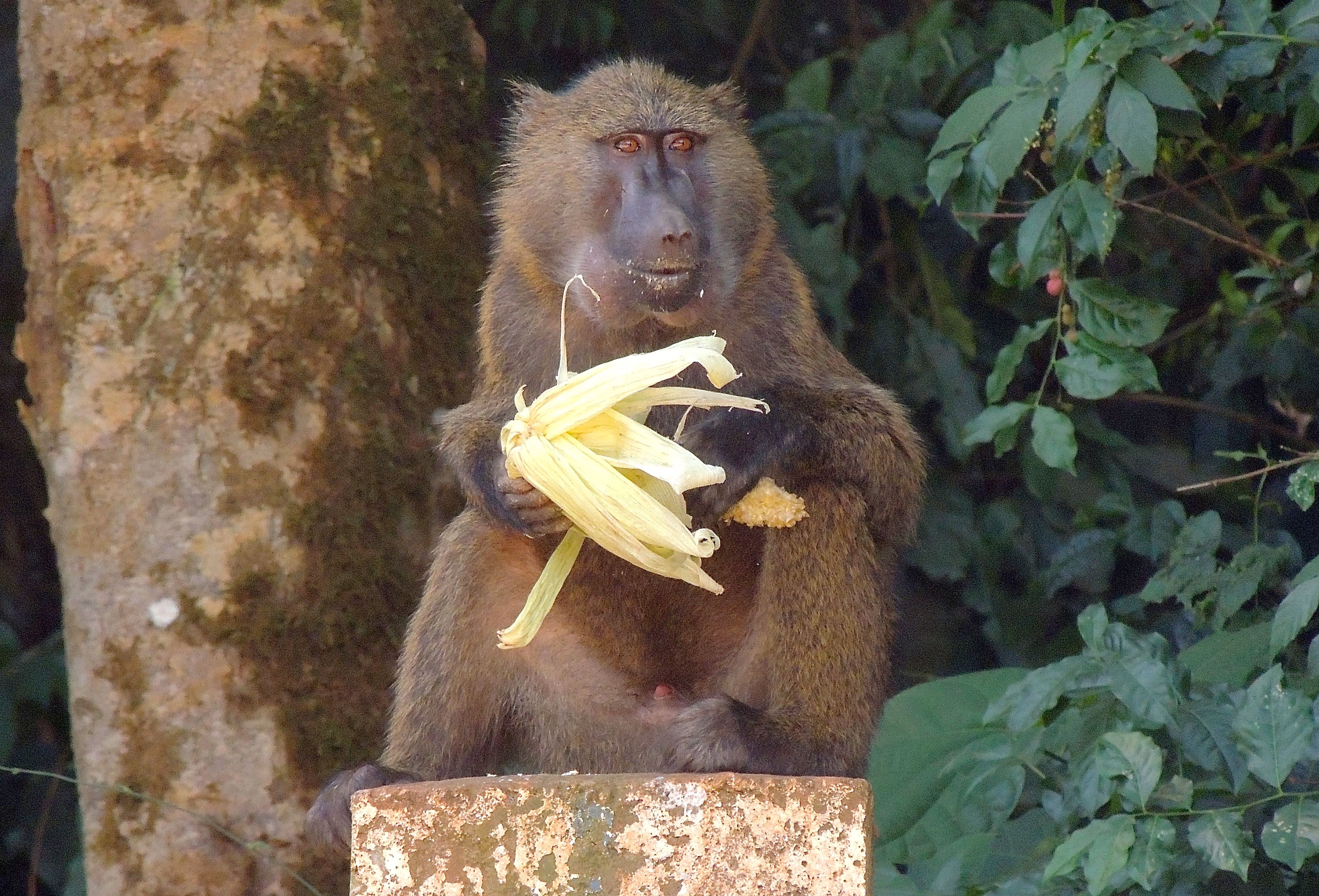 Olive Baboon - Photo by William Young
Olive Baboon - Photo by William Young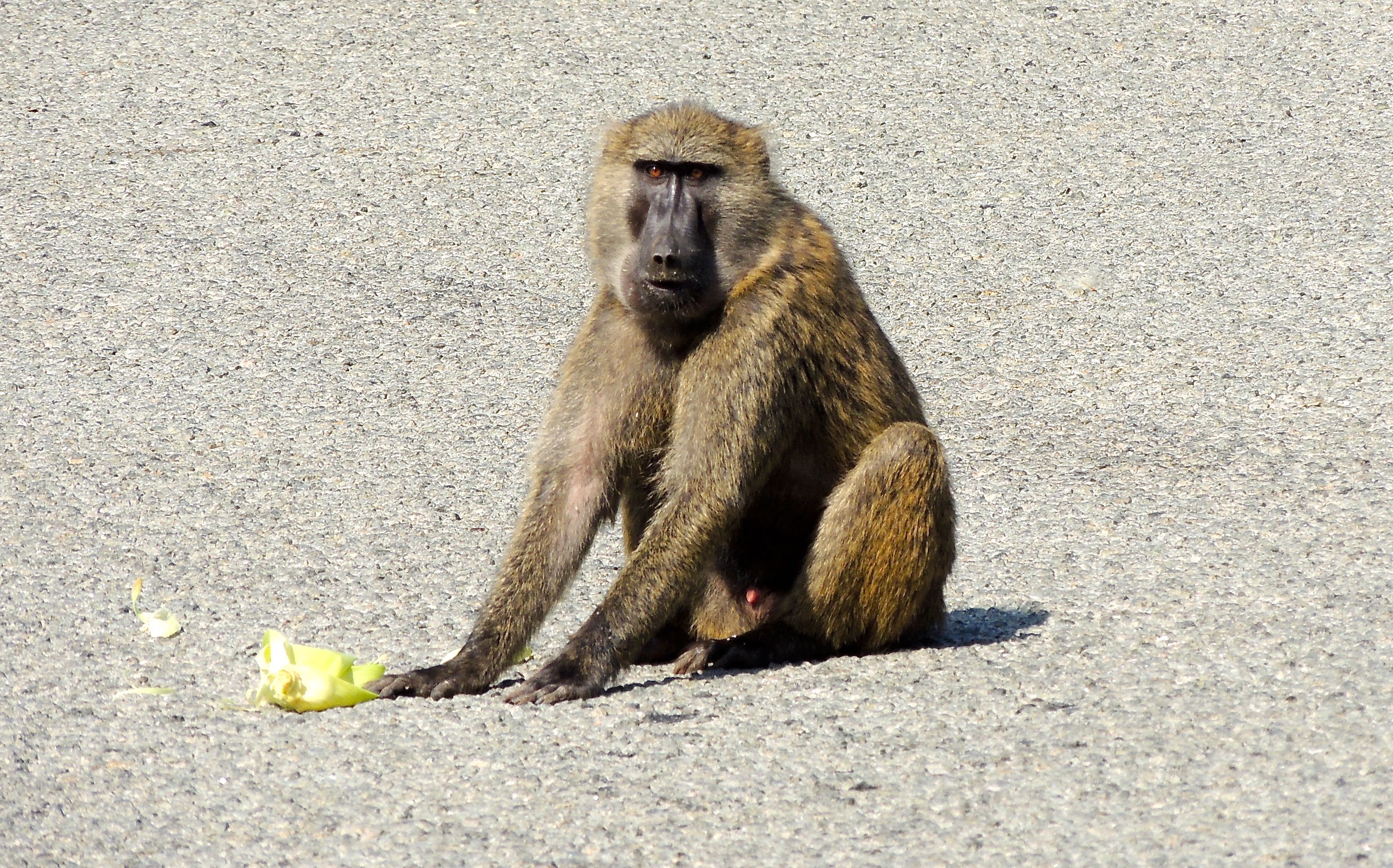 Olive Baboon - Photo by William Young
Olive Baboon - Photo by William Young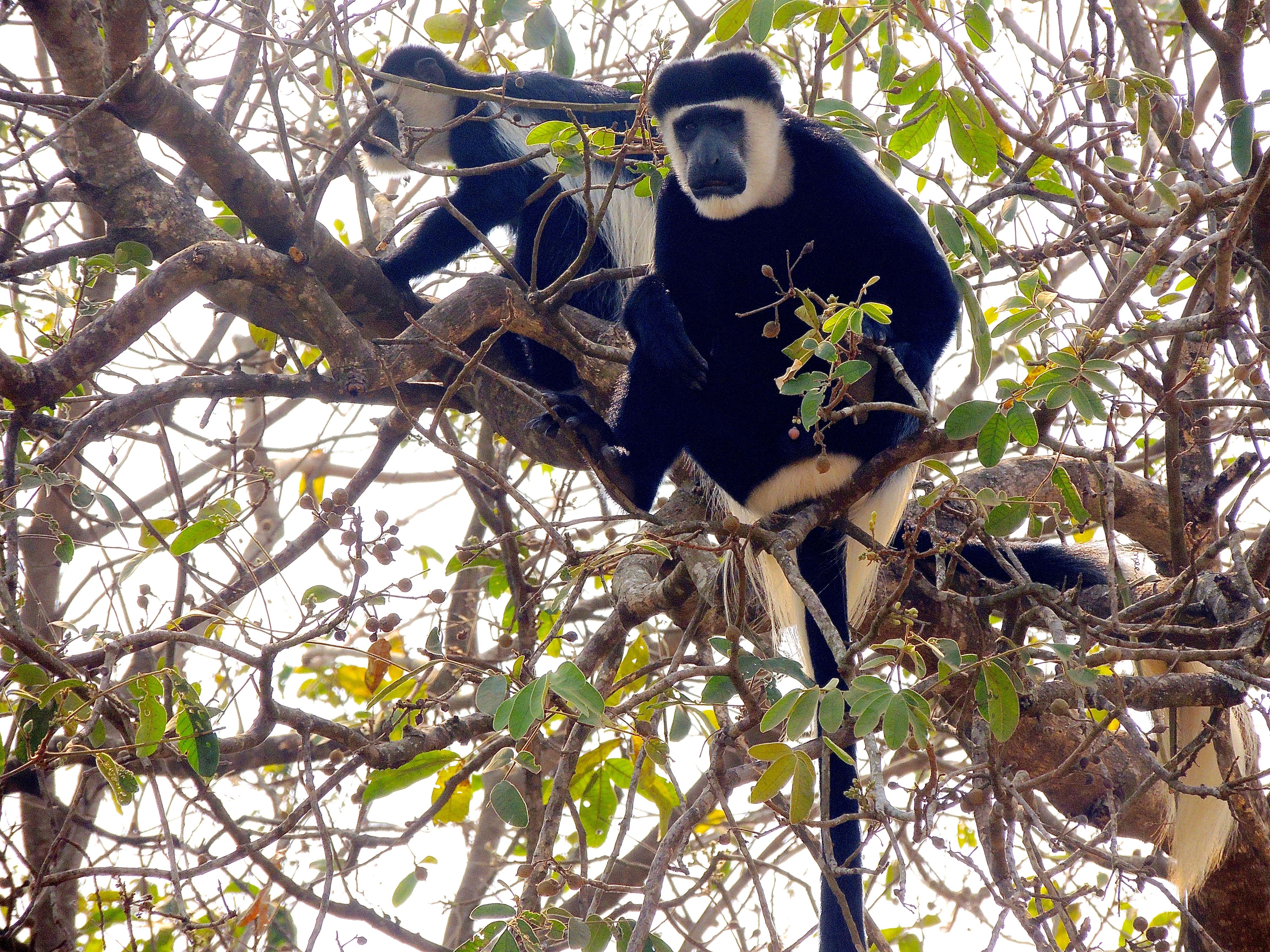 Guereza Black-and-white Colobuses - Photo by William Young
Guereza Black-and-white Colobuses - Photo by William Young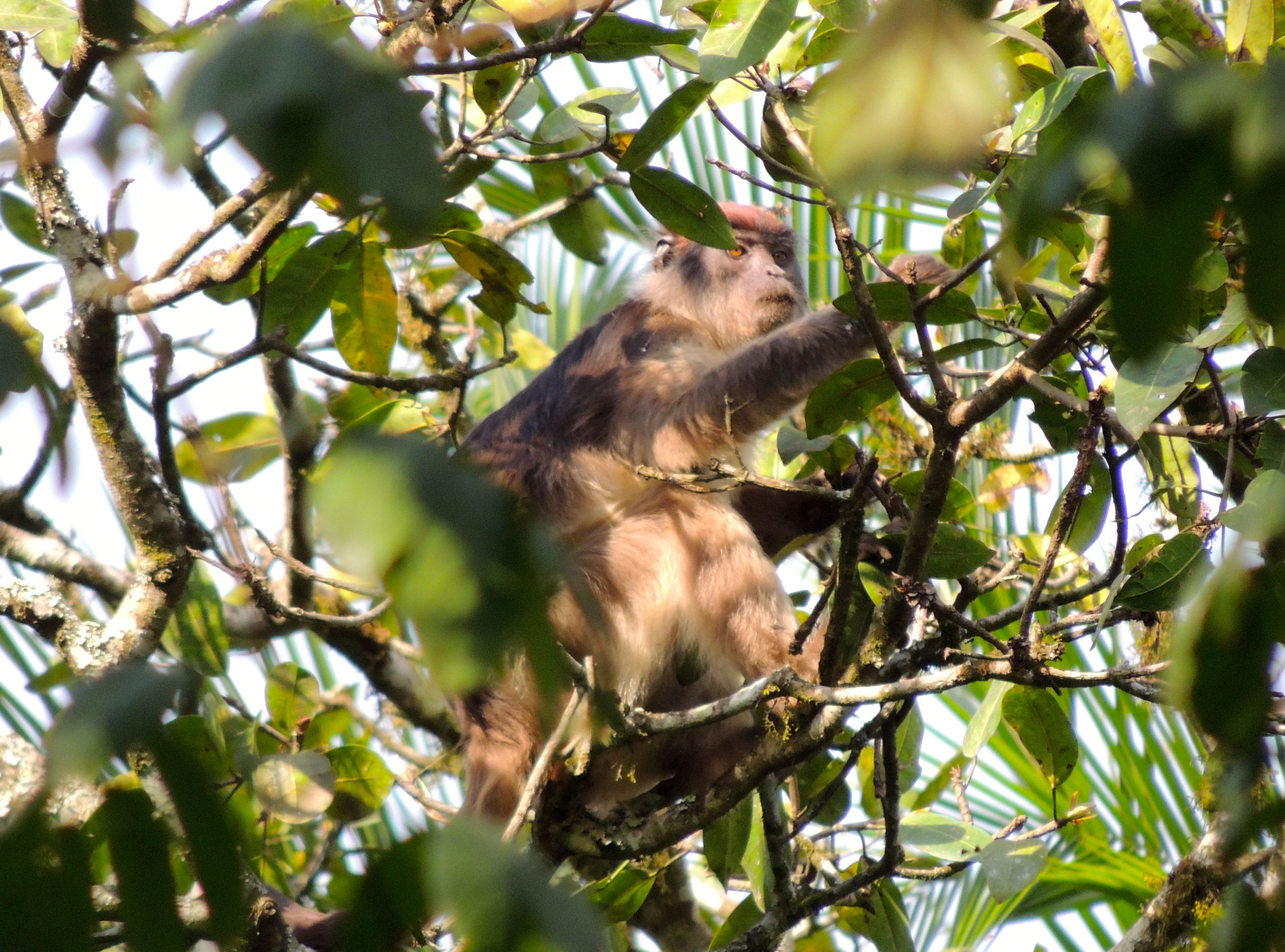 Central African Red Colobus - Photo by William Young
Central African Red Colobus - Photo by William Young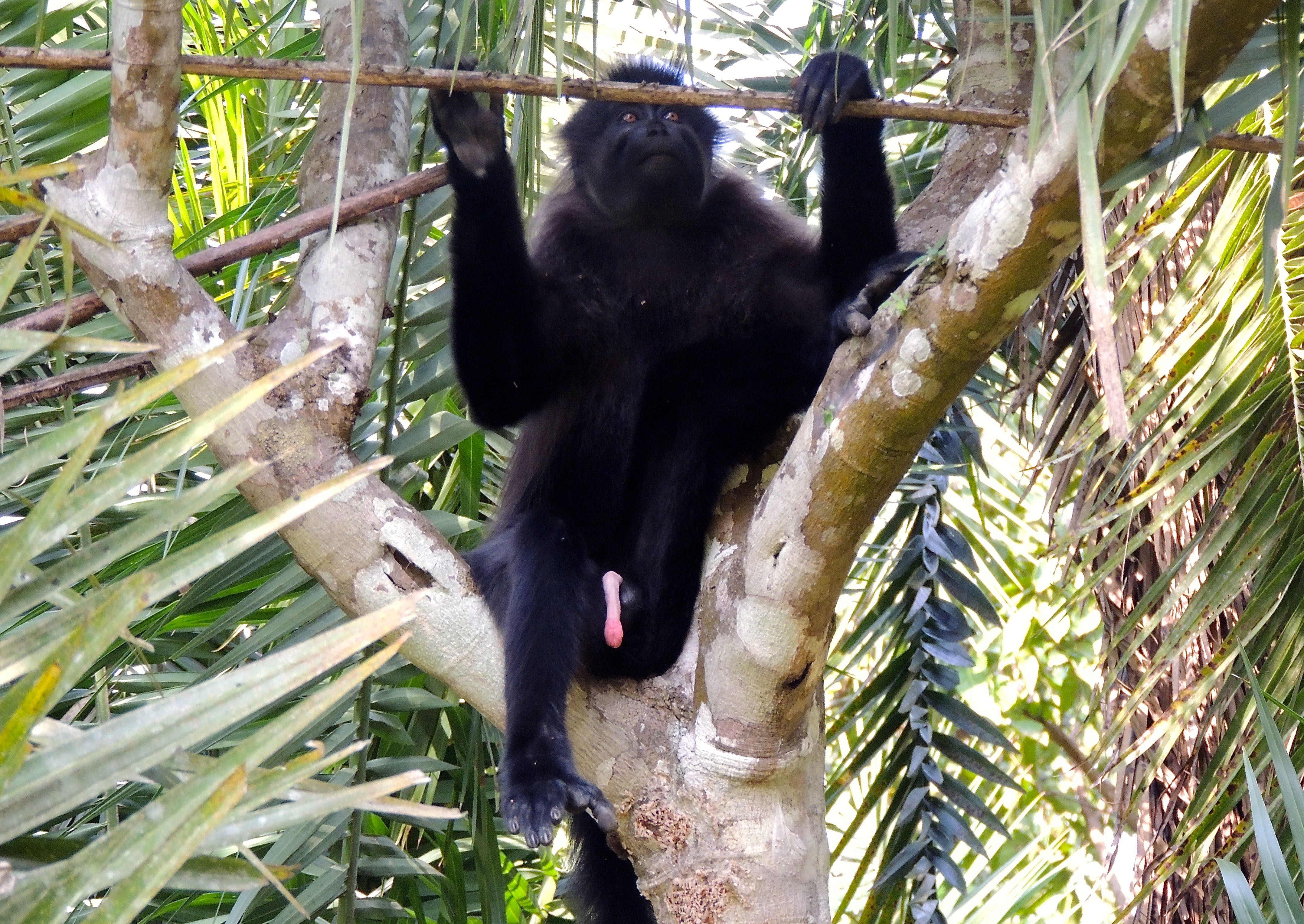 Grey-cheeked Mangabey - Photo by William Young
Grey-cheeked Mangabey - Photo by William Young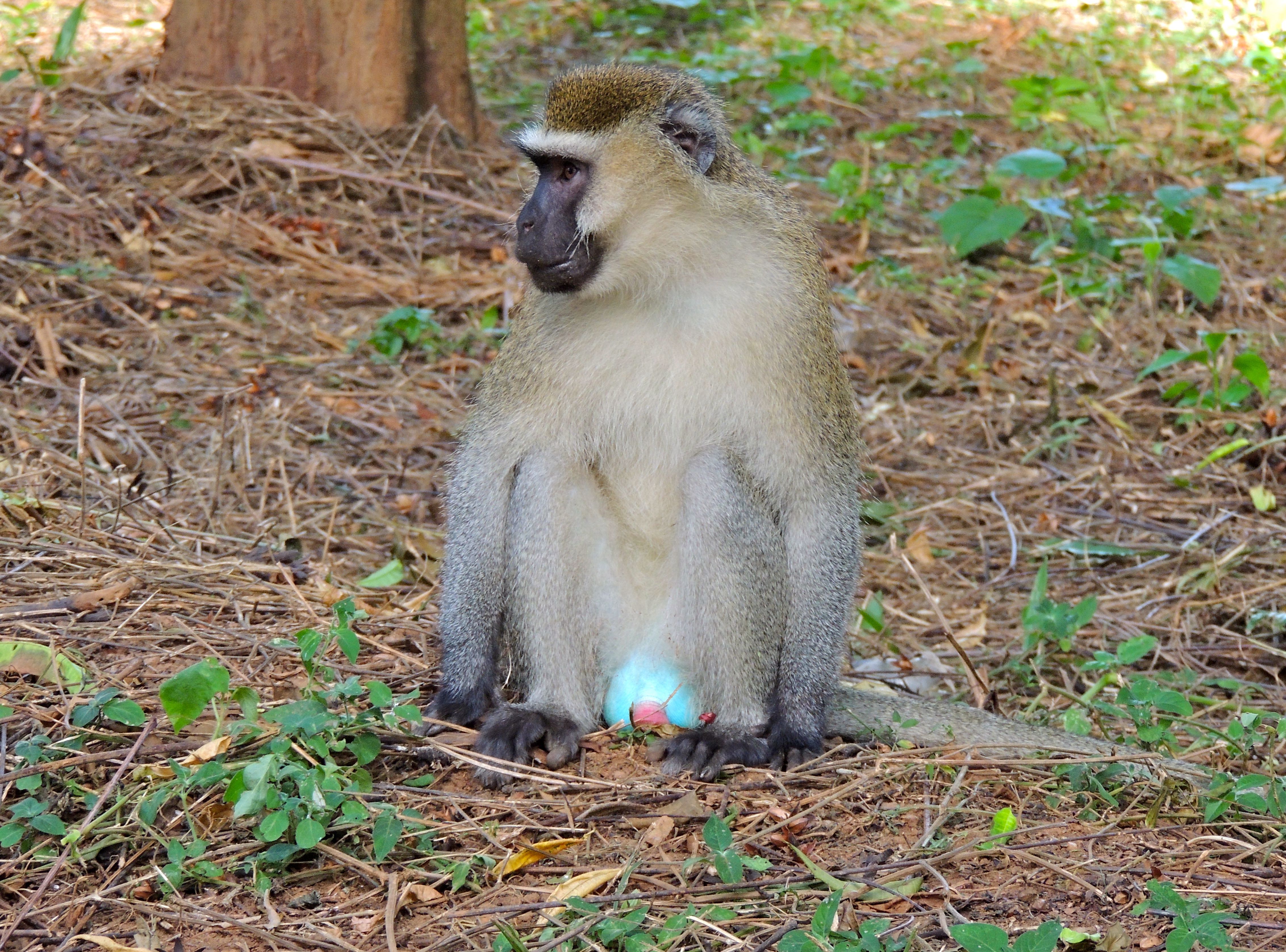 Vervet Monkey - Photo by William Young
Vervet Monkey - Photo by William Young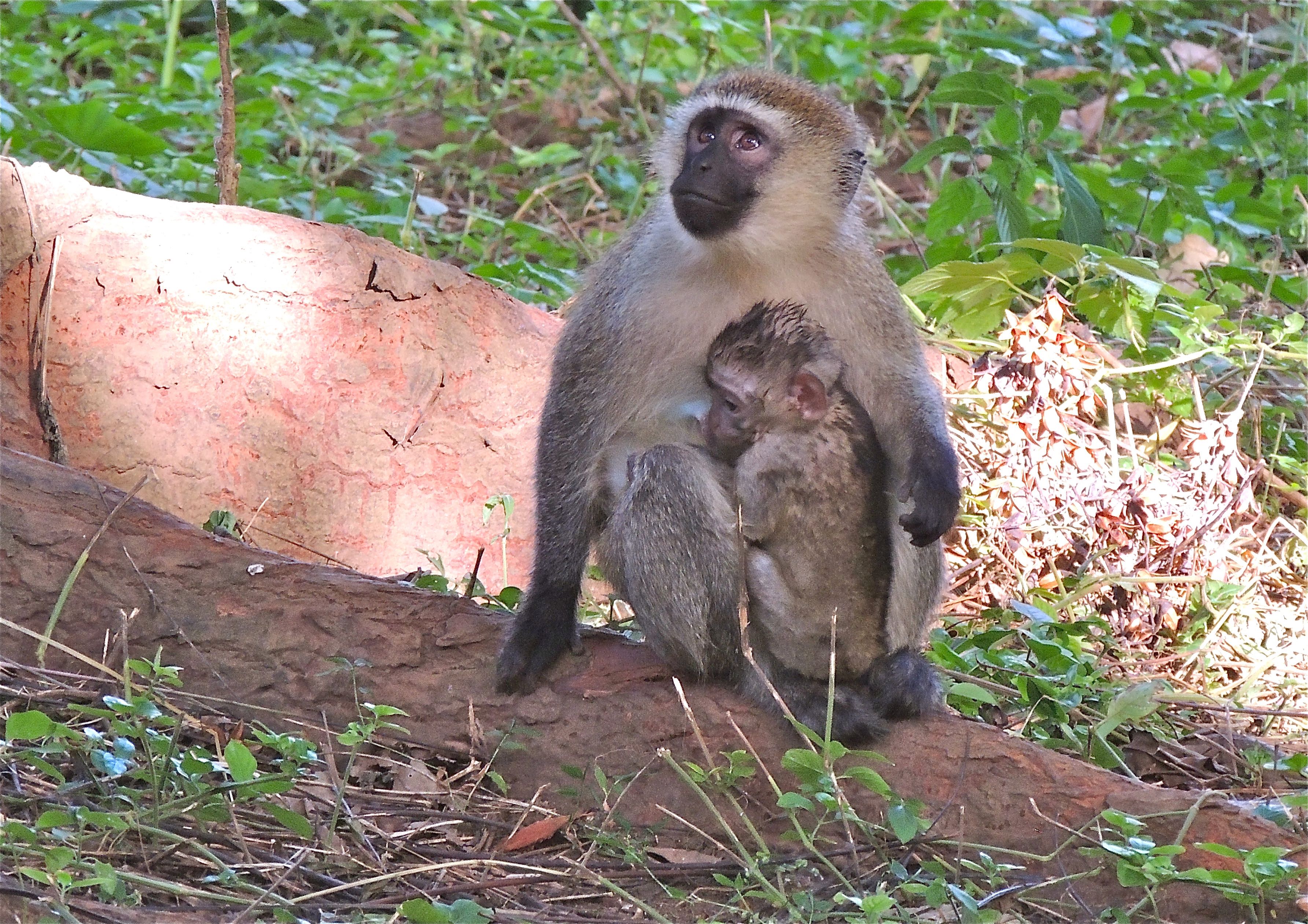 Vervet Monkeys - Photo by William Young
Vervet Monkeys - Photo by William Young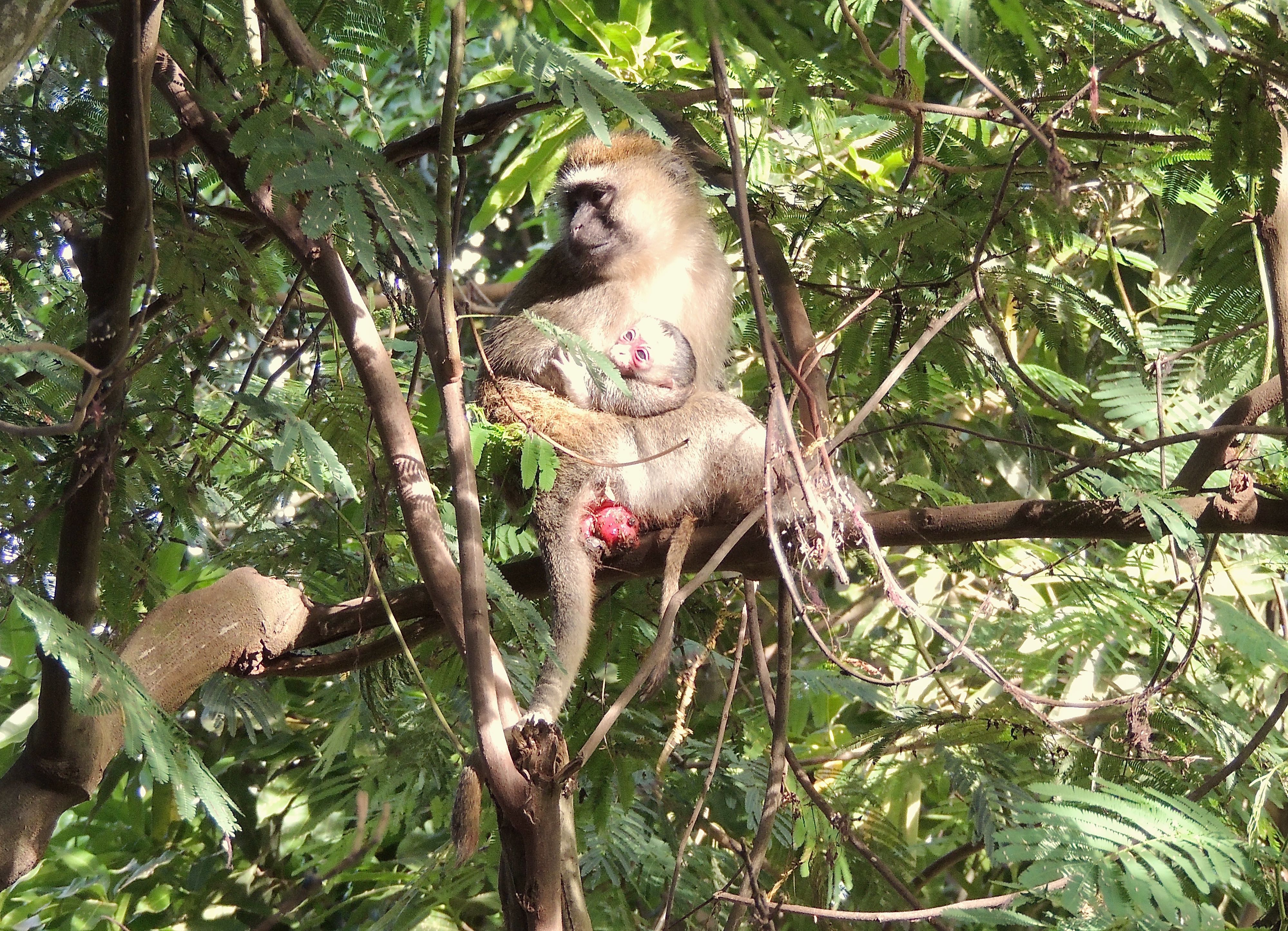 Vervet Monkeys - Photo by William Young
Vervet Monkeys - Photo by William Young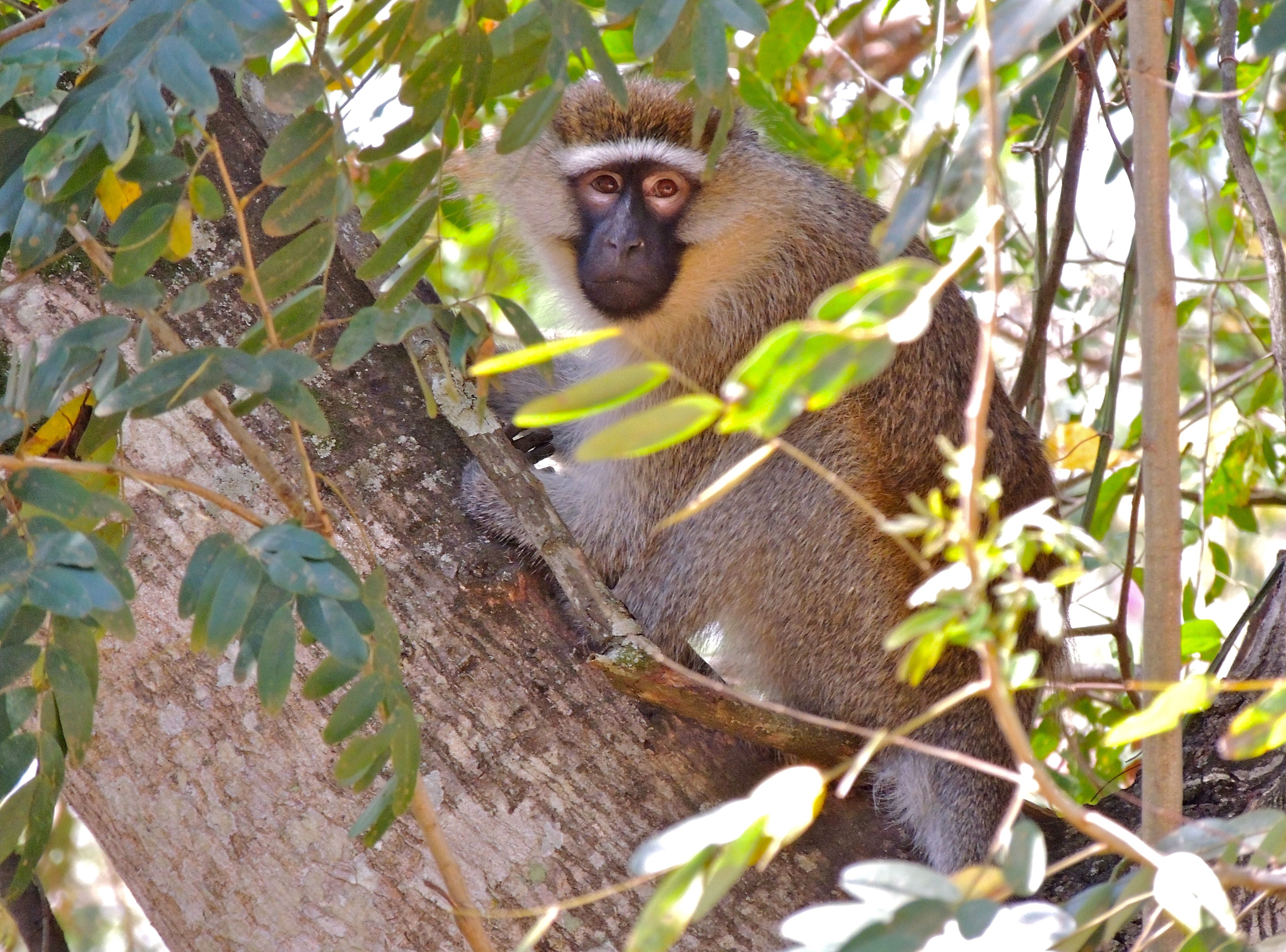 Tantalus Monkey - Photo by William Young
Tantalus Monkey - Photo by William Young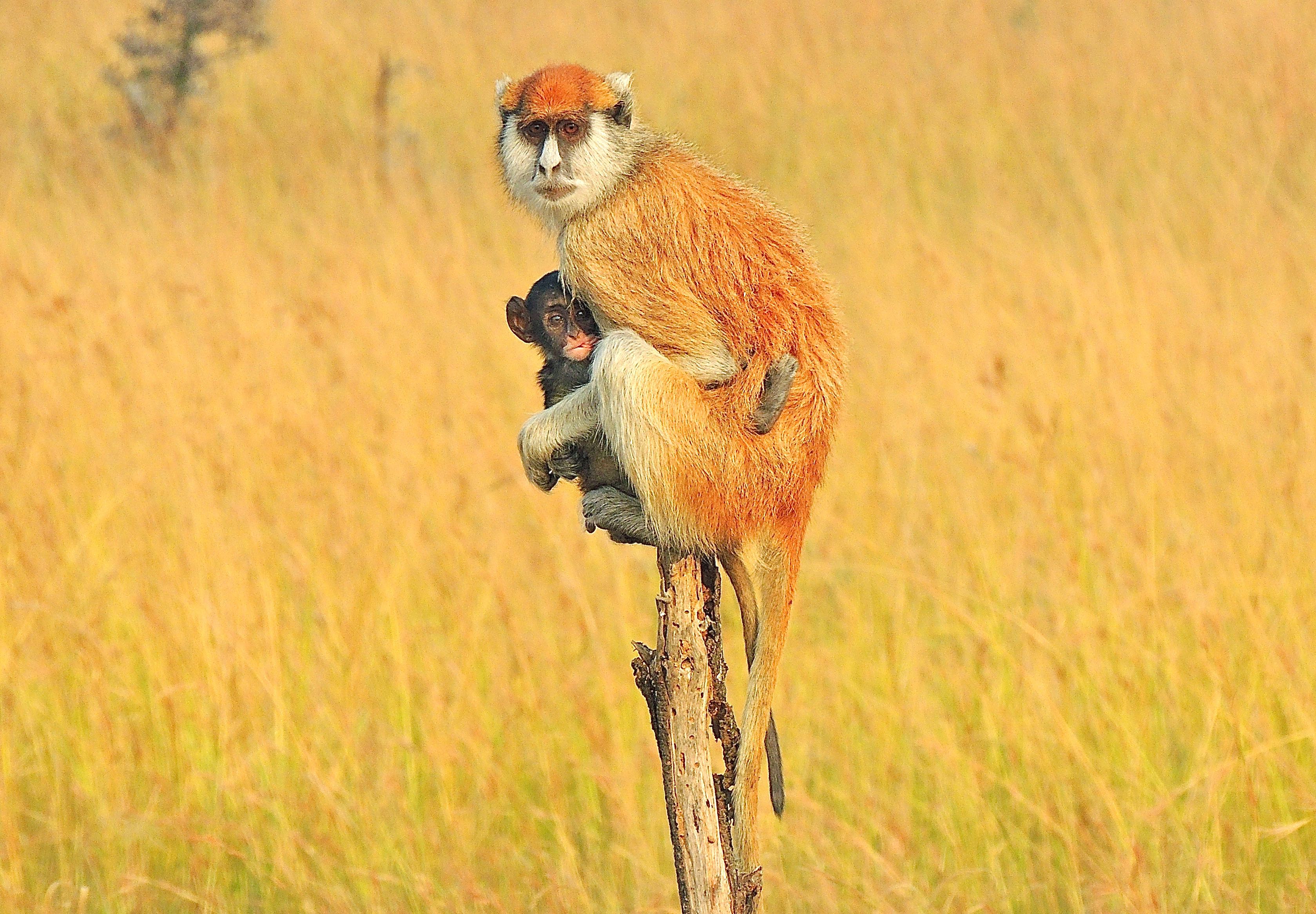 Patas Monkeys - Photo by William Young
Patas Monkeys - Photo by William Young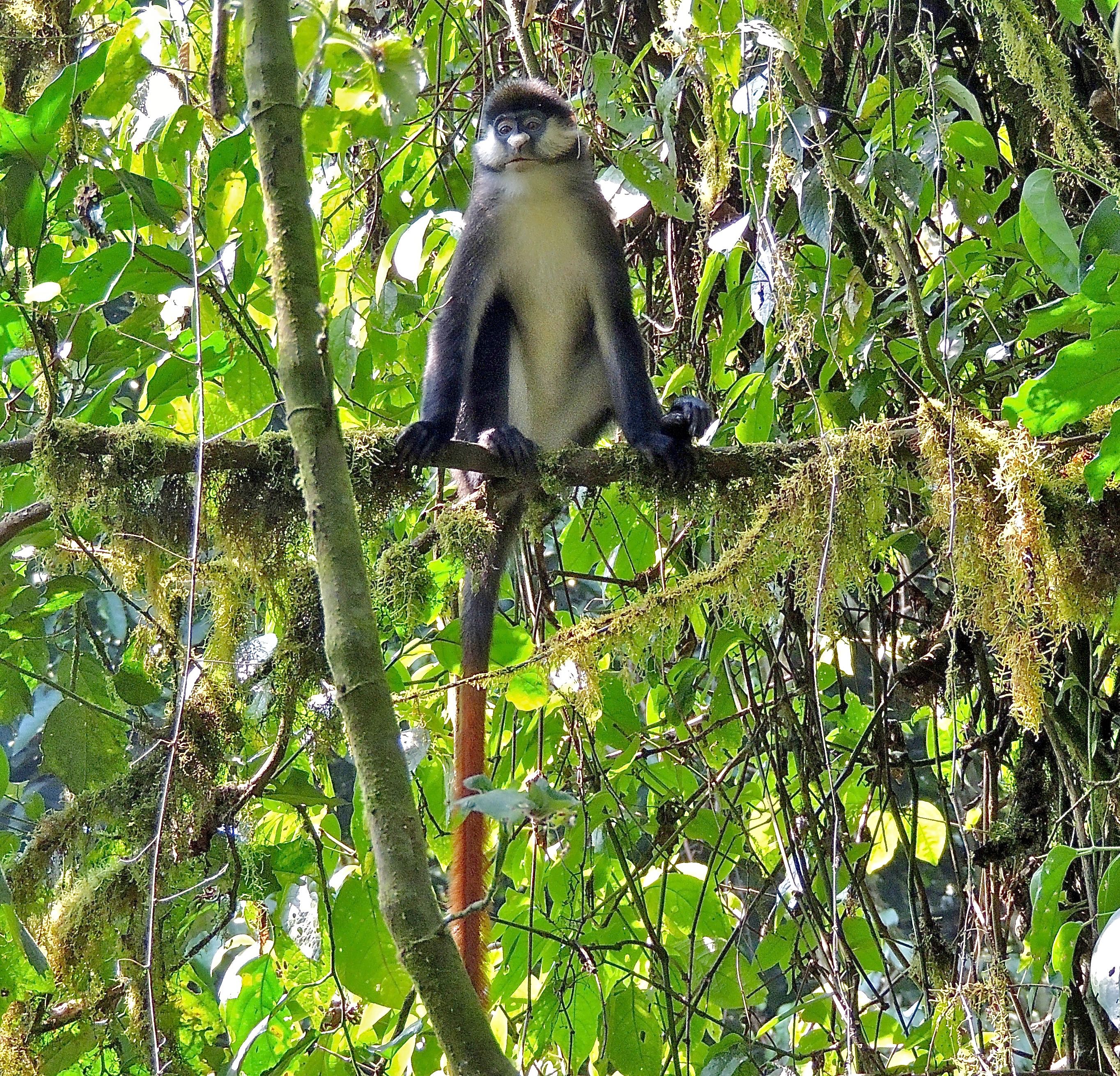 Red-tailed Monkey - Photo by William Young
Red-tailed Monkey - Photo by William YoungBats
On the day we went to the Ziwa Rhino Sanctuary, we saw a flock of about 60 Angola (Straw-colored) Fruit Bats. They are large and look like birds when they fly. While going through Bulisa, we stopped and saw a couple Yellow-winged Bats. When you see a bird land on a branch, it usually is above the branch and alights on the top of it. These bats flew into a bush and grabbed the bottom of the branch. House Bats were at the Mweya Safari Lodge. If you went outside before sunrise, a great many swirled in the lights outside the cabins. I also saw them on the walls in the outdoor walkways at the Paraa Lodge. When we were leaving Queen Elizabeth NP, we stopped at a ranger station, and on one of the walls were Mauritian Tomb Bats. They perch under the eaves, and when someone approaches, they do not fly away, but rather scuttle along the wall like crabs.
 Mauritian Tomb Bat - Photo by William Young
Mauritian Tomb Bat - Photo by William YoungRodents and Hares
We saw a Western (Striped) Ground Squirrel at the Entebbe Botanical Gardens and at the Masindi Hotel. It looks like a Gray Squirrel with a black-and-white horizontal stripe on the side. In Murchison Falls NP and Semliki, we saw Alexander's Dwarf Squirrels, who look like chipmunks. Their tail looks like a little bottle brush. We saw a Carruther's Mountain Squirrel and a few Rwenzori Sun Squirrels on the Ruhija Community Trail. We saw a Boehm's Squirrel in Semliki who was making strange ratting noises. It is smaller than a Gray Squirrel but a bit larger than a chipmunk. Red-legged Sun Squirrels were in numerous places, including the Royal Mile, Semliki, and Bwindi. When spotlighting at Murchison Falls NP, we saw a pair of Cape Hares. We saw a Scrub Hare at Queen Elizabeth NP. Also at Queen Elizabeth, we saw an Unstriped Grass Rat.
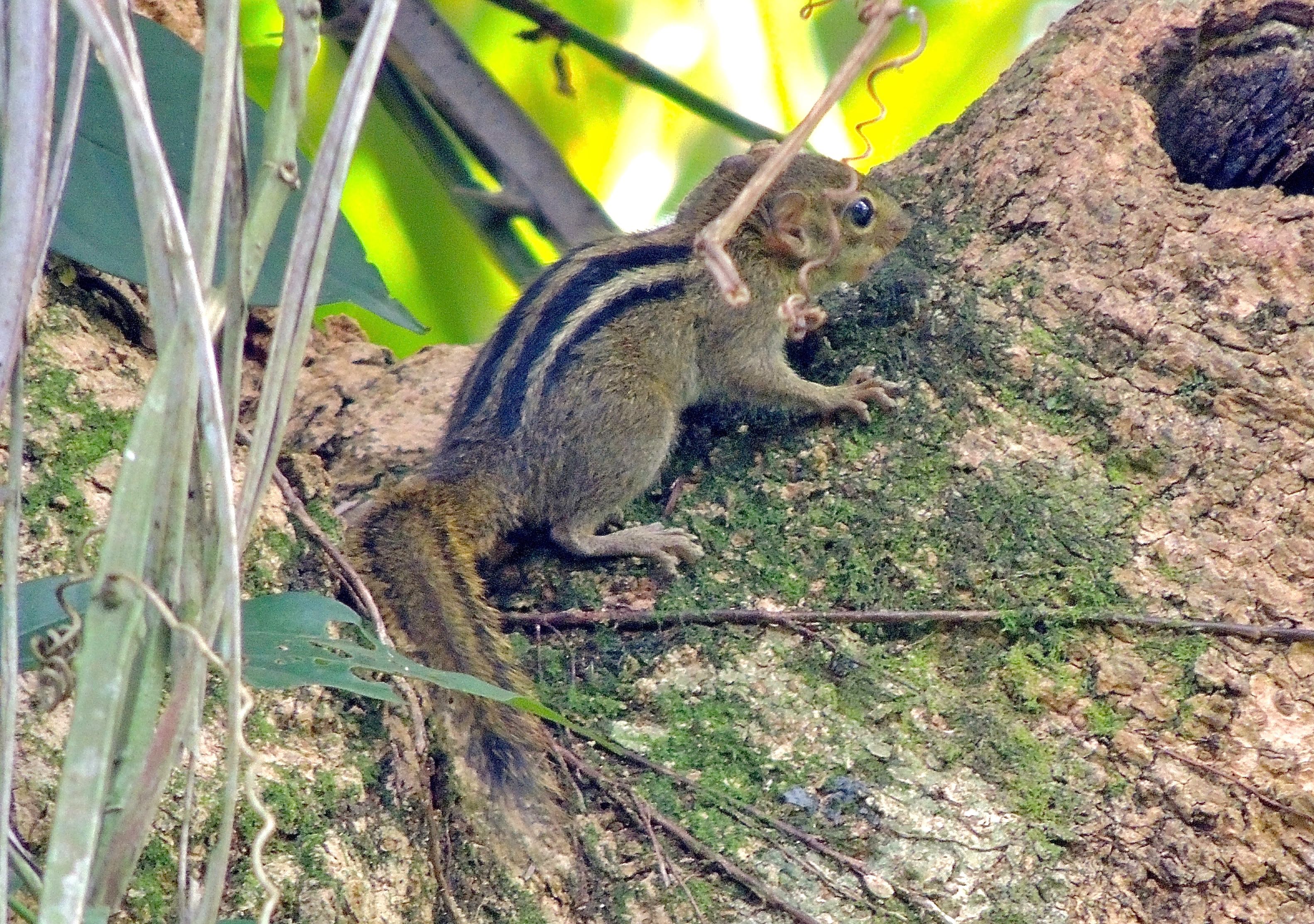 Boehm's Squirrel - Photo by William Young
Boehm's Squirrel - Photo by William YoungJackals and Hyenas
We did not have much luck with jackals and hyenas. We saw one Side-striped Jackal at Murchison Falls NP. It looked healthy but it seemed smaller than the jackals I remembered from Tanzania. Jackals are related to wolves. Also at Murchison Falls NP, we saw one Spotted Hyena the night we went spotlighting.
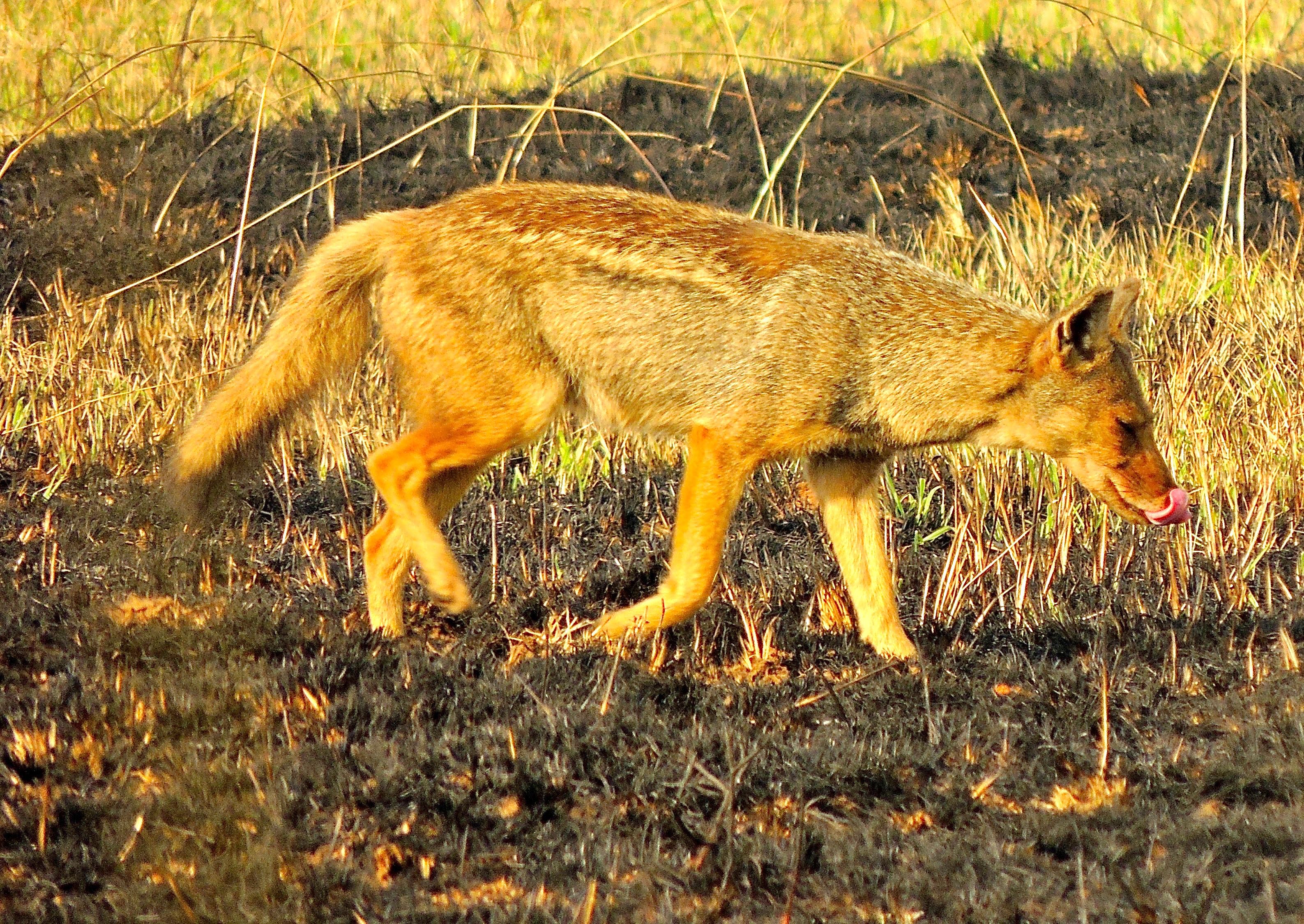 Side-striped Jackal - Photo by William Young
Side-striped Jackal - Photo by William YoungHyraxes
We could hear Tree Hyraxes calling in the forest near the Budongo Eco Lodge, and we saw a couple along the Royal Mile.
Elephants
We saw about 250 elephants on the trip. The day we took the first boat ride on the Nile, a group of young males came to the edge of the river near where our boat was. We watched them for twenty minutes as they drank. They let us approach to a relatively close distance. Elephants need to live in an area near water. The next day when we went in the opposite direction on the Nile, we saw more elephants, including a young male who was trumpeting and chasing a group of surprised Defassa Waterbucks who were peacefully grazing on the shore. Most of the time when animals of different species grazed together, they did so peacefully. We could see elephants in the Kazinga Channel from the veranda at the Mweya Lodge, and I got much closer looks at them when we took the boat ride in the channel. One appeared to be about two weeks old, and it was trying to stay near its mother among the forest of elephant legs. Two of the male elephants went tusk-to-tusk in a dominance contest. At the beginning of our first game drive at Queen Elizabeth NP, two very large bull elephants appeared in the dim light. Throughout the day, we saw many dozens of elephants of all ages. The day we left the park, we were close to a group of elephants who were dust bathing. Lori went running one afternoon from the Paraa Lodge down to the Nile and almost ran into a large bull elephant. She is experienced with being around elephants and did not panic.
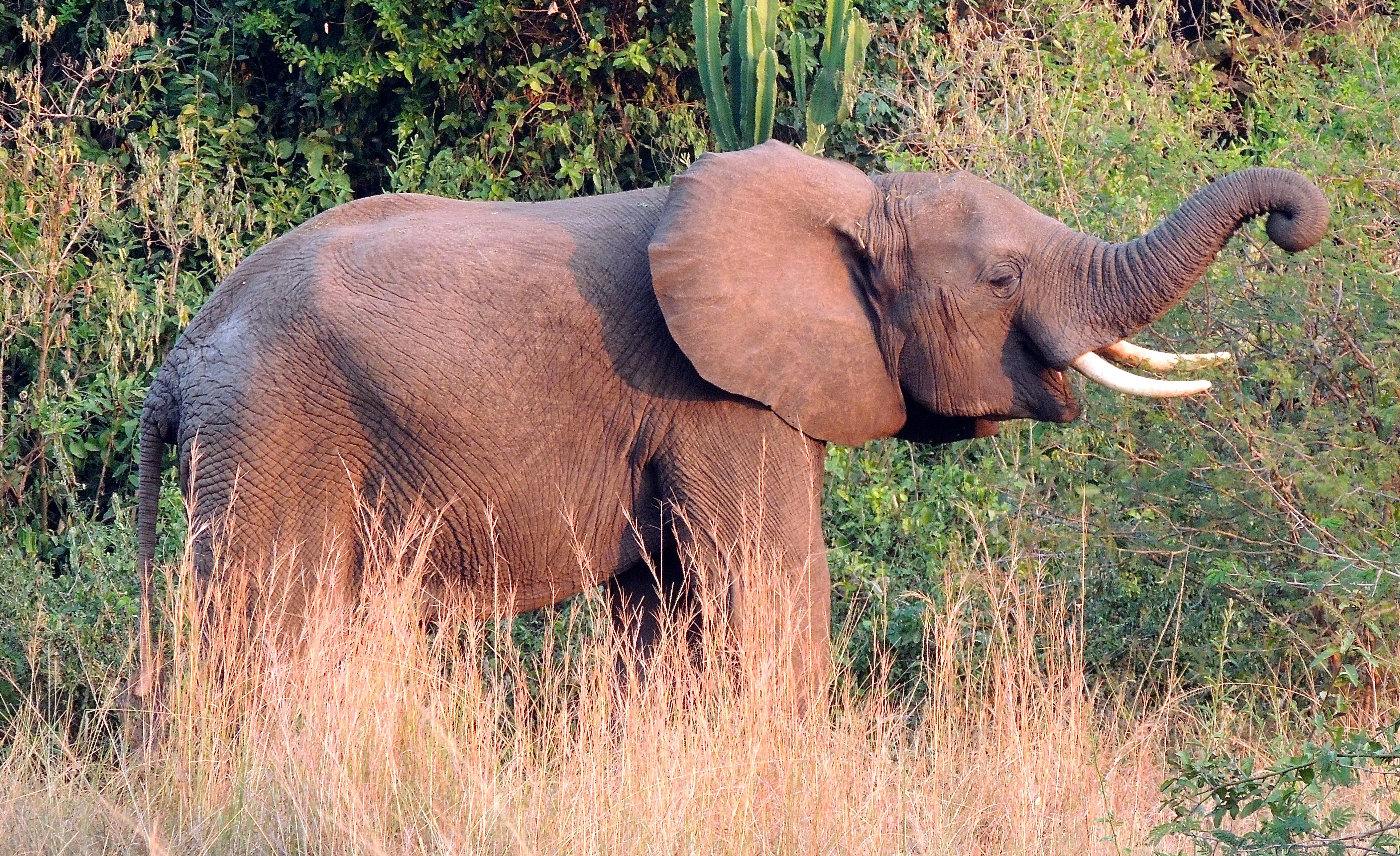 African Elephant - Photo by William Young
African Elephant - Photo by William Young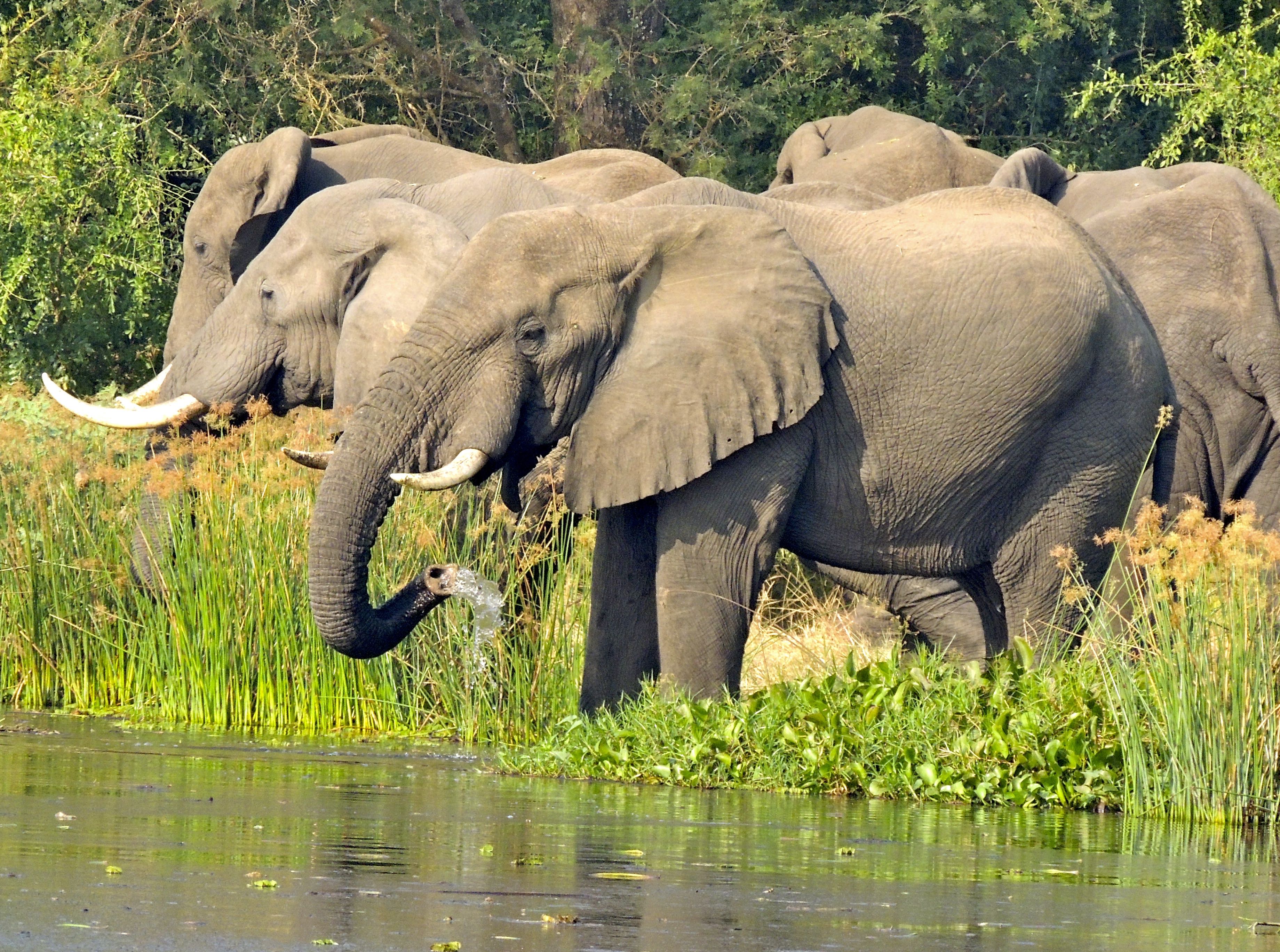 African Elephant - Photo by William Young
African Elephant - Photo by William Young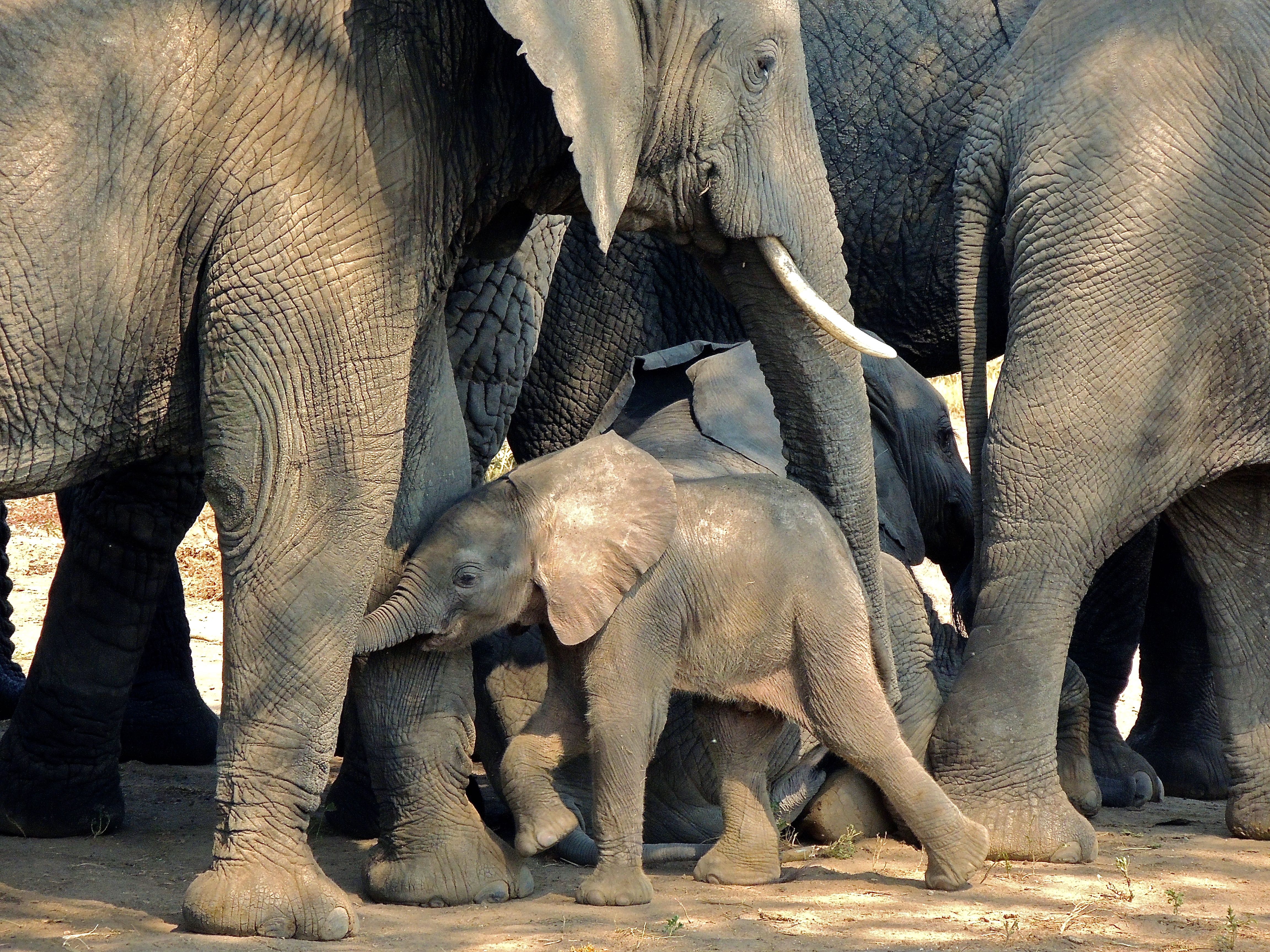 African Elephants - Photo by William Young
African Elephants - Photo by William Young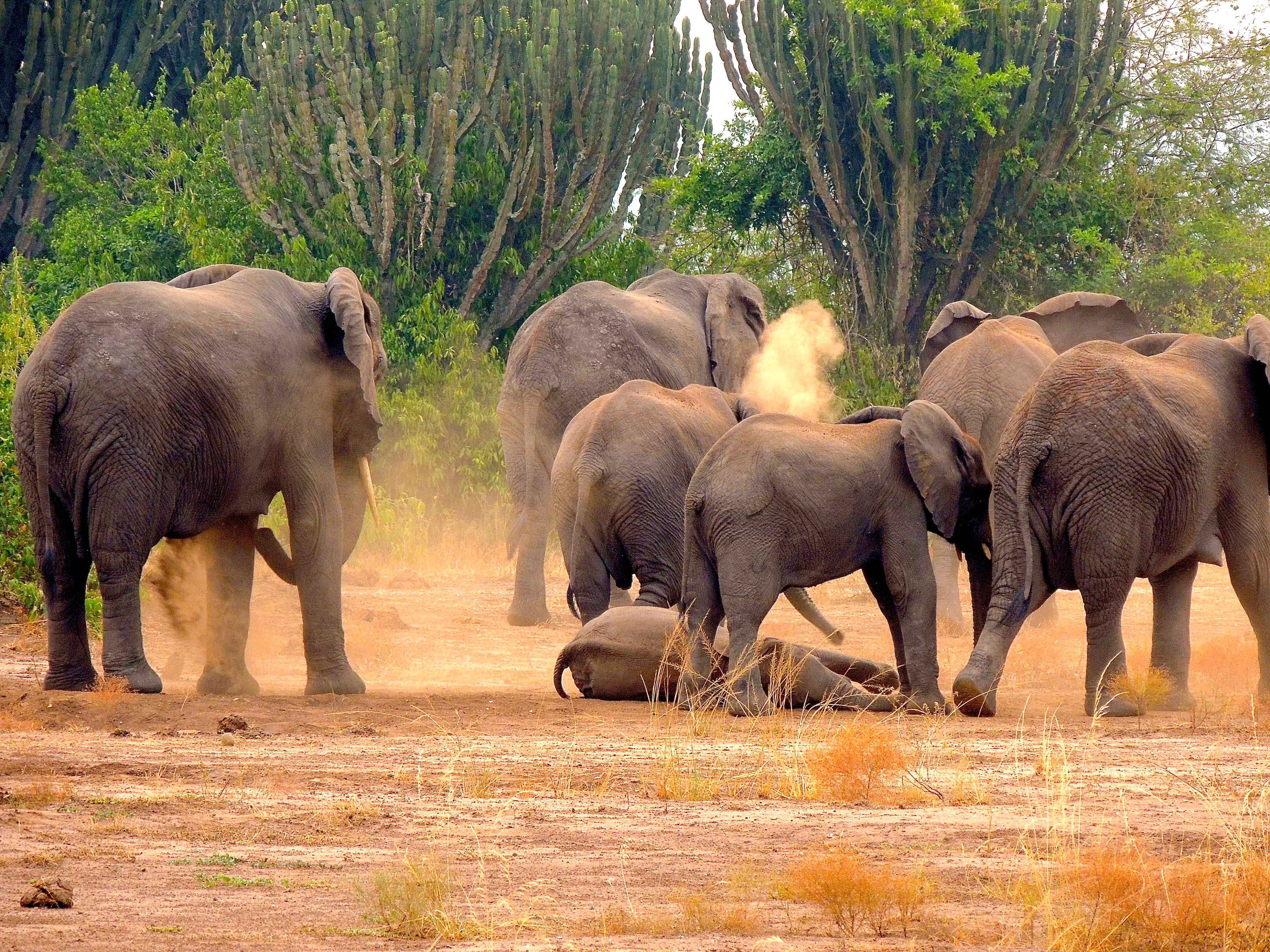 African Elephants - Photo by William Young
African Elephants - Photo by William YoungZebras
We did not see any zebras until near the end of the trip when we arrived at the park at Lake Mburo. There were quite a few, and some were interspersed among the Ankole Cattle.
Hippopotami
We saw at least a few hundred hippopotami on the trip. A lot were in the Nile, the Kazinga Channel, and Lake Mburo. At Murchison Falls NP, we saw them along most of the stretch of the Nile we visited, and many were out of the water. The water in some places is very shallow, so we could see more of their bodies than when they swim with only their nostrils and eyes out of the water. On the Kazinga Channel boat ride, we saw about 60 hippos, including two who got into a fight. One sank his teeth into the other. Hippos generally stay in groups, but if one is wounded in a fight, it usually must isolate itself. Hippos do not have sweat glands, which is why they stay in the water for most of the day. Because a wound will not heal in water, the situation becomes difficult for the wounded hippo who must stay out of the water while the wound heals but stay close enough to the water so as not to overheat. Occasionally, we would see hippos out of the water, but they stayed mostly submerged, except for their snouts and parts of their back. Birds sometimes walked along their backs.
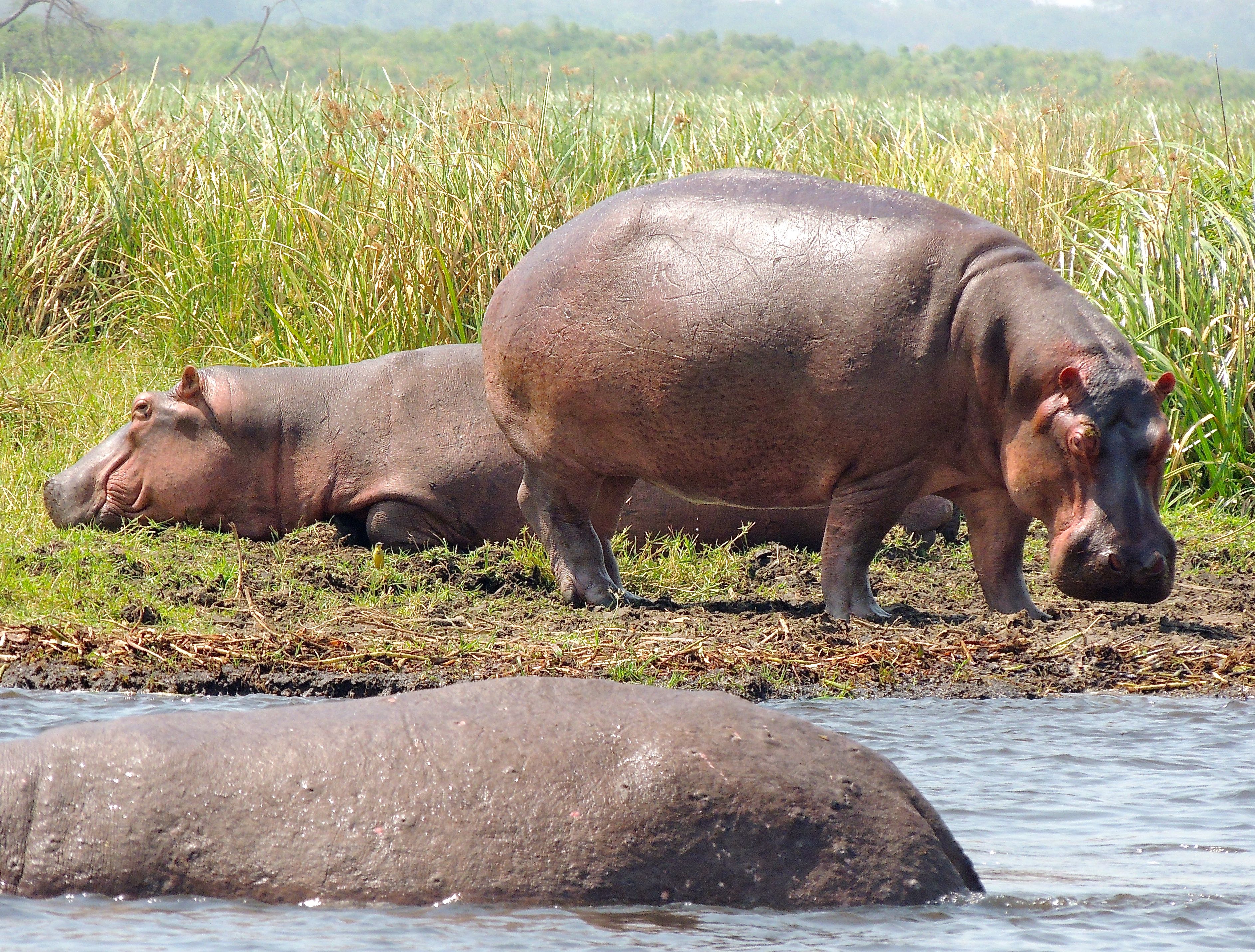 Hippopotami - Photo by William Young
Hippopotami - Photo by William Young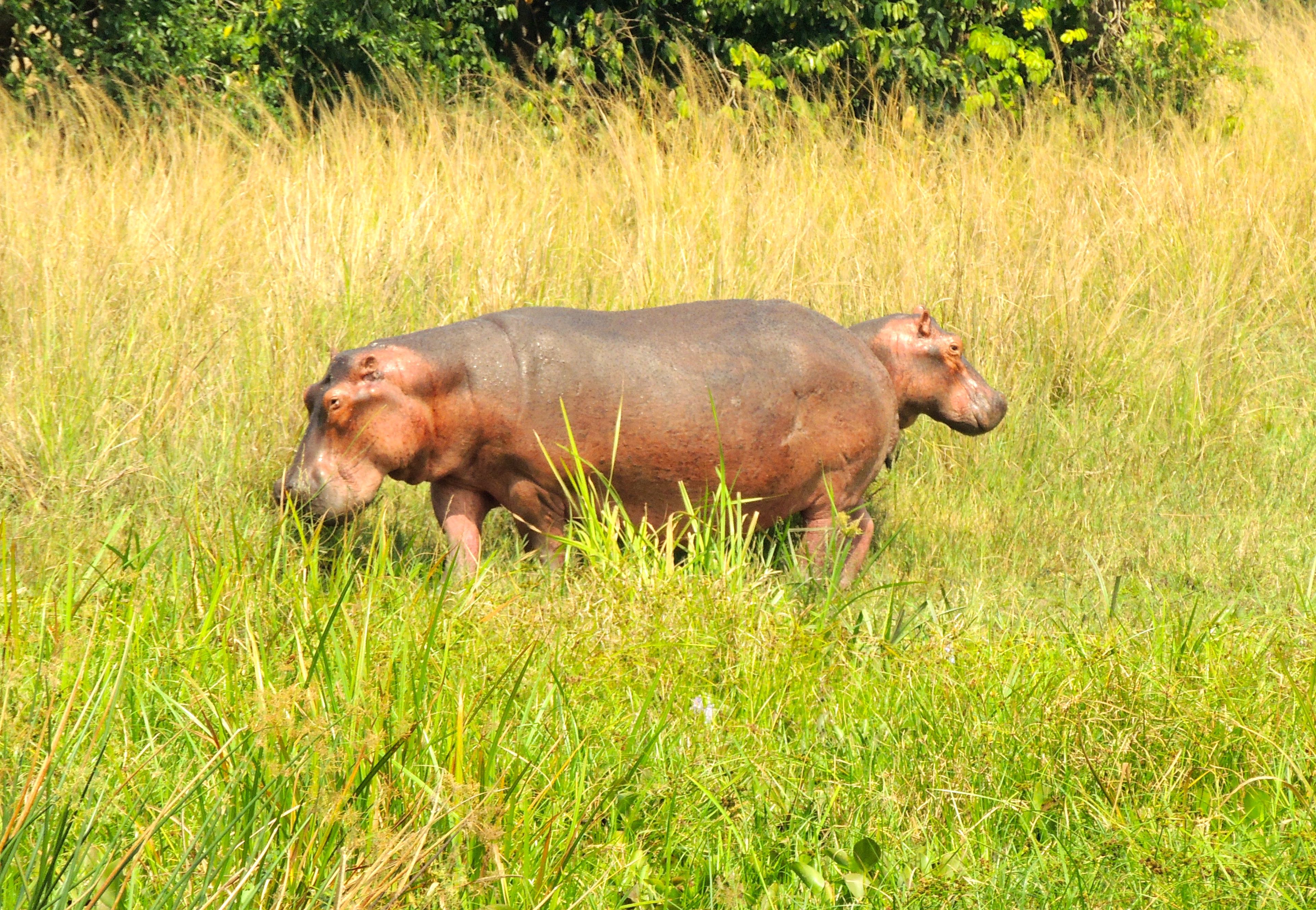 Hippopotami - Photo by William Young
Hippopotami - Photo by William Young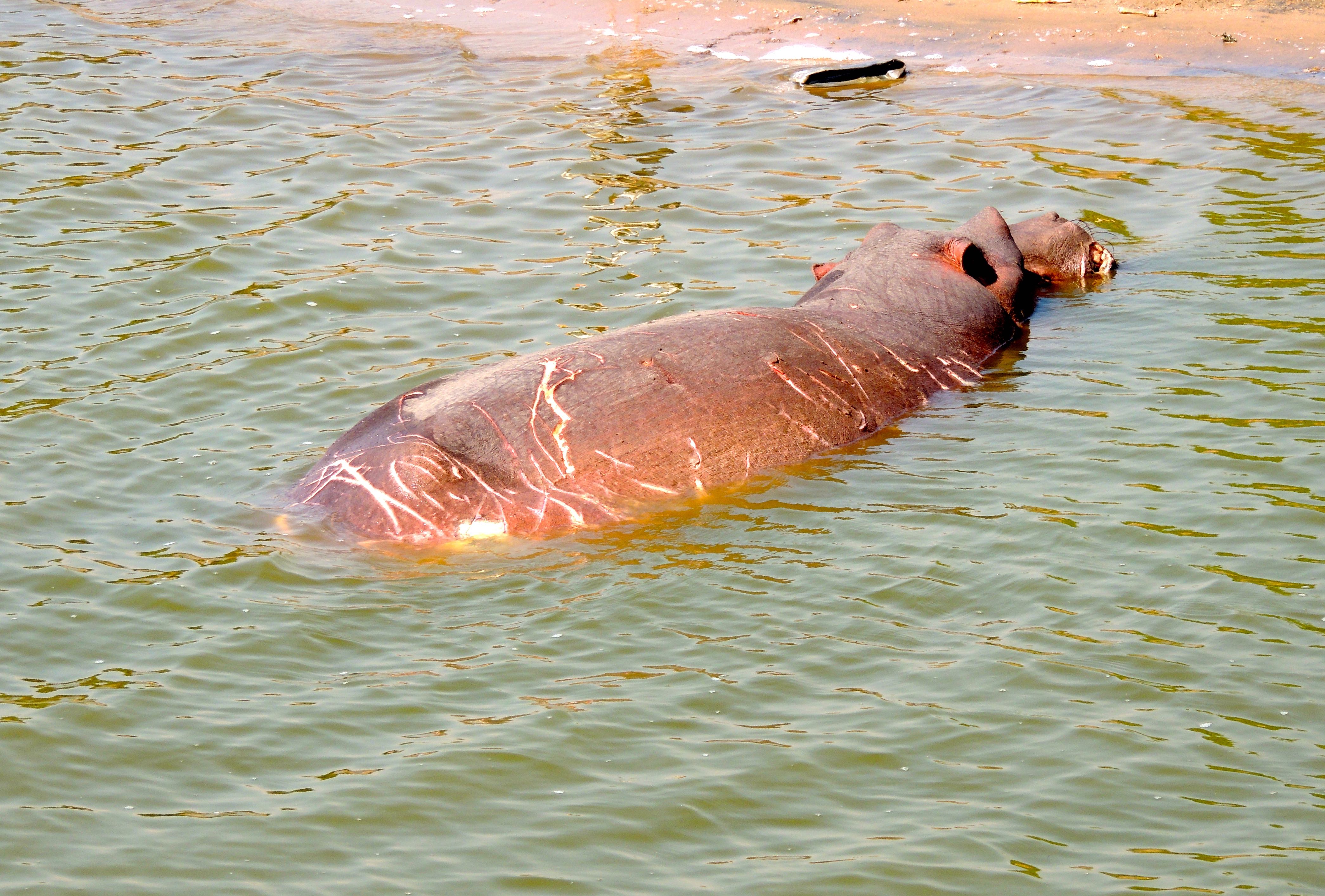 Hippopotamus - Photo by William Young
Hippopotamus - Photo by William Young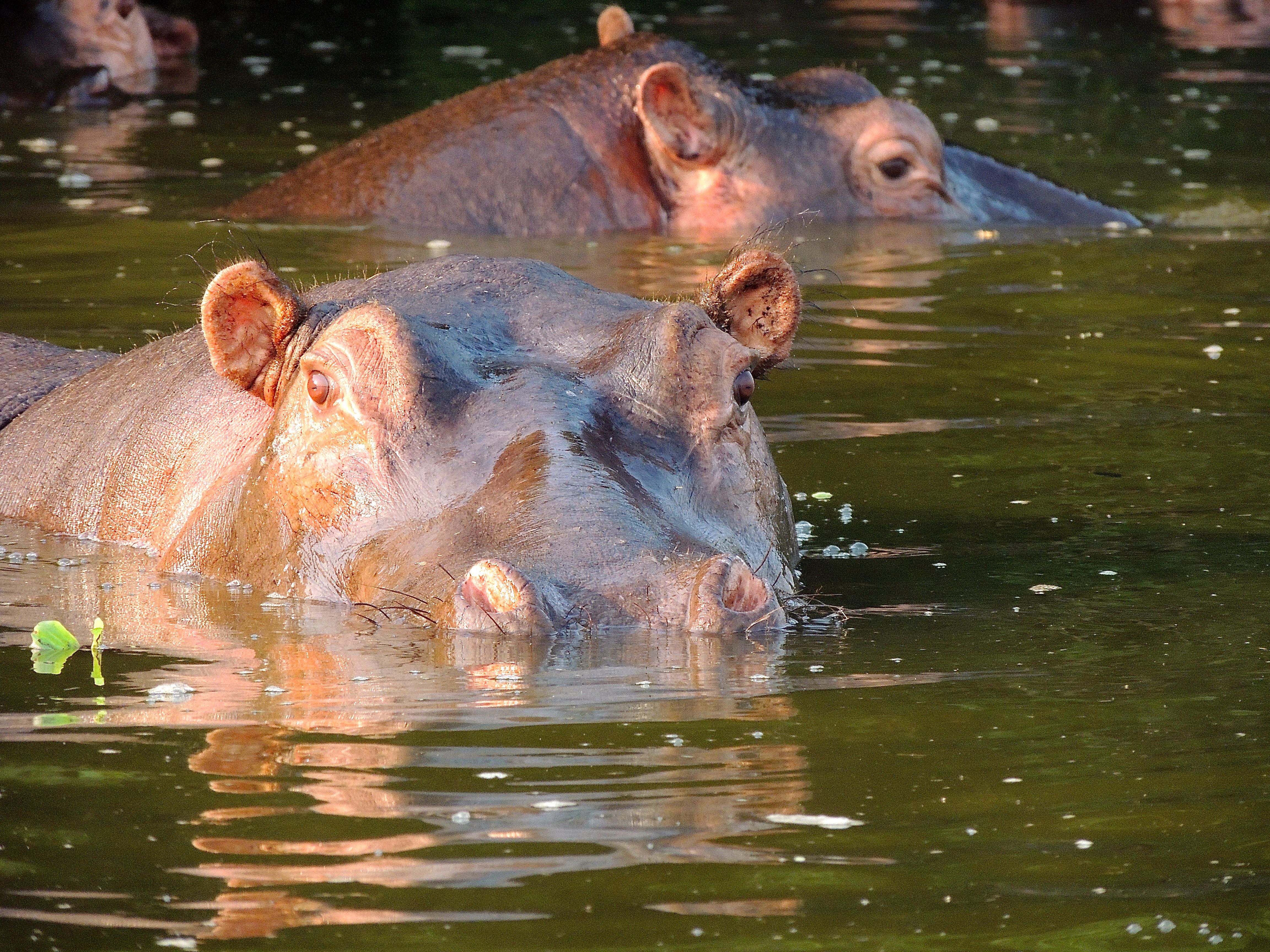 Hippopotami - Photo by William Young
Hippopotami - Photo by William YoungWarthogs
Common Warthogs were fairly common in grassland habitats and along the waterways. When we waited to take the ferry across the Nile, a lot of warthogs rummaged around near the parking lot. When they run, they hold their tail erect, and the tassel on the end looks like a little flag waving in the breeze. At the Paraa Lodge, as we drove out of the complex one day, we saw two warthogs wallowing in a mud puddle close to the road. The wallowing area appeared to be more mud than puddle, and they had covered themselves with brownish-gray ooze. I sometimes saw warthogs who were resting on their front knees as if kneeling in prayer. They adopt this posture so they can munch on low grass.
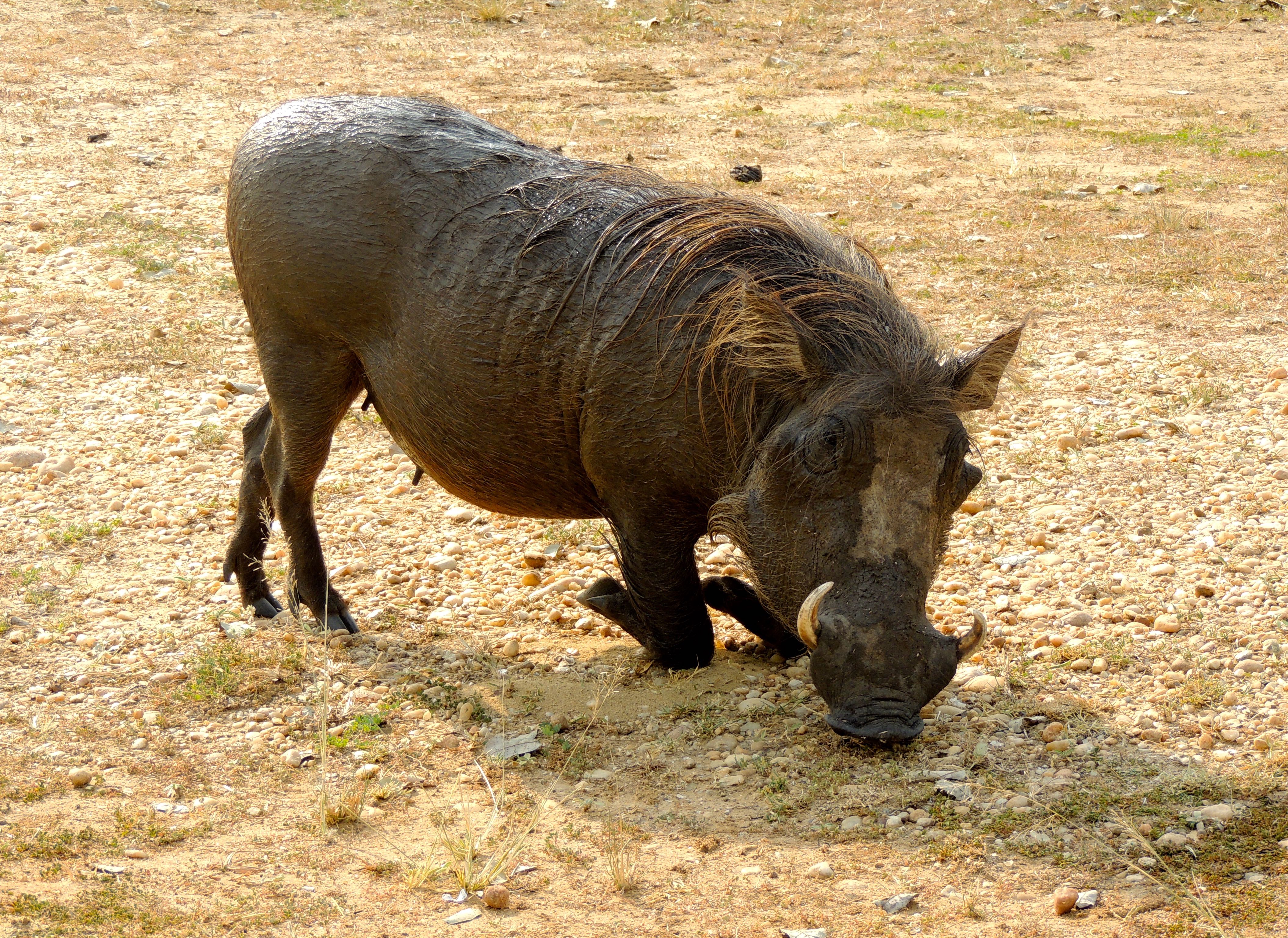 Common Warthog - Photo by William Young
Common Warthog - Photo by William Young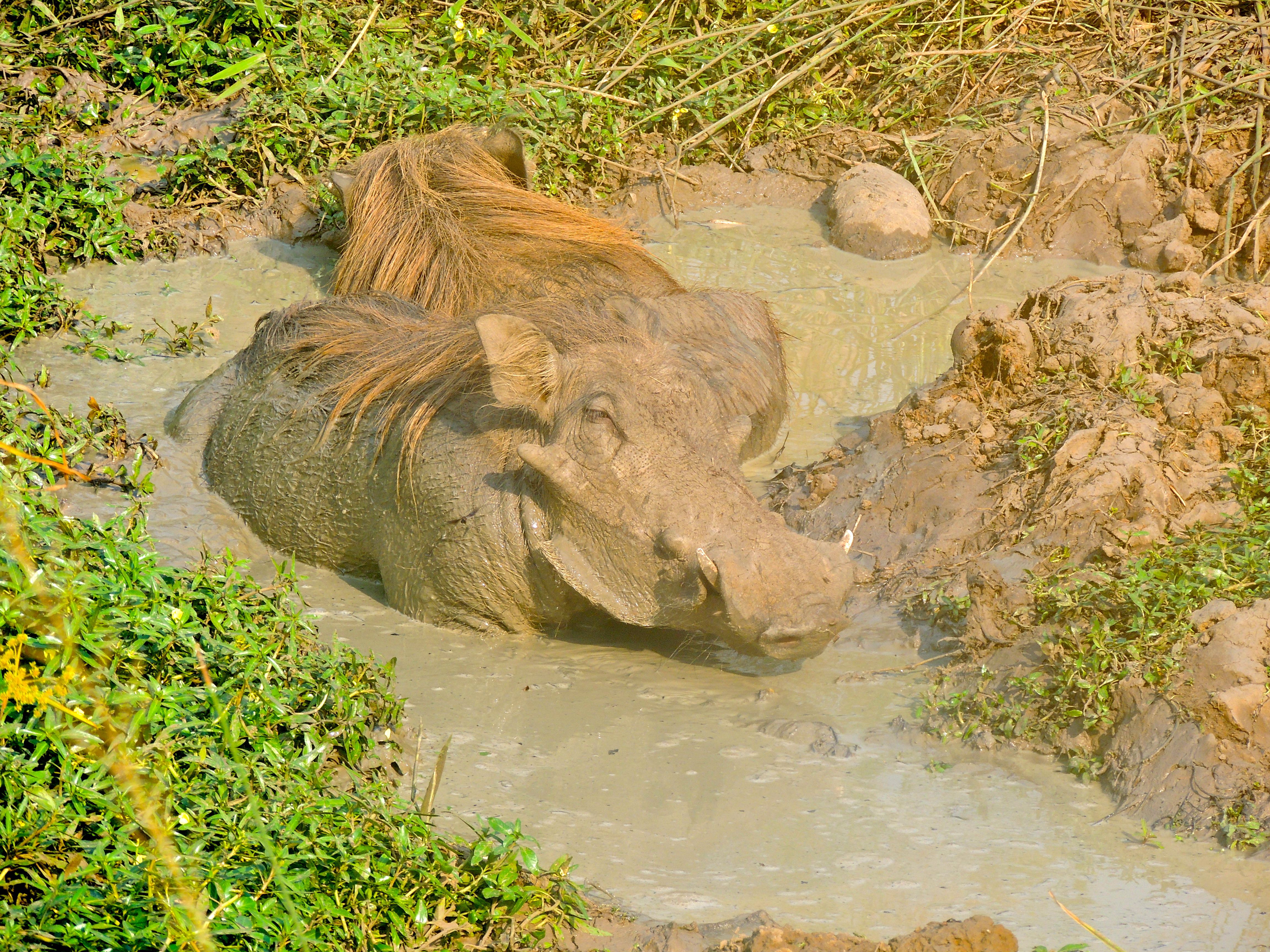 Common Warthogs - Photo by William Young
Common Warthogs - Photo by William YoungRhinoceroses
The only wild rhinoceroses in Uganda are in the Ziwa Rhino Sanctuary. The sanctuary has 18 Southern White Rhinoceroses, and one had been born as recently as the day before we visited. The animals are not white — white is a mistranslation of "wide" because they have a wide mouth for grazing. We saw 7 rhinos — a group of 2 (Nandi and Sonic), a group of 4 (Laloya, Luna, Uhuru, and Waribe) and a lone male (Moja, which means "one" in Swahili). One of the Rhinos we did not see was named Obama; he had a Kenyan father and a mother from an American zoo. Our tracking group, which also had three young women from Malmo, Sweden, got to within 30 yards of the rhinos as they lounged in the shade under some bushes to try to stay cool in the midday heat.
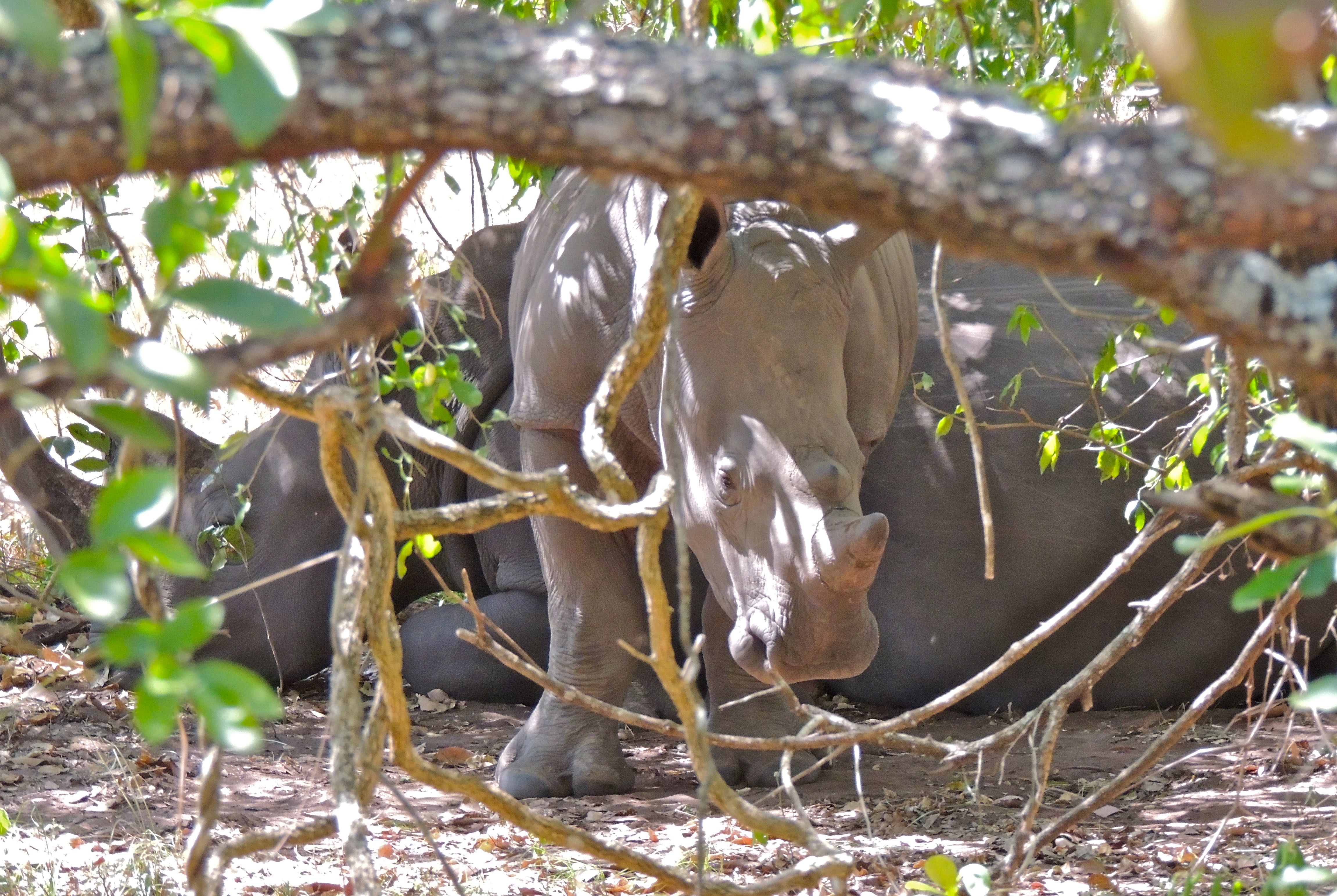 Southern White Rhinoceroses - Photo by William Young
Southern White Rhinoceroses - Photo by William Young Southern White Rhinoceroses - Photo by William Young
Southern White Rhinoceroses - Photo by William Young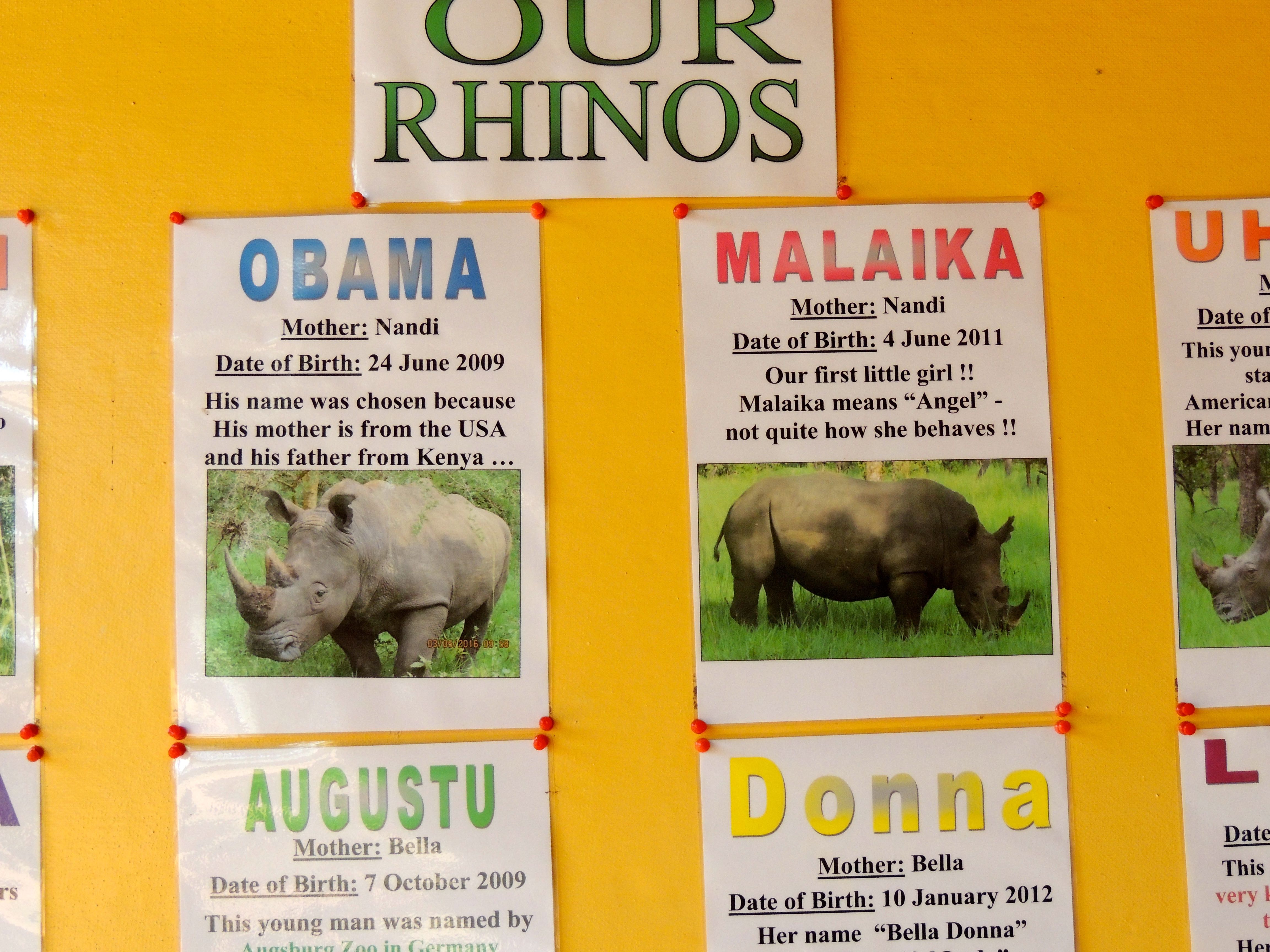 Ziwa Rhino Sanctuary - Photo by William Young
Ziwa Rhino Sanctuary - Photo by William YoungGiraffes
Uganda has Rothschild's Giraffes. We saw about 50 in Murchison Falls NP, but we did not see any after that. Their spots are solid rather than patterned. Crammy said that giraffes sleep only 20 minutes to two hours per night. That is roughly what I was getting on the trip.
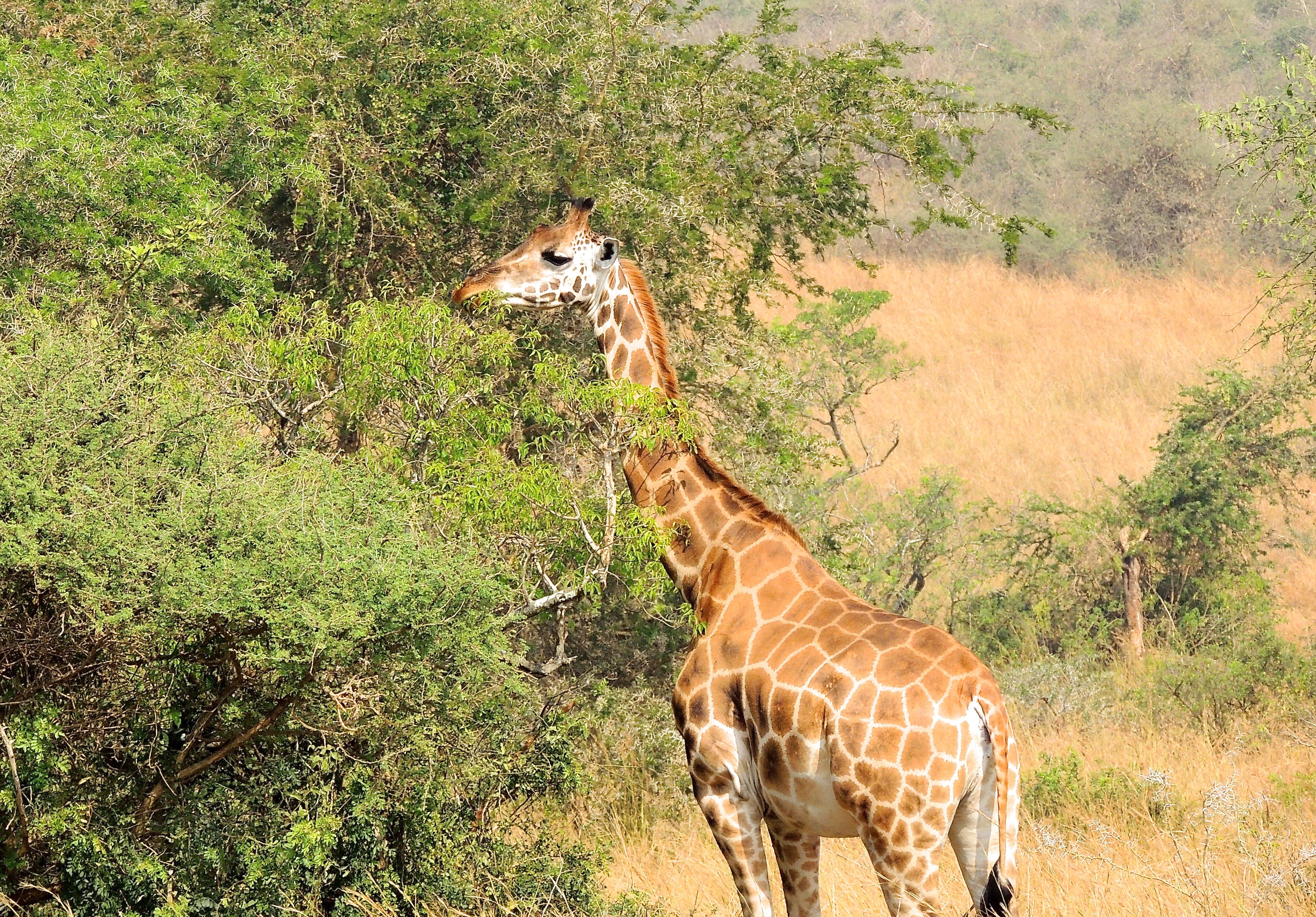 Rothschild's Giraffe - Photo by William Young
Rothschild's Giraffe - Photo by William Young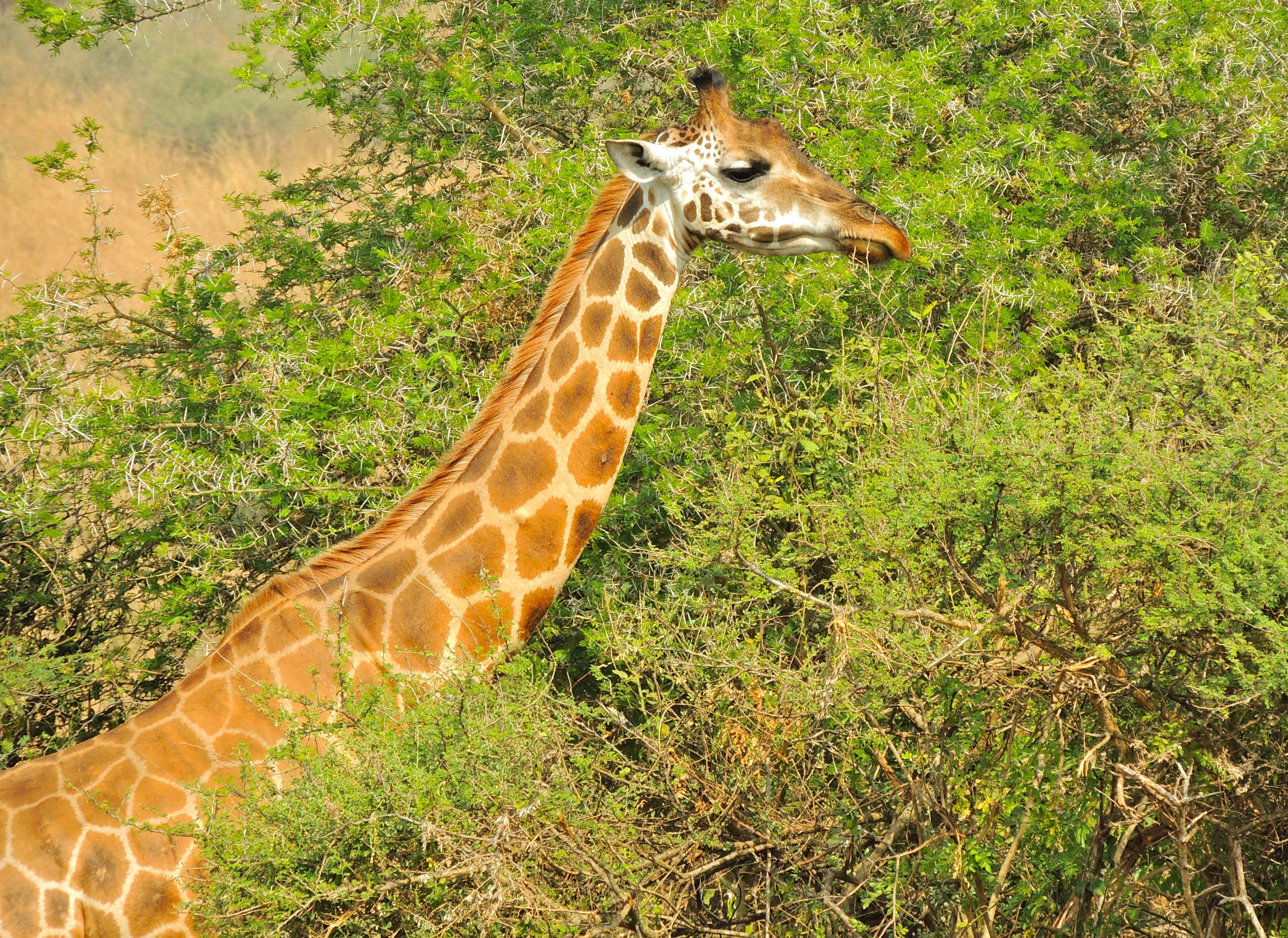 Rothschild's Giraffe - Photo by William Young
Rothschild's Giraffe - Photo by William YoungBuffalos
African Buffalos were fairly common in the parks with savanna habitat. We saw about 700 on the trip. Most looked dark or black. People say they are one of the meanest and most dangerous animals in Africa. They certainly look mean, and I have no reason to doubt the stories I have heard about how dangerous they are. But whenever I have seen them, they have struck me as incredibly slow and patient animals. I have never seen one run. Oxpeckers and Piapiacs ride on them, which they seem to tolerate with great patience. On the Kazinga Channel, they were intermingling with elephants, and I could see how much smaller they are. Elephants and buffalos are herbivores and seemed to coexist peacefully.
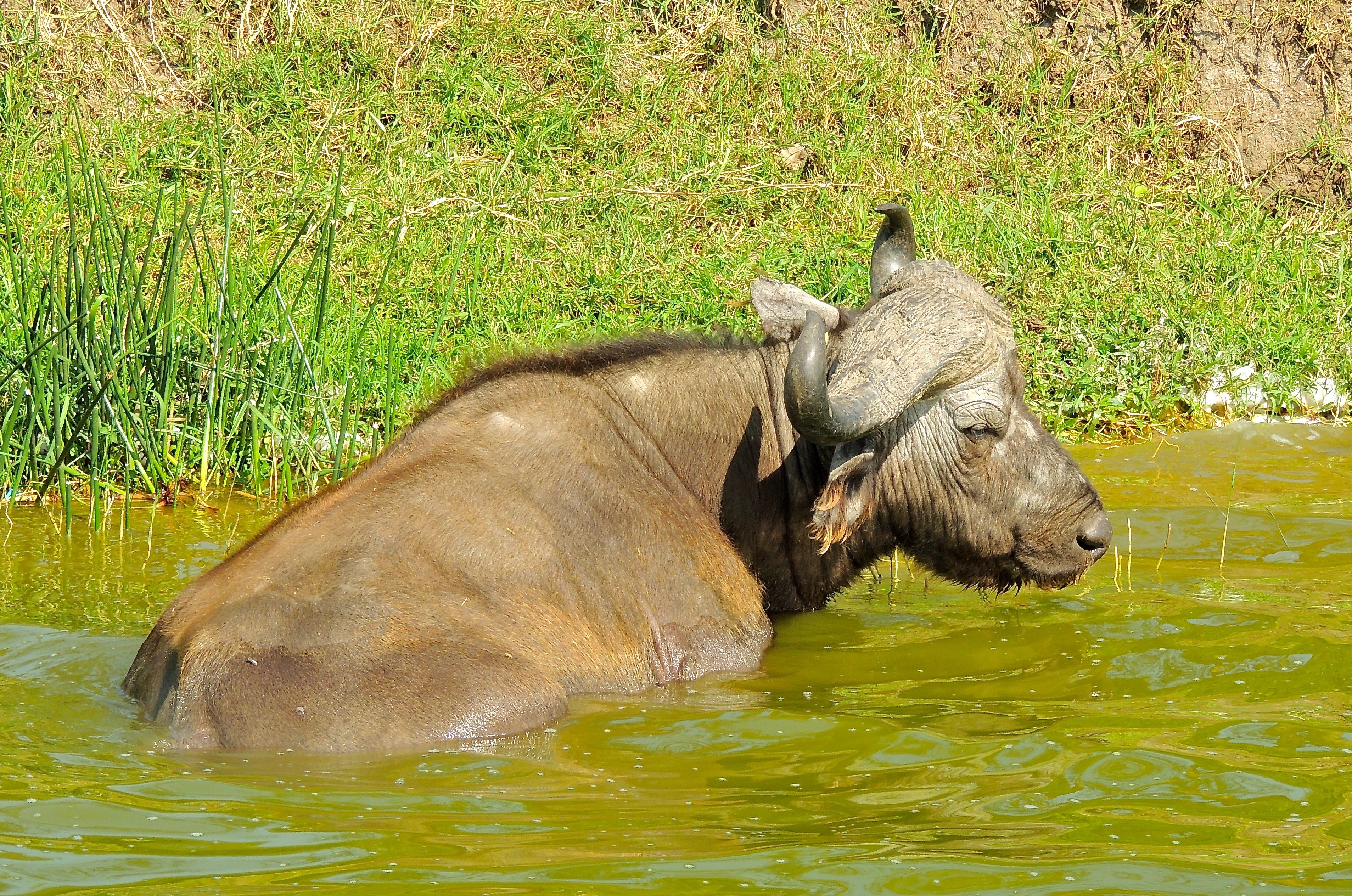 African Buffalo - Photo by William Young
African Buffalo - Photo by William YoungAntelopes
I saw 9 species of antelopes. We saw close to 2,000 Uganda Kobs, the national mammal of Uganda who is on the coat of arms along with the Grey Crowned Crane. They are mid-sized and stocky, and they cannot dance as well as cranes. The males have horns, but the females do not. They were the most common antelope at Queen Elizabeth NP. We saw a male kob in his breeding area surrounded by a harem of about 20 females. Another seemed to have an itch that was really bothering him, and he whirled around in circles trying to deal with it. We saw a couple hundred Oribis in Murchison Falls NP. They are much smaller and delicate looking. Sometimes, we drove very close to them before they moved. Because of the drought, some had extremely thin legs. They have an unusual pattern in their ears. The males have small horns, but the females do not. While on the first Nile boat ride, we encountered a Sitatunga browsing in the foliage on the shore. They are large and shy, and I did not have much of a look before it disappeared. We saw a few Nile Bushbucks, including a male in the parking area at the Ziwa Rhino Sanctuary. He had short straight black horns, white spots on his flanks, white splotches on his legs, and a black vertical line running from his nose to between his eyes. We saw two Rwenzori Red Duikers the day we went to Mubwindi Swamp. The first one was at a distance, and it appeared much larger than the second one we saw crossing a road. They are red with black faces. Defassa Waterbucks were in all three savanna habitats we visited. They are a different subspecies from the waterbucks in Tanzania. Males of both subspecies have long horns with rings on them. They are large and bulky. Lelwel Hartebeests are large antelopes with long faces like a horse. Viewed from the side, the antlers are S-shaped. Hartebeests are lighter than waterbucks in both color and build. We saw Topis at Lake Mburo, who also are large. They are reddish, and the males have horns that bend backwards. Lake Mburo was also the only place we encountered Impalas. They have a black M pattern on their rear end, and Crammy said that Ugandans call them "lions' McDonald's."
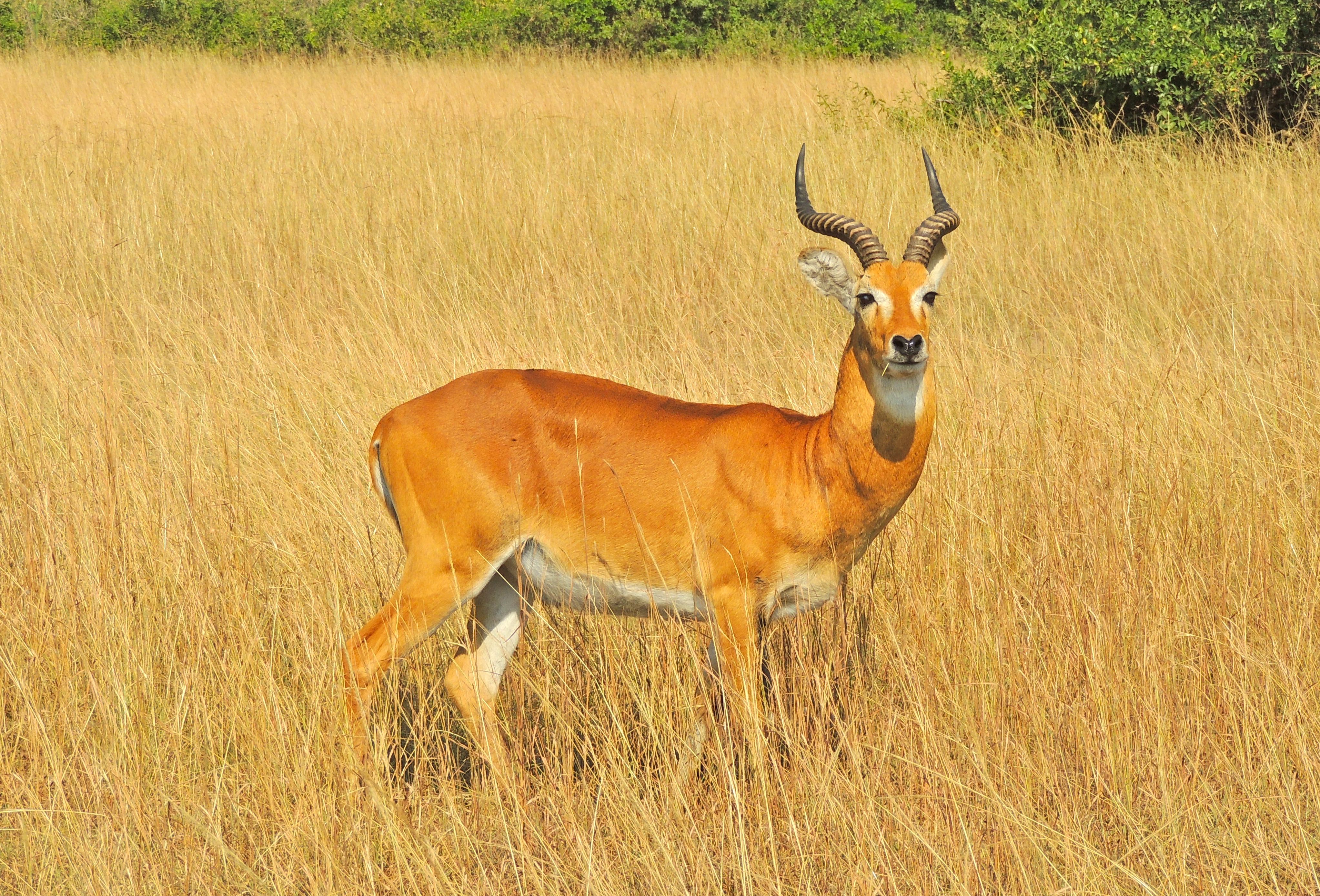 Uganda Kob Male - Photo by William Young
Uganda Kob Male - Photo by William Young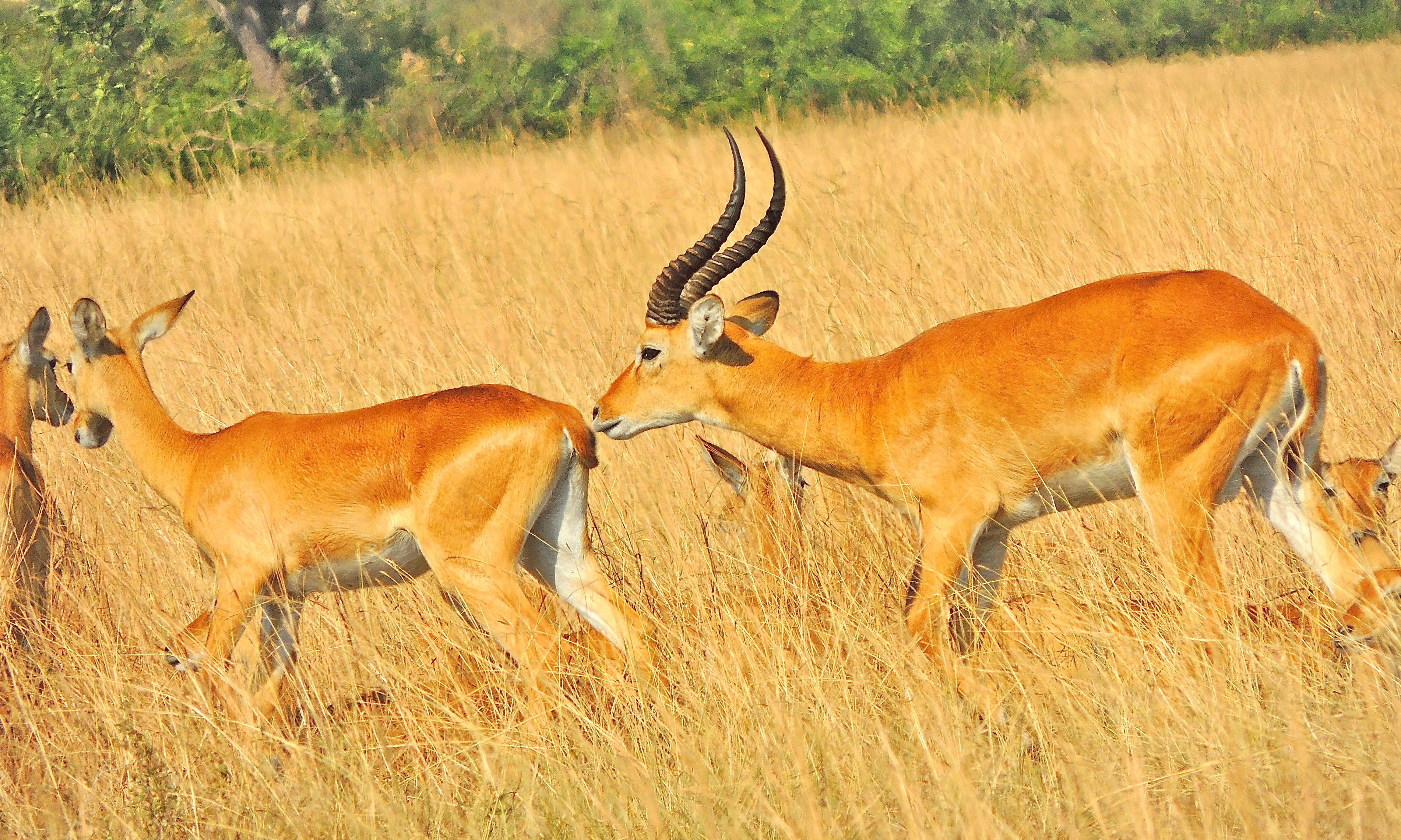 Uganda Kob Male and Females - Photo by William Young
Uganda Kob Male and Females - Photo by William Young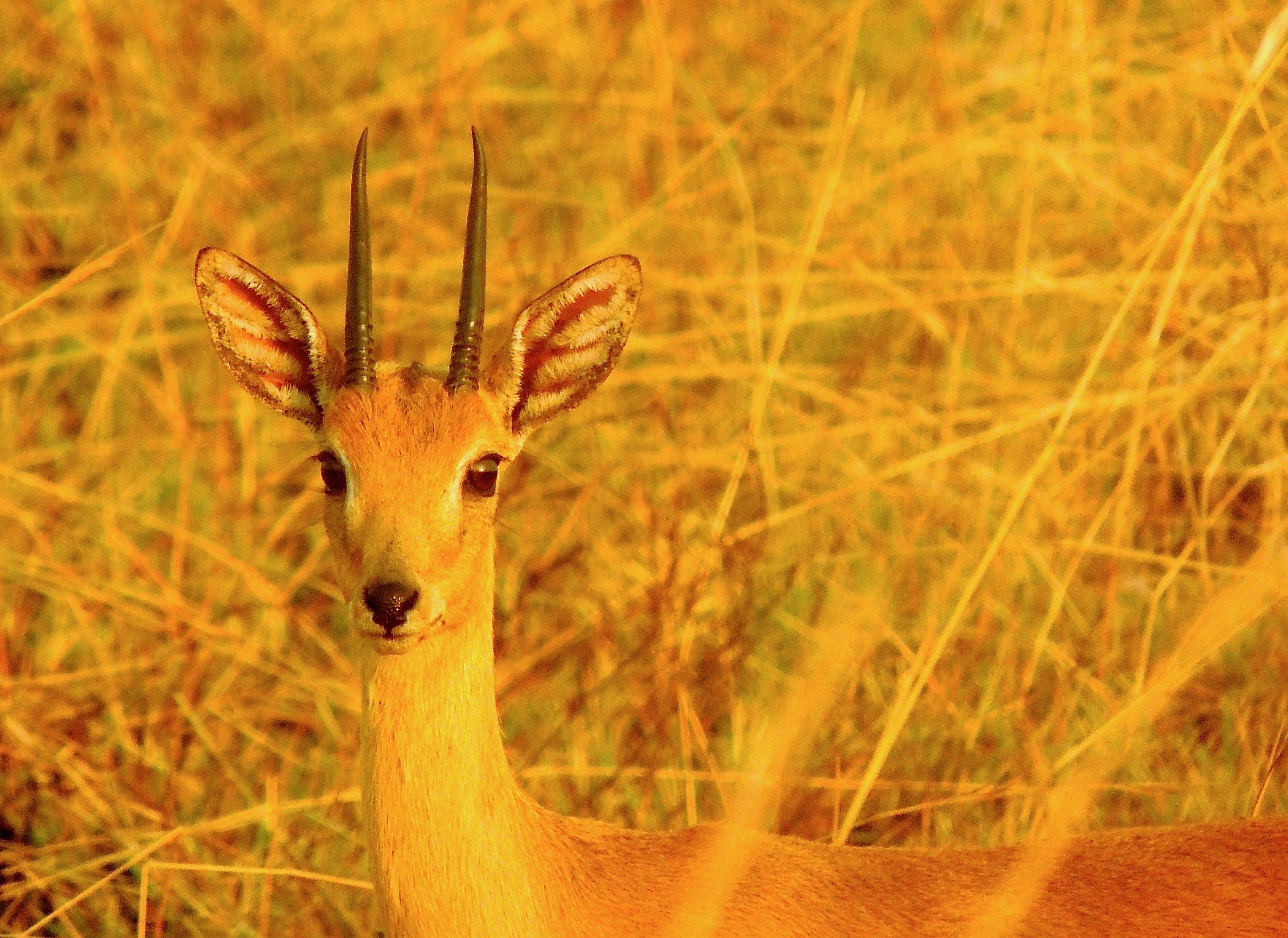 Oribi Male - Photo by William Young
Oribi Male - Photo by William Young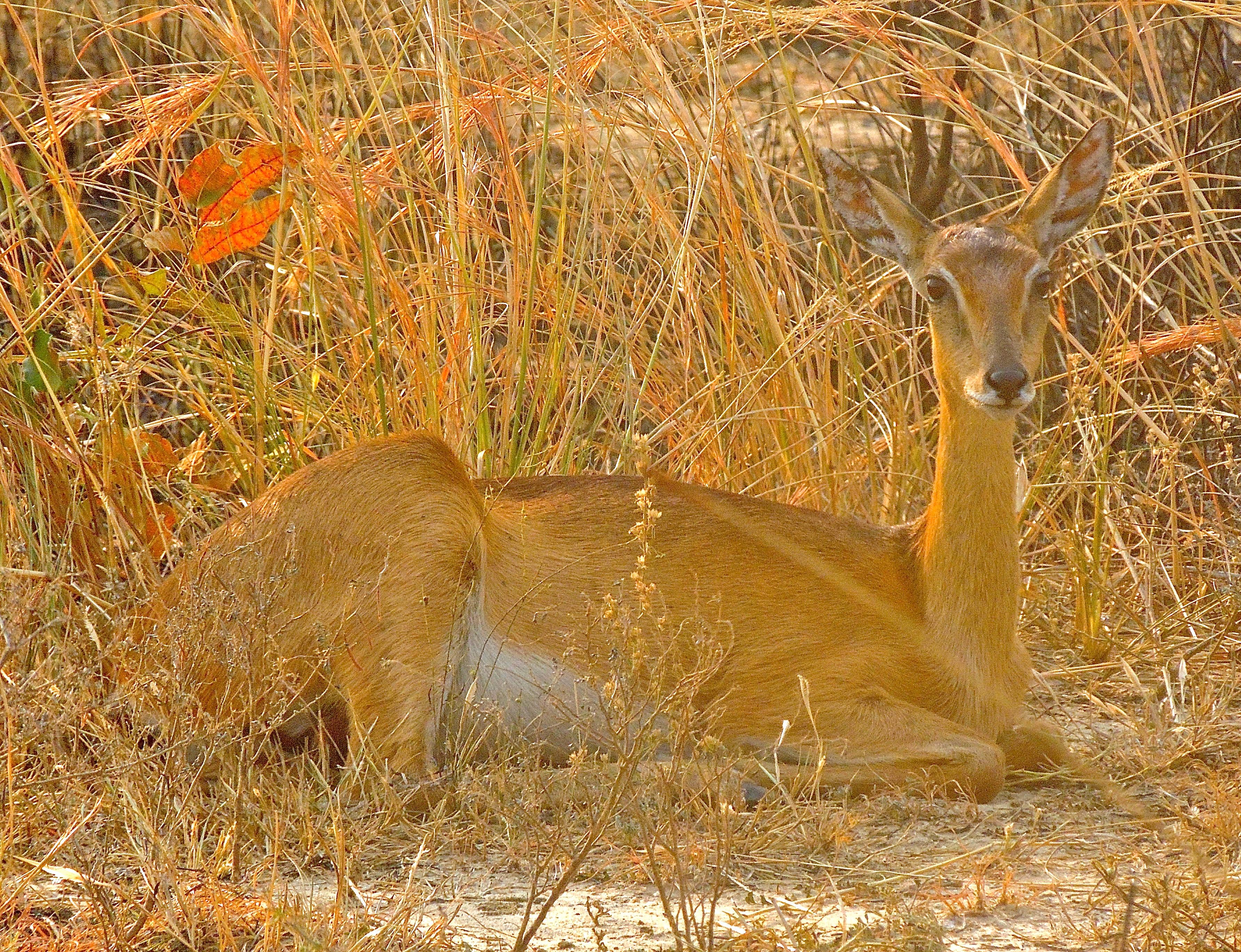 Oribi Female - Photo by William Young
Oribi Female - Photo by William Young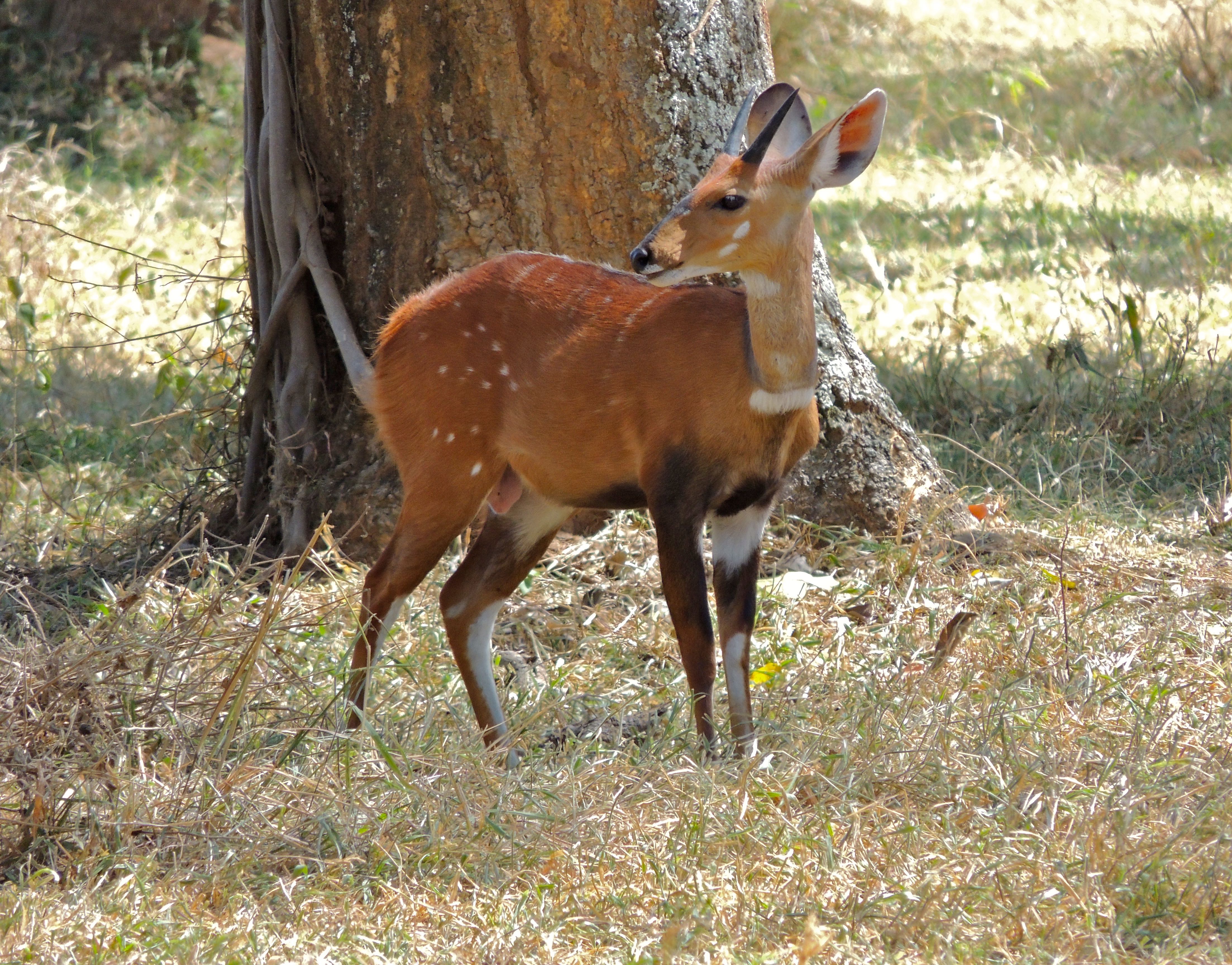 Nile Bushbuck - Photo by William Young
Nile Bushbuck - Photo by William Young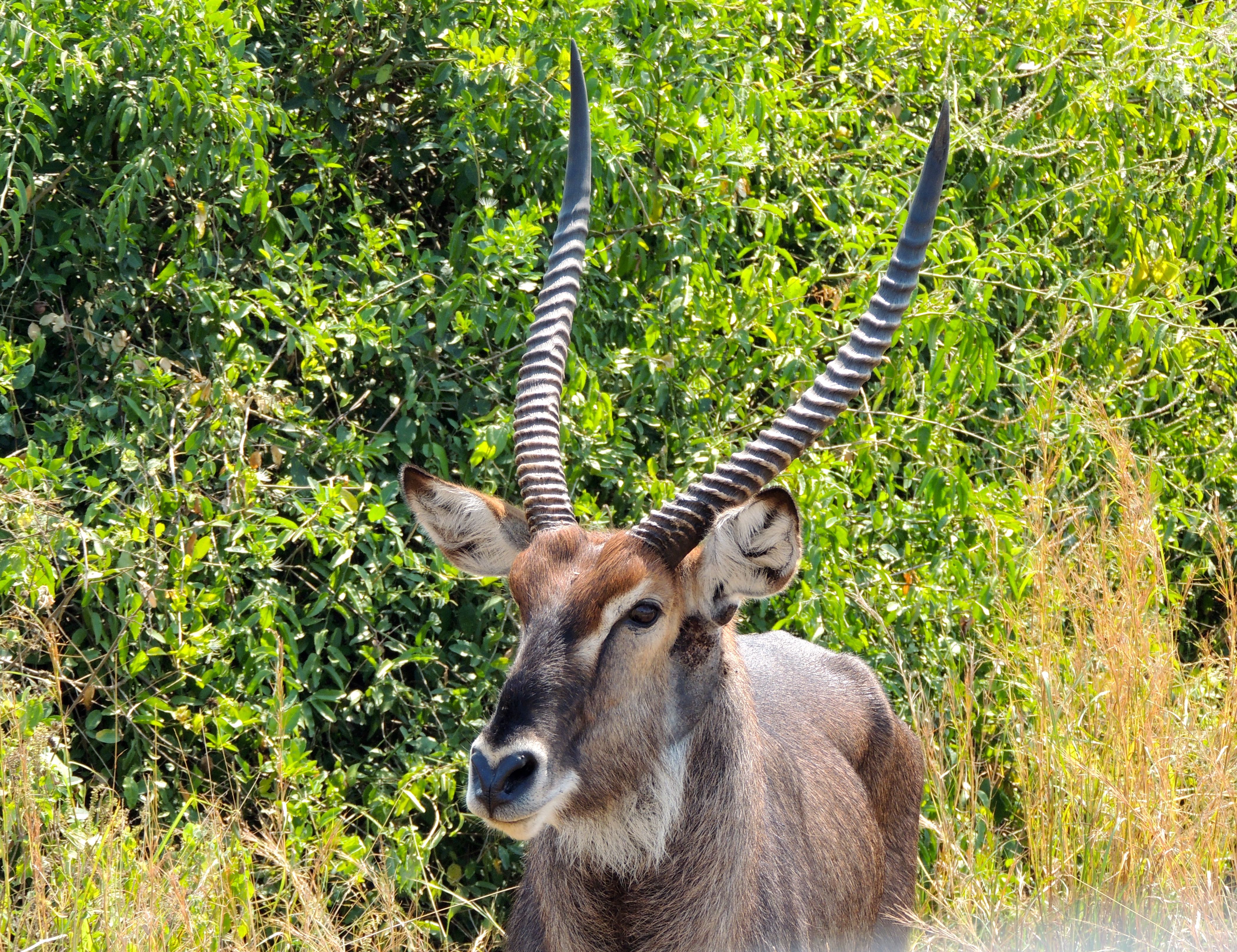 Defassa Waterbuck - Photo by William Young
Defassa Waterbuck - Photo by William Young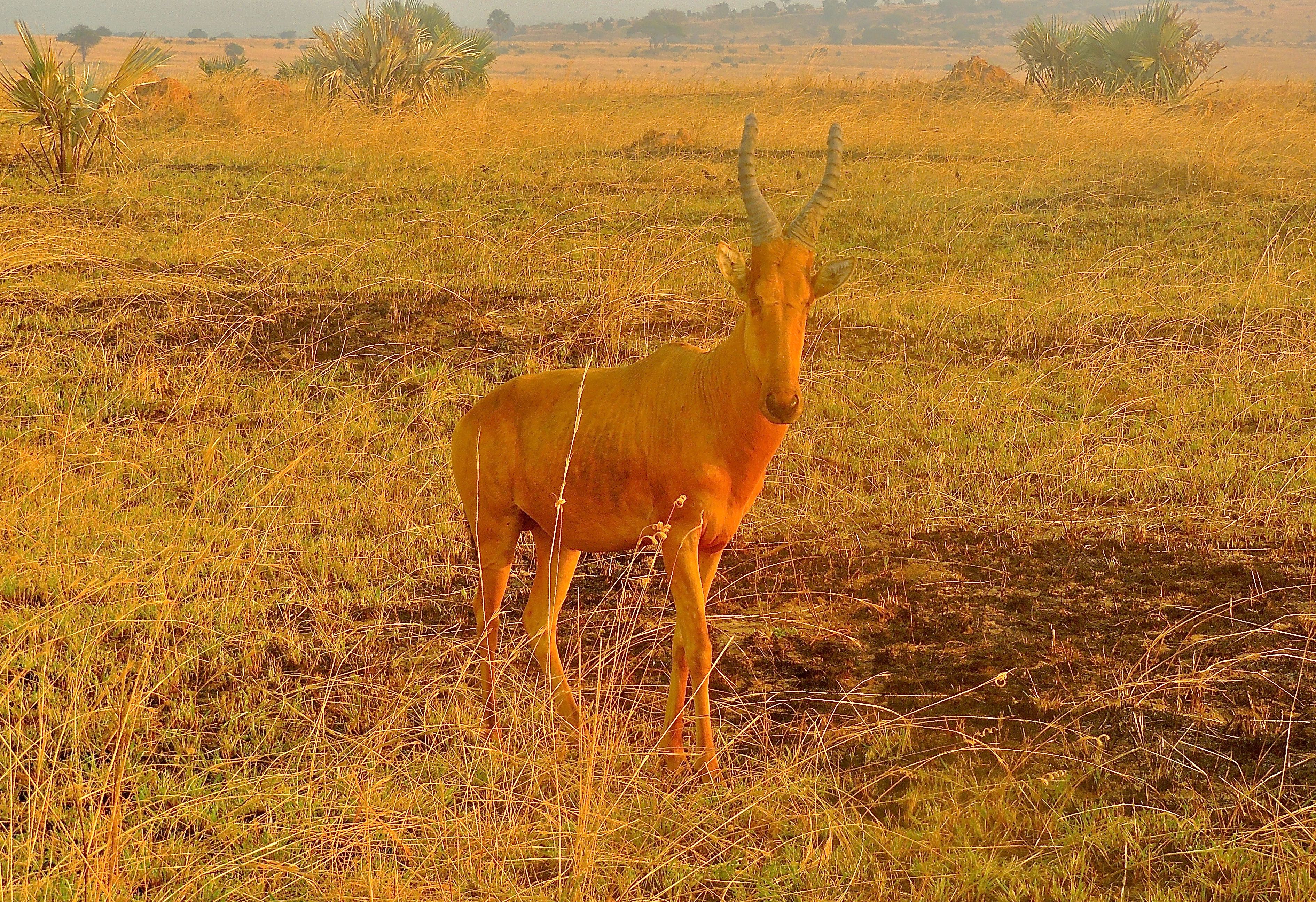 Lelwel Hartebeest - Photo by William Young
Lelwel Hartebeest - Photo by William Young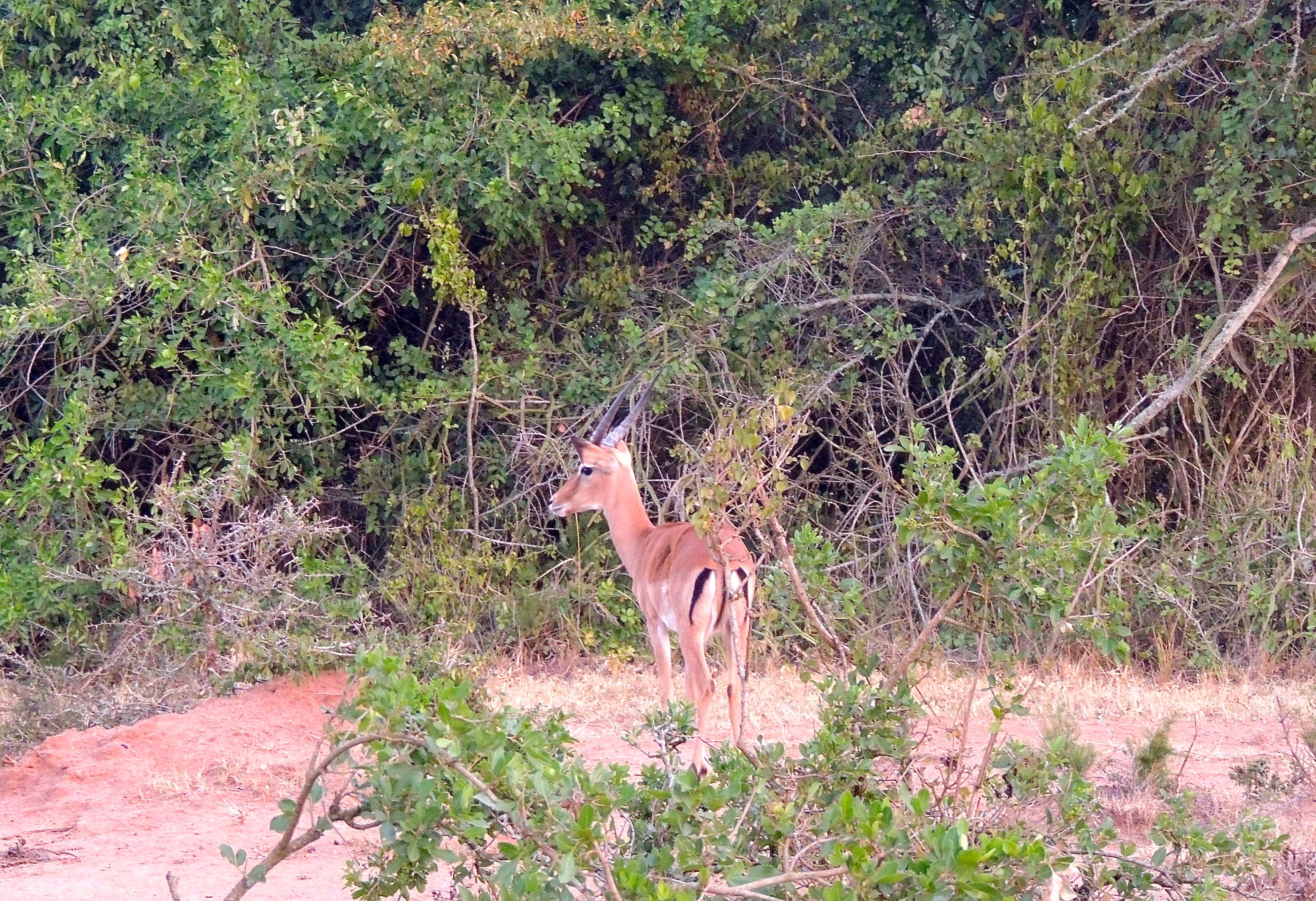 Impala - Photo by William Young
Impala - Photo by William Young
OTHER WILDLIFE
In the waterways, I saw about 30 Nile Crocodiles. Most were lying on the shore, but a couple were moving. They are surprisingly fast. The weather was hot, and some of the crocodiles had their mouths open so I could see their teeth. I am not sure if they do this to dissipate heat or for safety. I have heard that crocodiles have relatively weak muscles for opening their jaws, but incredibly strong muscles for closing them. Should something try to attack the crocodile from the front, the strong closing muscles would be triggered rather than the weak opening muscles. We also saw a few Nile Monitors. On the bank of the Nile, we saw one who was very close to a pair of Laughing Doves on the bank. The doves did not appear all that concerned about the monitor, even though it was within easy striking distance. We saw Blue-headed Tree Agamas in a number of places, including on our first afternoon at the Victoria View Guest House. One was on a curb not far from my room, and when in the sun, looked beautiful. I also saw one in the gardens at the Traveller's Inn in Kisoro. Red-headed Rock Agamas were common around Murchison Falls NP. Some of the places where we stayed had Tropical House Geckos on the walls. I walked past a lot of them in the outdoor walkways at the Paraa Lodge. We also encountered both Striped and Variable Skinks. I did not get a good look at any snakes. In Semliki, we encountered a Cinnamon-bellied Reed Frog, who was about an inch long.
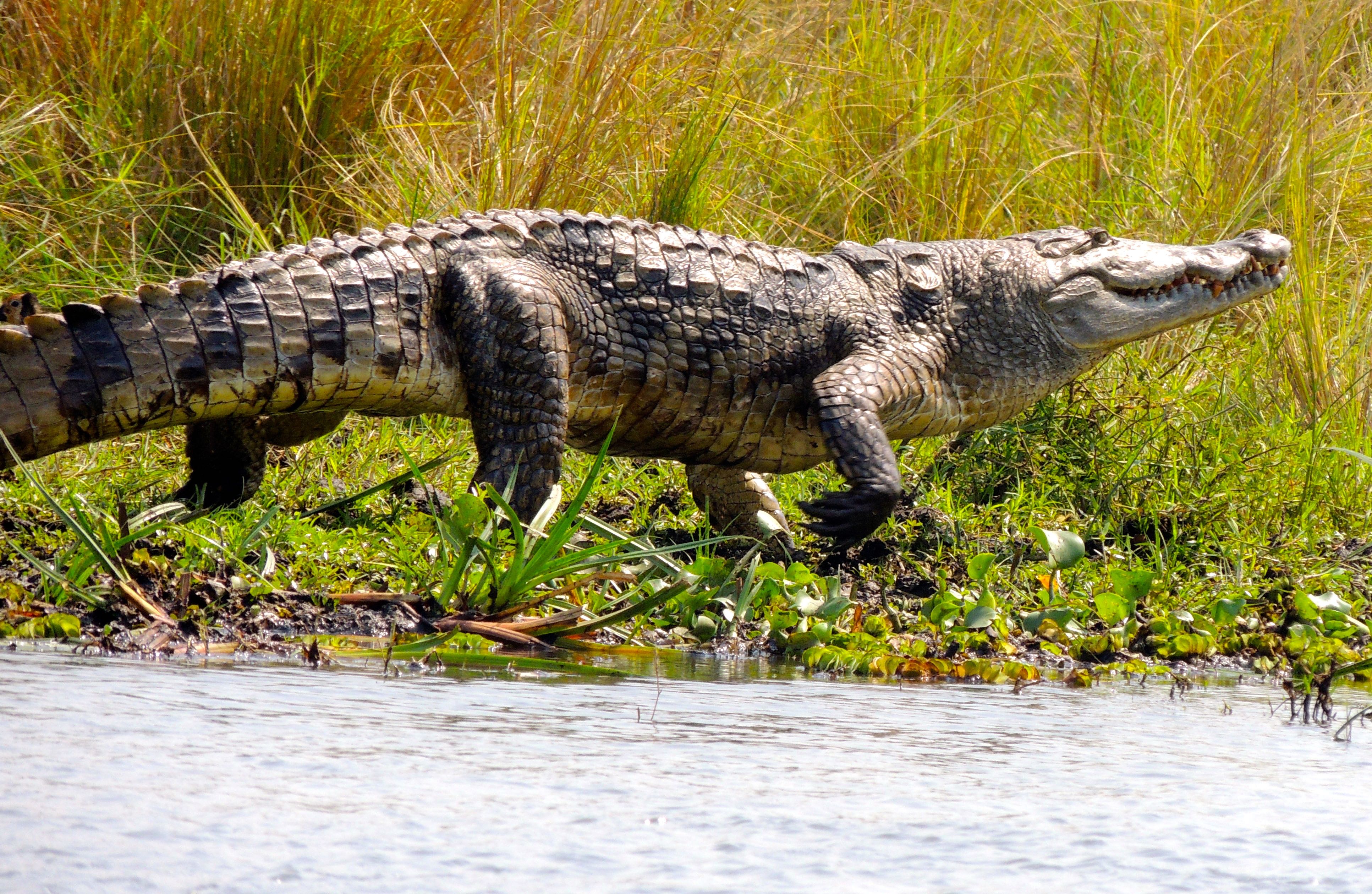 Nile Crocodile - Photo by William Young
Nile Crocodile - Photo by William Young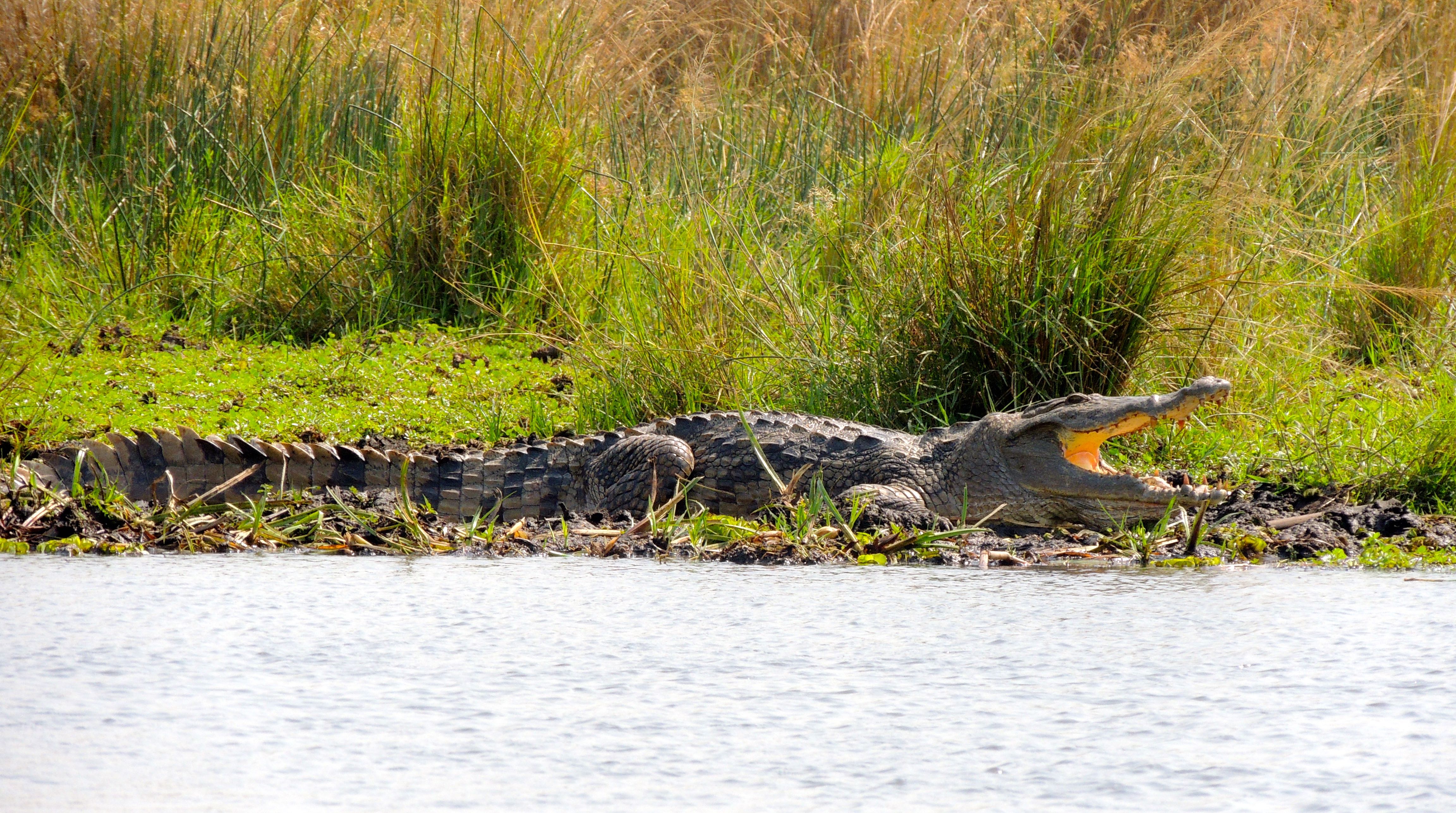 Nile Crocodile - Photo by William Young
Nile Crocodile - Photo by William Young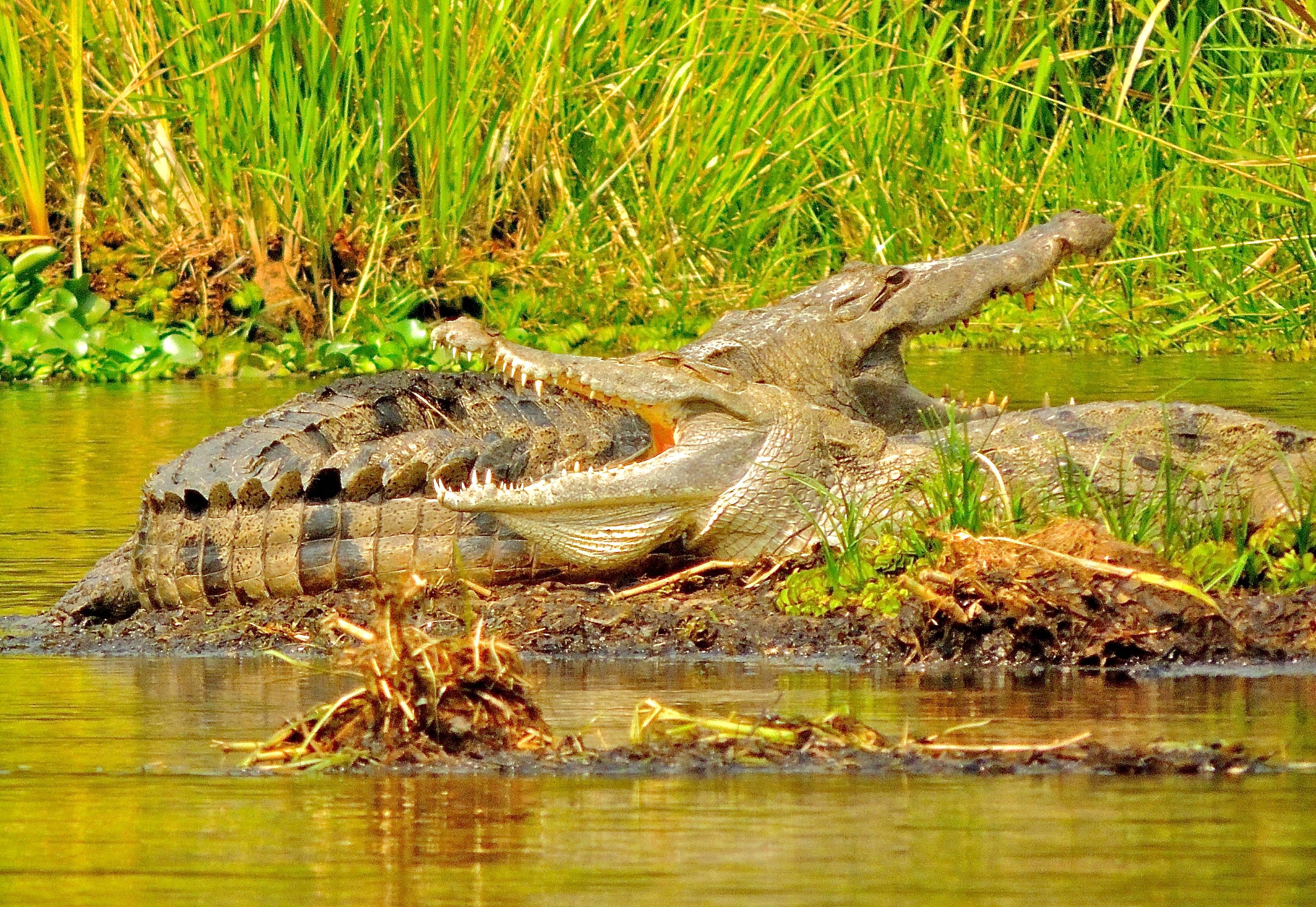 Nile Crocodiles - Photo by William Young
Nile Crocodiles - Photo by William Young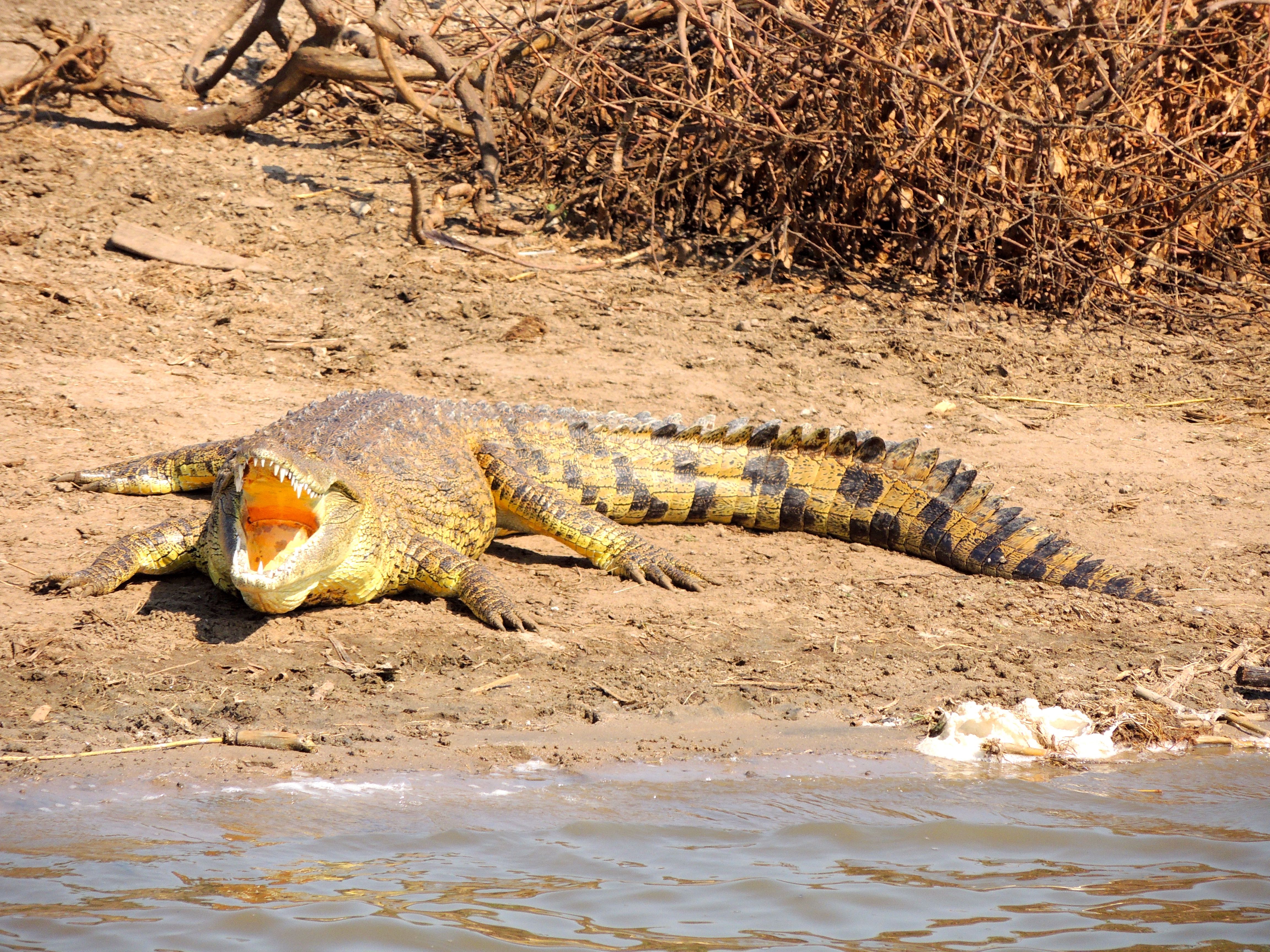 Nile Crocodile - Photo by William Young
Nile Crocodile - Photo by William Young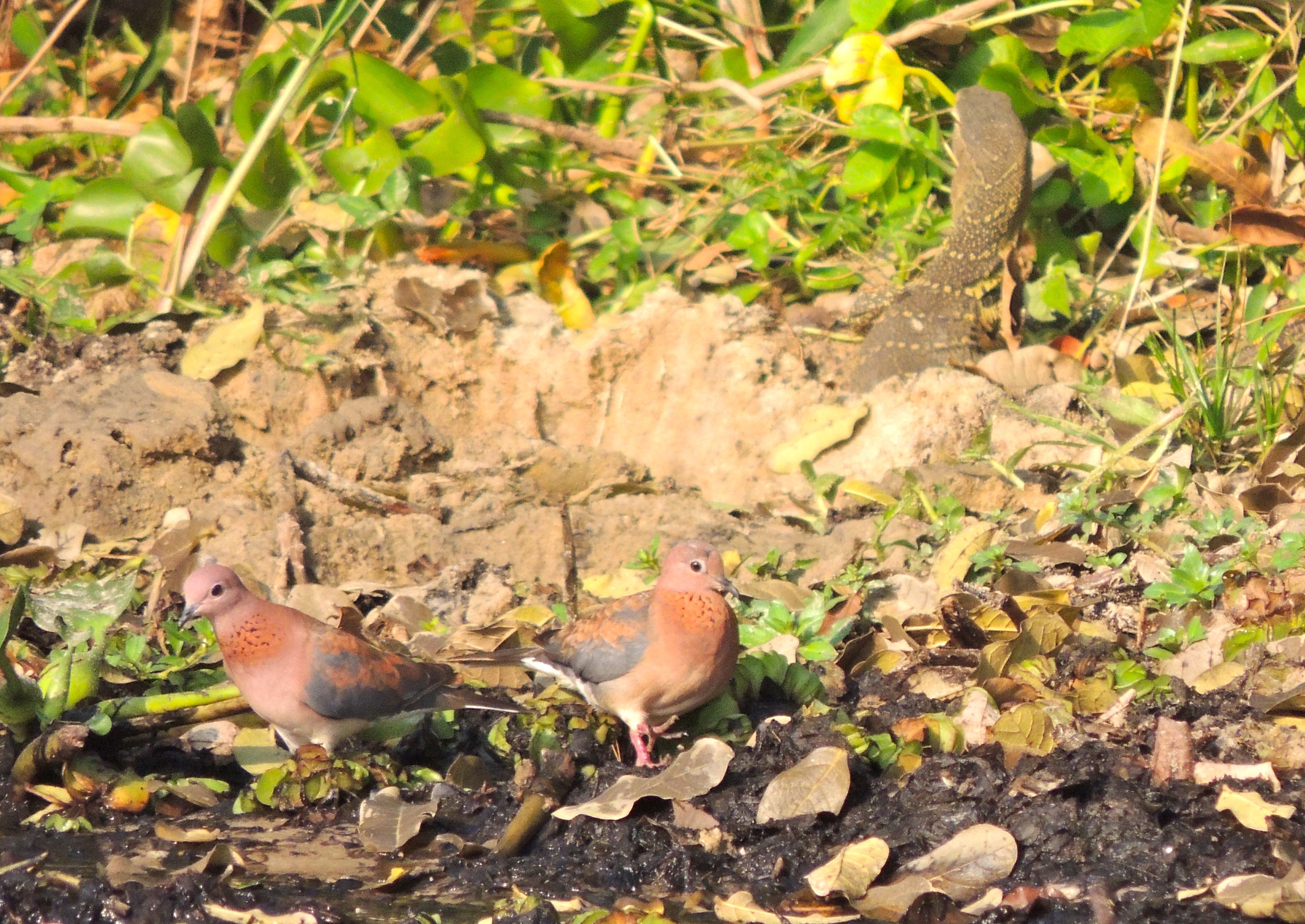 Laughing Doves and Lace Monitor - Photo by William Young
Laughing Doves and Lace Monitor - Photo by William Young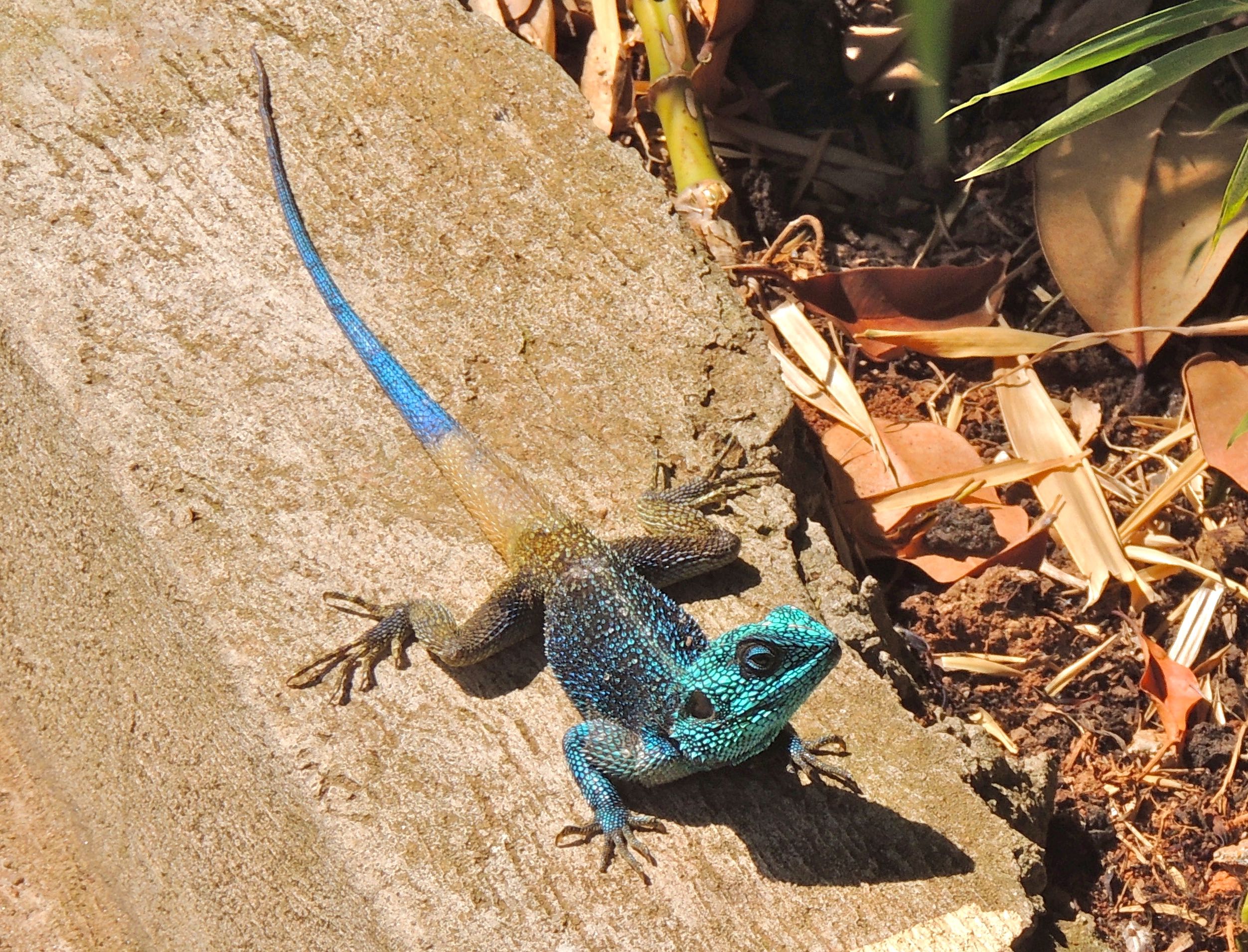 Blue-headed Tree Agama - Photo by William Young
Blue-headed Tree Agama - Photo by William Young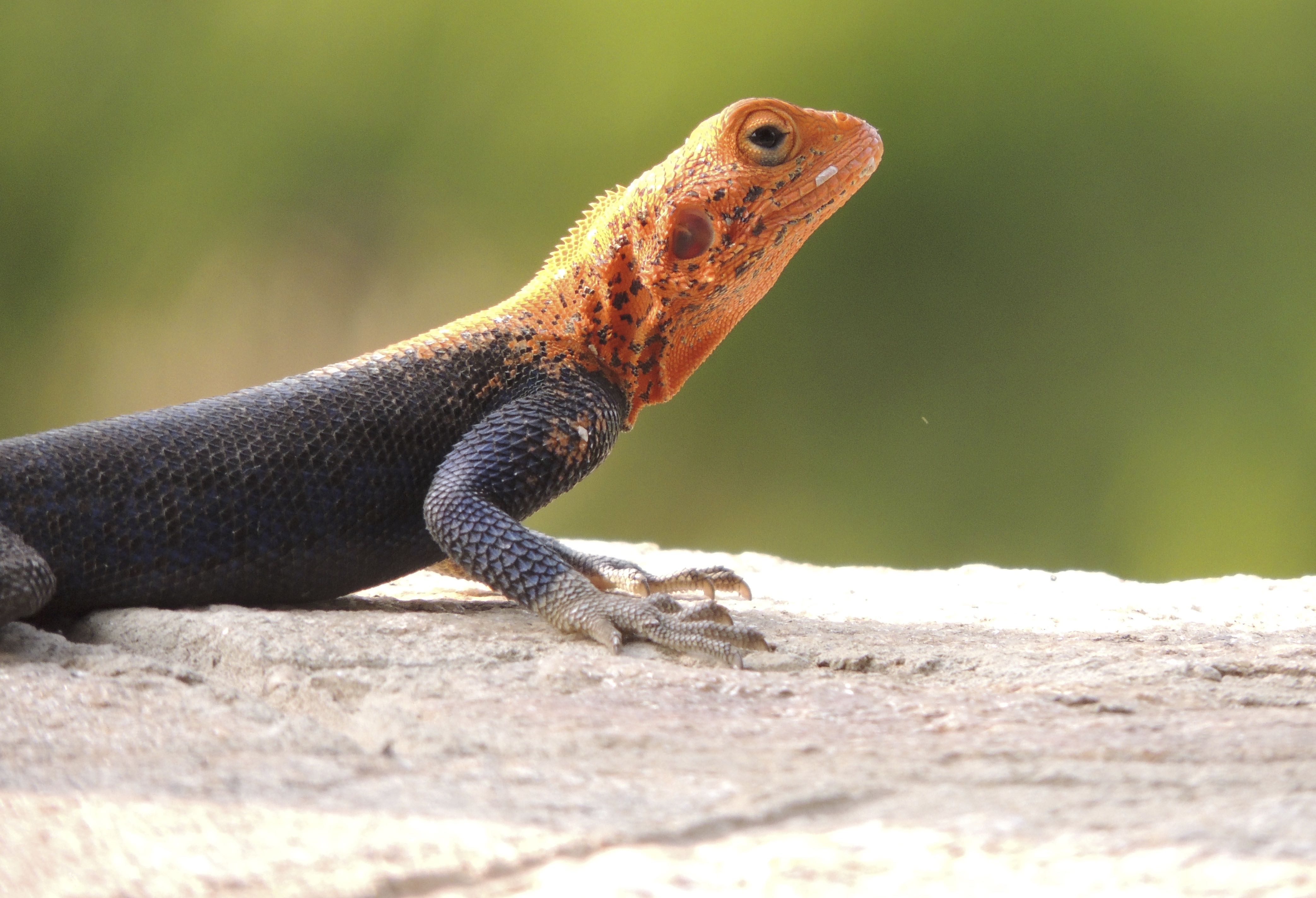 Red-headed Rock Agama - Photo by William Young
Red-headed Rock Agama - Photo by William Young Cinnamon-bellied Reed Frog - Photo by William Young
Cinnamon-bellied Reed Frog - Photo by William YoungWe saw a lot of beautiful butterflies and moths, but I did not have a field guide for identifying them. In the forest habitats, we saw Mocha Swallowtails, who are large and light tan. We also saw Green-banded Swallowtails, who have narrower wings with green bands, and East African Foresters. In Semliki, I photographed a Cymothoe cyclades, who does not have a common name. We saw butterflies from the Charaxe family. On the walk back from Mubwindi Swamp, we saw a large moth who looked like a hummingbird working some flowers in an area where we were resting. At Kanio Pabidi, we saw both an orb weaver spider and a nest with communal spiders. The latter build large webs communally that trap a lot of leaves and food as well. At Bwindi, we saw a giant spider who is possibly from the orb weaver family. There were quite a few termite mounds, some of which were really large. There was a Black Ant nest on the branch of a tree. At the Paraa Lodge, Lori found a giant stick insect before we left for one of our cruises. It looked like a praying mantis, only bigger. We found a Leaf Katydid whose legs were three colors. And at Bwindi, George found an African Giant Snail, who was close to 4 inches long.
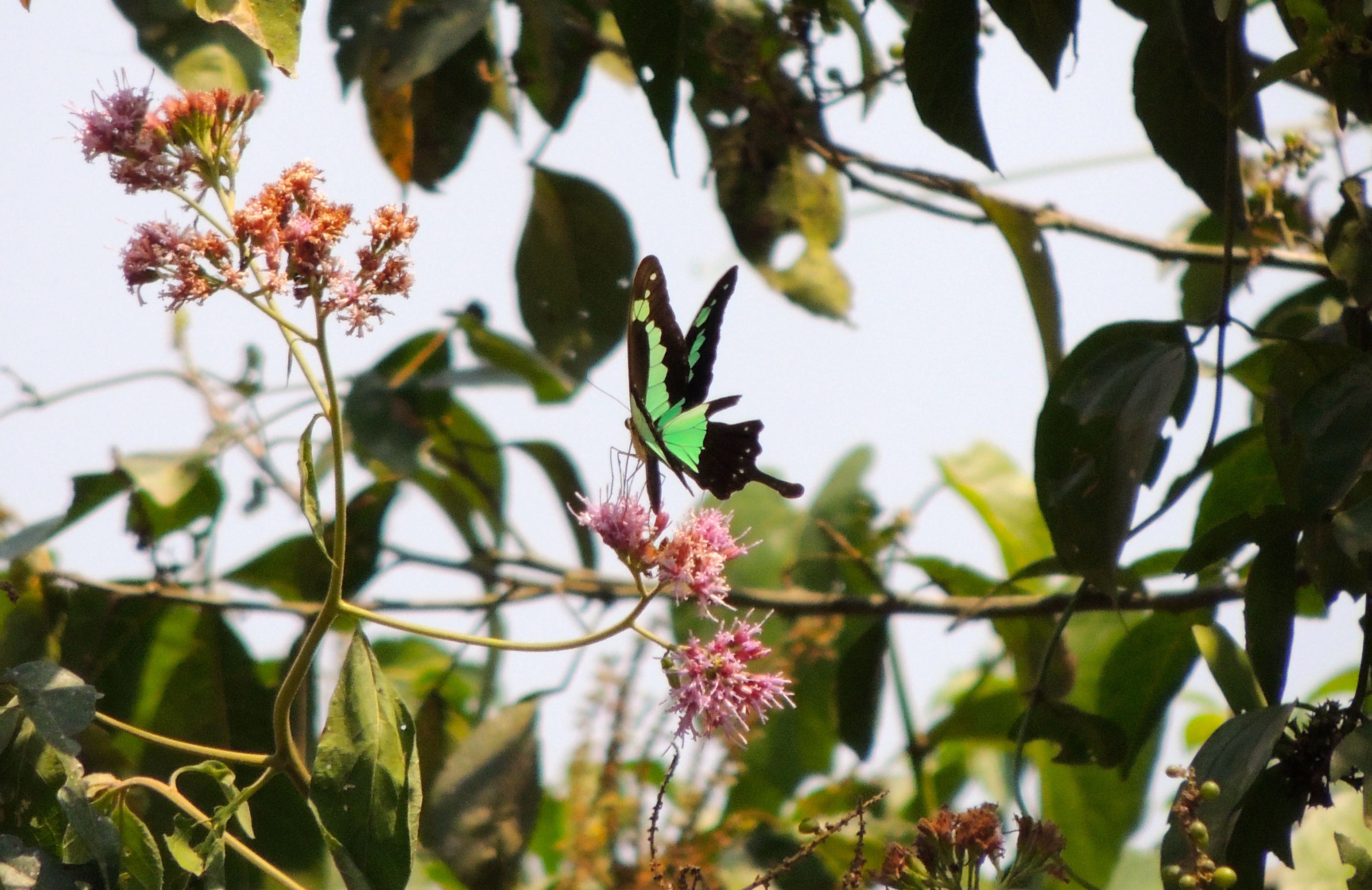 Green-banded Swallowtail - Photo by William Young
Green-banded Swallowtail - Photo by William Young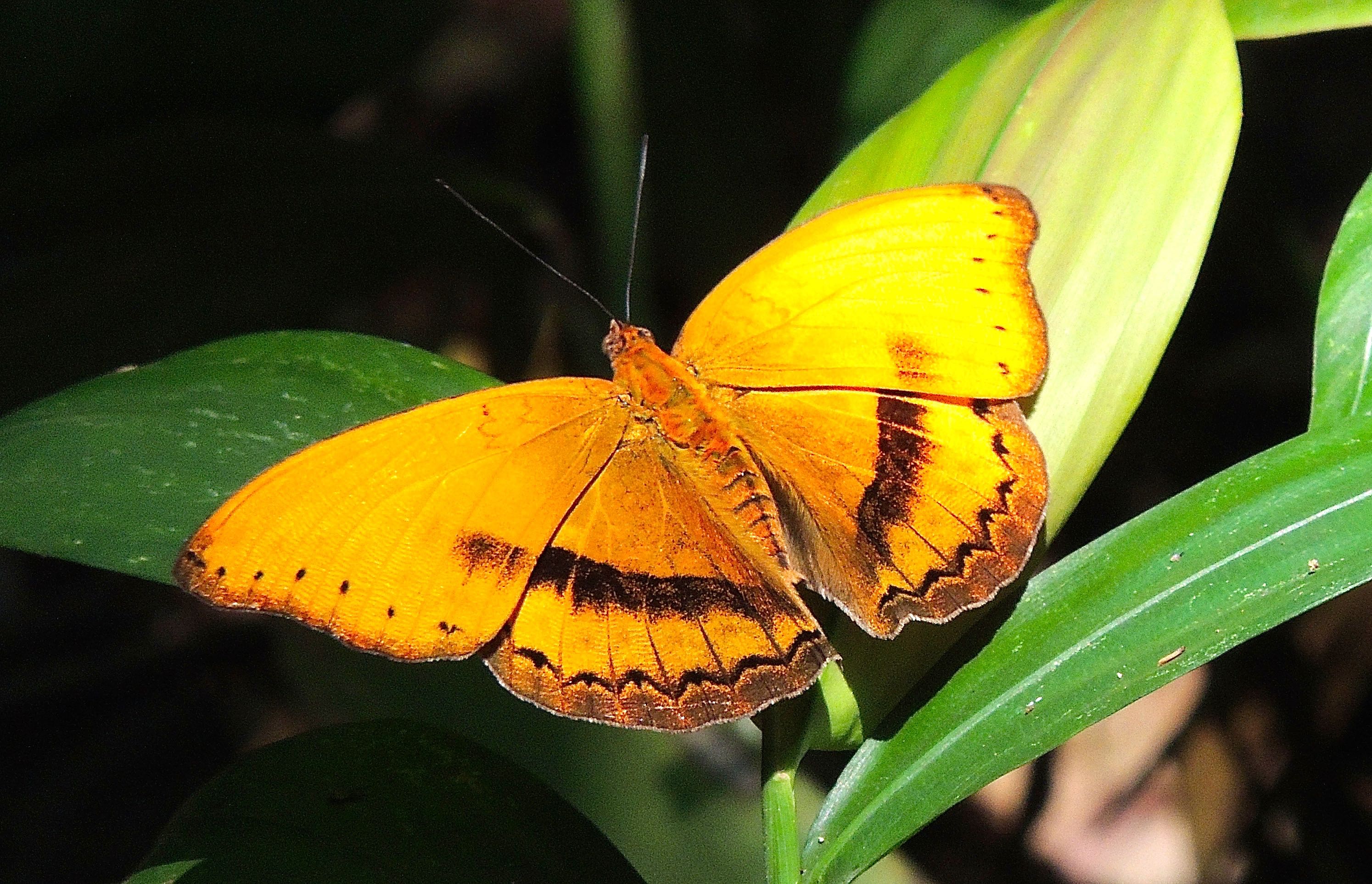 Cymothoe cyclades - Photo by William Young
Cymothoe cyclades - Photo by William Young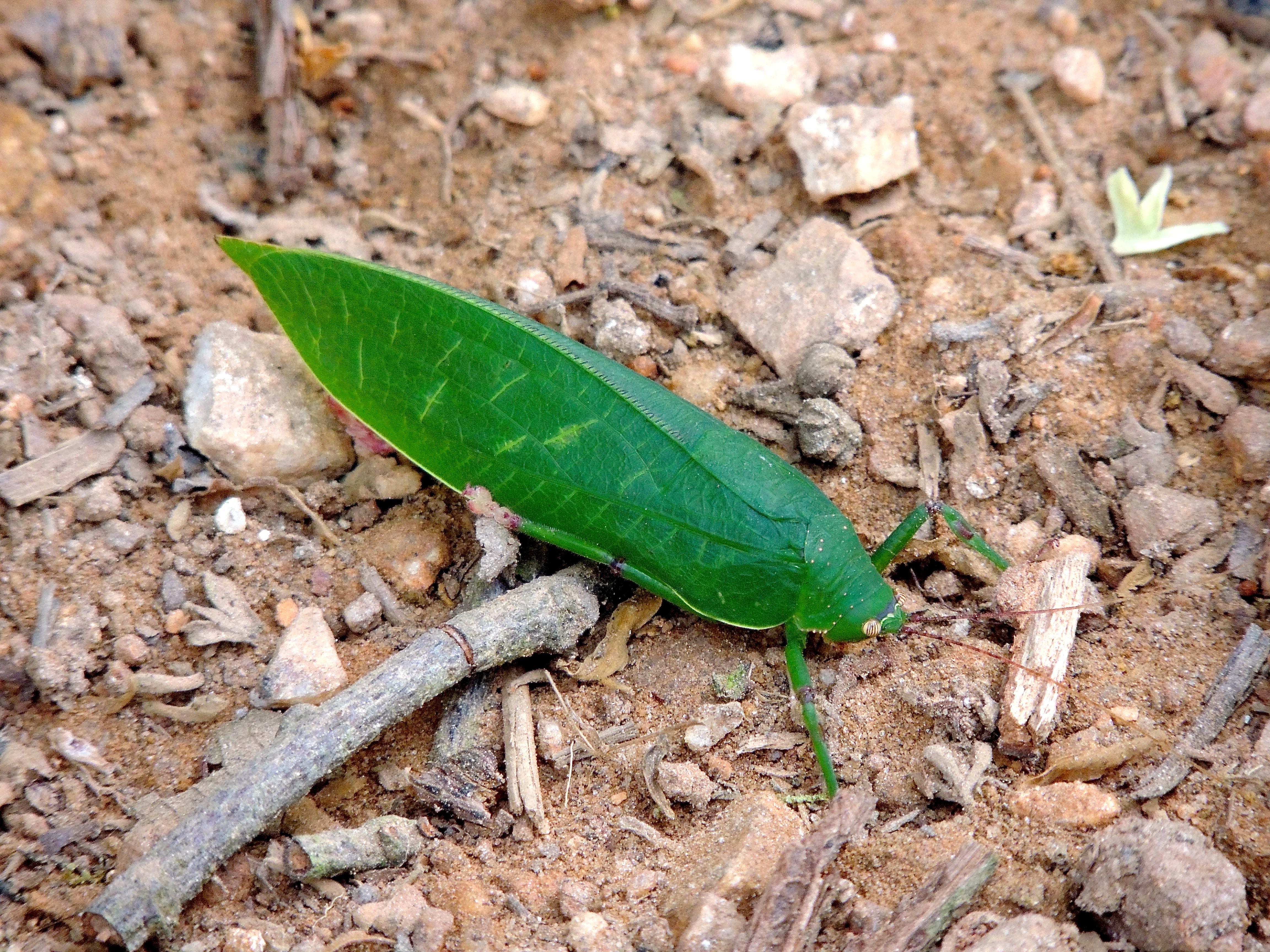 Leaf Katydid - Photo by William Young
Leaf Katydid - Photo by William Young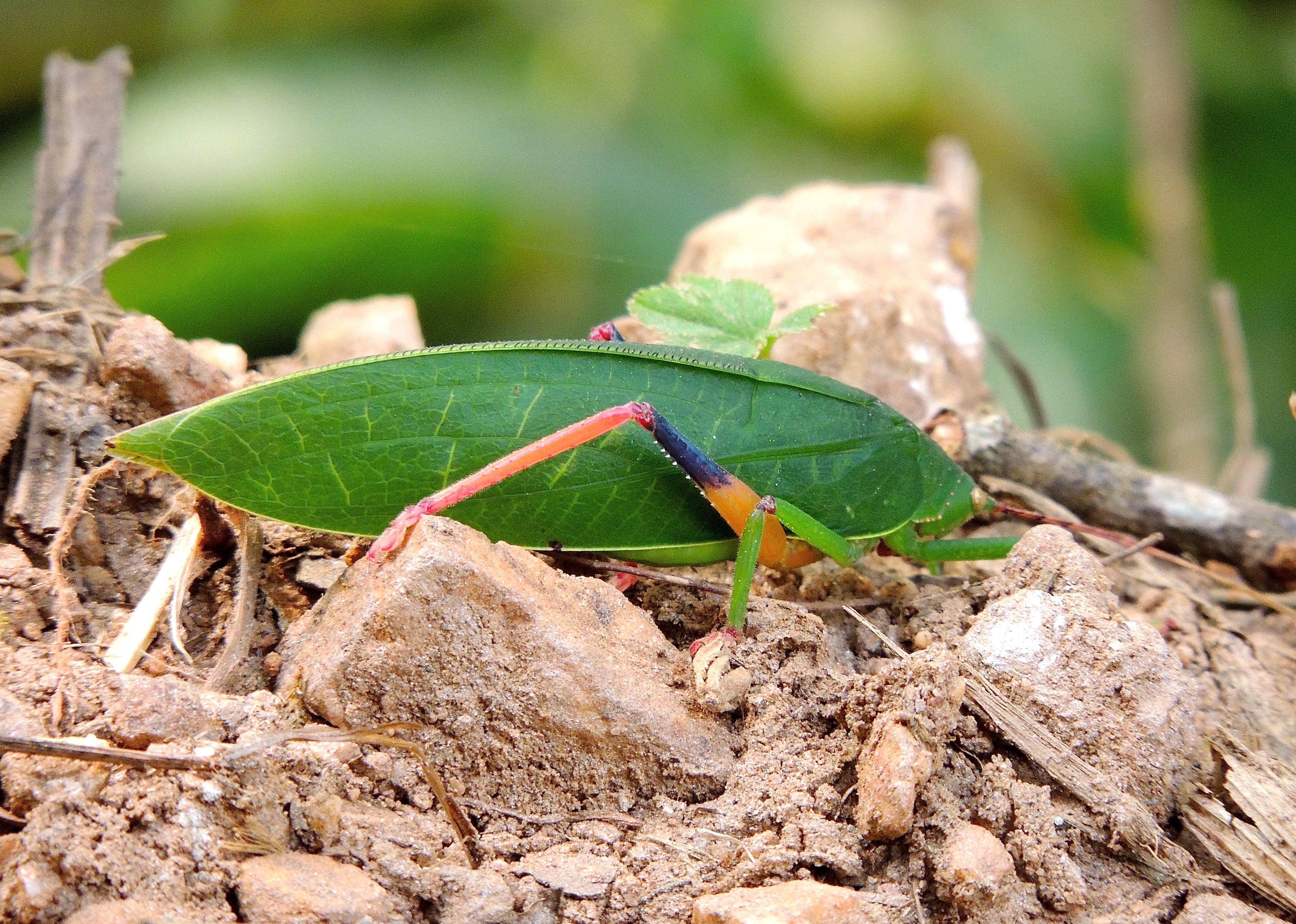 Leaf Katydid - Photo by William Young
Leaf Katydid - Photo by William Young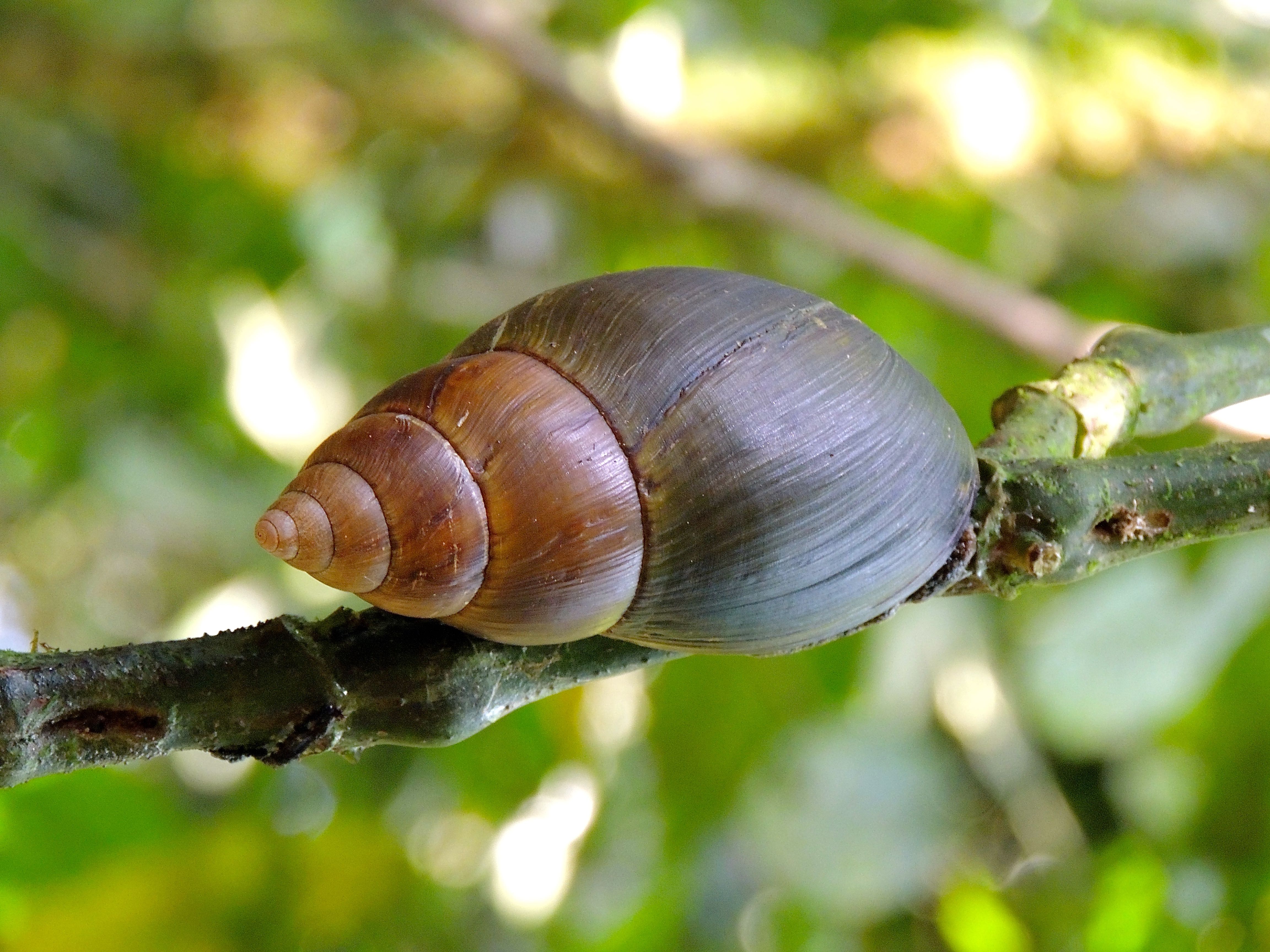 African Giant Snail - Photo by William Young
African Giant Snail - Photo by William YoungIn the Bwindi Impenetrable Forest, our local guide pointed out some giant tree ferns, which are some of the biggest ferns in the world. He said the Batwa (Pygmy) people use the bark to comb their hair. We came across some Angel Trumpet Flowers. We also saw other flowers that were shaped like trumpets but were not related to the trumpet flowers.
GENERAL IMPRESSIONS OF UGANDA
My trip to Uganda happened at an opportune time. I had done a lot of travelling in 2016, and this trip to Africa was the fifth continent I was visiting since the beginning of the year. The only two I missed were Asia and Australia. My only previous experience in Africa was a 4-week trip to Tanzania in 2015. I did not know much about Uganda before Lori asked me to go. I was pleasantly surprised when I arrived. The people were extremely pleasant wherever I went. Almost everyone I encountered spoke English. Uganda seemed much cleaner and more relaxed than Tanzania. My final experience in Tanzania was being stuck in a 2-hour-long traffic jam about 20 minutes from the airport in Dar es Salaam that almost made me miss my flight home. In Uganda, the airport is in Entebbe outside of the capital city of Kampala, and getting to and from the airport involved a ride of about 15 minutes with hardly any traffic.
Drivers in Uganda move much more slowly than in Tanzania. There were no insane bus drivers as in Tanzania who played chicken with other drivers while driving very fast on the wrong side of two-lane roads. Likewise, we did not encounter corrupt police who stopped drivers for alleged speeding in order to collect bribes. The police in Uganda seemed friendly, and they only stopped motorists whom they suspected were driving without a proper license, insurance, etc. Some drivers drove fast, but almost all of them seemed polite and law-abiding. A lot of the fast drivers were small taxi vans loaded with people. Most towns have speed bumps which effectively slow down traffic passing through. Some of the speed bumps are 6 feet wide and double as pedestrian crossings. There is no way drivers can drive quickly across one of these barriers without damaging their vehicles, which forces them to slow down. This idea that should be adopted in American cities.
Gasoline was expensive. The price varied, but it ran from under $4 per gallon to more than $4.50. A lot of people walked or rode bicycles or motorbikes. Many of the roads were paved, but a lot were not. We saw pedestrians on these unpaved roads, and whenever a vehicle passed, a huge cloud of dust would be created. Trucks created the biggest dust clouds. This happened all day, and I wondered how Ugandans survive without getting lung disease. The dust also causes problems for vehicles, which must need super air filters to keep the dust from gumming up their engines. In the rainy season, the dust is probably replaced with mud, and I am not sure which is more unpleasant. The Chinese are deeply involved in road construction in Uganda as well as a host of other activities, which is not necessarily good for Uganda.
Daily life looked difficult. I sometimes saw women washing clothes in streams. There were wells where people could get safe water, and I frequently saw people walking on long country roads while carrying large containers. The children also helped, and I saw small children carrying small containers. Likewise, a lot of people, including small children, were on the roads carrying firewood. It is much easier to teach children about water and energy conservation if they have to carry back water and firewood from a distant location. People from western countries tend to take electricity, running water, and Wi-Fi for granted. In one of the lodges, I got to my room after a long day in the field and discovered that the water system was down. When you visit remote areas, you suddenly appreciate the difficulty of providing basic services. I settled for a bucket bath that night, which is what I would have done on a camping trip. Most of the places we stayed had insect netting around the beds. There are tsetse flies and mosquitos, and my body had a lot of itchy welts from bites. People who live in Uganda have to deal with such things every day, and they might not have netting for their beds as I did. When I got home, I heard a statistic that the US uses more energy each year to light Christmas decorations than the entire population of Tanzania uses for an entire year.
Uganda is on the Equator, and the temperatures are determined more by elevation than by latitude. We arrived at the end of the rainy season, and we encountered so few raindrops that we could almost count them. Once when I was riding in the front of the vehicle, a few raindrops hit the windscreen, but Crammy did not need to turn on the wipers.
The unit of currency is the Uganda shilling, and a dollar will buy from 3,300 to 3,900 of them. The bills are in denominations of 1,000, 2,000, 5,000, 10,000, 20,000, and 50,000. That means the largest bill (which has a gorilla on the back) is worth $13-$15. When I arrived, I went to a currency exchange at the airport and asked for $200 in shillings. The exchange did not have 50,000 shilling bills, and instead gave me 770,000 in 20,000 and 10,000 shilling notes. The wad of bills was too large to put in my wallet. There were times when I was carrying more than a million shillings with me, which is less than $300. There does not seem to be a lot of cash in some places, so getting change could be difficult. Psychologically, it is difficult to adjust to prices with such large numbers. When someone would quote a price of 10,000 shillings, my first thought would be that the price was high. But when I thought about it more, 10,000 shillings are worth only about $3. I discovered that when some merchants saw I was simply going to pay what they asked, they offered me a discount.
I had 4 massages in Uganda. Two were on tables, and two involved a woman coming to my room. They were done by someone who worked on the staff at the lodge, typically as a housekeeper. The final massage that I had in Kisoro cost 30,000 shillings for one-hour, which is less than $10 in US money, and it was probably the best of the four. The person doing the massage said that she had to step out quickly to get some water. I thought she was going to bring me some drinking water, but instead, she brought back a bucket of hot water to wash my back both before and after putting on the massage oil. She and the others worked on every finger and toe. All of these massages helped me to feel refreshed throughout the trip, especially after some of the long and/or difficult hikes.
Uganda is making a major effort to boost its tourism revenue. We ran into a lot of tourists from Europe and Australia. The only place we ran into many Americans was when we stayed at Mweya, which is a large tourist lodge close to Queen Elizabeth NP. I preferred the lodges that had fewer people and less noise. Because of the tourism effort, the staff at the lodges bent over backwards to be helpful and to please guests. They were very respectful and acted sincerely grateful for our business. Sometimes, the staff was a bit inexperienced. At one lunch, someone had carefully laid out the utensils and dishes for a 3-course meal. After we finished our appetizer, someone came and cleared away all of the plates and utensils for the subsequent courses, and the table had to be reset.
The food was very good, especially the fruit. We ate a lot of small bananas, which taste better than the large Cavendish bananas I eat in the US. The most popular fruit was passion fruit. We were served it most mornings at breakfast, and passion fruit is the most common type of juice served. The only orange juice I saw was pale yellow rather than bright orange. When we checked into a lodge, we were usually greeted with a warm wet washcloth and a glass of fruit juice. Fruit markets were common in most towns, as were roadside stands. If we were in a town for the weekly market day, the selection was much greater. Sometimes, we pulled our vehicle over and bought bananas, mangos, avocados, or whatever else we wanted from a fruit stand. Lori especially likes tree tomatoes, which I had never tasted before this trip. We drove past numerous jackfruit trees, and we also saw coffee plants. A number of places where we stayed served a plantain dish called matoke. It is starchy and sometimes served with a sauce made from g-nuts, which are like peanuts. Many meals came with chapatis, which reflects the Indian influence on the cuisine. Ugandans call their salad dressing 'sauce'. Water is typically not served with dinner. I did not know if it was safe to drink the water in any of the places we stayed. I drank bottled water during the entire trip, even though I did not like generating so much plastic waste.
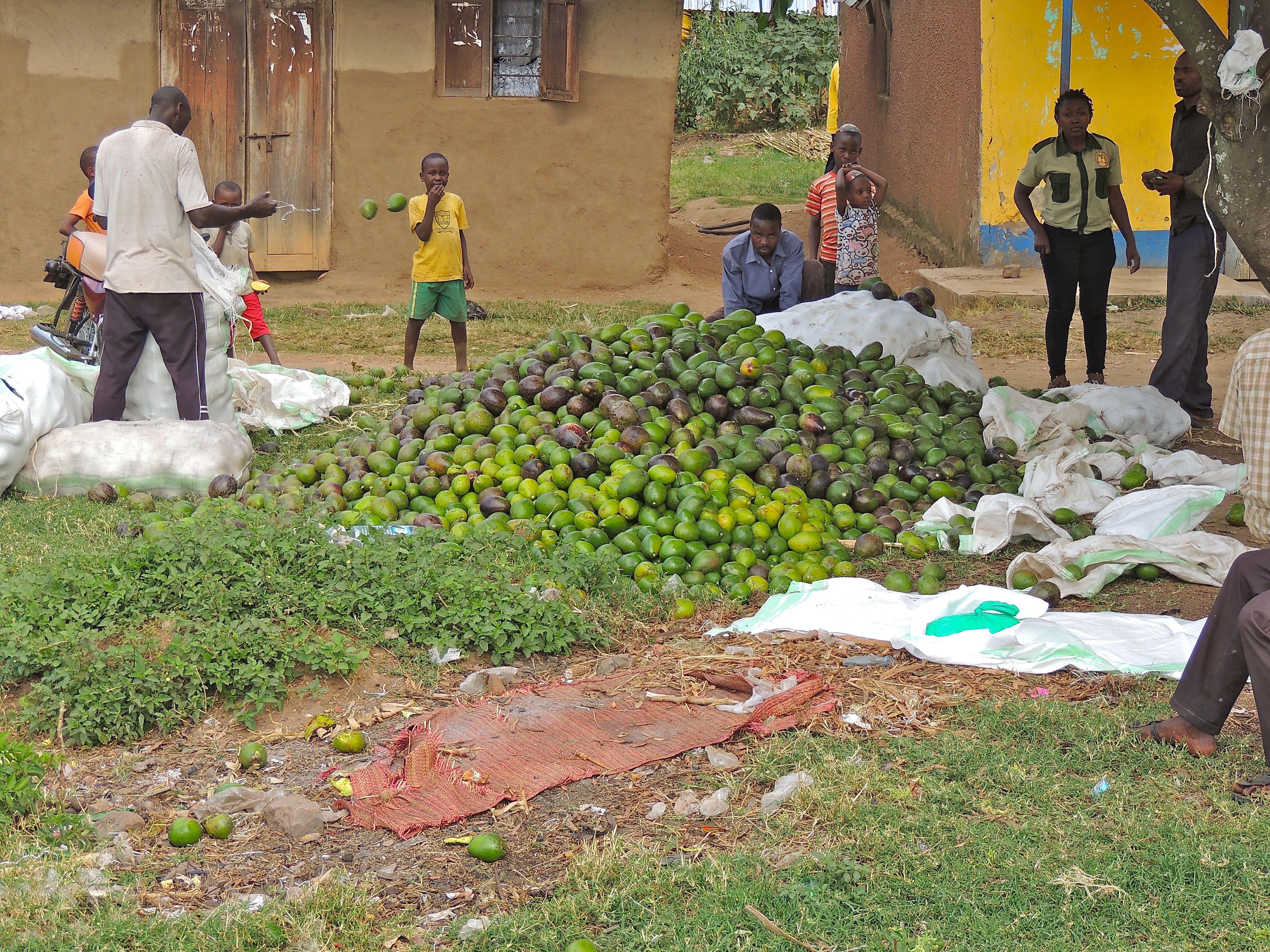 Avocados - Photo by William Young
Avocados - Photo by William Young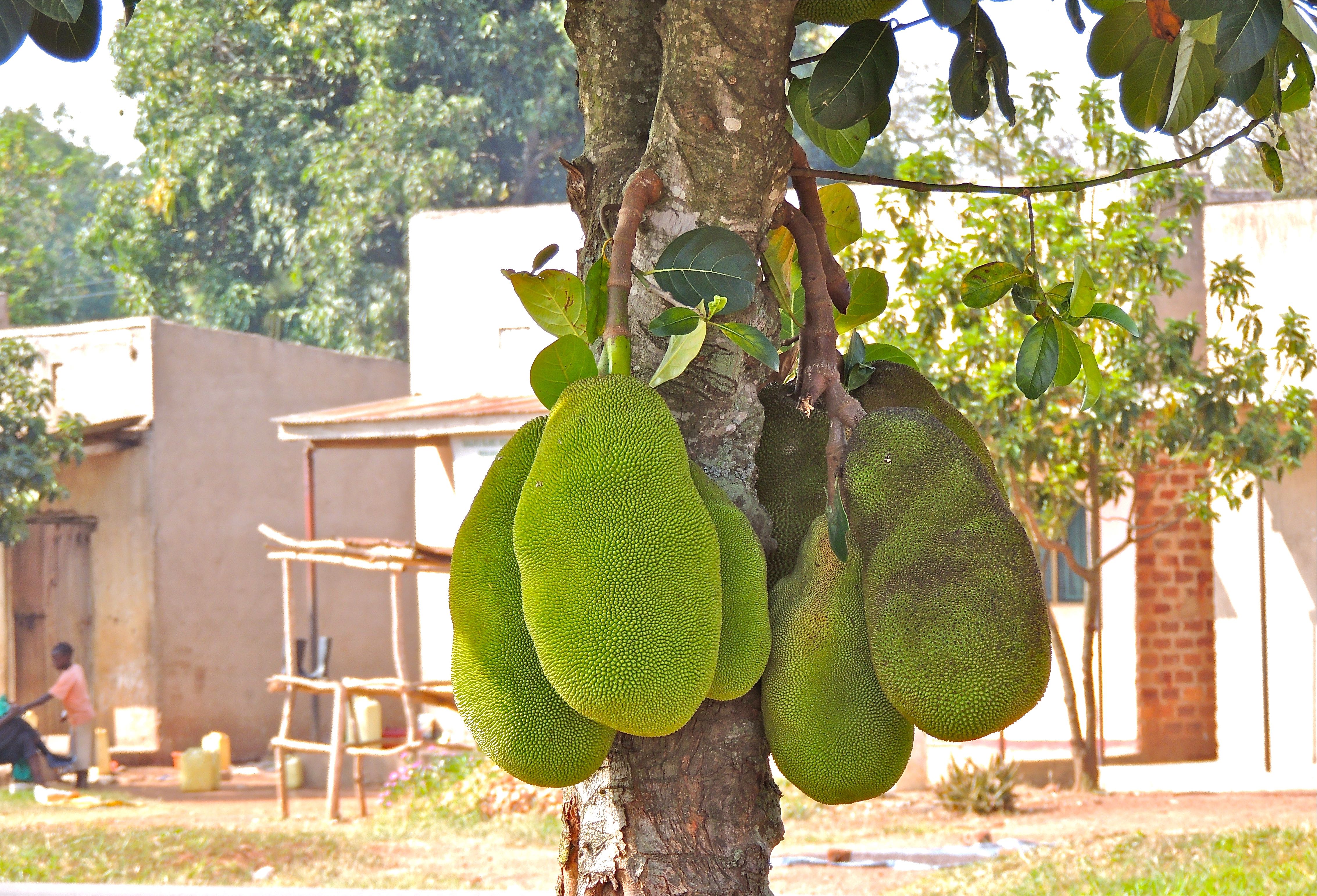 Jackfruit - Photo by William Young
Jackfruit - Photo by William Young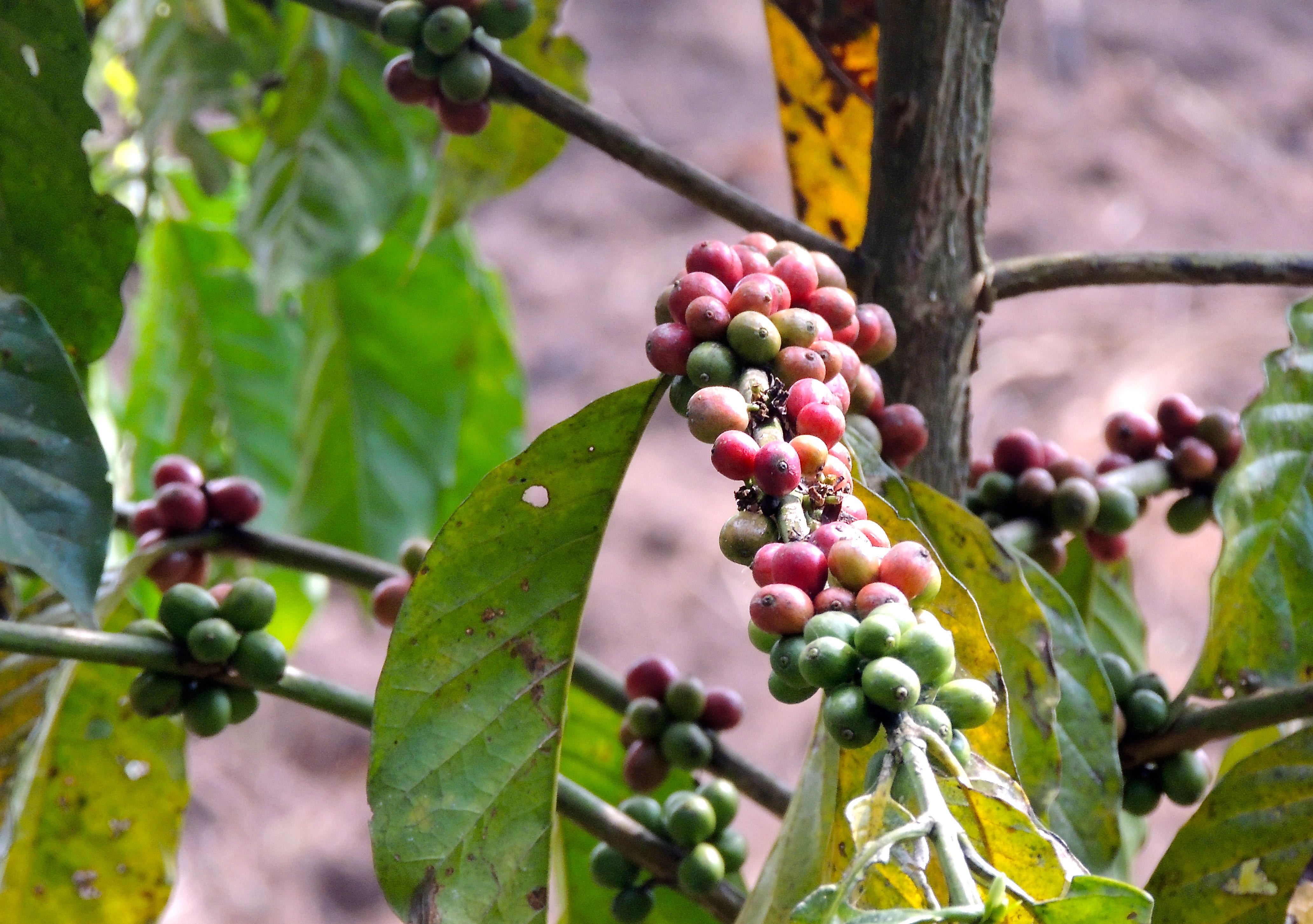 Coffee - Photo by William Young
Coffee - Photo by William YoungSome people where I live complain if starlings or House Sparrows come to their bird feeders or if deer get into their gardens. One of our guides told us that he had had elephants come into his yard. One of the challenges of doing elephant conservation work is to understand that people in the US look at elephants very differently than many Africans, who regard them as pests who destroy their crops and sometimes their property. A lot of Africans herd cattle, especially a breed called Ankole cattle. The breed dates back more than 6,000 years. They have incredibly long horns and make Texas Longhorn cattle look wimpy.
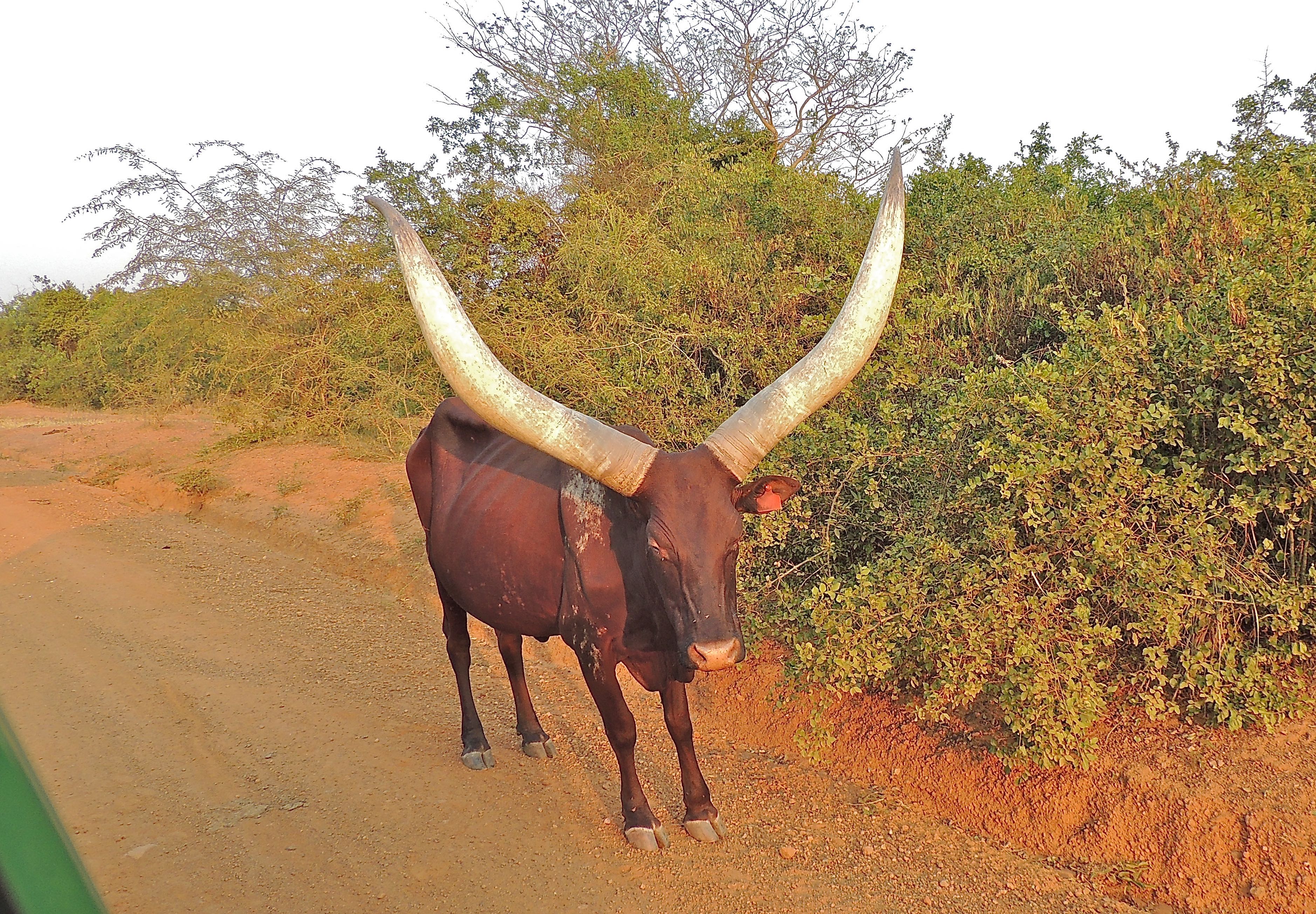 Ankole Cattle - Photo by William Young
Ankole Cattle - Photo by William Young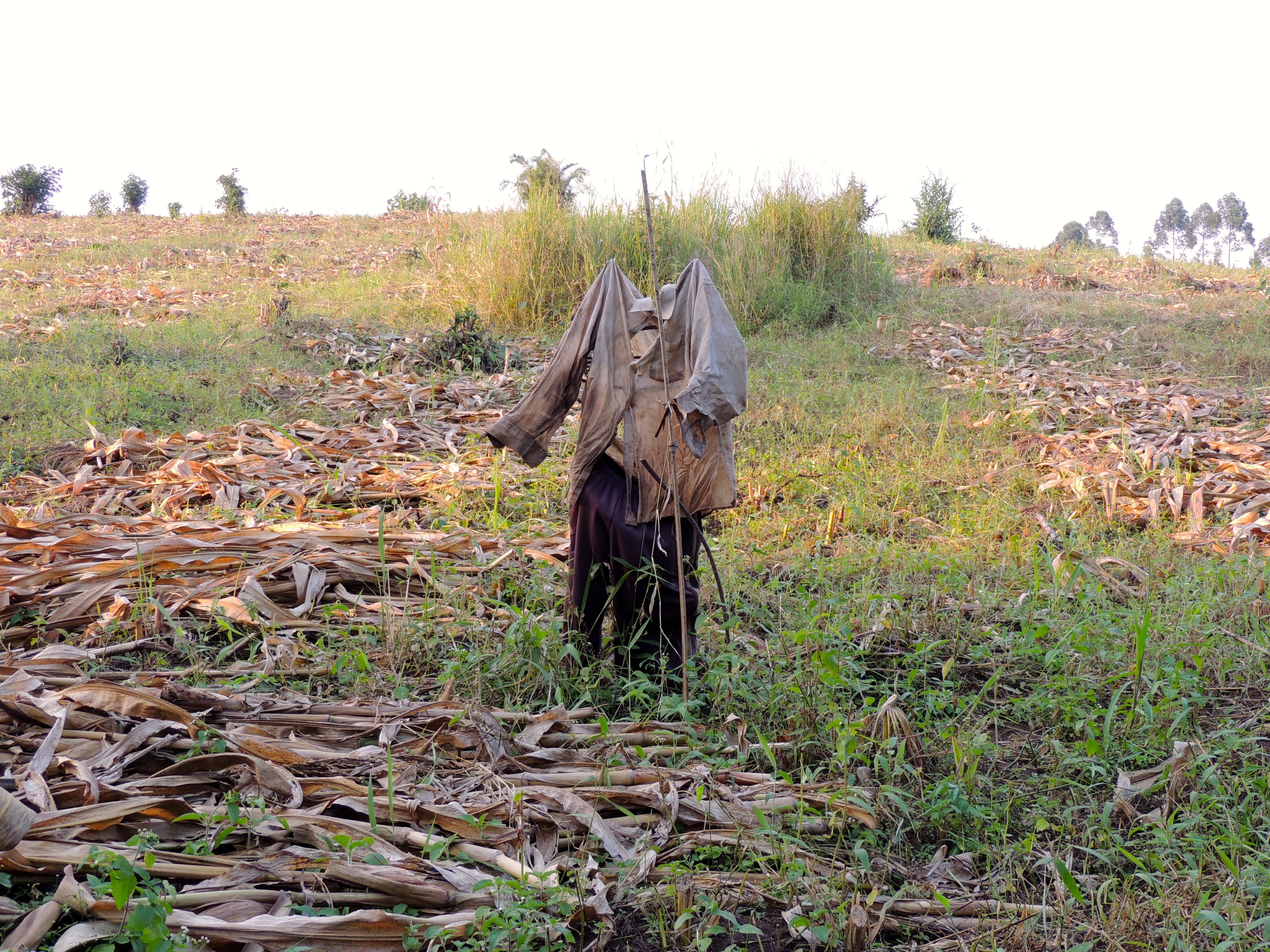 Scarecrow - Photo by William Young
Scarecrow - Photo by William YoungUganda was in the news in the 1970s because of its leader Idi Amin. He was reviled by the Western world, but he was fairly popular in Uganda. Many of the businesses in Uganda were run by people from India, and Amin forced all Asians who did not have a Uganda passport to leave. Ugandans took over the businesses, but because they did not have much business experience, a lot of businesses failed. Many Indians have since come back.
Uganda is a former British colony and is 85 percent Christian. Catholics and Anglicans are the two largest religious denominations, but Evangelical Christian religions are growing quickly. I occasionally saw people in Moslem dress, and Moslems are about 12 percent of the population.
We drove past billboards that talked about a Passover festival. It was for an event sponsored by Evangelical Christians. I did not have time to watch television on the trip, but in one of the lodges, there was a television in my room. I turned it on, and all that I could get were four different channels broadcasting the Passover festival.
Uganda used to have the highest rate of HIV in the world, but that has come down considerably. We saw a lot of large billboards showing both men and women encouraging the use of condoms. We drove through towns and saw places where people could go for health services, but to get anything more than basic assistance, one would probably need to go to Kampala or one of the larger cities.
Ugandans tend to have large families, with many in rural areas having seven or more children. The state will pay to educate only four children per family, so many families need to pay to send the remainder to school or decide which of their children will not be able to go. We drove past a billboard that read on one side "VIOLENCE CAN END IF WE FIGHT IT TOGETHER: CANING IS NOT THE BEST WAY OF DISCIPLINING CHILDREN". On the other side was an image of a woman holding down a child while a man caned him. I wore my Big Pockets trousers on the trip, which were designed specifically for birdwatching. They have a horizontal pocket in the back where I can put a field guide. Crammy did not know what the pocket was for, and when I told him, he joked that he thought it might be for children to stuff something into the back of their trousers so a caning would not hurt as much.
 Child Abuse Sign - Photo by William Young
Child Abuse Sign - Photo by William Young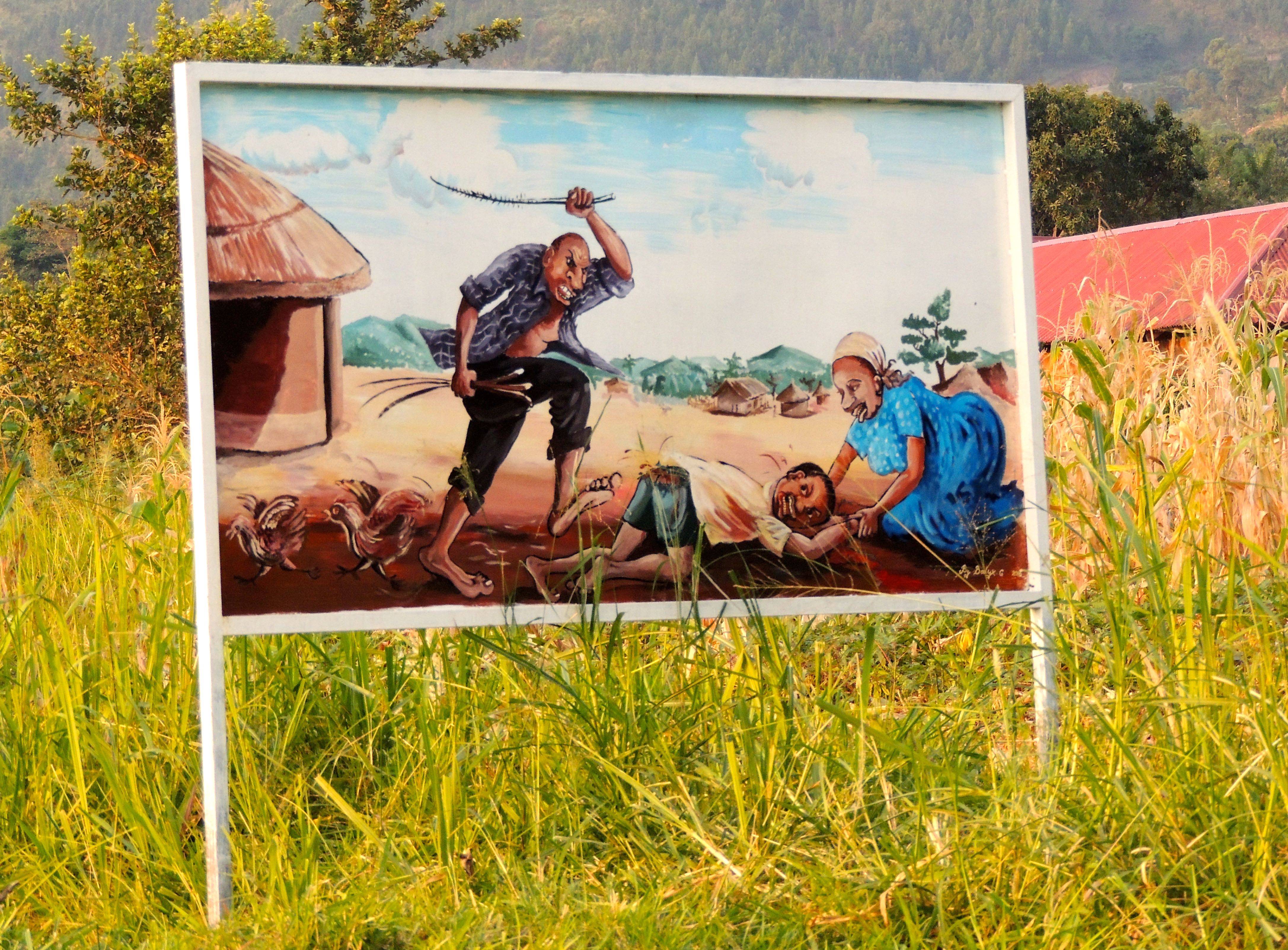 Child Abuse Sign - Photo by William Young
Child Abuse Sign - Photo by William YoungWhen driving through the country, we saw a lot of children by the side of the road. Many of them, especially the really young ones, waved and acted happy to see people in a vehicle. A few asked for money as we drove by — mostly boys. The young girls have their hair closely cropped like the boys, and the only way I could tell them apart is by whether they were wearing a skirt. In one area, we came across military people who were jogging. I was not looking at them closely, but Crammy pointed out that a lot of the joggers in uniform were women with closely cropped hair. Uganda is one of the poorest nations in the world, with about a third of the population in 2012 living on less than $1.25 per day, or less than $460 per year. Life seems to be especially difficult for Uganda women.
Yet despite how difficult things are, the people we encountered always seemed to be smiling, and they treated us with warmth and friendliness. When I think about the current attitudes of people in the US, the first word that pops into my head is 'angry'. I wonder why people are so angry in a country that has so much, while the Ugandans are so pleasant even though many of them have so little. The biggest difference I saw between Ugandans and Americans seemed to be their level of aggression. It was refreshing to be someplace where people were not aggressive. I felt perfectly safe and comfortable while I was there, and I feel far less safe in America where people own and use firearms. The only firearms one sees in Uganda are AK-47 type rifles carried by guards to protect tourists from animals. These guards are mainly there as a precaution, and I have never been in a situation where a guard had to intervene.
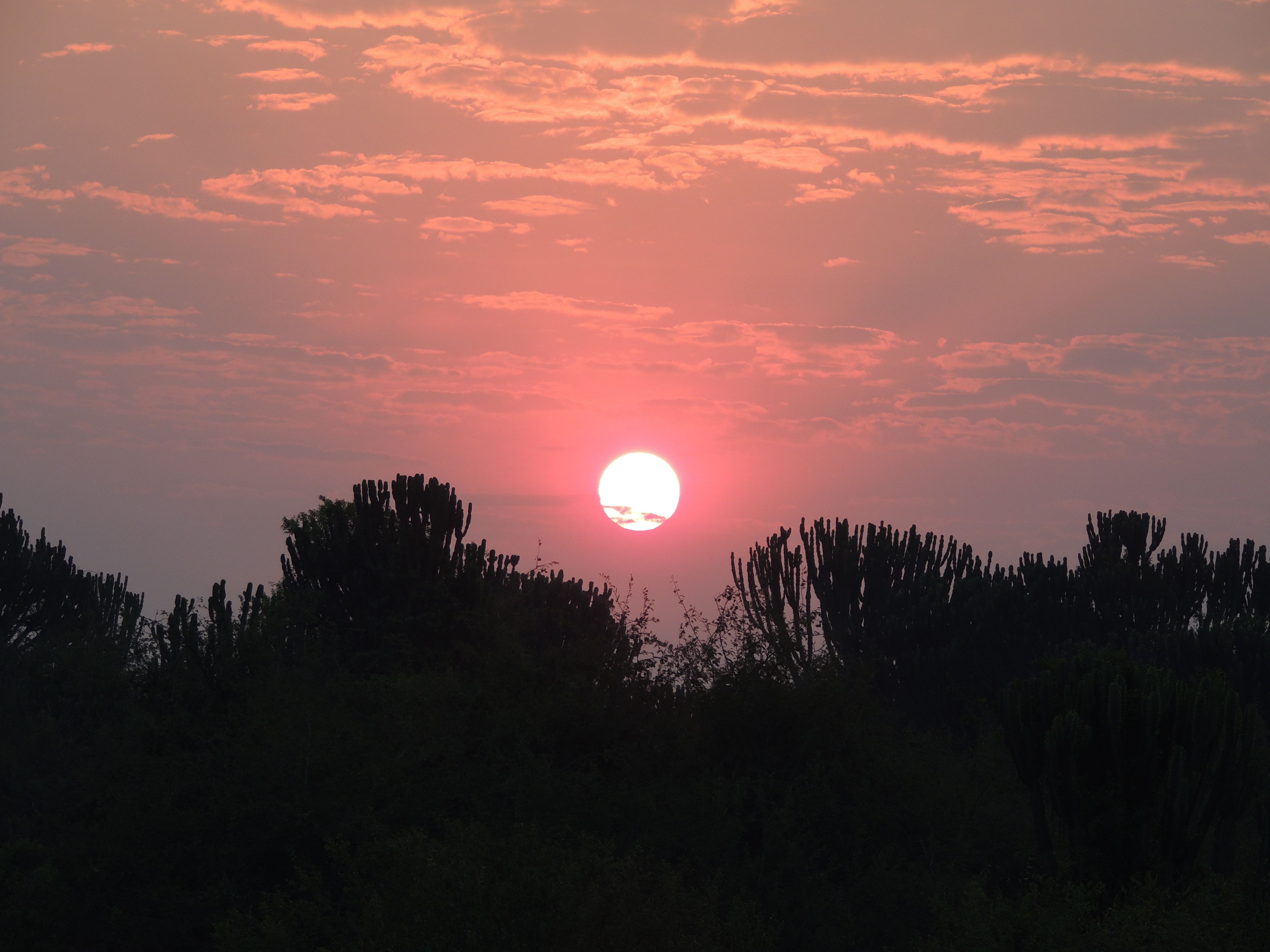 Uganda Sunrise - Photo by William Young
Uganda Sunrise - Photo by William YoungWhen I was talking to Crammy, he told me about a 14-day itinerary for a trip to the northern part of Uganda. I would love to do another trip with him some day.
▲